During my secondment to the Shamakhy Astrophysical Observatory (ShAO) in Azerbaijan, I primarily collaborated with Aytaj Iskanderova and Janmammad Rustamov. My main objectives were to establish a database of observational spectroscopic data and integrate existing ShAO observational data into it. To achieve this, I configured, installed, and launched a Debian Linux-based database server running the MariaDB database engine and Apache web server. The configuration of this server closely mirrored that set up at UNLP. However, due to various reasons, this process took significantly longer than anticipated.
To incorporate the existing data into the database, a substantial amount of archival data from the ShAO observatory (dating back to 2018) needed to be corrected to ensure compatibility with modern data processing tools. Ultimately, all data from the ShAO ShAFES echelle spectrograph, part of the POEMS project, was successfully added. Preparations were also made to include data from the ShAO Zeiss-600 photometric telescope. Additionally, I completely restructured the web-based frontend for the database, catering to both ShAO internal use and the general usage of the POEMS database. We conducted several hands-on sessions with Aytaj Iskanderova, and I assessed that she now possesses a good understanding of the database system and the server computer. Unfortunately, I was ill for eight days at ShAO, which significantly impacted my progress in further code development, tutoring, and implementing the PyREDUCE echelle reduction pipeline for ShAO ShAFES echelle spectrograph data.
In addition to the clearly defined task of setting up and populating the database, I participated in several nights of observations with the Zeiss-600 photometric telescope and one evening with the Zeiss-2000 telescope, operating in a low-resolution spectroscopy regime. During these Zeiss-600 observations, I shared my knowledge from Tartu Observatory photometric telescopes to establish a more robust data collection chain using the Maxim DL program, resulting in data frames with improved metadata about the observations. We also engaged in several extensive discussions with both observers and engineers on how to further enhance their data collection and handling practices.
Due to the tight schedule caused by my health issues, it was only on the last full day at ShAO that Aytaj provided me with an overview of their photometric data reduction and measurement process. I shared my experience with CCD photometry and suggested a few information sources where they could obtain best practices for such observations and tasks.
On the afternoon and evening of my last day in Azerbaijan, I visited downtown Baku, the Caspian Sea promenade, and the old town of Baku with Janmammad Rustamov and Aytaj Iskanderova.
After my secondment in Rio, I had another research visit at the Universidad Nacional de La Plata from July 6 to July 26, 2024. I had the chance to finalize my work on blue supergiants that is in collaboration with the host researcher, Prof. Lydia Cidale, and her PhD student M. Ruiz Diaz, and which has been currently submitted in astronomy journal. Moreover, I collaborated with another member of the La Plata group, Dr. Maria Laura Arias, who reduced observational data in the infrared of previously selected objects of my interest. Among the latter objects was found to be a transition-phase massive star in a binary system, follow-up studies of which can be rather impacting for the field of late stellar evolution. Because of the intriguing nature of this star, we are currently in preparation of a "letter to the editor" to be submitted in the near future.
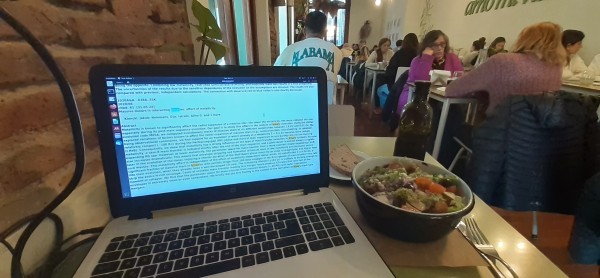
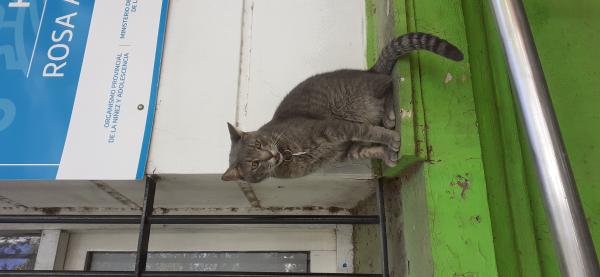
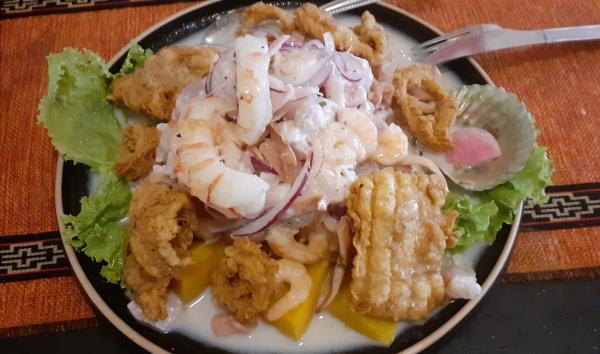
July in La Plata was rather cold, since it is the heart of winter, which kept me most of the days indoors. Nevertheless, I had the chance to visit local cafes and restaurants, taste latin american cuisine and, in general, embrace the winter mood of the south hemisphere at the same time that both in my home institute and country the weather was particularly warm.
During my second visit to Ondřejov, I spent almost two months working at the Stellar Department of the Astronomical Institute of the Czech Academy of Sciences (ASU) on topics related to the POEMS project and my PhD project.
Within the framework of my PhD, I developed a script for the automated execution of a processing chain for modeling line profiles affected by stellar winds using the APPEL and MULITAS codes. During the secondment, I incorporated a wind temperature law into this processing chain, as suggested by Dr. Michaela Kraus and under the guidance of Dr. Lydia Cidale. Previously, we have been using an isothermal wind temperature law. Before my secondment, Dr. Roberto Venero introduced me to the use of the Hydwind code, which I implemented as a new step in the automated line profile modeling. This step generates the hydrodynamic solutions of the wind to be used as input for the modeling. This allows a systematic screening of the input parameter space. Dr. Michaela Kraus and the host group provided me with computational resources at ASU to initiate this type of screening during my visit.
One primary aim of the secondment was to learn about the modeling of line profiles, which is the main focus of my research, with a different stellar atmospheric code than the programs I used so far. The host group has extensive experience with the CMFGEN code, designed to determine the temperature, ionization structure and atomic level populations of the atmosphere. The analysis and comparative evaluation between the solutions obtained with the CMFGEN and APPEL/MULITAS codes will allow us to estimate confidence intervals for the individual results and recommendations for future applications of the methods. At this stage of my PhD studies, comparing my preliminary results with those from other methods and techniques is crucial, as is the advice from experts in interpreting the results and potential discrepancies. I worked on this topic under the supervision of Dr. Olga Maryeva. I am grateful for her time and dedication in teaching me to use this new code. Additionally, we had the opportunity to meet with another expert in this field, Dr. Peter Nemeth, who was so kind to share his experience with the application of this code. In implementing this new code, I am focussing on modeling the line profiles of a selection of B supergiants and luminous blue variable stars.
Dr. Olga Maryeva provided me with high-resolution spectra of the LBV candidate [GKF2010] MN 30, which were obtained using the Southern African Large Telescope (SALT). These spectra had to be normalized before their analysis. I performed the normalization using the IRAF software. In addition, I developed new skills in the normalization using the iSpec software. The expert advice of Dr. Michalis Kourniotis has been of great help in this task.

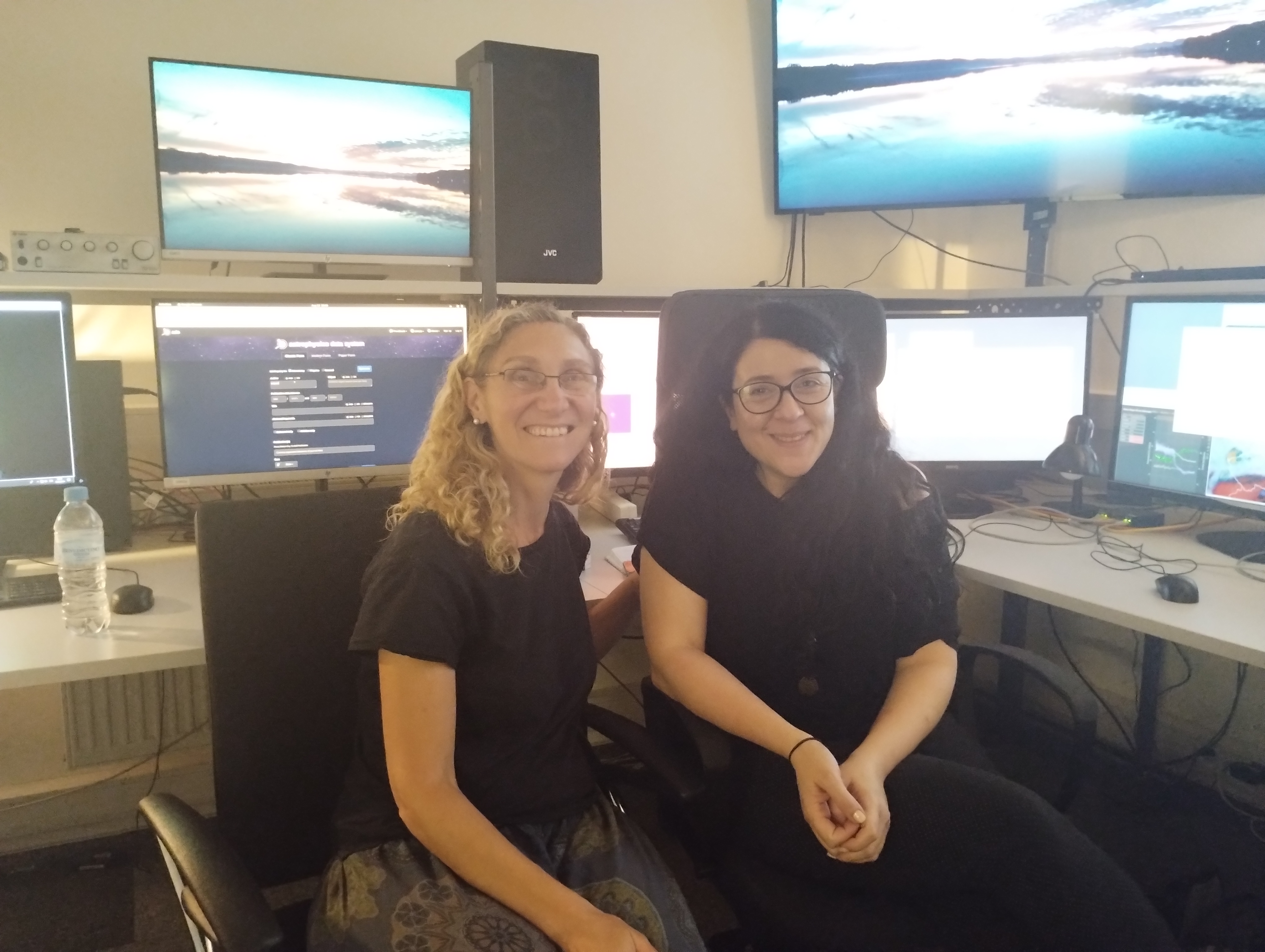
Furthermore, I have been writing a draft of an article presenting our recent results. On August 12, I joined Dr. Julieta Sánchez Arias in an observation session with the Perek 2 m telescope. On August 27, I attended the seminar given by M.Sc. Max Pritzkuleit on "Data mining with Topcat", as well as the lectures of M.Sc. Harry Dawson about "Introduction to IRAF" and "Data reduction of photometry – General overview" the following day. These presentations were organized by the Stellar Department at ASU in collaboration with the Stellar Astrophysics Group at the University of Potsdam and TLS – Thuringian State Observatory in Tautenburg (Germany) in the framework of the Fourth International Workshop on Observational Techniques 2024 at the Ondřejov Observatory. These topics are relevant to my research and broaden the range of processing tools at my disposal.
Towards the end of my visit, I started with the development of a code for the computation of Fe II atomic populations. In my first secondment in 2022, I had developed, under supervision of Dr. Lydia Cidale, a program for the calculation of Ca II populations. During her visit to Ondřejov, in October 2022, we had corroborated the correct performance of this tool. Motivated by the recent success achieved in my home group with the application of that tool for the modeling of Ca II forbidden lines due to both a radiation-driven wind and a circumstellar disk (Torres et al. 2024), I initiated the adaption of this code for the Fe II atom.
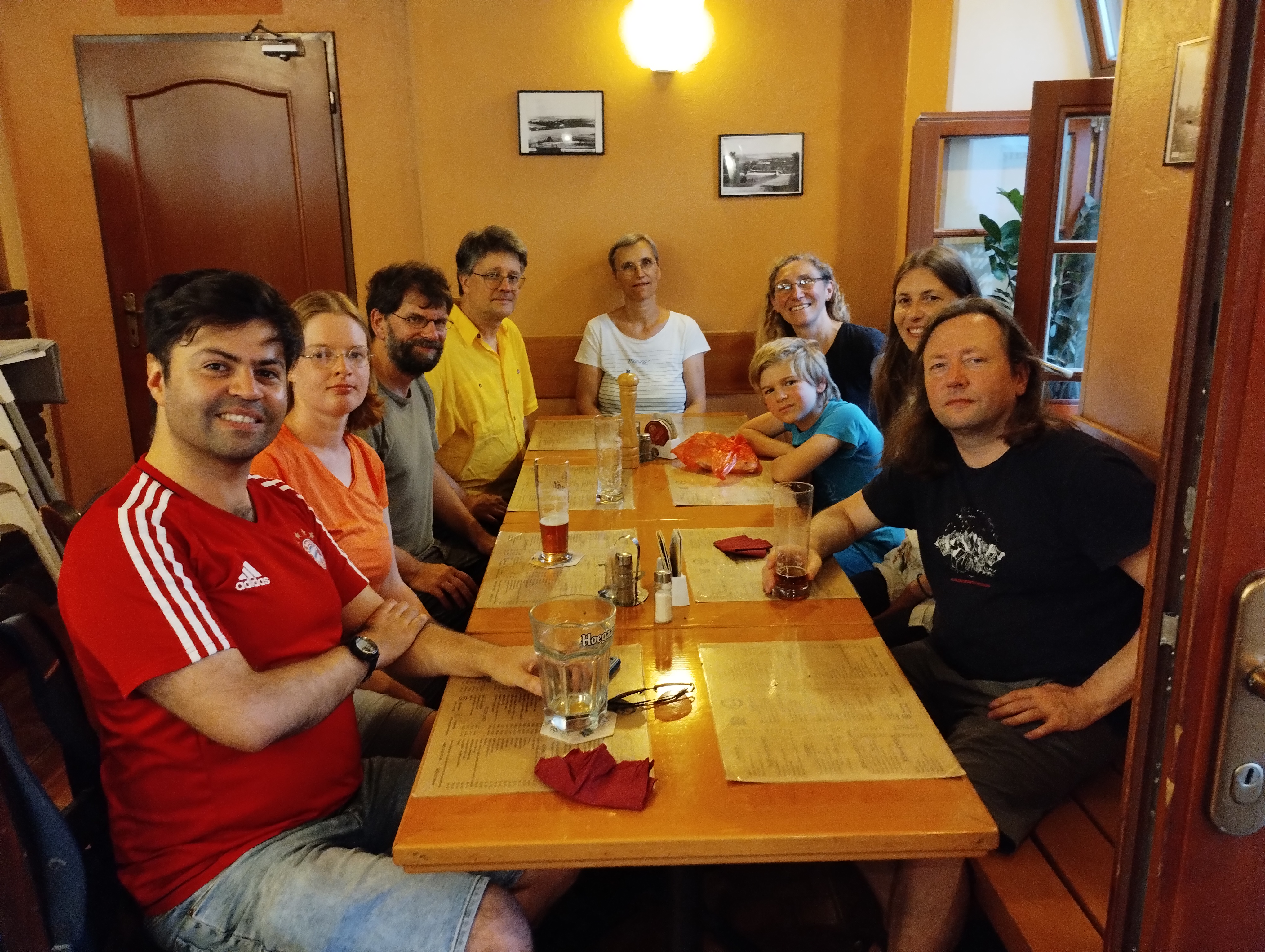
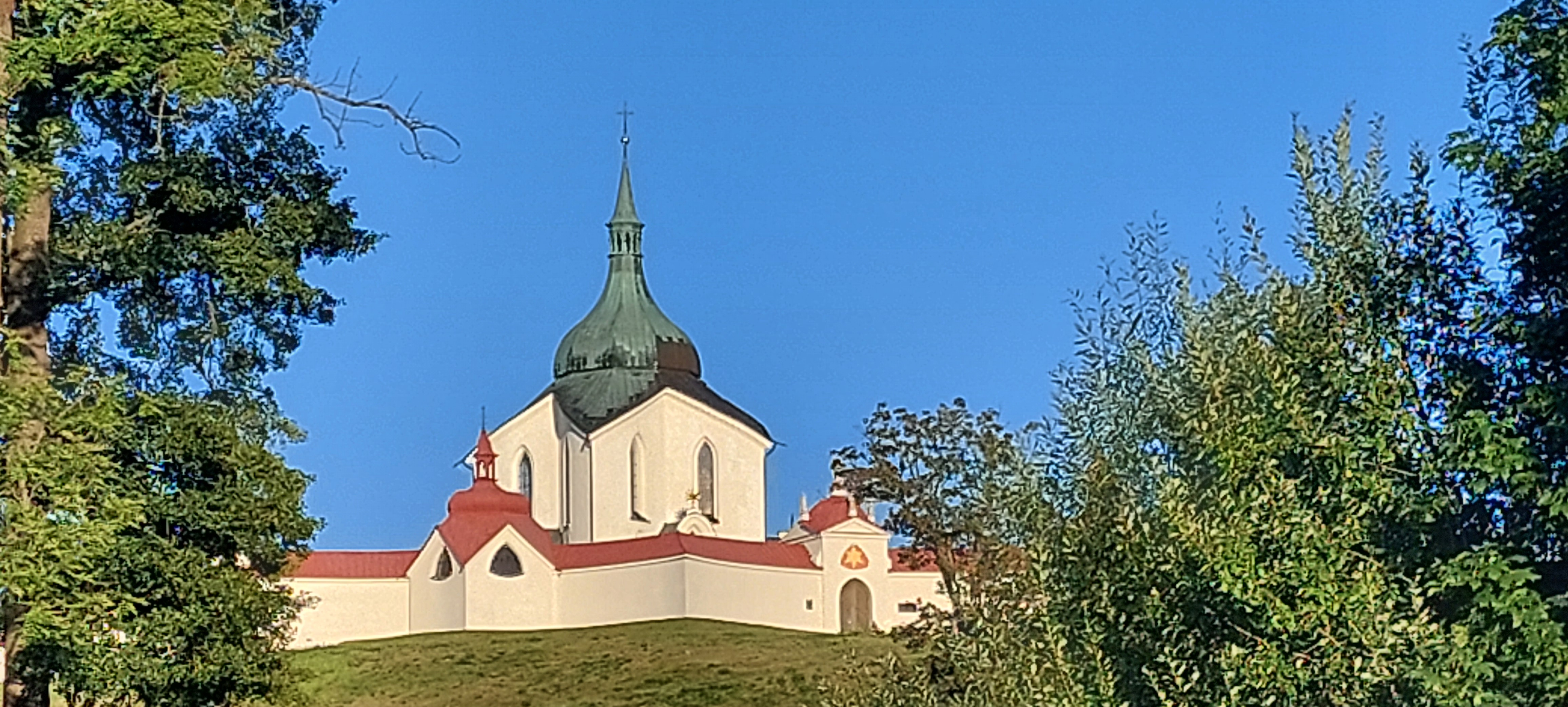
I am very grateful for the possibility of carrying out the secondment, which allowed me to contact internationally renowned researchers, strengthen ties, engage in continuous learning, and focus onthe topics of interest for my PhD. Additionally, it enabled me to discover this country, its natural beauty and learn about its culture.
I visited the Universidad Nacional de La Plata, La Plata, Argentina, from July 1st to August 31st, under the framework of the Marie-Curie Staff Exchange program POEMS, to conduct scientific research under the supervision of Prof. Lydia Cidale. I worked on two projects during my two-month secondment: "Detecting Binarity in HD 83183 and HD 37128" and "Rossby and Inertial-Gravity Waves in Late O-type Supergiants" as a co-author on a work-in-progress collaborating with Lydia Cidale and other colleagues from Argentina, Chile, and Belgium. Regarding the first project, we obtained the echelle spectra from Casleo Observatory for the star HD 83183 and performed the photometric analysis with the TESS light curve.
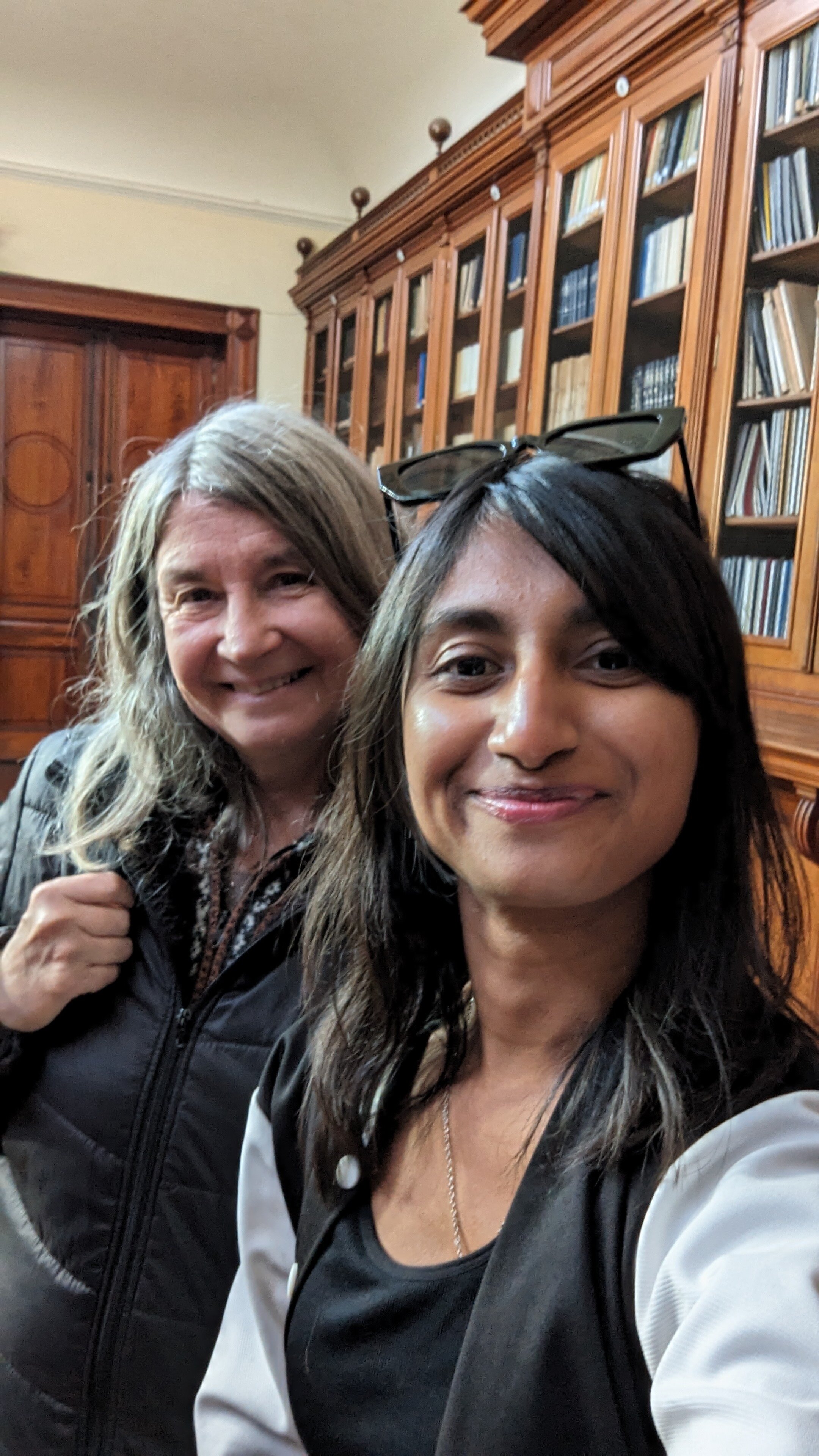
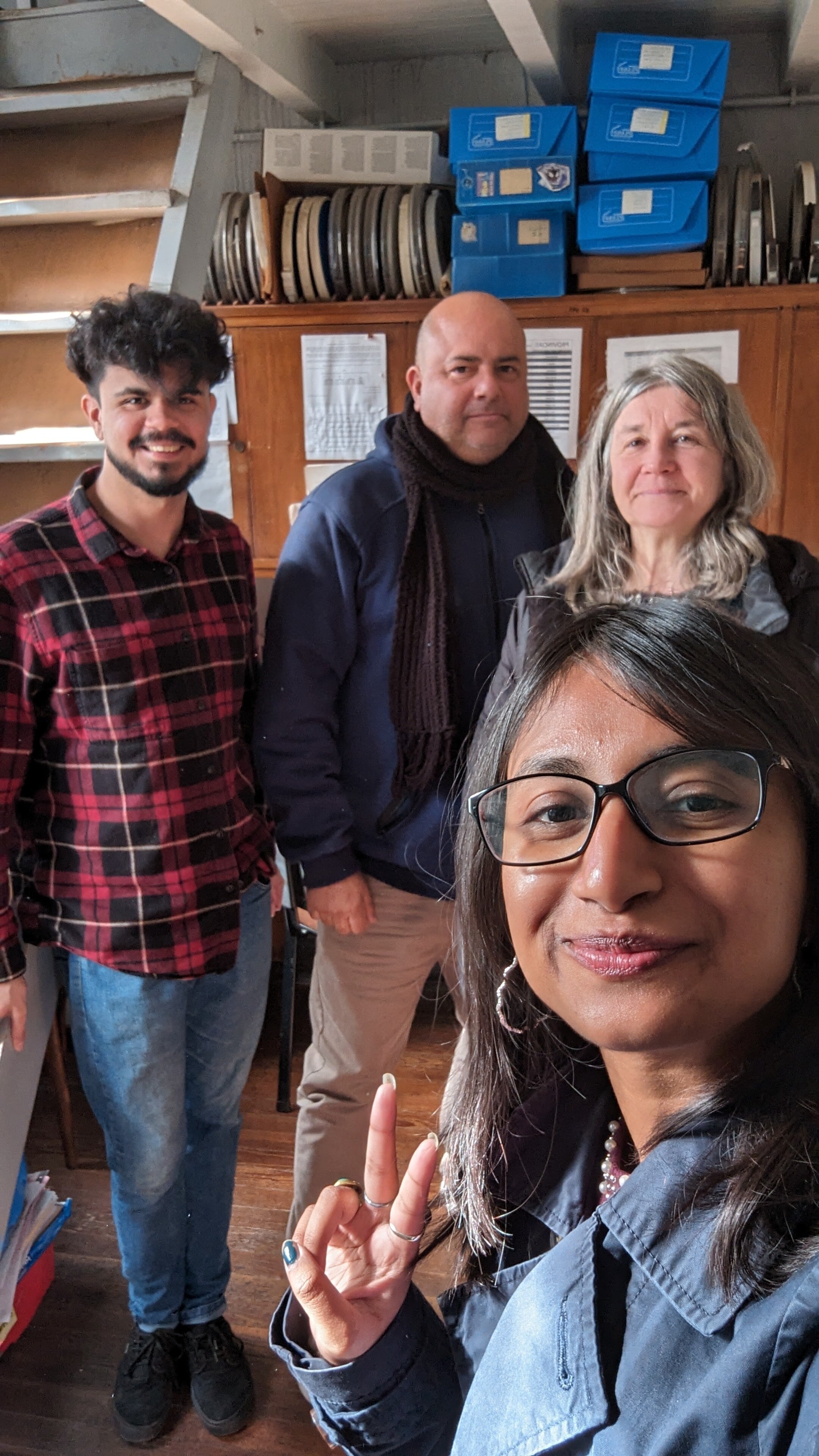

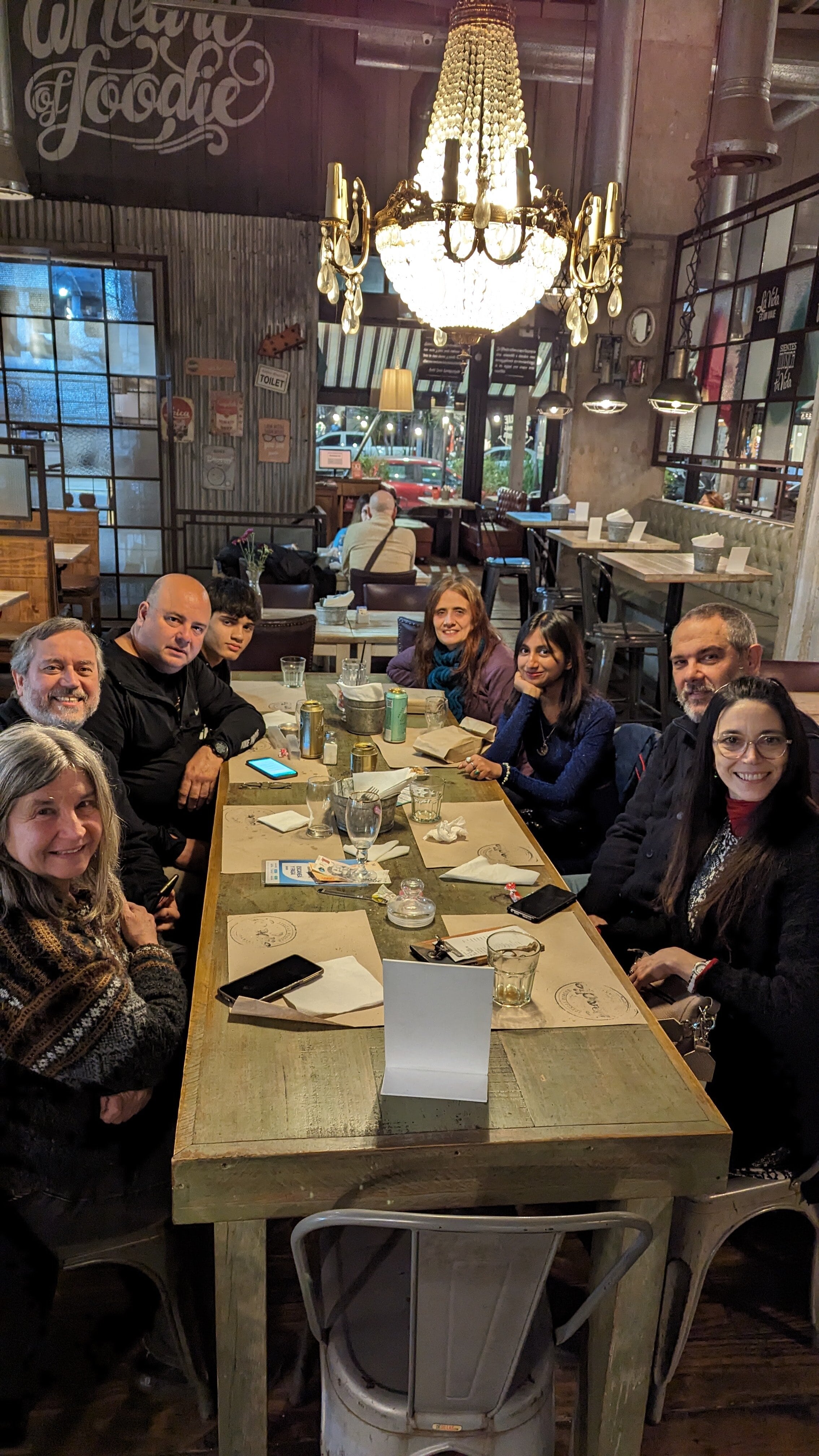
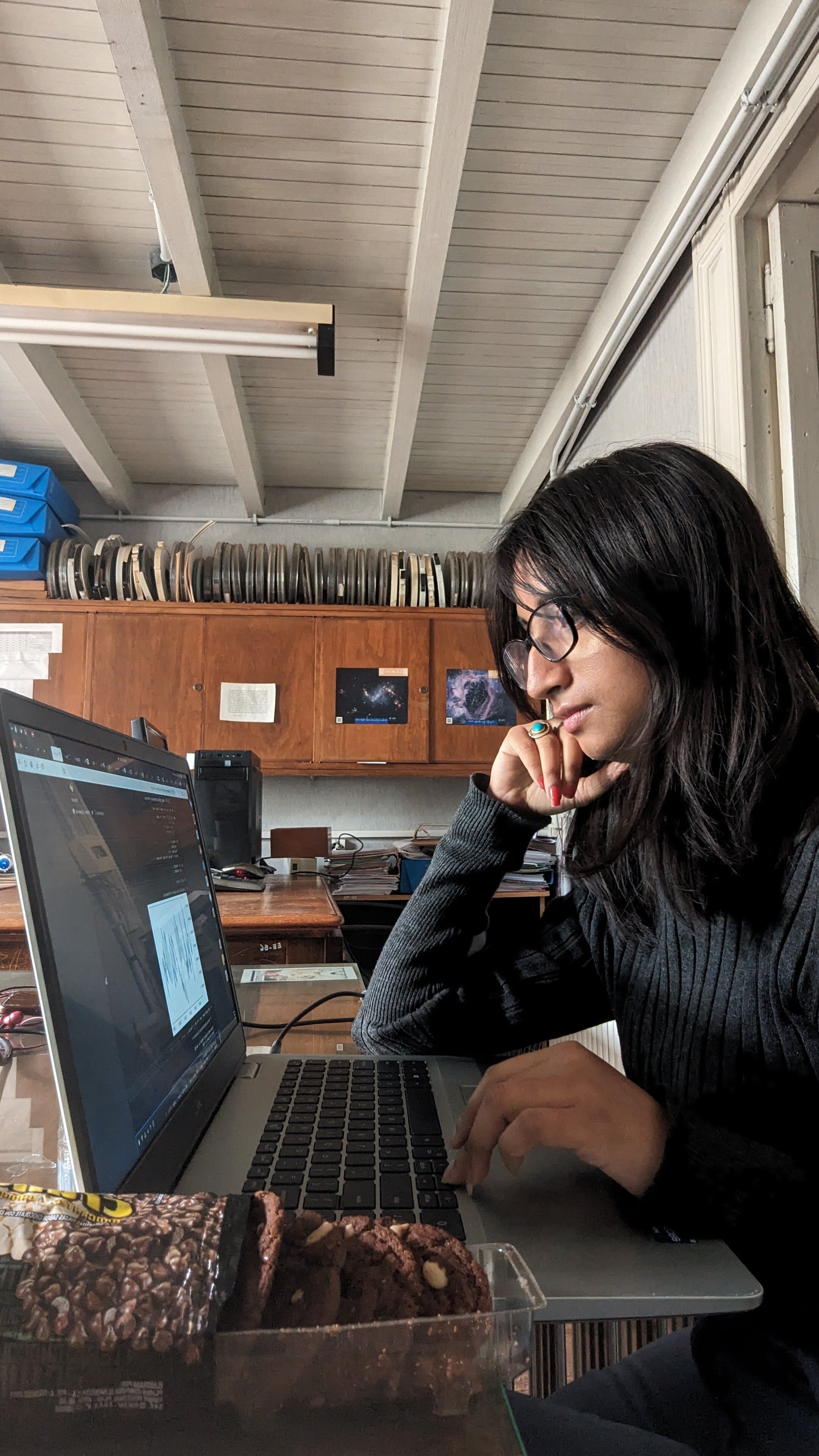
Preliminary findings show that HD 83183 exhibits no radial velocity variation, while the work on HD 37128 is still in progress. The second project focused on investigating the presence of Rossby waves in late O-type supergiants. My contribution involved extracting light curves from the TESS target pixel files and performing frequency analysis on the target star HD 192639 using both the Fourier and WWZ methods. We compared the frequencies obtained from these analyses with theoretical predictions for Rossby waves, and preliminary results show promising correlations. The work is still in progress, with the goal of publication in the near future.
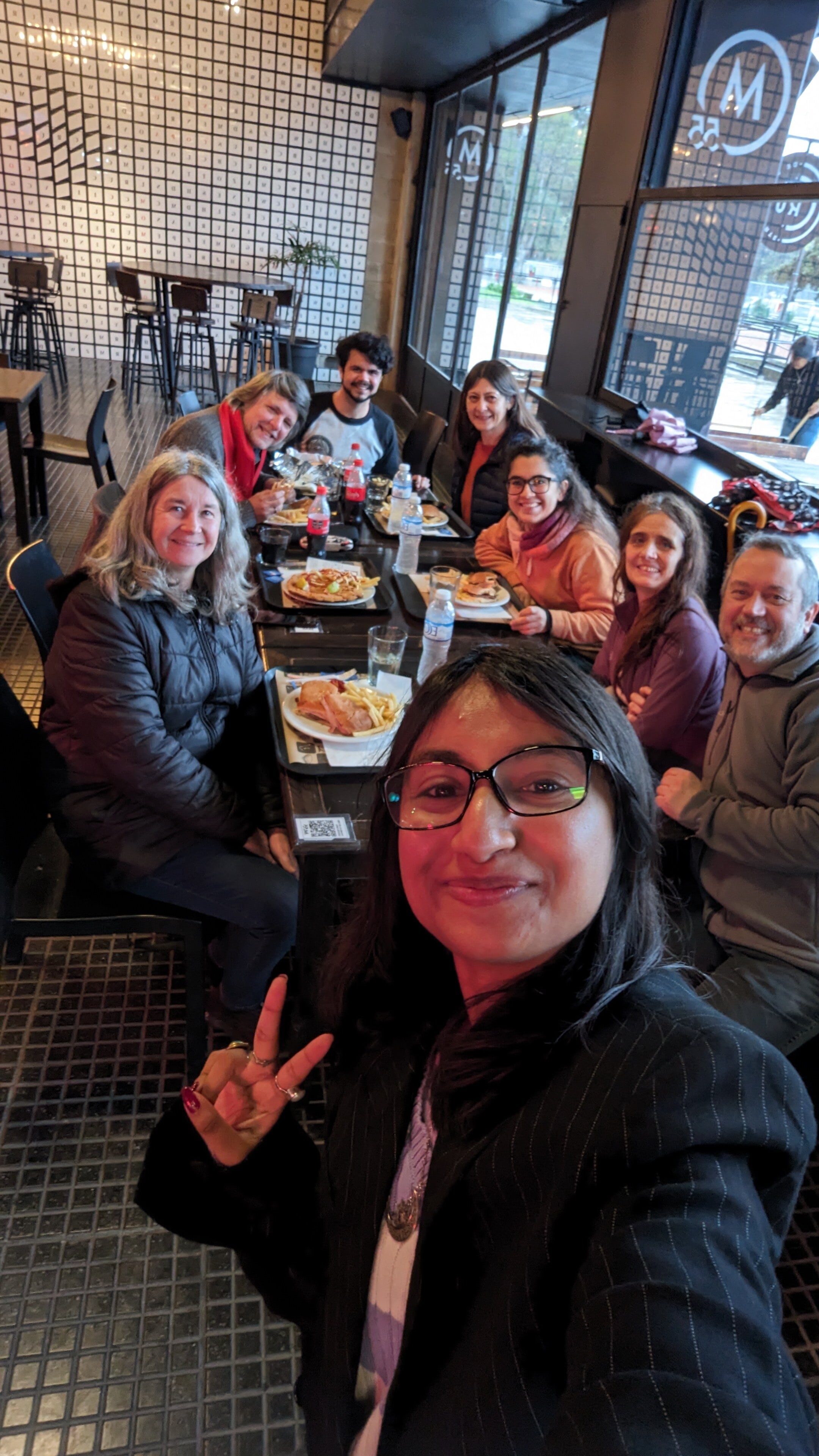
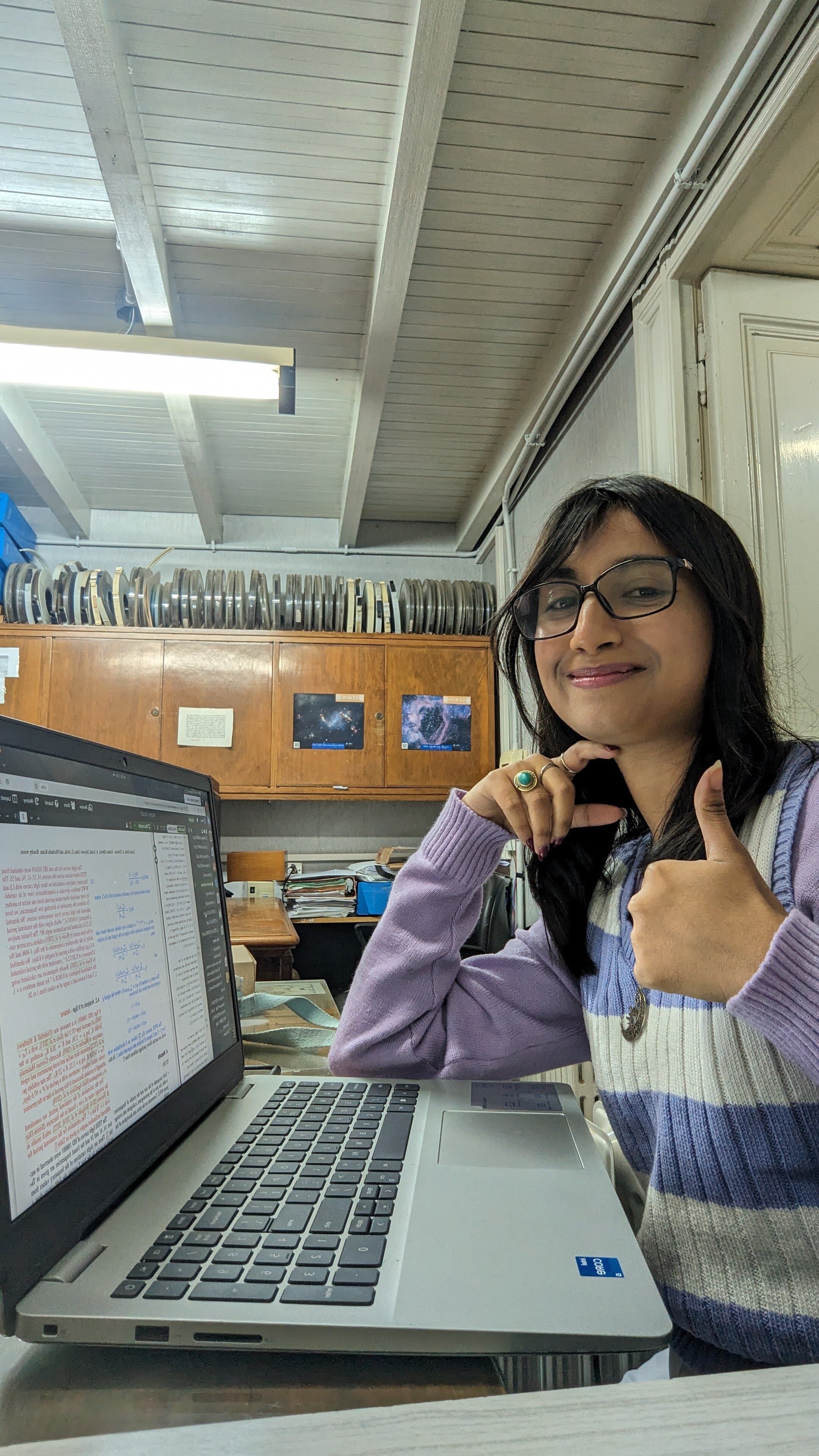
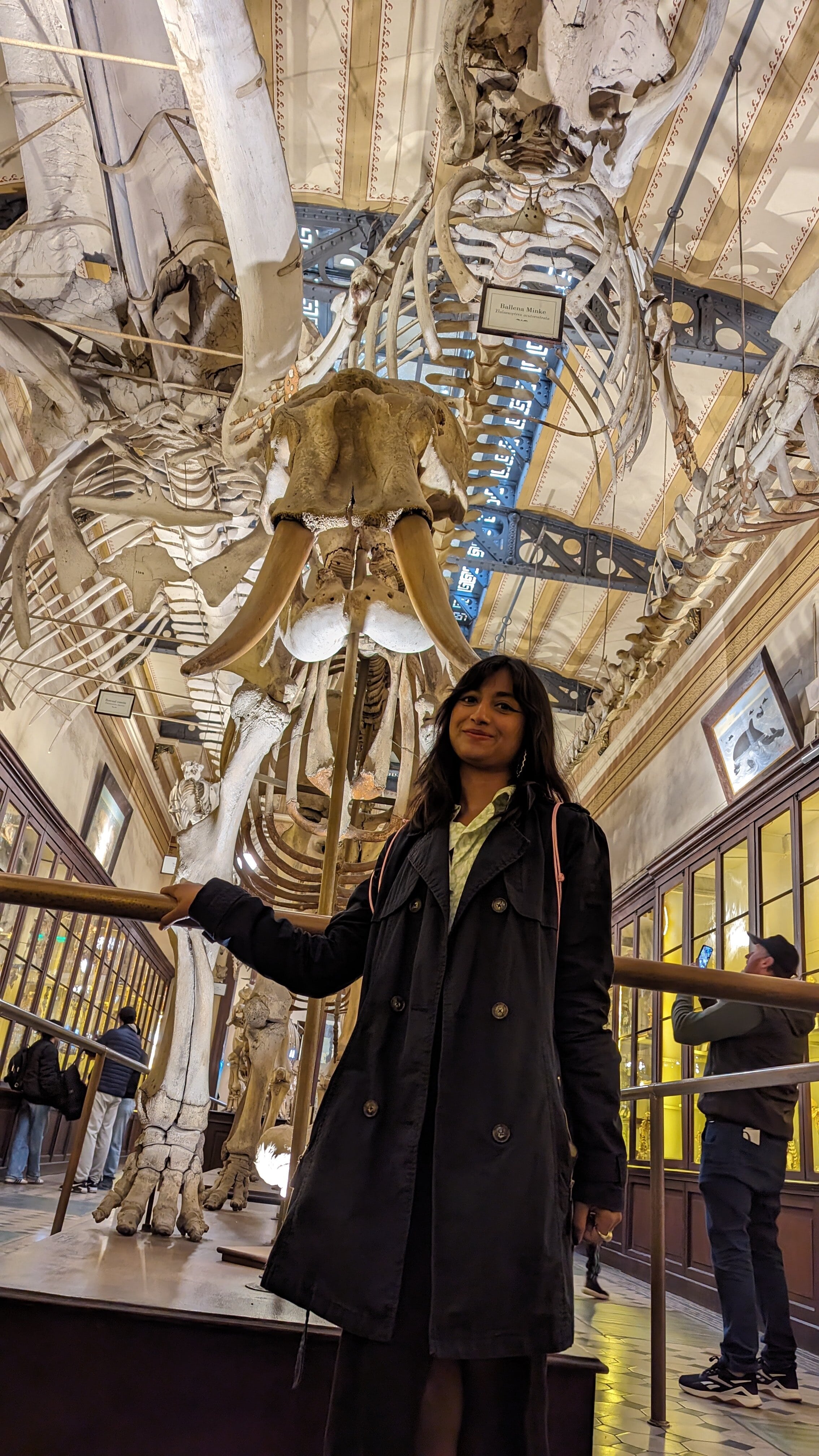
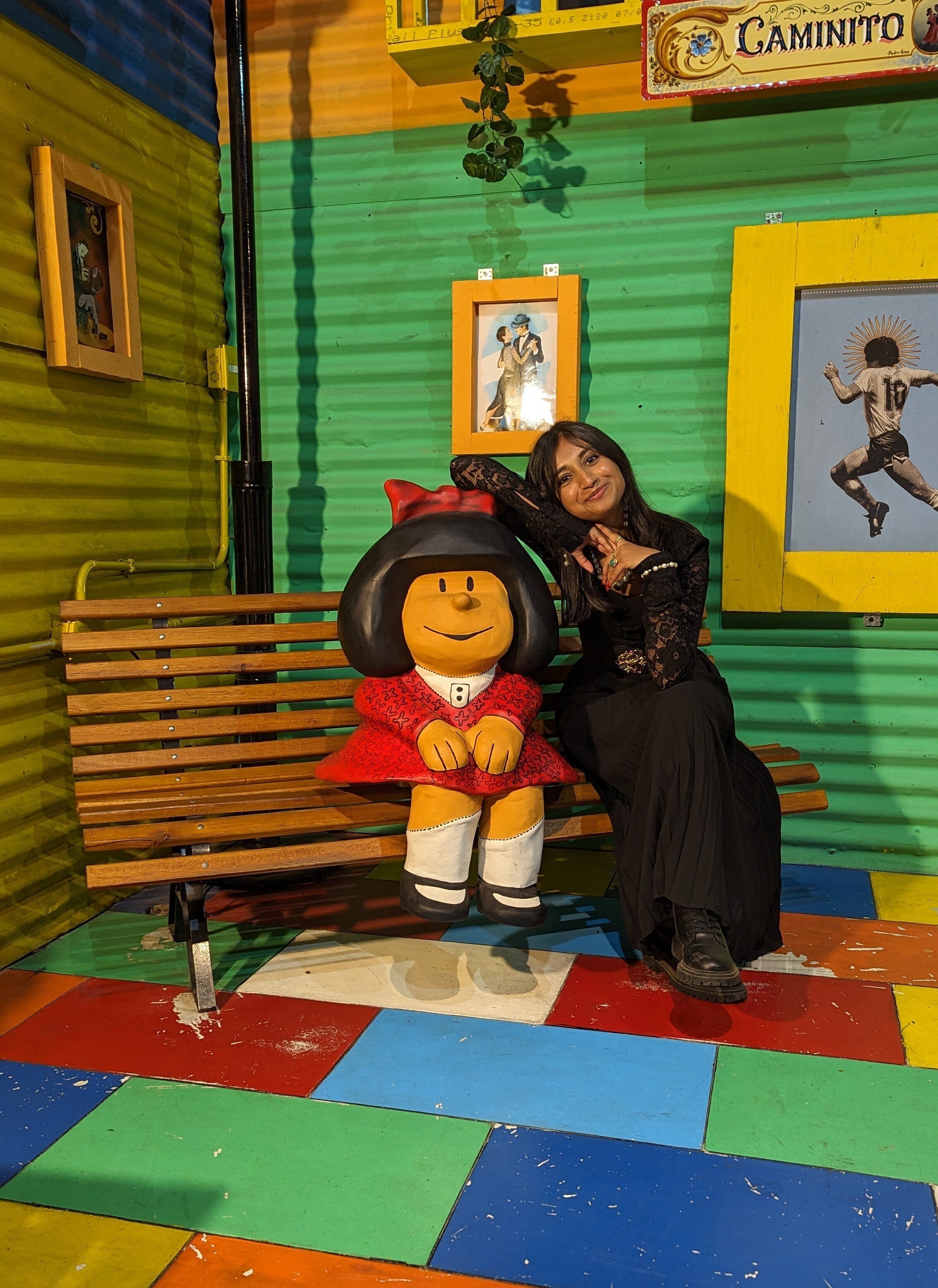
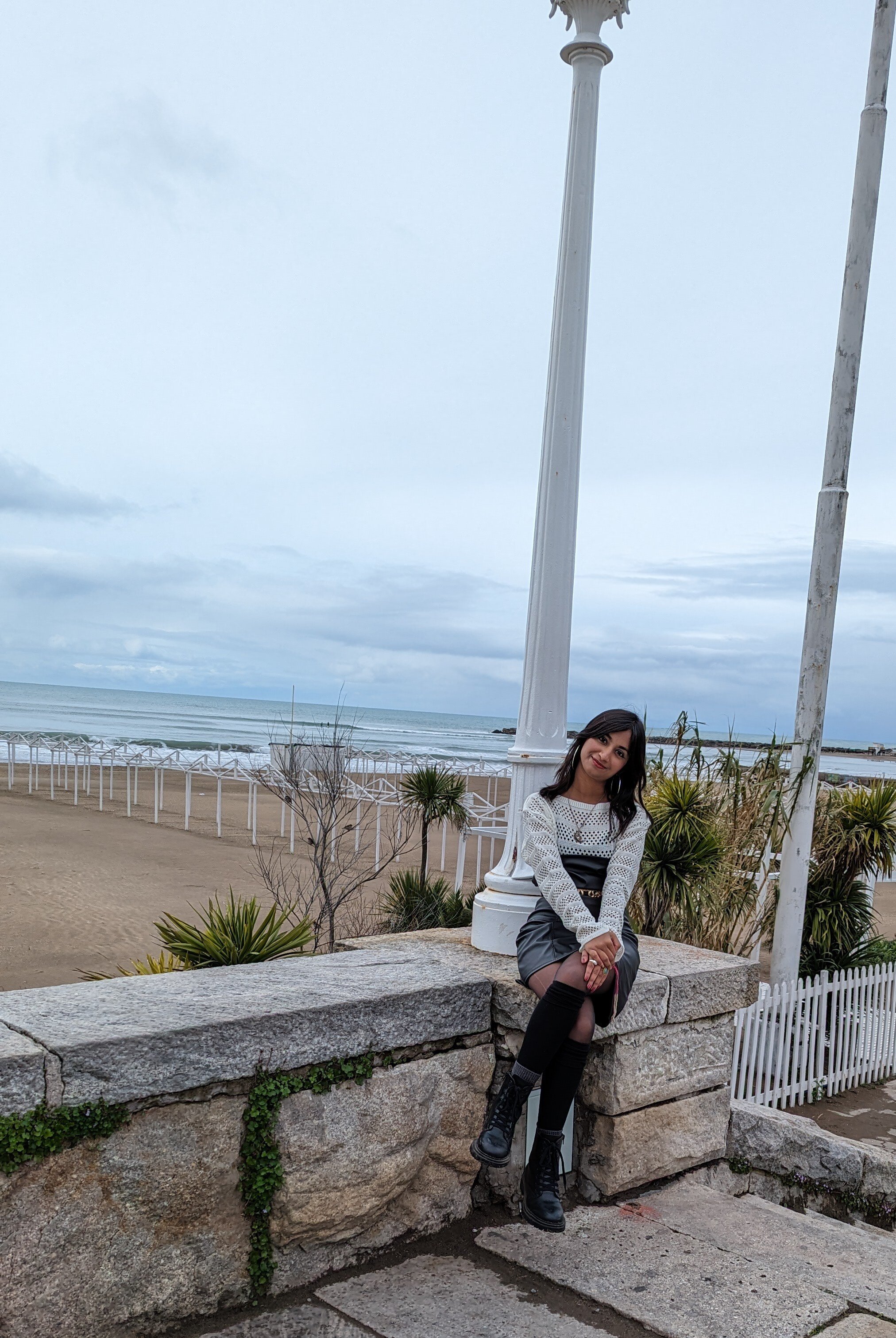
I enjoyed taking leisurely walks through the lush greenery surrounding the observatory after work. During a long weekend, I took the opportunity to visit Mar del Plata and the capital, Buenos Aires. Throughout my time in Argentina, I developed a deep appreciation for the local cuisine and beverages, particularly the empanadas, asado, dulce de leche, alfajores, and yerba mate.
I spent two months working at the University of Leeds, together with Melina Fernandez, under the supervision of Professor René Oudmaijer. Upon our arrival, Prof. René gave us a tour of the campus and introduced us to other researchers and students from the Astrophysics Research Group, such as Maria Koutoulaki and Jonathan Dodd. We had the opportunity to learn more about them and their research interests, and to visit some local restaurants, cafes and parks in their company.
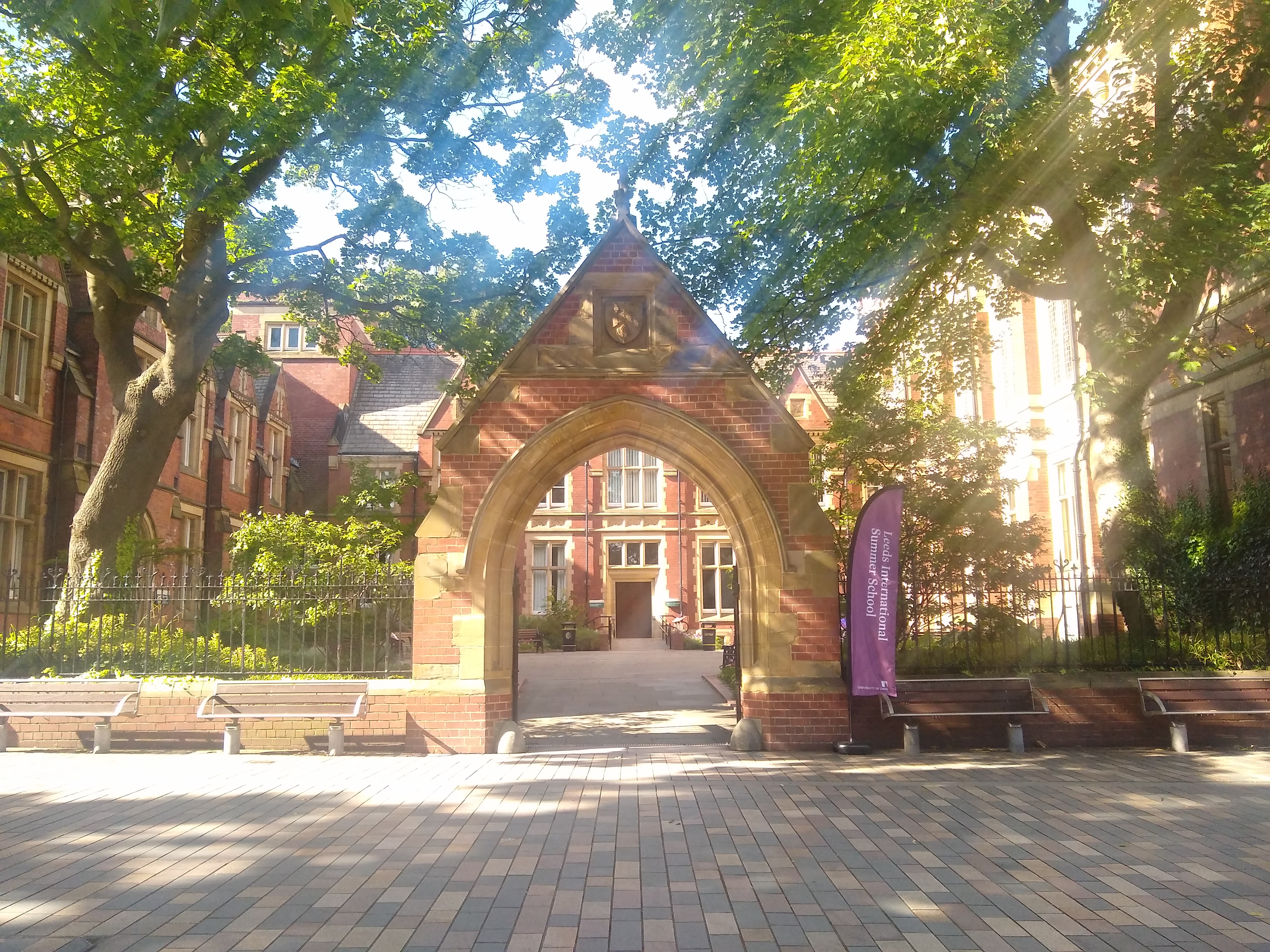
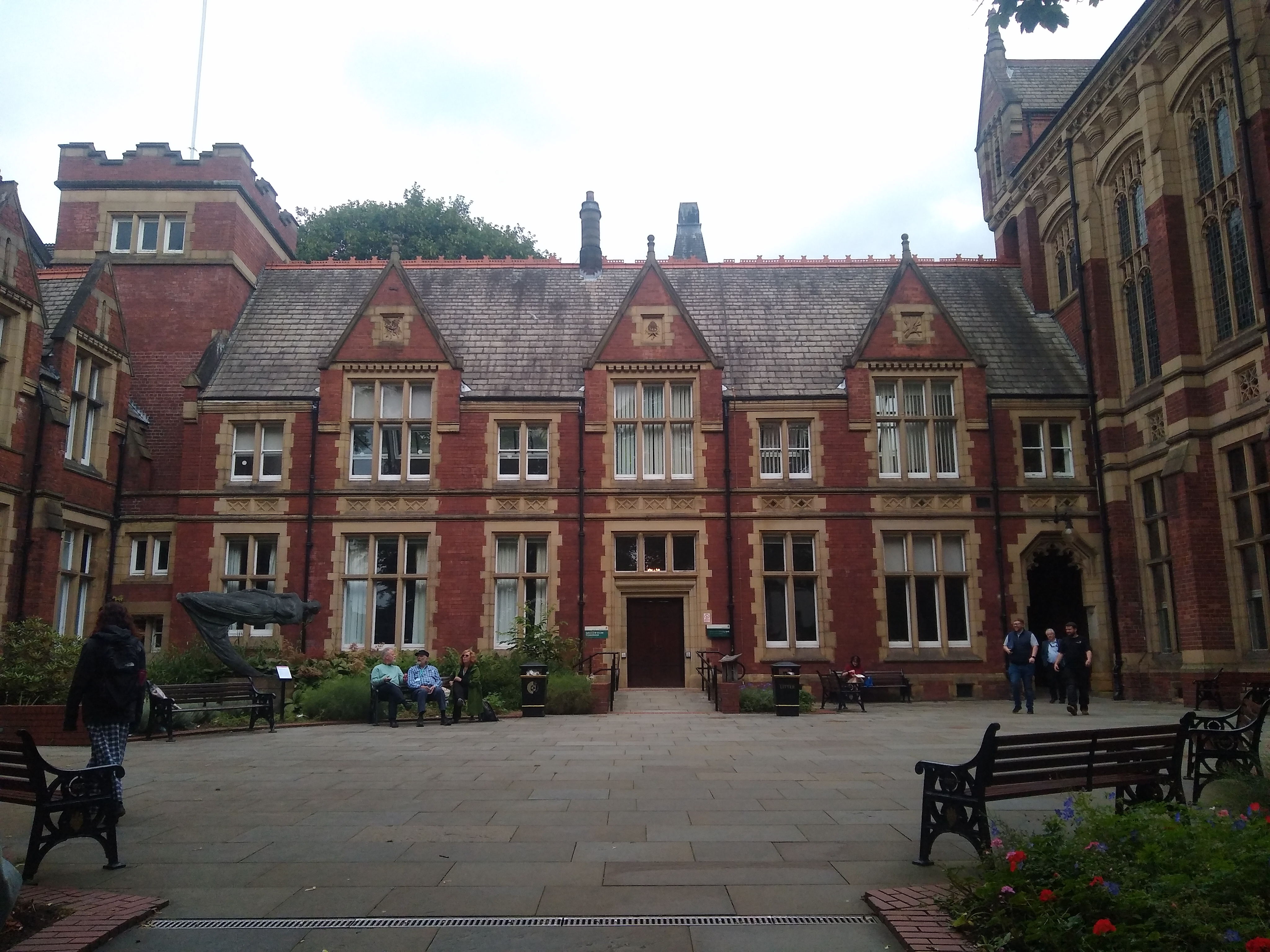
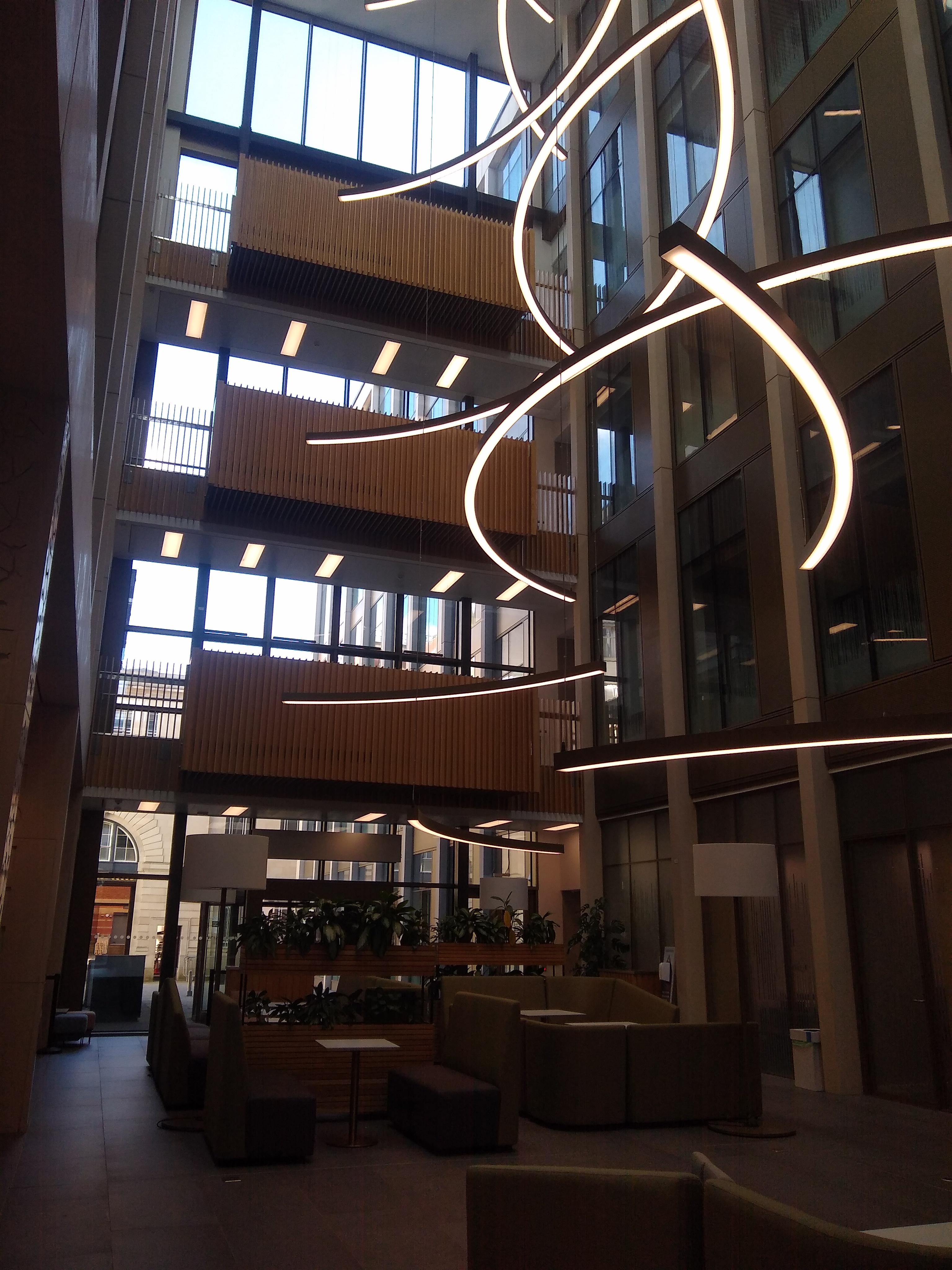
During my secondment, my work involved the compilation and analysis of several samples of B-supergiant stars classified by different authors, with the aim of obtaining the most complete Hertzsprung-Russel (HR) diagram possible for this type of objects. With this goal in mind, I carried out several cross-matches with different photometric catalogues in order to collect the necessary data to locate these sources in the HR diagram. Distance values derived from Gaia EDR3 data were used to calculate luminosity values and their corresponding uncertainties. The binarity of the sample was also studied with the collaboration of Jonathan Dodd. To do this, positions and proper motions were consulted from the Gaia DR2 and DR3 catalogues to check whether any of the sources exhibited any Proper Motion Anomaly (PMA). Lastly, these results were compared with other physical parameters of the stars in order to look for possible correlations. The results obtained by the end of the secondment were presented in a poster in collaboration with Melina Fernandez, at the annual meeting of the Asociación Argentina de Astronomía which took place in September in the city of La Plata, Argentina.
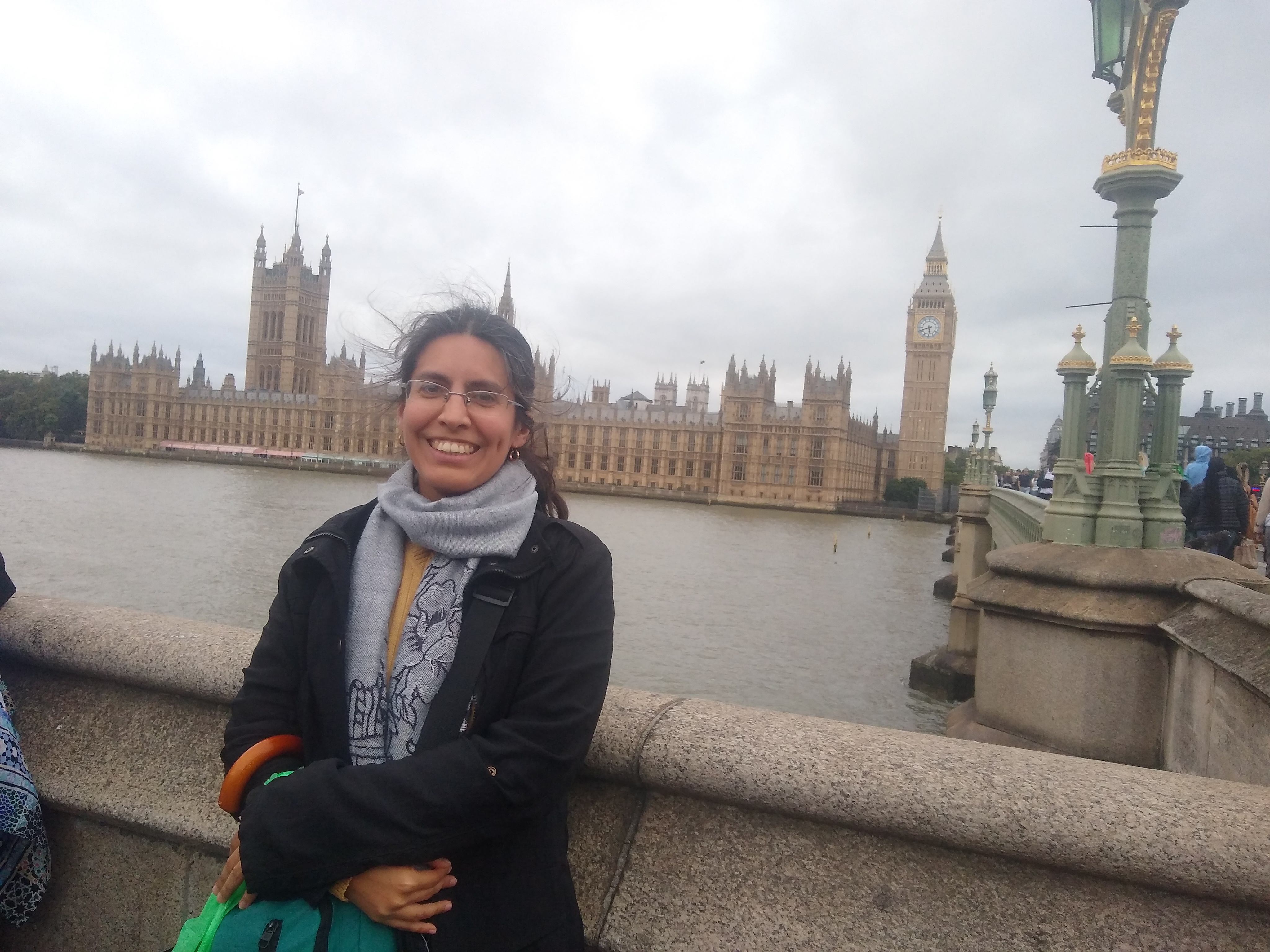

The University of Leeds has a huge campus with beautiful architecture and many green spaces where lots of rabbits made their homes. It was always delight to walk around and stop to take pictures of them. I really enjoyed walking through the streets of Leeds, which is a charming and tranquil city, and I had a great time sightseeing and visiting different museums, historical buildings, pubs and cafes. I was also able to explore the centres of other nearby cities such as York and Nottingham, and had the opportunity to visit the cities of London and Edinburgh on weekends.
Overall, I had an excellent time and am very grateful to the POEMS project for the wonderful experience. I would also like to deeply thank Professor René, Maria and Jonathan for their continuous help and warm company during my stay in Leeds.
I spent two incredible months in Leeds, UK, working on campus at the University of Leeds. My office was in a beautiful, modern building, and staying in a student residence gave me the full experience of life as a student there.
On the research side, I worked with Dr. René Oudmaijer on B[e] phenomenon stars and B supergiants. I estimated their photospheric luminosities using data from Gaia Data Release 3, defining a complete sample and gathering essential data like classifications and distances. I positioned the stars on the Hertzsprung-Russell diagram and compared my findings to previous studies. Additionally, I collaborated with Jonathan Dodd to estimate the binary fraction by analyzing Proper Motion anomalies, and we later presented our results in a poster.
I participated in team meetings and enjoyed the collaborative atmosphere. Outside of work, I took full advantage of the train network, exploring places like Nottingham, York, and, of course, London. I loved all the cities I visited, including Leeds, which added to my wonderful experience.
My secondment to Observatorio Nacional in Rio de Janeiro started with the POEMS final conference, which I co-chaired. During the conference, I presented the introductory talk abput POEMS, and I contributed to the conference summary. In addition, I presented a poster with title "Near-infrared characterization of evolved massive stars in M31 and M33", and I had contributed to four more posters that were presented by colleagues from UNLP, La Plata, and from ON, Rio de Janeiro. The POEMS conference was a very successful event, as it had attracted scientists working in massive star research from all over the world, and I had many fruitful discussions.
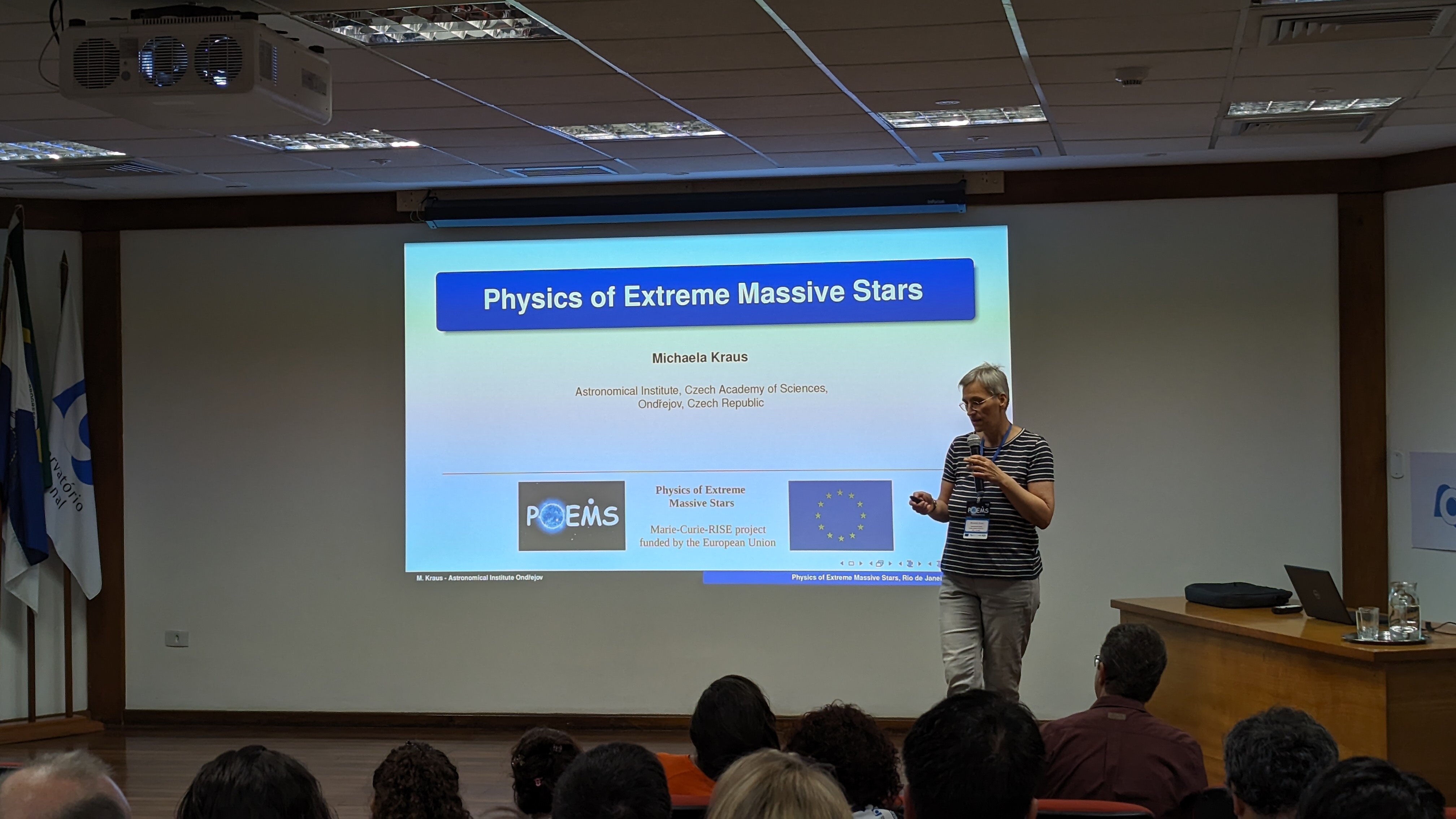
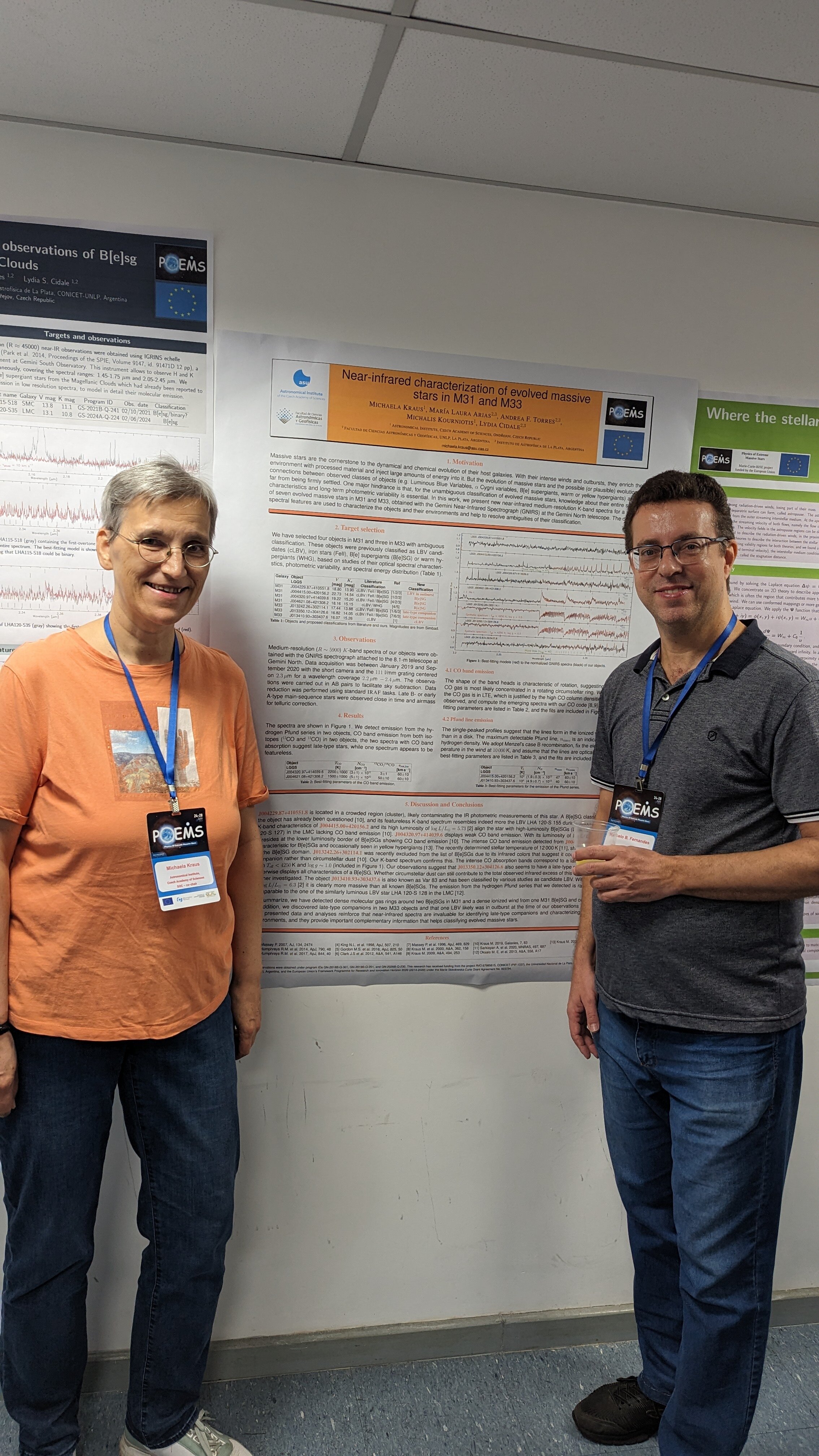
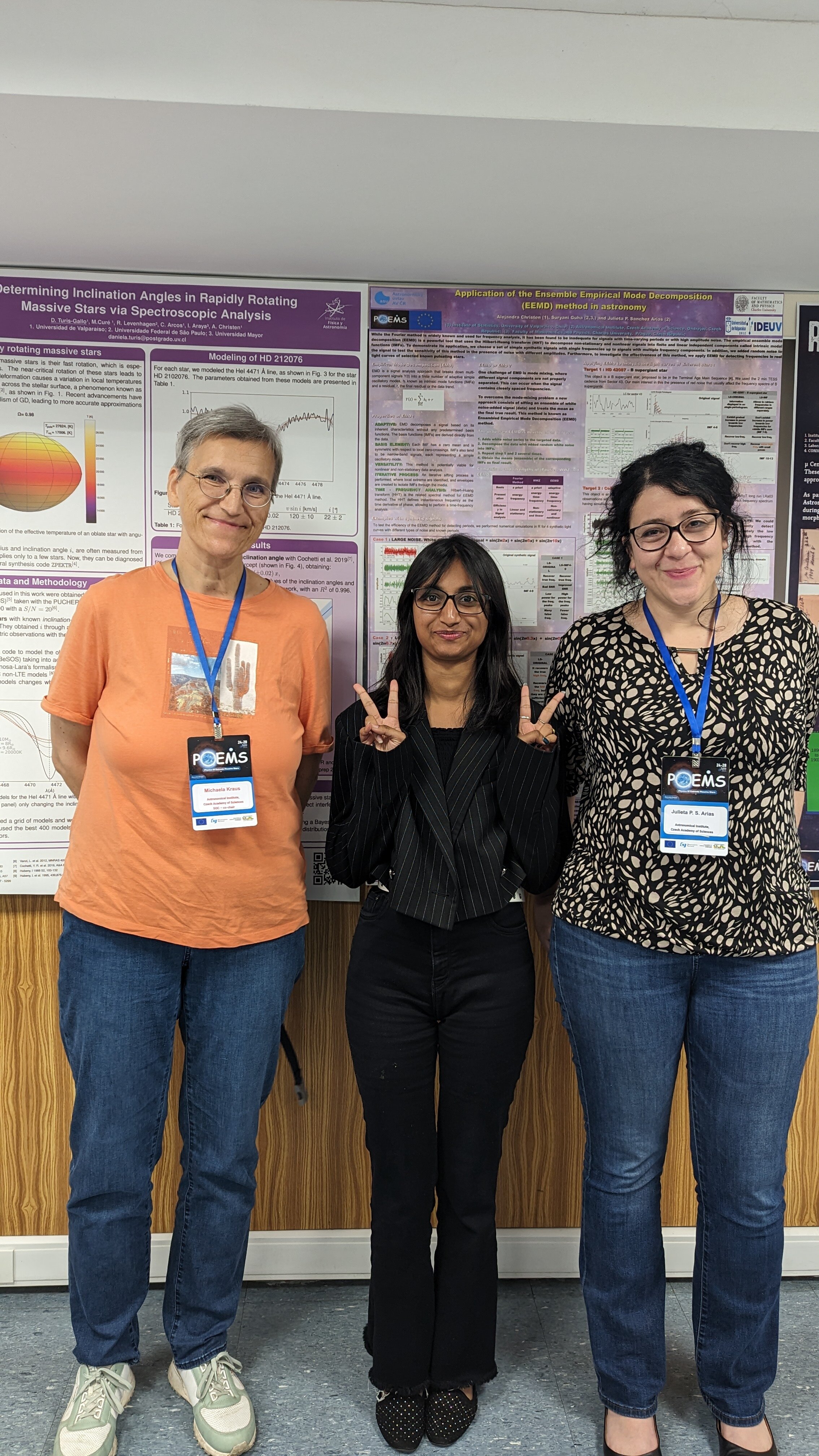
After the conference, I stayed about 8 more weeks in Rio de Janeiro, working with Marcelo Borges Fernandes and his PhD student Athos Silva on modeling of circumstellar emission from B[e] stars. For this, we used high-resolution near-infrared spectra that were collected with the IGRINS spectrograph at Gemini-South, based on a joint project (including colleagues from UNLP, Argentina). We discovered CO band and Pfund line emission from several objects. I have taught Athos and Marcelo how to model these emission features with my codes, and convincing fits had been achieved already before my departure.
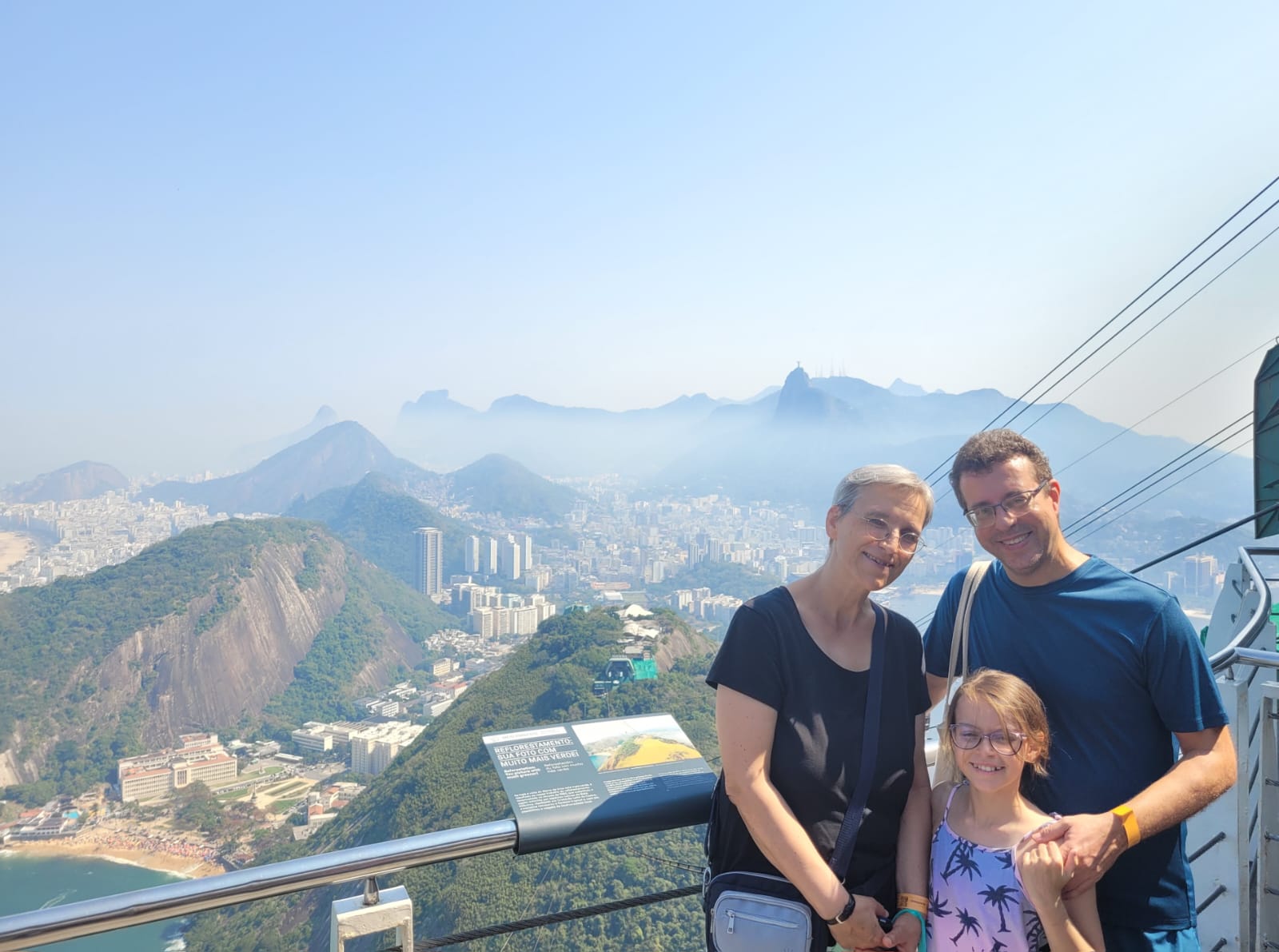
During my visit, we further elaborated the science results that were presented during the POEMS conference, and we prepared a paper draft. This draft has been submitted for publication. In addition, I had the great opportunity to learn about the power and possibilities of Speckle Interferometry from Marcelo and Carlos Guerrero, a colleague from Mexico who also spent one month at the ON. For the future, we are planning joint observing campaigns to use this technique to resolve multiplicity in massive stars in late evolutionary phases.
During the weekends, I explored the parks of Rio de Janeiro, went on excursions with Marcelo and his family to marvel at the amazing city from various viewpoints, and to enjoy the numerous beaches. It was not my first visit to ON, but the last one was 12 years ago. I really appreciated that, within the frame of POEMS, I had the opportunity to return to this beautiful place after such a long time and to spend time with friends and colleagues.
During the period 6 June to 5 July, 2024, I undertook secondment at the National Observatory of Brazil, in Rio de Janeiro. I found myself in a productive working environment, with astronomers from various fields being particularly friendly in making my stay in the city comfortable. I was introduced to the interferometric method by the host researcher, Marcelo Borges Fernandes, explored archival data that are obtained for stars of my interest, and discussed with Marcelo on future common projects, namely for resolving the circumstellar environment of specific evolved stars. Moreover, I had the chance to interact with early-career scientists and students in Marcelo's group, especially via leading educational courses on the spectroscopic data processing with Python. During the week prior to my departure, I attended the International POEMS conference where I was invited to give a talk subjected on the evolution of massive stars in advanced phases. There, I had the chance to meet colleagues of my field and to become familiar with expertise from other fields such as the data science, which are in line with my future objectives in astronomy.
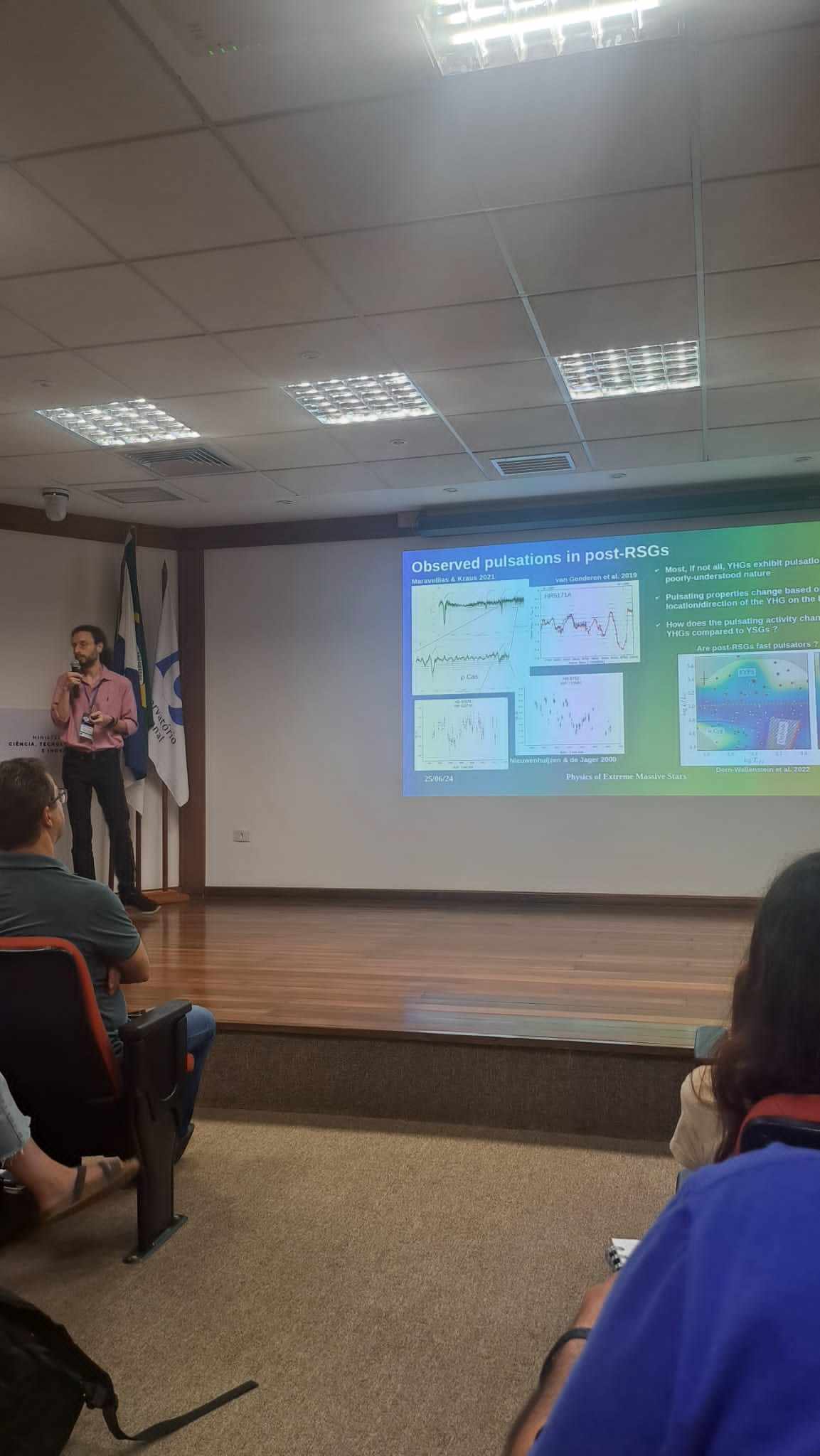

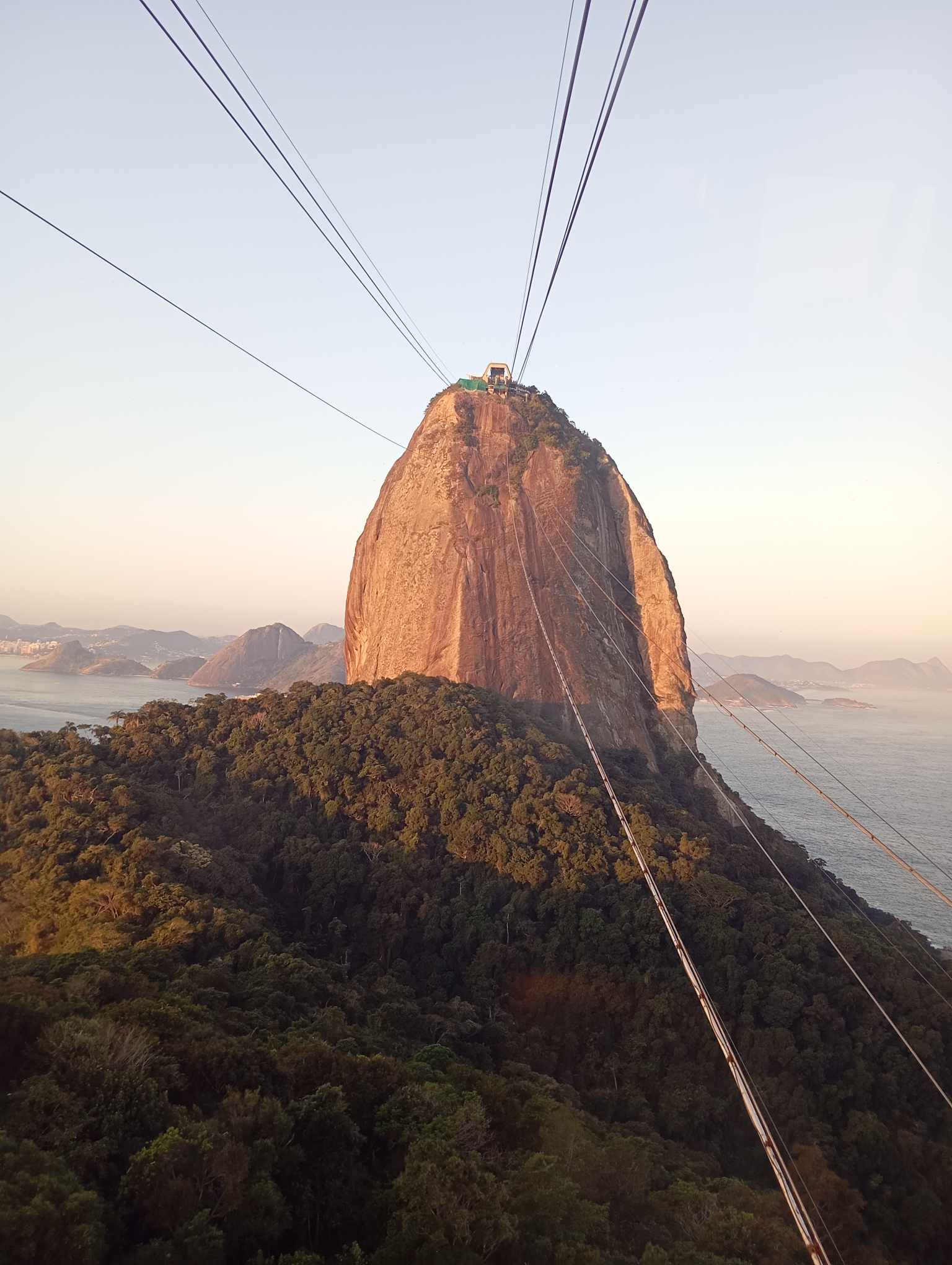
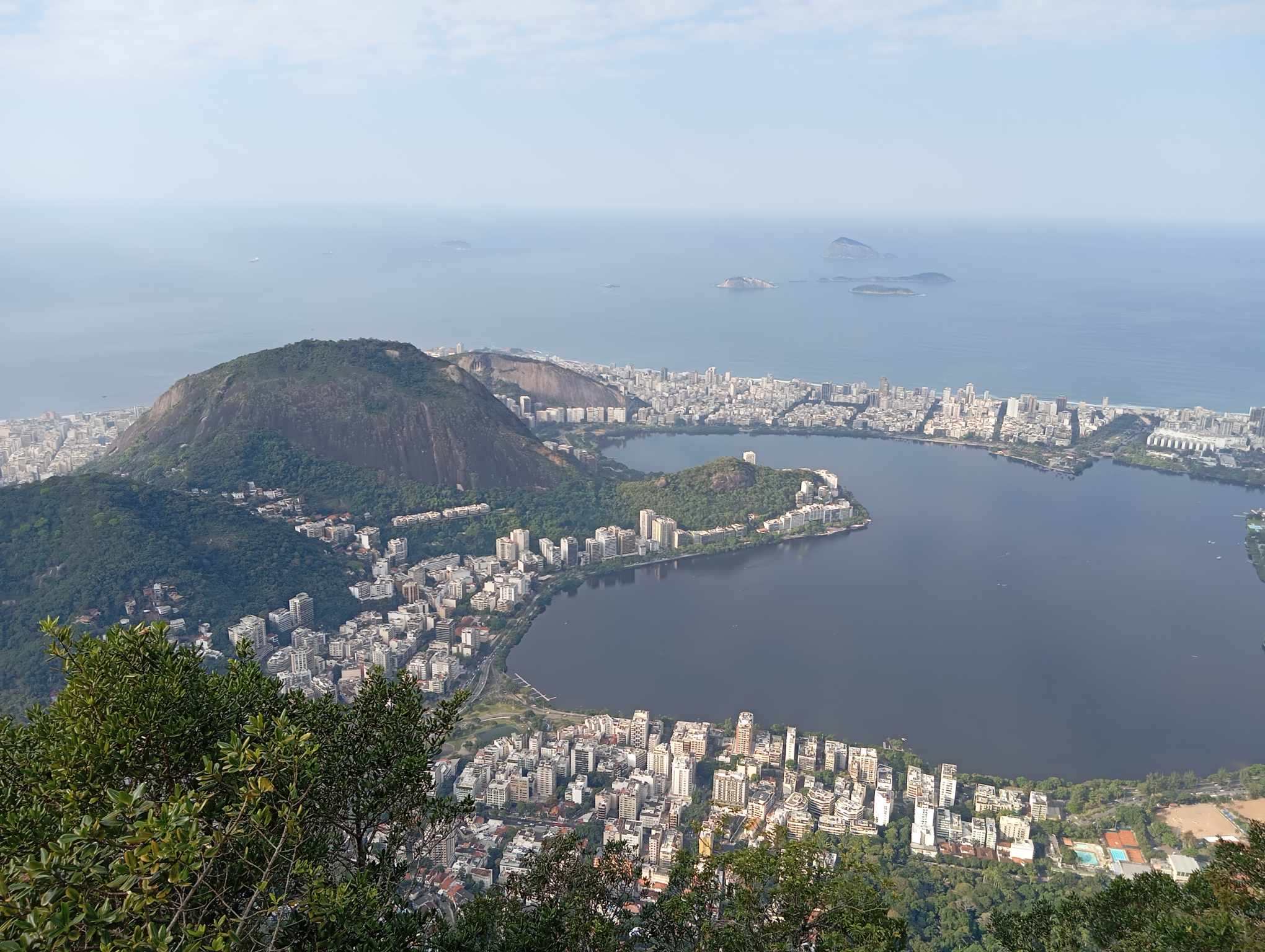
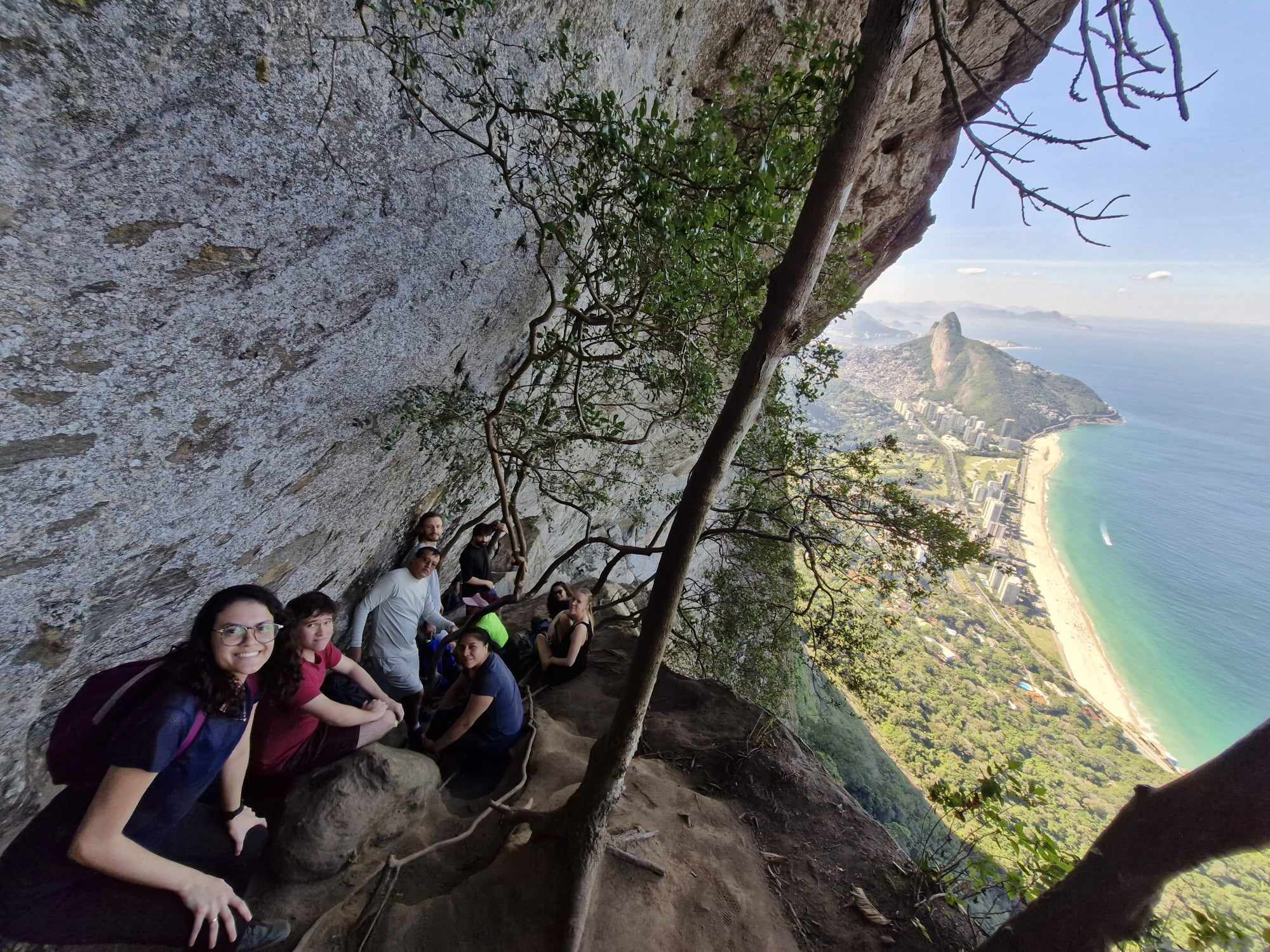
Beyond science, I joined the group of hiker astronomers of the observatory consisting mostly of local people, and enjoyed strolls in nearby natural resorts. Highlight was a hike at the Pedra de Gavea, a hill in the south Rio, where one can enjoy a stunning view to the city. Other unforgettable moments were the visit to the hill of Sugarloaf on the day of the POEMS conference dinner, and the cable car trip to the Christ Redeemer through the Tijuca forest.
After feeling cold sometimes in La Plata, Argentina, it was a pleasure to travel to Rio de Janeiro, the city of eternal summer, on 1st of June 2024. Secondment to Observatório Nacional in the framework of the POEMS project included three weeks of collaborative work with Marcelo Borges Fernandes and the POEMS final conference „Physics of Extreme Massive Stars“ in the last week of June.
While the POEMS proposal was prepared in 2018, it involved two months secondment for me to ON in 2020 with the main aim to learn about interferometric techniques for identification and analysis of faint companions and circumstellar environments of massive stars. As the Covid pandemics forced to drastically change the schedule of POEMS secondments, the new time for ON was close to the end of the project, and two person-months of UTARTU for ON were split between me and PhD student Anni Kasikov. The remaining three weeks did not allow to go deeply into interferometry, given also that Marcelo Borges Fernandes was heavily involved in the preparations to the POEMS final conference. Nevertheless, we could have many useful discussions on the benefits of interferometry in the studies of massive stars, but also of exoplanet host stars.
On Friday, 14 June I gave a seminar talk on stellar physics in Tartu Observatory and POEMS project in general, while Anni Kasikov made a presentation on the yellow hypergiant V509 Cas.
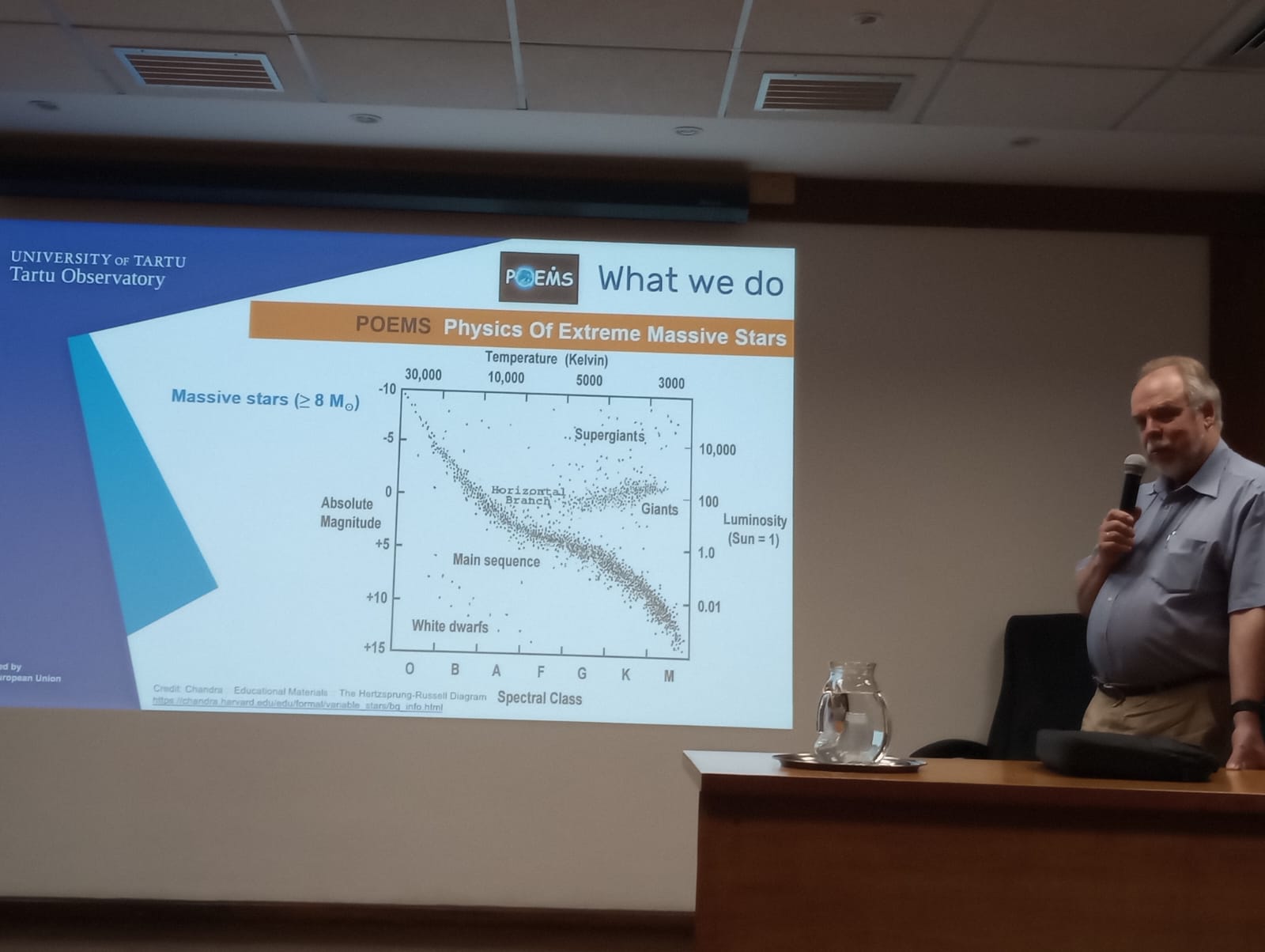
Final conference of the POEMS project attracted some 80 people from all the POEMS partner countries. It summarized many of the results of collaboration obtained during secondments and laid down some directions of possible new collaborations.
Observatório Nacional is an historical observatory established in 1827. The observatory has been at the present site, São Cristóvão neighbourhood, for about 100 years. The historical main building is nowadays functioning as a museum of astronomy and exact sciences. Astronomers and geophysicists of ON are working in a big new building in a modern environment. We had an opportunity to see some of the historical telescopes at ON.
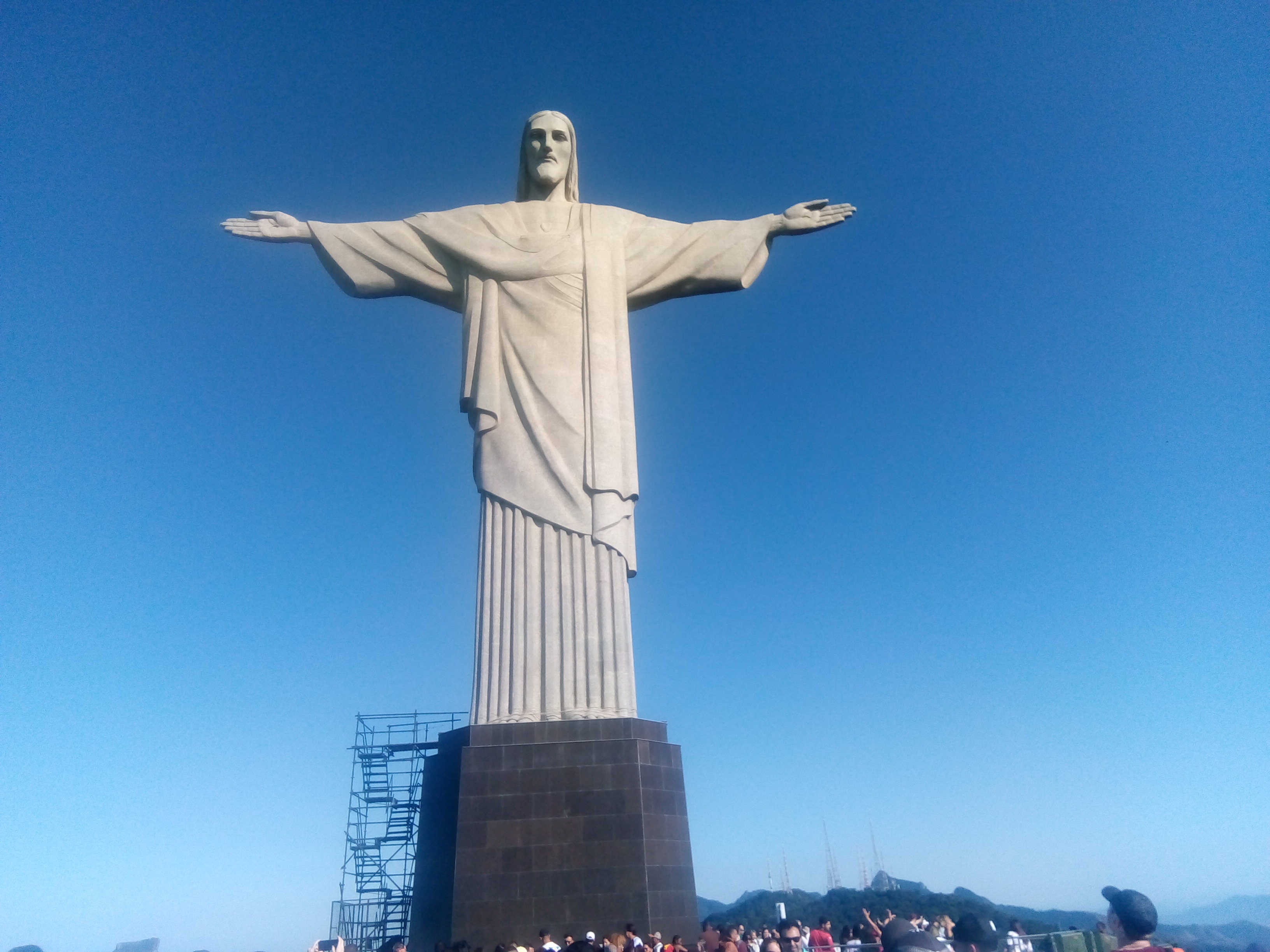
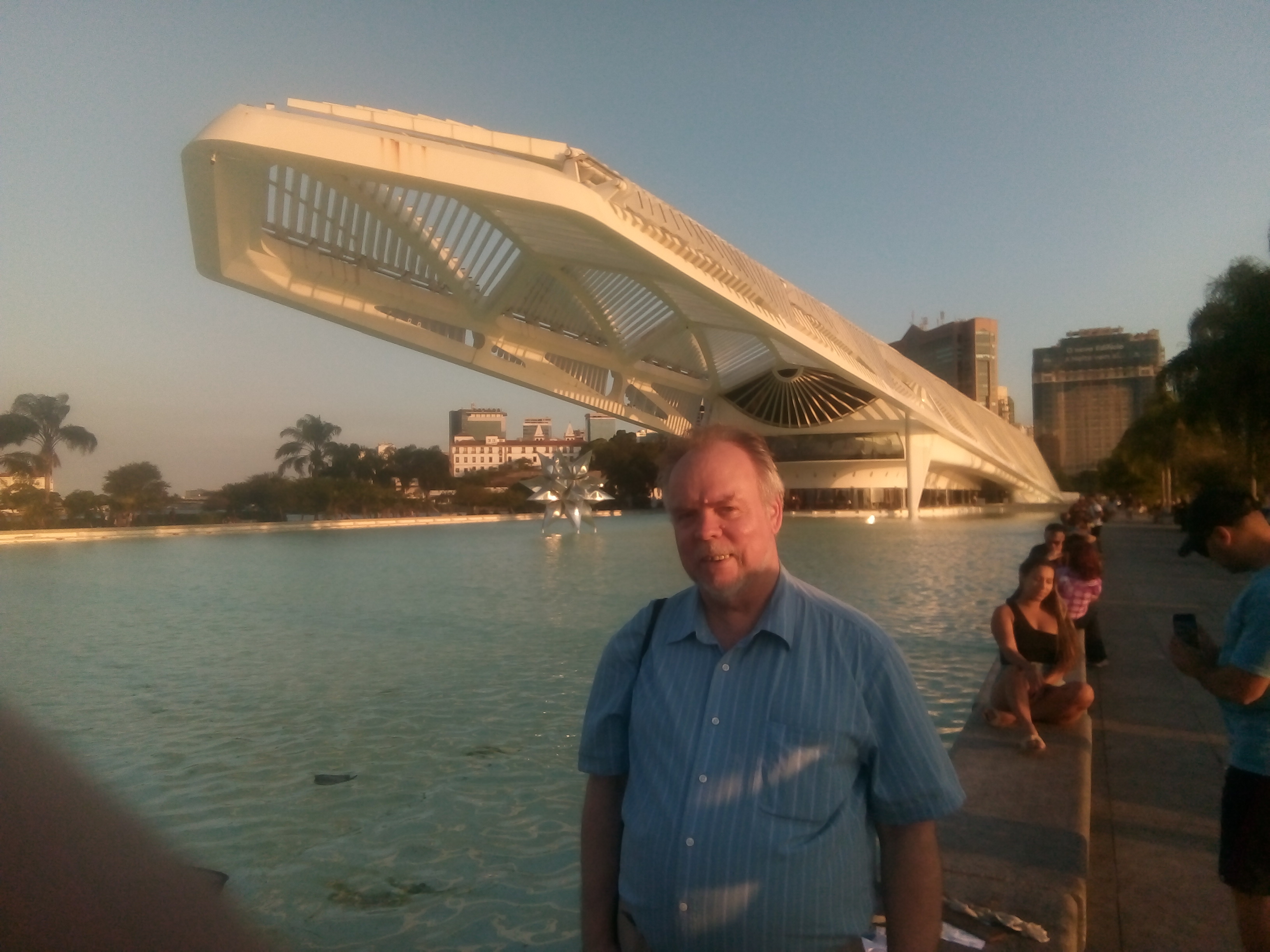
Rio de Janeiro is a huge seaside city, famous for many landmarks and activities, as for example the Samba carnival. We were happy to visit Copacabana and Ipanema beaches, Christ the Redeemer statue atop Mount Corcovado, the Sugarloaf Mountain, historical city centre etc. We also visited Niterói across the Guanabara bay. I am thankful to the POEMS project for an opportunity to stay in Rio de Janeiro for the whole month, and to develop possible further collaboration with ON. Special thanks to Marcelo who despite of very busy time before the conference found time for scientific collaboration and was very helpful to arrange everyday life in Rio.
I visited Observatorio Nacional in Rio de Janeiro, Brazil, together with Dr. Laurits Leedjärv for one month to work with Dr. Marcelo Borges Fernandes. That month was very busy with preparations for the conference, but we found some time to sit down and discuss a research collaboration together with Marcelo concerning yellow hypergiants and how we can combine interferometric and spectroscopic data to better understand their circumstellar environments.
Me and Laurits gave seminars on June 14th, my presentation was titled “A tale of two hypergiants”, where I talked about the field of yellow hypergiant stars based on two notable examples that have entered historically unprecedented phases of evolution. There were quite many people attending, both students and professors.
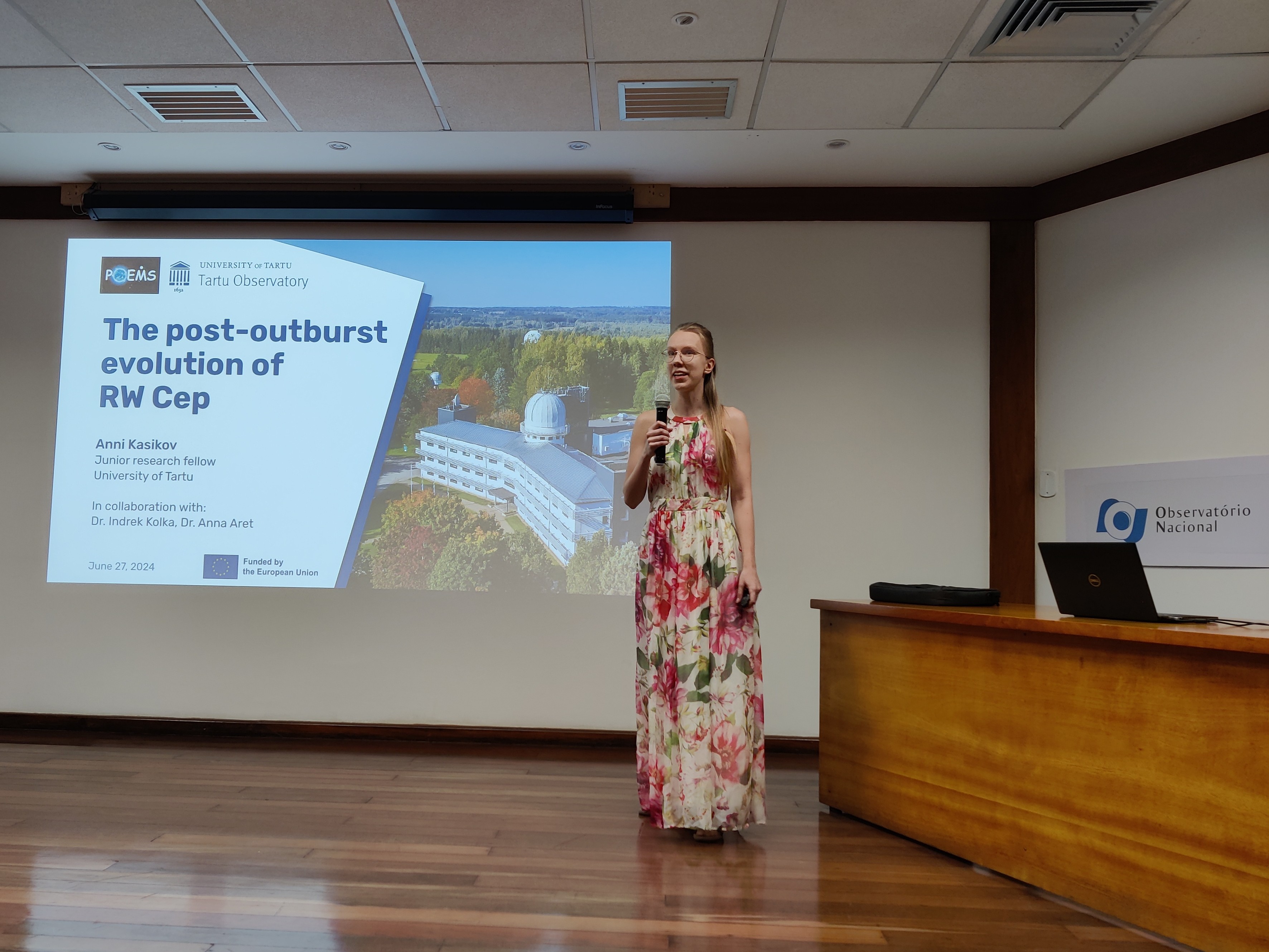
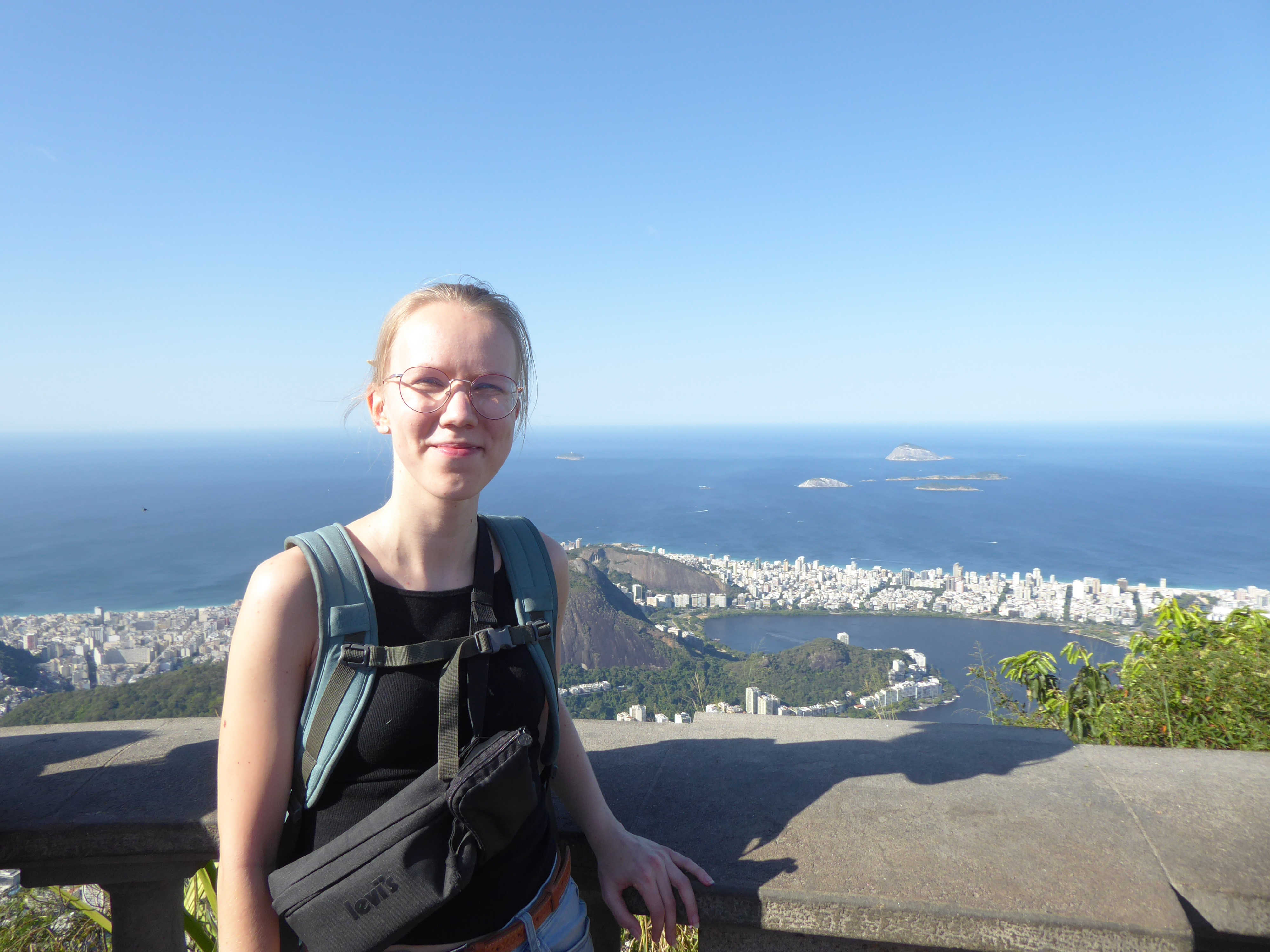
In the weekend, we were able to enjoy the life in Rio de Janeiro, and we also took the boat to visit Niteroi – a smaller city across the bay.
The last week of the secondment was the international conference “Physics of Extreme Massive Stars” and I enjoyed it very much. I presented a contributed talk titled “The post-outburst evolution of RW Cep”. I was able to have discussions and get valuable feedback from researchers in the field of massive stars, and network with many fellow PhD students.
Many thanks to Marcelo for hosting us during this very busy time of conference organisation. Thanks to the POEMS project for this amazing opportunity.
I visited the Instituto de Fisica y Astronomia at the University of Valparaíso, Chile from 2 May to 2 June 2024 as a seconded participant in the framework of EC-POEMS. My colleague Dr. Michel Cure of UV introduced me to his colleague-professors, post-doctoral researchers, and PhD students. Within POEMS I also collaborate with Dr. Alejandra Christen, who is a professor of UV, and with Daniela Turis and Natalia Machuca who currently are PhD students of UV. Michel, Alejandra, Daniela, and Natalia have also visited the Royal Observatory of Belgium for POEMS in the last years, and my visit to UV provided an opportunity to discuss progress of our research collaboration projects during in-person meetings at the office or in meeting rooms.

During the meetings, which were also attended by other UV students, Natalia and Daniela presented progress results of analyzing and modelling stellar spectral observations, including calibrated datasets I provided during their visits at the ROB. Each discussed a poster preparation for presentation at the upcoming POEMS international conference at the Obs. Nacional of Rio de Janeiro, Brazil end of June 2024, which both shall attend. Our meetings at UV offered me the possibility to provide scientific feed-back on their new research results in preparation of a scientific journal publication, and for meeting the requirements for the PhD defense at the UV.
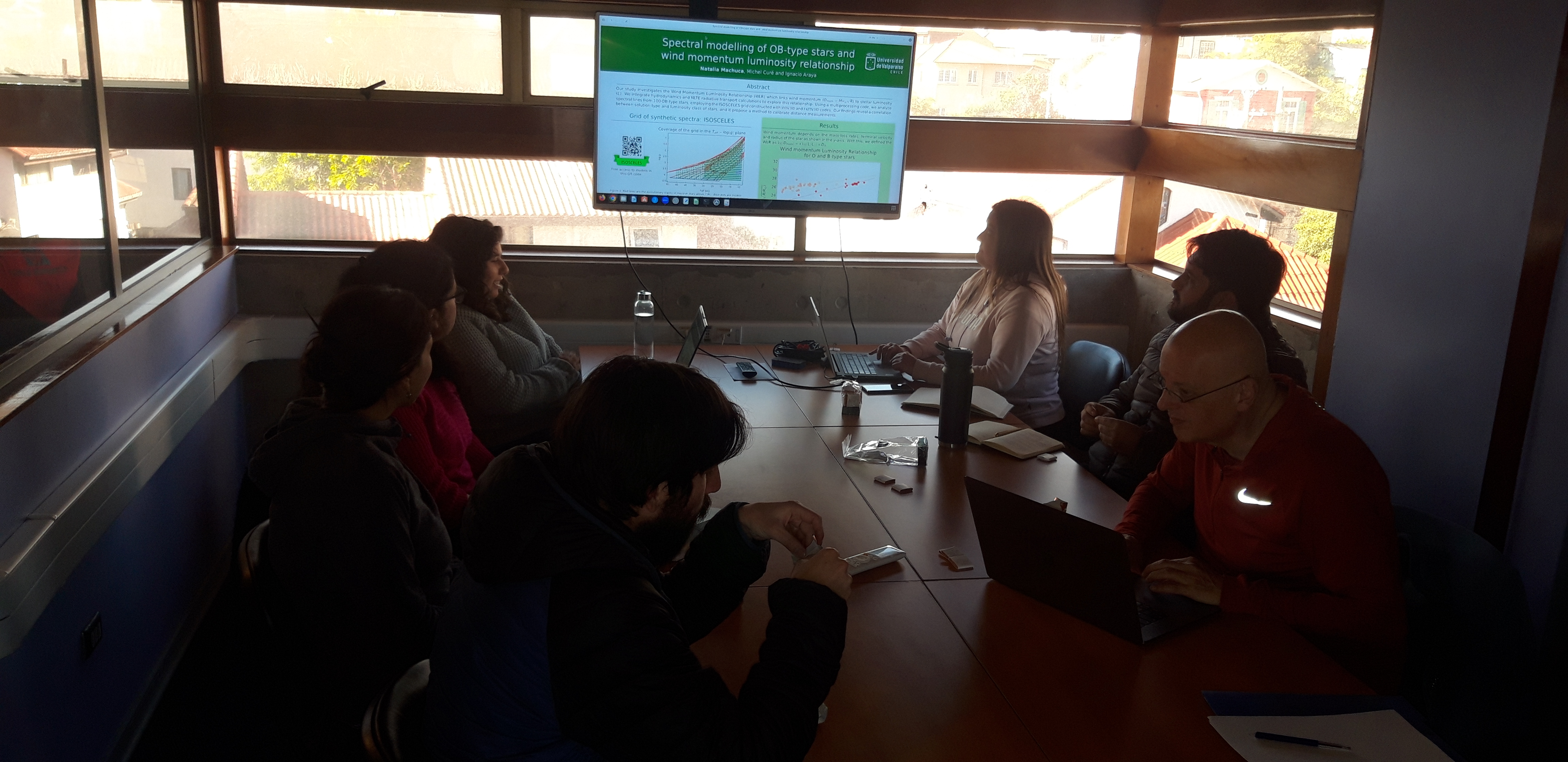
Working with Michel and Alejandra at UV was a pleasure, as always. They are warm and welcoming persons and we had interesting conversations about wind physics in massive stars and periodic variability of B-type supergiants. We discussed some interesting new results we plan to publish in the near future. The Instituto de Fisica y Astronomia has a common place for having lunch where I could meet and discuss with other researchers on various important topics in astrophysics, but of course also outside of science, such as the local cultural happenings (21 May is Navy Day), and present-day national and international political developments. We shared a nice afternoon at a local restaurant together with some colleagues of the Instituto, Dr. Catalina Arcos and Dr. Julieta Sanchez who are involved in POEMS as well.
The seaport city of Valparaíso has an interesting historical background and is an UNESCO World Heritage Site. My visit also provided a chance to admire the historic buildings and to learn about the Chile's maritime history. I lodged at a comfortable dwelling within walking distance of UV. Michel gave me a nice tourist tour of the city, which is indeed recommended by car as the historic quarter is located on the coastal plain and part way up the very steep surrounding hills. It is a city dotted with colorful historic buildings and friendly inhabitants.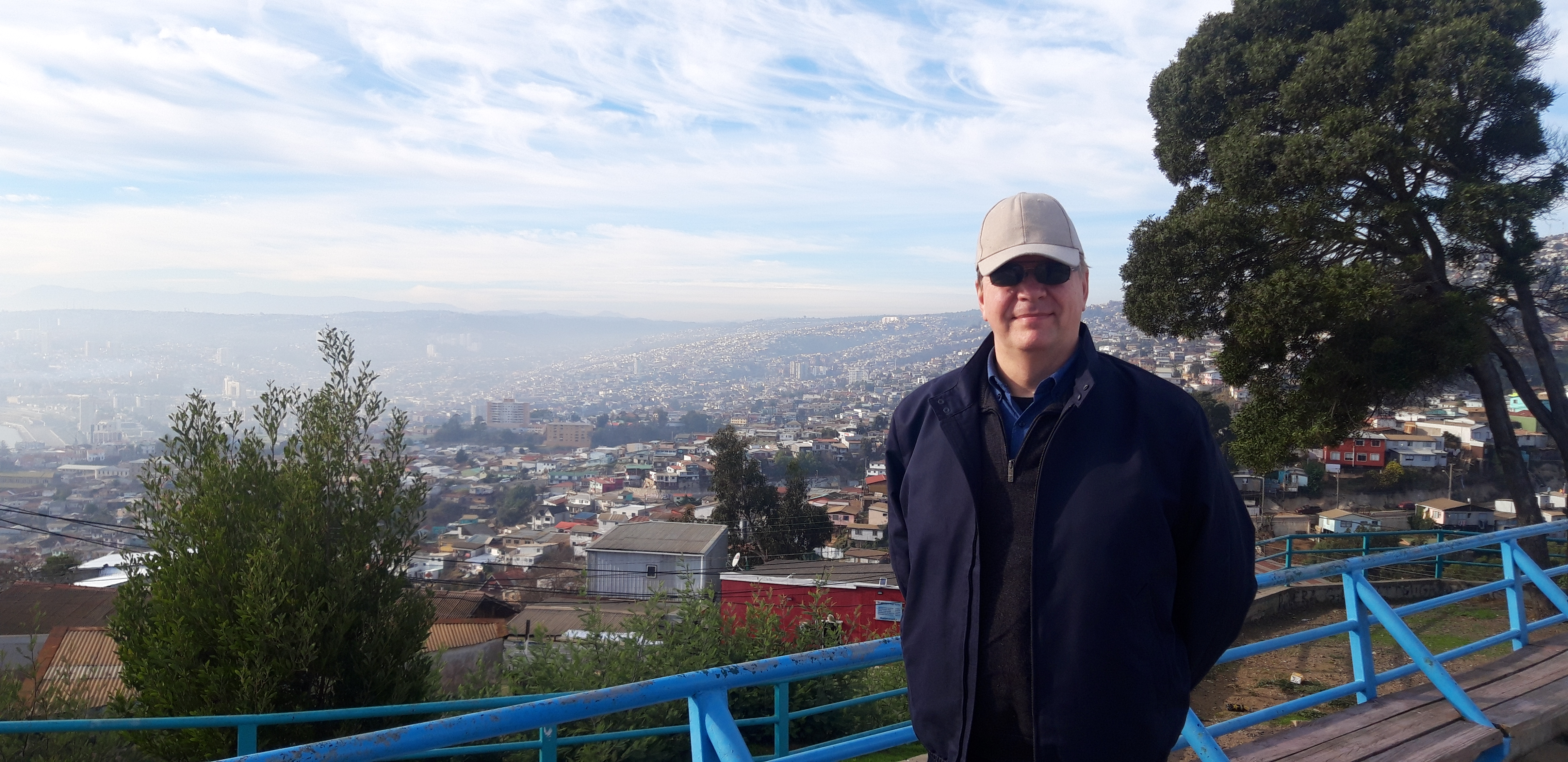
On the last working day of my visit I presented a seminar about my research involvements in ESA-Gaia and ESO-GES. It was strongly attended by students as well as professors. Their questions regarding this research topic shows the strong interest, commitment and knowledge of modern astrophysical research at the UV. To close my visit afterwards we lunched in a nice nearby cafeteria and were joined by the Director of the Instituto, Dr. Radostin Kurtev, and by Dr. Jura Borissova of UV. It has been a real pleasure to meet and discuss with many new scientific researchers and students during my visit of the Univ. of Valparaíso in Chile as a participant in POEMS.
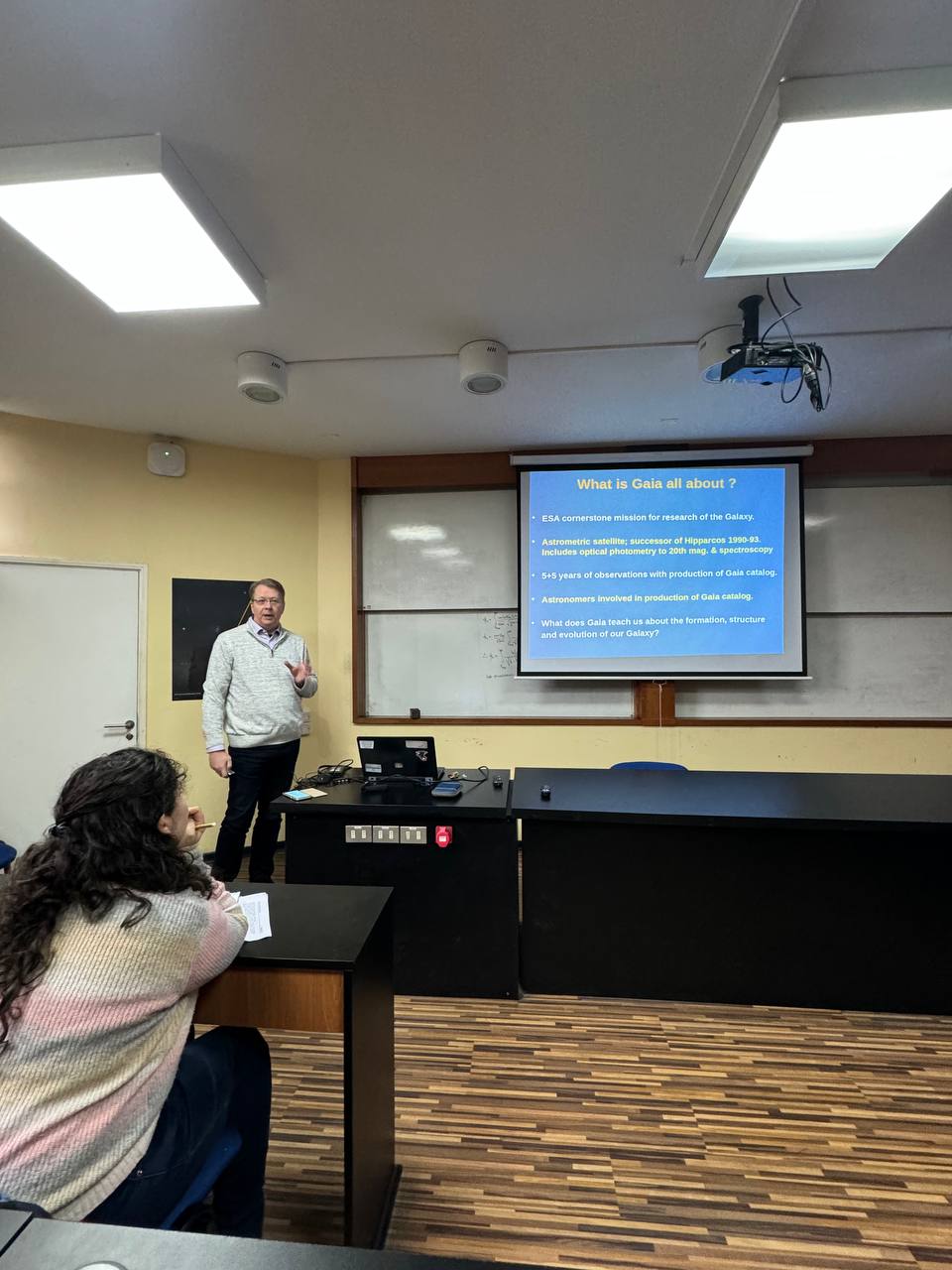
I spent the whole month of May 2024 in La Plata, Argentina on a secondment in the framework of the POEMS project, together with my colleagues Anna Aret and Vitalii Checha from Tartu. This was a wonderful opportunity to work in the environment different from that in my home institution, to meet different people and different culture. Collaborating mainly with Lydia Cidale, Paula Marchiano and Andrea Torres, we had many mutually beneficial discussions on circumstellar envelopes, mass loss in single and binary stars, and some similar phenomena in massive stars and less massive binary stars, for example, symbiotic stars. Paula Marchiano has quite an extensive amount of unpublished spectroscopic observational data for symbiotic stars KX TrA, BX Mon, and BI Cru. I could give some recommendations on how to reduce and analyze these data for a possible future collaboration. I also revoked interest of Andrea Torres to the SMC supergiant LHα-115 S-18 which is the only known object besides symbiotic stars that has shown the Raman scattered lines at λ6830 Å and λ7082 Å in its spectrum. We discussed possible new observations of this star.
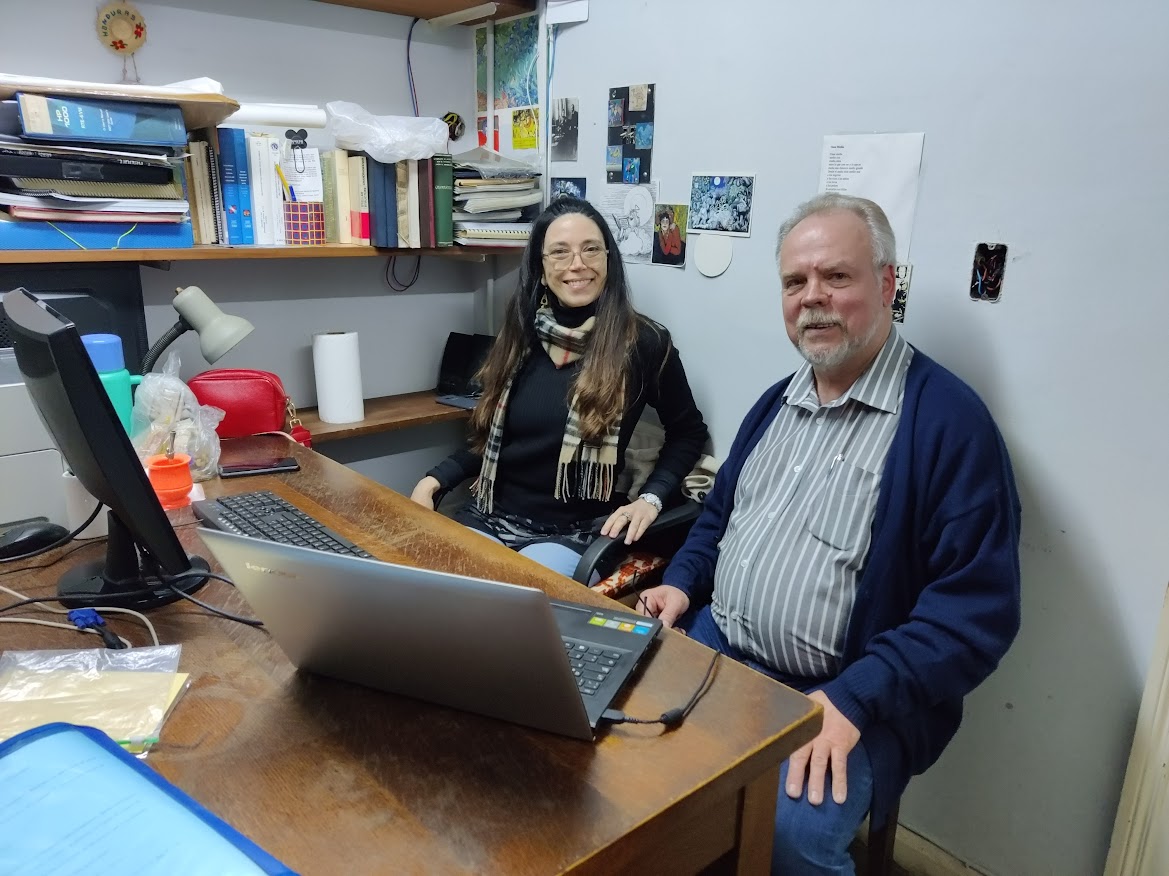
There was an opportunity to be at the seminar which my colleague from Tartu Tõnis Eenmäe was giving on the POEMS database before his departure from La Plata in mid-May.
I could see historical telescopes of the La Plata observatory. The whole atmosphere of this historical observatory, built in 1883, was inspiring, although very much different from working environment in Tartu Observatory. The La Plata observatory is definitely worth to be included in the World Heritage list of UNESCO (the proposal is being prepared).
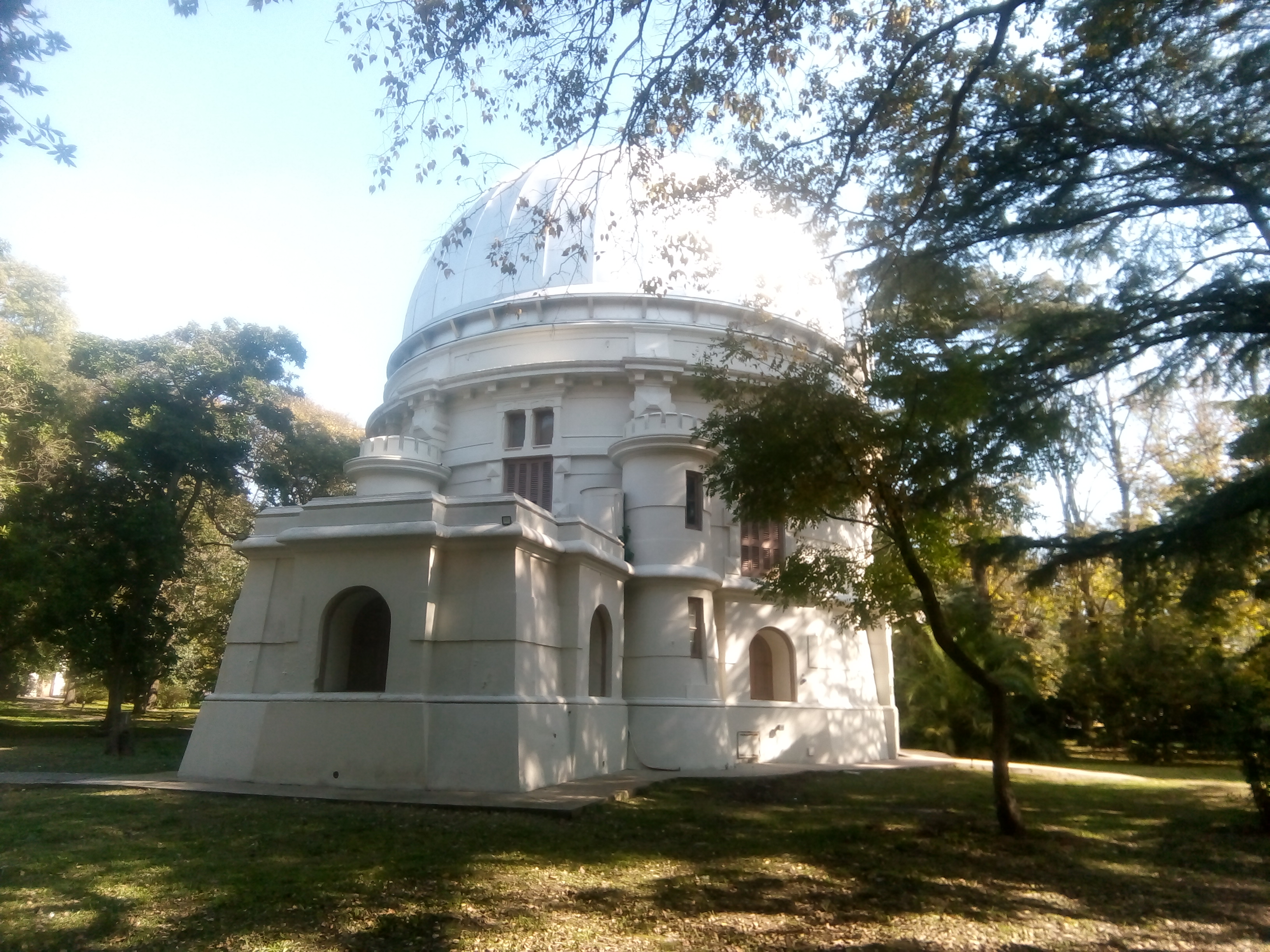
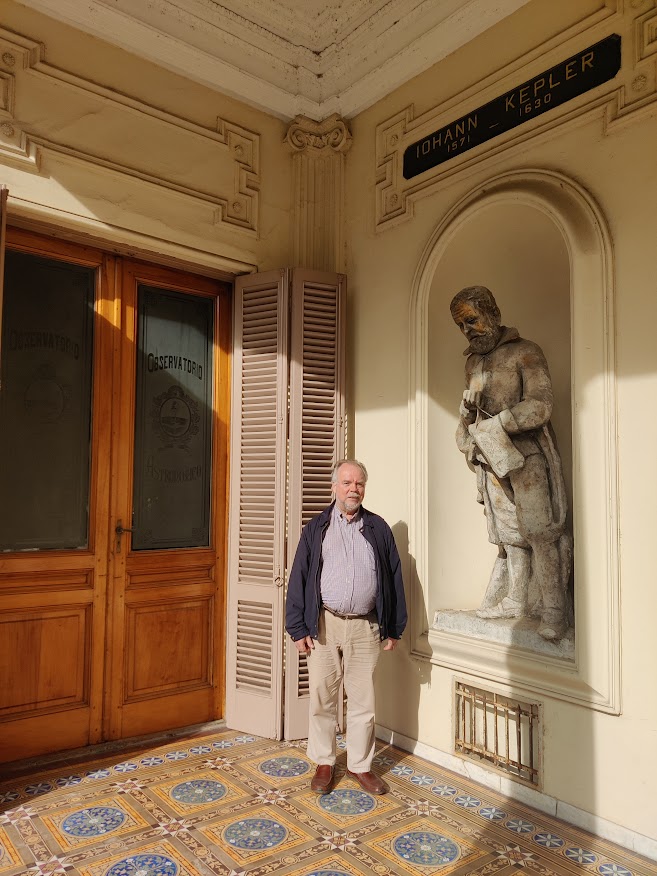
Although weather, and accordingly living and working rooms, were sometimes cold in the Argentinian autumn, relations with the colleagues were warm and friendly. We, visitors from Estonia could enjoy homemade locro (Argentinian national dish) party as well as my farewell dinner in the Cerveceria Modelo.
La Plata is a very specific town being built in 1880s as a new capital city of the Buenos Aires province after Buenos Aires had become a federal capital of Argentina and could not serve as a province capital any more. The city was planned as a regular rectangular set of numbered streets which intersect in every 120 metres. Here and there diagonals at 45 degrees cut into this regular structure, making crossing these intersections rather tricky for pedestrians. The Cathedral and Town Hall of La Plata are wonderful. I also had a chance to visit Buenos Aires, a huge capital city of Argentina. I am thankful to the POEMS project for an opportunity to work in Argentina, and to Lydia, Paula, Andrea, María, Roberto, and other colleagues for a warm hospitality in La Plata.
This was my third visit to Argentina, and I thoroughly enjoyed it. This time, I traveled with Laurits Leedjärv and Vitalii Checha to collaborate with colleagues from the Universidad Nacional de La Plata. I continued my work with Lydia Cidale on the Algol project, and together with Lydia and Vitalii, we analyzed the variability patterns of the BSG star rho Leo.
What stands out most to me is the warmth and sincere hospitality of our Argentinian colleagues, who made me feel truly at home. An unexpected outcome of the POEMS project for the Stellar Department of Tartu Observatory is that nearly half of our staff is now learning Spanish!
Left: The POEMS team enjoying a relaxing evening together. Right: La Plata boasts a major museum of anthropology, geology, zoology, paleontology, and botany, housed in a beautiful Neo-classical building.


La Plata boasts a major museum of anthropology, geology, zoology, paleontology, and botany, housed in a beautiful Neo-classical building.

Seasonal changes along my daily route to work in La Plata.
During my visit, I primarily collaborated with Prof. Lydia Cidale, who has extensive expertise in studying stellar pulsations. Our main objective was to identify and analyze specific variability in the star Rho Leo (HD 91316) using both spectral and photometric data. We focused on determining the nature of this variability by analyzing our own spectra alongside photometry data from the TESS space telescope.
We discussed the methodology for frequency analysis, identified several pulsation periods, and proposed a viable hypothesis to explain how these periods form. I presented these findings at the POEMS final conference in Rio de Janeiro.
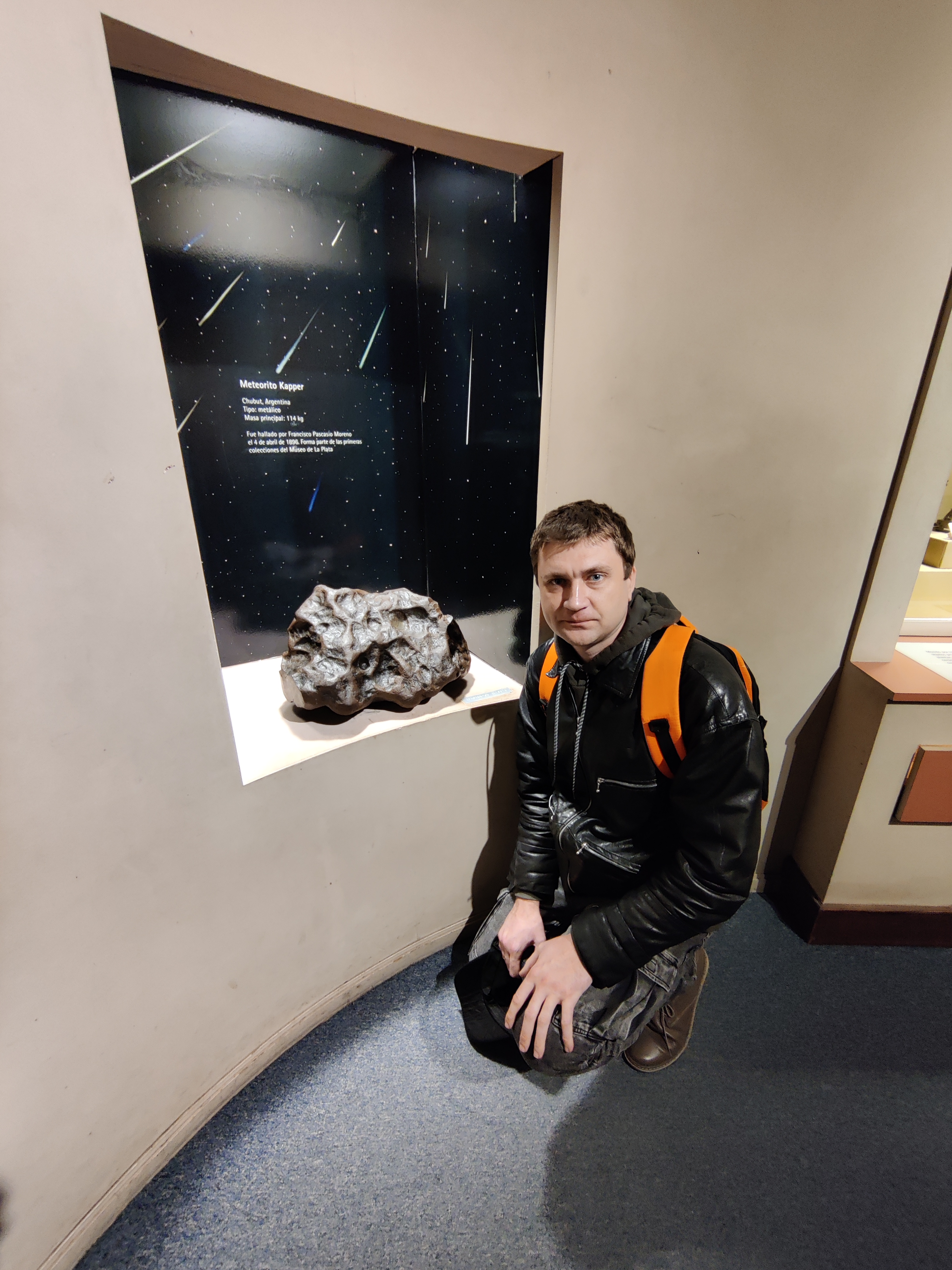
I would like to express my heartfelt gratitude to Lydia and the entire department for their warm welcome. Despite the significant challenges the country is currently facing, our colleagues in La Plata remain resilient, friendly, and highly supportive.
During my secondment in Argentina I also had a week-long trip to Chile (Universidad de Valparaiso) to visit our colleague Alejandra Christen and Gunther Avila. With them I discussed frequency analysis methods and WWZ analysis.
During my collaboration with Professor Alejandra Christen and Gunther Avila from the Statistical Institute, who specializes in the statistical analysis of periodic processes, our main objective was to identify potential periodicity in our spectral data, specifically in the stellar pulsations of star rho Leonis. To achieve this, I utilized data series with radial velocity spanning several years of observations. Given that pulsations are not inherently periodic, finding the periods proved to be a non-trivial task. However, through our joint efforts, we explored numerous powerful statistical methods for analyzing periodic processes.
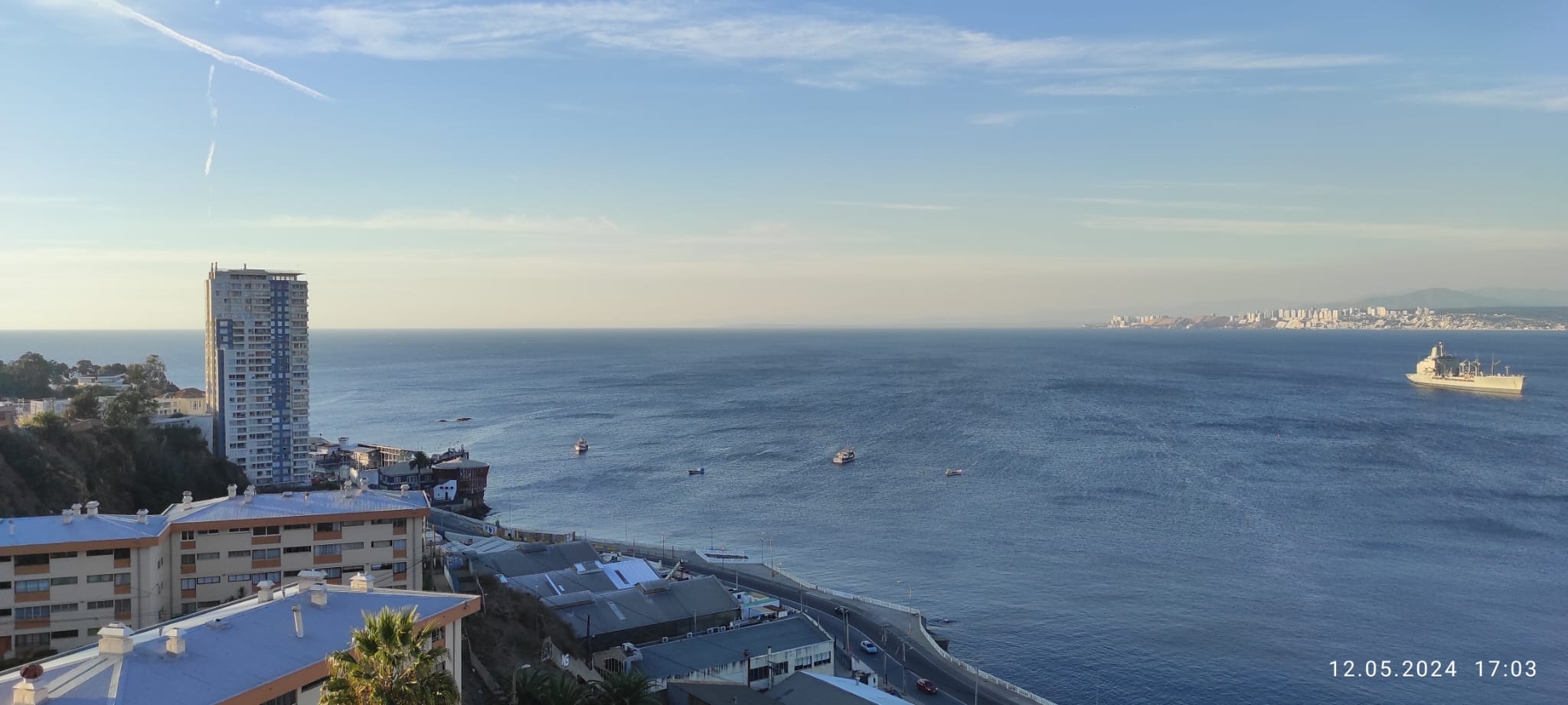
I am genuinely grateful to Alejandra for her warm hospitality and time they dedicated to our collaboration. I lived in a good area of the city - near the university, very close, so you could walk there. I was also very lucky with the apartment - there was a gorgeous view from the windows.
During my POEMS secondment, I spent the month of May, 2024, visiting the Instituto de Física y Astronomía at the Universidad de Valparaíso, Chile. I obtained my PhD in Astrophysics at this University on 2020 and I had not visited Valparaíso in four years, so it was nice to see how the University has changed and catching up with old colleagues.
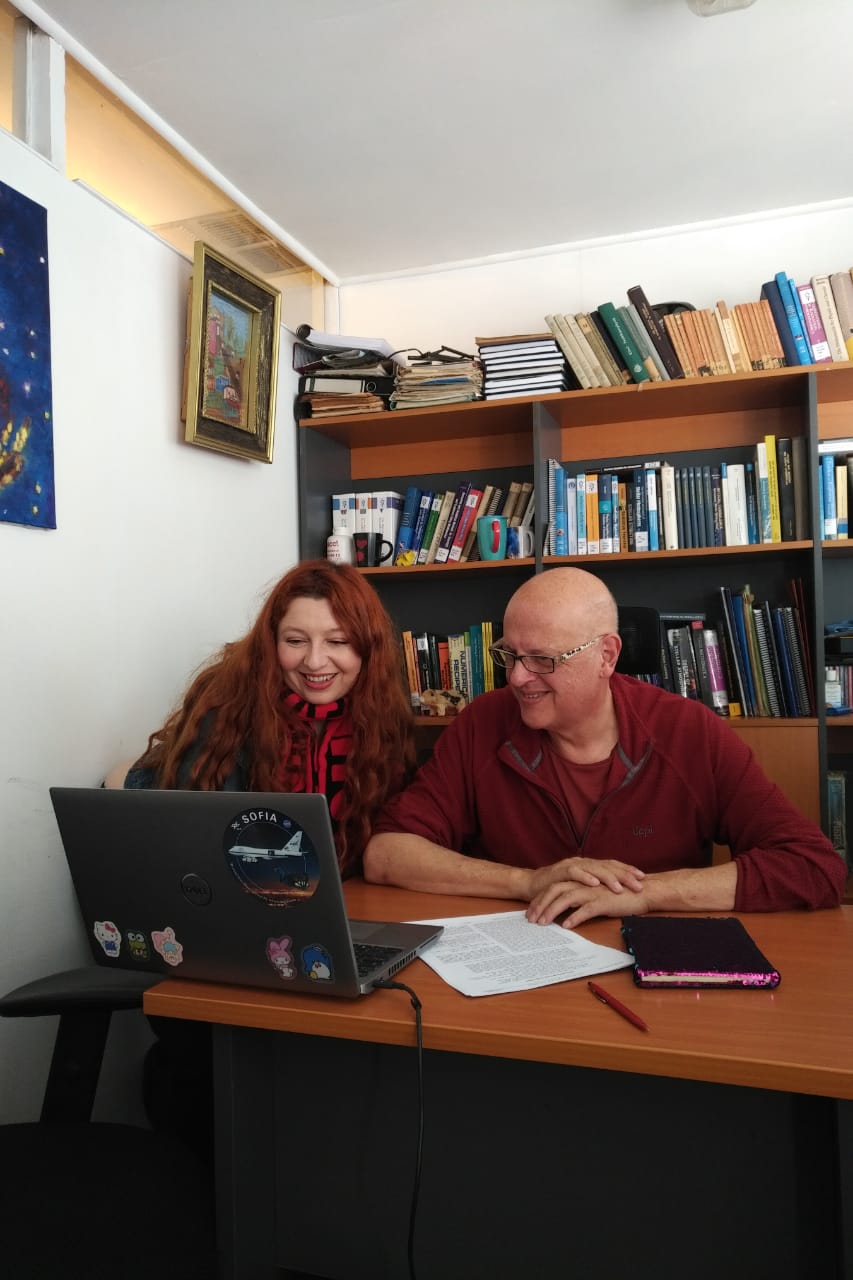
I went to work with Michel Curé and his student Felipe Figueroa. They are experienced with the code TLUSTY and I wanted to learn to use this code because it produces stellar atmospheres models and it can also model accretion discs. I work on stellar characterization and circumstellar disc evolution, including accretion activity on Herbig Ae/Be stars, so this code was useful for me. I struggled with the installation and compilation at the beginning and understanding how the code works, but Felipe helped me a lot. I had used Kurucz ATLAS codes before, which are also for stellar atmosphere modelling but the inputs and outputs are quite different and ATLAS does not model accretion discs. In addition, TLUSTY is much more flexible and complex at the same time, as it allows to set specific metallicities and elements in the model. I also got to talk to Catalina Arcos, who is also experienced in this code and was able to give me some advice (in addition to catching up, as she recently become a mom and I got to see pictures of her daugther!). At the University of Leeds there are many people working on discs and massive stars and now I can share my knowledge on this code with them, as it is not very intuitive and there are lots of steps to follow and all the options can be very confusing.
I also got to participate in the seminars, I was scheduled to give one as well but unfortunately it got cancelled, so hopefully I can give it the next time I visit! It was a very nice experience, not only I got to learn new things, but also see friends and family and have the Chilean food that I miss so much.
Astrospheres represent the dynamical interaction regions between the stellar wind and the interstellar medium. They comprise various HD/MHD discontinuities, namely the termination shock, the astropause, and the bow shock. During my two-month internship with Dr. Michel Cure and Dr. Rodrigo Meneses at Universidad de Valparaíso, we focused on solving the 3D resistive MHD equations in the linearized field approximation in a local region close to the apex of the astropause. The main assumptions of this analysis were that the flow is stationary, incompressible, and the magnetic null coincides with the velocity null. The solutions gave us the topological structure of the hydrodynamical quantities and the magnetic field close to the null point. We can use this information to calculate the emission measure, which can then be compared to MHD simulations and observations. Additionally, I attended weekly institute seminars featuring invited speakers from various universities and researchers from IFA, who presented their work covering a wide range of topics in astronomy and astrophysics.
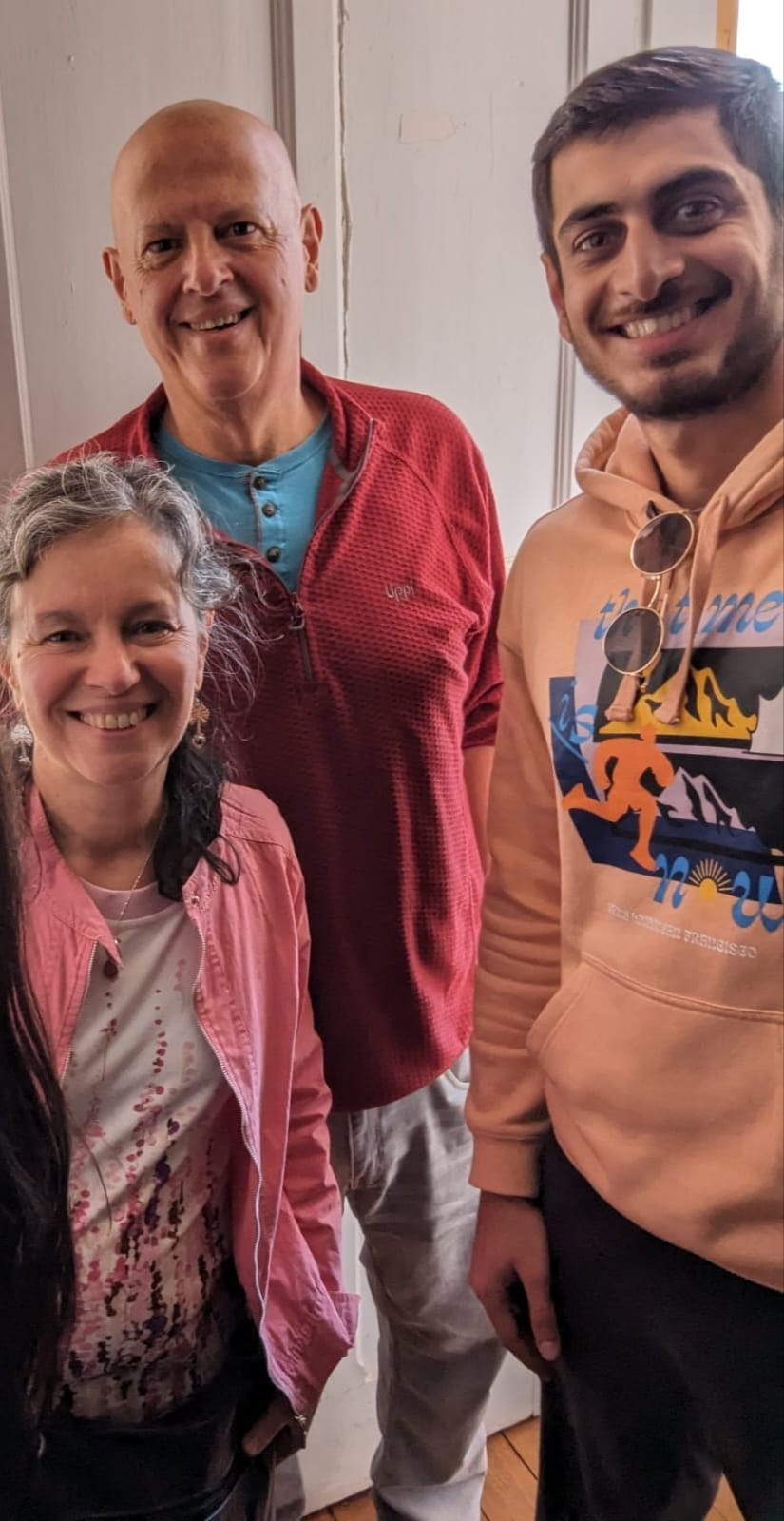
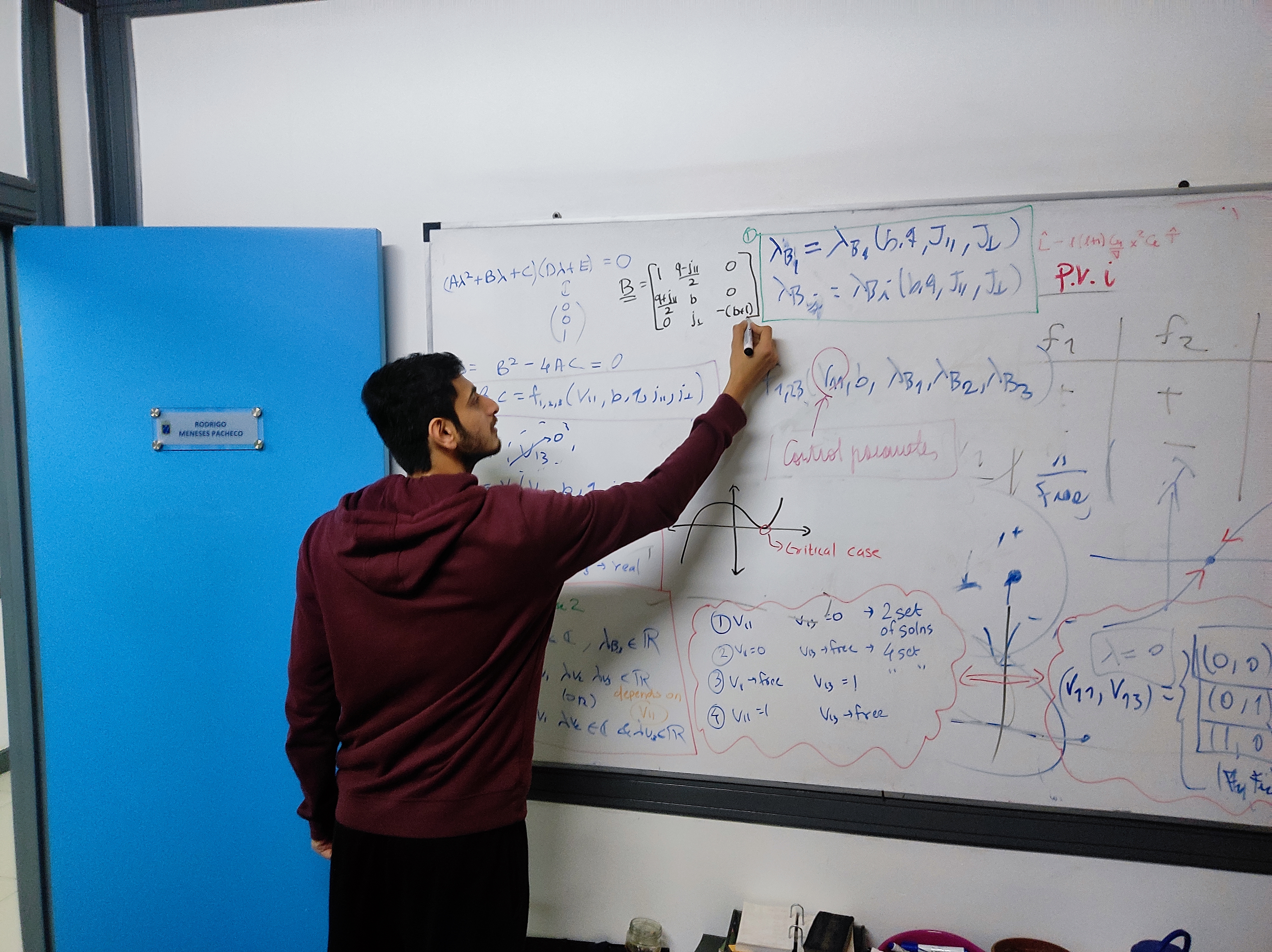
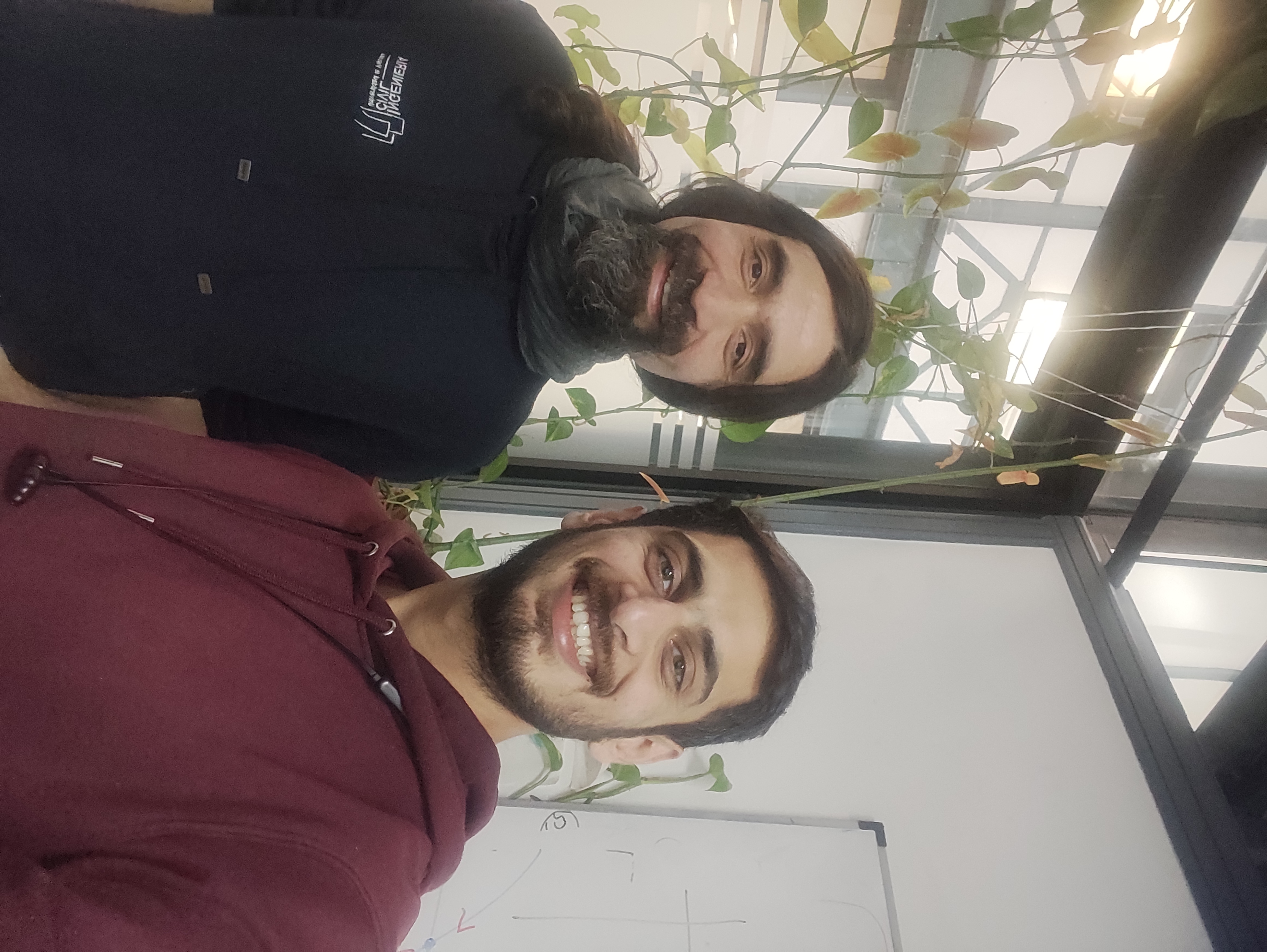
On a long weekend, I had the opportunity to visit the city of La Serena and Pisco Elqui. The place was of great scenic beauty, and along with my friends, we got to visit various pisqueras in Valle Elqui and learn more about the distillation of piscos in the traditional way.
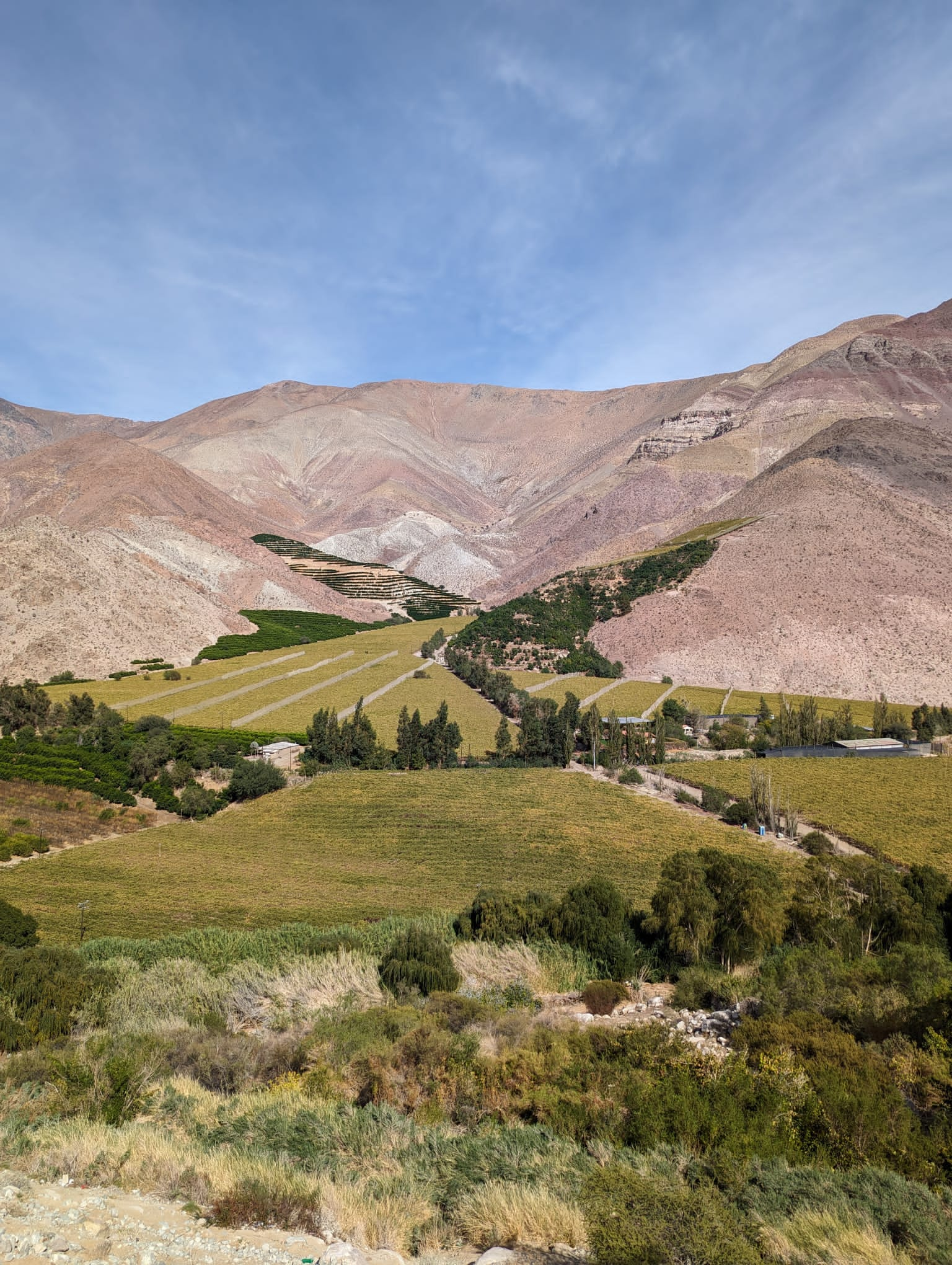
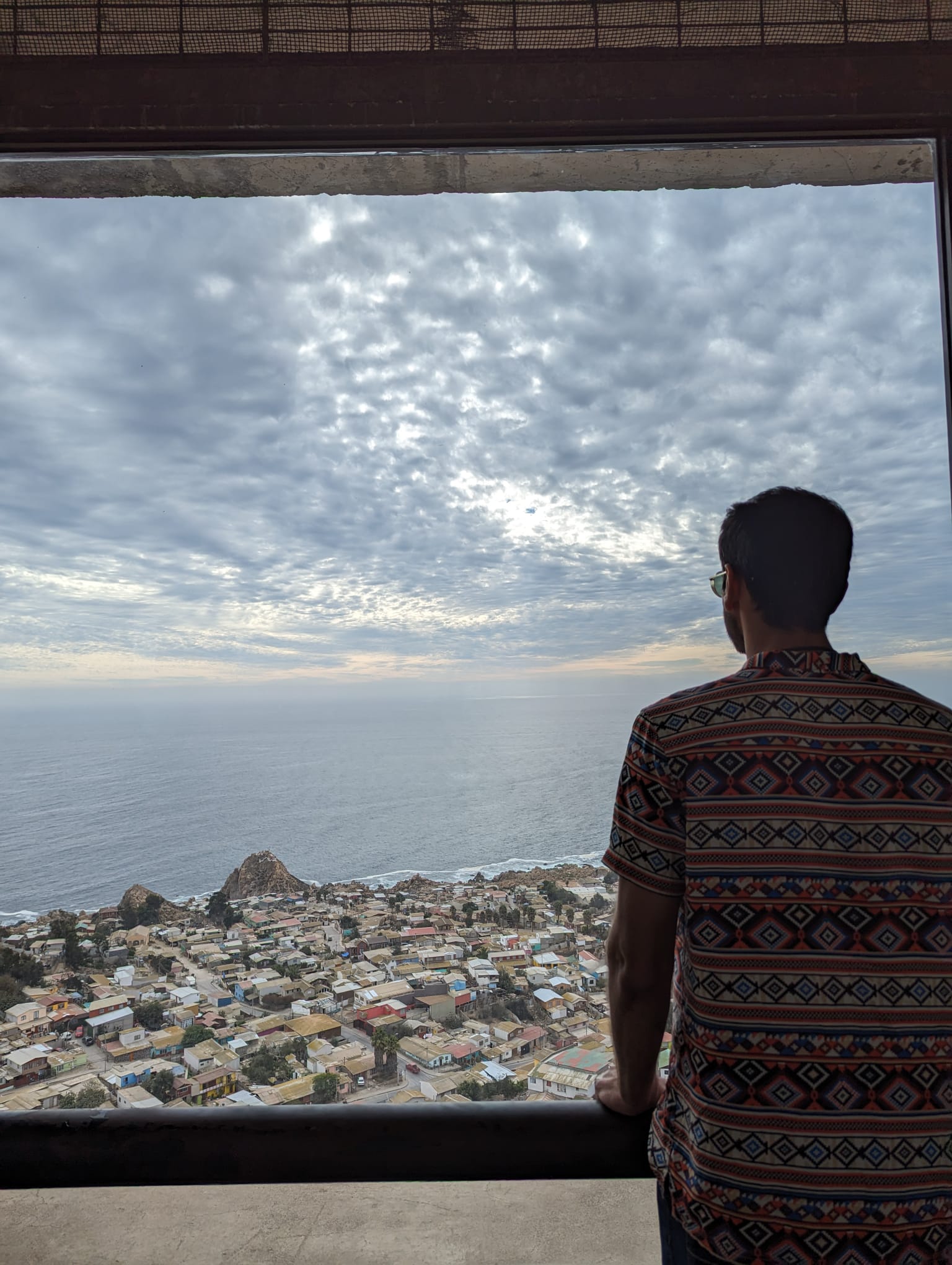
Though this was my second time in Valparaíso, I got to visit many new places, try new cuisines, and enjoy the most beautiful sunsets I have ever seen. I also participated in my first successful half-marathon.
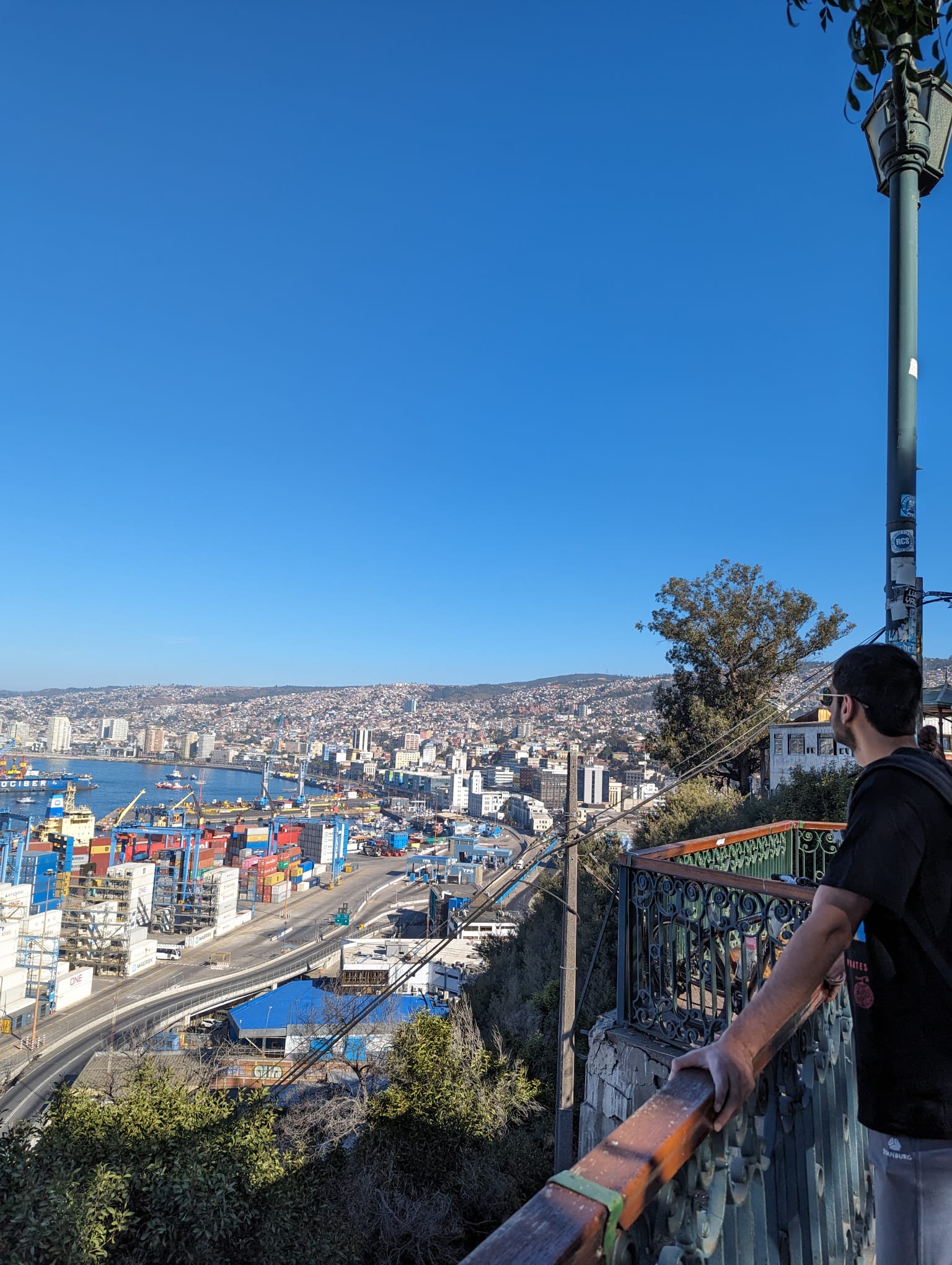
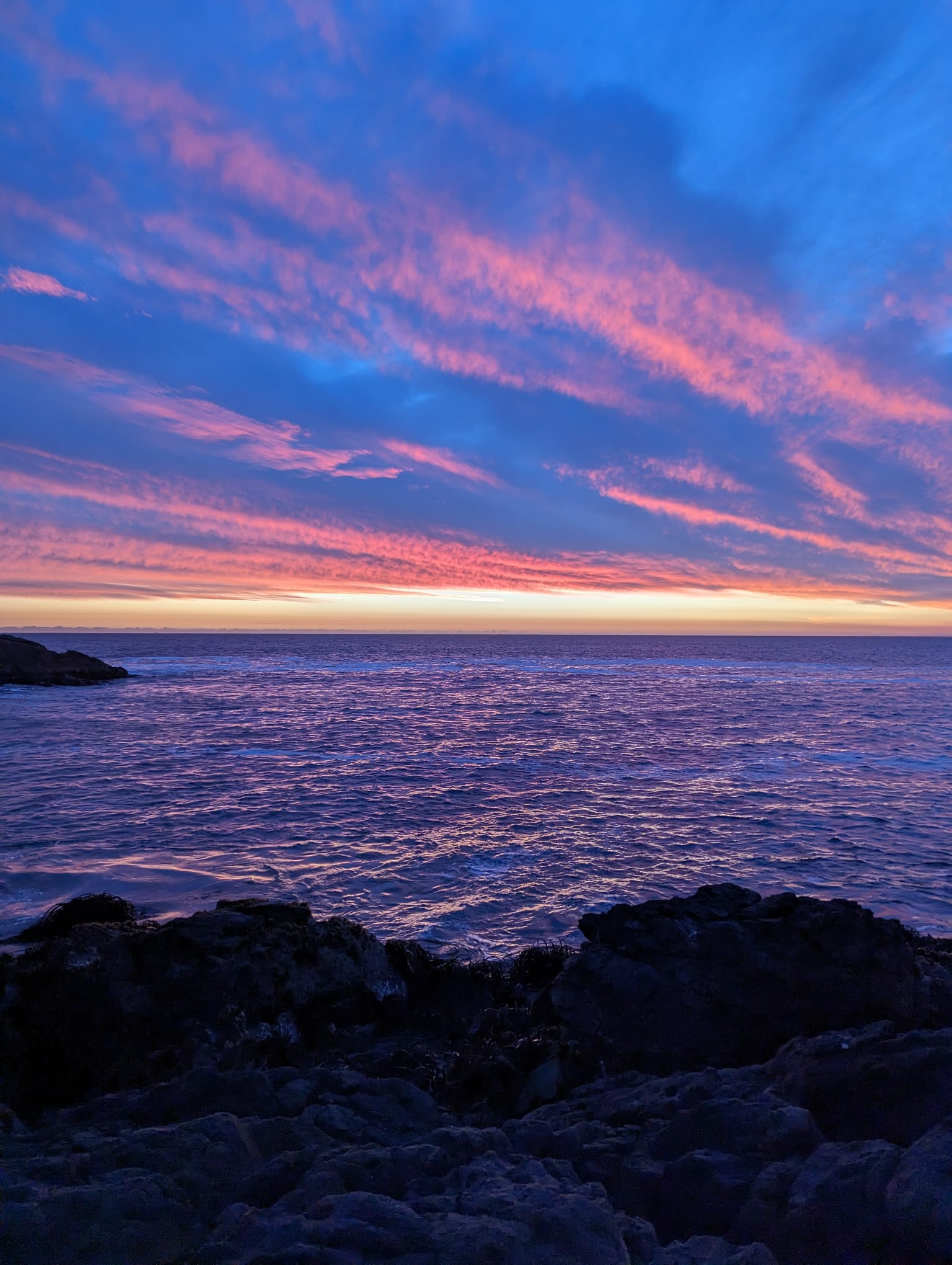
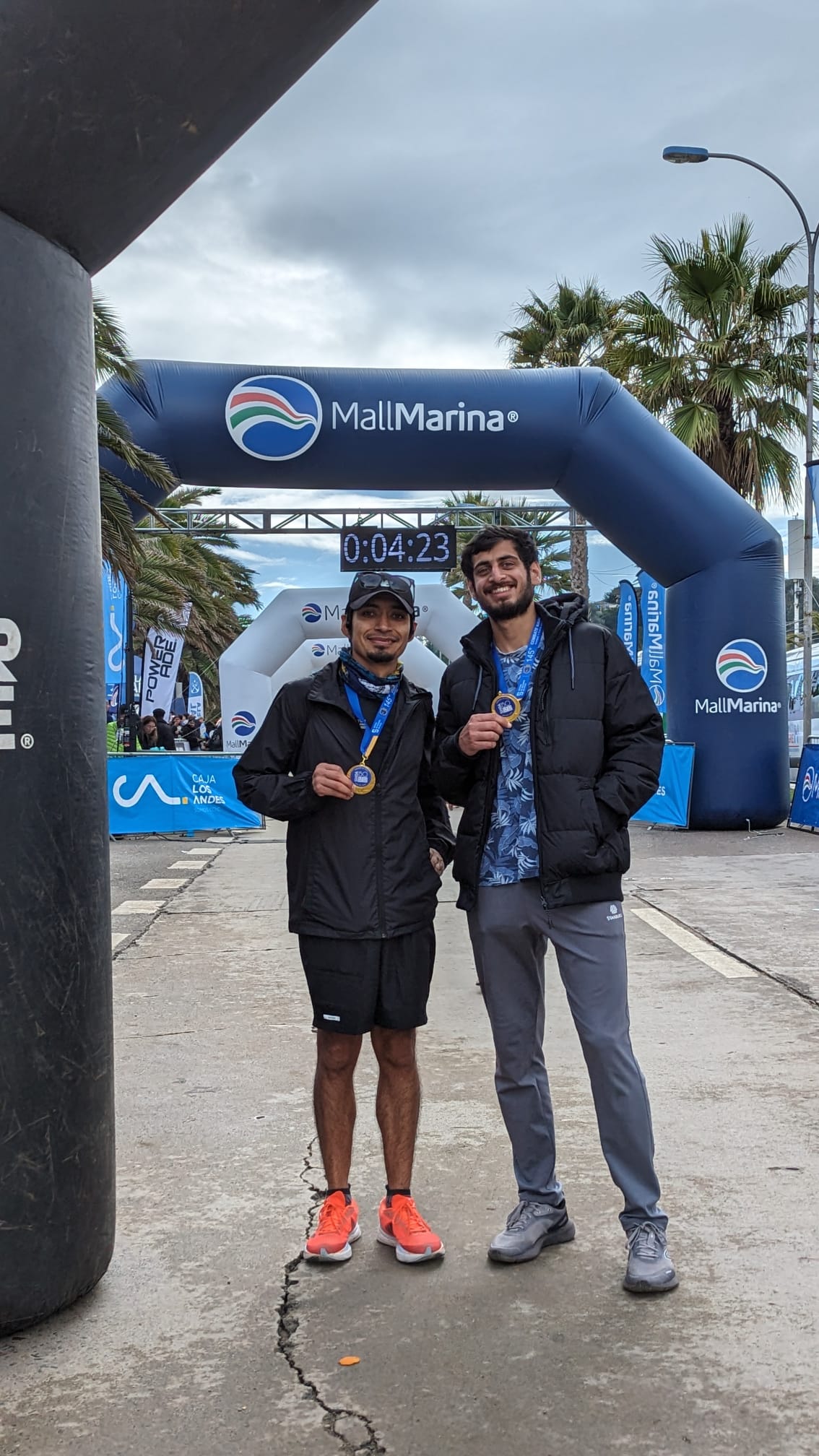
I am eagerly looking forward to future collaborations.
I was glad to return to Argentina, to La Plata National University, a place already familiar to me from my last secondment. Back in La Plata, I resumed the studies I began during my previous visit. This research focuses on clarifying the nature of several B[e] stars, for which, together with my Argentinian colleagues, we collected a lot of data covering both optical and infrared ranges. I also completed data reduction for spectra of several objects identified as evolved stars based on the presence of surrounding nebulae. We discussed these results with Lydia Cidale, exploring possible scenarios for nebula formation around each star.
In addition to the productive and friendly collaboration with my Argentinian colleagues, my visit to UNLP coincided with the secondments of Tõnis Eenmäe, Laurits Leedjärv, Anna Aret, and Vitalii Checha from Tartu Observatory. It was a great opportunity to meet my Estonian colleagues in person and learn about their ongoing studies. I also attended seminars by Michalis Kourniotis (ASU) on the variability of blue supergiants and by Tõnis Eenmäe (TO) on the architecture of the POEMS database.
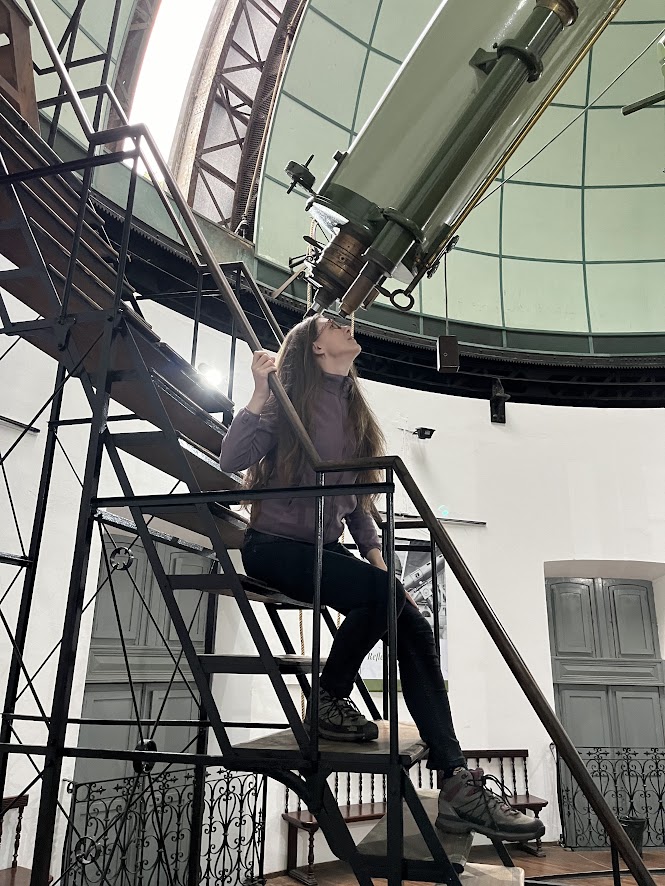
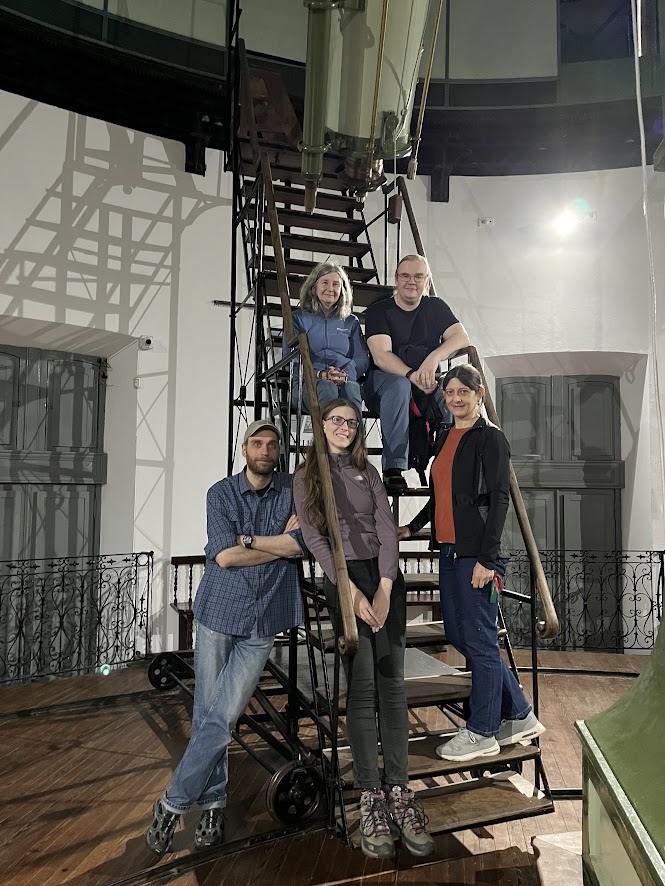
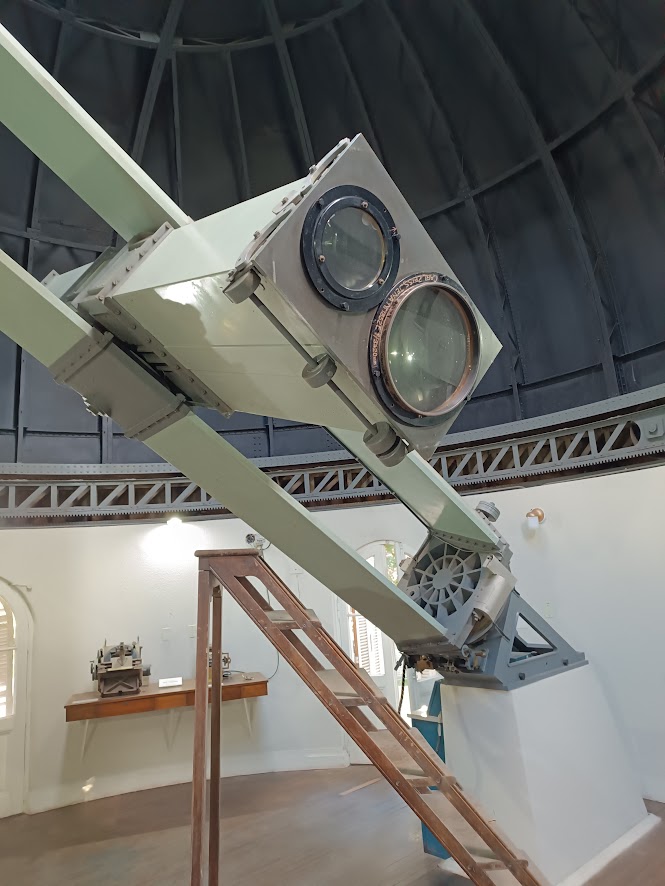
This year we had a tour to all astronomical instruments located in UNLP area. It is enlightening to learn what devices were used to conduct research at the beginning of the 20th century; to known about some observational technics, which are still actual.
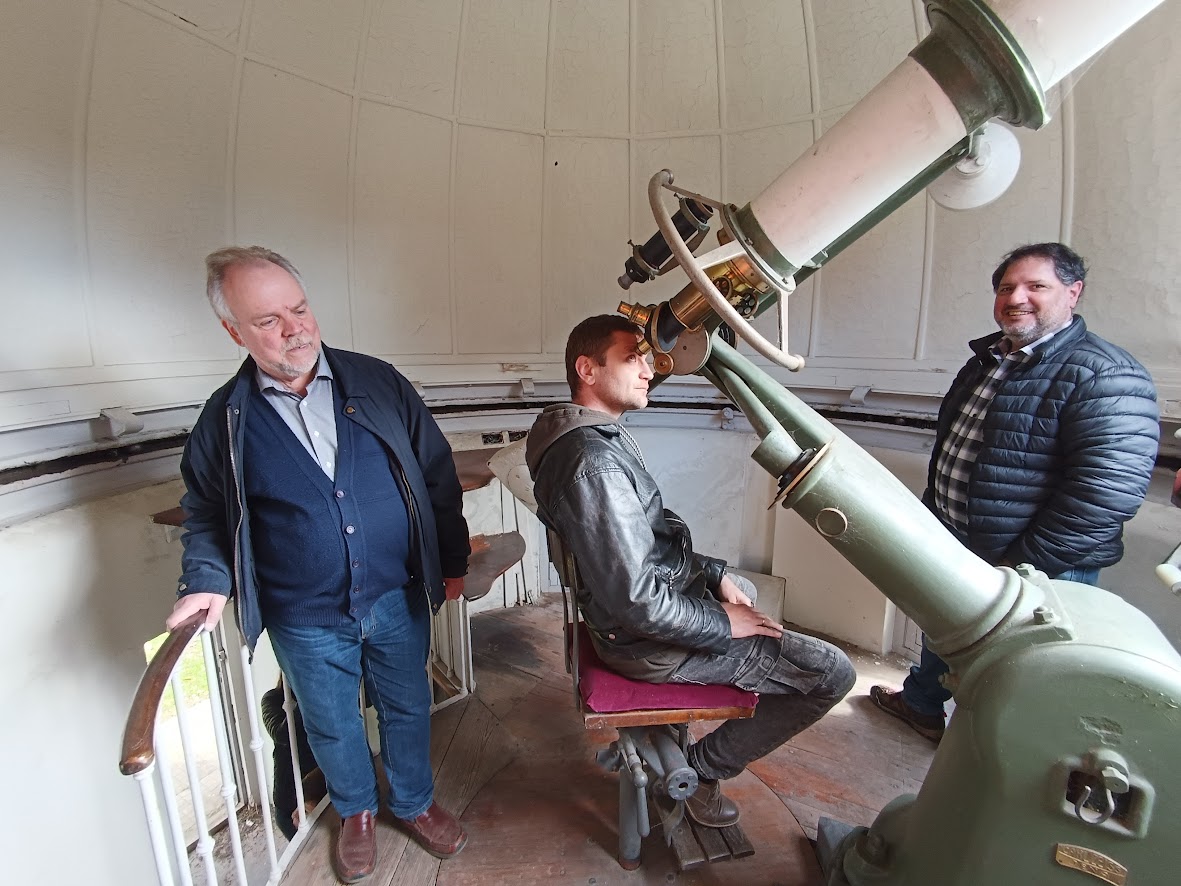
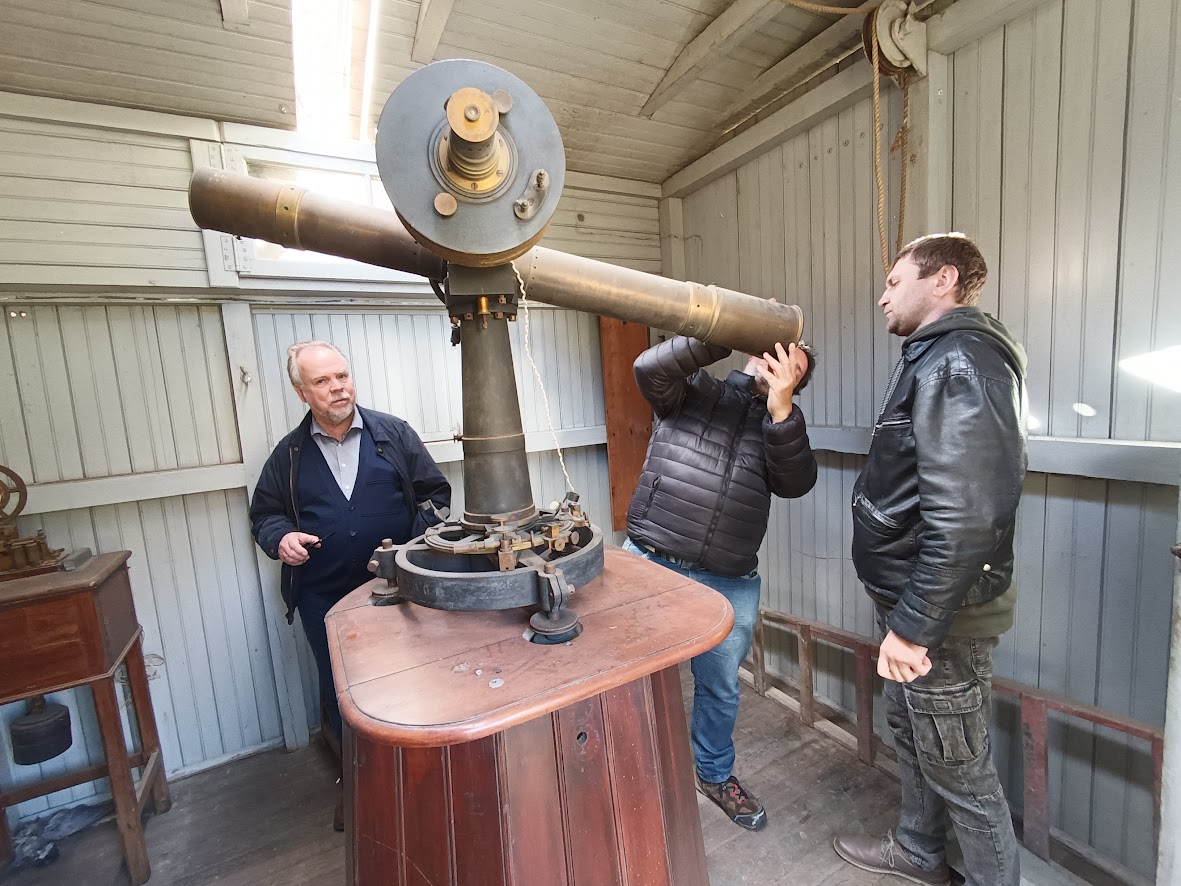
Unfortunately, my visit to UNLP overlapped with the review of observation proposals and the final editing of my master student's thesis, which took up some of my time. As a result, I feel the effectiveness of this trip was somewhat limited. However, I am determined to make the most of my next visit during the OCEANS project, a new Marie-Curie Staff Exchange project.
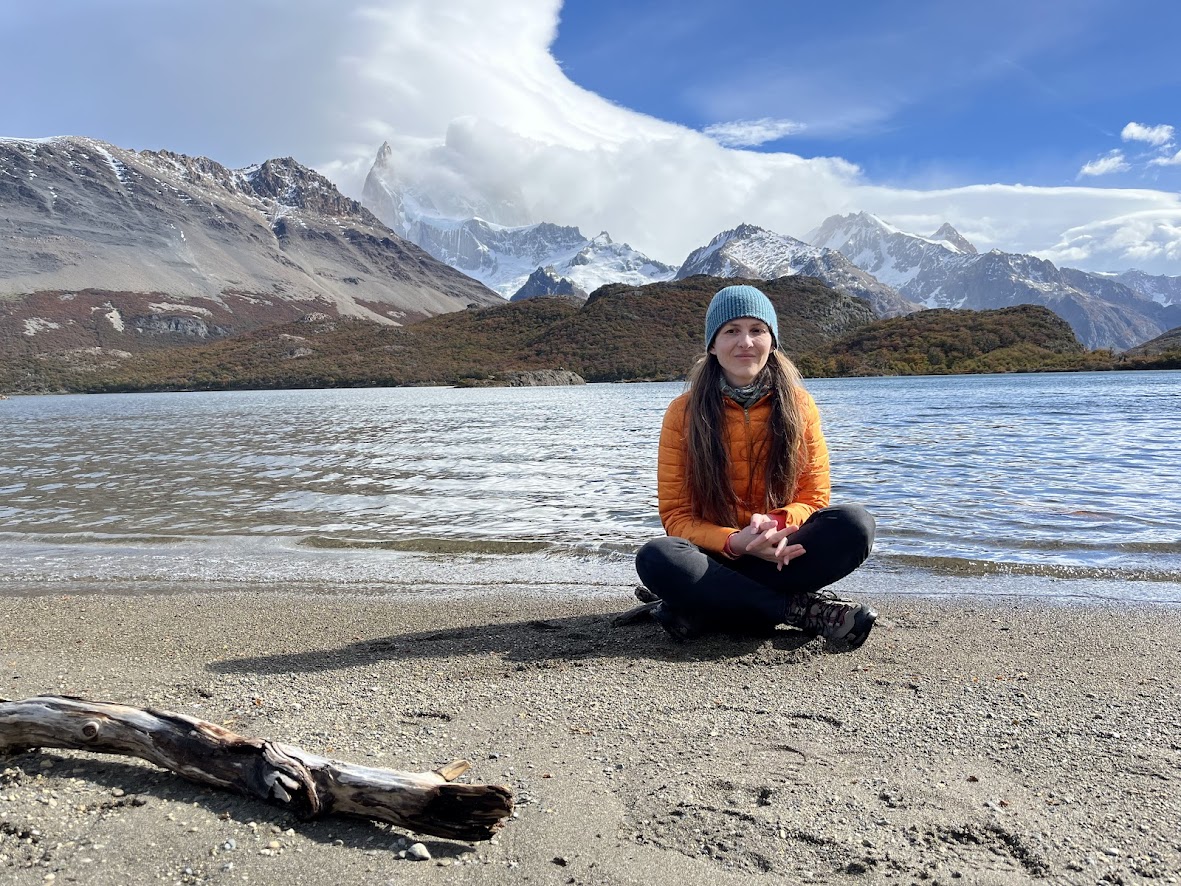
A short vacation before the secondment allowed me to visit El Calafate and Bariloche, where I once again admired the beauty of Argentina. I am thankful to Lydia, Andrea, María, Roberto, Lorena, Matias, Aldana, Yael, Jorge and other colleagues for a warm hospitality in La Plata.
This was my second visit to Universidad Nacional de La Plata in the frame of POEMS. This was a busy time as several colleagues from ASU and UTARTU involved in POEMS visited the UNLP for a period of overlap.
During my stay, I was involved in a number of scientific projects with my Argentinian colleagues. I was instructing Paula Marchiano in the modeling of near-infrared spectra. Main focus was on the peculiar Galactic B[e] star HD 327083. This object is a binary system consisting of a late-type giant filling its Roche-lobe and a B-type star embedded in a dense rotating disk occulting the star completely. The system is surrounded by a Keplerian ring of molecular gas, giving raise to intense CO band emission. Together with Lydia Cidale we also investigated optical spectra taken over the binary orbital period and identified temperature changes and a deformation of the late-type star due to tidal interactions. The results from the study are close to submission and also comprise a significant chapter in the PhD thesis of Paula. After that, we started to analyse the near-infrared spectra of the peculiar symbiotic star BI Cru, the only oject of this class with molecular band emission.
With Maria Laura Arias I was inspecting the pool of near-infrared data of a diversity of evolved massive stars in different galaxies that she and Andrea Torres have been collecting over the course of POEMS using different facilities attached to the 8.1-m telescopes at Gemini North and South. The near-infrared regime provides valuable complementary information about the stars and their circumstellaar environment and helps to resolve ambiguities in their classification. We have modeled the spectra of 7 objects located in M31 and M33 and refined their classification, and Maria discovered emission from hot water vapor from an object in the Small Magellanic Cloud that was previously classified as B[e] supergiant. This discovery is so far unique in this type of objects. Our results have been prepared as poster presentations for the POEMS final conference that will take place in Rio de Janeiro, Brazil.
Furthermore, I had many interesting and fruitful discussions with Lydia Cidale on pulsations in B-type supergiants. Several of our PhD students work on a diversity of aspects in this rather new field in massive star research. We discussed the observational imprints of diverse pulsation modes, physical interpretation of light curve signals, and possible reasons for the seen descrepancy between theoretically computed model predictions and observations.
Besides all this, I have attended the MEP group meeting on April 12, during which three of the Argentinian PhD students presented the status of their current work, the seminar by our colleague Michalis Kourniotis from ASU on April 22 on the Variability of Galactic blue supergiants observed with TESS, and the presentation by our colleague Tõnis Eenmäe from UTARTU on May 10 about the preparation of data for the POEMS database.
During the weekends, I enjoyed walking through the different parks of La Plata with its impressive old trees, observing the diversity of birds, and noticing the change of season.
In addition, during my secondment, we were informed by the European Commission that our proposal for a new Marie-Curie Staff Exchange project had been accepted and, as PI of this new project, I had to invest some time in preparing the documents for the new Grant Agreement. We are all looking forward to this new project, which is scheduled to start on January 1, 2025, and its challenges.
I visited the University of Valparaiso from 1 April to 23 June 2024. During this time, I worked on three different projects. The first one was devoted to understanding and solving the set of pulsating equations to obtain non-adiabatic modes for highly non-adiabatic envelopes. I worked on this project with Rodrigo Meneses. We tested different variable changes and numerical recipes to retrieve and solve the set of non-adiabatic (radial and non-radial) equations under different physics assumptions. We have also tested the implementation of a spectral decomposition on the main functions for the equation describing nonadiabatic radial equations. We explore the implementation of the Riccati method to decompose the matrices combined with the spectral decomposition and seems to provide advantages for obtaining a first approximation of the main function describing the eigenfunction. Next step is to study the stability of the obtained systems for stars with dense small cores and highly non-adiabatic extended envelopes.
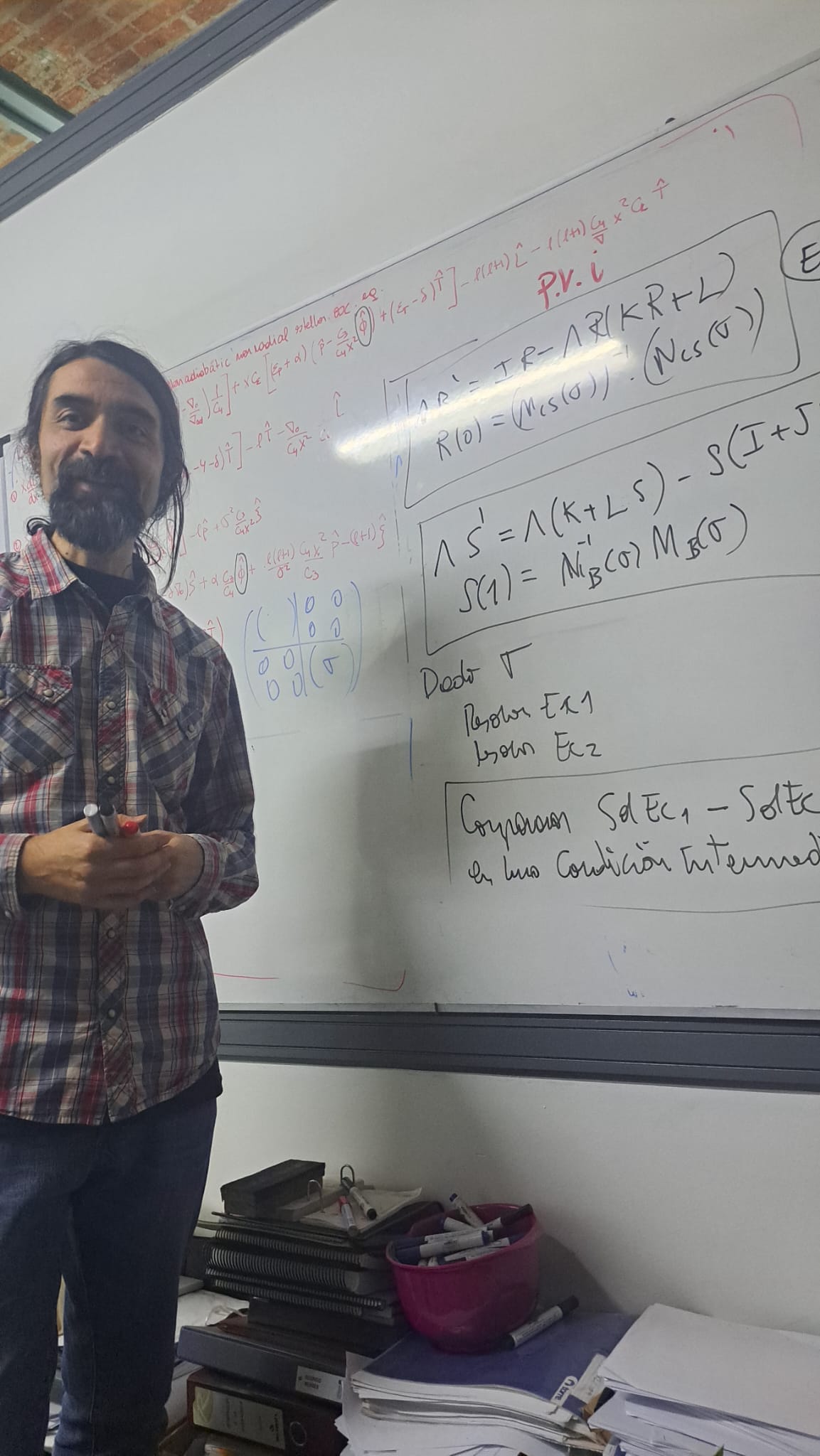
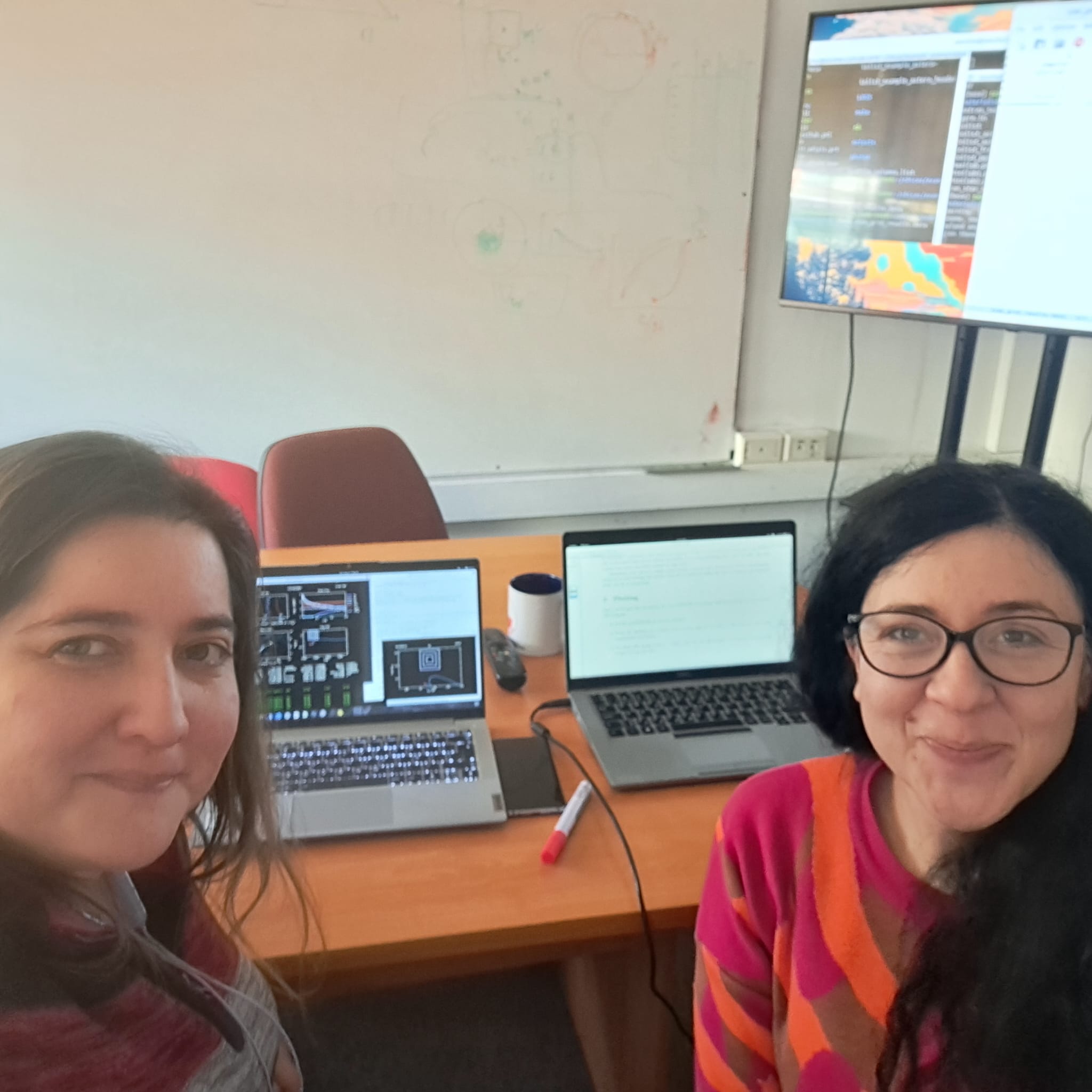
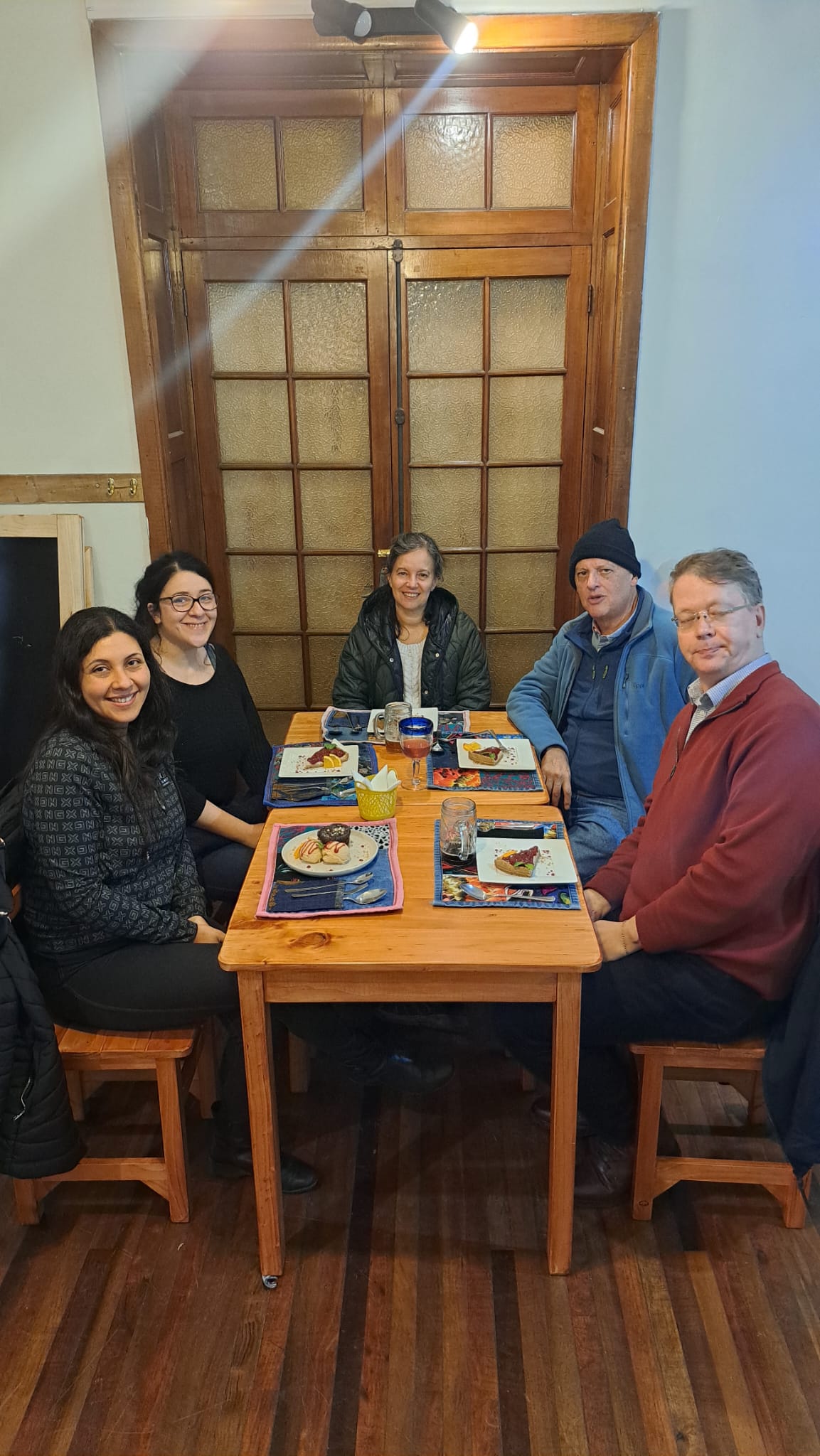
I have also explored the incidence of different mass loss recipes in the chemical surface abundances and pulsations at different evolutionary stages, finding similar values for the ratios N/O and N/C at the post and pre-RSG stage when low efficiencies for different mass loss recipes are considered, difficulting the identification of the BSG evolutionary stage based on this quantities. The discussions held with Dr. Curé and his group were extremely useful, furthermore, last week of my secondment, Felipe Figueroa obtained a new recipe for massive stars considering measurements of C, N and O and I’m currently working to implement it in MESA.
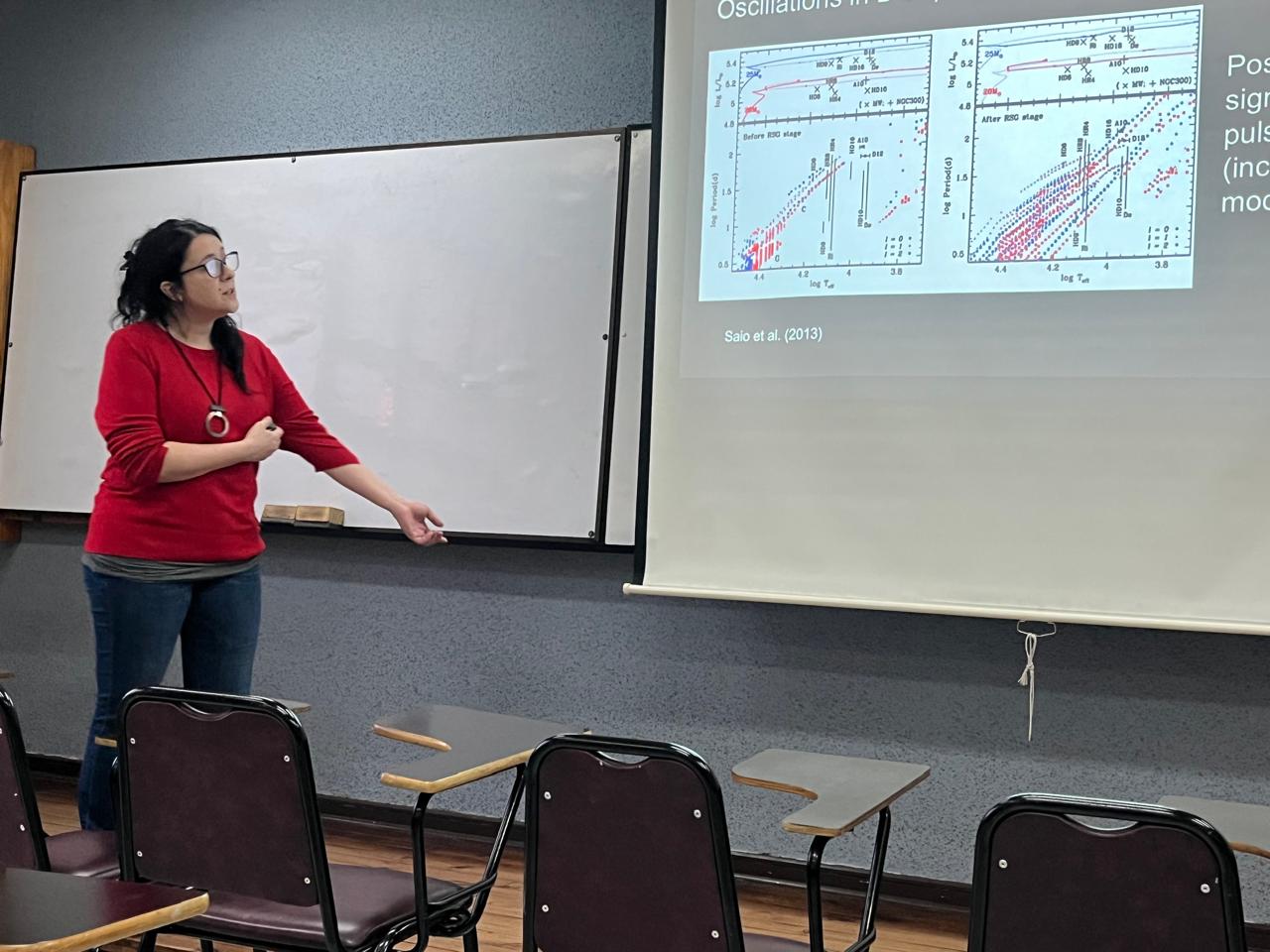
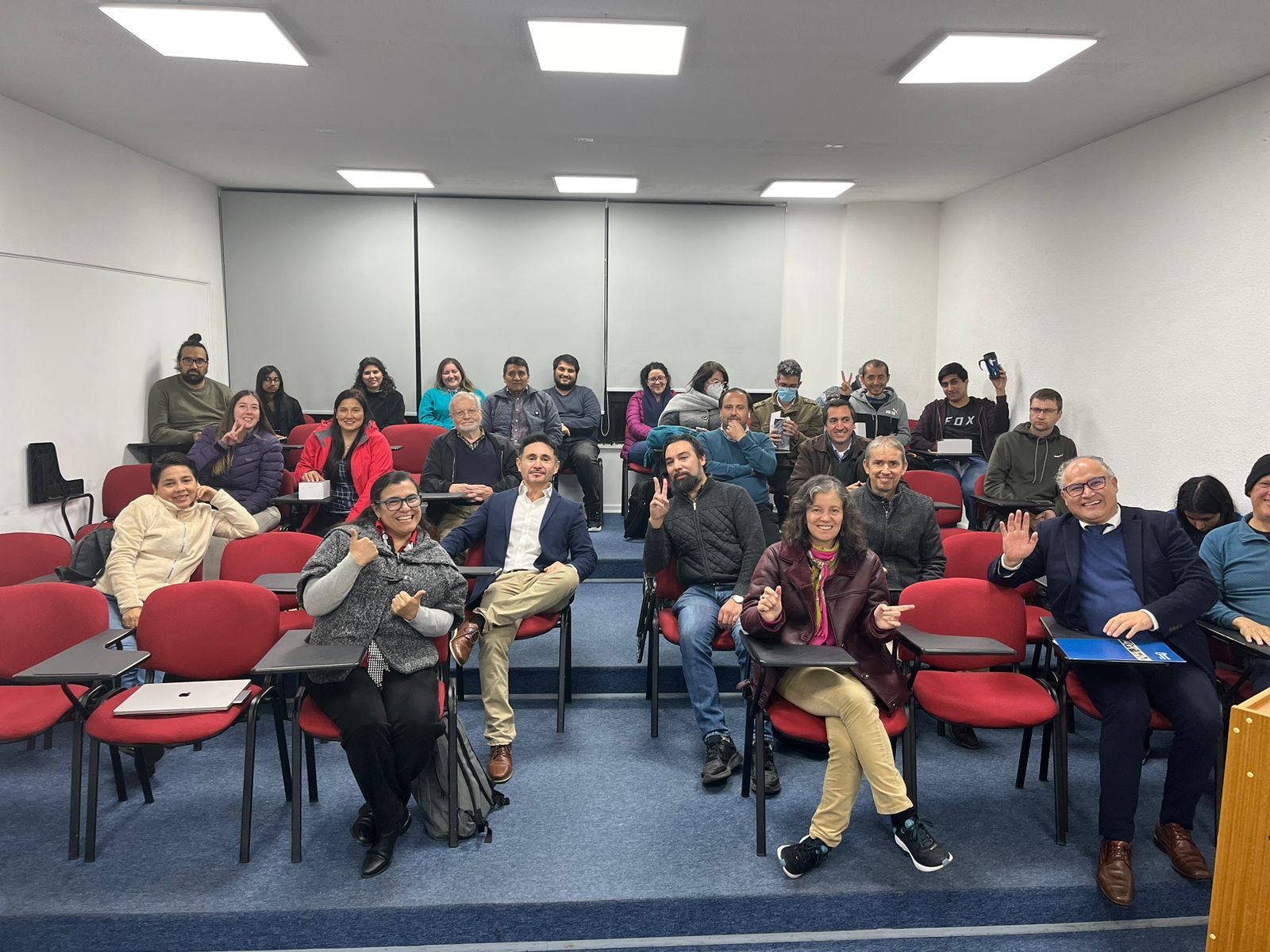
Finally, we explored the potential of the Ensemble Empirical Mode Decomposition to retrieve information from light curves, with Dr. Christen and S. Guha. We found out this method is extremely useful for analyzing different ranges of the Fourier spectra and our results were presented in a poster at the POEMS Conference in Rio. Currently, we are analyzing its potential for studying red noise combined with autoregressive methods.
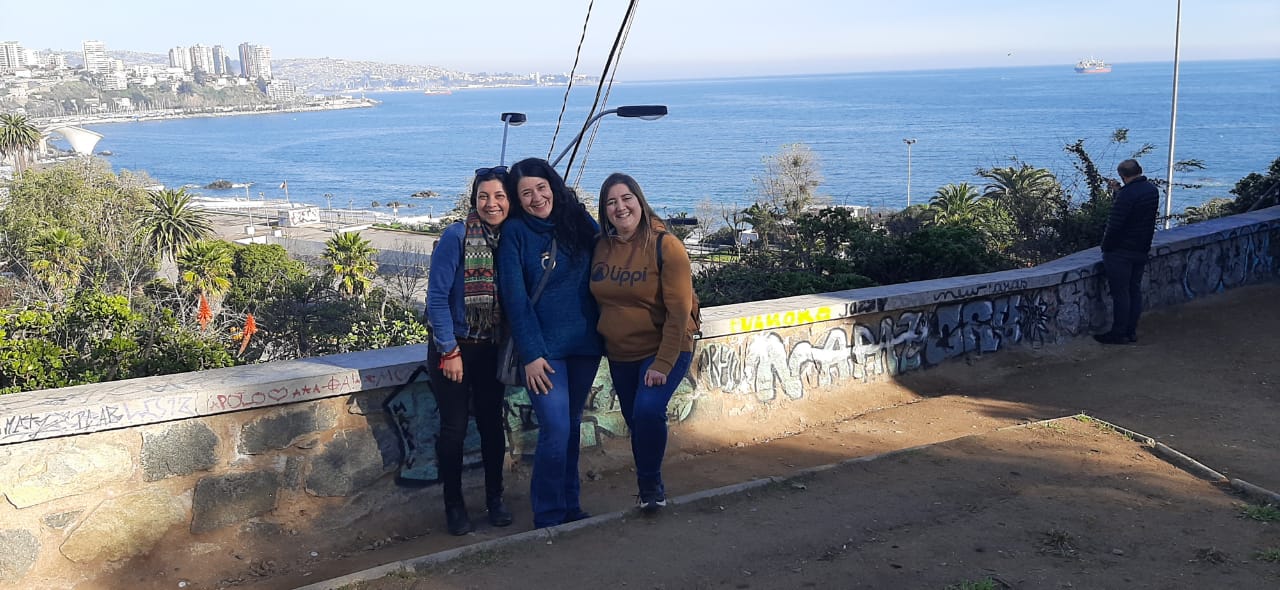
During these three months, I also attended weekly group meetings, I gave two seminars at IFA and UDEUV and a crash course on MESA to phD students from IFA. I highly appreciate the warm hospitality of my colleagues. We visited the Dunes in Valparaiso, interesting restaurants and I enjoyed to the fullest the vivid environment of the University of Valparaiso. I’m looking forward to meeting them again!
During the secondment to University of La Plata, Argentina, I worked again primarily with Lydia Cidale. My main activities were continuation of adding data from University of La Plata into the database of observational spectroscopic data and handling different issues with diverse data that I continued to encounter. Few new developments were started to also add processed data and references to external data. Few simple tools with graphical user interfaces were planned and preliminary tests were done. Also I created a tool for UNLP people to retrieve the data in database server.
We had few discussions with Lydia Cidale regarding their 2-meter telescope instruments and data acquisition software at CASLEO observatory.
During the secondment I organized a hands-on online seminar about observational database with Azerbaijan visitors in Tartu Observatory. Also, similar, but more in-depth seminar was carried out at La Plata, most of the working group there and several visitors from POEMS project participated there.
I visited the Tartu Observatory, University of Tartu in Estonia in the framework of the POEMS project for the second time. My secondment took place between March 17th and April 16th, 2024. The primary objective of my visit was to gain proficiency in the effective use of astronomical databases.
Initially, we discussed general guidelines for using astronomical databases. Then, Tõnis Eenmäe from the Department of Stellar Physics introduced us to a database that will be installed for internal use at the Shamakhy Astrophysical Observatory. Tõnis Eenmäe provided an overview of the database and several hands-on instructions on preparing observational data for integration into the database.
I also engaged in discussions with Anna Aret from the Department of Stellar Physics regarding the investigation of massive X-ray sources and the observations of these objects at both the Tartu Observatory and the Shamakhy Astrophysical Observatory.
During my visit, I had the opportunity to participate in the "2nd Scientific Conference of Tartu Observatory" held at the observatory. We were informed about the various departments within the Tartu Observatory and their ongoing work.


Additionally, I gave a seminar titled "Investigation of High Mass X-Ray Binaries" and regularly participated in astroseminars held at Tartu Observatory.



During this one month, I explored various places of interest in Estonia each weekend. In Tartu, I visited historical monuments and churches. During my first visit to Estonia, I had limited time to explore Tallinn. Therefore, I dedicated two days to visit Tallinn on this trip, and the city left a lasting impression on me with its unique architecture and memorable experiences.



Finally, I would like to extend my gratitude to everyone who contributed to the success of this remarkable project. Being part of this project has been an invaluable opportunity for me as a doctoral student. It has truly been a pleasure for me.
I collaborated with the Tartu Observatory team, including Prof. Anna Aret and Dr. Tõnis Eenmäe. During this time, I developed my skills in data reduction using IRAF under Linux. I conducted research on processing raw FITS files, updating their headers, and inserting the data into the POEMS database. The team was incredibly patient and dedicated much time to explaining everything. Although Dr. Tõnis was in Argentina, he scheduled a Zoom appointment to guide me and my colleague Aytaj step-by-step. I participated in weekly seminars and attended the "Second Scientific Conference of the Tartu Observatory." I gained a wealth of new knowledge and thoroughly enjoyed listening to the scientific discussions.
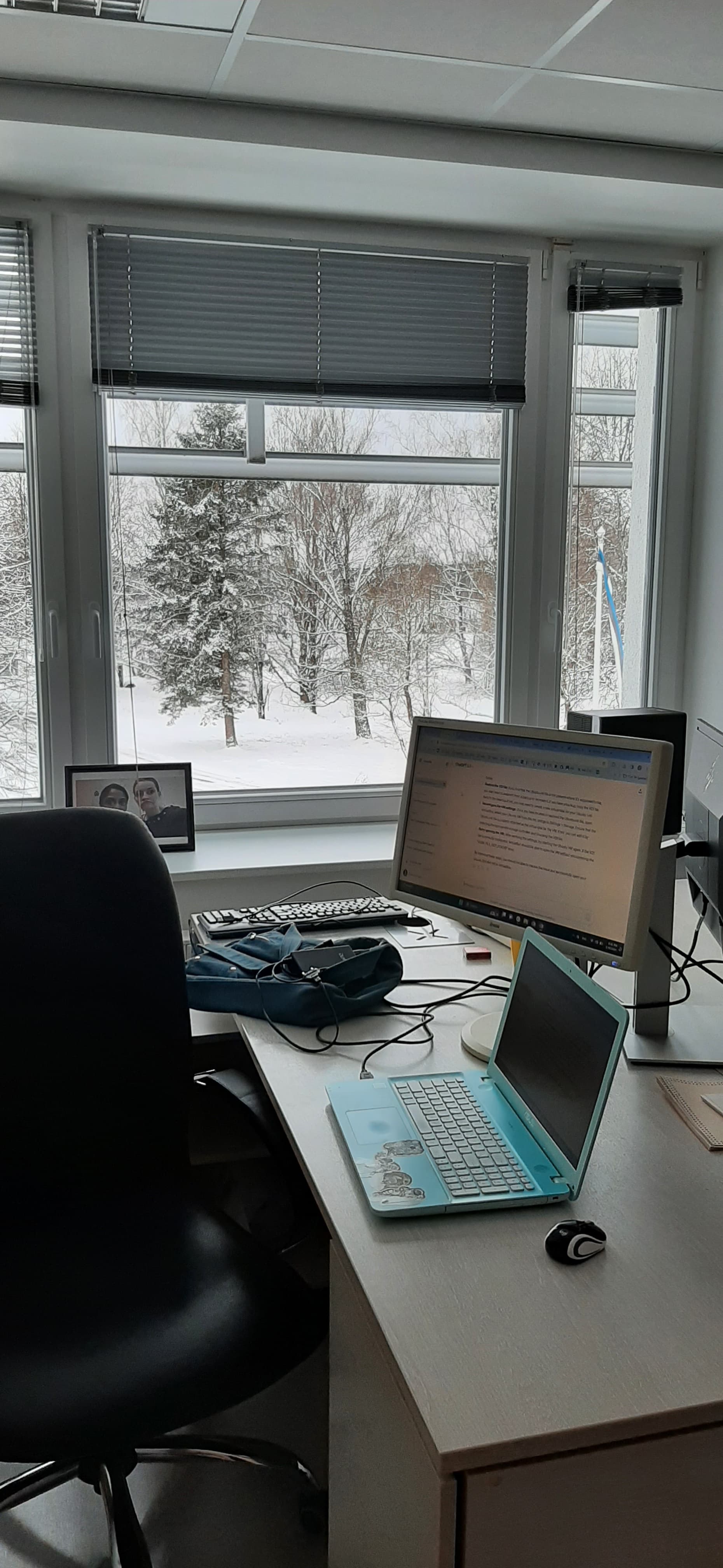
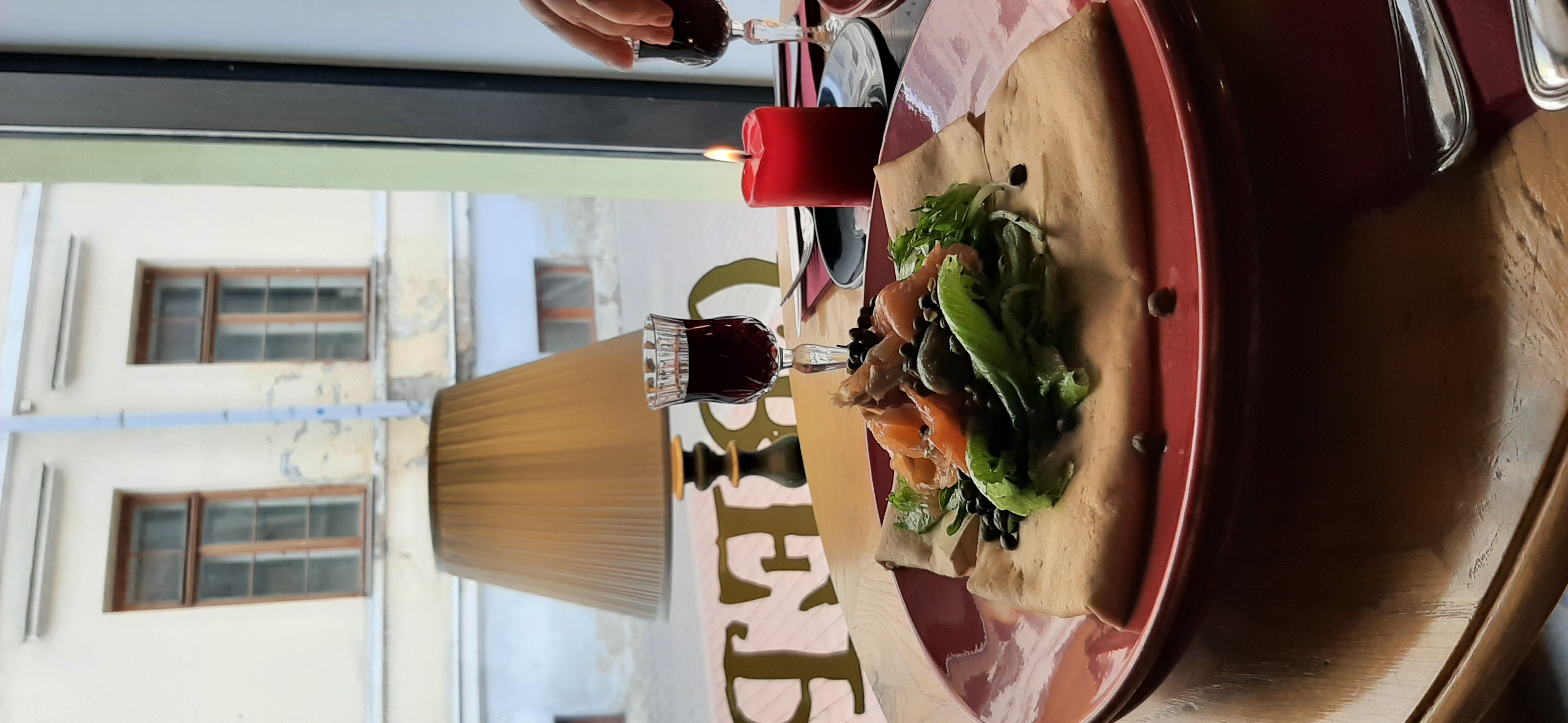
On our first day, Prof. Anna invited us to dinner, where I enjoyed Asian cuisine, which I loved. On the first morning, I woke up to a snowy landscape, and the view from the window was breathtaking. Despite the cold, walking in the snow was definitely worth it. I visited Tartu, the town center, and Elva, where I admired the historical, colorful buildings and huge cathedrals. My Estonian colleague, dear Veronika, gave us a wonderful guided tour of Tartu, explaining the significance of landmarks like the "Angel Bridge" and "Devil Bridge." We also enjoyed delicious crepes with salmon and ice cream, which I won't forget. Another day, the Tartu team invited me to dinner. I loved the meals, the ambiance, and at most our conversations. It was exciting to learn that Tartu is the 2024 European Capital of Culture.
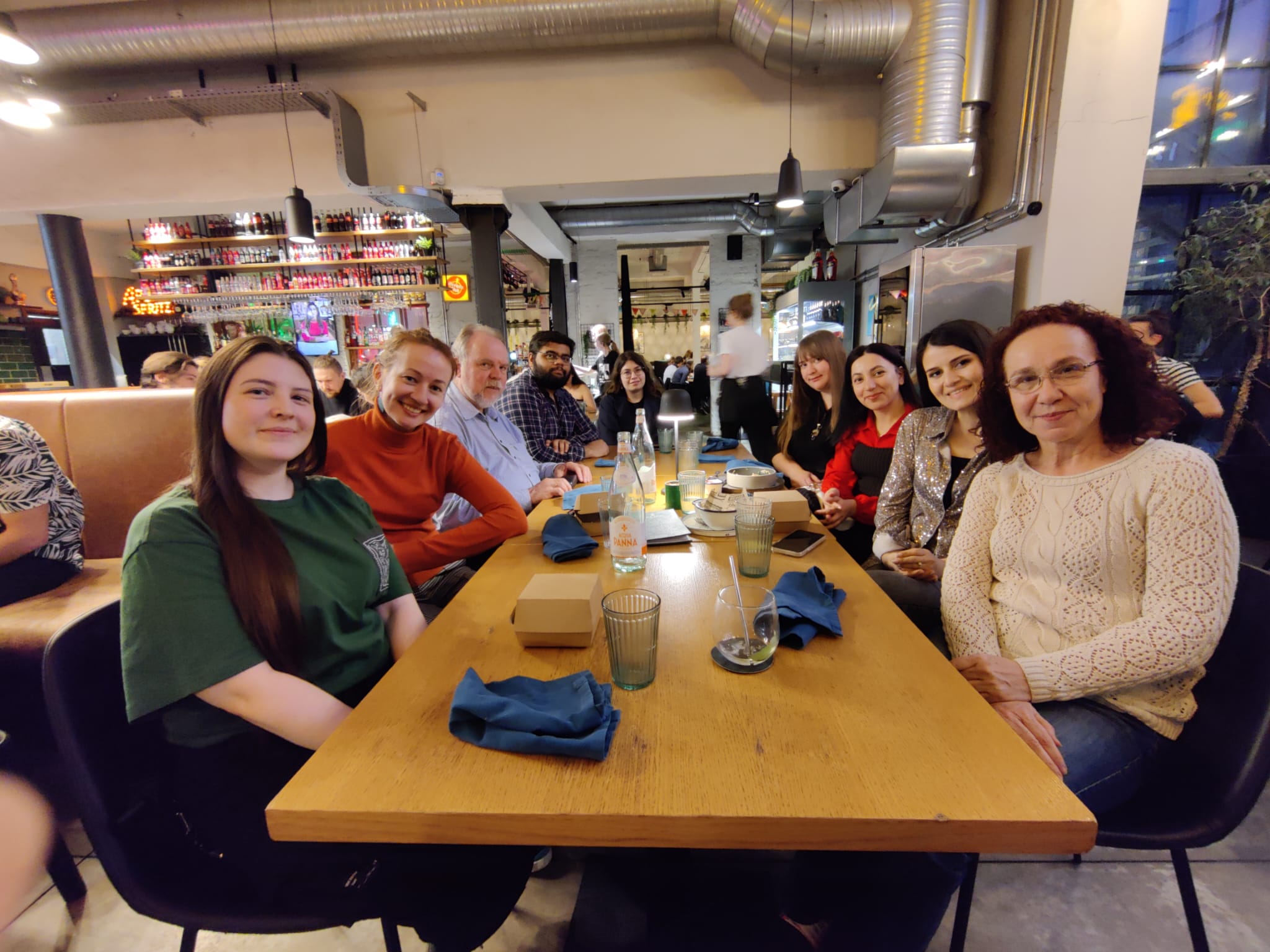
I spent my last weekend in Old Tallinn, where I truly appreciated the historical spirit of the city. I visited Alexander Nevsky Cathedral, the Church of the Holy Spirit, St. Simeon's and St. Anne's Church, Tallinn Town Hall, Great Coastal Gate, St. Nicholas Church, and so on, of course, the shopping mall.
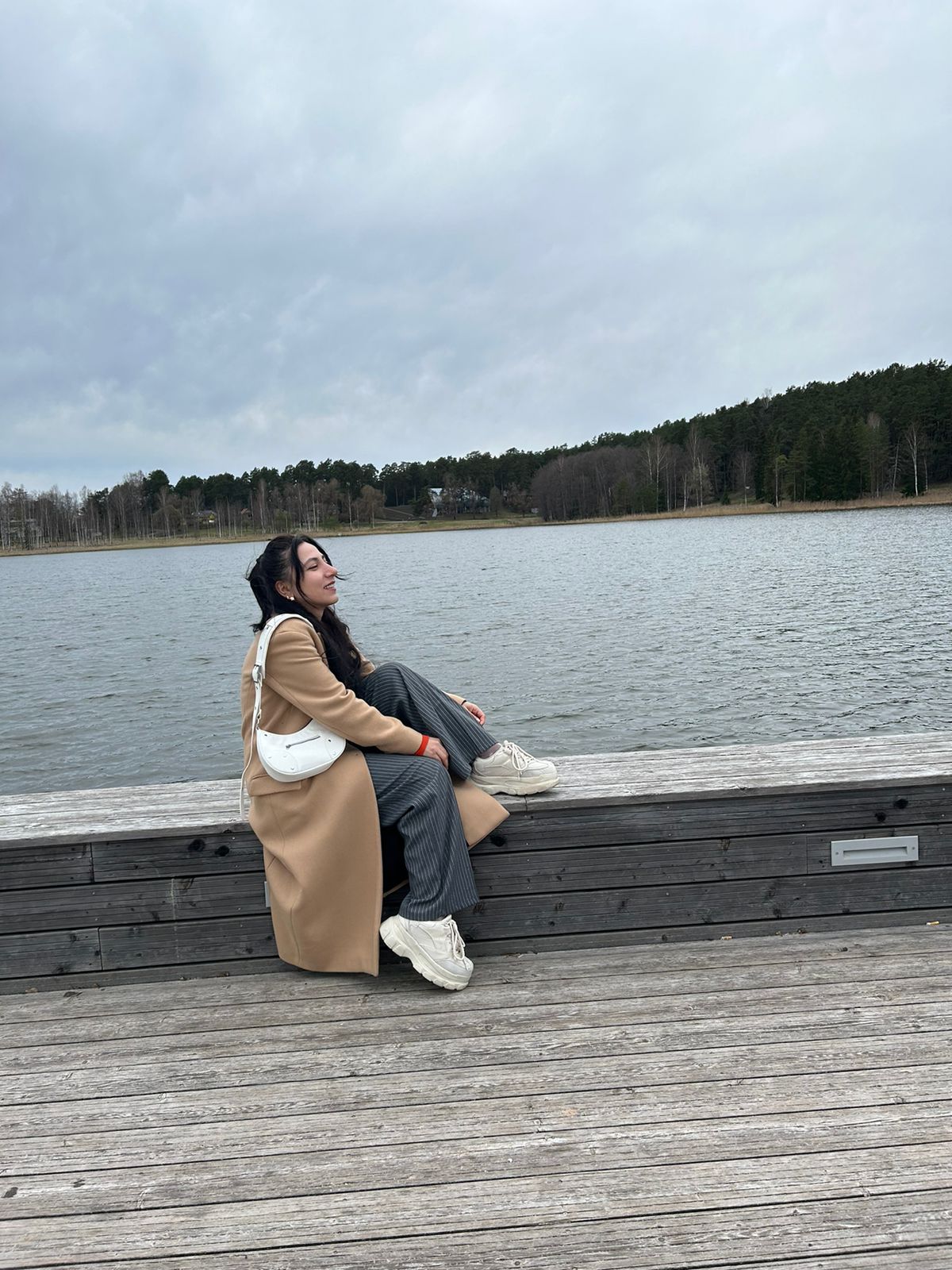
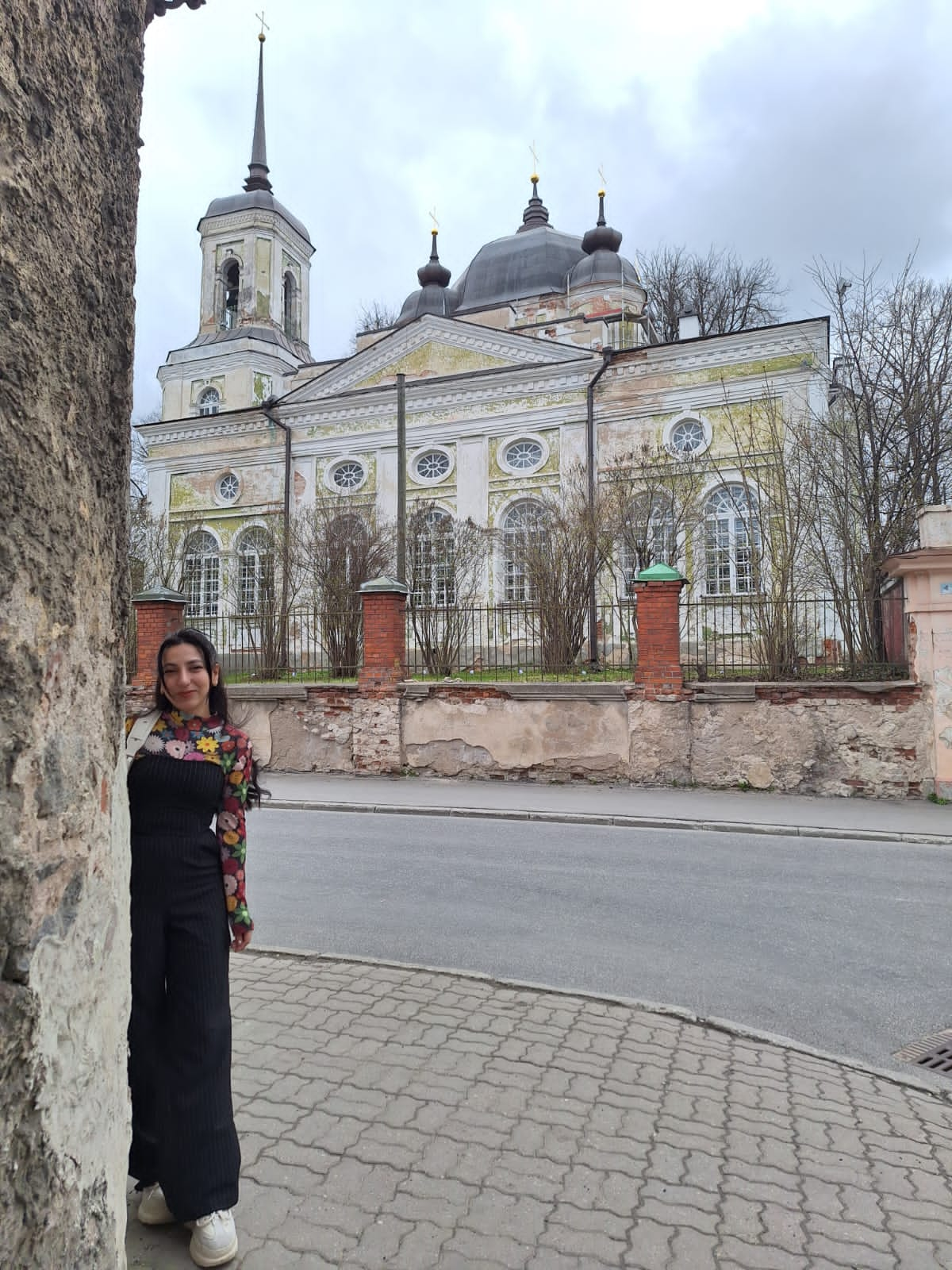
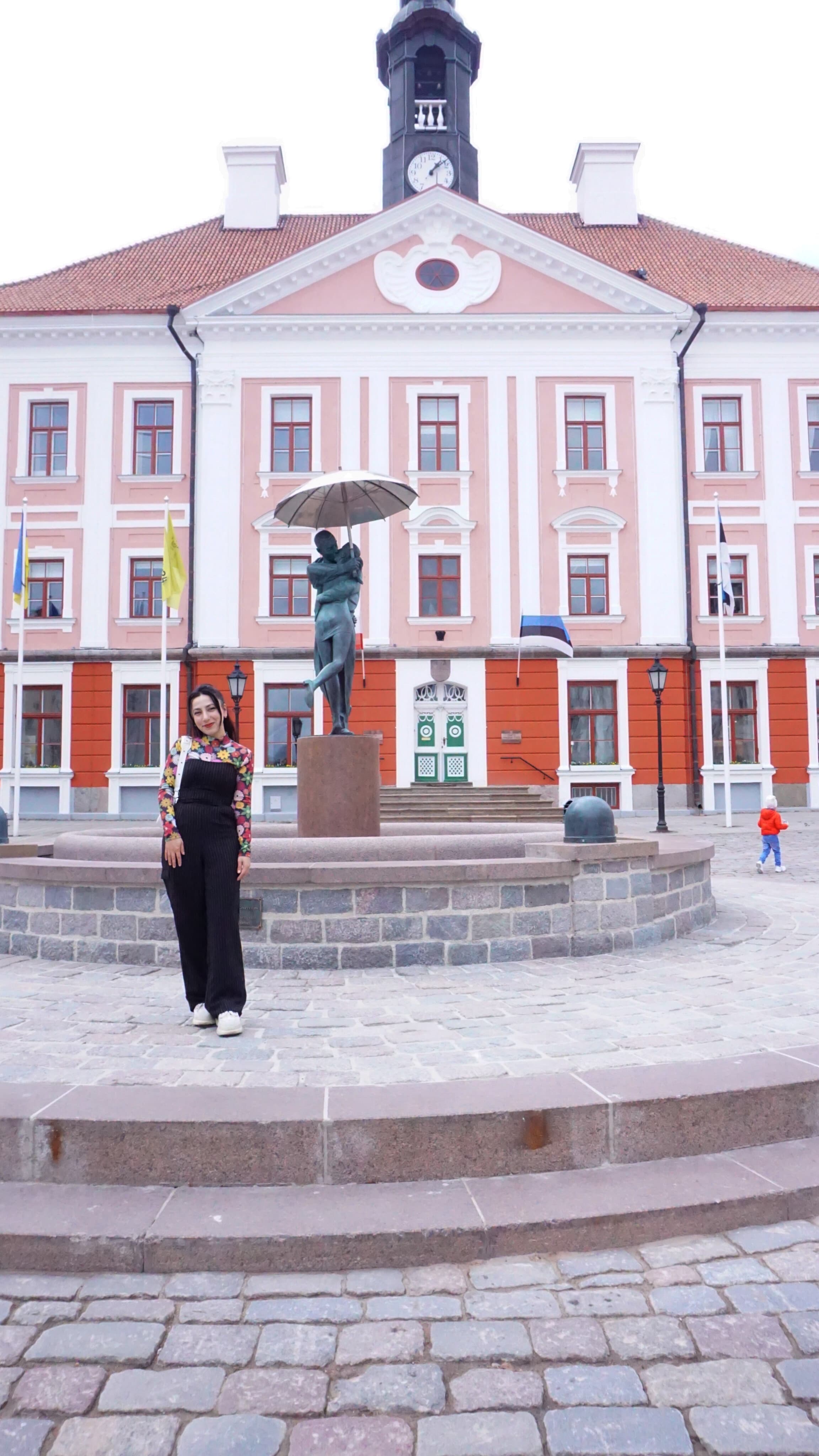
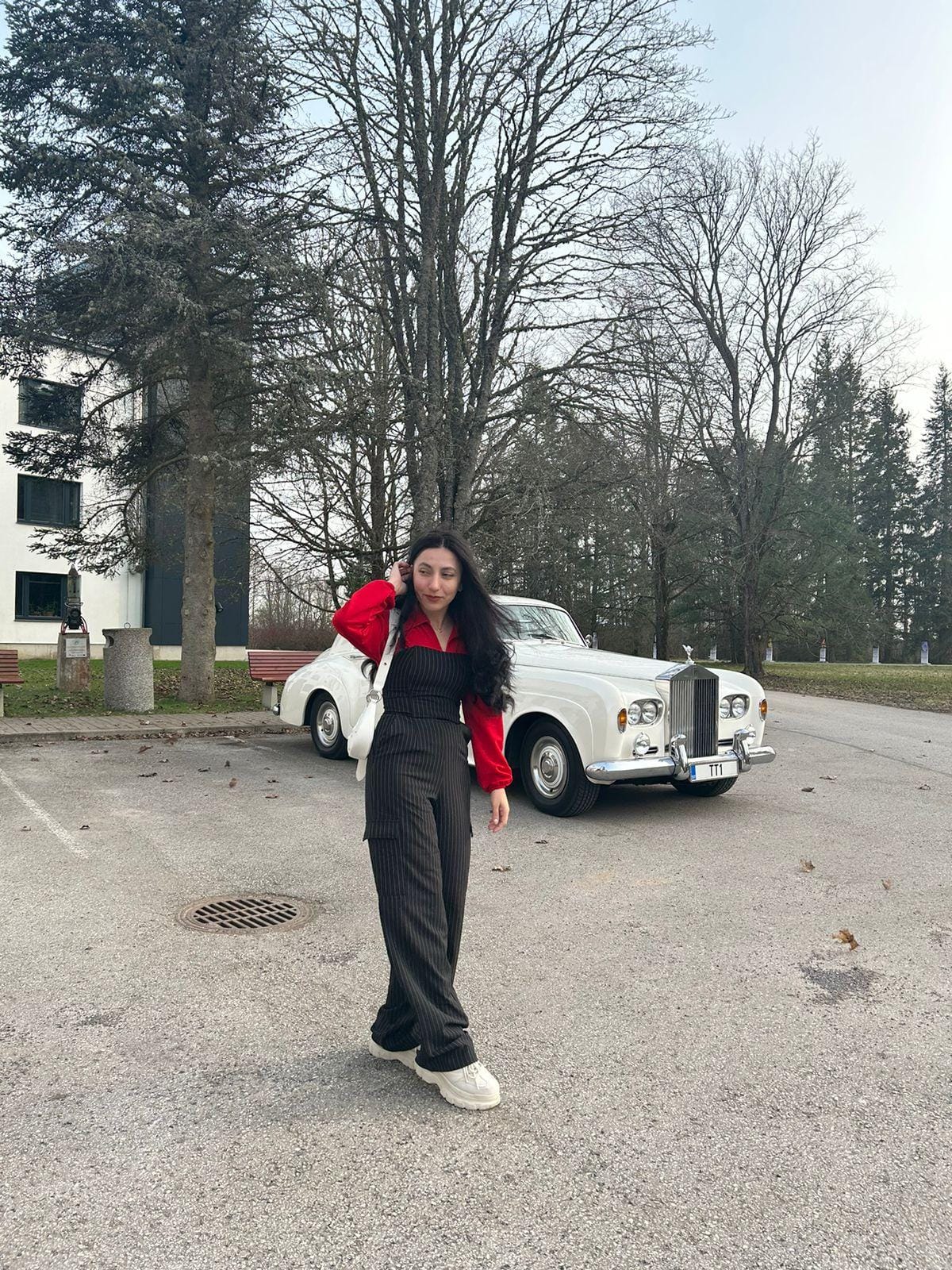
Thank you for the opportunity to enhance my research skills and contribute to the POEMS project.
During my one-month secondment at Universidad Mayor, I had the opportunity to collaborate with Dr. Ignacio Araya on research related to astrospheres, which are dynamic interaction regions between stellar winds and the interstellar medium. The focus of my work was on learning and understanding the MHD codes CRONOS and PLUTO, which will be used to simulate these structures. The ultimate goal of the simulations is to produce synthetic sky maps that can be compared to observational data. This comparison will assist in determining stellar wind parameters, given the properties of the star and the surrounding interstellar medium.
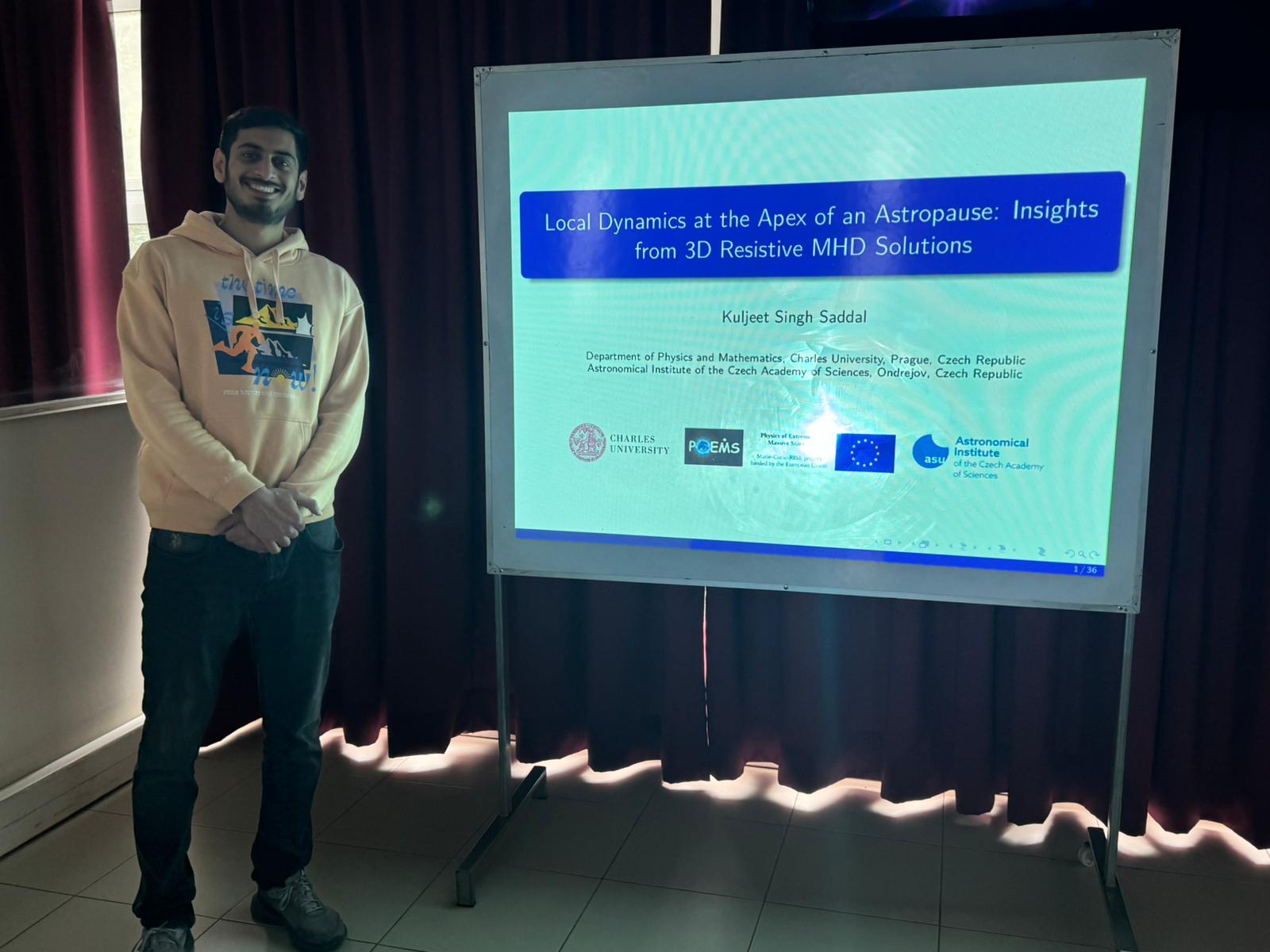
In addition to my research activities, I gave a talk titled "Local Dynamics at the Apex of an Astropause: Insights from 3D Resistive MHD Solutions" as part of Universidad Mayor's monthly seminar series. During the presentation, I discussed our work on deriving analytical solutions to the resistive MHD equations in three dimensions, specifically in a localized region near the apex of the astropause.
Overall, my secondment experience was highly productive and enriching. I gained valuable knowledge and skills that will contribute significantly to my research. I also found the city of Santiago to be a beautiful and welcoming environment, and I am grateful for the support and kindness of my colleagues during my stay.
I visited the Statistical Institute of the University of Valparaiso, Chile, from March 15th to June 14th, under the framework of the Marie-Curie Staff Exchange program POEMS. During the periods of secondment, I was working on a project, “Application of the Ensemble Empirical Mode Decomposition (EEMD) method in Astronomy”, under the supervision of Dr. Alejandra Christen.
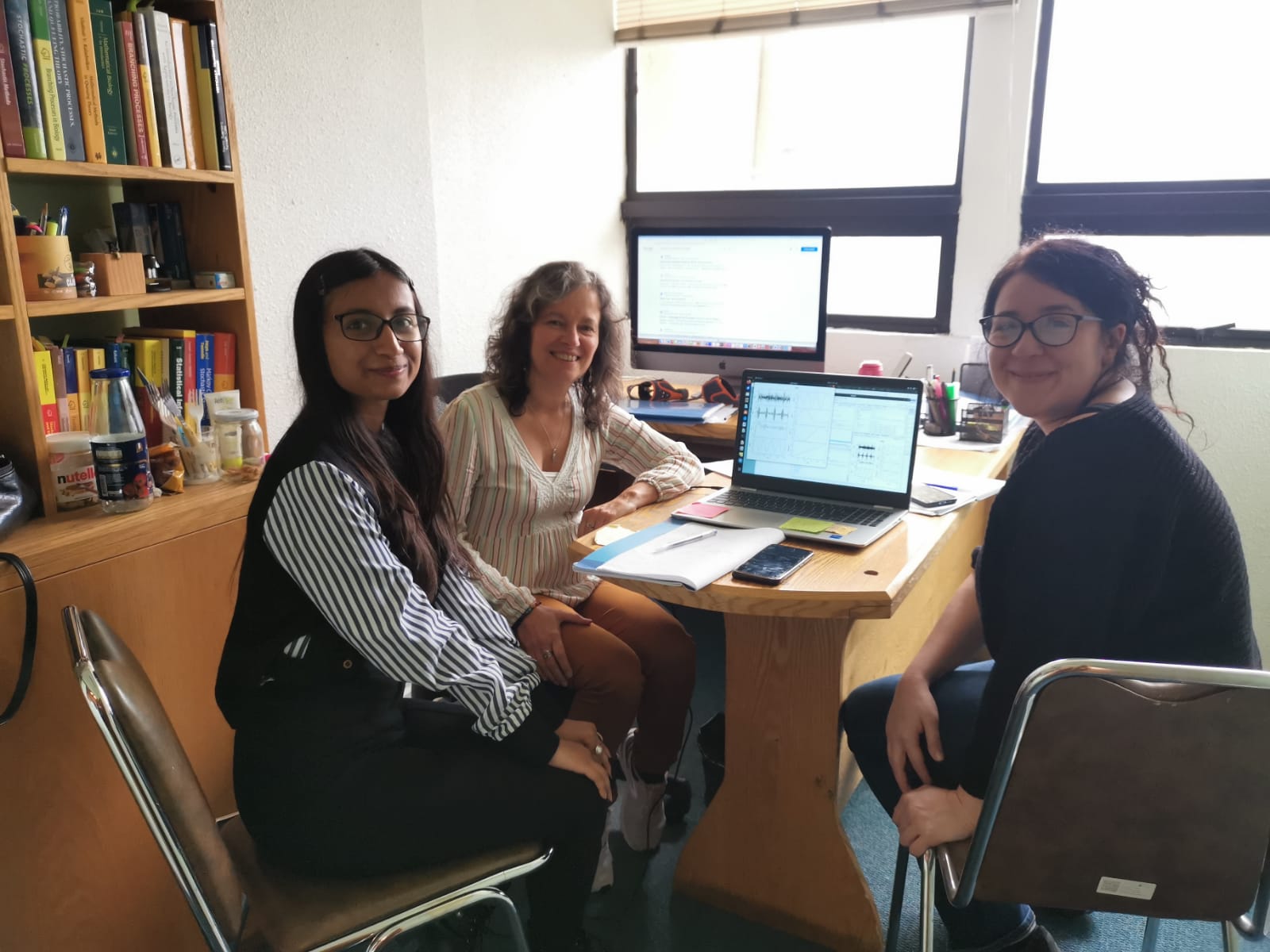
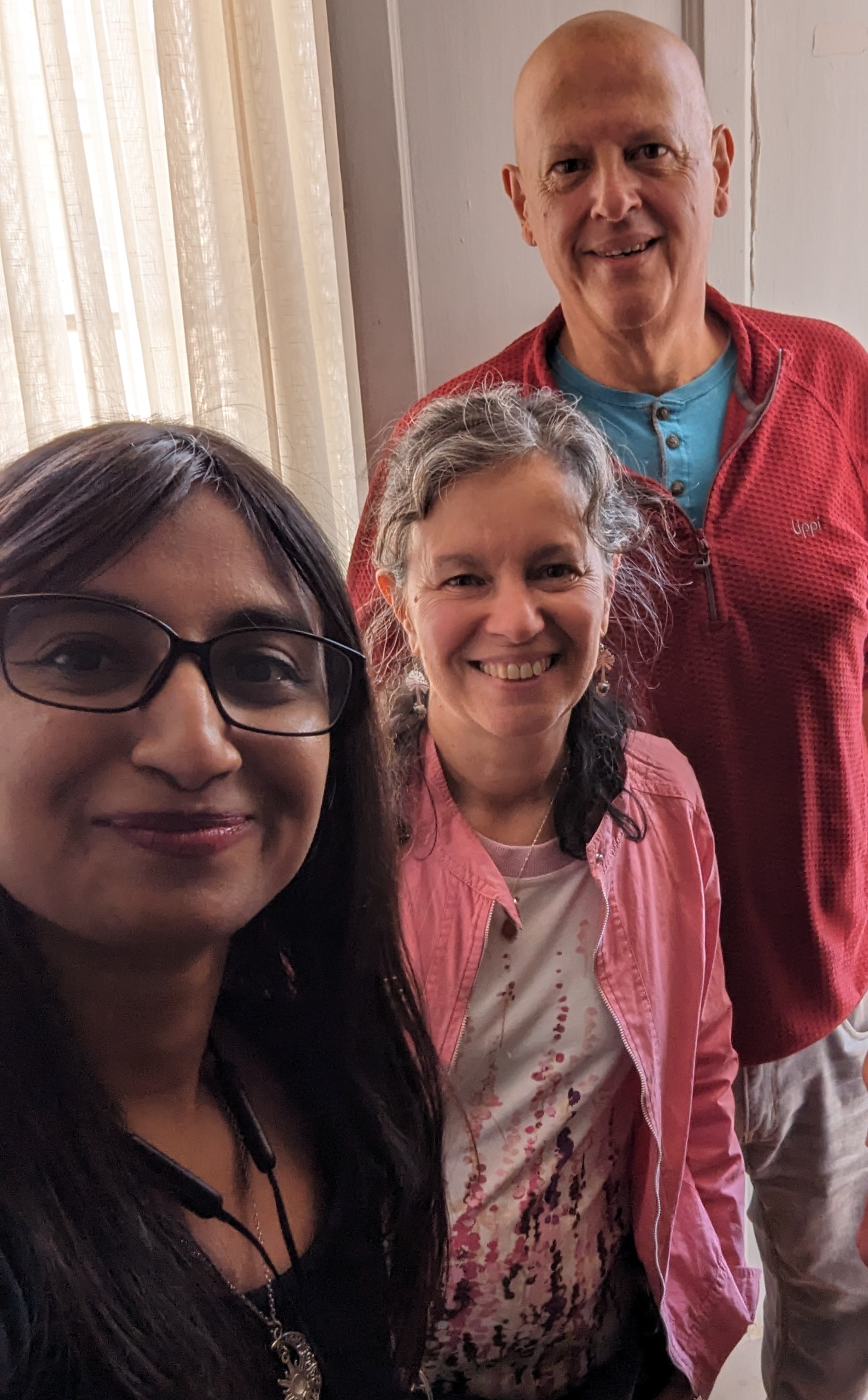
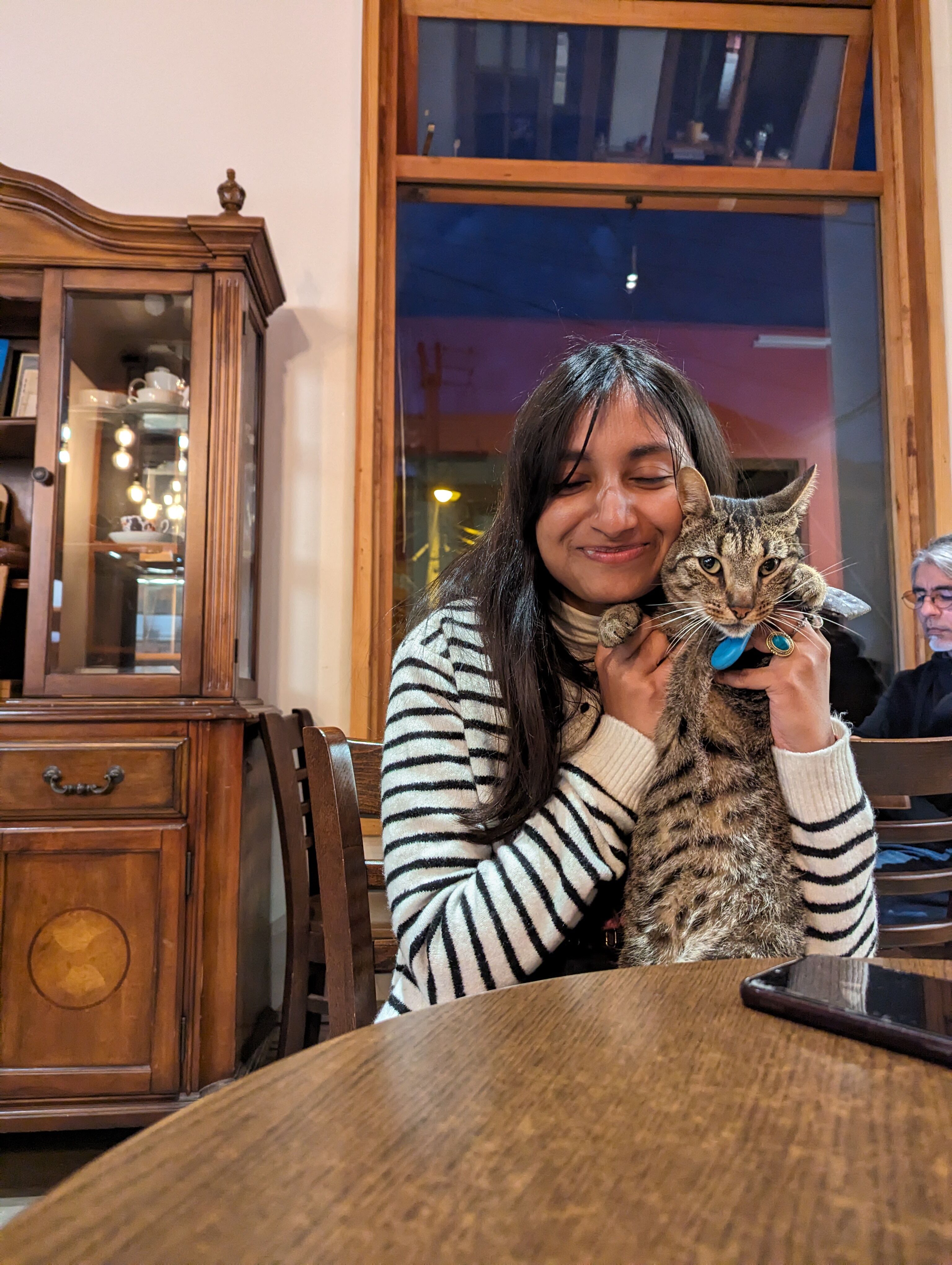
While dealing with non-linear and non-stationary signals, EEMD, a novel approach to signal analysis, has proven to be more effective than wavelet analysis or the classical Fourier method in tests. So far, this method has been used in weather science, medical science, and music studies, but we applied this mathematical tool to astronomical data. Our primary objective for this project was to develop a script to implement the algorithm of EEMD for photometric and spectroscopic time-series observations of pulsating stars. The approach of EEMD is more effective at uncovering periodicities in signals that suffer from intrinsic noise. While working on this project with Alejandra and Julieta Sanchez, we applied this mathematical tool to a main-sequence hybrid star CoRoT 102314644 and a B supergiant star HD 42087 and as a result, it is able to retrieve the frequencies with a better signal-to-noise ratio.

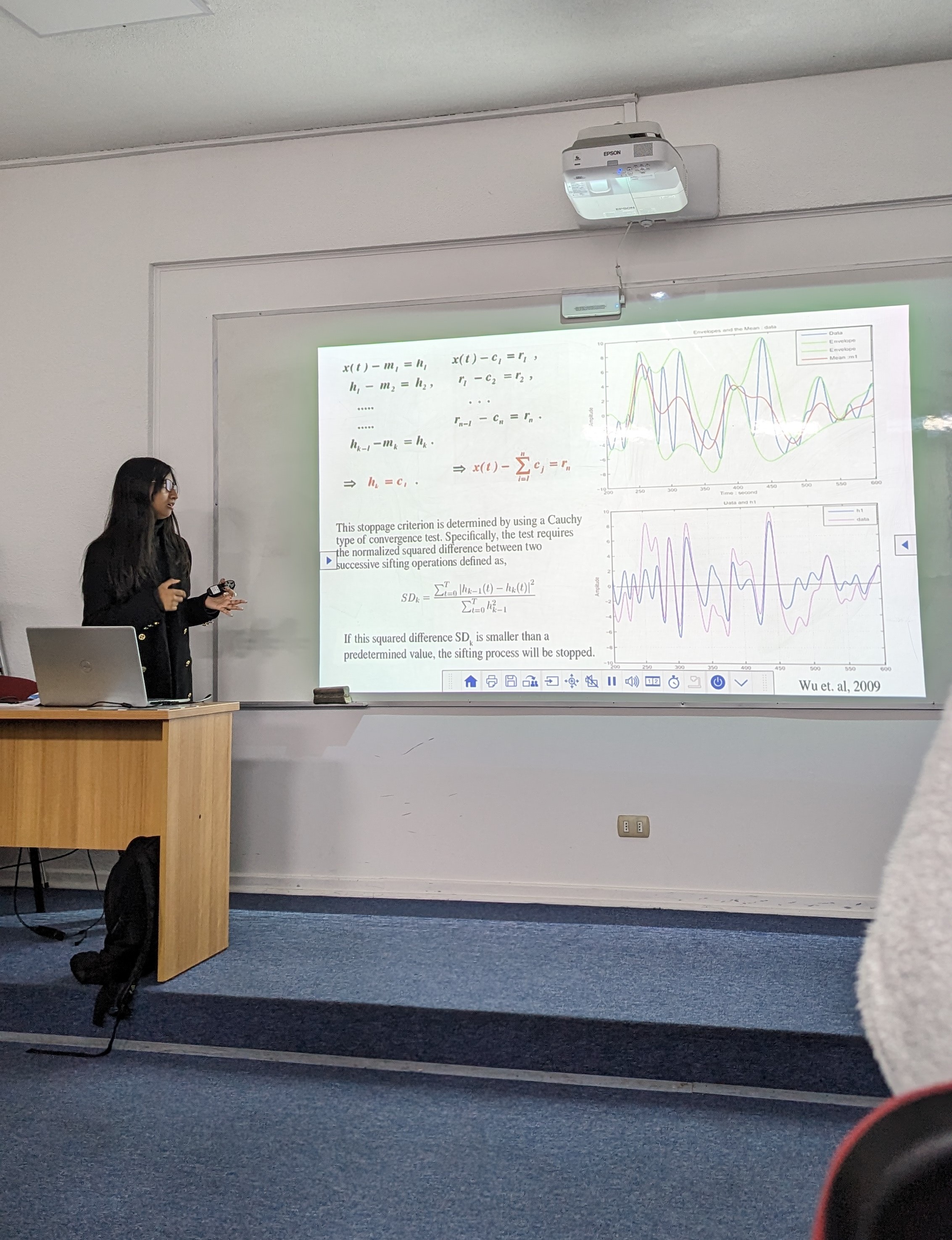
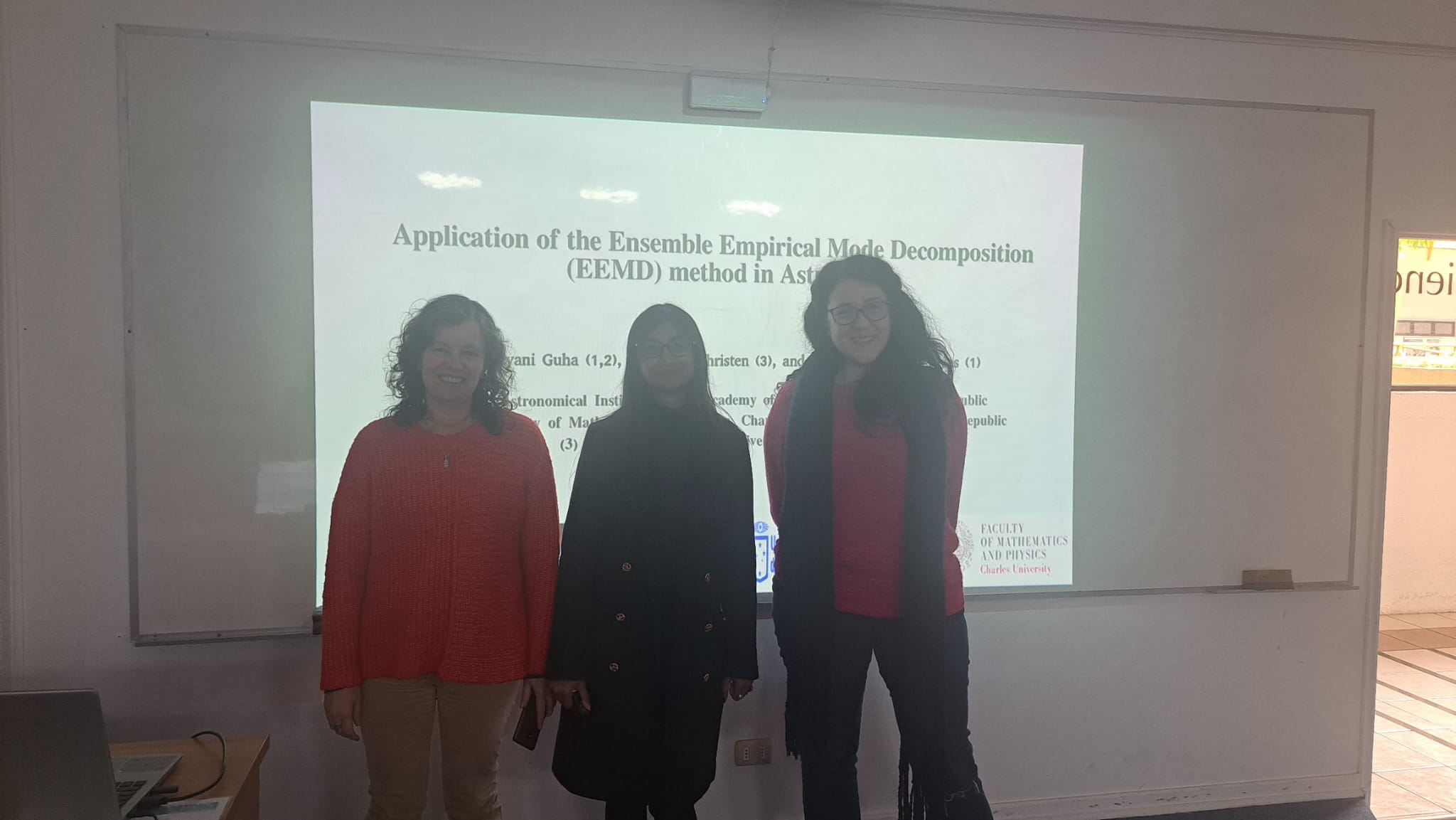
We also tested the EEMD method on the hybrid star, using it as a dyadic filter to separate the high and low frequencies from the signal. Furthermore, I regularly attended the weekly seminar of the Astronomy department and really enjoyed the scientific discussions with other fellow colleagues and young astronomers from the university. I also presented my progress with this project in the seminar of the Statistical department, on June 11th, 2024.
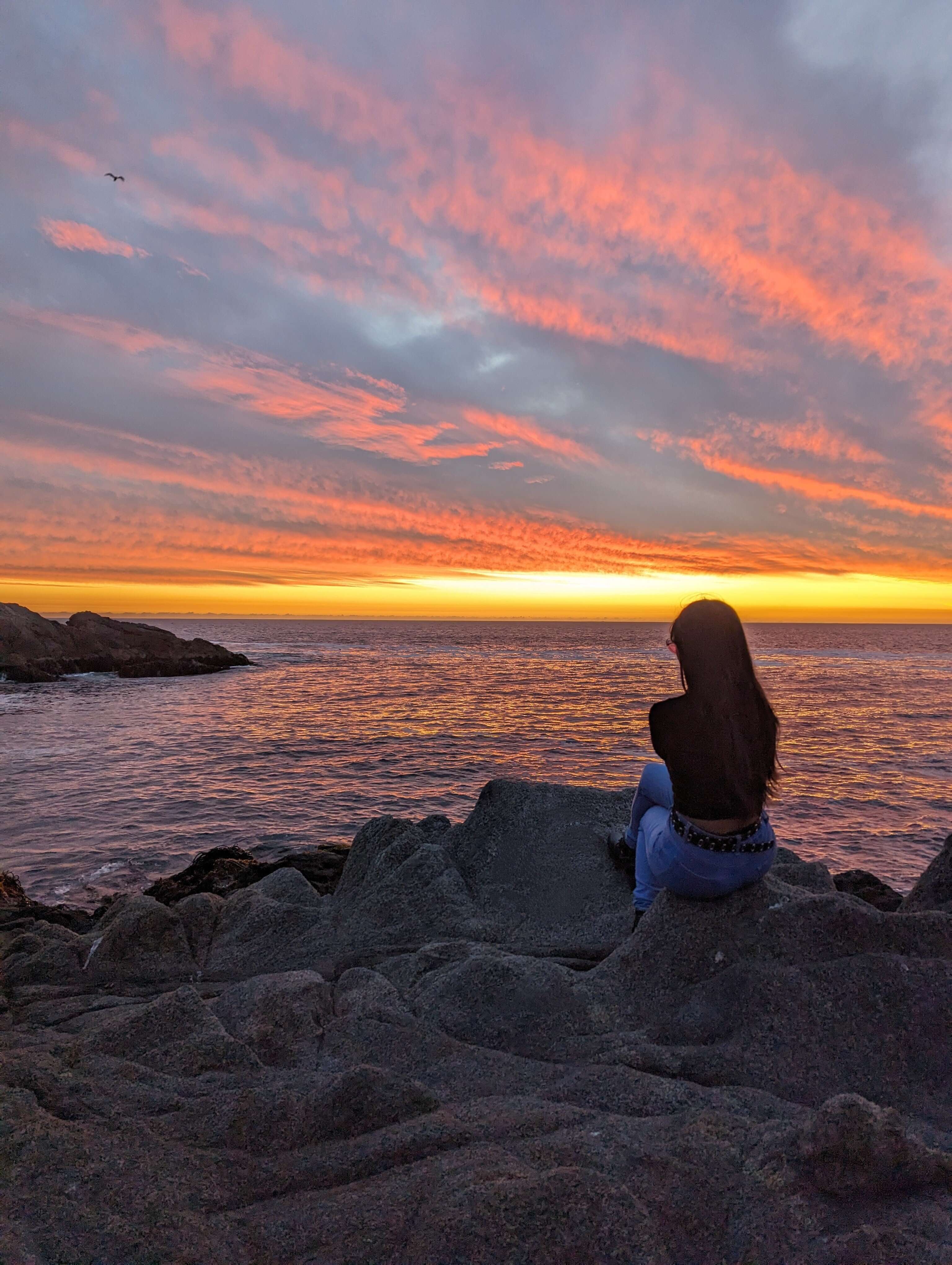
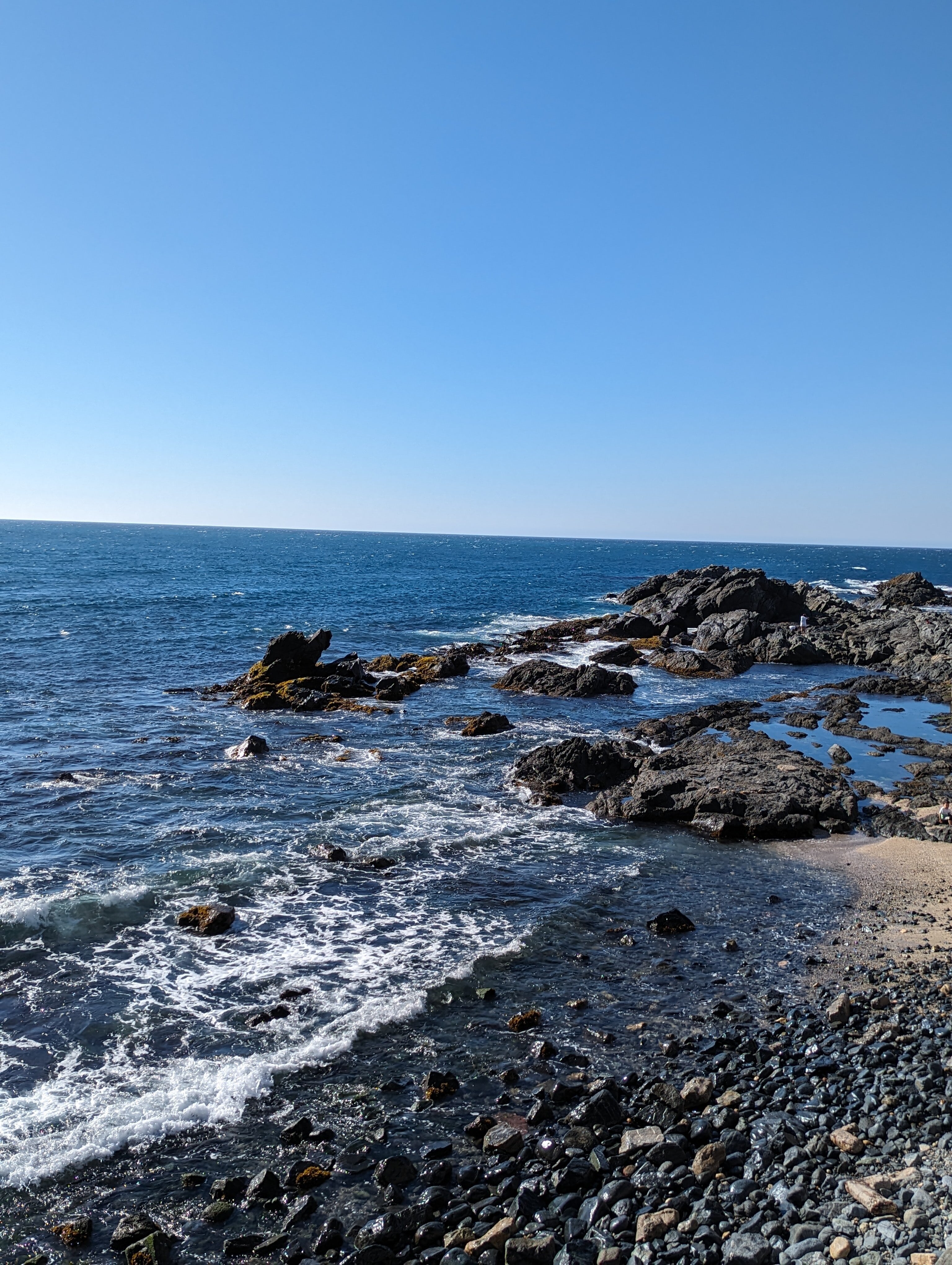
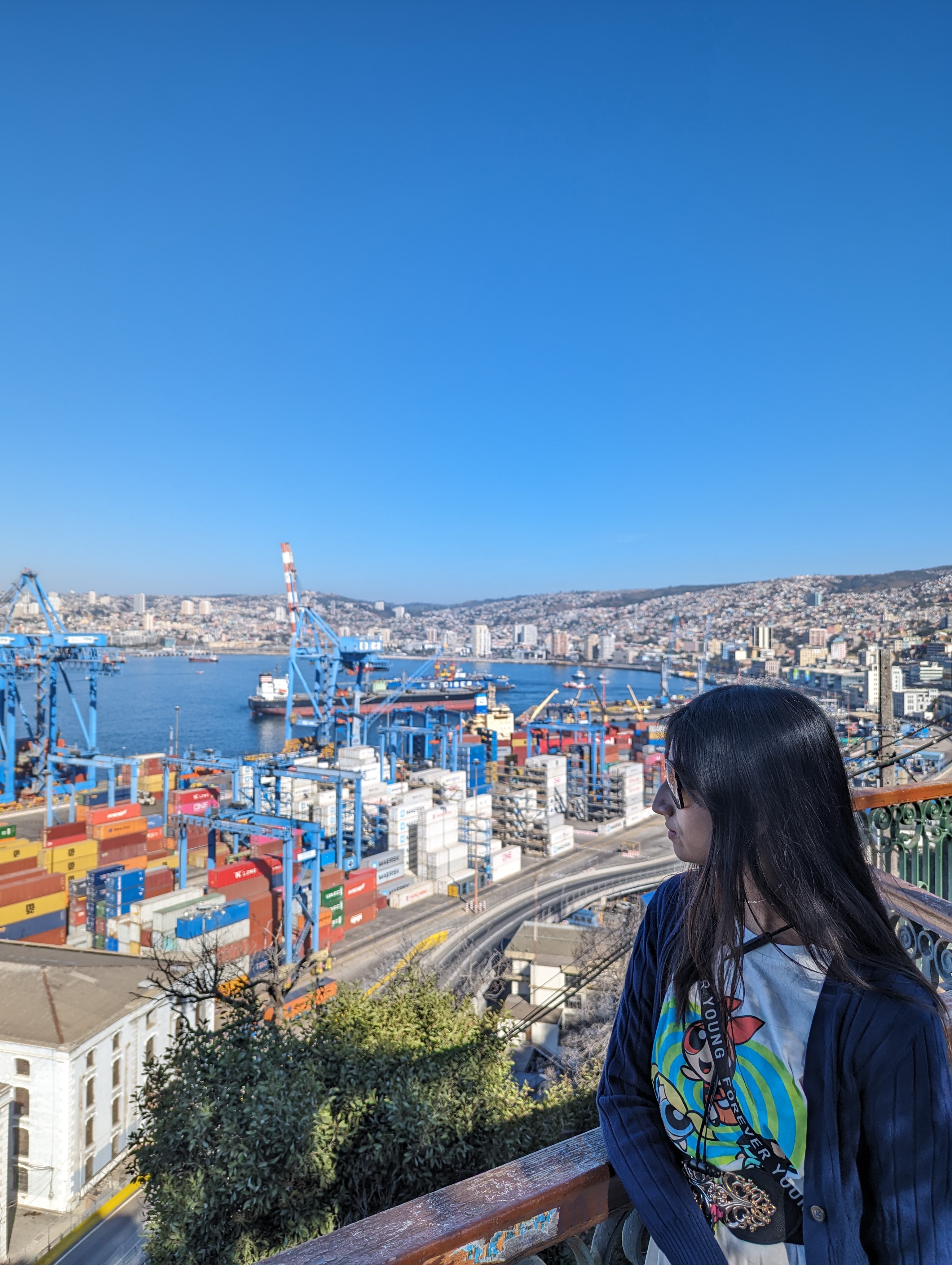
During the period of my stay in Chile, I took delight in the mesmerising view of the sunset, the refreshing breeze of the Pacific Ocean, and short walk towards Playa Las Torpederas.
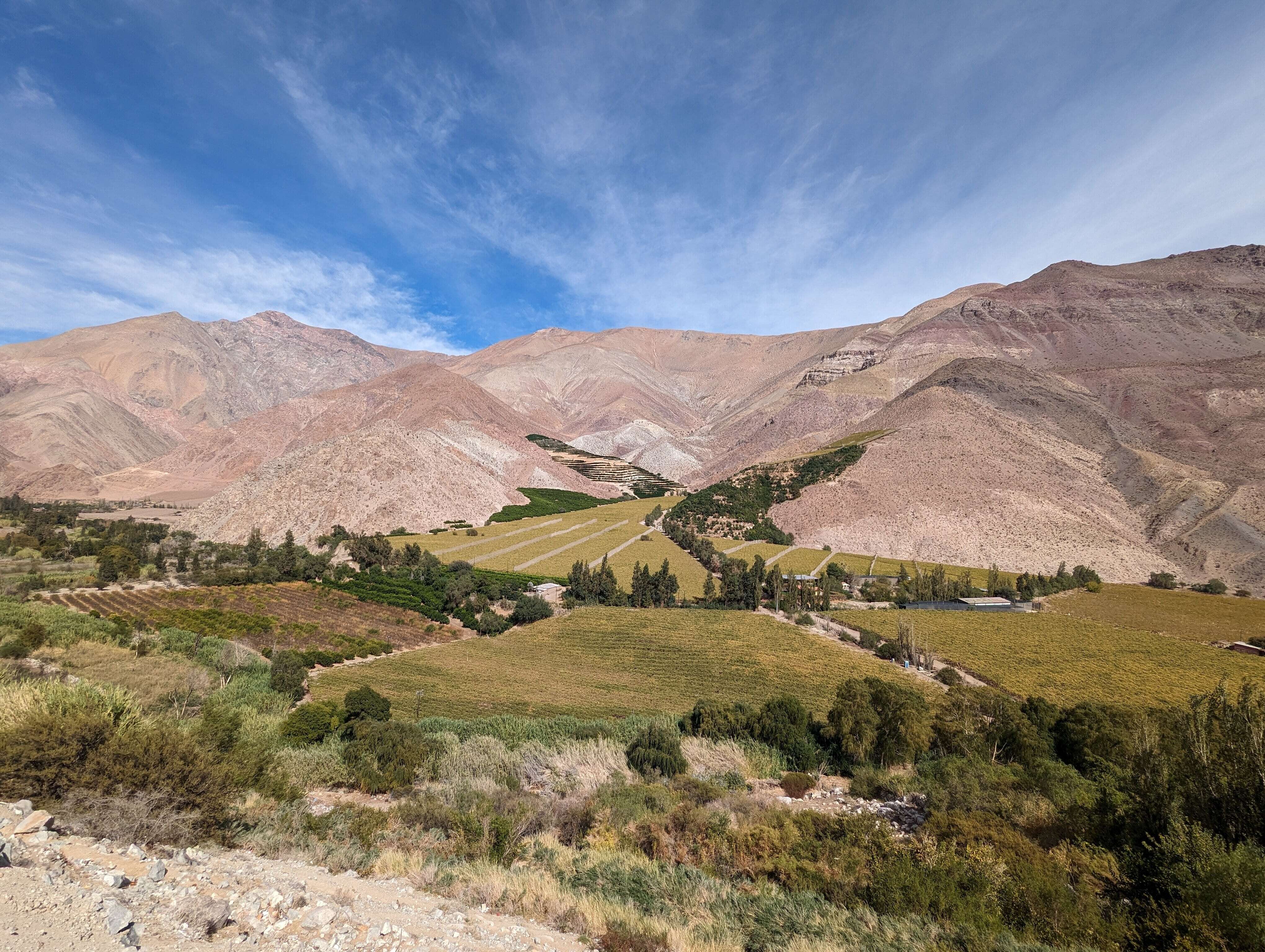
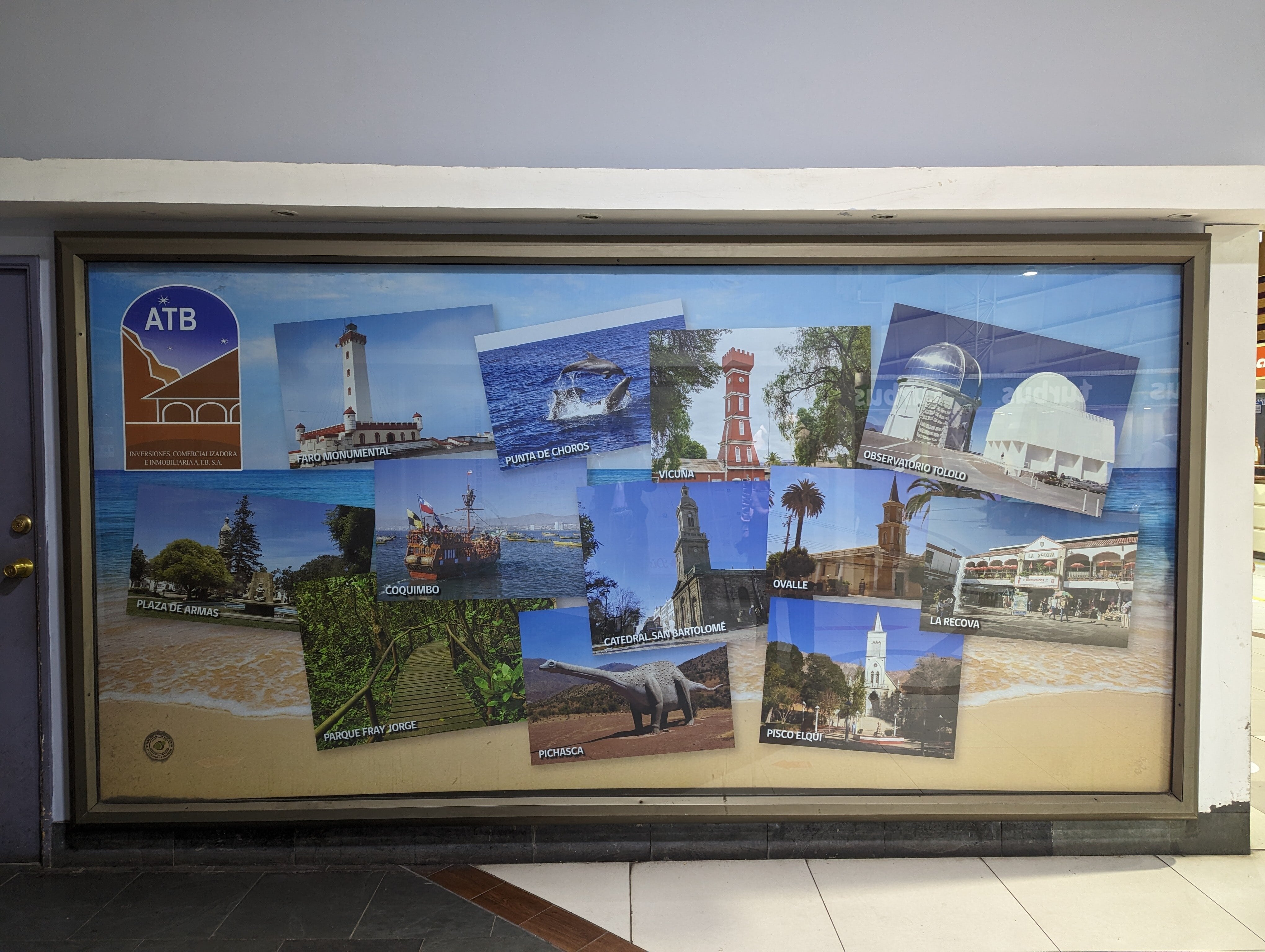
On a long weekend, I had the opportunity to explore La Serena and Coquimbo cities as well. In short this secondment was really fruitful for my research. I intend to further optimise this mathematical tool, the EEMD approach, and a publication with our current results is in preparation.
I had an incredible secondment in Ondřejov, Czech Republic, where I spent three months immersed in both research and local culture. Arriving at the end of winter, I watched as spring blossomed around the beautiful park surrounding the astronomical institute.
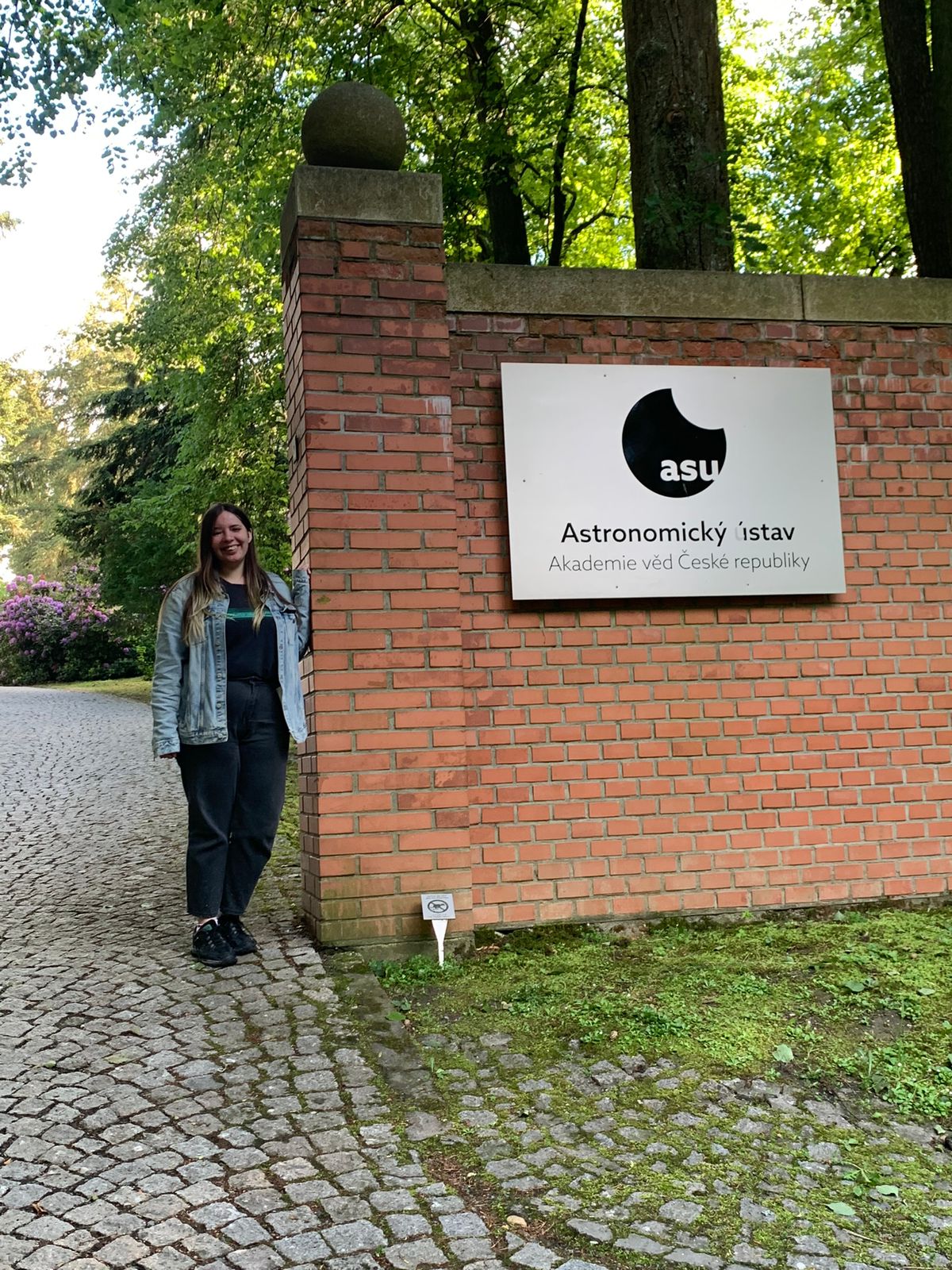
During my time there, I collaborated with Dieter Nickeler on exploring the astropause region and the interaction between stellar winds and the interstellar medium, diving into theoretical challenges and working to connect these complex models. I later presented our progress at the POEMS conference in Rio de Janeiro.
I also joined insightful discussions in the institute’s journal club and presented my work at a student meeting in Hradec Králové. Outside work, I enjoyed exploring Prague’s charm and celebrating my birthday with trdelník by the astronomical clock. I also had the chance to take trips to Karlovy Vary and Italy. Even if my Czech vocabulary only covers basics like “hello” and “thank you,” I left Ondřejov with beautiful memories.
I was on a secondment to the Universidad Nacional de La Plata from March 1st to March 31st. During this time I have collaborated with Matias Ruiz Diaz and Lydia Cidale on their project about a superabundance of He found in some B supergiant (BSG) stars, analyzing the light curve of stars with a ‘strange’ feature in the HeI line of their spectra. The light curve of these objects seems to show stochastic low frequencies (SLF), affected by the red noise. Discussions with Aldana Alberici helped address this phenomenon (red noise) observed in several OB stars. I also learned how to reduce spectra data from CASLEO, thanks to Matias, who kindly gave me and Aldana a great minicourse on this topic.
During my stay, Dr. Todt from the University of Postdam was visiting La Plata and I attended, along with other POEMS members, his course on PoWR code to model stellar atmospheres. I also gave 4-days crash course on MESA and GYRE evolutionary and pulsational codes, to Matias, Aldana and Dr. Jorge Panei, which I hope it will help them in the future.
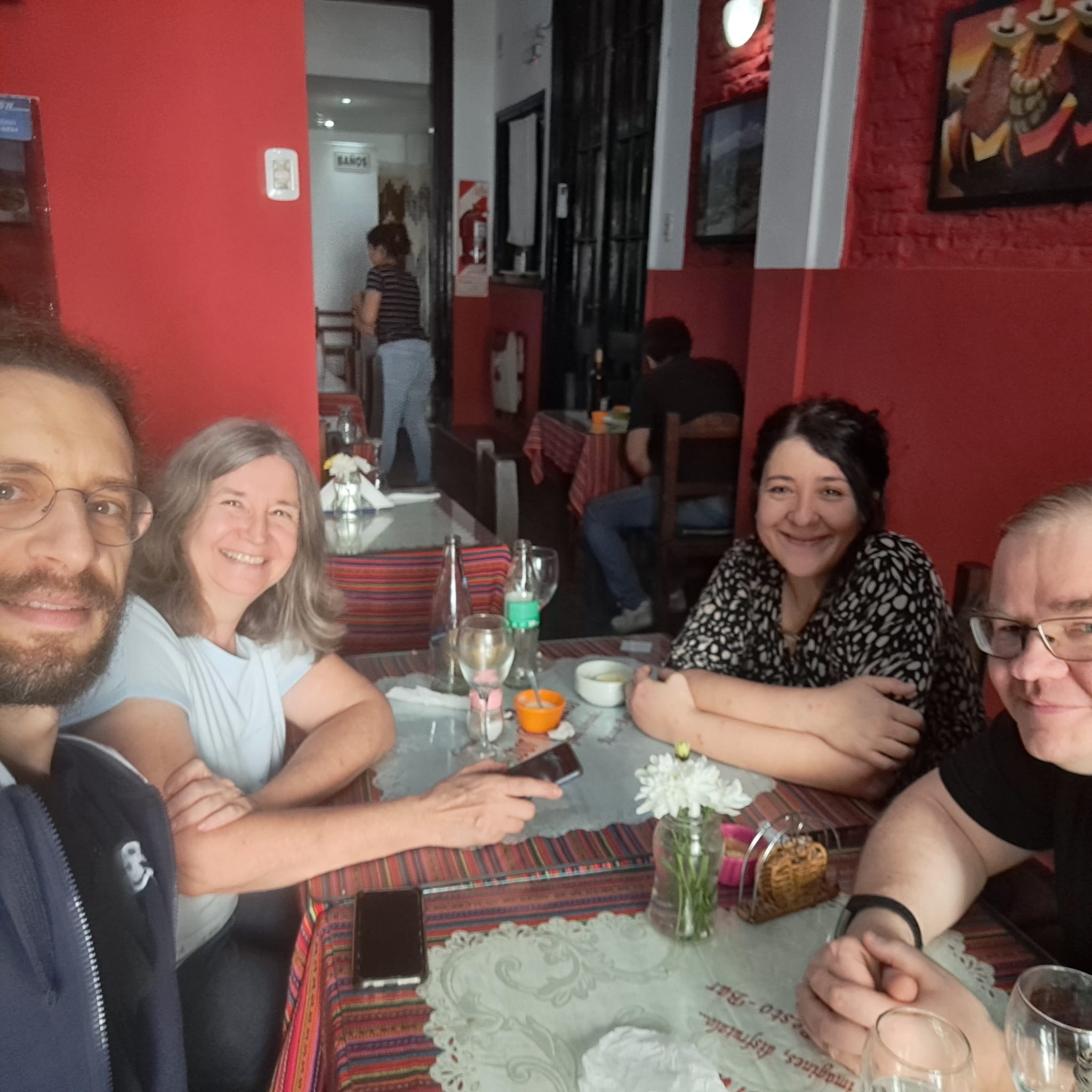
I had the opportunity to visit San Juan for some days. During this short visit, former colleagues invited me to give a seminar at the Instituto de Ciencias de Astronomicas, de la Tierra y del Espacio (ICATE) where I could share with them my latest paper on BSGs and meet my future collaborators.
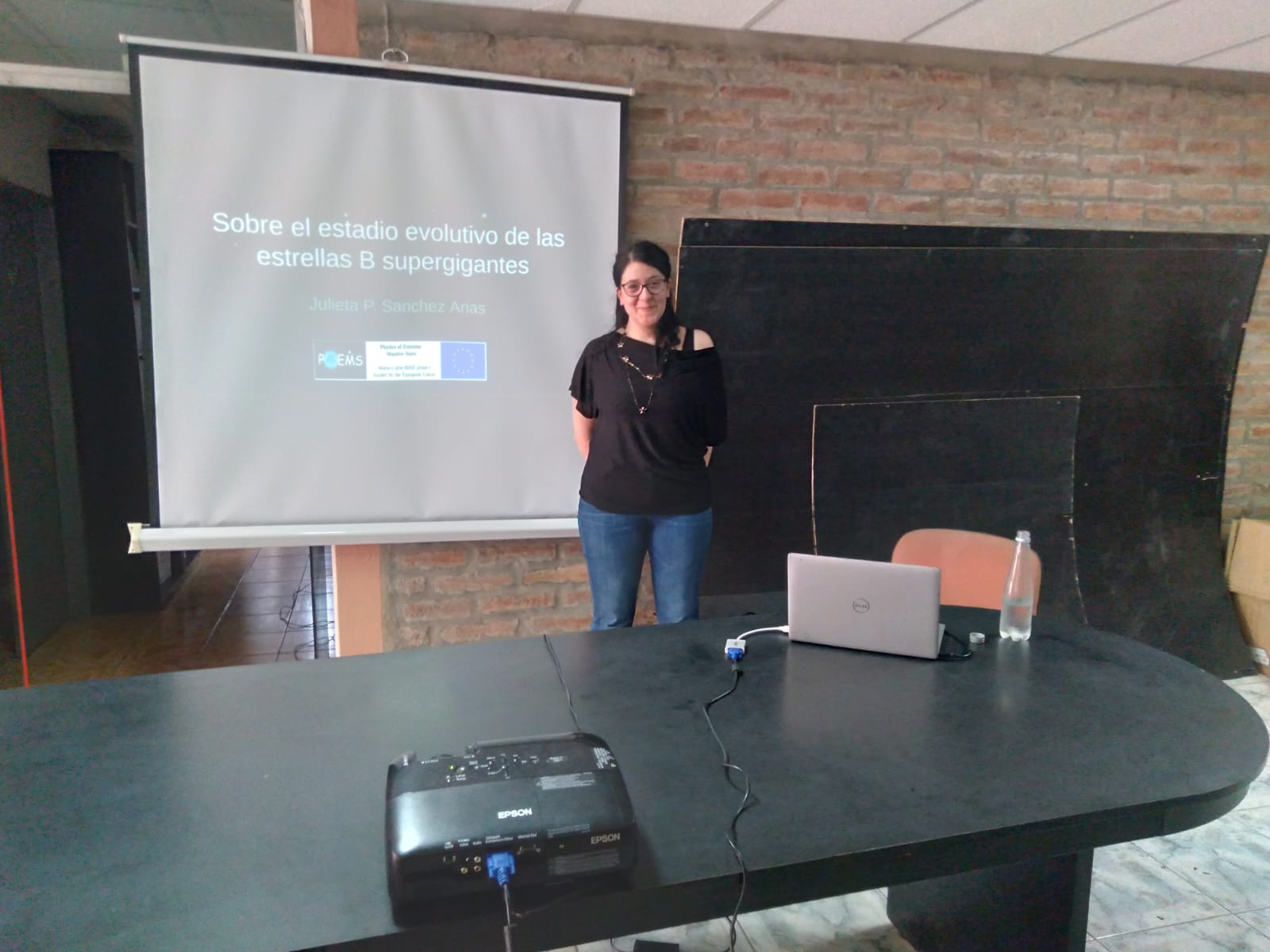
Finally, I participated in outreach activities for the Day of Girls and Women in Science. We organized online discussions with students from two schools in the Czech Republic, resulting in a very rewarding activity between the teenagers, the teachers, and the astronomers. Overall it was an intense and very rewarding secondment. I’m looking forward to meeting my colleagues again in Rio!
I visited University of La Plata (UNLP) in the period 25.2.-24.4.2024, where I worked with Prof. Lydia Cidale towards concluding our variability study on Galactic B-type supergiants (BSGs). By significantly extending our sample to include 62 BSGs and updating with the latest light curves from the TESS satellite, the current work aims to be the largest variability study on this type of massive stars to date. I worked to refine methodology for signal extraction, the frequency and red-noise identification, as well as to derive metrics that enable us to draw correlations between photometric variability and stellar parameters. Ultimately, our results will motivate posterior studies from the field of asteroseismology in an effort to understand the dynamical processes that take place in the deep interior of evolved massive stars. Moreover, based on the pulsational parameters of the stars, diagnostics of binarity and evolutionary status are suggested. At the end of my visit, I presented these findings in a seminar talk titled as "Variability of Galactic B-type supergiants observed with TESS".
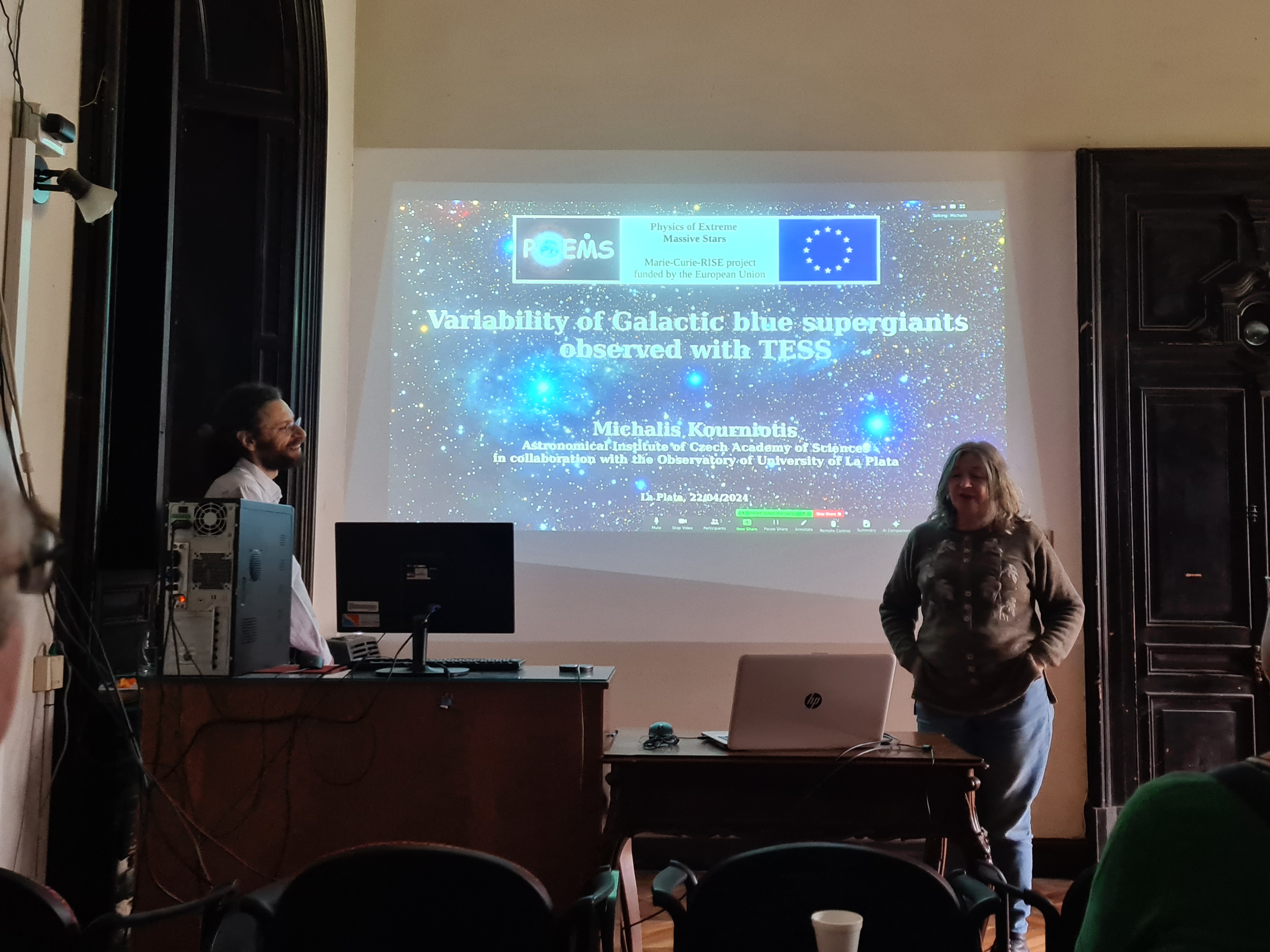
As part of the secondment, I was eager to share my expertise on iSpec tool for the processing of spectroscopic data. By preparing and leading a three-course seminar, I discussed with an audience of 10-15 students (present physically and via zoom) the functionality and capabilities of iSpec, and together we worked on applications on telescope data. The tutoring courses were extended to applications on database management, thereby stimulating broader coding skills of the students in Python.
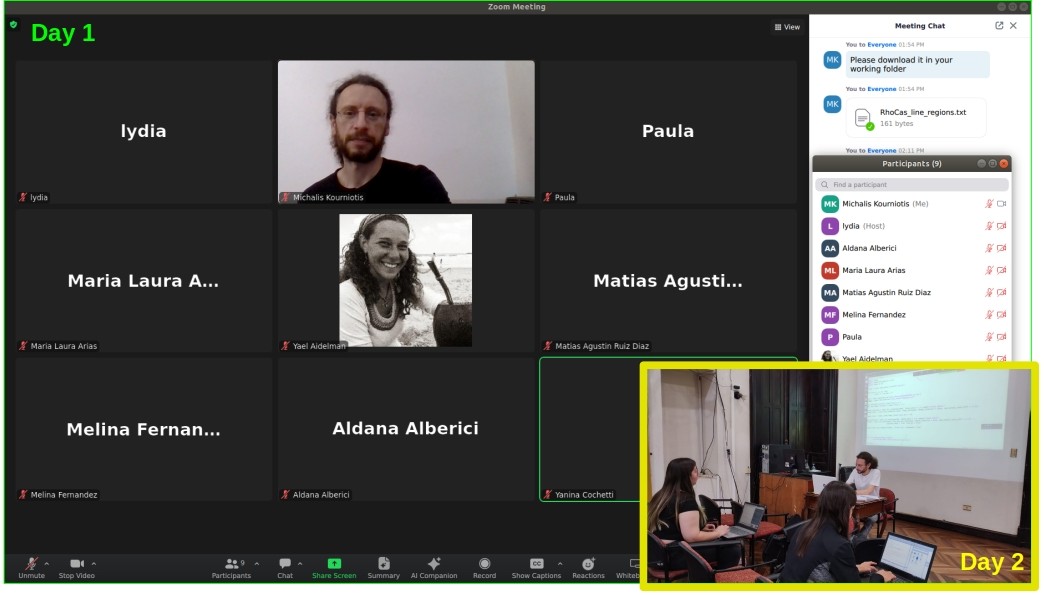
Being in UNLP for second time in the frame of POEMS, I am grateful to meet scientists outside my home institute, discuss different ideas and strategies, teach new generation of astronomers, and collaborate with students. Undoubtedly, supportive such actions are beneficial for the scientific development of any new researcher. Beyond science, Argentina is a great country with several landmarks to discover. The capital, Buenos Aires, is a cultural center that hosts events such as the iconic Sunday bazaar of San Telmo, where visitors have the chance to purchase traditional ornaments, embrace the local spirit and enjoy street tango demonstrations.
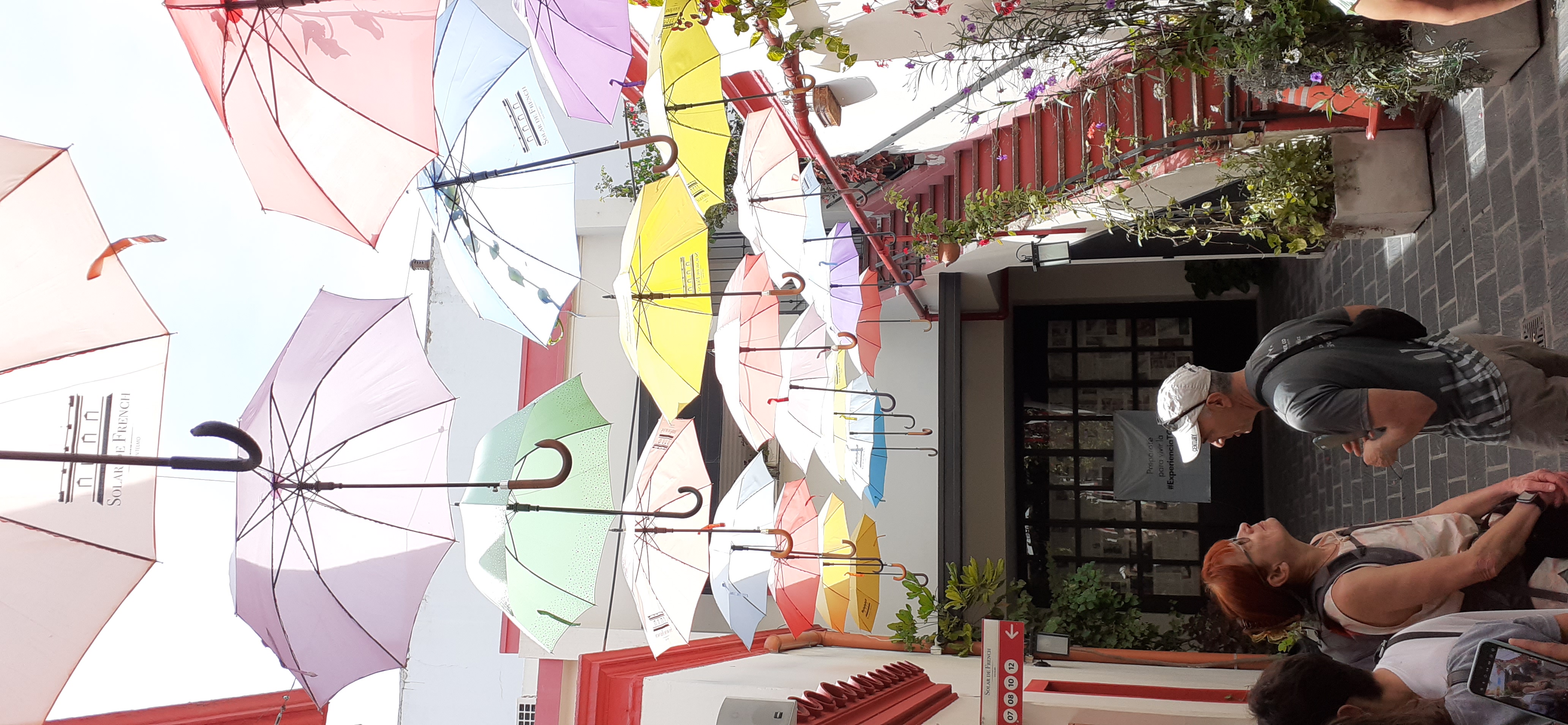
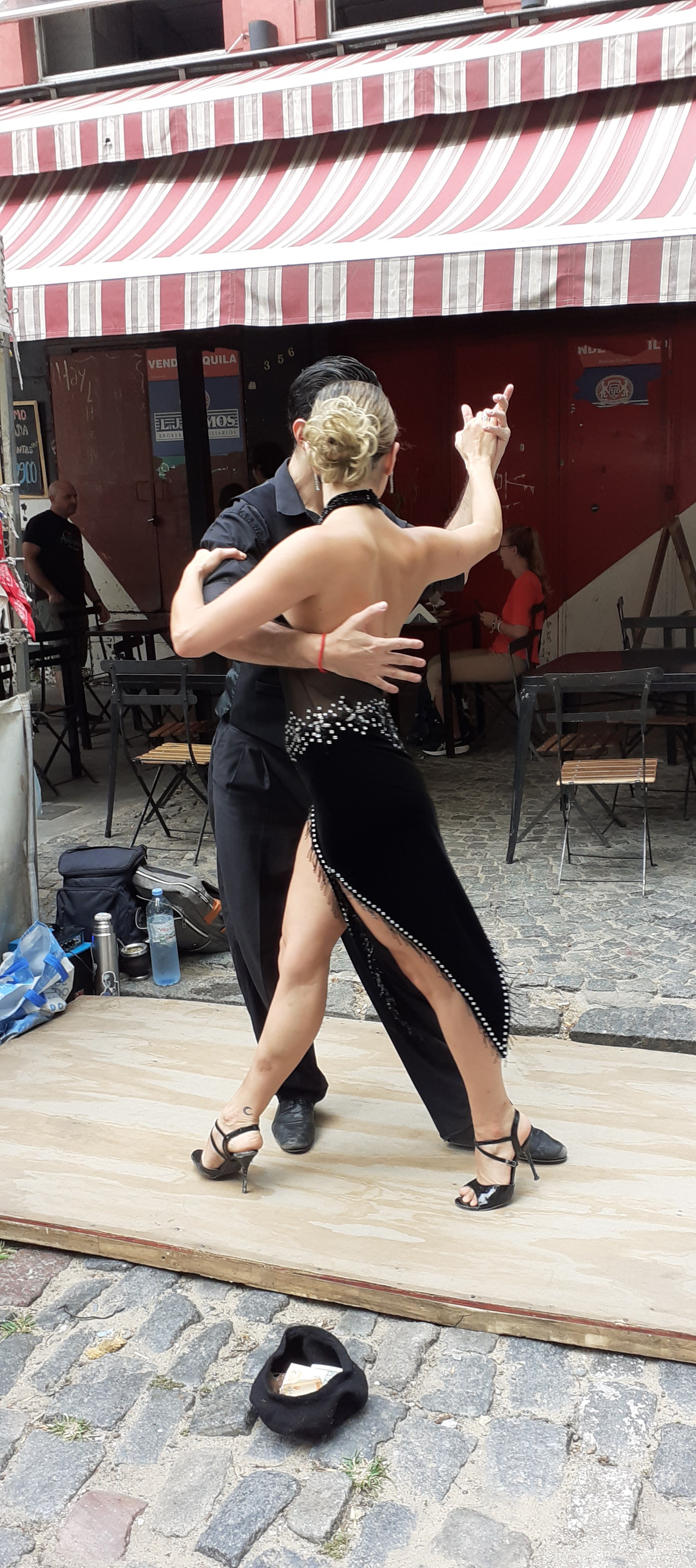
After 10 years, thanks to the POEMS project, I had the possibility to visit again the Stellar Department of the Astronomical Institute in Ondřejov, to work with Dr. Michaela Kraus for one month. During this secondment, we had fruitful discussions about future projects and I was able to learn from Dr. Kraus about the modeling of molecular bands in the infrared spectra of B[e] supergiant stars.
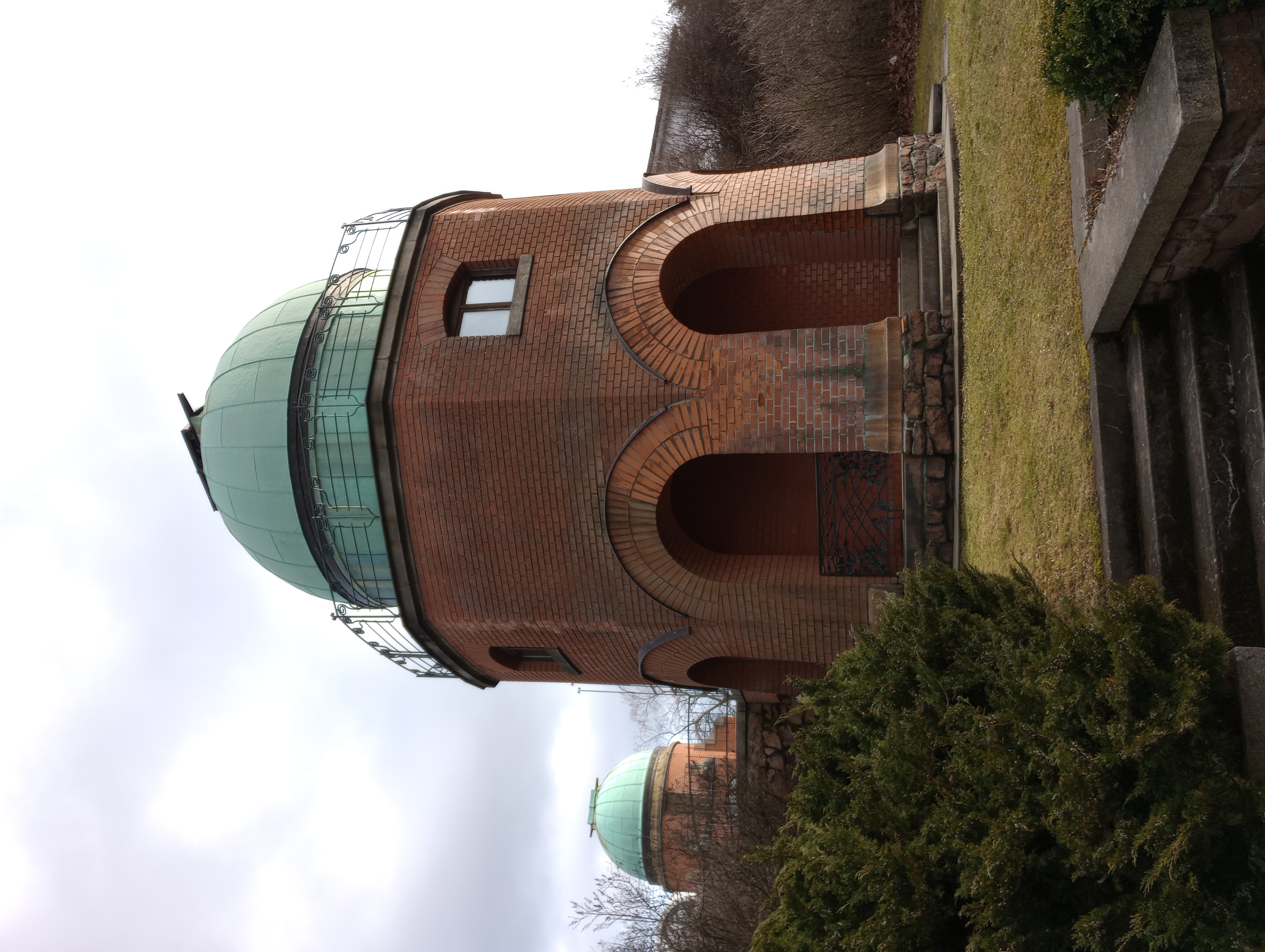

I could work on infrared data reduction with Dr. Maria Laura Arias and I had nice discussions about B supergiants with Dr. Roberto Venero, who were also in Ondřejov for a secondment.
I also took the opportunity to meet Dr. Olga Maryeva, with whom I had important discussions about future common work on LBV stars. I also met Dr. Péter Németh, with whom I discussed the modeling of optical spectra with CMFGEN code.
During my stay, I was also delighted by the beautiful landscape of Ondřejov and its tranquility. Together with colleagues from Ondřejov, we spent a very nice day visiting Prague. There, I took a picture with two of the most famous astronomers, Tycho Brahe and Johannes Kepler. With Dr. Arias, Dr. Venero and their beautiful family, I visited the charmed small village of Hrusice, home of the famous Czech writer Josef Lada, meeting the famous Mikeš the cat. Thanks to Dr. Jakub Fišák, I was able to get in touch with Czech rock, which was a very pleasant experience.
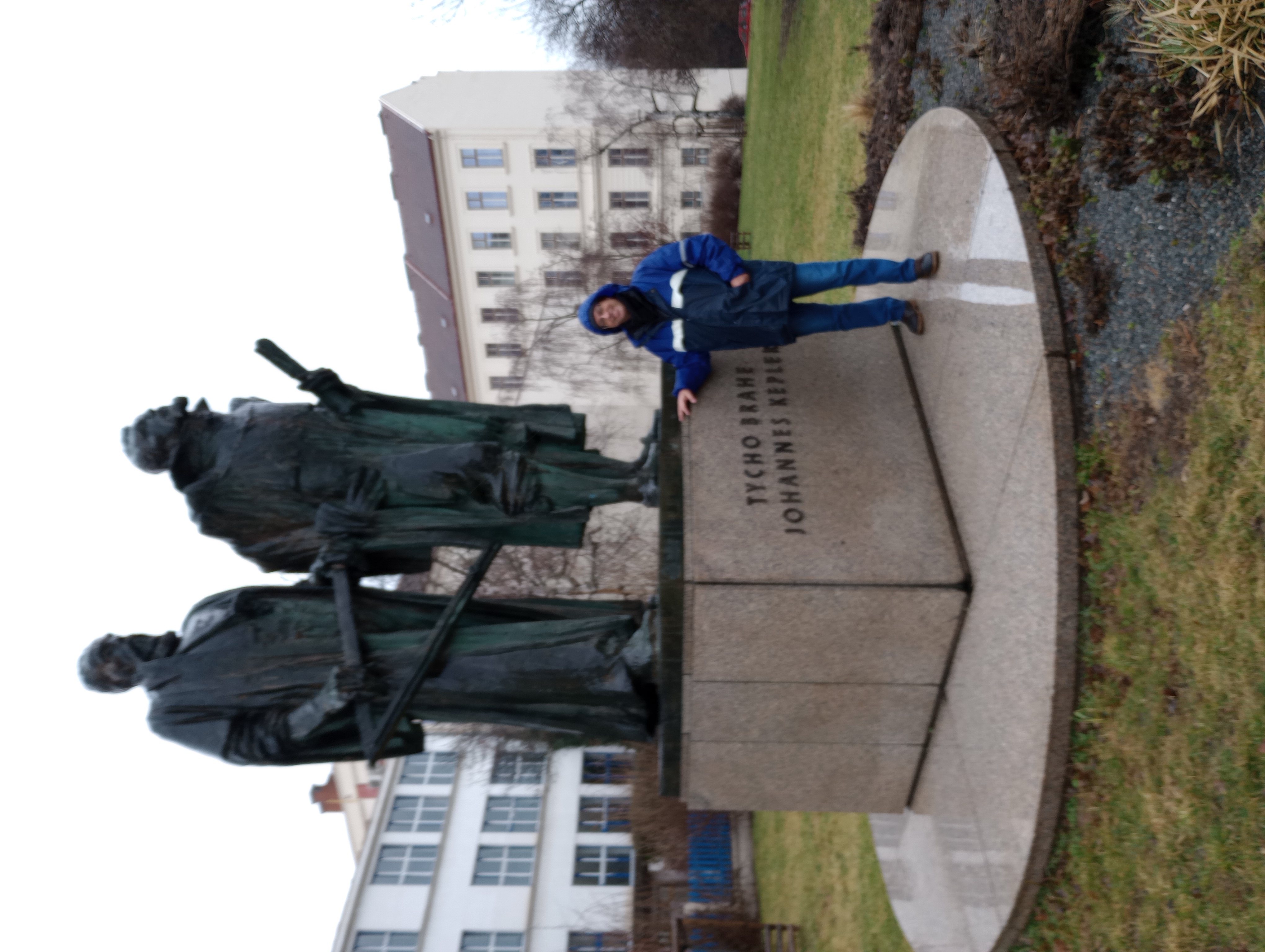
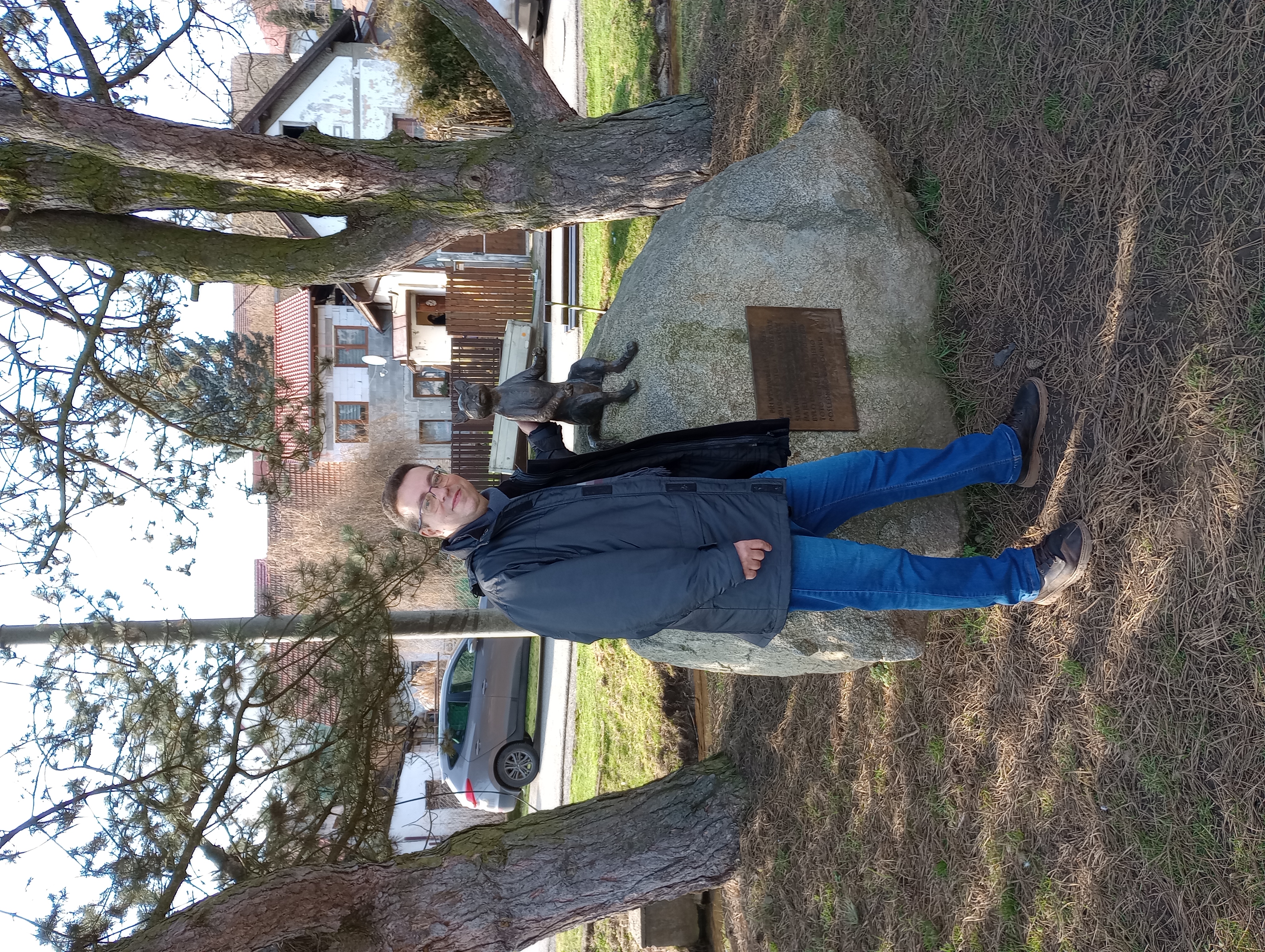

Many thanks to my colleagues, and especially to my friends Dr. Michaela Kraus and Dr. Dieter Nickler, for the delicious dinners at the famous pizzeria, for the hospitality and for the great time in Ondřejov.
Dr. Olga Maryeva became my second supervisor after my previous visit. We continued our ongoing work, and I began writing my dissertation thesis. Dr. María Arias taught me how to apply for observation time with the Gemini telescope. Suryani Guha showed me Python scripts, which I started using and modifying for my own needs. Additionally, I engaged in modeling discussions on the physics of massive stars and model parameters with colleagues. The advice of Dr. Péter Németh was very helpful.
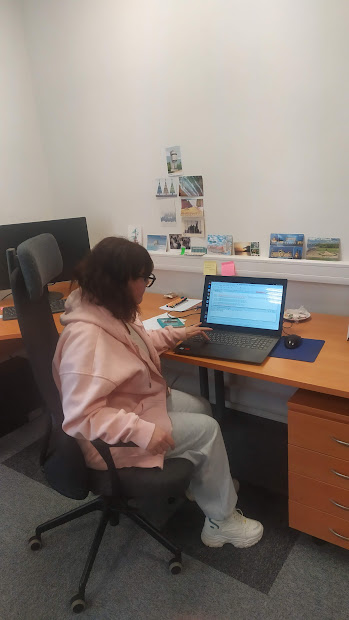
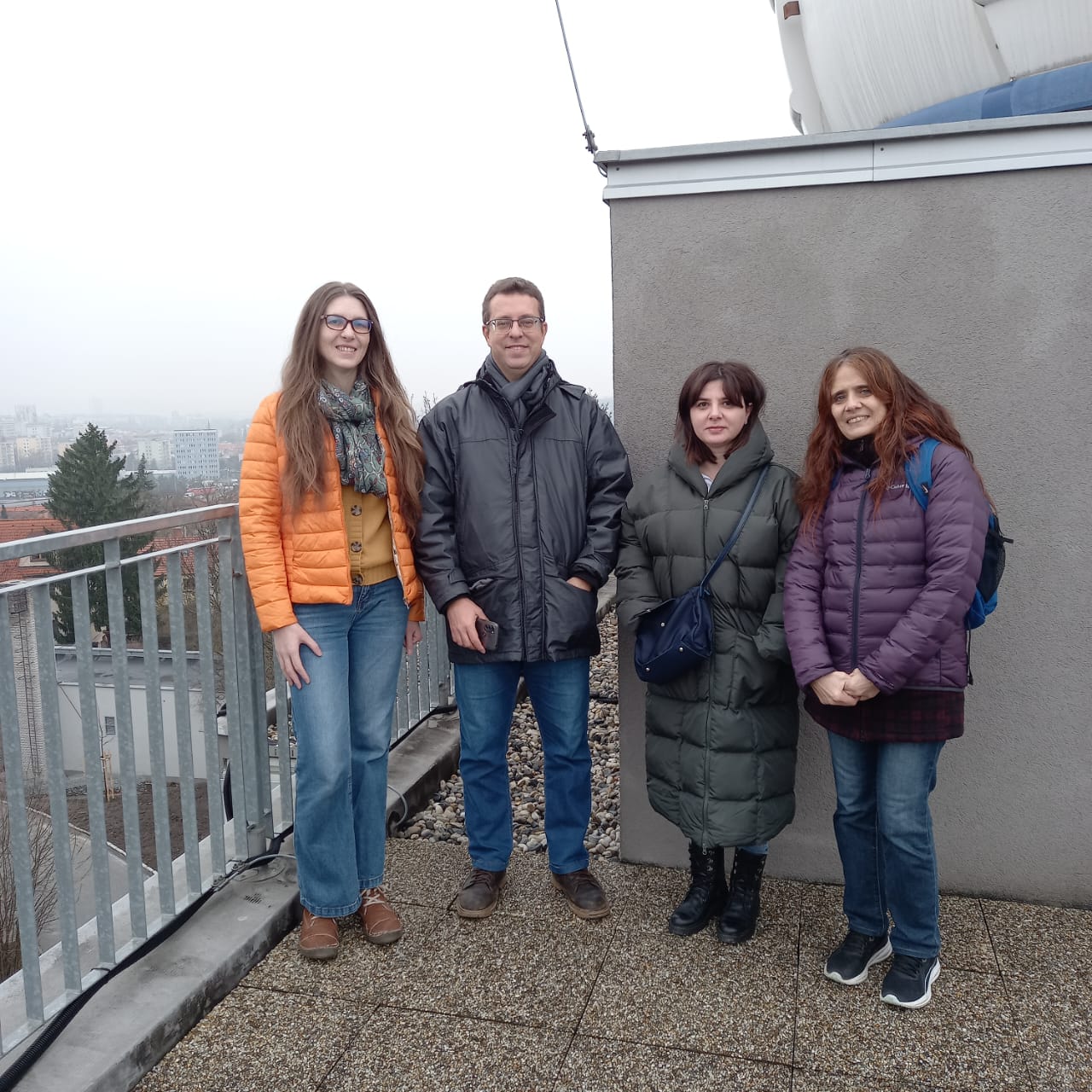

I participated in two seminars held at Ondrejov. In April, attended the Student Meeting, which was held within the General Assembly of the Czech Astronomical Society in Hradec Králové. Additionally, I joined the Technical Computing Prague conference. During the Journal Club, I presented a publication that sparked a heated discussion.
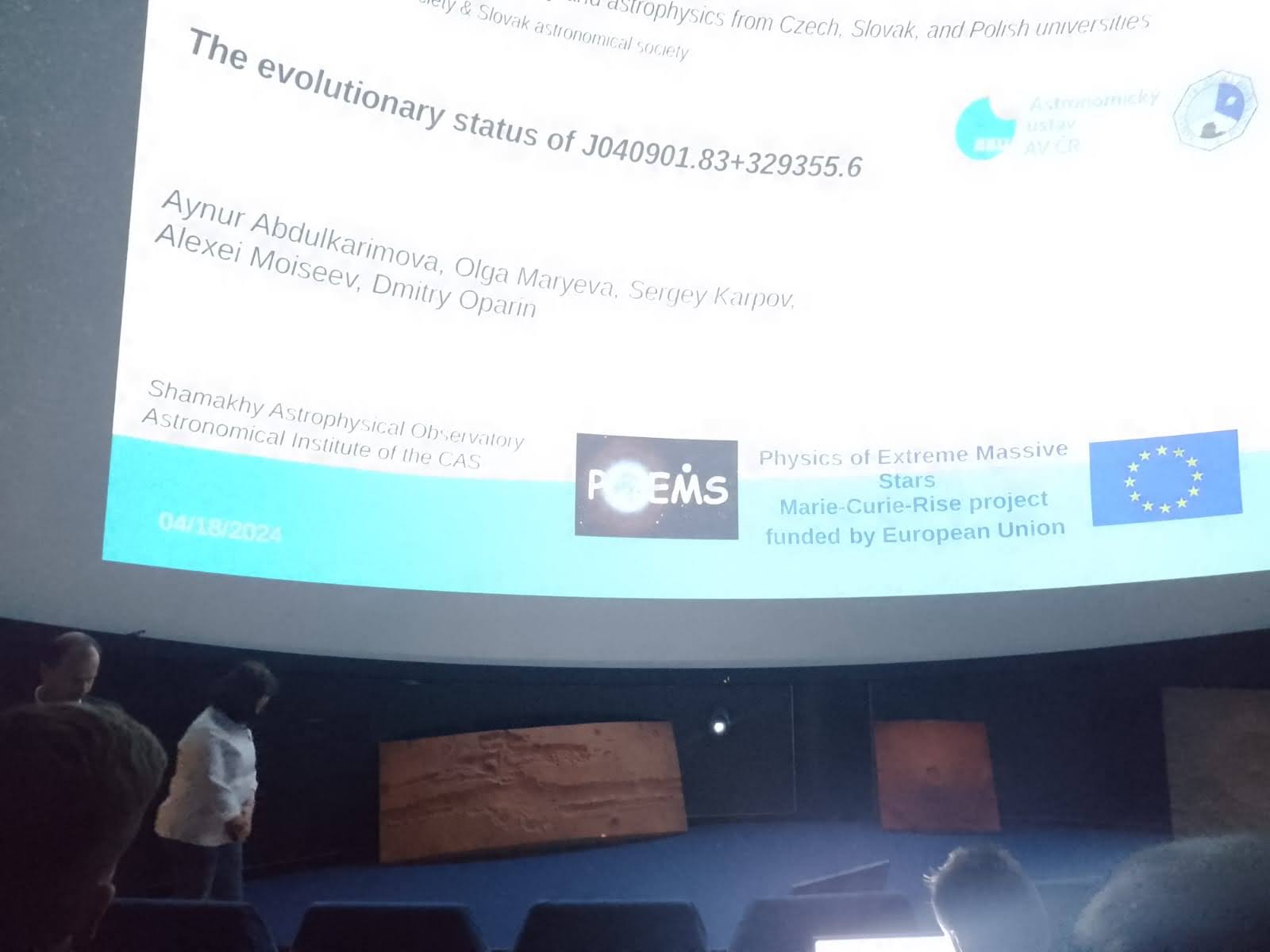
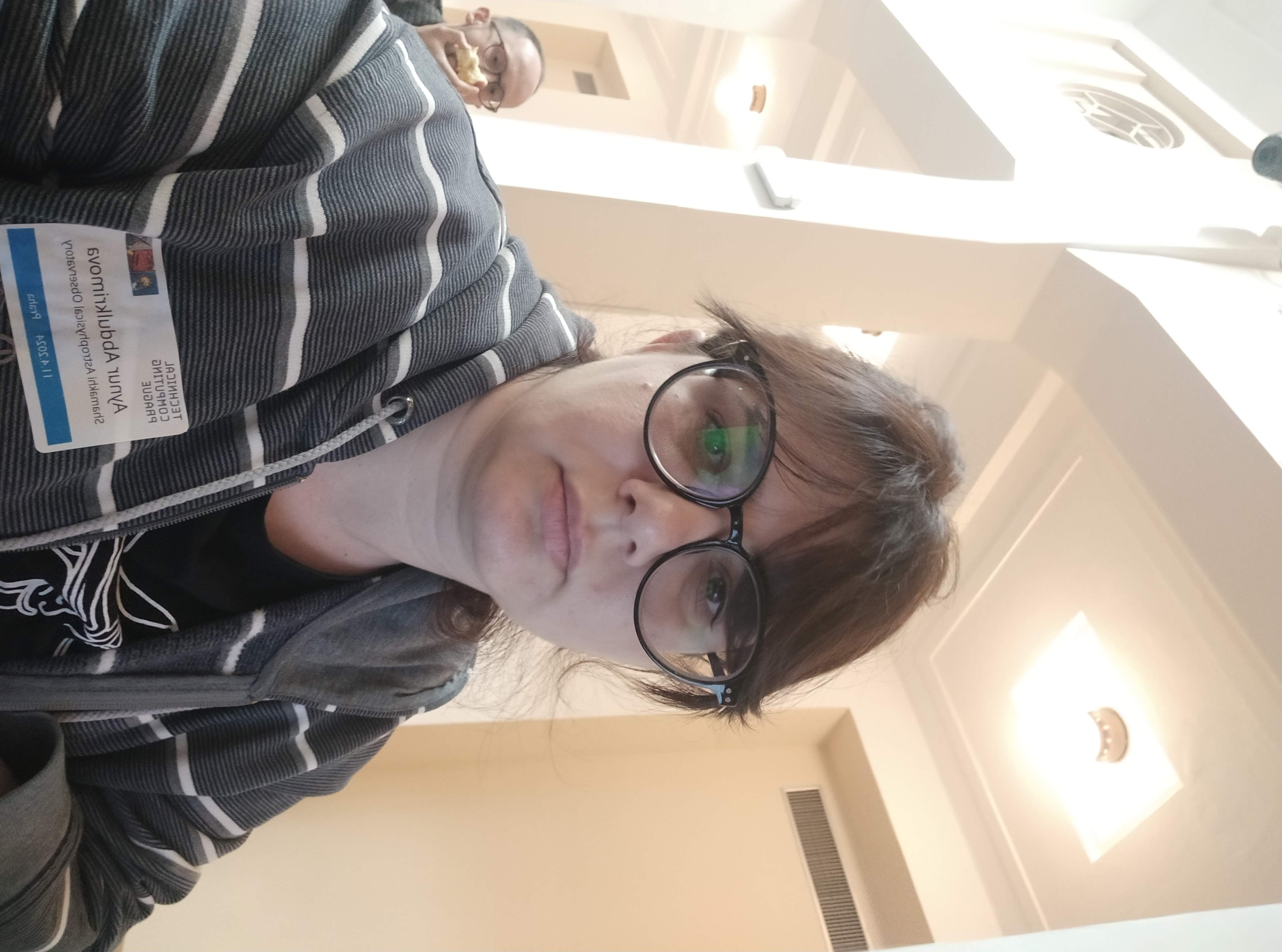
In the last month of my visit, we took short trips to Karlovy Vary, Venice, Trieste, and Ljubljana for a few days.
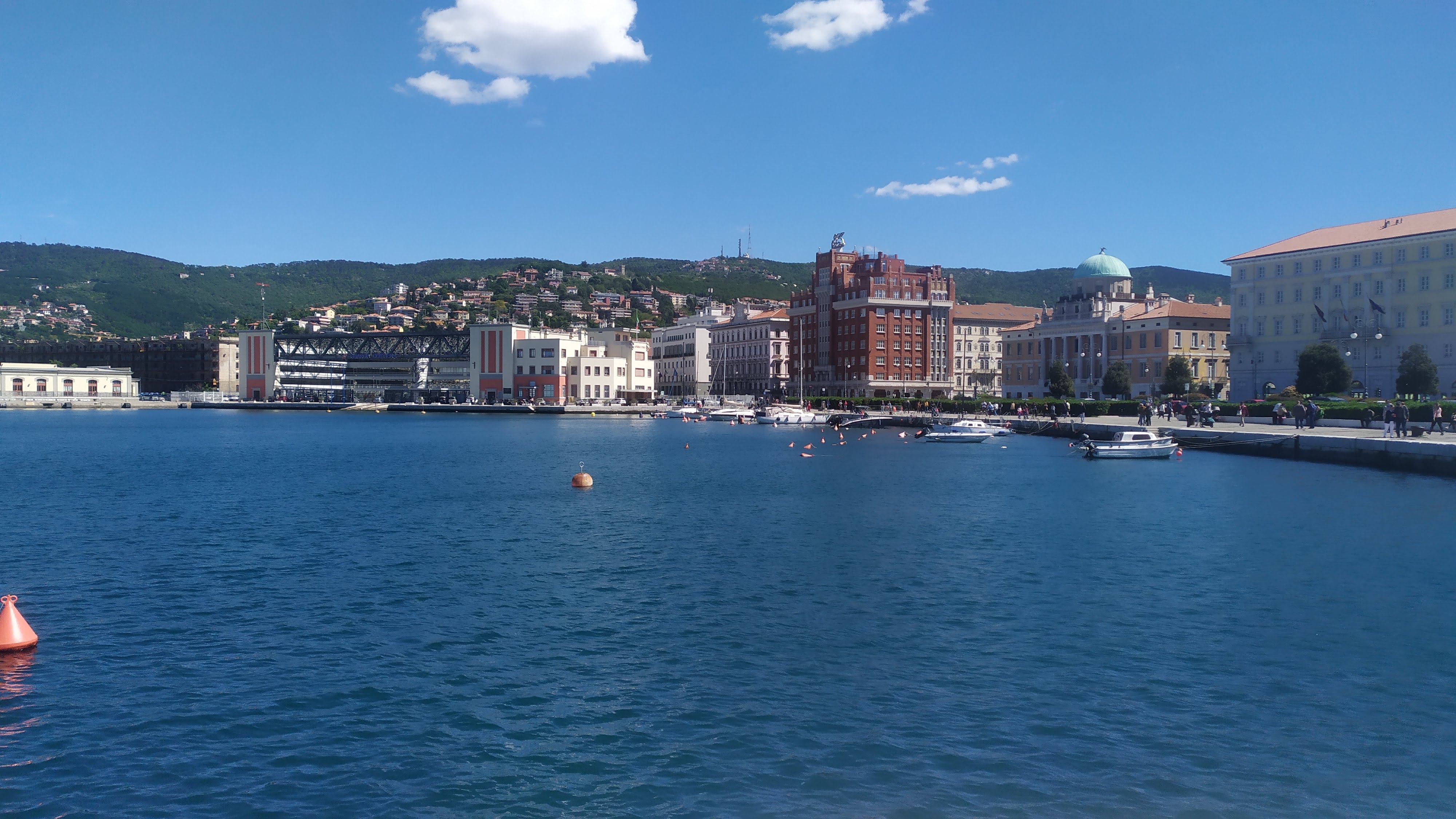
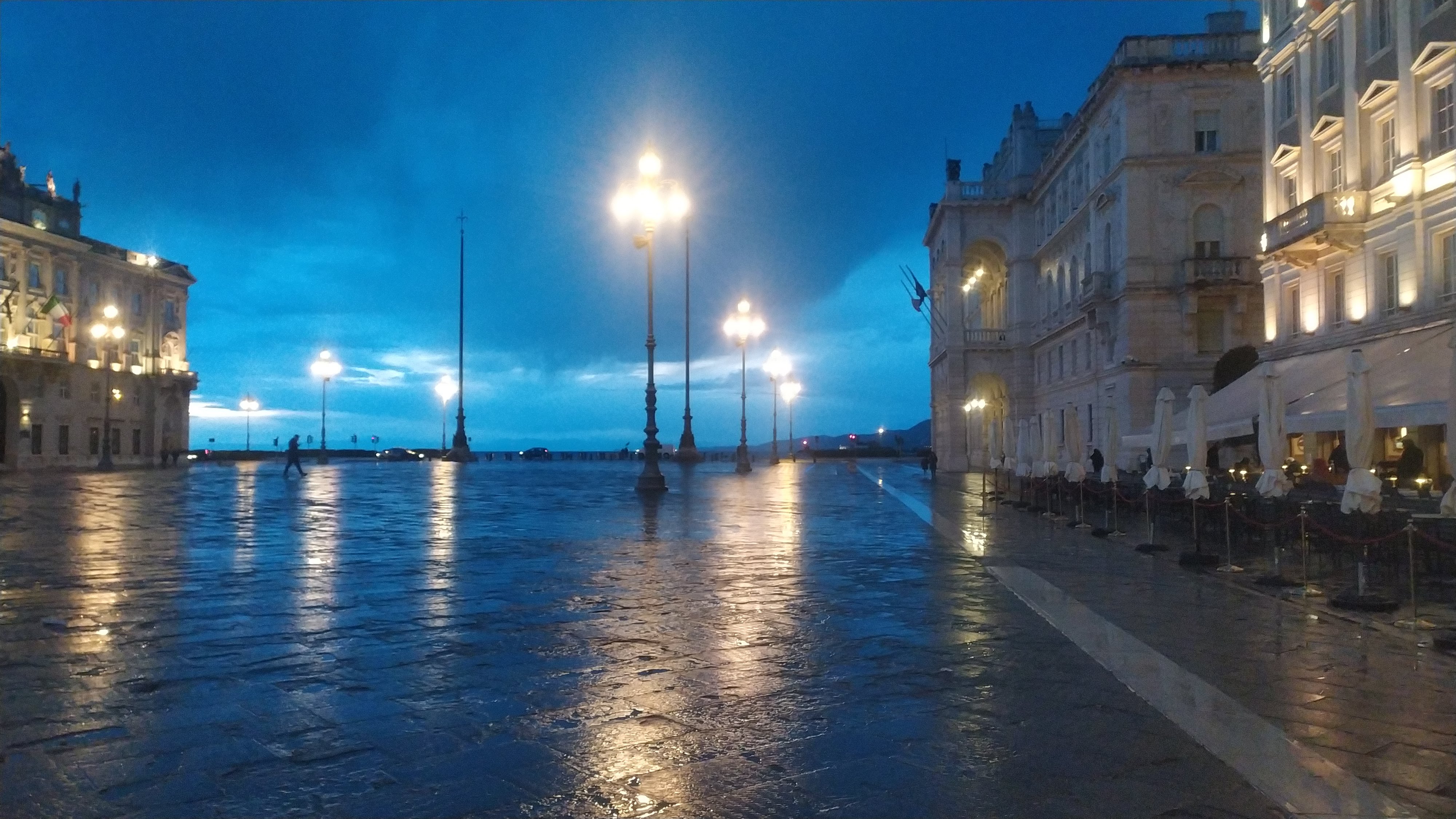
As this year marks the last year of the project, I hope to continue collaborating in the coming years and organize new projects and research with the POEMS group.
During my visit to the Shamakhy Astrophysical Observatory, I learned about the observatory's facilities, instruments, and observational capabilities. Dr. Janmammad Rustamov introduced me to the director, Prof. Namig S. Dzalilov. Together, we discussed the necessary steps for establishing an observational database at the observatory and developed a detailed plan. I also provided instruction to PhD students Aytaj Iskandarova, Zumrud Vidadi, and Shabnam Aghayeva on how to prepare observing data for the POEMS database. I made a presentation at the ShAO astronomy seminar on 21 February 2024.
We had planned one week of observations using the echelle spectrograph at the Shamakhy 2-meter telescope. Unfortunately, our plan was hindered by severe fog, which made observations impossible. When the fog finally cleared during the last two days of my visit, frequent power failures caused by heavy ice buildup on the power lines prevented us from conducting the observations.
This was my first visit to Azerbaijan, as well as my first time in that part of the world and in a Muslim country. Experiencing the rich culture and deep-rooted traditions, so different from those in Europe, was incredibly enriching. I am deeply grateful to Dr. Janmammad Rustamov and all the wonderful, warm-hearted girls at the observatory who pampered me during my stay.
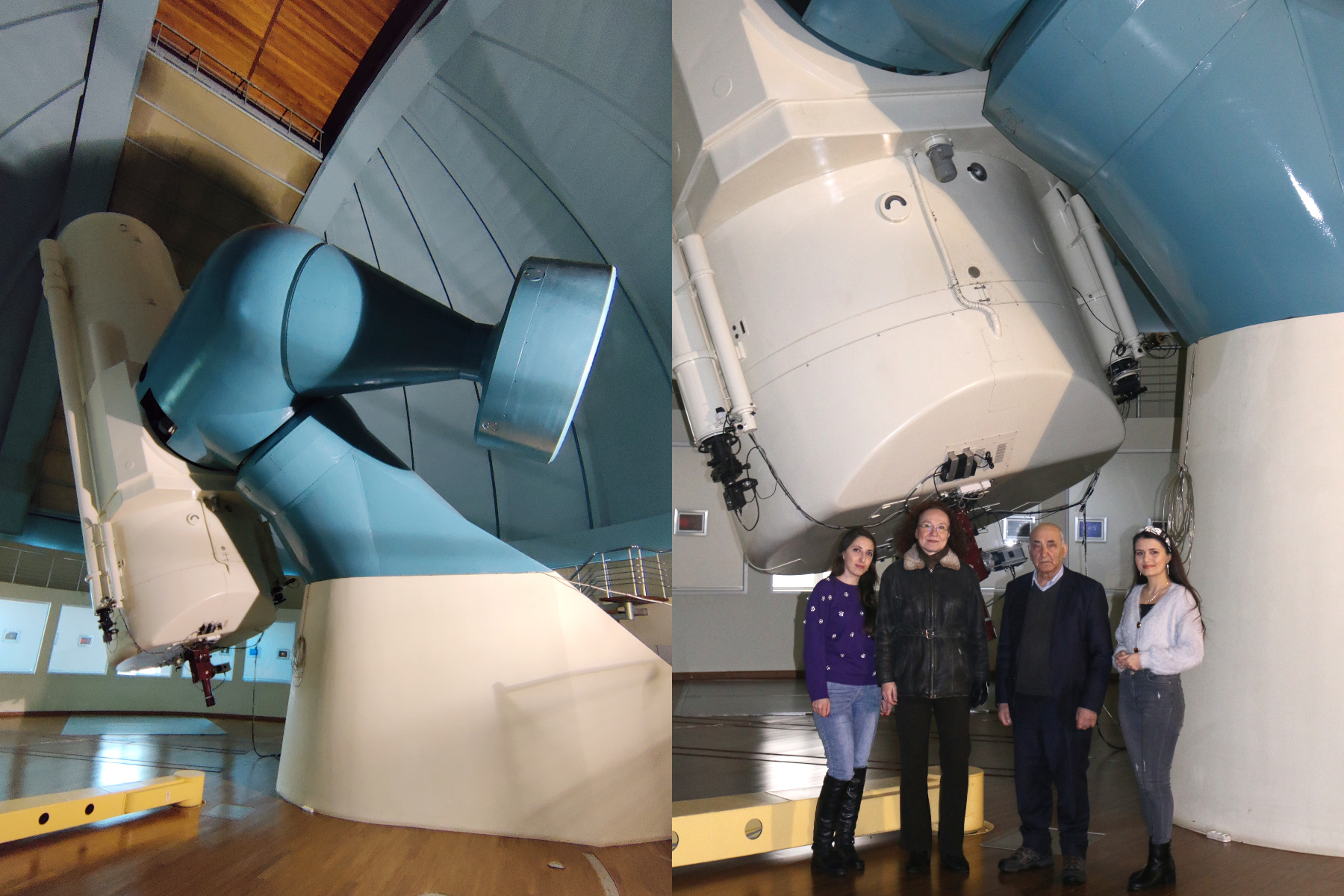
ShAO's 2-metre telescope was made by Carl Zeiss using the same design with the Ondrejov telescope. From left to right: Aynura Hasanova, Anna Aret, Janmammad Rustamov, Aytaj Iskandarova.
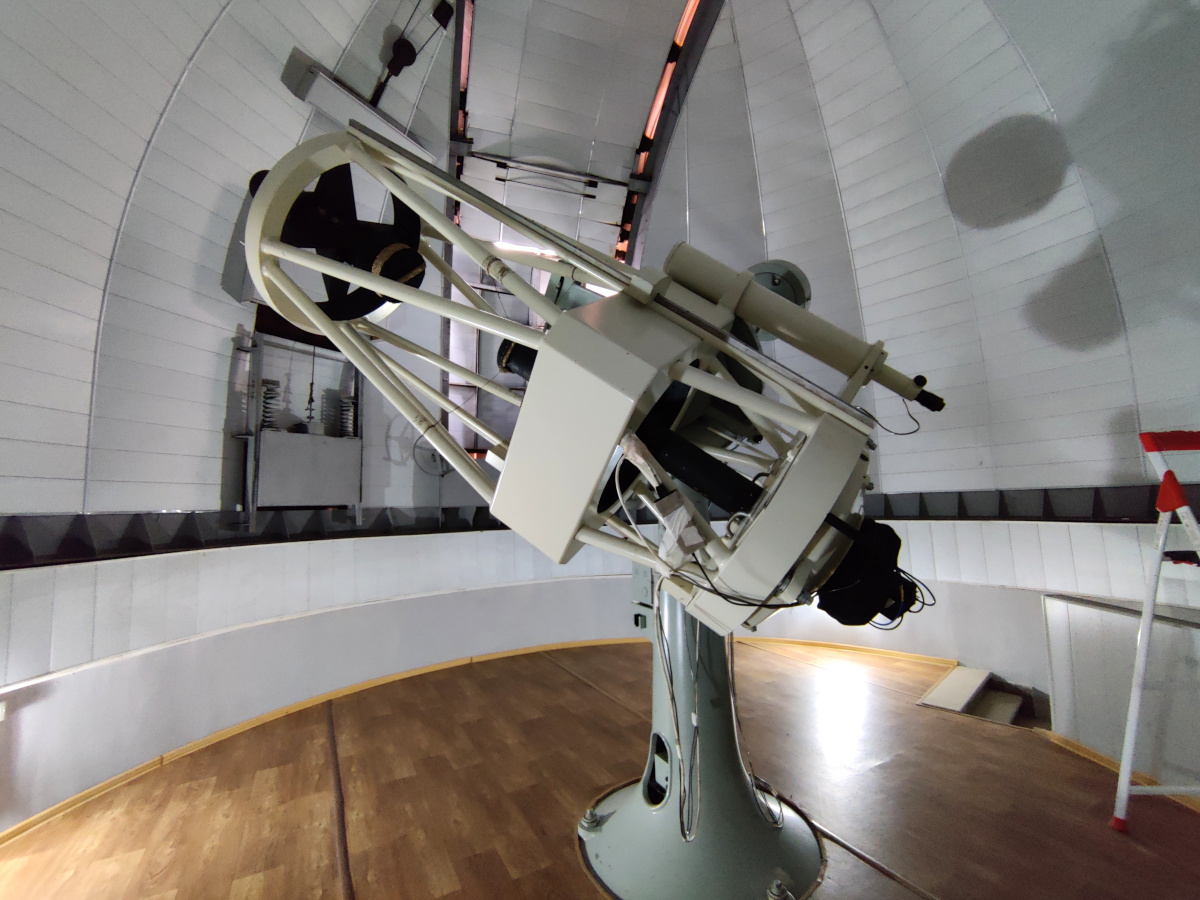
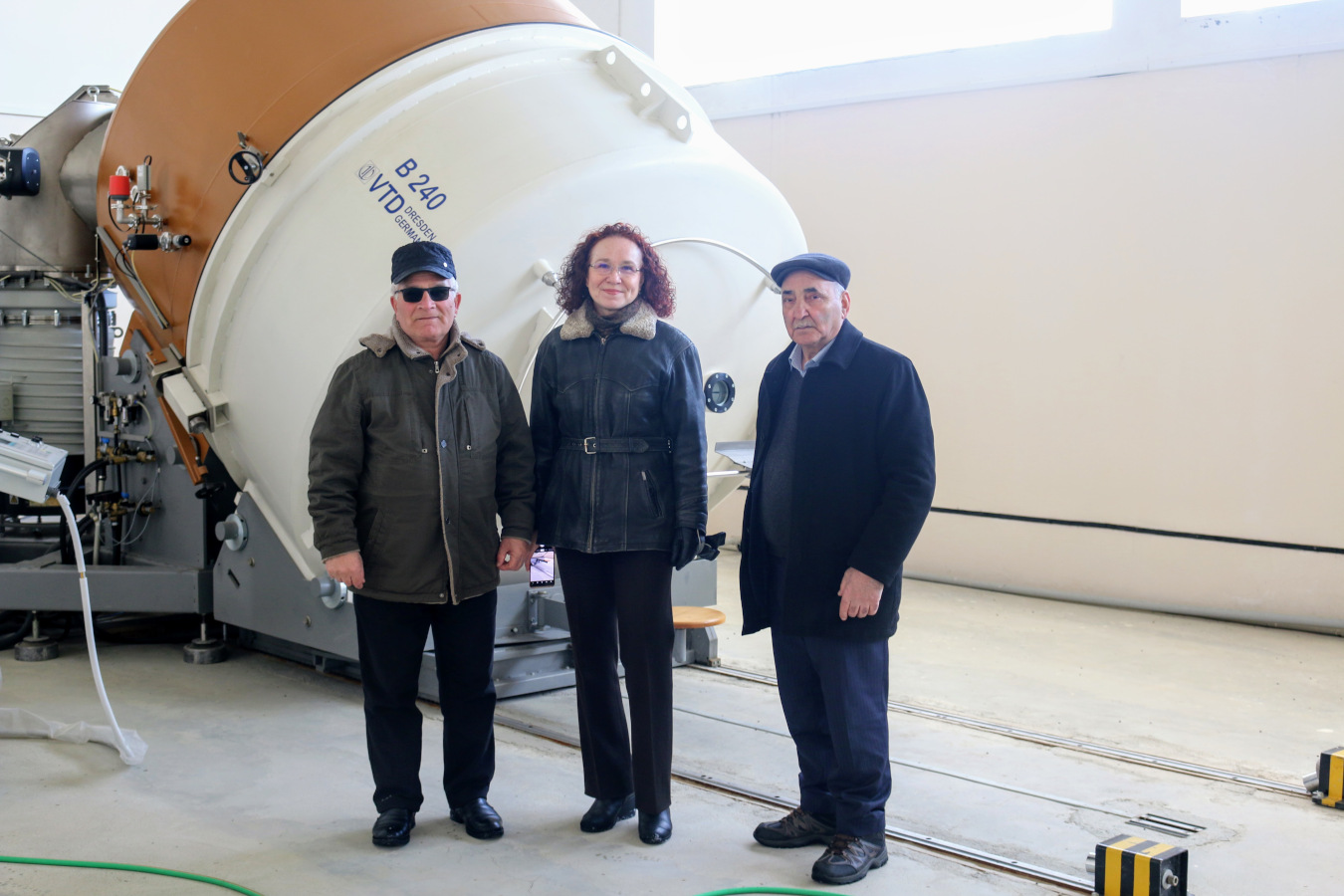
The Zeiss 60-cm telescope, located in one of the domes atop the main observatory building, is used for photometry. Telescope engineer Manami Shukurov (left) and Dr. Janmammad Rustamov (right) showed me the ShAO's modern aluminisation facility.
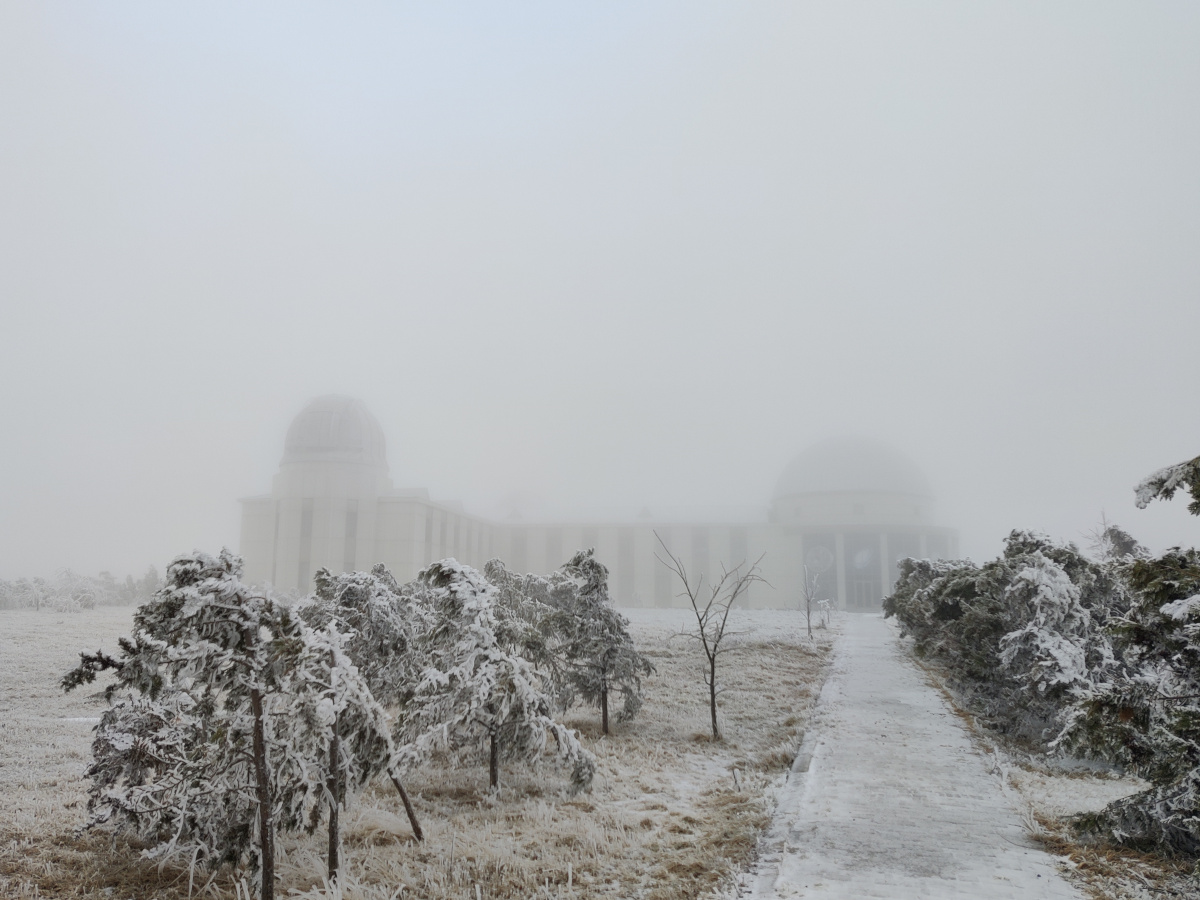
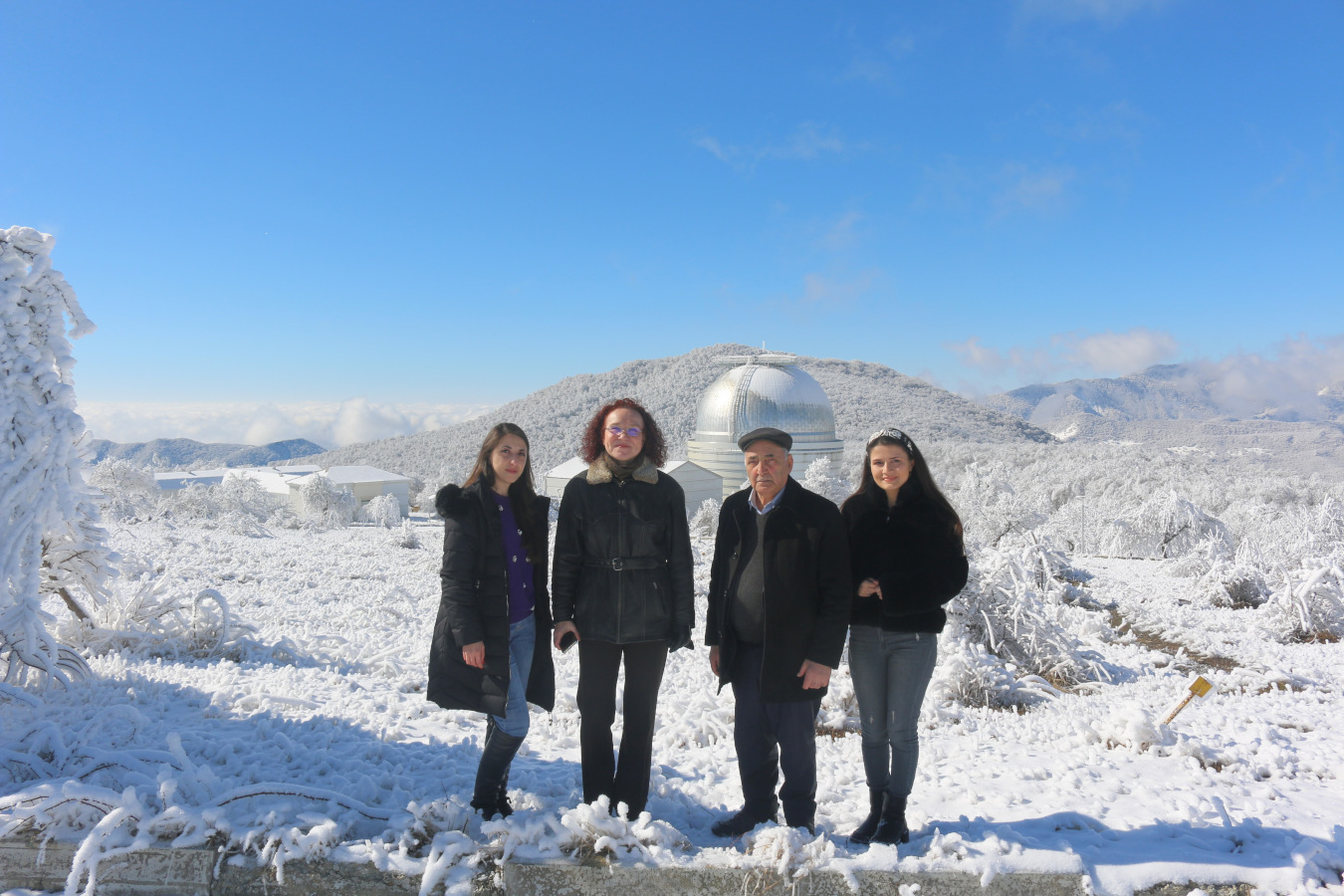
The weather in Pirkuli, where the Shamakhy Astrophysical Observatory is located, was terrible during our planned observation week. The fog cleared just before my departure, revealing the stunning beauty of the Caucasus mountains. From left to right: Aynura Hasanova, Anna Aret, Janmammad Rustamov, Aytaj Iskandarova.
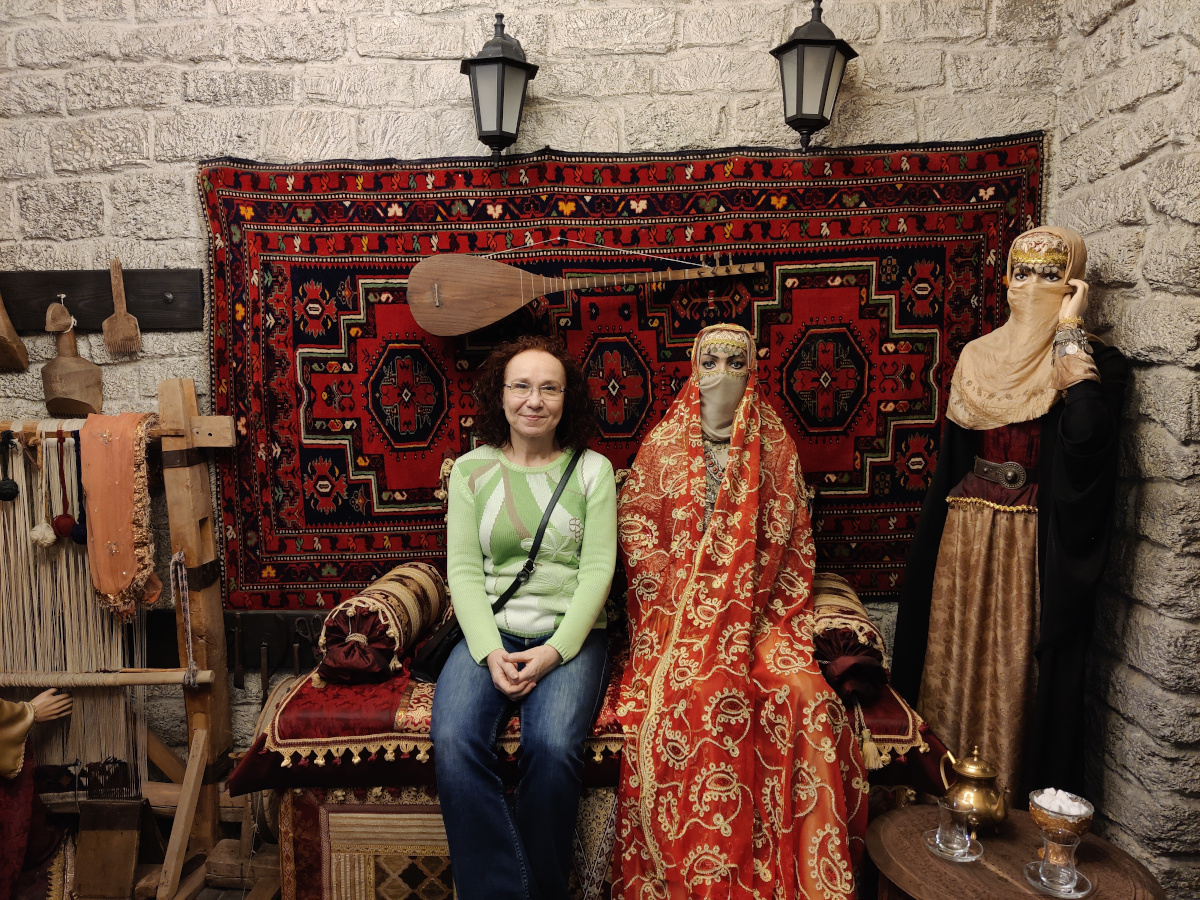
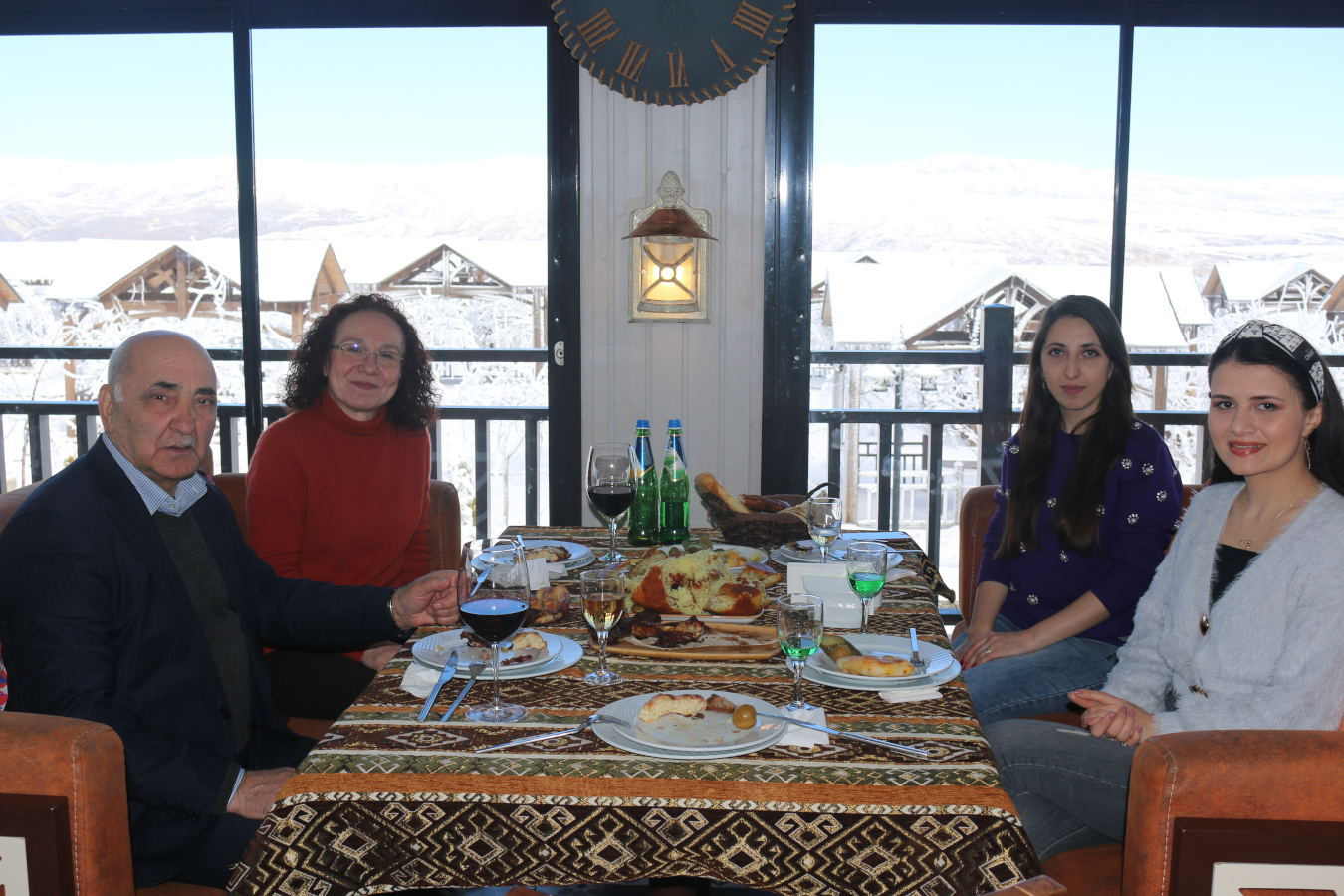
Azerbaijani carpet patterns and cuisine are unparalleled! Left: at the Shirvanshah Museum-Restaurant in Baku; right: at the Shama House restaurant near Pirkuli with Janmammad Rustamov, Aynura Hasanova, and Aytaj Iskandarova.
We arrived at Ondřejov in mid-January 2024 to start our research secondment. There we began a very fruitful experience, with many challenges since our three teenage sons accompanied us.
As soon as we arrived, on a dark and cloudy night, Dr. Julieta Sánchez Arias warmly greeted us at the airport. The Institute's van was ready to take us through snowy and winding landscapes to our forthcoming home for two unforgettable winter months. Villa Leonora, in Ondřejov, is a large and comfortable residence, with cozy rooms and all the amenities necessary for comfortable living. Exhausted from the long trip from La Plata, Argentina, we went to sleep without unpacking. The next morning, we began our day accompanied by Dr. Michaela Kraus, who cheerfully guided us to the Institute along a path that went up and down through magnificent forests. This path become a familiar route for us, traveled daily as we enjoyed the tranquility and nature, a relaxing passage before beginning our scientific work.
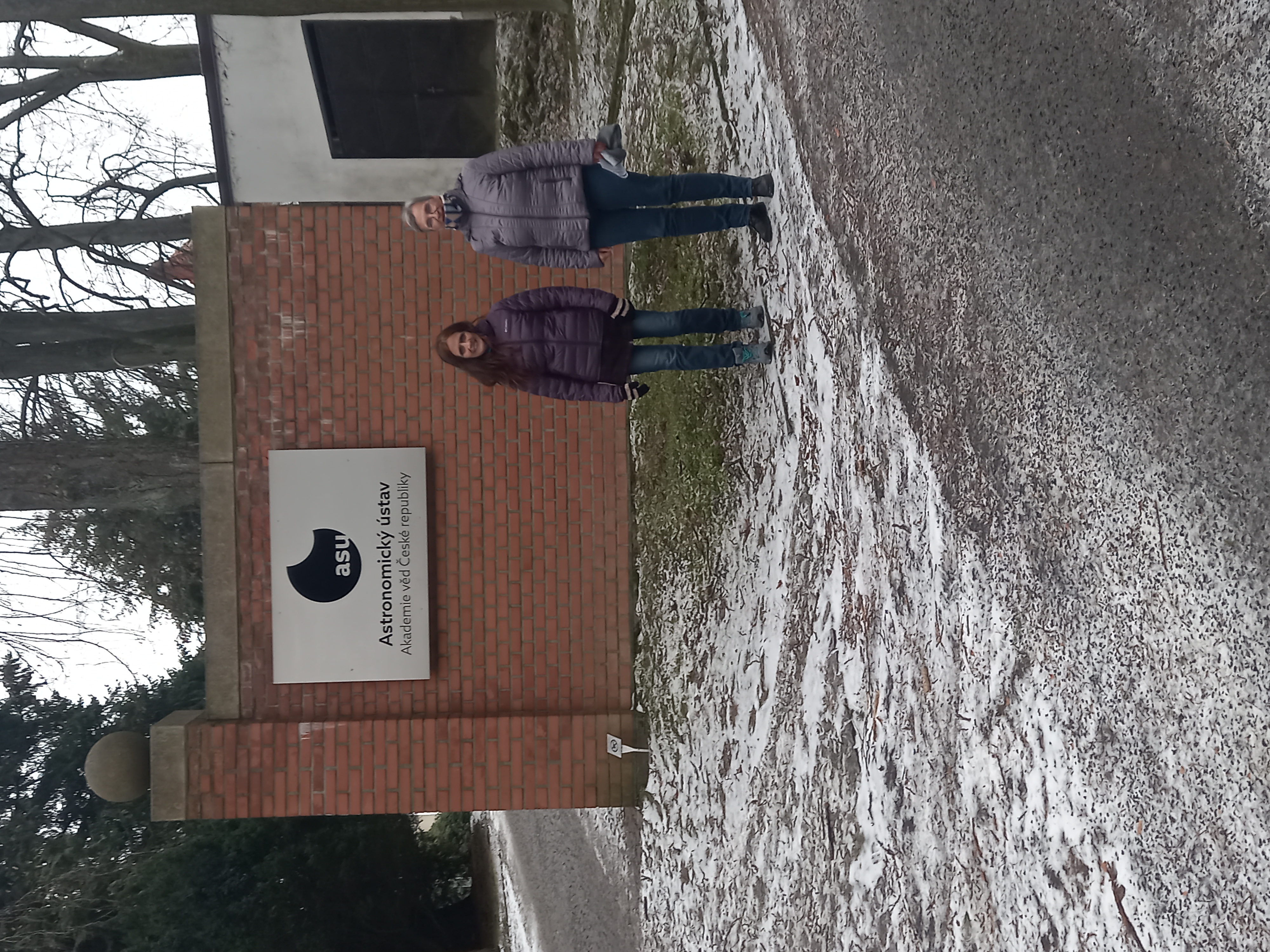
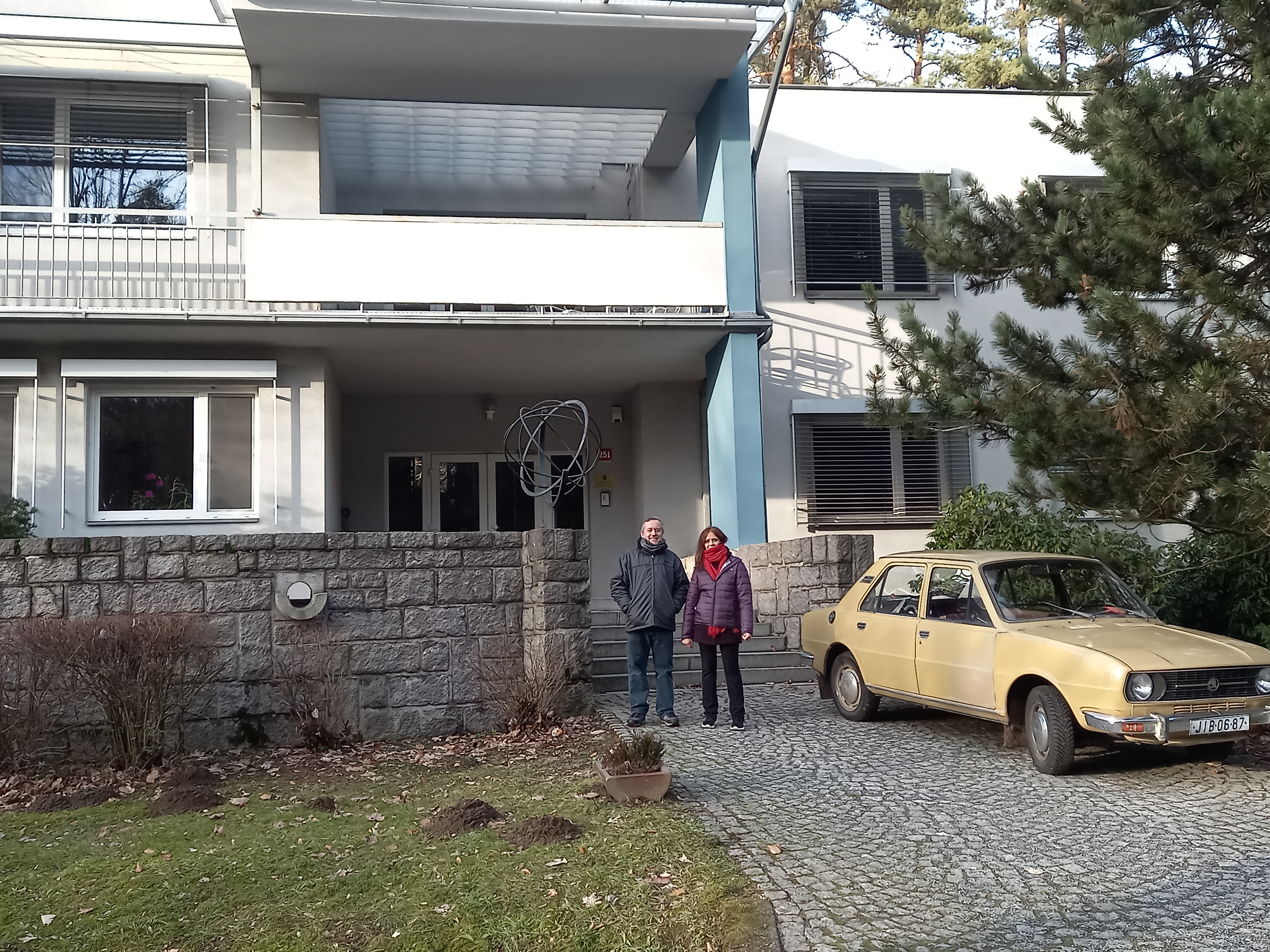
At the Institute, we met many researchers who welcomed us warmly. As soon as we settled in, we began exchanging ideas and outlining projects with them, actively collaborating to achieve our goals. They also attended to all our needs and questions and shared leisure experiences with us, such as walks or short excursions to places of interest. We enjoyed lunches in their company, engaging in jovial chats in the canteen.
During our stay, we liked to go to the Institute quite early in the morning, but beforehand we stopped by one of the two small and charming supermarkets in Ondřejov to stock up on what we needed for the day and leave a delicious breakfast for our kids. The Czech language was one of the biggest challenges, especially when shopping. However, we quickly noticed that the serious faces of the Czech inhabitants did not express rejection towards us for being foreigners or strangers. On the contrary, they kindly answered our questions and even joked with us, using an improvised sign language. Food in the Czech Republic was a whole universe to discover: splendid breads with seeds, delicious cakes, mysterious sandwiches, and salads. In the Institute's canteen, we knew the menu in advance because the dishes were posted on the local website, allowing us to translate them beforehand. Thus we became loyal tasters of Czech dumplings, a wide variety of sauces, and desserts. The friendly canteen staff always welcomed us with a smile and a lot of patience. While we were working at the Institute, our sons toured Ondrějov and really enjoyed the free, open football field available for the community to use.
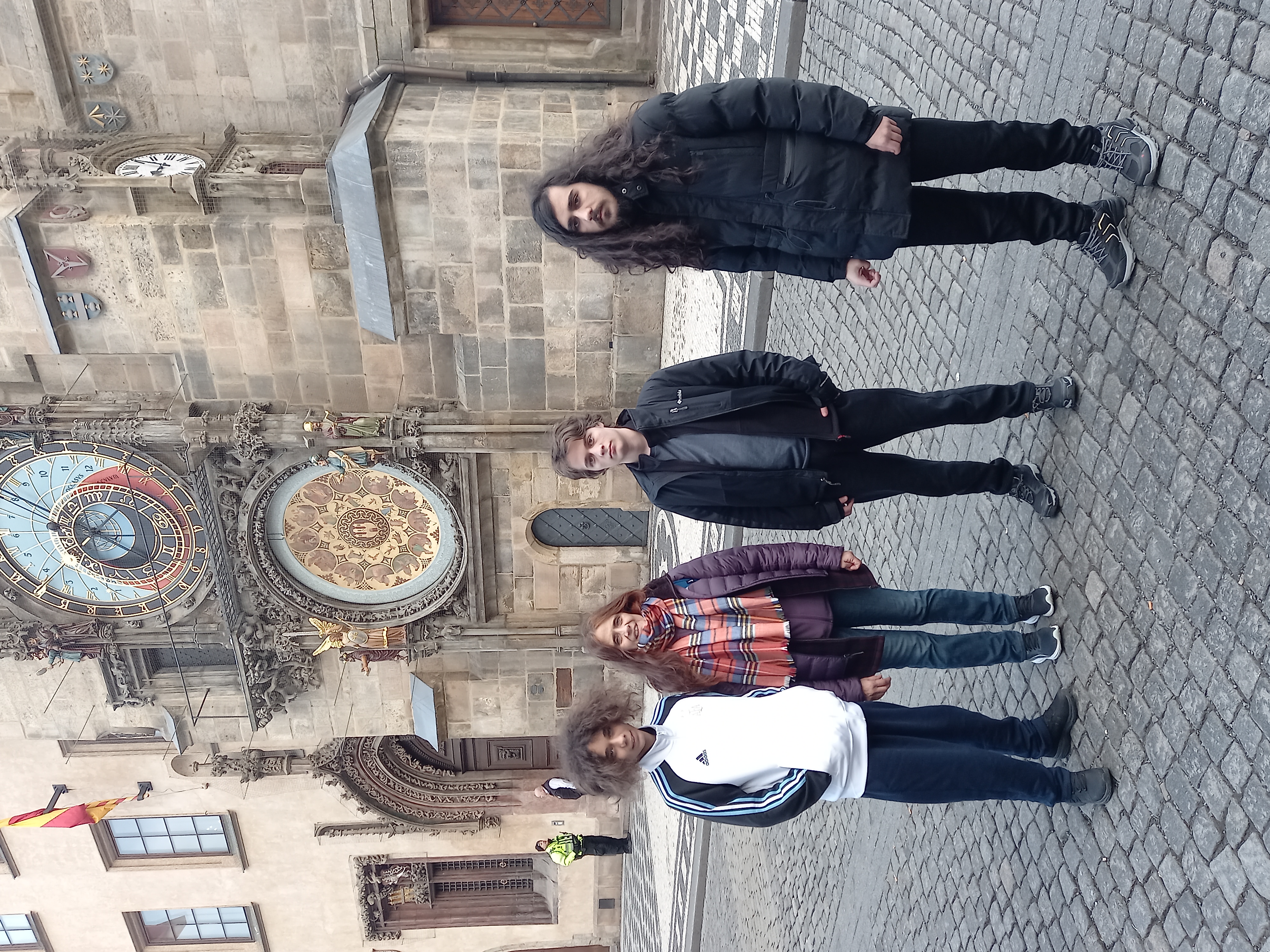
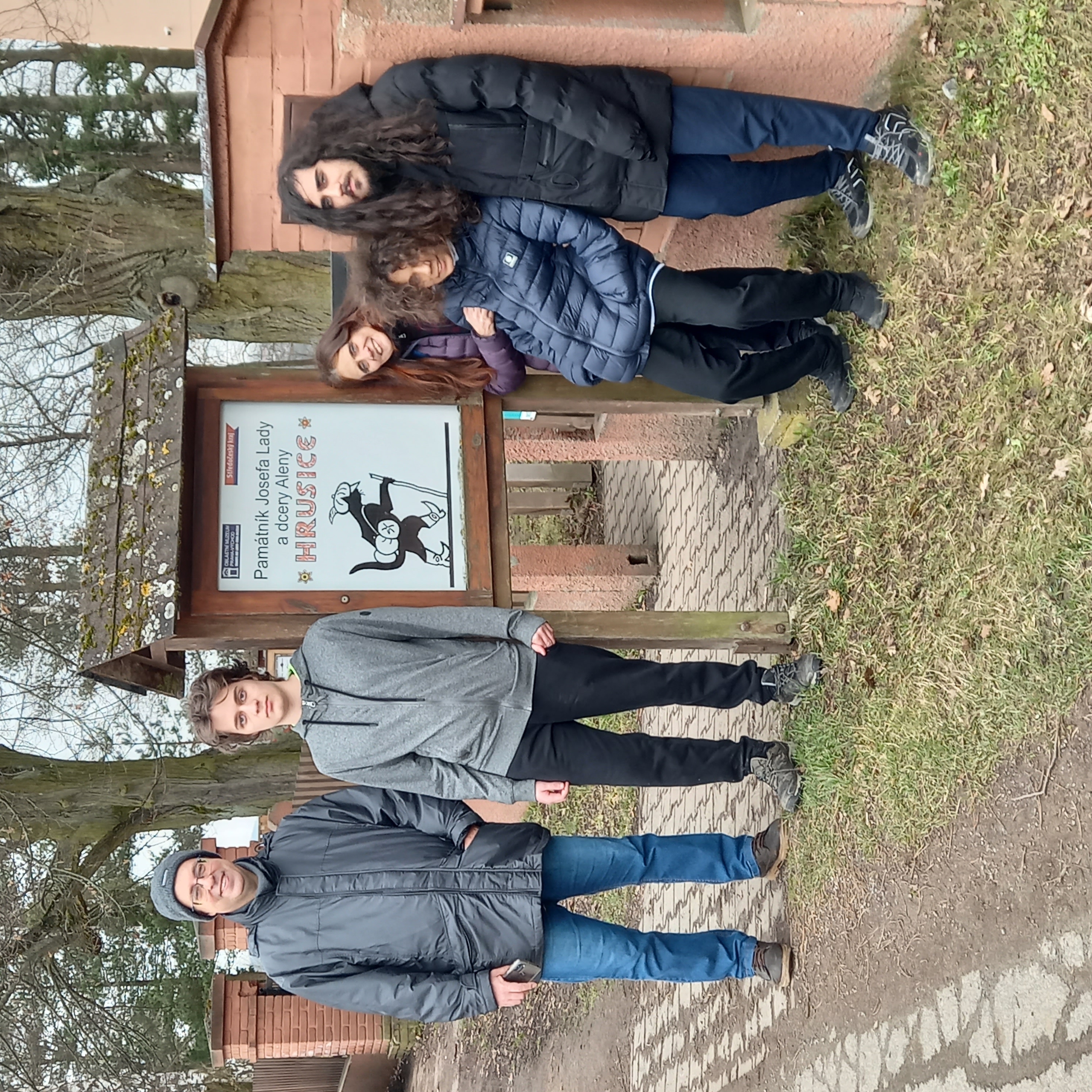
During the weekends, we took trips to Prague to the delight of our kids, who greatly enjoyed its magical atmosphere, full of historic buildings and bohemian neighborhoods, with small, cozy cafes and restaurants. We not only visited the big city but also small towns like Mnichoviche, Hrusice, Jevany and, others on long walks. These quiet and beautiful places were separated by forests with fallow deer and countless birds.
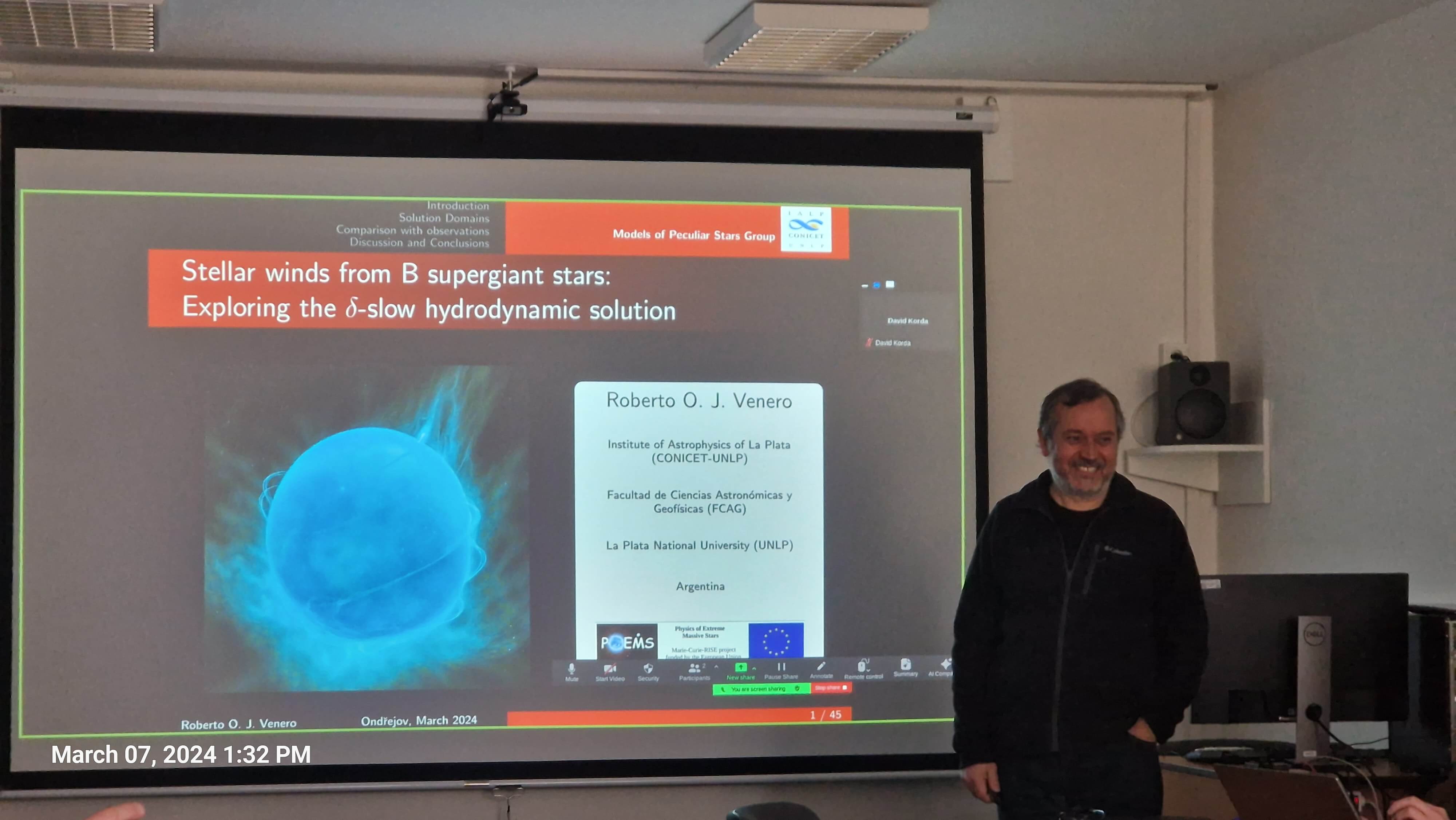
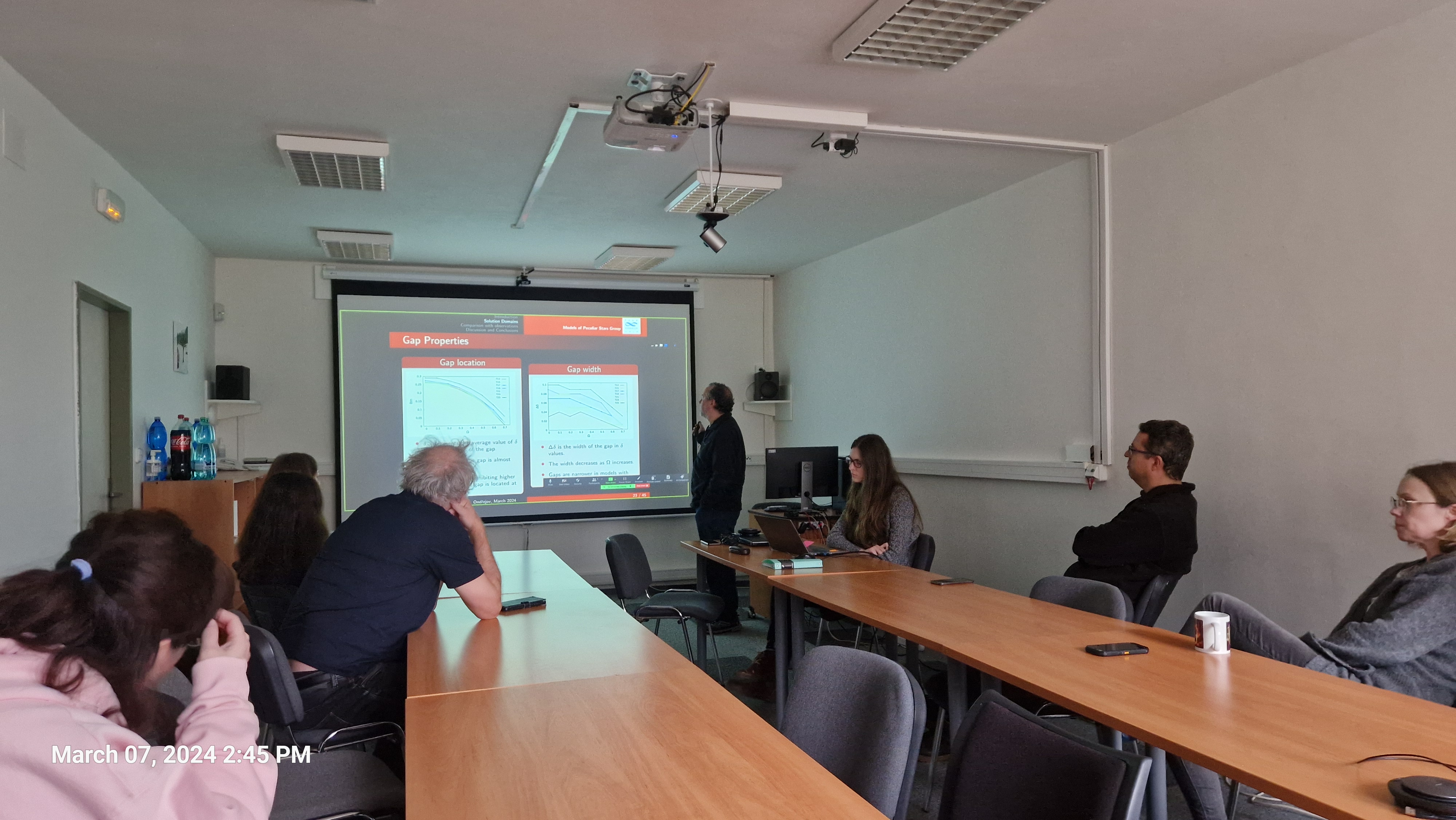
Meanwhile our workdays were very productive. Roberto worked on computer simulations to model the stellar winds of B-type hypergiant stars with the expert help of Dr. Nemeth. Together, they combined the outputs of the FASTWIND and CMFGEN codes to achieve good fits of the hydrogen line profiles and estimate the wind parameters: terminal velocities and mass-loss rates. Exchanging ideas and projects with Dr. Dieter Nickeler and Dr. Kraus was a significant steep in preparing the secondment of the recent UNLP graduate Melina Fernández. María Laura worked on reducing the infrared spectra of hypergiant B stars and B[e] stars, sharing these new observational data with Dr. Michaela Kraus, Dr. Marcelo Borges and Dr. Olga Maryeva. She gain expertise in modeling CO molecular emission and hydrogen lines with Michaela Kraus and shared her experience in reducing and analizing high resolution infrared spectra with Marcelo Borges Fernandes. Additionally, she discuss on topics and targets for new observing proposals for the Gemini Observatory, in collaboration with Ph.D. student Aynur Abdulkerimova, Dr. Maryeva and Dr. Kraus.
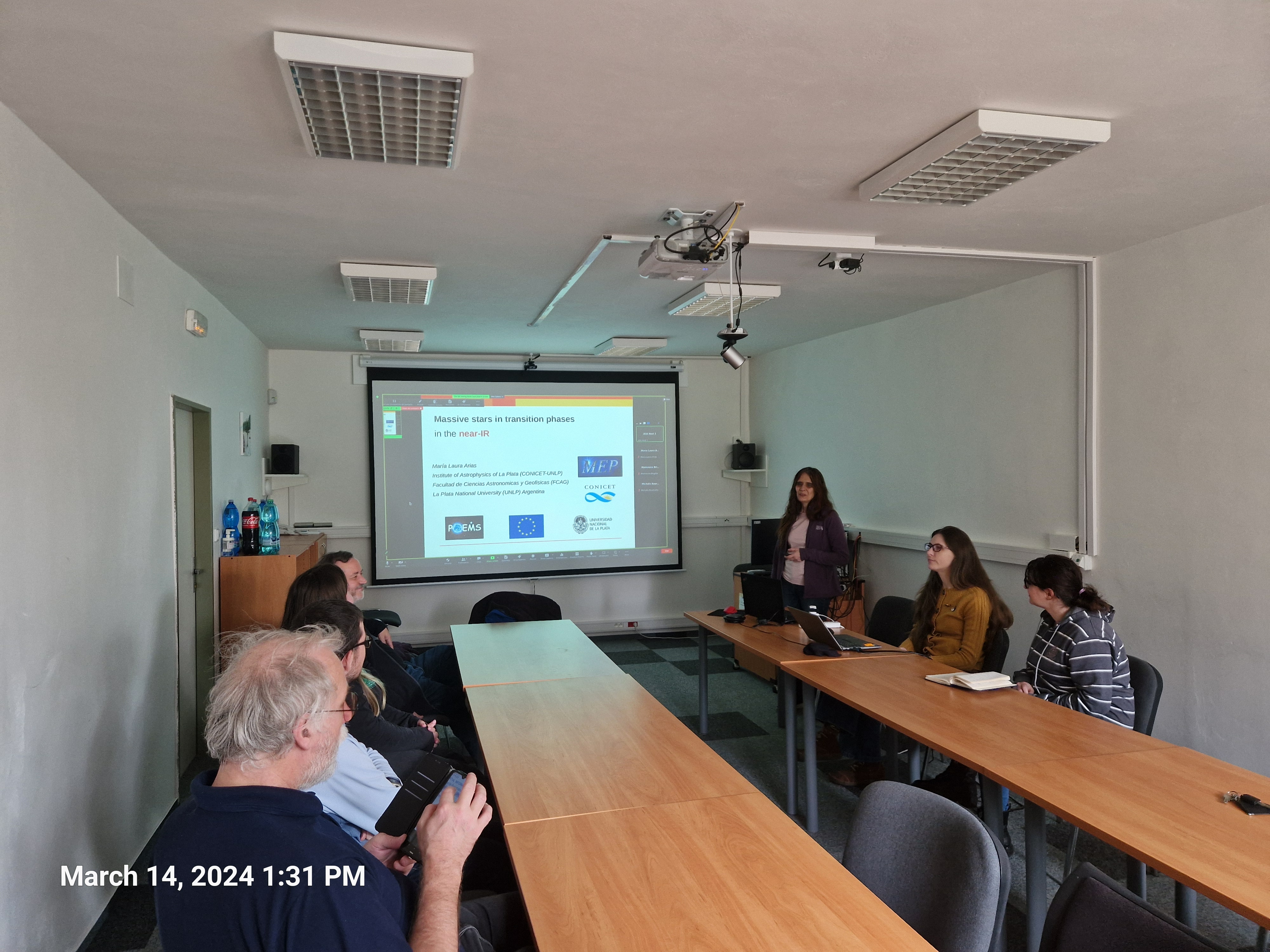
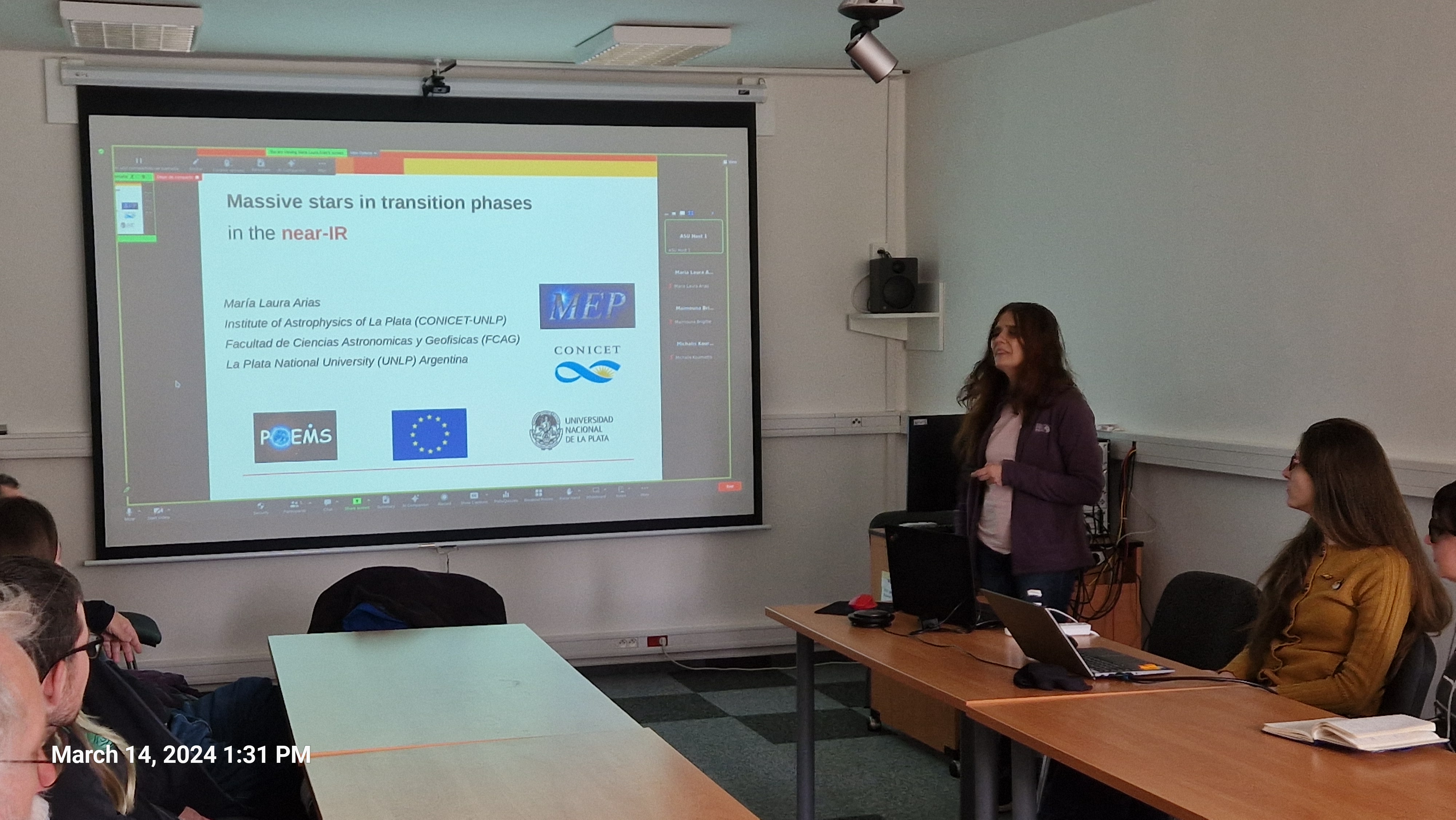
The weekly meetings with our colleagues facilitated a useful exchange of ideas and a discussion about the problems encountered in our research. We also took part in seminars, where we presented our latest work and received valuable contributions and suggestions for future endeavors. The enjoyable dinners with colleagues at the Ondřejov pizzeria were unforgettable moments, marking the end of each work week in a warm and familiar atmosphere, full of lively conversation and camaraderie.
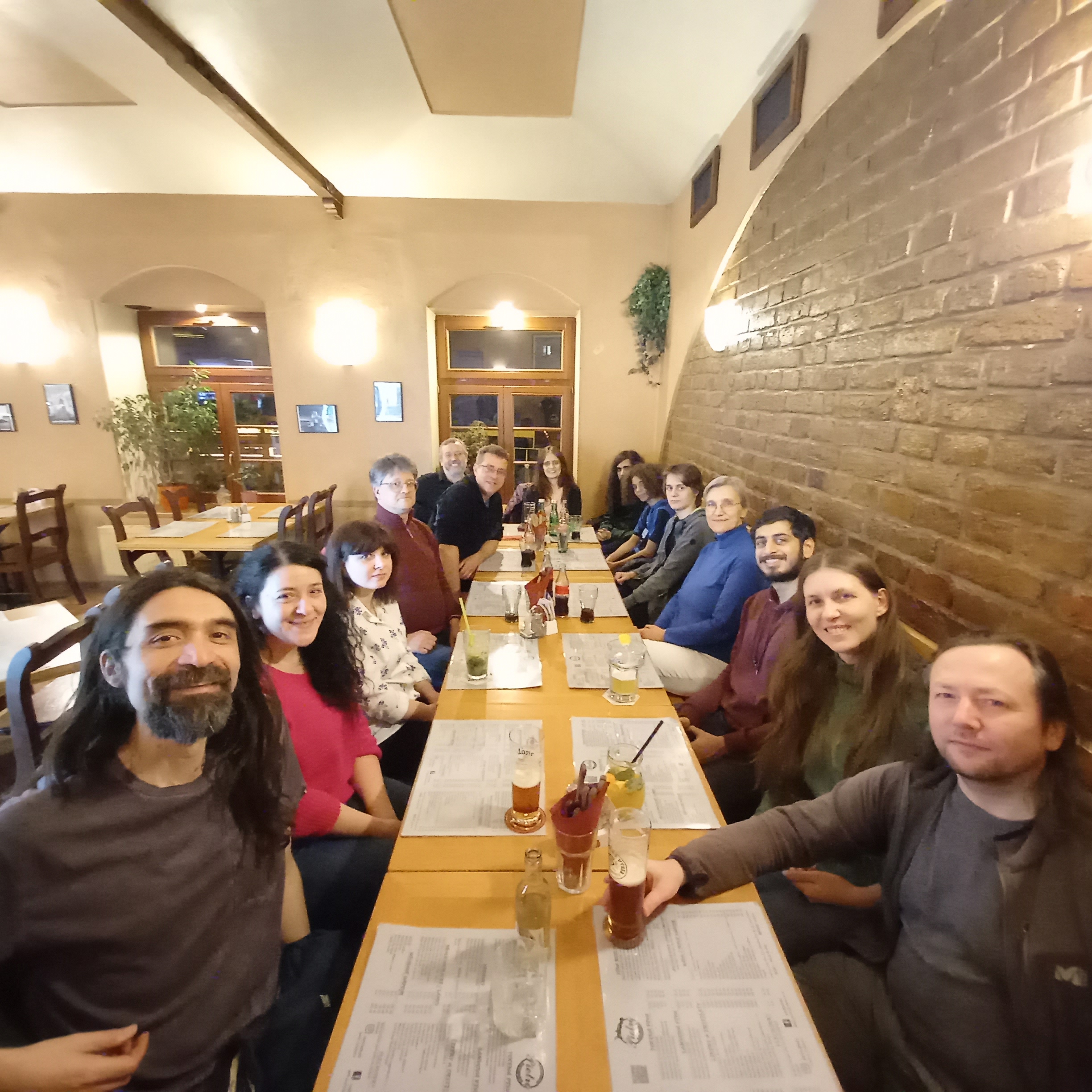
Our experience during this secondment was truly succesful. We carry with us very pleasant memories and a significant boost in our scientific research. We want to extent our hearfelt gratitude to everyone who shared these memorable times with us at the Institute.
I was able to enjoy my stay in Ondřejov, where the cold was not an obstacle to storing good memories. From the first day, I received a warm welcome, for which I will forever be grateful. I developed my research work with Dr. Dieter Nickeler. We had several meetings weekly to discuss various approaches to the problem we were working on, which is about the analysis of a model for describing circumstellar material using a nonlinear differential equation, also known as the Grad-Shafranov equation.
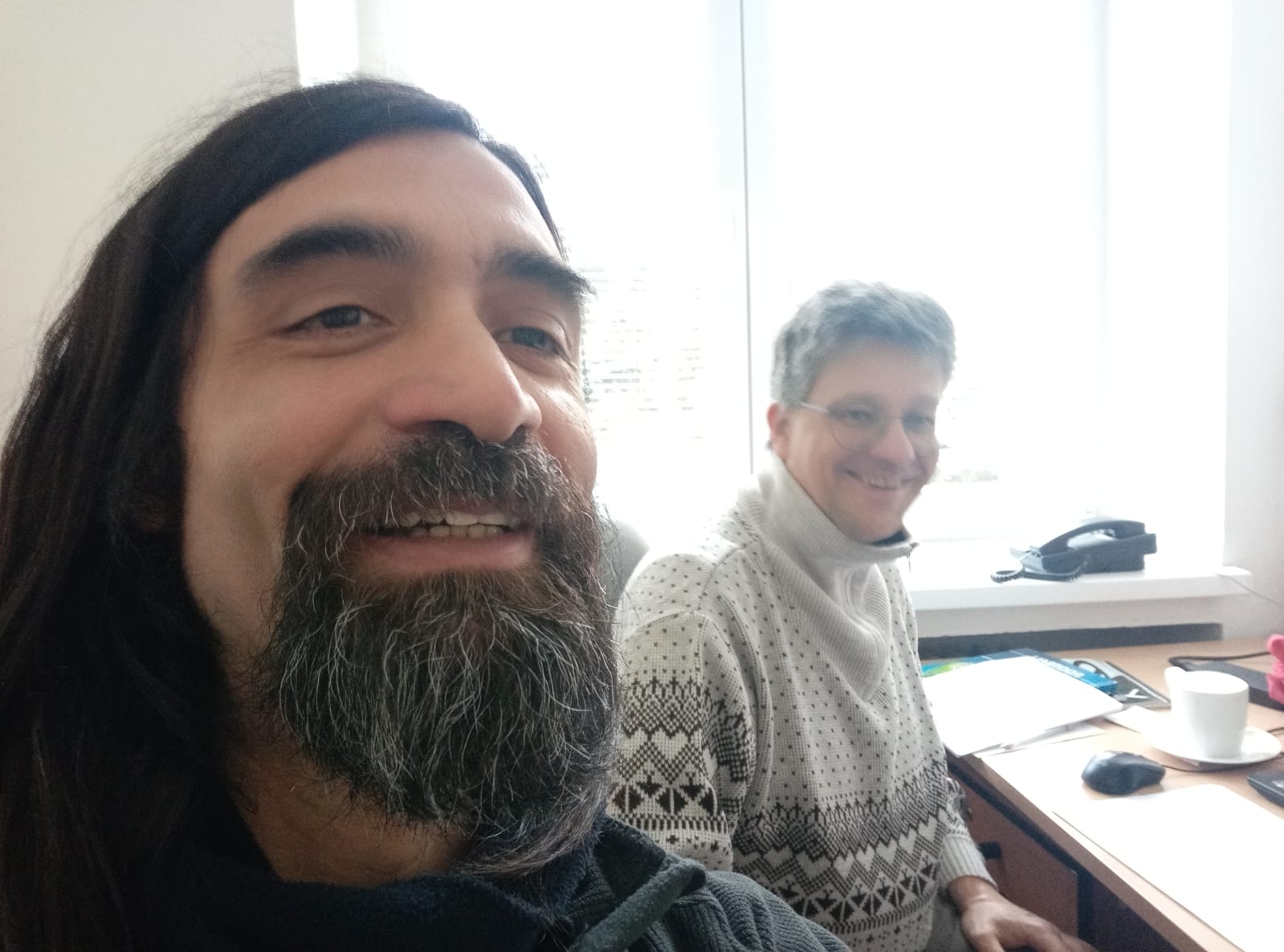
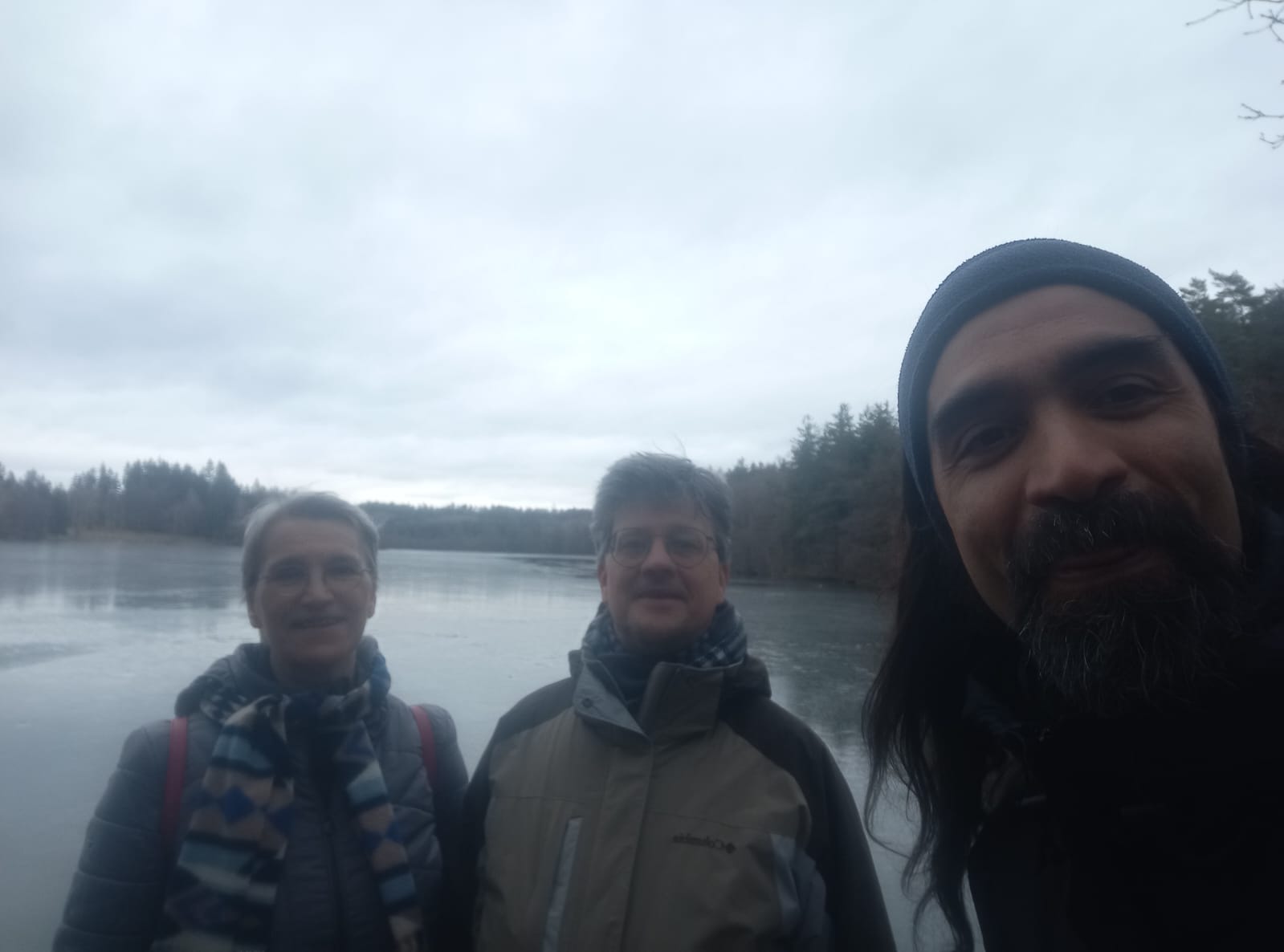
Starting new research topics in a pleasant and respectful environment has been very gratifying. Now, I continue working and collaborating with members of the project (Kuljeet and Julieta) on topics related to magnetic null points and the study of instabilities in stellar pulsations for the non-adiabatic case. All the people from the project and the solar department that I met were great. I felt they were well-disposed, pleasant, and eager to share good moments.
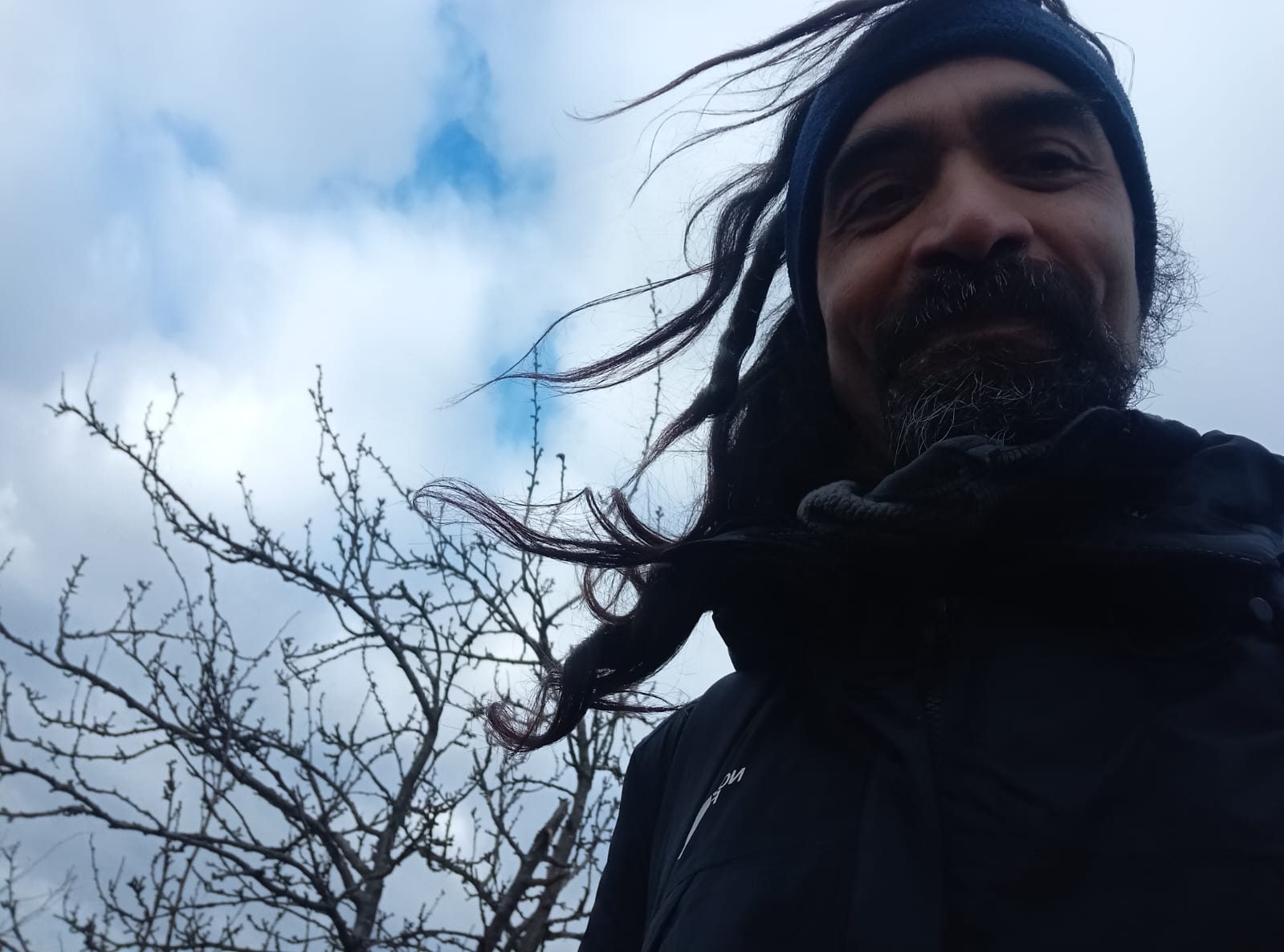

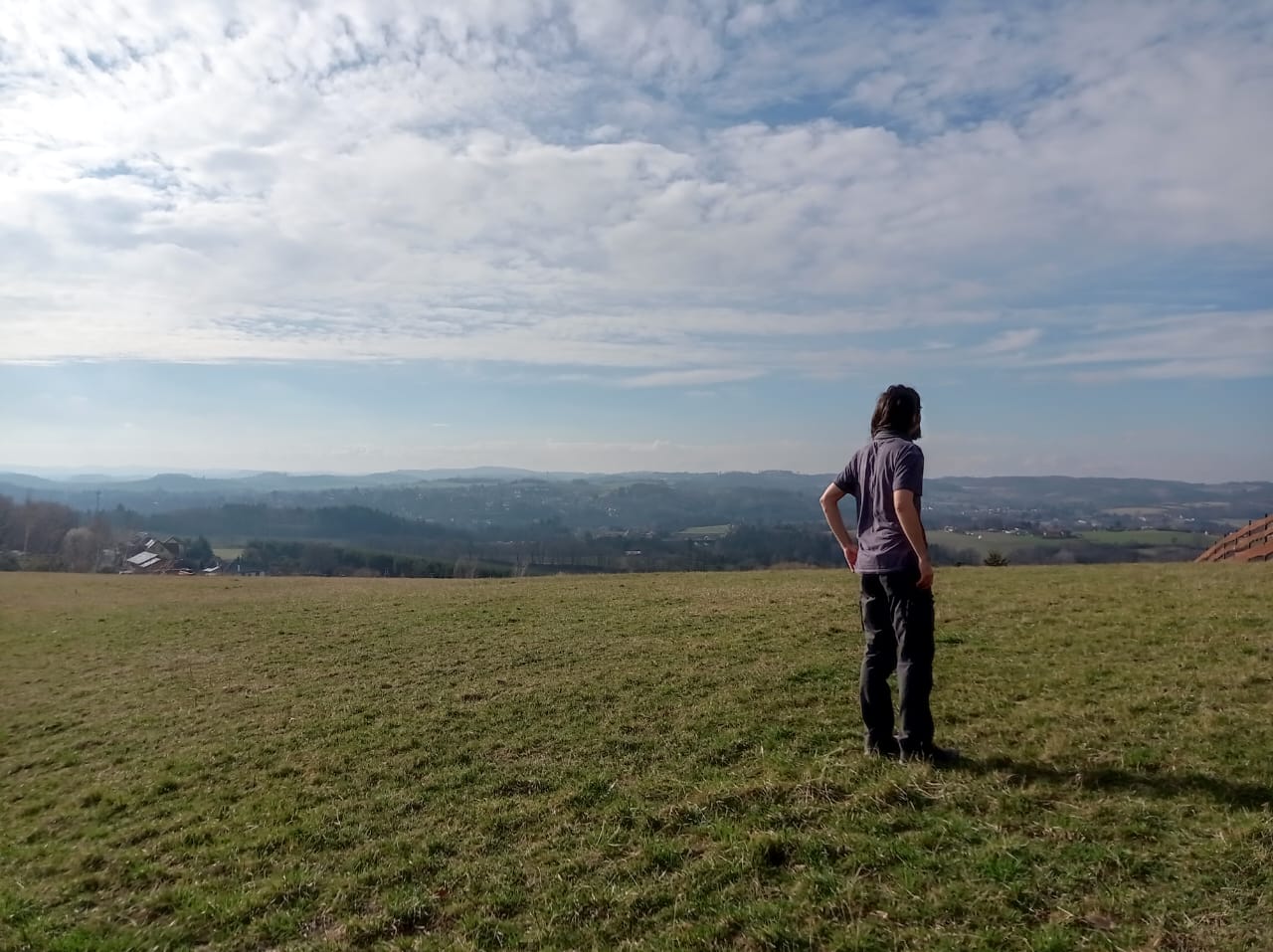
Another very positive opportunity was being able to enjoy the forests of the Czech Republic. I was able to take many walks that helped me reflect and find tranquillity in a truly meaningful way.
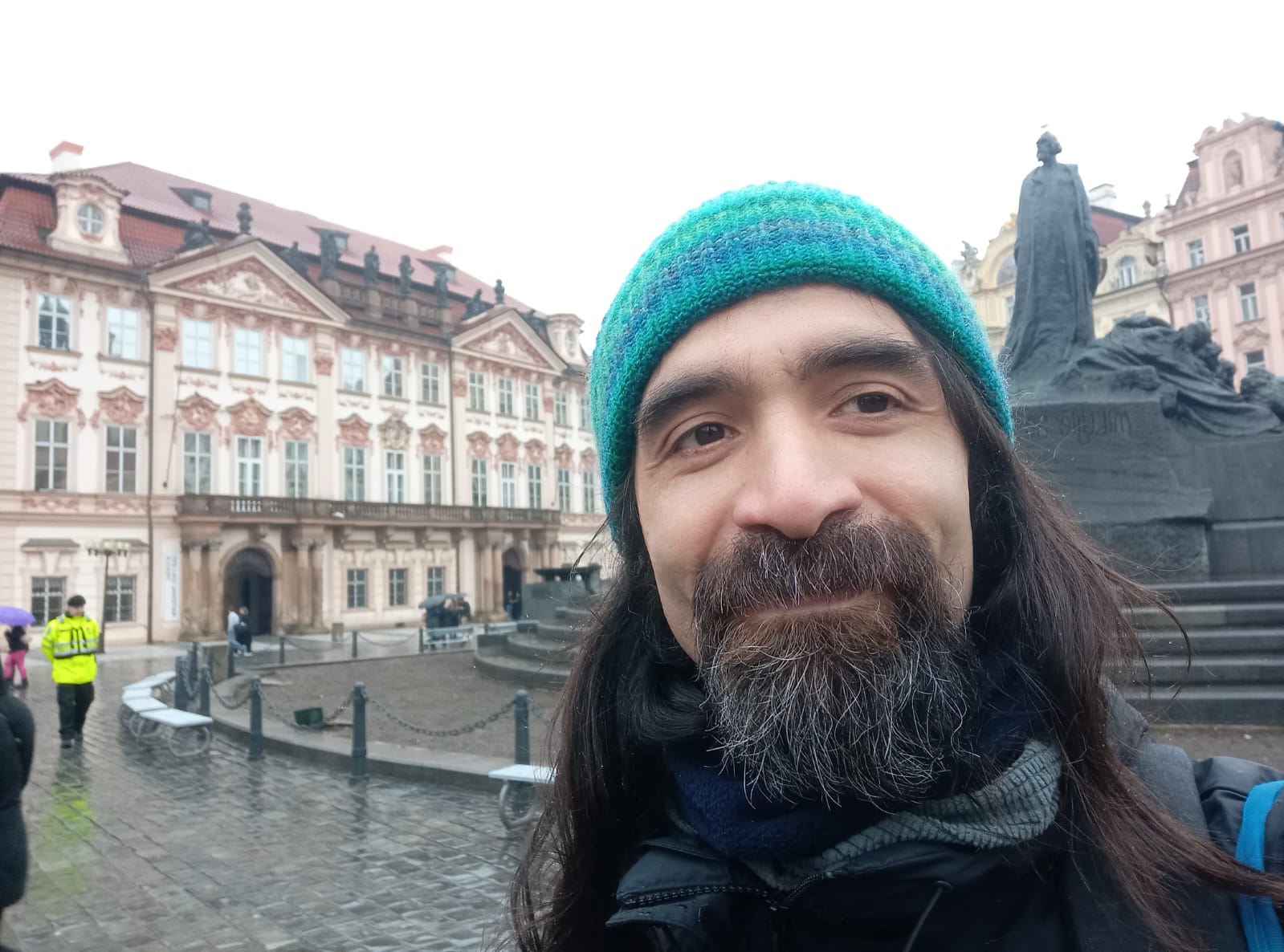
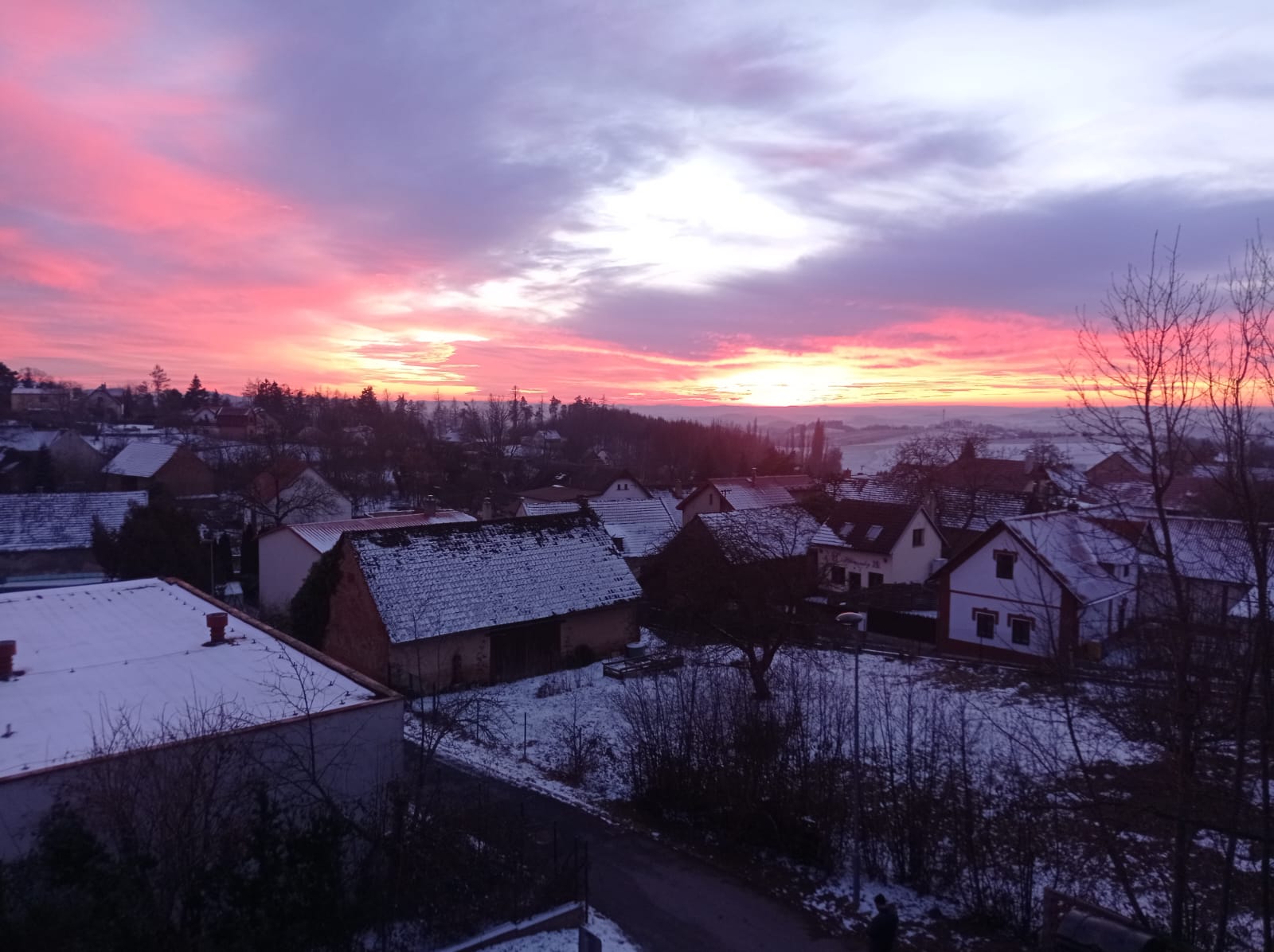
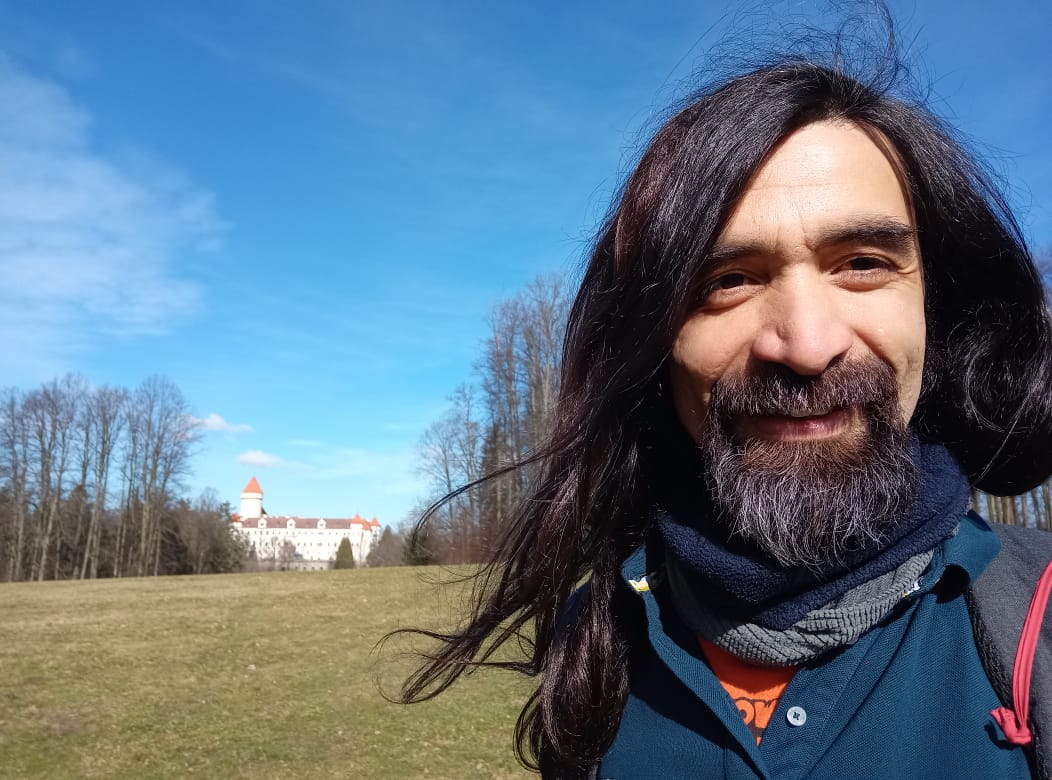
It was a very enriching experience, being able to work with pleasure, learn a lot of science, meet people, and learn part of Europe's history.
During my secondment at the Stellar Department of the Astronomical Institute in Ondrejov, I collaborated closely with Dr. Julieta Sánchez. Over the course of two weeks, I conducted an analysis of beta Cepheid stars using the ZPEKTR code. I acquired data from the ESO catalogue and successfully normalized the spectra, improving my skills at this. Our investigation involved comparing the angular velocity obtained through ZPEKTR model fitting to six helium lines with the results derived from rotational splitting on the light curves. Additionally, I learned how to use data of light curves from Gaia and attended seminars hosted by the stellar department.

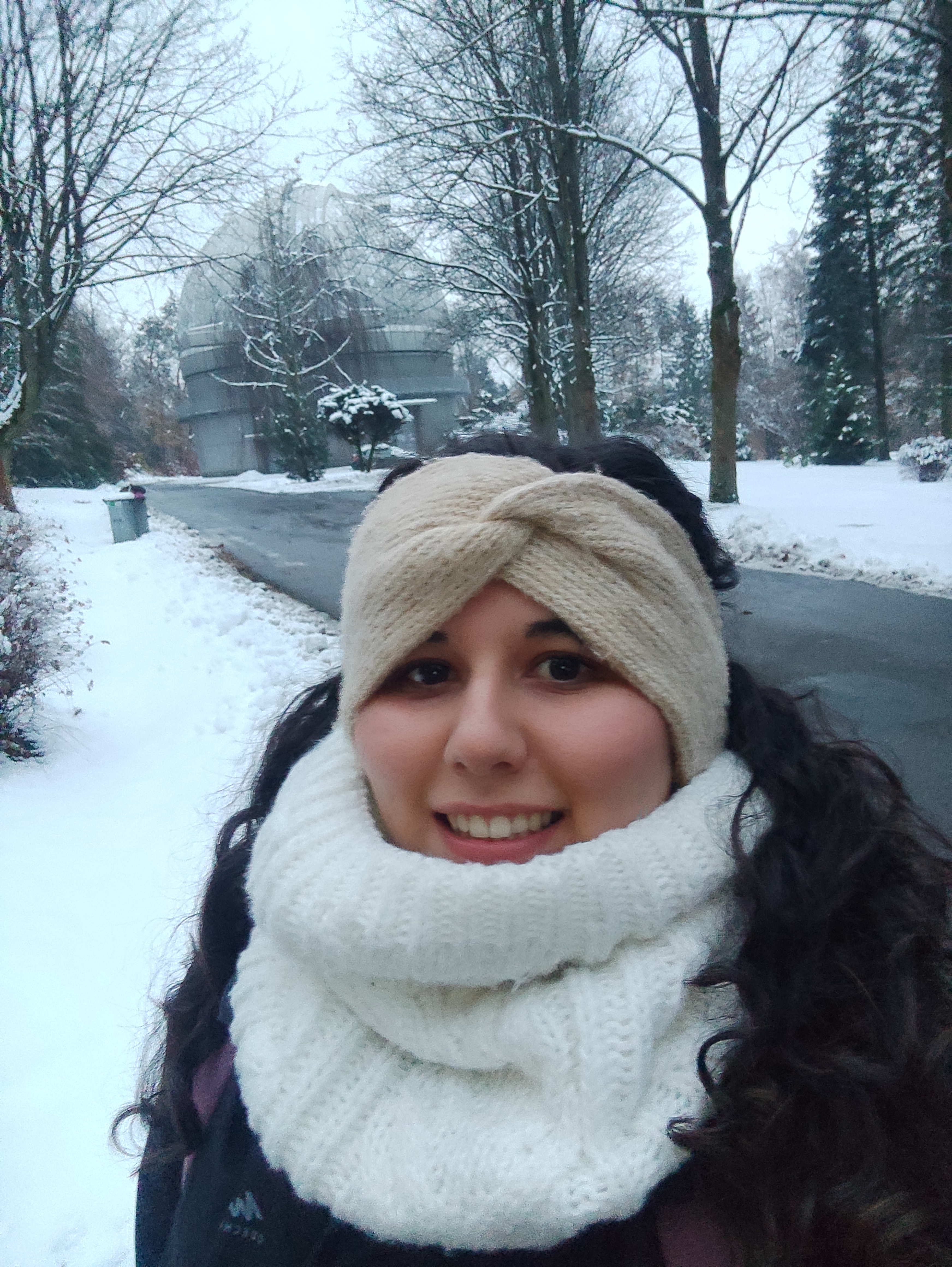
I enjoyed dinners at the pizzeria with POEMS members. The weekends I went to Prague and I visited the National Museum, with Julieta we walk around Ondrejov, the last days I really enjoyed the snowfall and the beautiful scenery it left behind.
I extend my gratitude to the POEMS members, with special thanks to Dr. Michaela Kraus and Dr. Julieta Sánchez, for organizing my arrival and overseeing all aspects of my visit.
During this secondment, I had the opportunity to work closely with Dr. Alex Lobel and engage in discussions with his colleagues on various topics. My main task involved processing data from ESO-UVES and applying synthetic models to estimate wind parameters. To achieve this, I used observed spectral lines to calculate rotational parameters, then convolved these parameters with synthetic models, interpolating them to compare with the observed spectra and identify the best-fitting model. Additionally, I attended regular seminars, gaining extensive knowledge about specific features in the observed spectra.
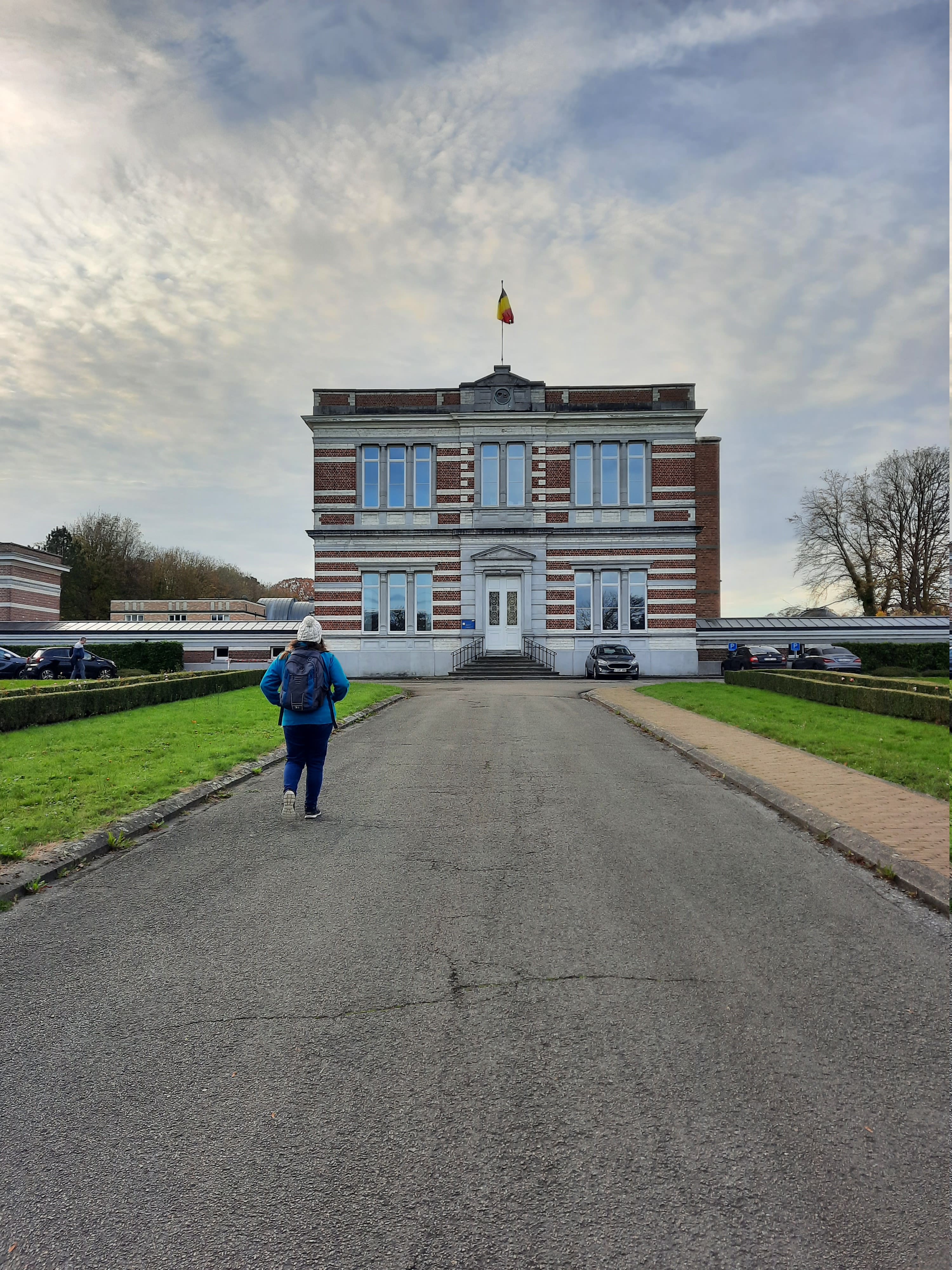
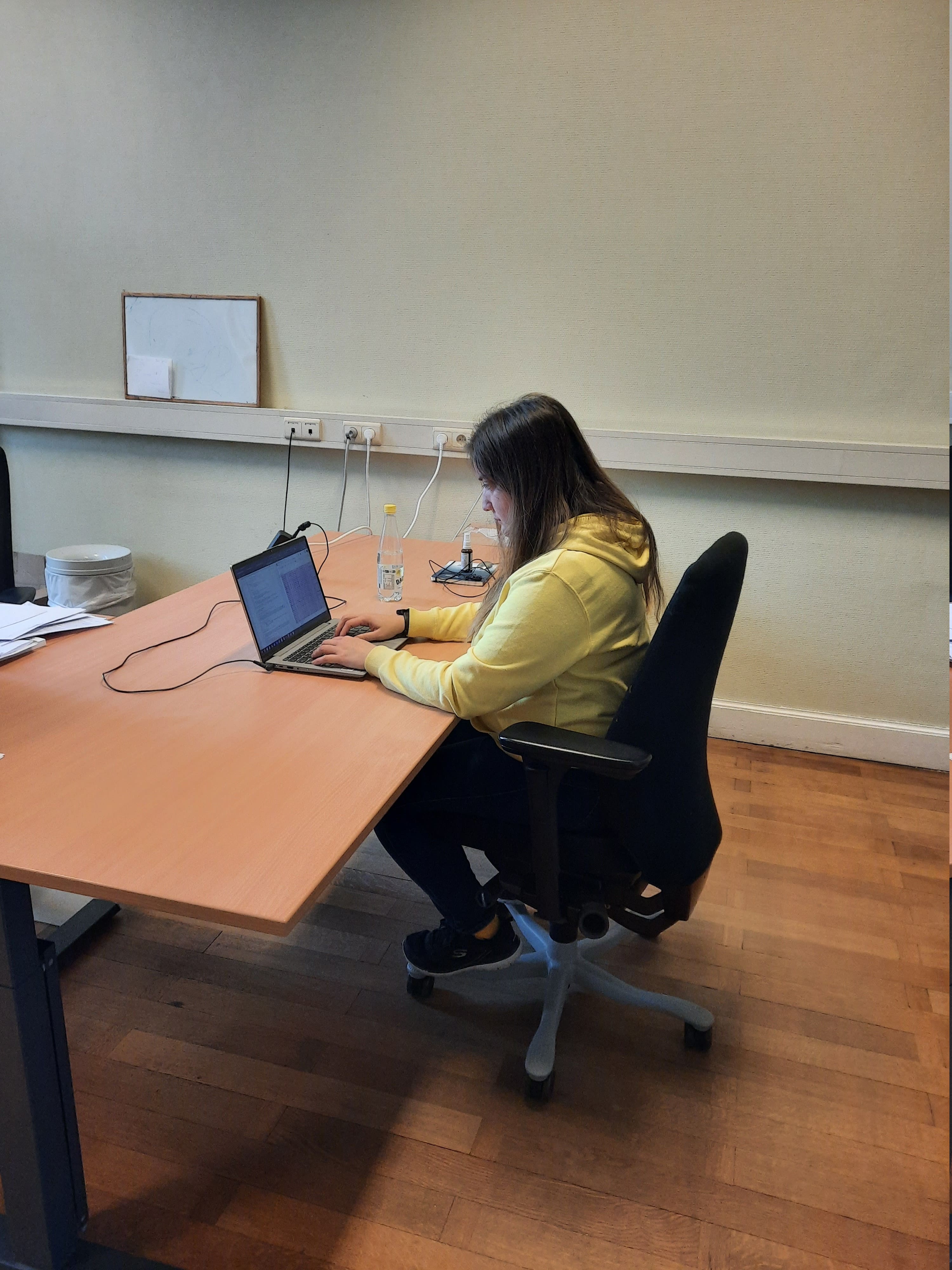
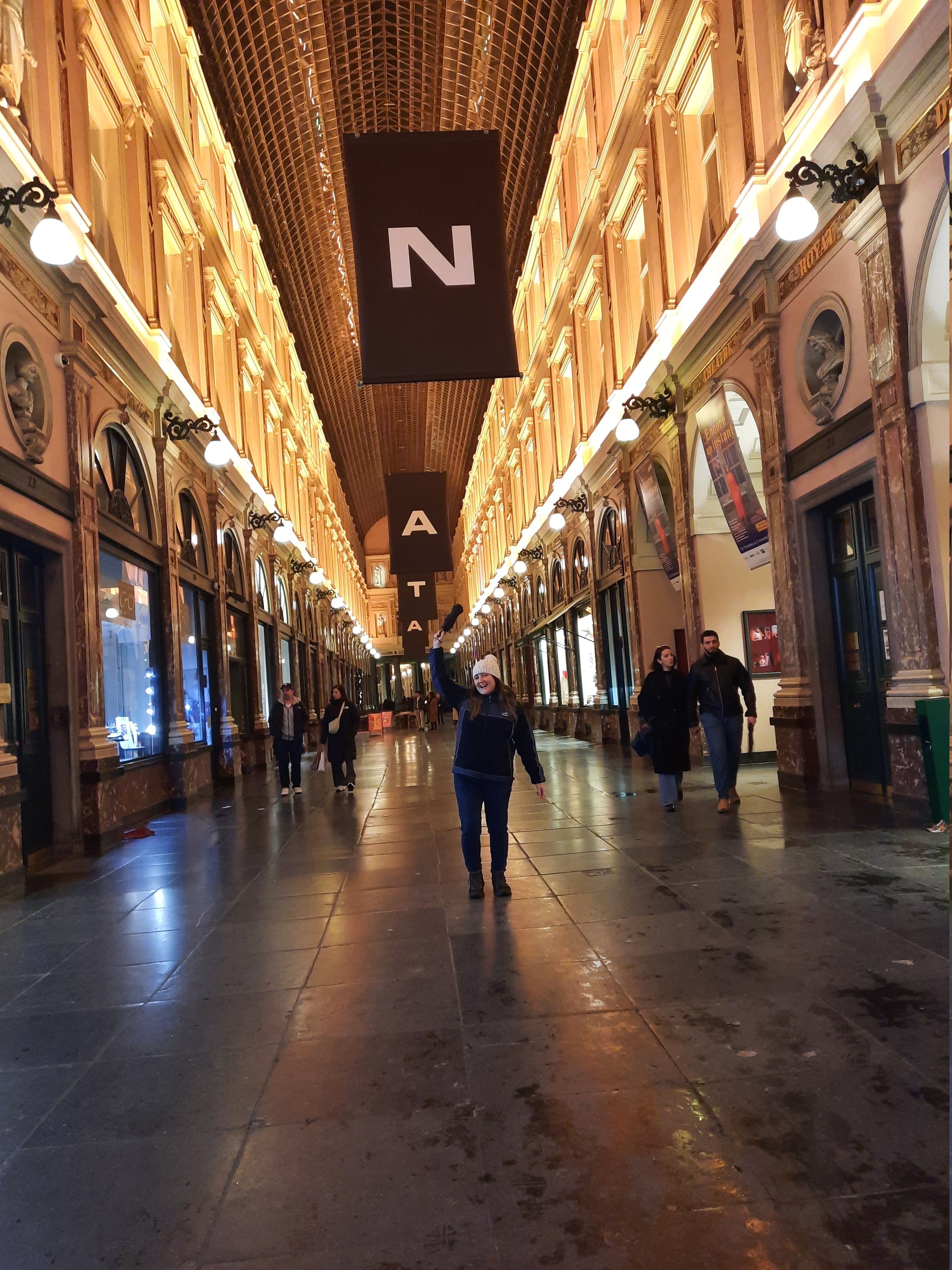
During weekends, I explored Brussels with my Chilean colleague Daniela, visiting nearby cities and local historical buildings. I particularly enjoyed the Winter Wonders event, where I indulged in hot chocolate and visited the Christmas markets continuously.
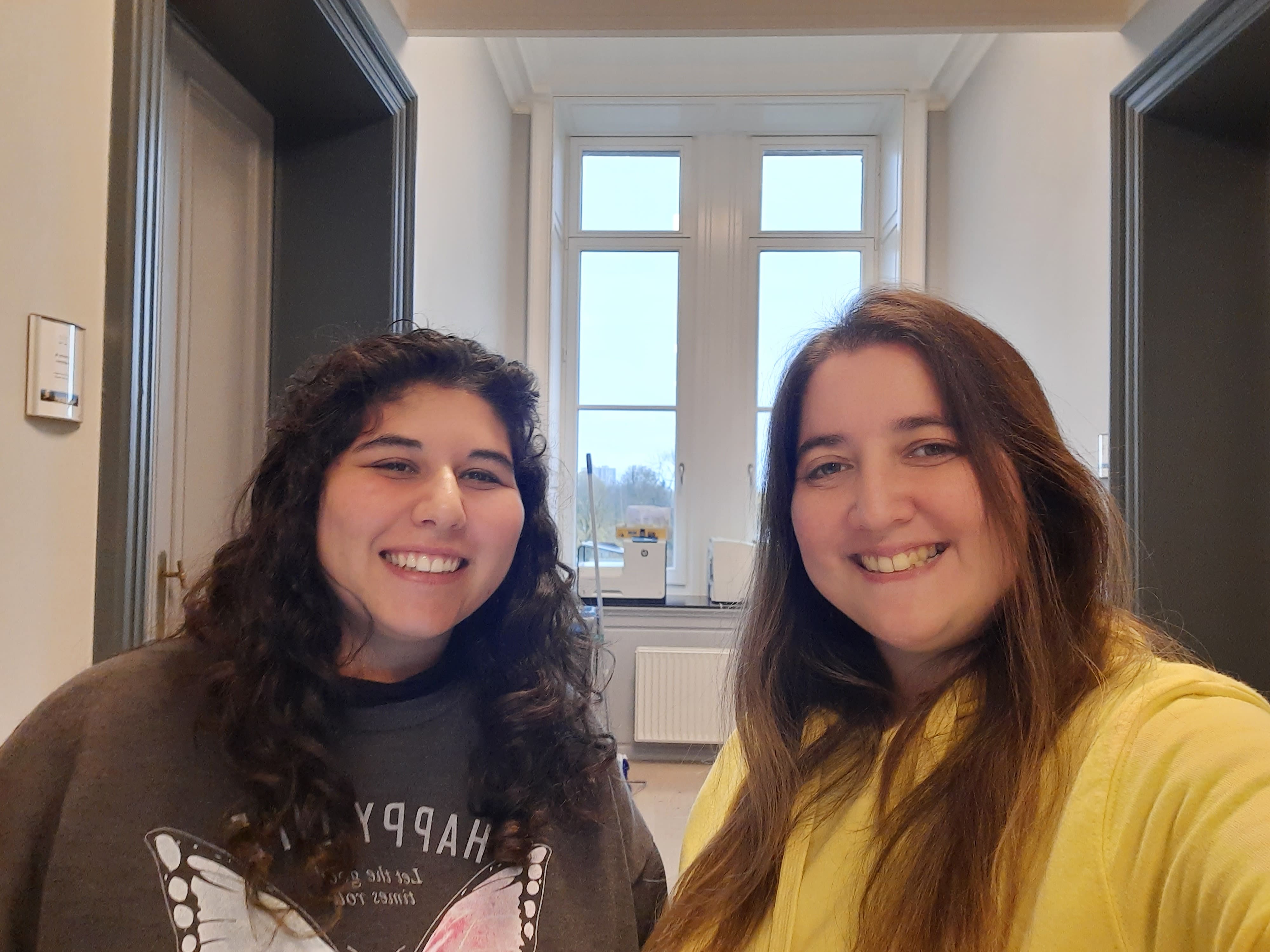
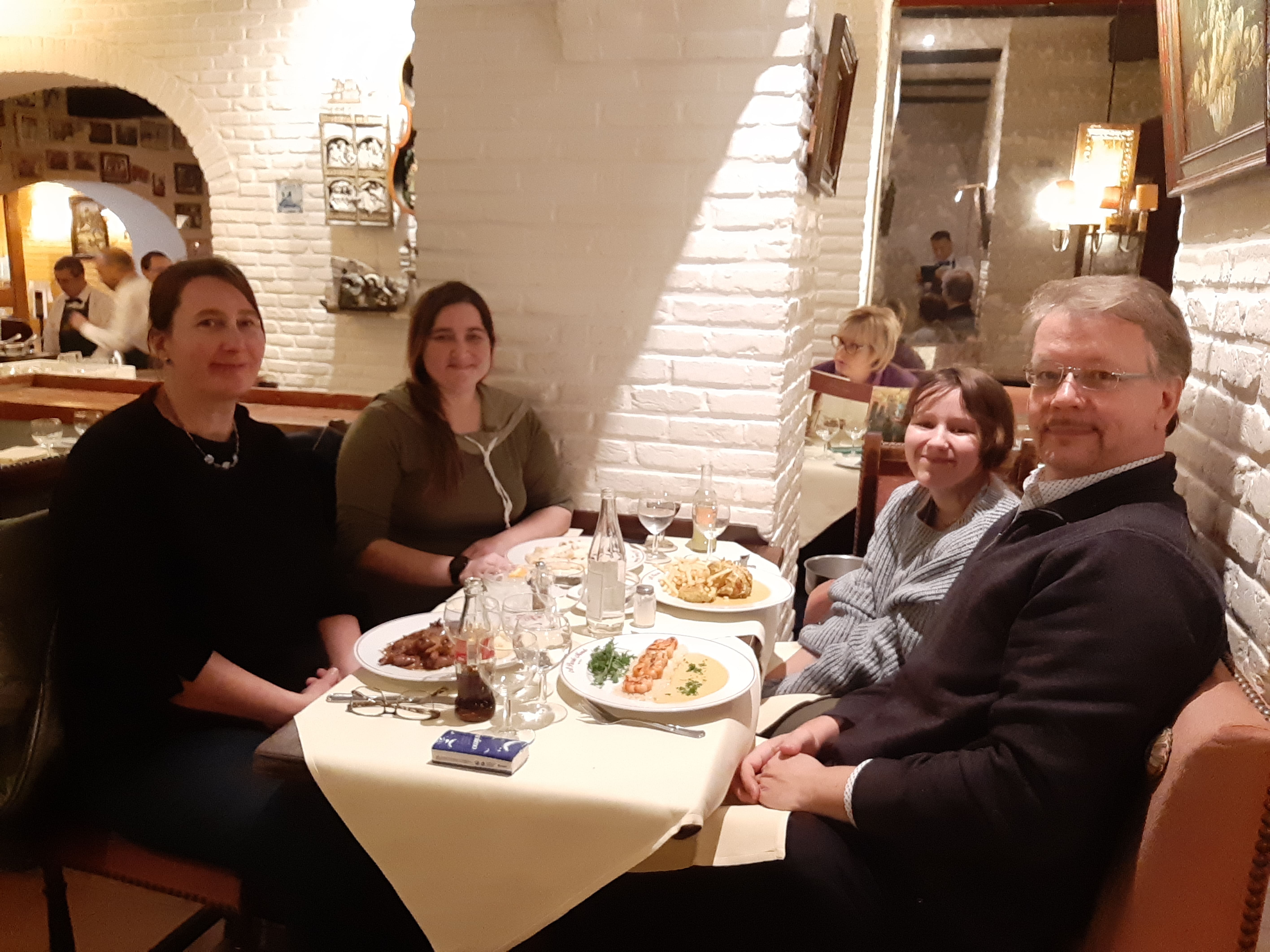
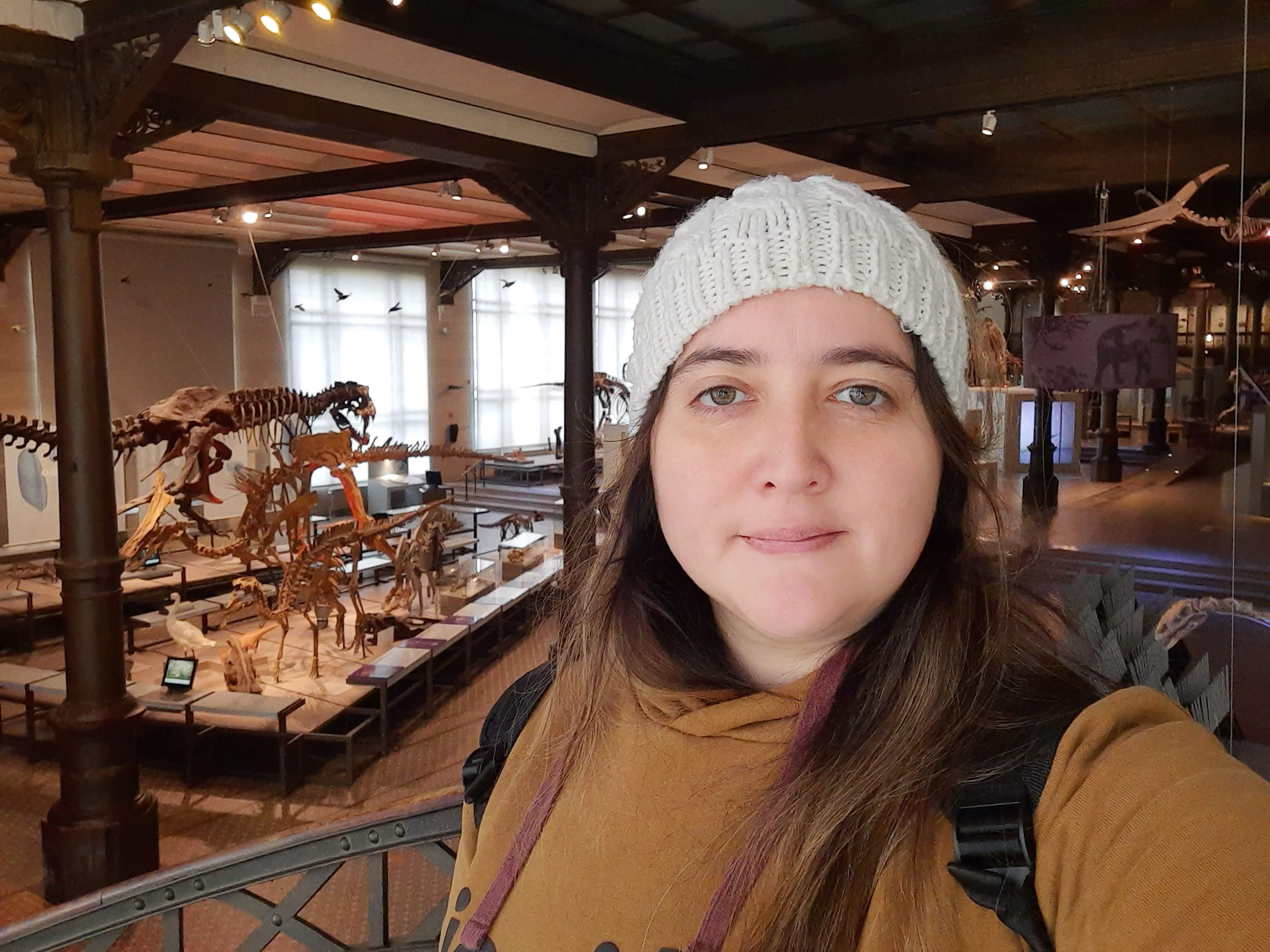
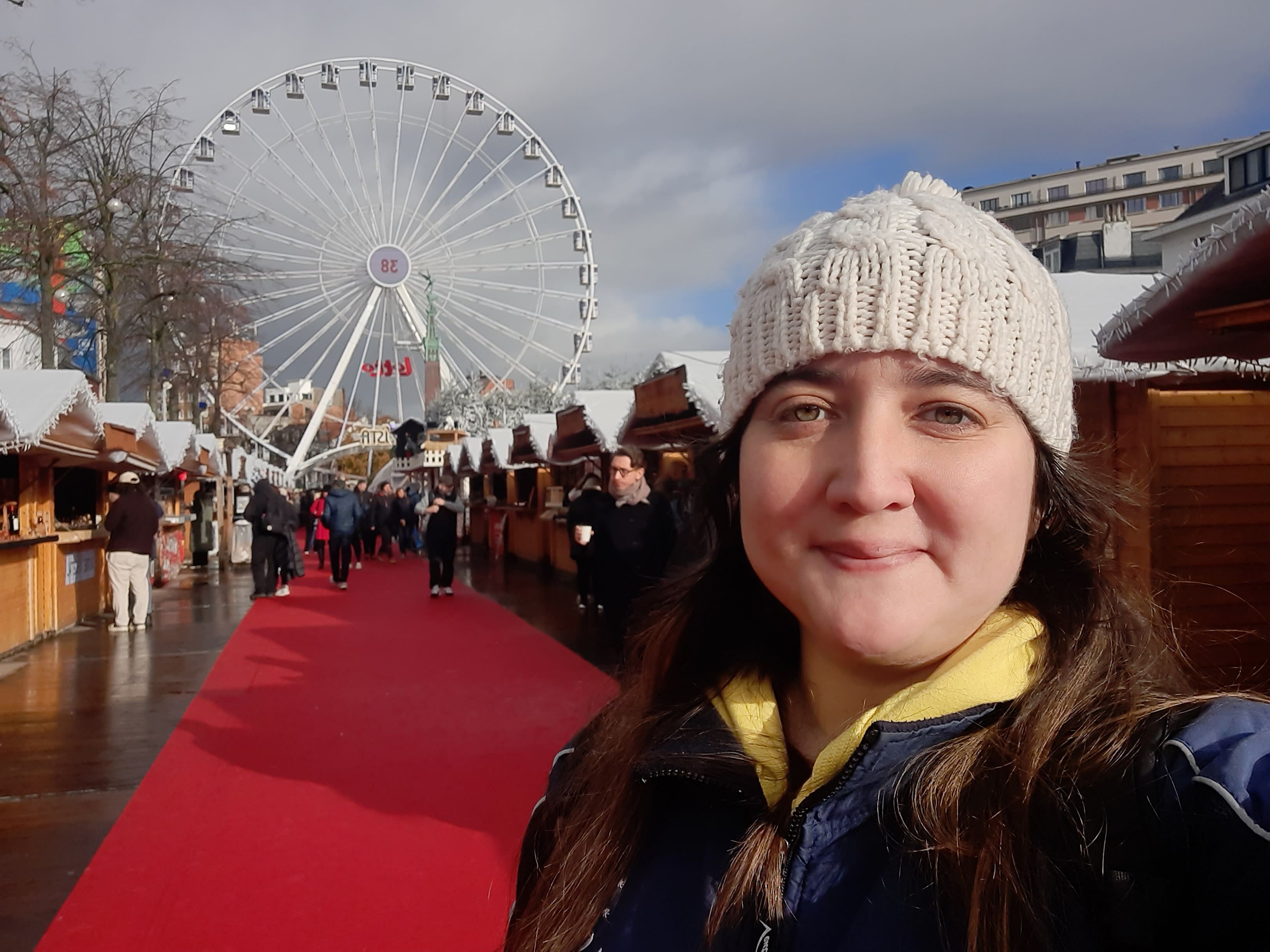
This secondment was another rewarding experience, made possible by the support of the POEMS project and its members.
My second visit to the University of Valparaíso was a three-month secondment aimed at optimizing the performance of CMFGEN models in our spectral analyses. For this reason, we evaluated the models calculated and published together with Dr. Julieta Sanchez (AsU) to fit three B-supergiants. Those results were summarized in a poster and presented by Dr Elisson de Almeida (UV) at the LARIM 2023 conference in December in Montevideo (Uruguay).
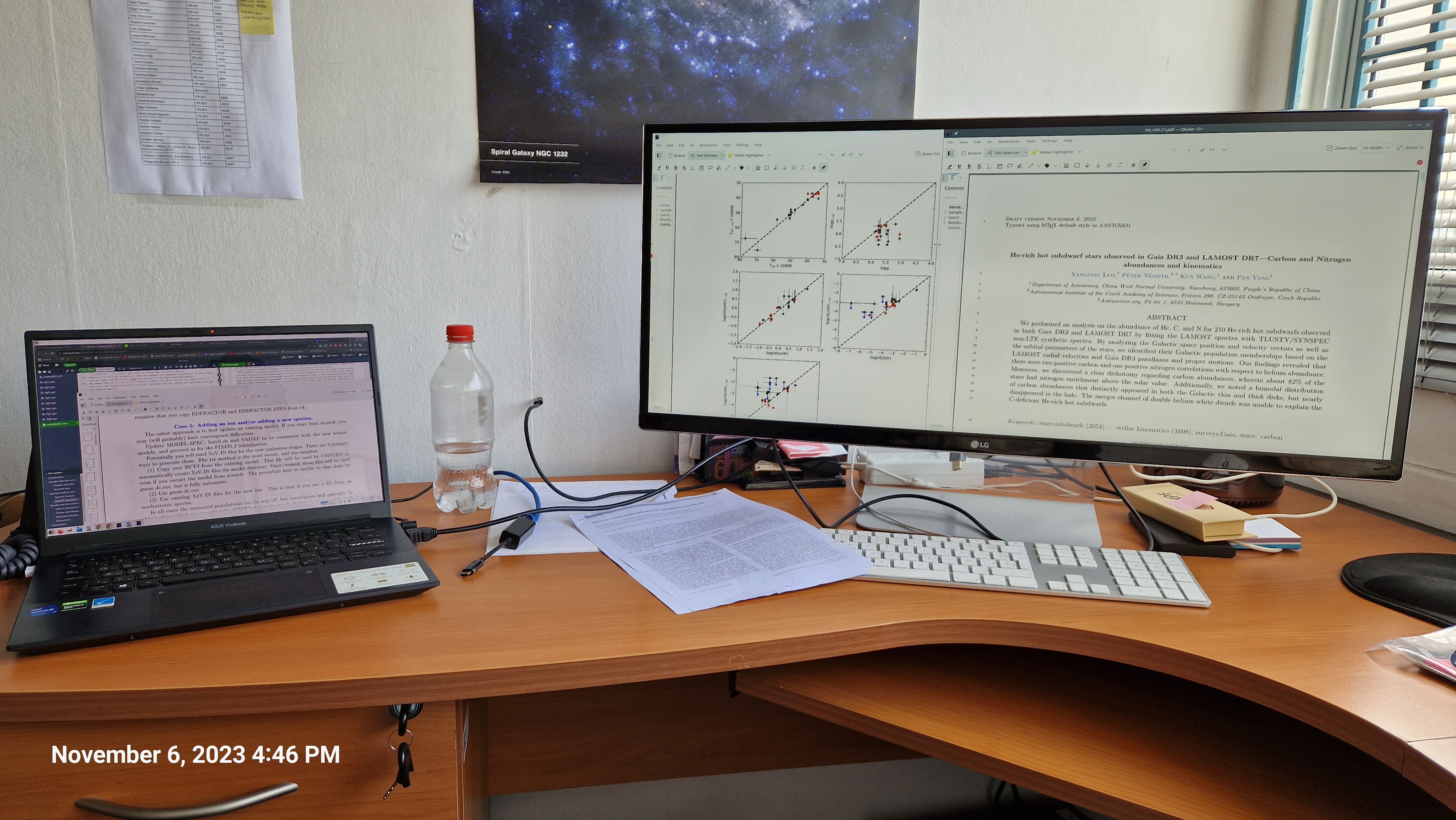
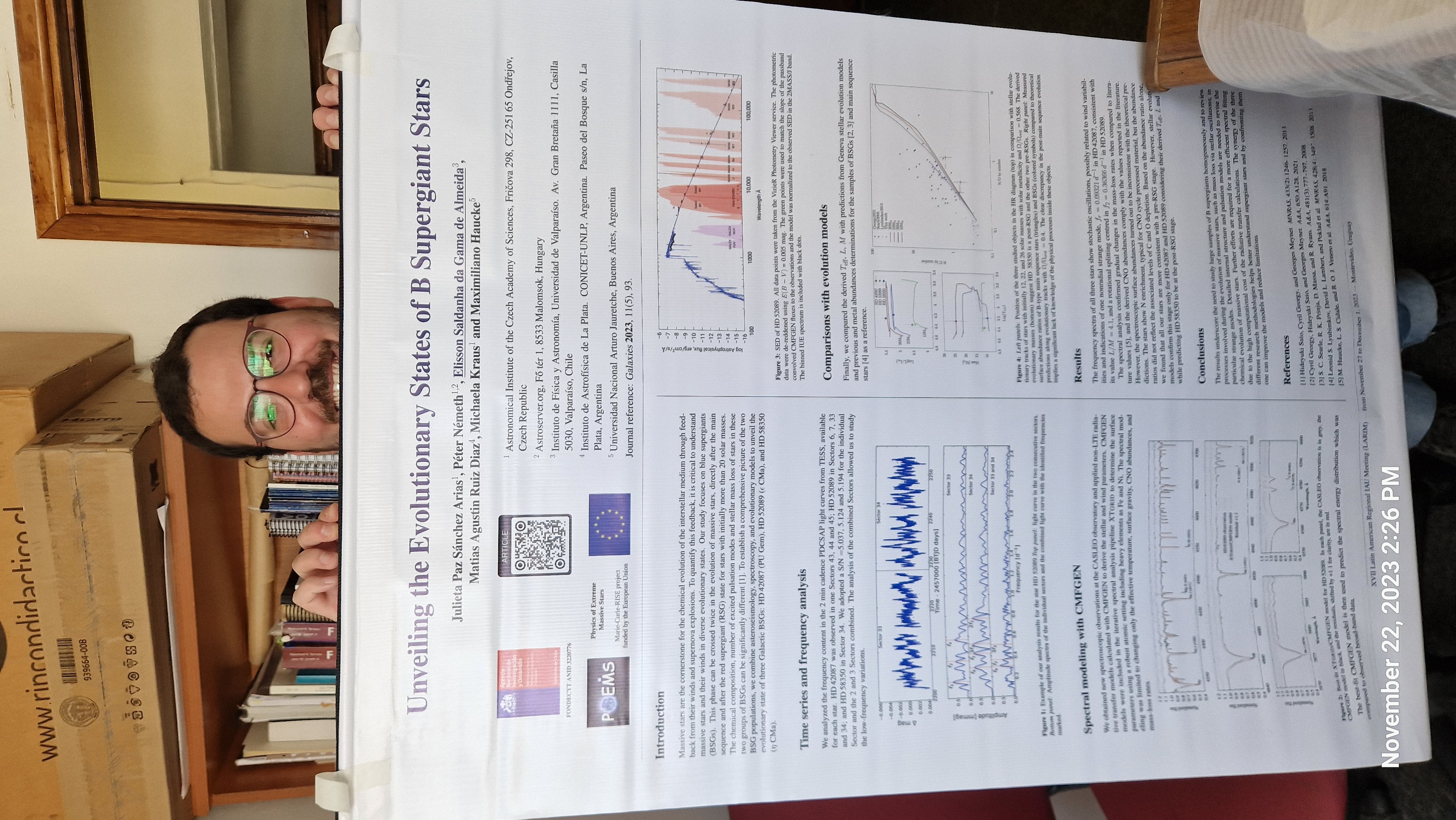
Next, we worked on developing a new multi-dimensional interpolator that is able to identify the nearest models to any random point in a high-dimensional parameter space and interpolate the requested synthetic spectra without new model calculations. The increased analysis performance is necessary to explore the vast parameter space for pulsating supergiants. To compensate for the lengthy radiative transfer model calculations we aim at sophisticated interpolations in reducing the number of original models to be calculated. Later this interpolation can be amended with machine learning methods.
We applied the new interpolations in our fitting procedure for HD14134, a B-supergiant pulsator that shows spectral variability in both the wind and photospheric lines. It turned out that the improvements we designed and implemented are adequate and helpful, however, the pulsations are incompatible with the spherically symmetric, homogeneous wind assumption in CMFGEN. We added global stellar parameters, such as the mass and luminosity, as constraints when fitting the time-dependent spectra of pulsating stars.
We discussed the next possible and necessary steps to recover the pulsations along with wind variability from light curves and spectral observations. We concluded that the science development requires implementing self-consistent hydrodynamics in the wind description of the CMFGEN code, which can be done by the HYDWIND code of my host Dr Michel Curé (UV). This development is underway. Beyond hydrodynamics, the surface distortions and velocity fields need to be incorporated in modeling and require surface integration. We plan on continuing our explorations in these directions.
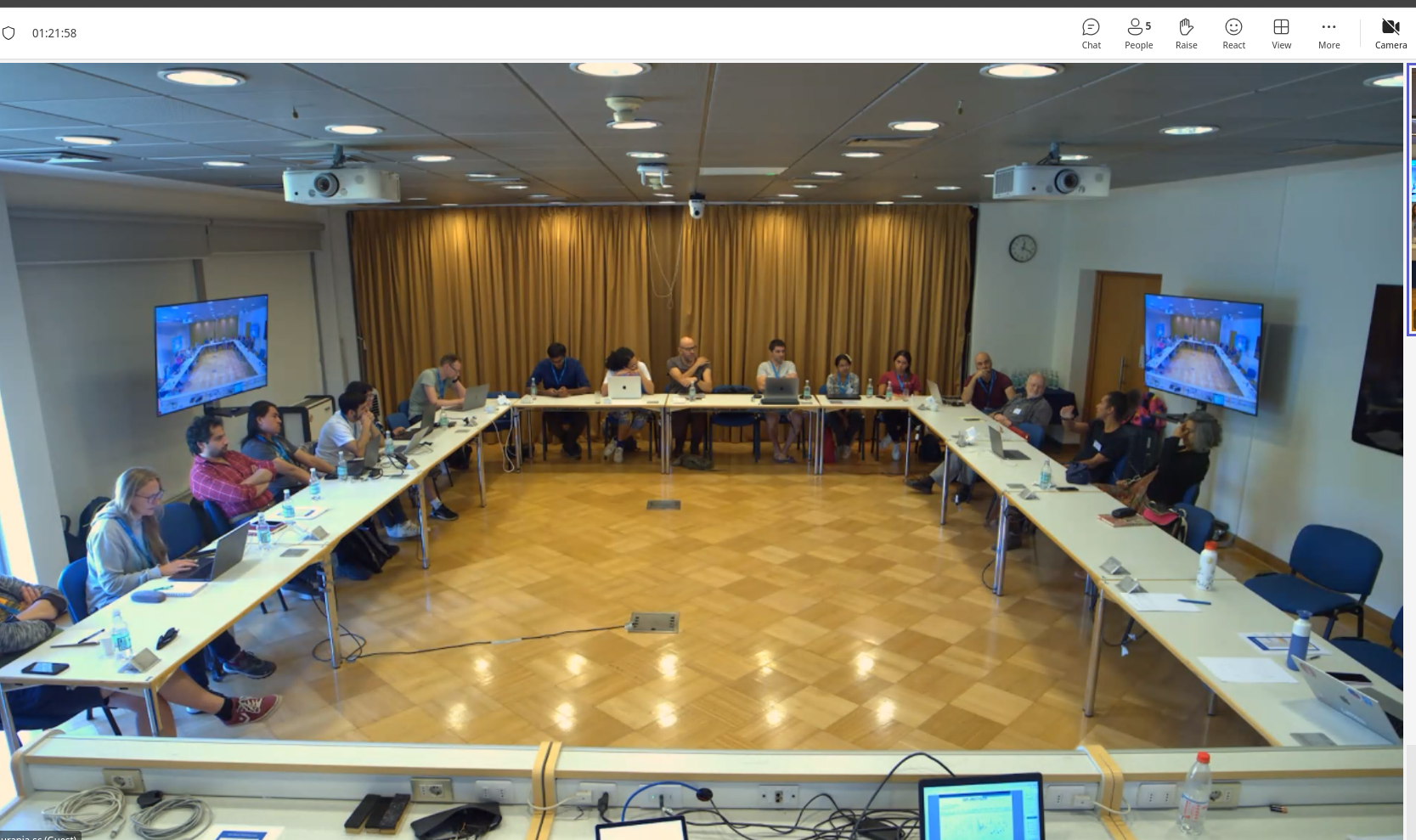
In mid-January, I attended the ESO binary workshop at the ESO headquarters in Santiago. During the two-day meeting, we discussed various spectroscopic and interferometric observations and the models of binary evolution.
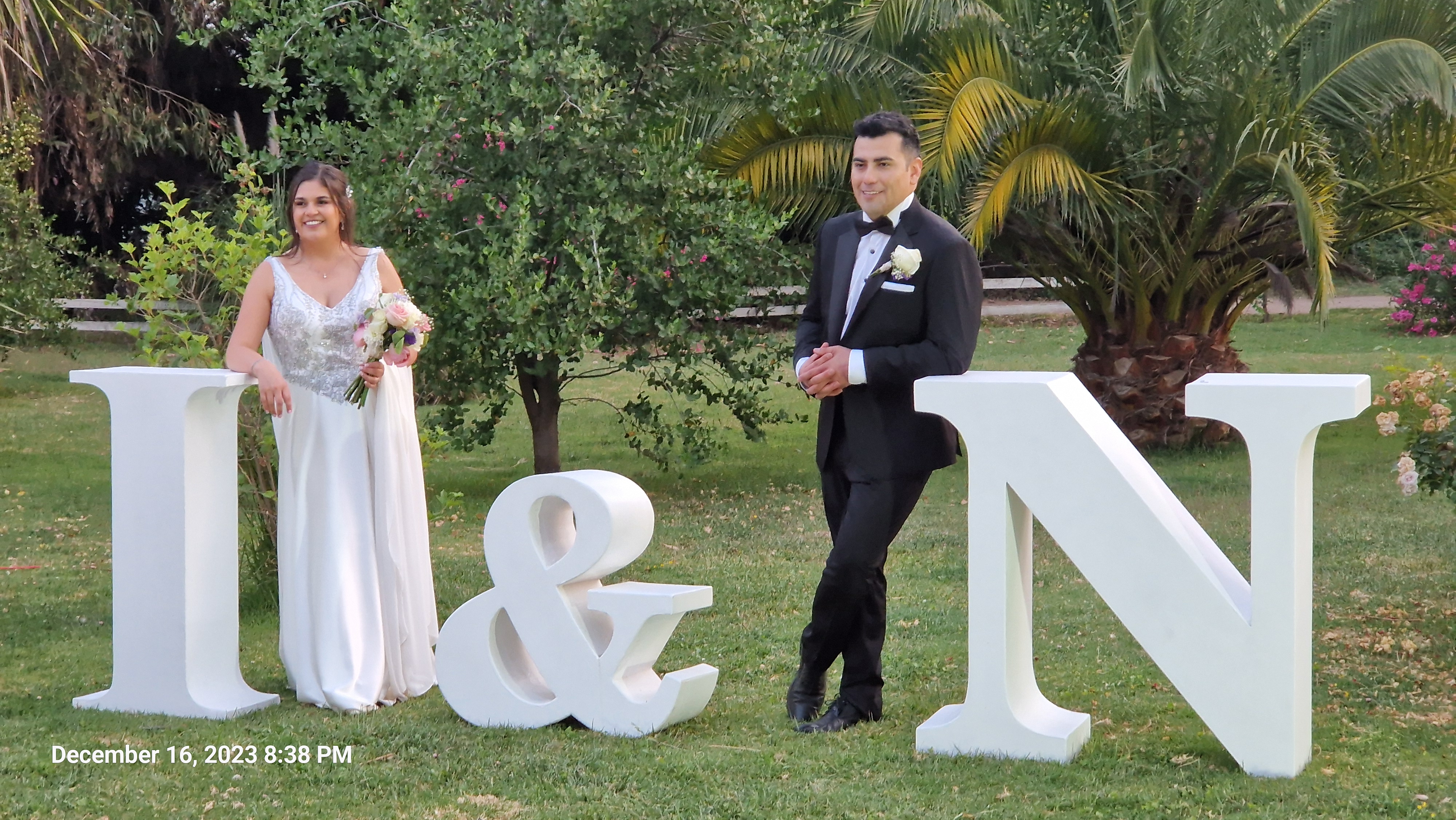
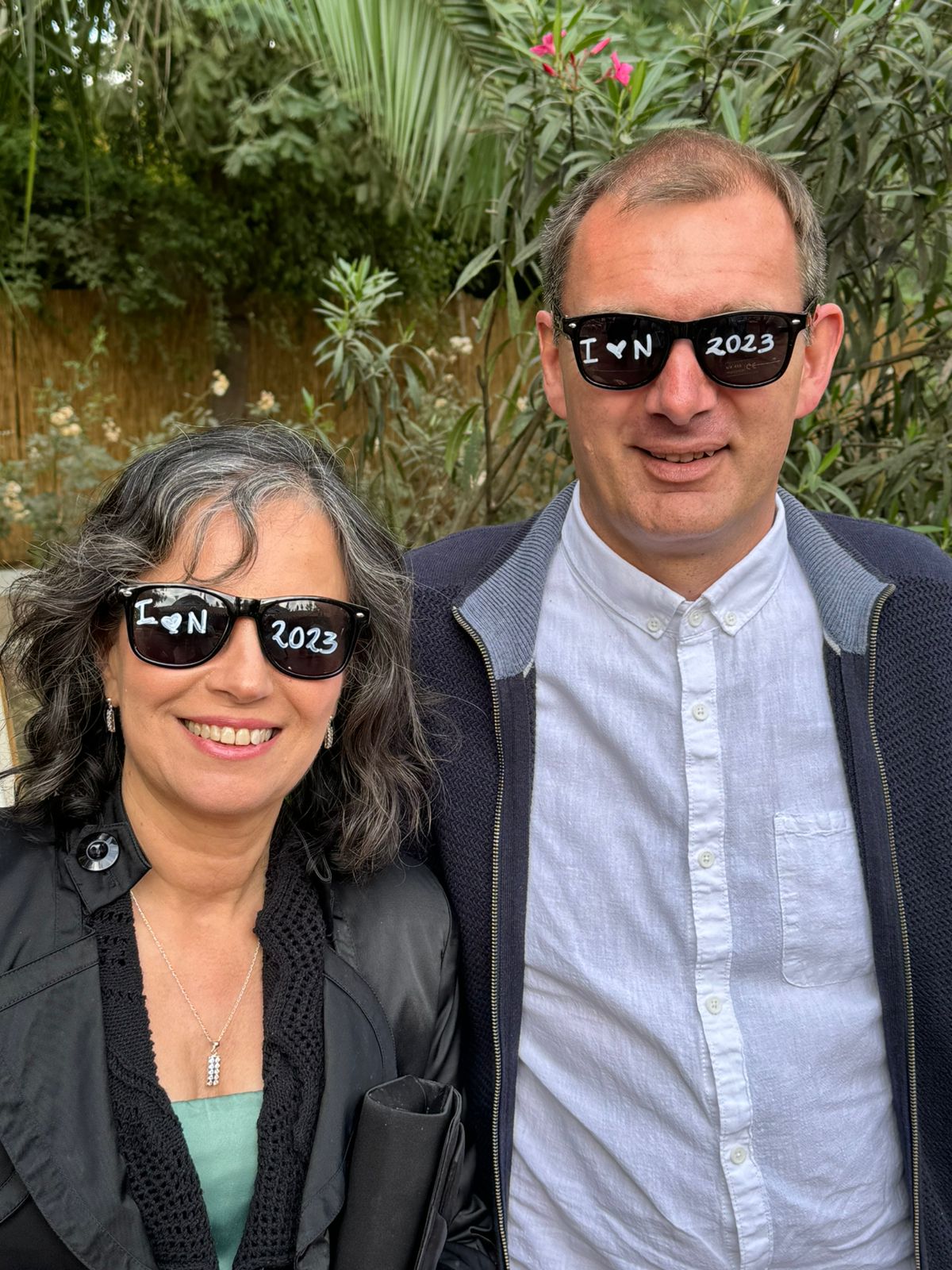
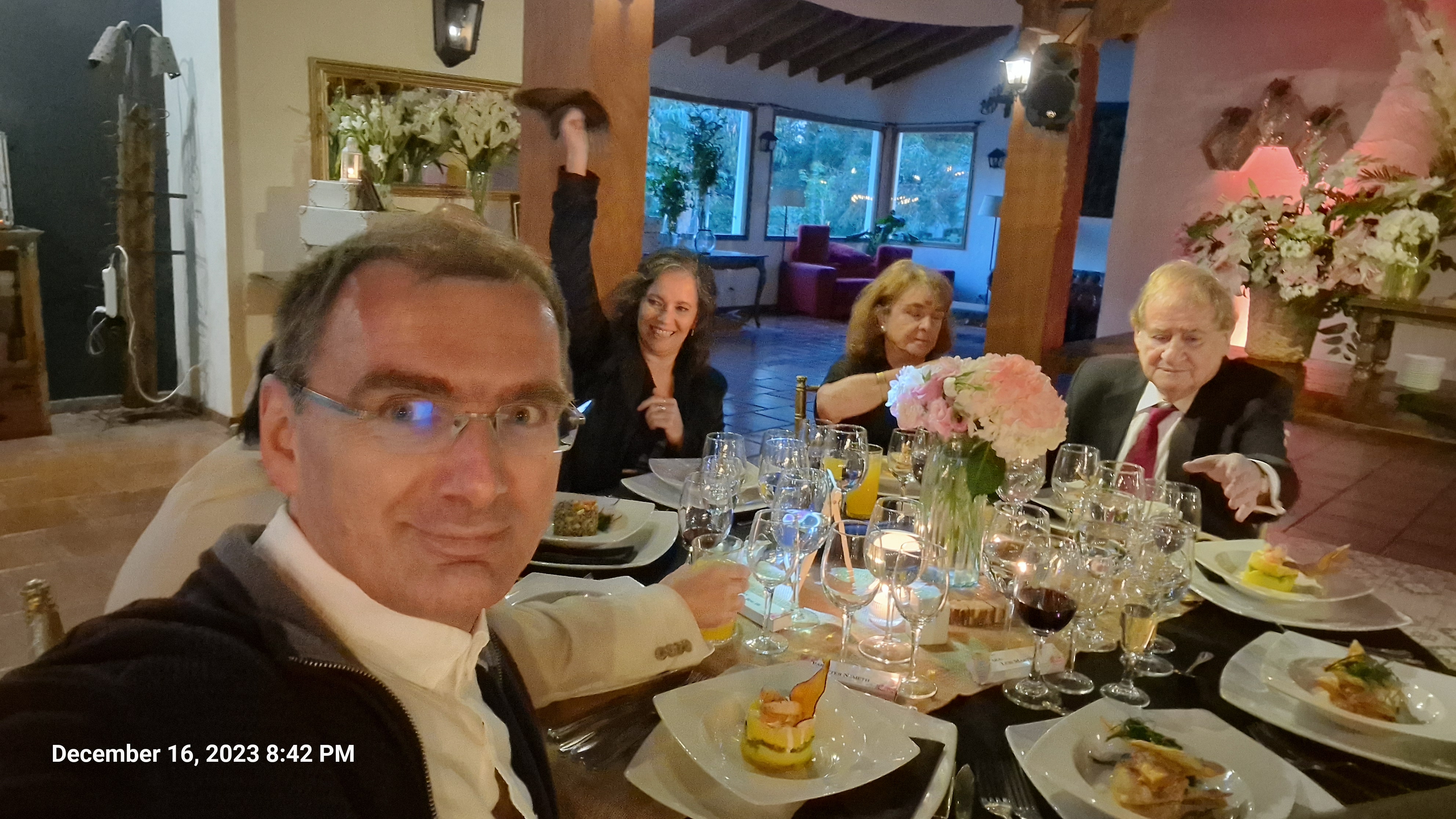
Besides the stimulating work environment at the university, it was delightful to share time with friends and colleagues. The beautiful turn of spring into summer was an exciting period and I had a great experience. Beyond the scientific work, I was fortunate to experience Chilean culture and hospitality. We had walks and some gastronomy experiences with Elisson, exploring Viña del Mar, and his favorite restaurants. I was invited over to a barbecue at the home of Maja, Xavi, and Matias, where I met new colleagues, and we enjoyed a fun evening. For New Year's Eve, I was invited for dinner by Michel, Alejandra, and Sofia and we joined the celebrations and the spectacular fireworks display over the bay of Valparaíso. One of the highlights was being invited to the wedding of my colleague, Ignacio and Nicole, in Santiago, offering a unique glimpse into local traditions and making my stay truly memorable.
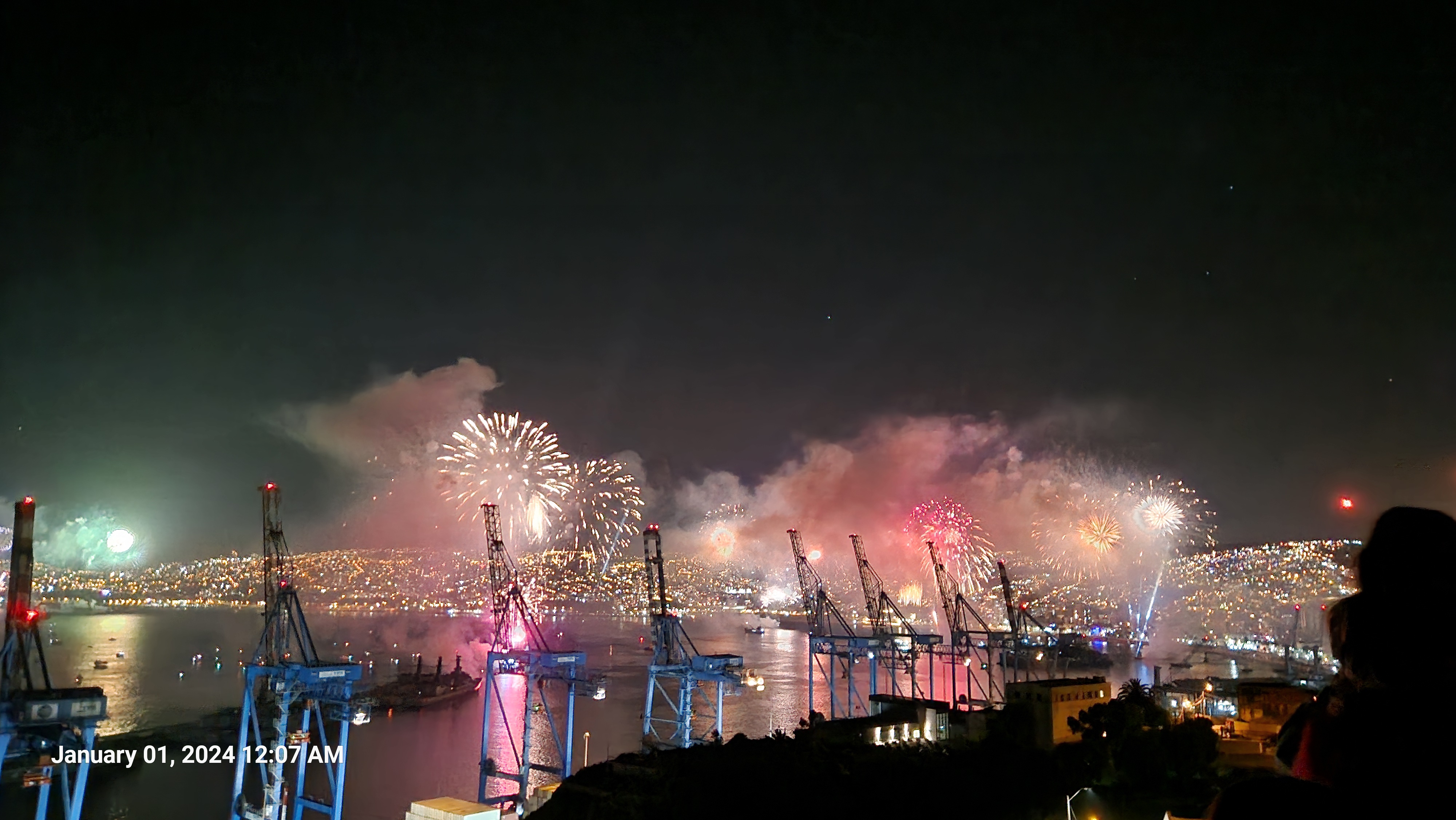
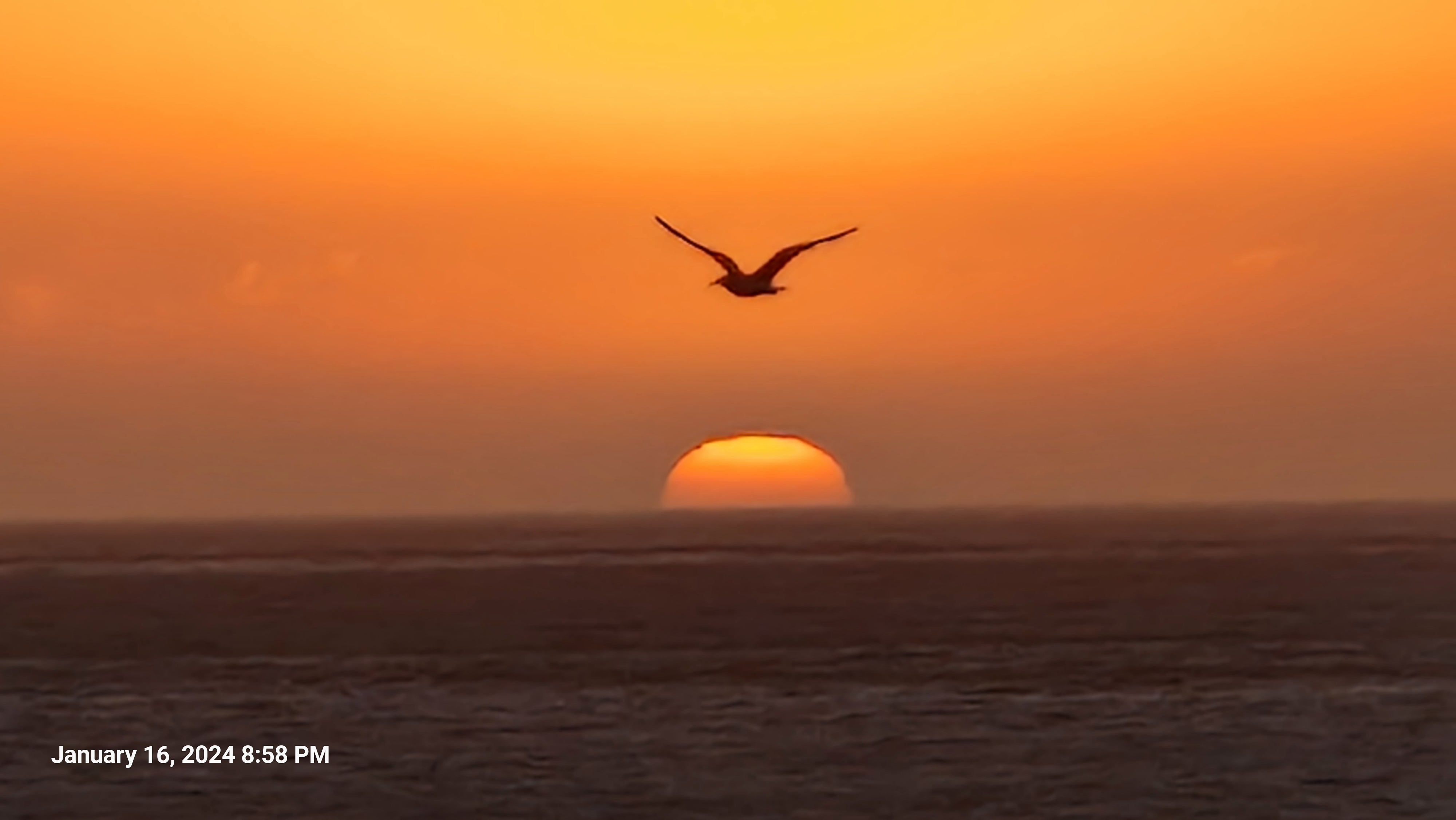
Many thanks to all my friends and colleagues who made my secondment much more than a work visit.
During my secondment at the Universidad Nacional de La Plata (UNLP) from October to December 2023, I engaged in various activities that significantly enhanced my professional development.
Throughout my stay, I attended several seminars and courses that deepened my understanding of various astronomical phenomena and techniques. One of the key highlights was my participation in the course "Astronomía en la era de la espectroscopía 3D," where I learned IFU (Integral Field Unit) reduction techniques. Conducted in Spanish, the course also helped improve my language skills. Additionally, I attended Anni's seminar and participated in Lydia's master's student defence, both of which provided valuable insights into current research and academic discussions. I also received training from Maria on infrared spectroscopy reduction using IRAF, which was a new tool for me.
My time at UNLP was not only professionally rewarding but also personally enriching. I took the opportunity to explore local culture and landmarks, visiting Buenos Aires and Colonia de Sacramento on weekends to experience their vibrant culture and history. A holiday in Ushuaia offered breathtaking views and a unique glimpse into Argentina's natural beauty. I also explored La Plata, mostly with Anni, which helped me immerse myself in the local community.
Living and working in a new environment allowed me to adapt to different cultural and working styles, enhancing my flexibility and interpersonal skills. The support and collaboration from colleagues at UNLP made this transition smooth and enjoyable.
In conclusion, my secondment at Universidad Nacional de La Plata was a productive and fulfilling experience. The knowledge and skills gained through seminars and hands-on work were invaluable, and the cultural experiences enriched my time there.
I was on a secondment together with Anna Aret, Tõnis Eenmäe and Heleri Ramler to Universidad Nacional de La Plata from 4th October to 8th December. The main goal of my visit to La Plata was to learn about infrared spectroscopy and reduction of infrared data. I was working under the supervision of Dr. Lydia Cidale and Dr. María Arias.
María taught me to reduce infrared data from Gemini-North telescope. We were working with long-slit spectra of some blue supergiants taken with GNIRS instrument. We went through all the necessary steps for data reduction, starting from flat corrections to removal of telluric lines. Compared to optical long-slit spectra, with which I have some experience, there were a few extra steps that can sometimes be quite tricky. Now that I’ve got the hang of data reduction, we would like to continue with the analysis of these stars.
In addition, I had the chance to participate in a small course given in the UNLP by visiting professor Damián Mast from Observatorio Astronómico de Córdoba. The course was about 3D spectroscopy, and it included both lectures and practical work. We learned to reduce infrared integral field spectroscopic observations from GNIRS at Gemini-North and to visualise the resulting data cubes. All-in-all it was super interesting, and in addition to learning data reduction I had the opportunity to improve my Spanish skills - I learned many new astronomy-related words like ranura larga, campo integral and rebanador.
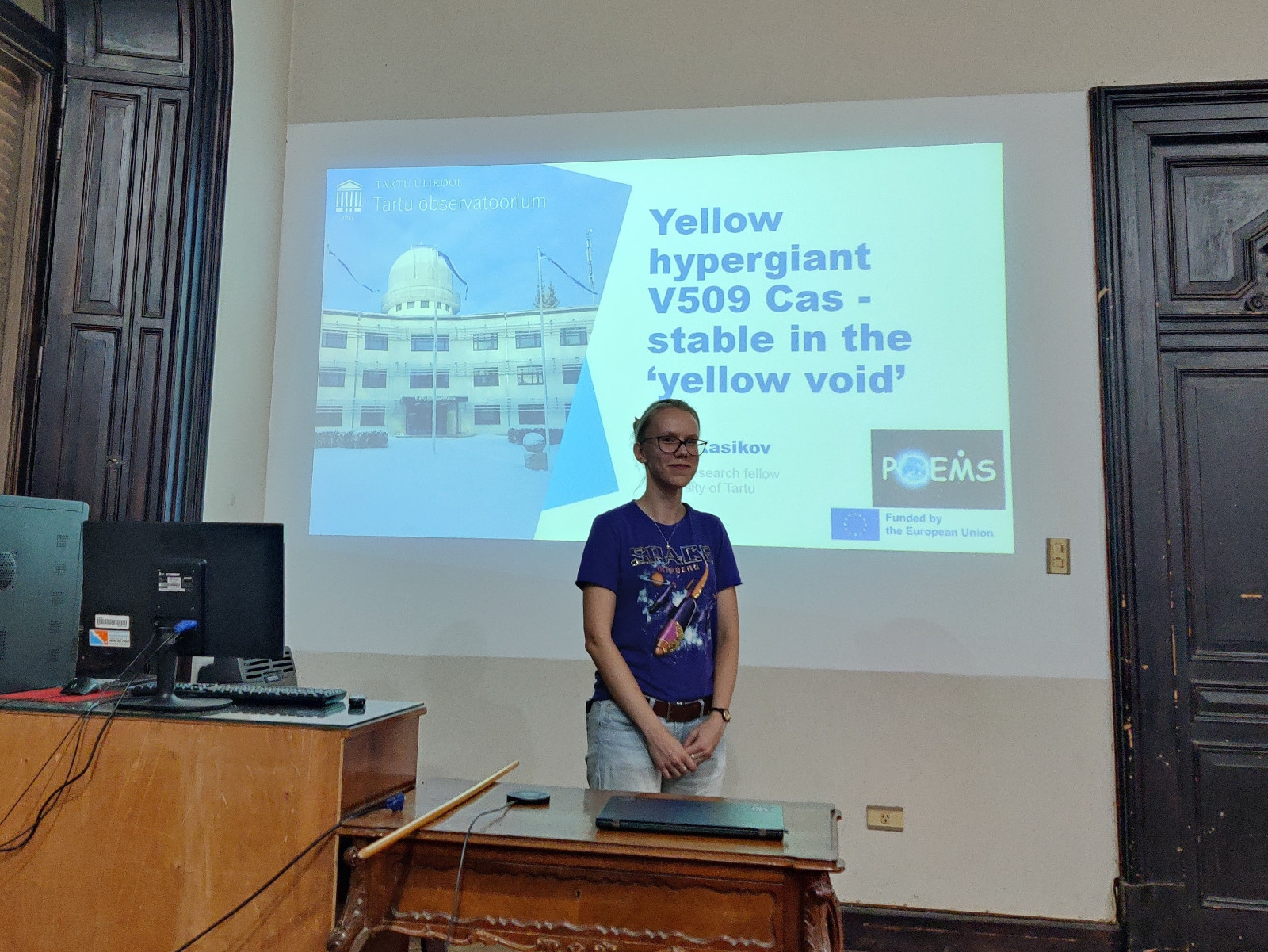
I also presented my recently submitted paper about the yellow hypergiant V509 Cas.
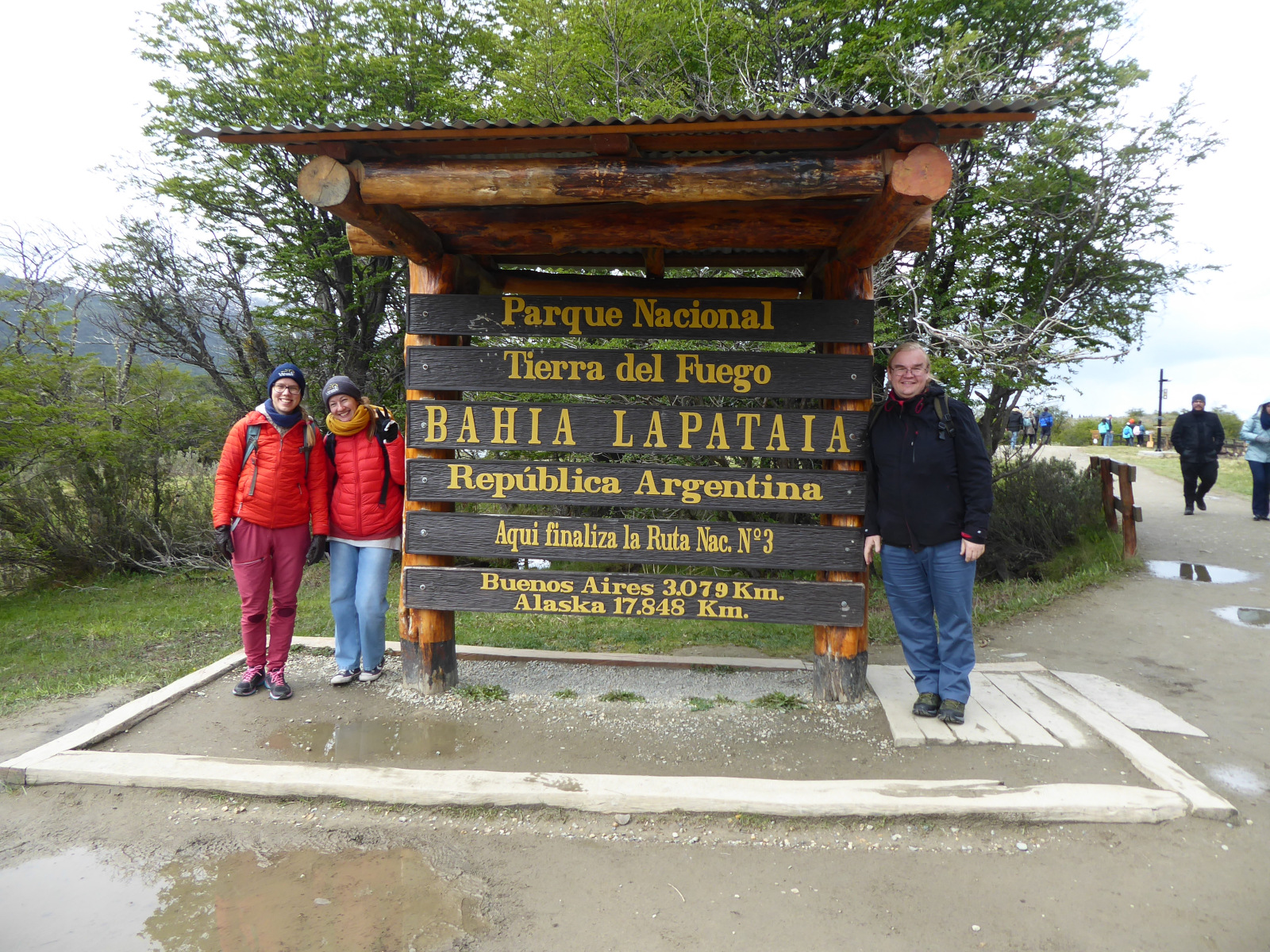
During the weekends, we made a couple of short trips to Buenos Aires and a day trip to Colonia del Sacramento in Uruguay. On one long holiday weekend, we flew all the way to the end of the world at Tierra del Fuego.
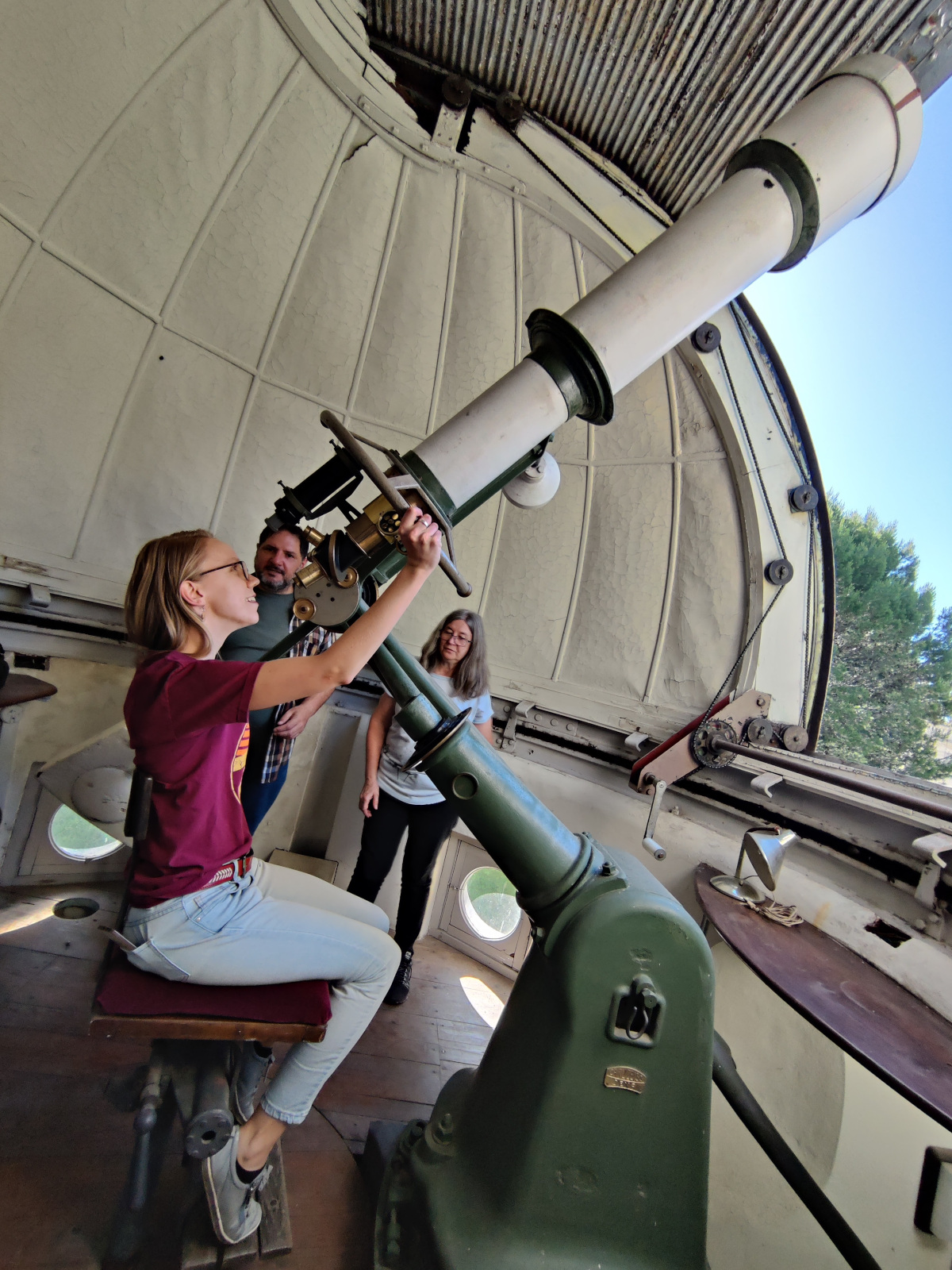
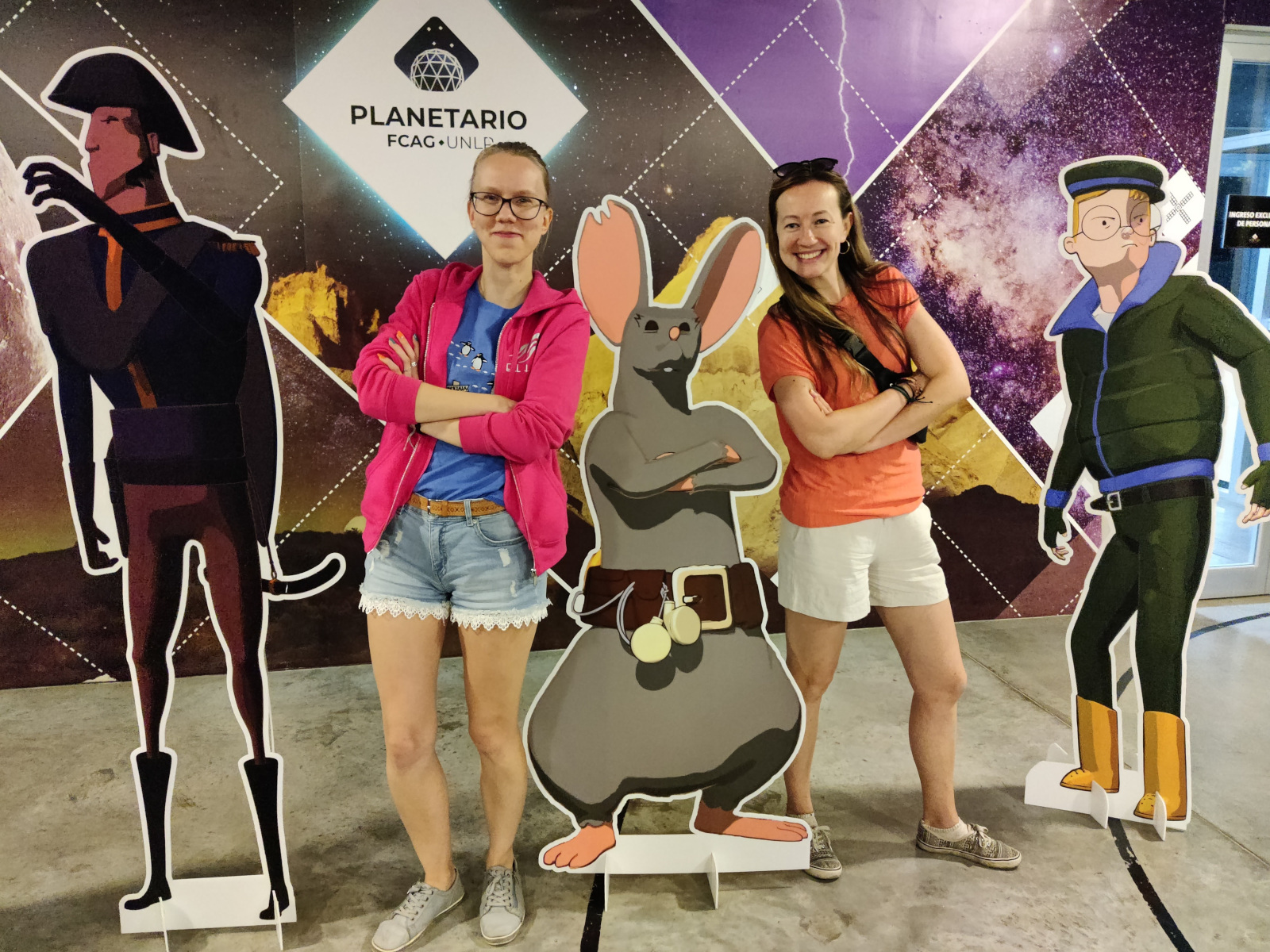
I had a wonderful time in La Plata and I learned a lot about infrared data reduction techniques for both long-slit and integral field data. Many thanks to everyone at UNLP, especially Lydia and María, and the POEMS project which made this secondment possible.
During the secondment to University of La Plata, Argentina, I worked primarily with Lydia Cidale. My main activities were setting up the database of observational spectroscopic data and add existing UNLP observational data into it. For that I configured, installed and launched a Debian Linux-based database server running MariaDB database engine and Apache web server. To add that existing data into the database, large amount of archive data from various instruments at the CASLEO observatory (starting from 1994) had to be corrected to be compatible with modern data processing tools. Issues that were not encountered before that secondment required further development of the database and data insertion tools. By the end of the secondment a lot of data was added to the database. We had couple of hands-on seminars with Lydia Cidale’s research group on data addition.
In addition to this work, I learned from Maria Arias how to process infrared spectroscopy data from the Gemini telescope, also the analysis of Gemini infrared observation data cubes during a course held at the observatory.
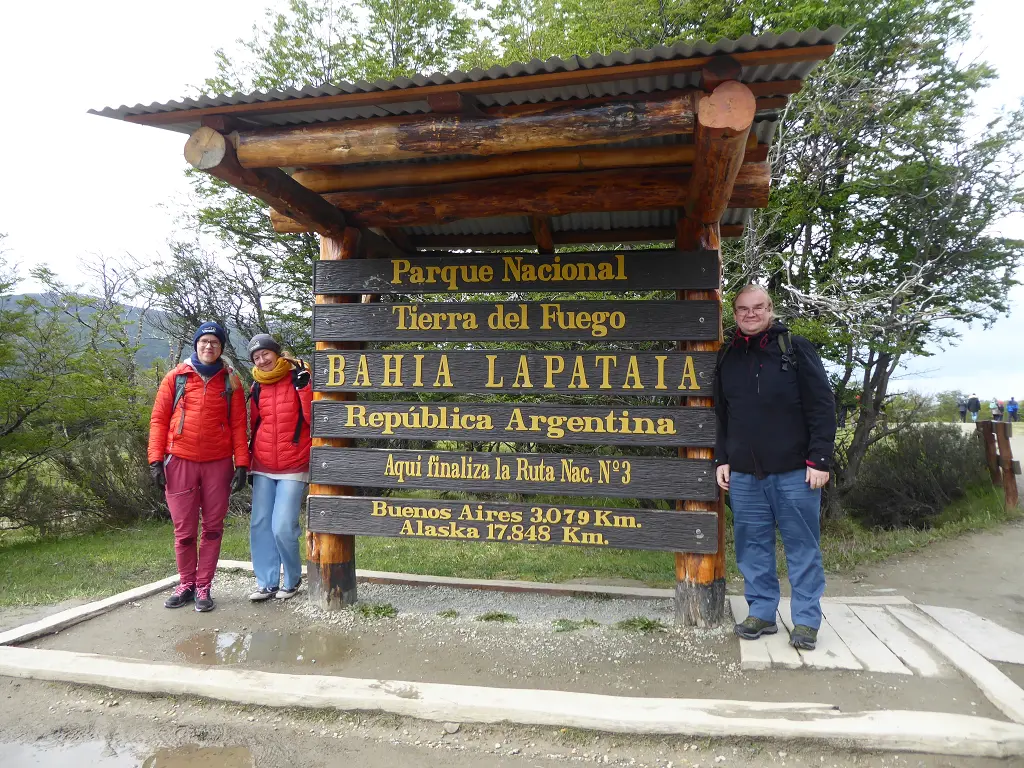
In my free time, I managed to briefly visit Colonia del Sacramento in Uruguay and also The End of the World - Tierra del Fuego.
I traveled to Argentina for two months with my colleagues from UTARTU, Heleri Ramler, Anni Kasikov, and Tõnis Eenmäe. During my stay, I collaborated with Dr. Lydia Cidale on the Algol project. Our study is based on thousands of low-resolution Algol spectra, covering the region of the Balmer jump, obtained using the single-slit spectrograph at the Tartu Observatory's 1.5-meter telescope. We completed data reduction and measured Algol temperature using the BCD spectral classification method. The time series allowed us to track Algol temperature through all its phases.
I was lucky to visit Argentina during a blessed time of the year when nature awakens from its sleepy winter to greet the coming summer with lush greenery and blossoms. I enjoyed every day watching nature come to life. Thanks to my energetic young colleagues, I also made trips to Buenos Aires and Colonia del Sacramento in Uruguay.
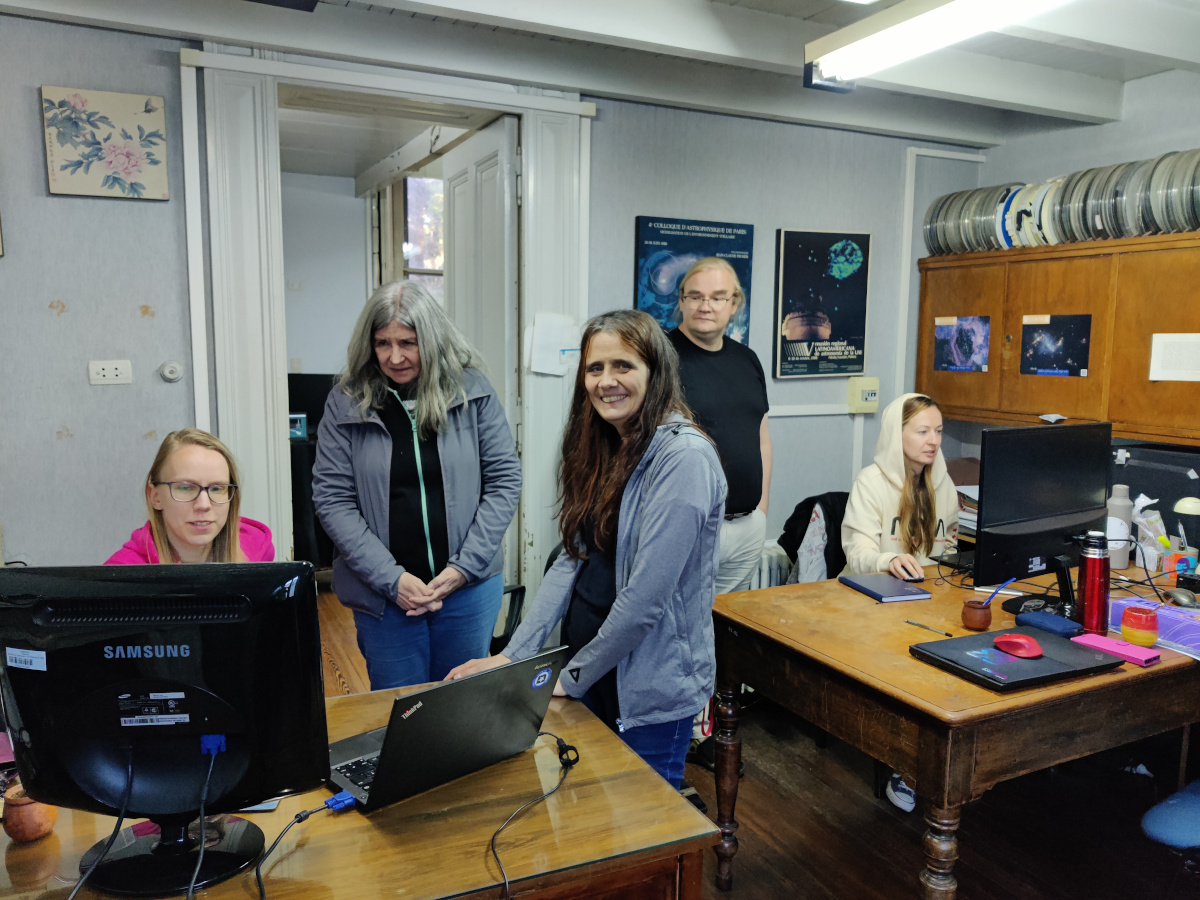
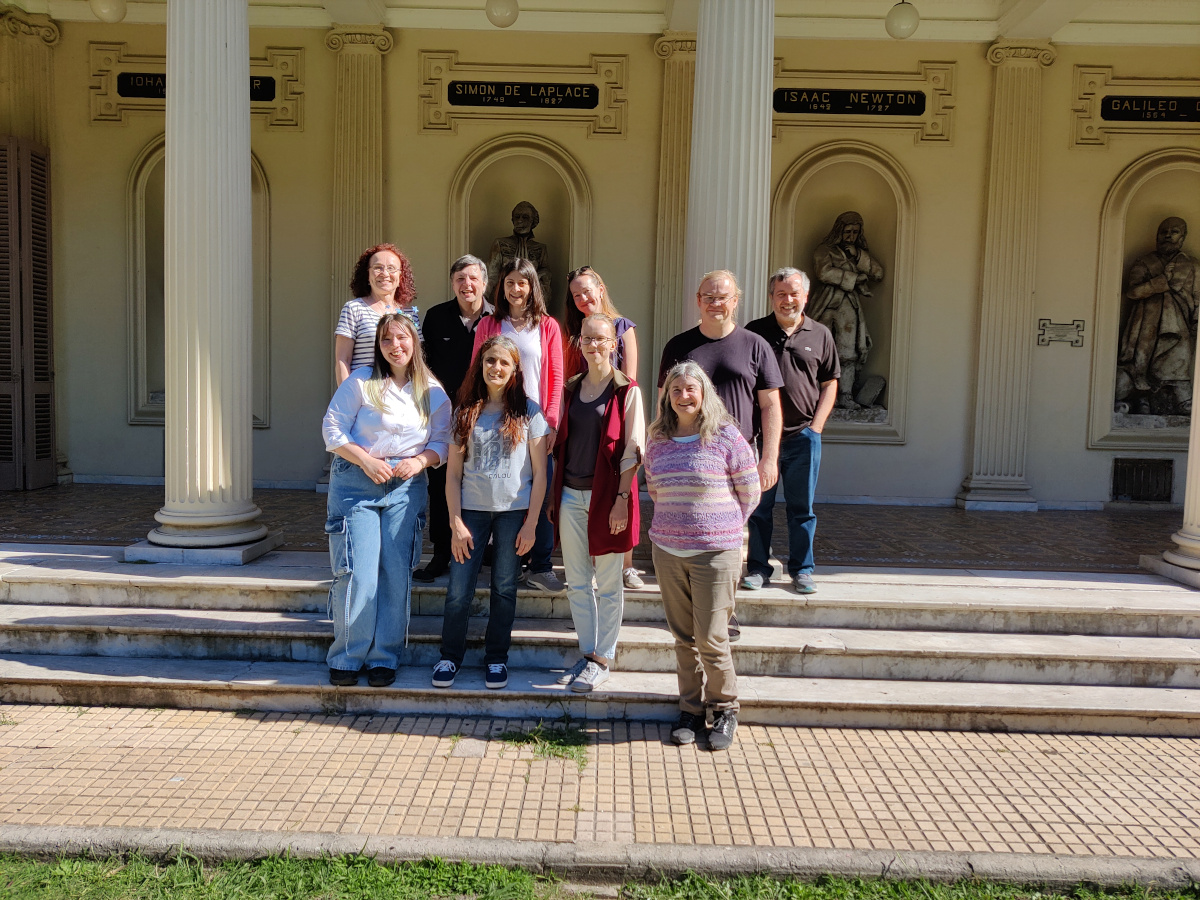
Left: Estonian invasion in UNLP - Heleri Ramler, Anni Kasikov, and Tõnis Eenmäe with Lydia Cidale and Maria Arias. Right: Melina Fernandez' (first on the left) master thesis defence was a memorable event which brought us together.
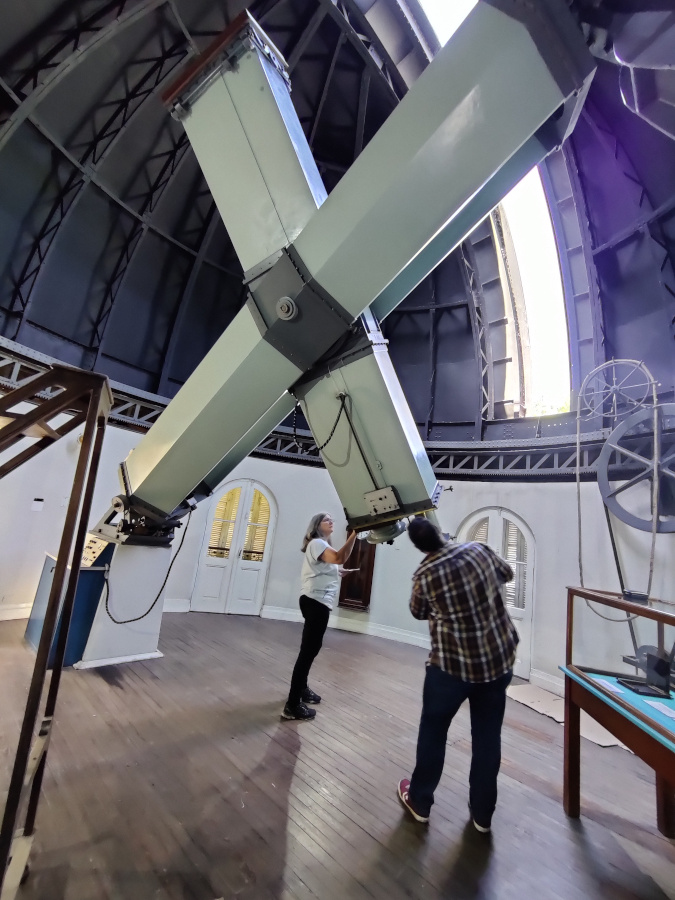
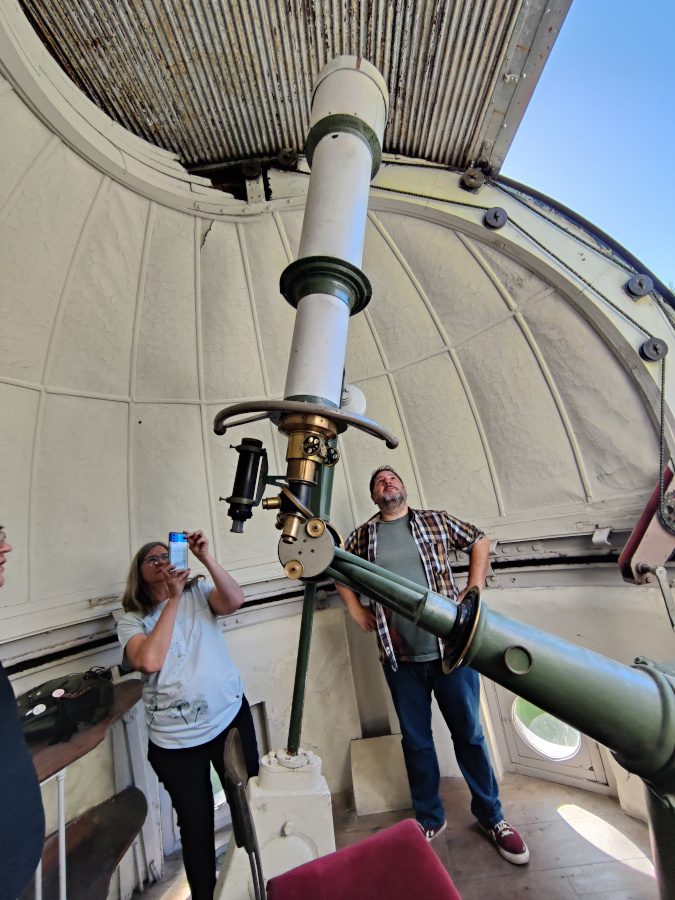
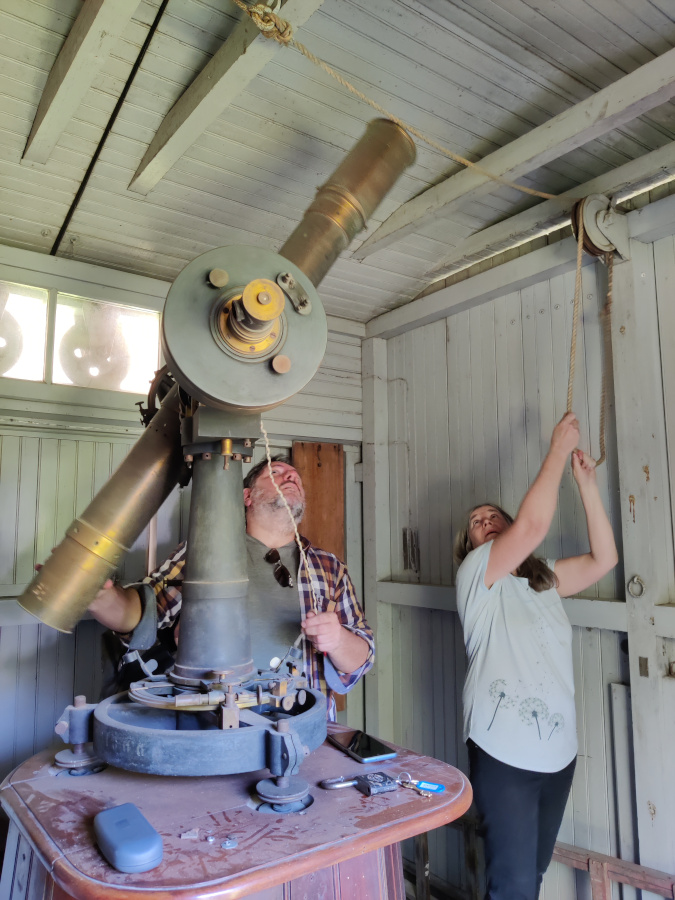
Lydia Cidale gave us a tour of the historical telescopes at UNLP: on the left - Telescopio Astrográfico, in the center - Buscador de Cometas, on the right - Telescopio Zenital de Wanschaff.
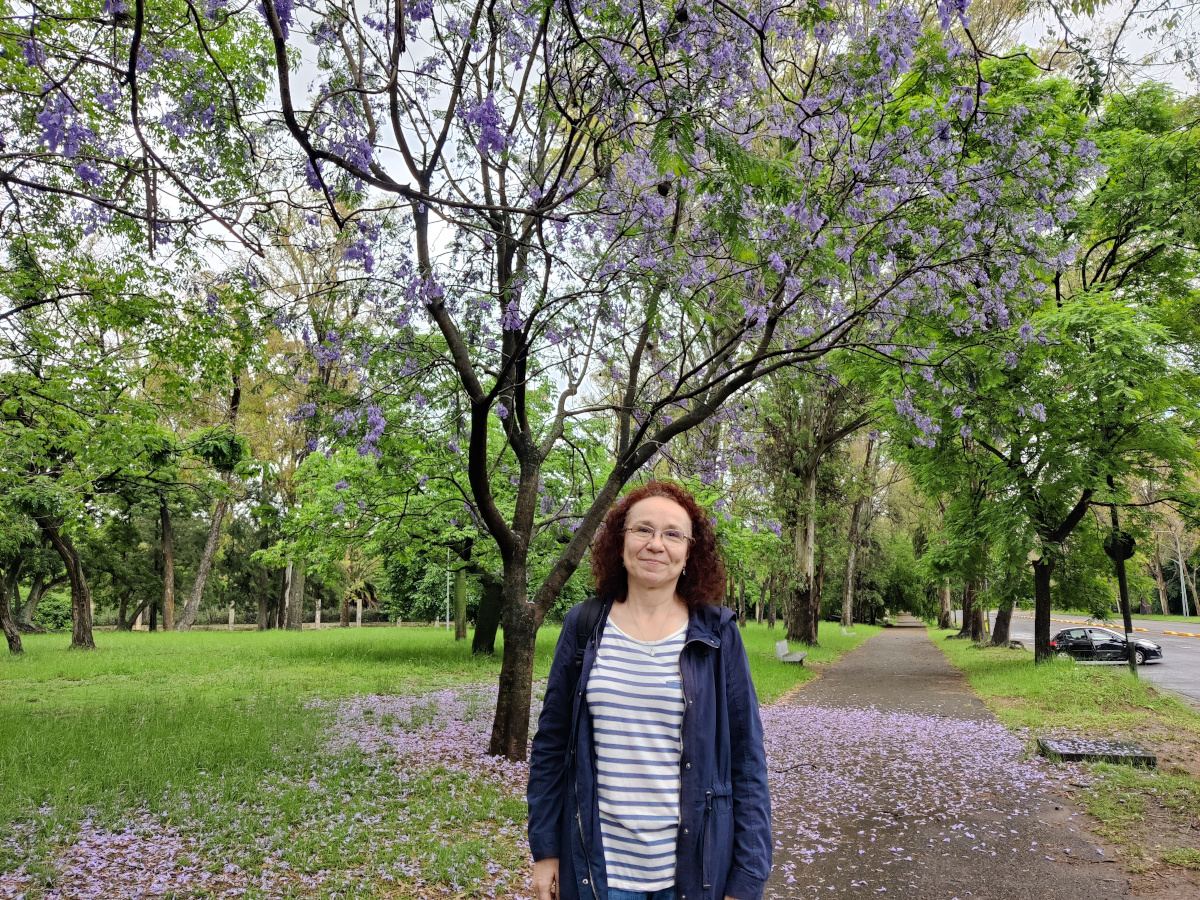
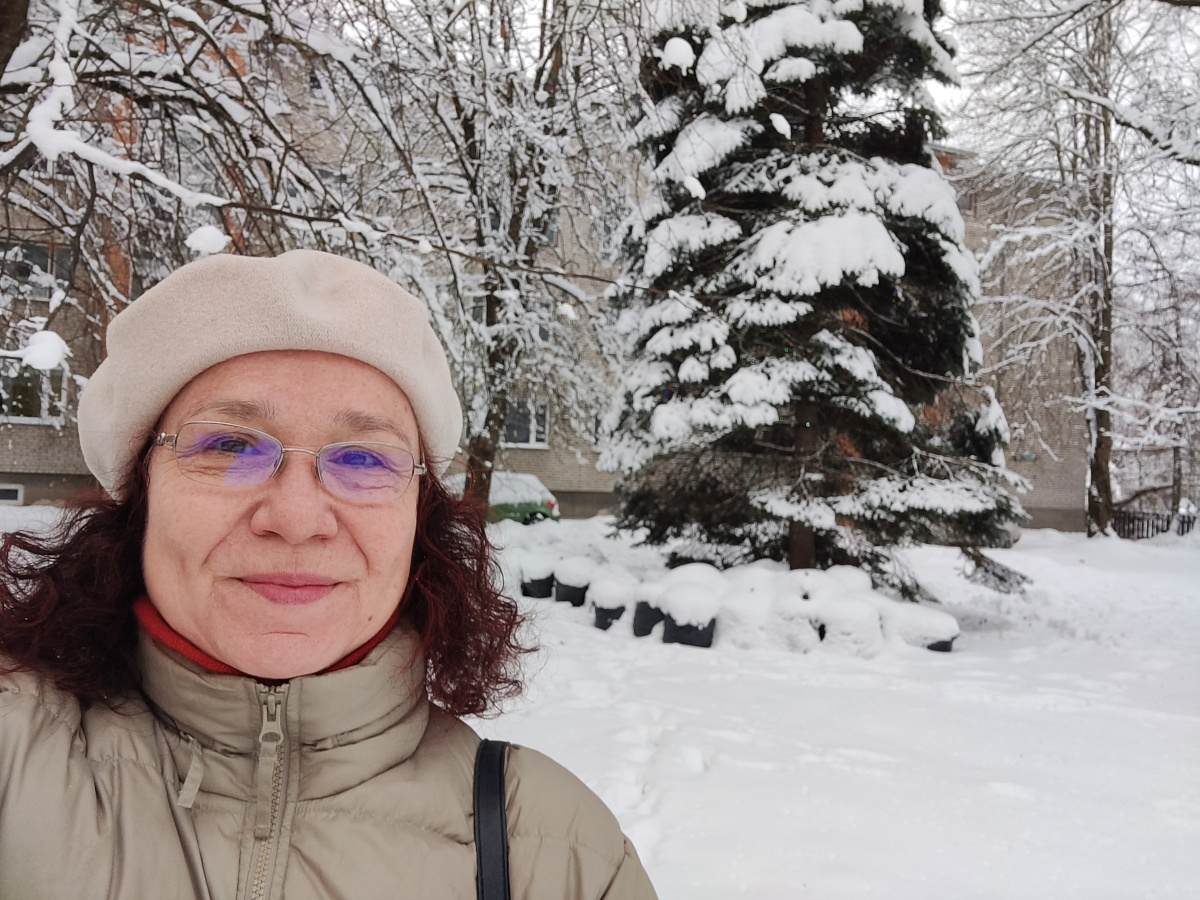
Shocking return from Argentina to Estonia in December
In the frame of this POEMS project, I had a second secondment in Brussels, visiting our colleague Dr. Alex Lobel at the Royal Observatory of Belgium (ROB).

We started our flight from Prague on Sept. 16th 2023. This time the secondment was for just 9 days and was to “finish” the one I started in 2020 that was interrupted by the COVID-19 pandemic.
This time we found a small but comfortable flat in the Uccle quarter, it was quite expensive but it satisfied all our requirements. This time our daughter did not go to the school as in 2020, but we visited it once to thank the director for receiving Sofia in 2020.
Adapting to life in Brussels was very easy, we were able to buy our monthly ticket for public transportation and we recognized the trams and buses that took us to the observatory in a very simple and fast way.
In this “second” secondment at the observatory, the adaptation was very simple and working with Alex was smooth as usual. There was a common space to have lunch and share with them, and the atmosphere was very calm too.
During this stay, we walked a lot around Brussels, considering that this was in summer/autumn and not in winter as in 2020. We found this time the Brussels to be much more colorful.
Finally, the most important thing is that working with Alex was a pleasure. He is a very nice and pleasant person and we were able to have long and interesting conversations on the subject of winds of massive stars. During this stay we managed to find some interesting new results, which we hope to publish in the near future. Also, my PhD student, Daniela Turis, was at ROB working with Alex.
In this secondment, we had the opportunity to share a nice evening with our families as seen in this picture.

I appreciate the opportunity this Marie Curie project gave me to visit the Royal Observatory of Belgium and share the very pleasant and productive research stay with these colleagues.
During my second secondement. I visited the Royal Observatory of Belgium (ROB) to work with Dr. Alex Lobel. My work involved analyzing Be stars by modeling three different Helium lines using the ZPEKTR code, which take into accounts the effects of high rotational velocity, such as the oblate shape of stars and gravity darkening. We conducted a comparison between the inclination angles obtained with the ZPEKTR code and the double-peak separation of the Halfa line.
Subsequently, Dr. Alex Lobel provided me with high resolution normalized spectra from 42 massive stars in the Tumpler 14 cluster as part of my Ph.D. thesis project aimed at determining stellar parameters of rapidly rotating stars. We expect to publish our results of the distribution of the inclination angle of the stars.
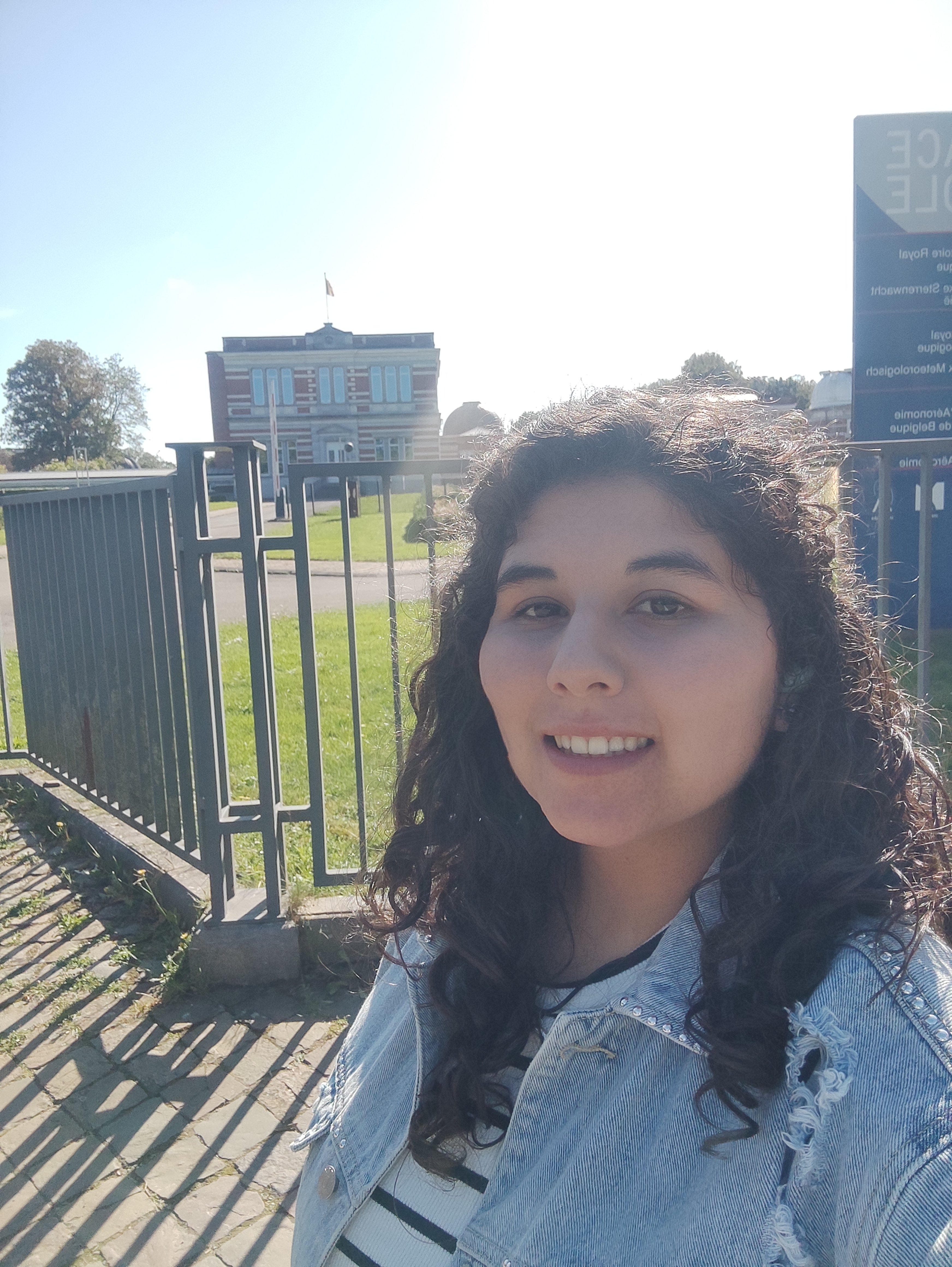
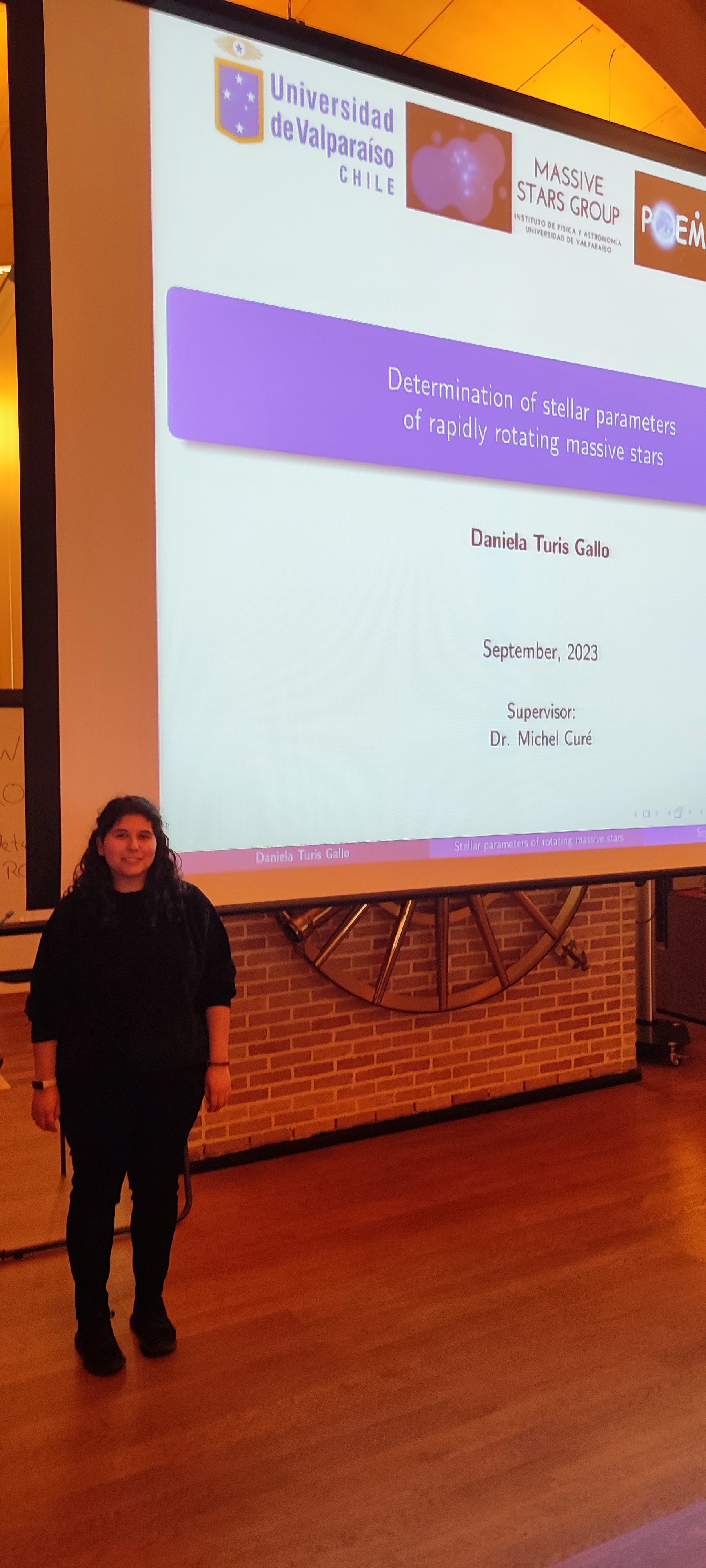
Additionally, I gave a seminar for the community of ROB astronomers about my master’s thesis and my currently PhD work, entitled “Determination of stellar parameters of rapidly rotating massive stars”. The feedback I received was invaluable in refining and improving my research.
In the firsts weeks, in the afternoons after work, I would take advantage of the pleasant September weather to walk around the observatory neighborhood, exploring some beautiful parks.
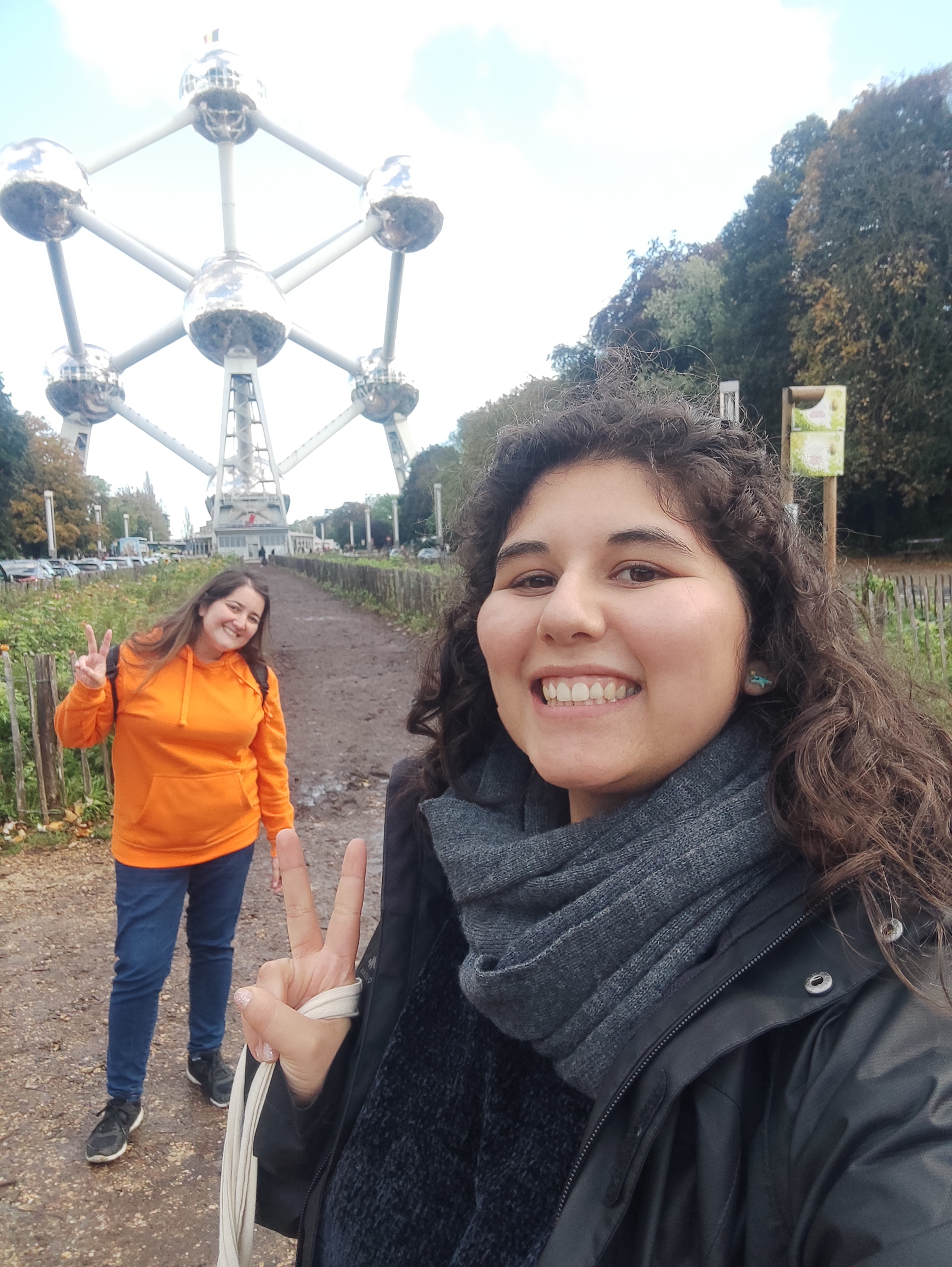
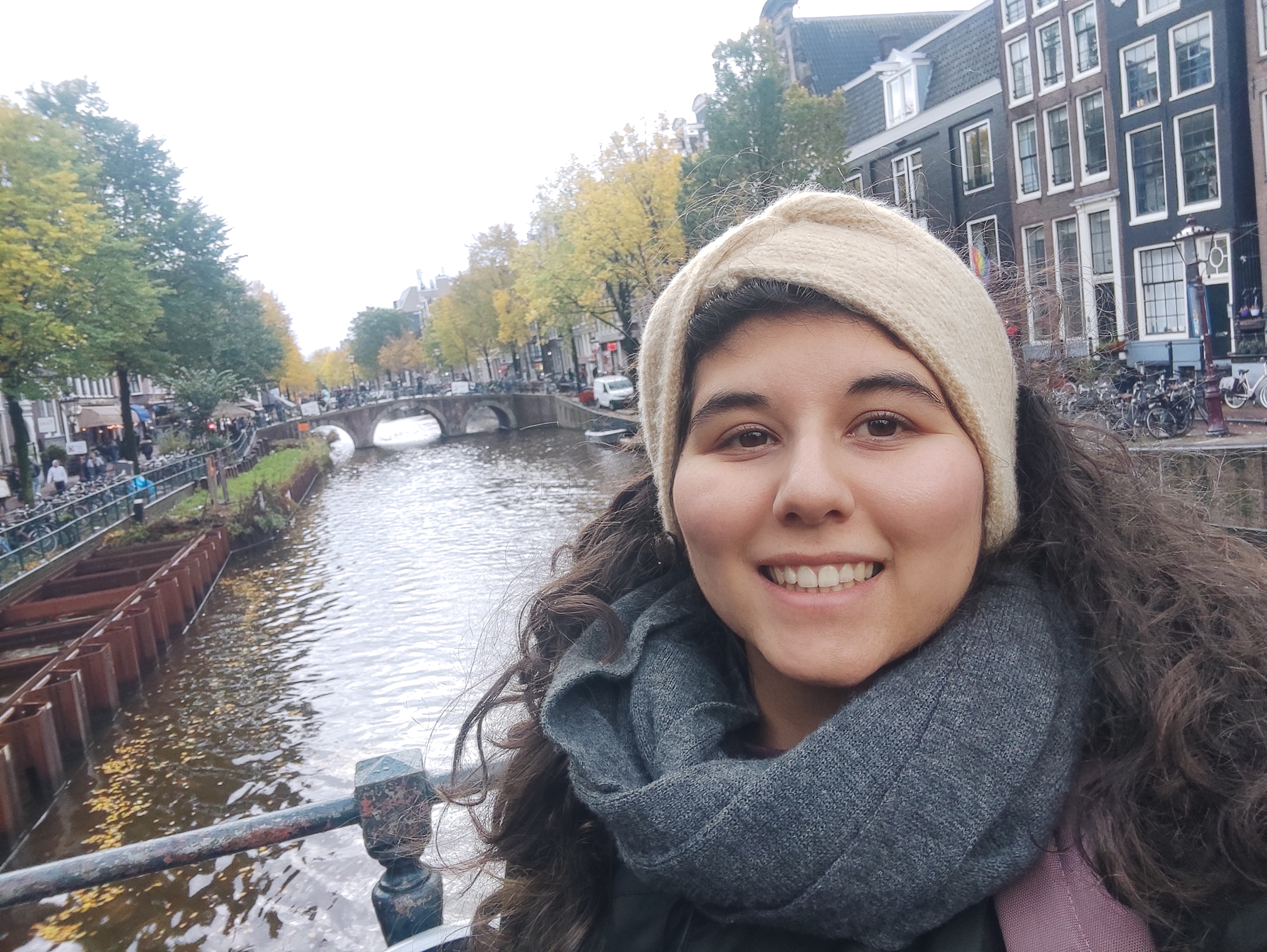
During the weekends, I ventured into the city center and visited iconic landmarks like the Atomium, a striking modernist building in Brussels. Additionally, I had the opportunity to visit other interesting Belgian cities, such as Antwerp, Ghent, Bruges, and Dinant, and a brief travel to Paris. Also Natalia Machuca and I took a weekend trip to Amsterdam by train.
I really appreciate this opportunity to stay at the ROB, where I enjoyed and learned a lot.
During the last few months, I had the opportunity to participate in an academic program in the Czech Republic. This experience included two weeks at a summer school in Harrachov and a more extended stay at the Astronomical Institute of Ondřejov. Throughout this experience, I not only expanded my knowledge in astronomy but also explored various cities in Central Europe and got to know Czech culture.
The first two weeks of September were dedicated to the "Stellar Winds and Outflows" school in Harrachov. This event brought together students and professionals from around the world to discuss and learn about stellar winds and outflows in the context of modern astrophysics. The lectures and workshops were given by leading experts in the field.
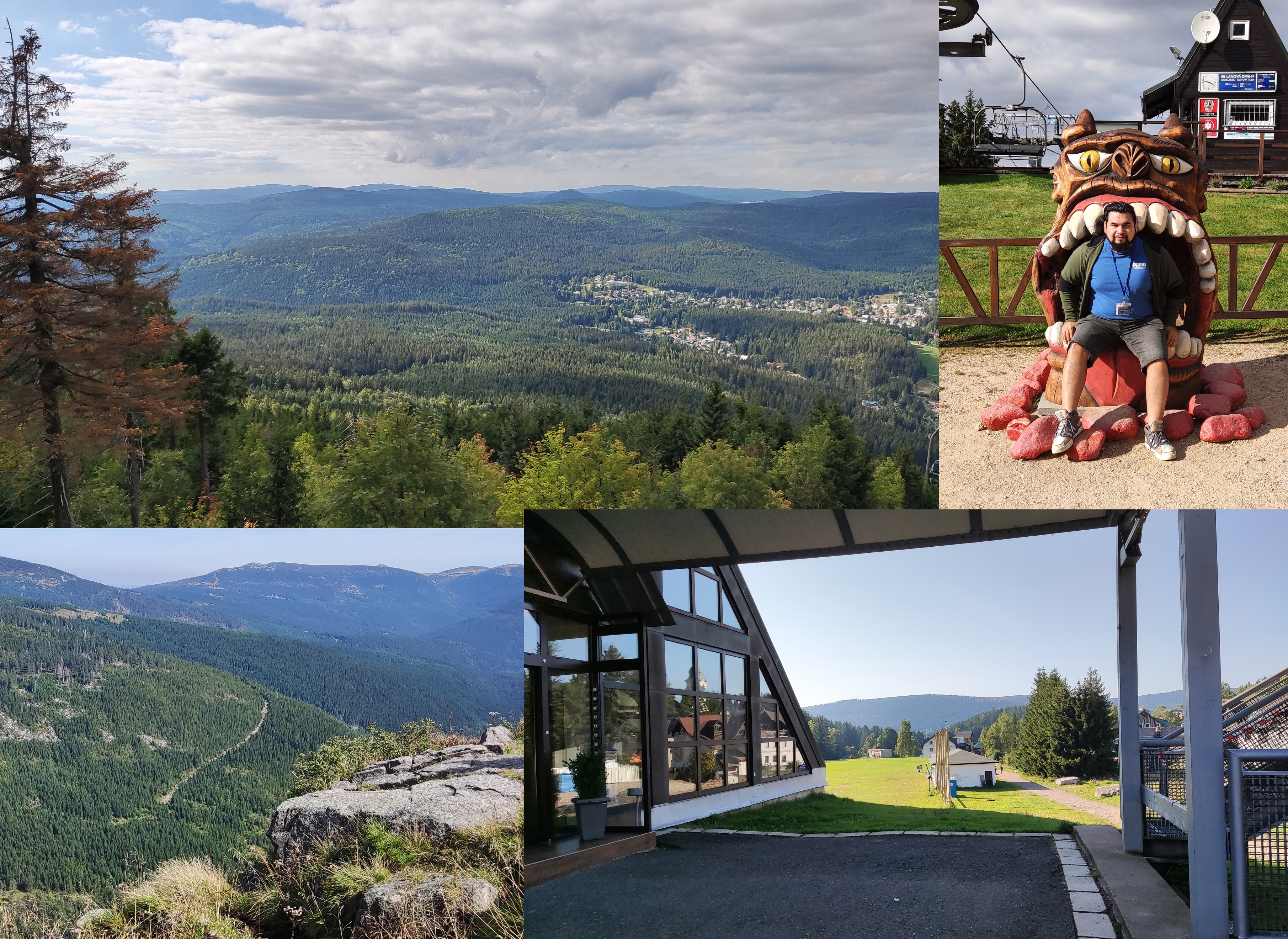
From mid-September until the first week of December, I worked at the Astronomical Institute of Ondřejov, one of the most important research centers in the Czech Republic. During this time, I closely collaborated with Dr. Michalis Kourniotis and Dr. Julieta Sánchez on several projects related to the observation and modeling of astronomical phenomena (searching for periodicities and similar topics).
The experience in Ondřejov was invaluable. The daily interaction with researchers and students from various nationalities allowed me to broaden my perspectives and acquire new skills in astronomical data analysis. Moreover, Dr. Michaela Kraus was a pillar of support for all the students, always willing to ensure that we felt welcome.
In my free time, I took the opportunity to explore several nearby cities. I traveled to Vienna, Dresden, Krakow, and other places within the Czech Republic, such as Brno and Kutná Hora. Each city offered a different blend of history, architecture, and culture. Especially memorable was my visit to the numerous castles and churches in the Czech Republic, each with its own history and charm.

Exploring Prague was a highlight, with its cobbled streets, the iconic Charles Bridge, Prague Castle, the Astronomical Clock, and the National Museum of Prague. The vibrant atmosphere of the city and its rich cultural history made each visit special.
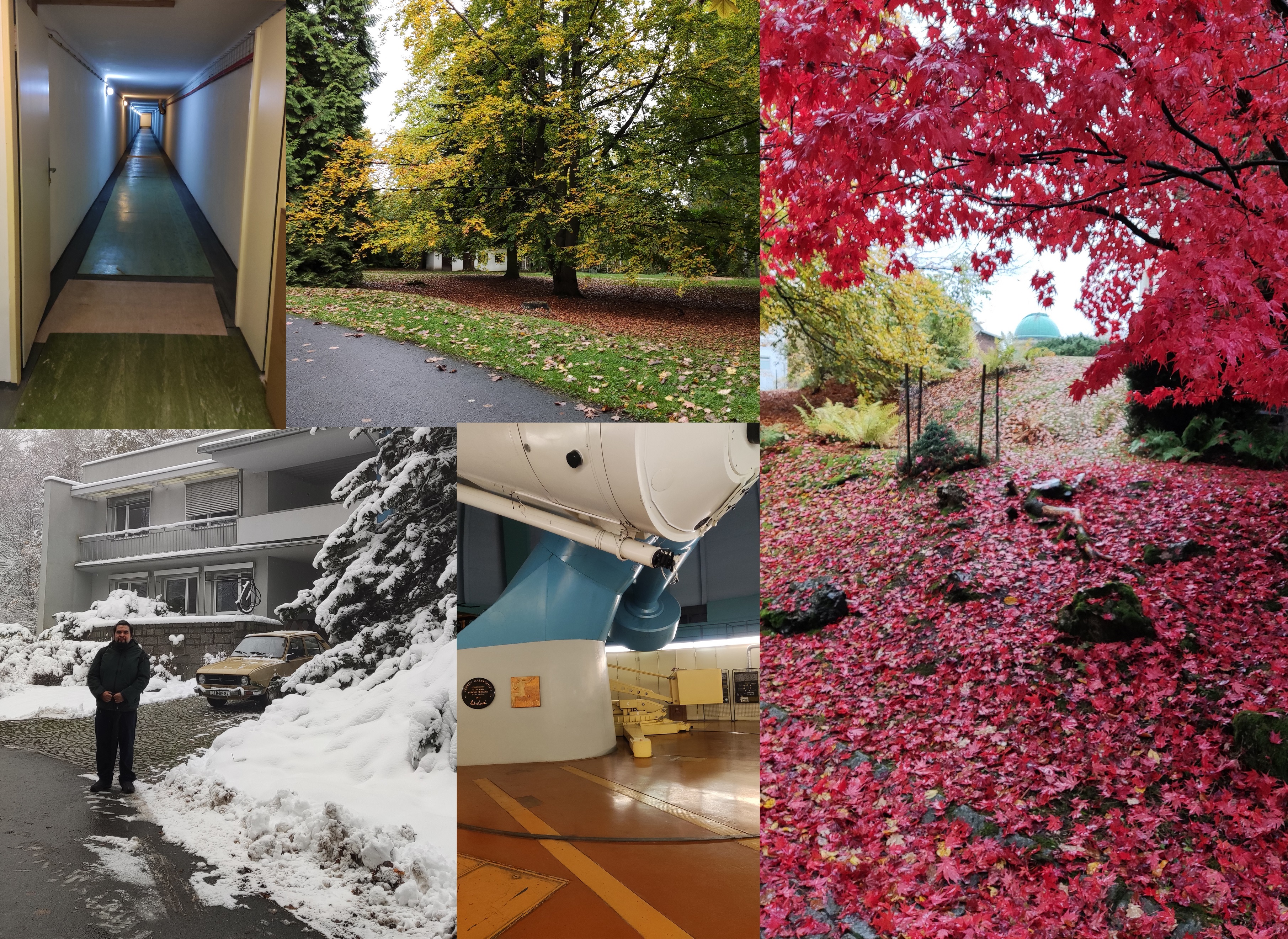
Ondřejov, in particular, captivated me towards the end of my stay when the landscape was covered with snow, transforming the surroundings into a winter wonderland. This environment contrasted sharply with my home in Chile and offered a completely new and fascinating perspective.
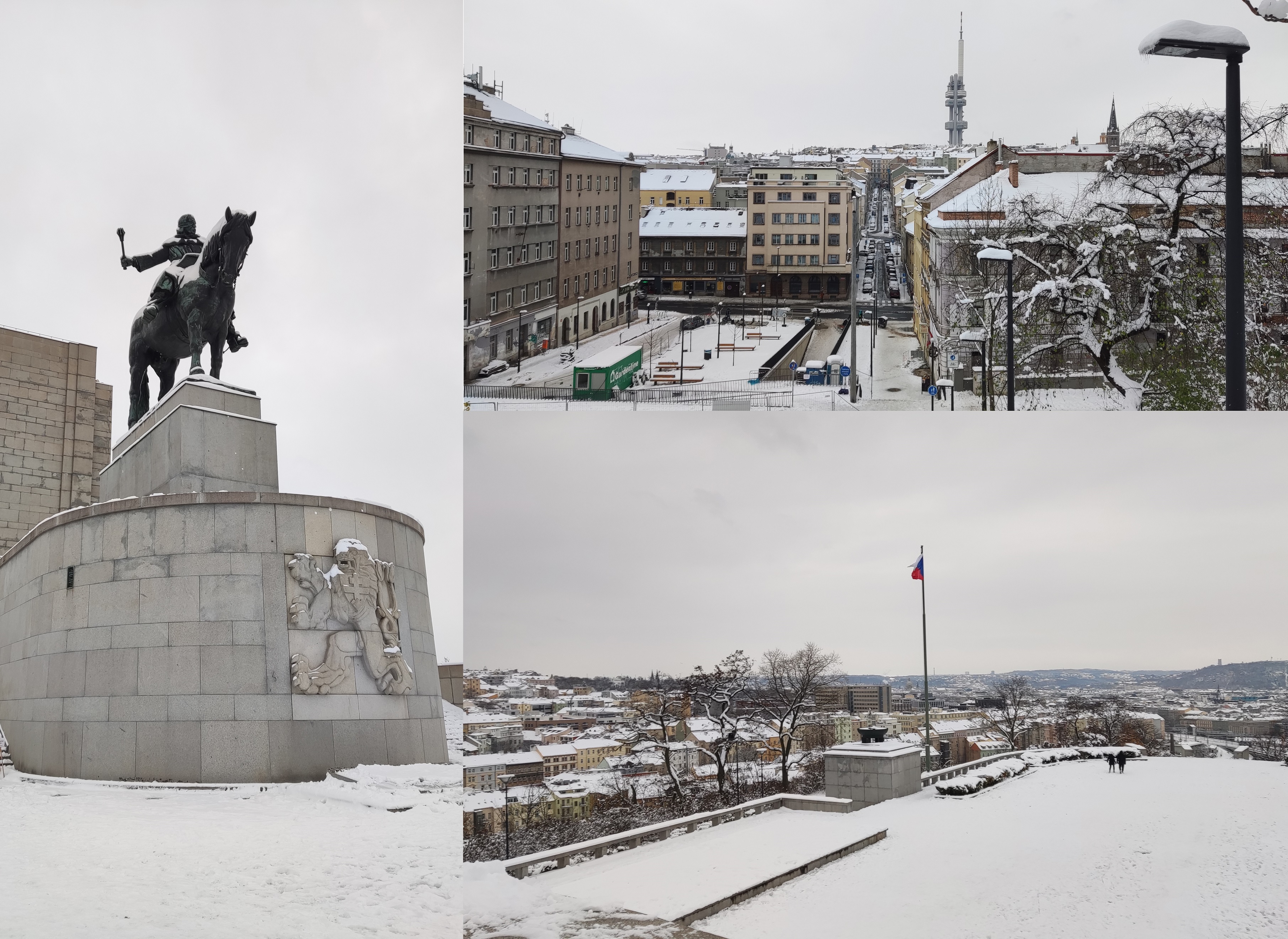
The hospitality and kindness of the people at the institute were exceptional. I felt very well received by everyone, and I am especially grateful once again to Dr. Michaela Kraus, who provided us with constant support and made us feel at home.
During this secondment, I participated in the International Summer School on Stellar Winds and Outflows at Harachov, where I worked on the project supervised by Dr. Lydia Cidale (UNLP) and Dr. Andrea Torres: “Fitting synthetic Hα line-profiles to observations”. During this school, I had the opportunity to interact with and learn from several distinguished experts in the field.


After the school, I spent 6 weeks in the stellar department of the Astronomical Institute in Ondřejov, Czech Republic. There, I worked on the analysis of 67 observations of the star P Cyg using the APPEL code to later study the variability of its parameters.


I also had the opportunity to collaborate with Matias Ruiz, Julieta Sanchez and Peter Nemeth, on the analysis of the equivalent widths of different spectral lines from synthetic models. For that purpose, I used ISOSCELES grid and a study the isocontours of two observed stars and constrained successfully some stellar parameters.



Furthermore, I attended a seminar at the Masaryk University in Brno and joined the regular journal club in the Institute. Here, I also contributed with a seminar talk where I showed my Ph.D. work on the wind momentum luminosity relationship and discussed my results with some experts in the area. I also presented the effort and teamwork I put into my secondment highlighting my contributions.

Finally, during the weekends I visited many different places with my Latin-American colleagues, including nearby countries and some local castles. It was another rewarding period thanks to the POEMS project and its members.
My secondment in the Czech Republic was 2 months. During the first two weeks I participated in the International summer school "Stellar winds and outflows" held in the city of Harrachov. The school allowed me to improve my knowledge about stellar winds and atmospheric models, as well as to familiarize myself with different computational tools and programs. At the end of the school I worked together with other colleagues, under the direction of Dr. Michalis Kourniotis, and I had the opportunity for the first time to normalize 40 spectra of Rho Cassiopeiae using the ISpec tool, among other things.
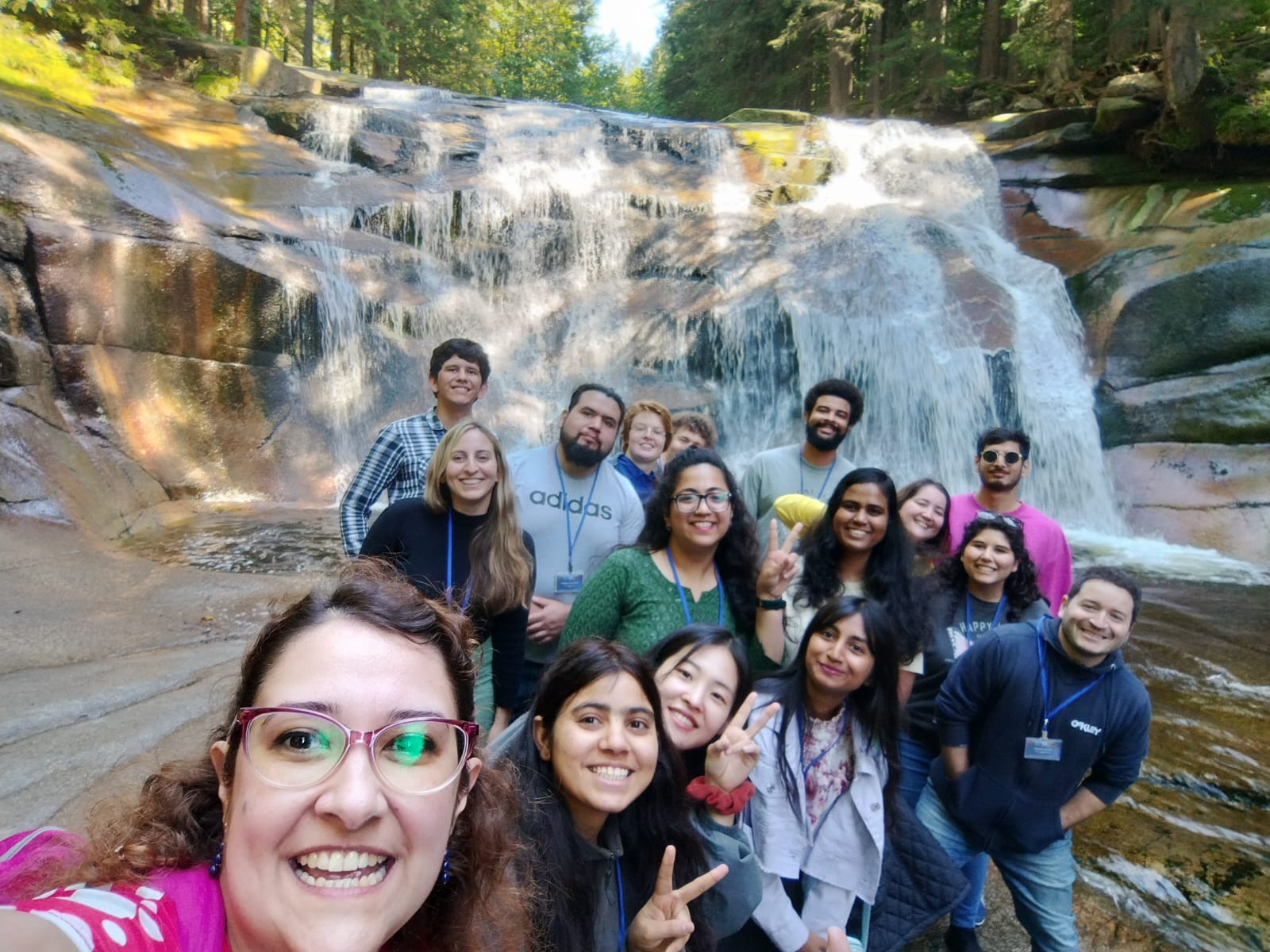
Then, I proceeded with my secondment at the Stellar Department of the Astronomical Institute in Ondřejov. There I was continuously working with a colleague from Chile, Lic. Gunther Avila on the development of new criteria for the detection of periods with the Lomb-Scarlge and wavelet (WWZ) tools. At the same time I continued to write a paper entitled "Variability in supergiant stars", which also counts with the collaboration of Lic. Gunther Avila, Dr. Michalis Kourniotis, Dr. Lydia Cidale, Dr. Wolfgang Glatzel and Dr. Alejandra Christen.
I collaborated with Dr. Michalis Kourniotis on numerous occasions and we still continue that collaboration from distance. I would like to thank Dr. Tiina Liimets for the time she spent teaching me how to measure spectral lines using IRAF and Dr. Julieta Sanchez for explaining how to download and clean the TESS light curves. I also want to thank Dr. Michaela Kraus for spending a whole day teaching me how to reduce spectra with IRAF, and providing me with her code to normalize them. Becoming familiar with these tools is fundamental for my doctoral thesis and this has been extremely helpful for me.
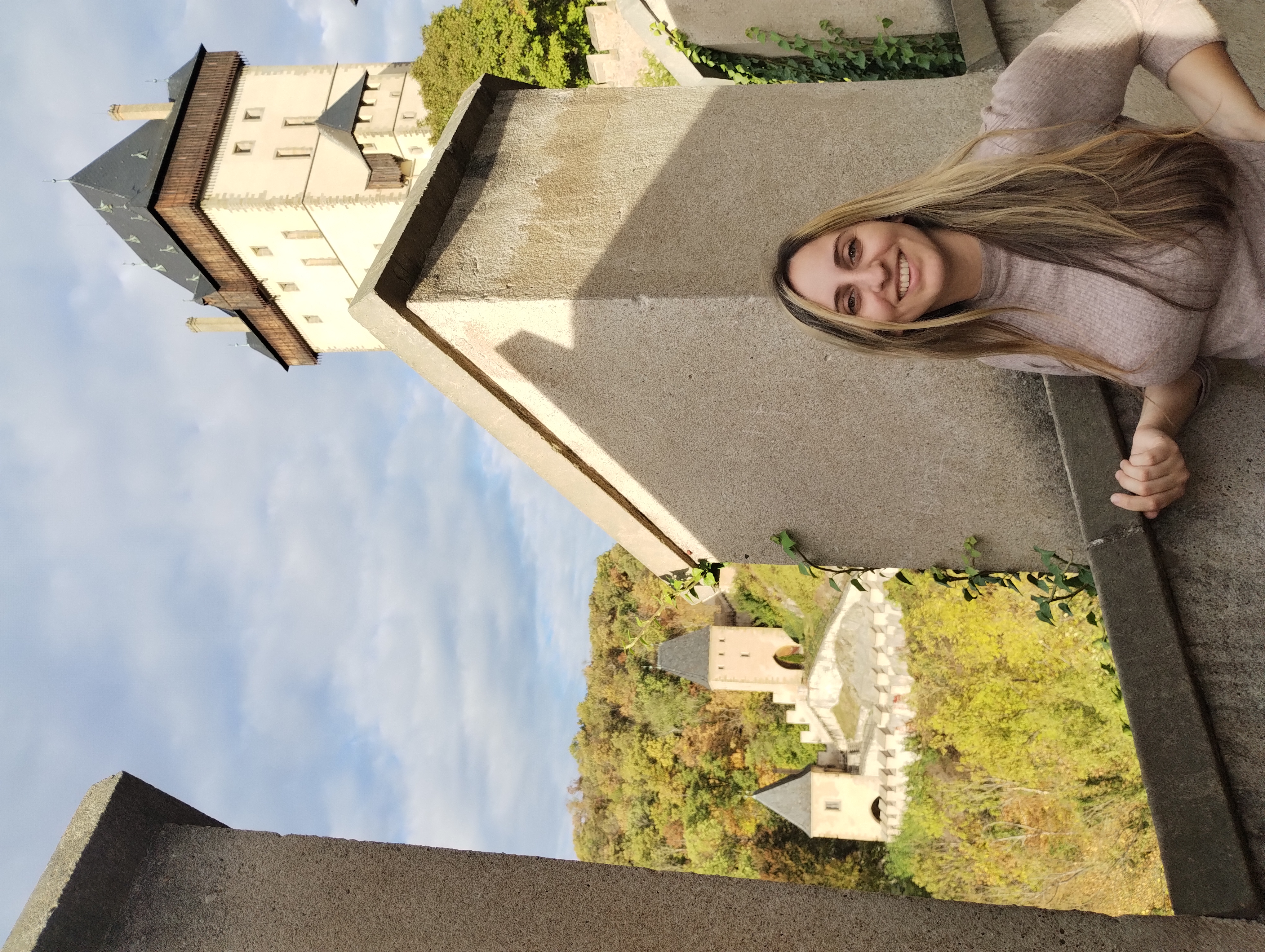
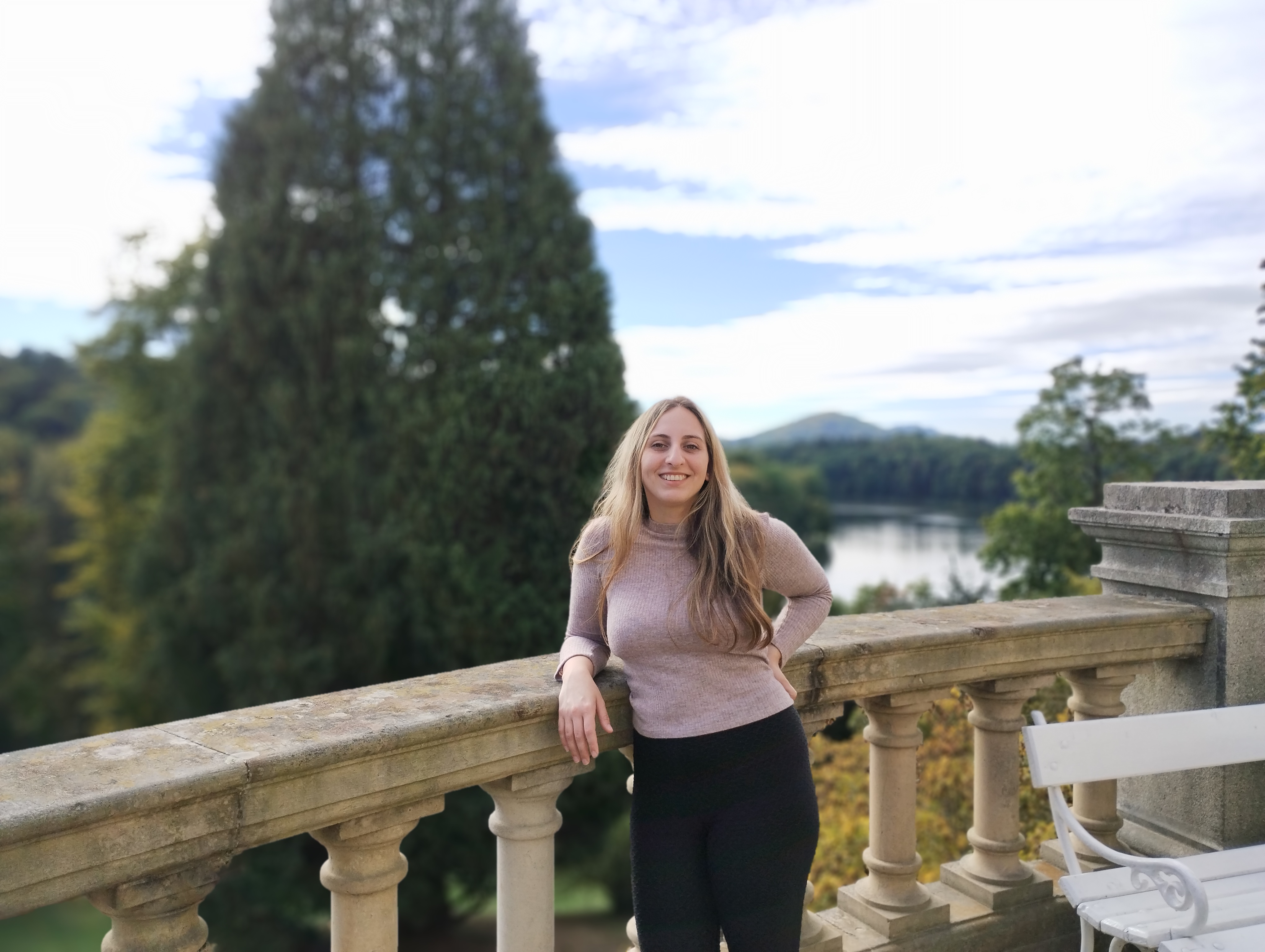
In my free time I was able to see more of the country and visited different cities such as Praha, Kutná Hora and Brno. Fortunately I had the chance to visit two beautiful castles, Konopiste Castle and Karlstejn Castle. Also during a weekend I traveled to the city of Vienna in Austria, and spent a beautiful 2 days with some friends I met during this trip.
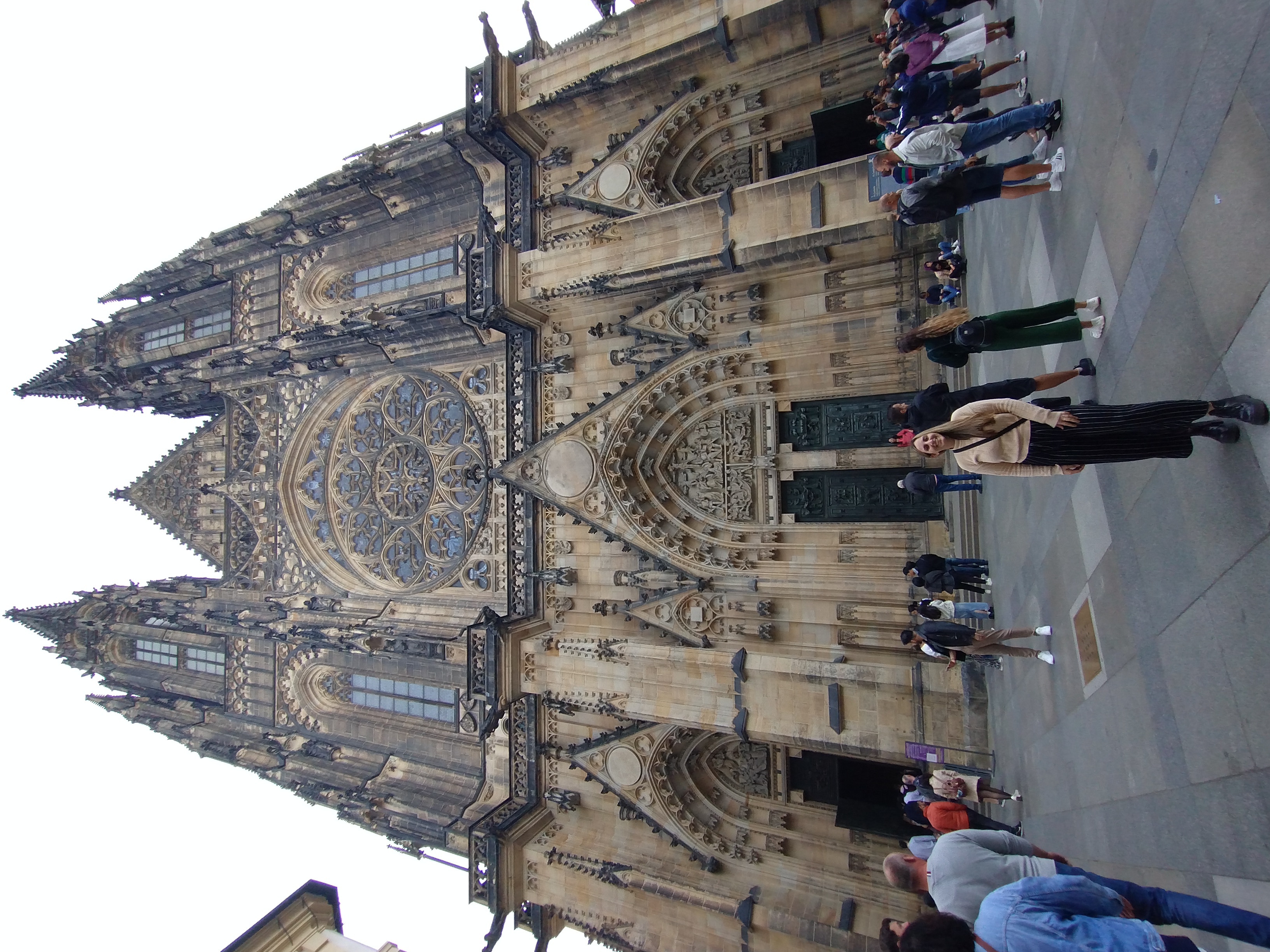
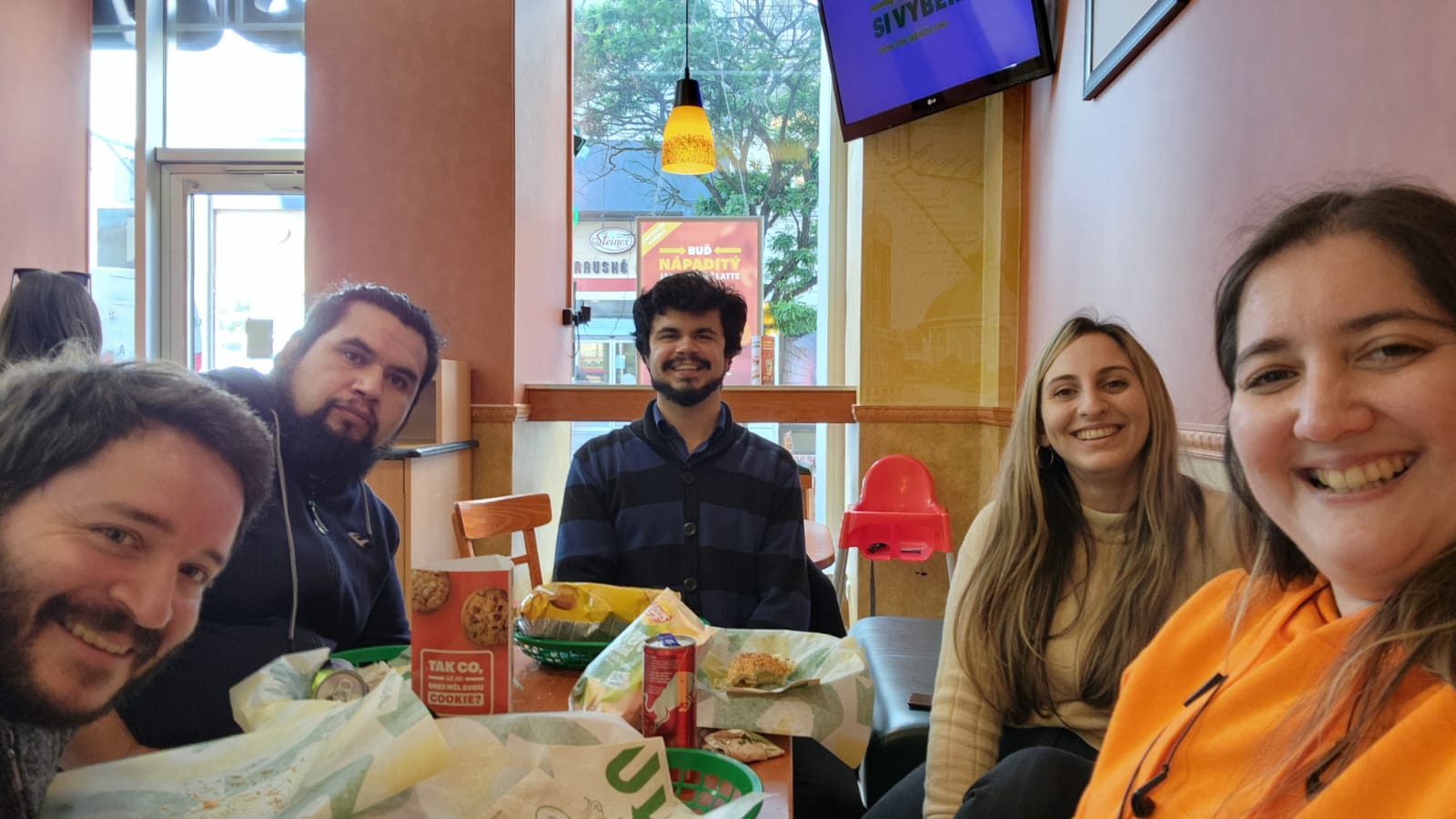
My experience during the whole stay was great! Czech Republic is a beautiful country and the Astronomical Institute in Ondřejov is an excellent place to work. I want to thank the POEMS project for allowing me to do this training, and all my colleagues at the Institute for their patience and constant kindness. They made my stay very pleasant. Thank you! and I hope to see you all again!
I traveled to the Czech Republic for the second time as part of the POEMS project. I arrived in Prague on September 2nd and the following day, I went to Harrachov to attend the International Summer School on Stellar Winds and Outflows, organized by POEMS. During the school, I met PhD students from around the world and learned from experts in the field of Stellar Astrophysics. I chose to study the photometric and spectral variation of the yellow hypergiant star Rho Cassiopeia, which has recently experienced some outbursts.



After the school, I spent a month and a half in Ondrejov, where I began a new project with Dr. Sanchez Arias and Dr. Peter Nemeth. This project follows our recently published work in the journal Galaxies. We will study the Helium abundance of blue supergiants, which show peculiarities in their spectra. We collaborated with Natalia Machuca to develop a dependable method for obtaining fundamental stellar parameters by comparing them with the equivalent widths of the synthetic spectra from the ISOCELES grid of stellar models. We hope to obtain exciting results soon. Additionally, I presented a very interesting publication about the impact of clumping in infrared and optical spectra and how to model it during the Joint Journal Club. I attended a seminar talk given by Dr. Sanchez Arias.
We also organized trips and visits to Prague during the weekends, and even traveled to Vienna for a weekend.



This secondment was very busy and helpful. As usual a huge thanks to ASU for receiving me again with such warmth and care!

I visited the Stellar Department of the Astronomical Institute in Ondřejov, Czech Republic from September 01, 2023 to November 27, 2023. The first two weeks of my visit, from September 03, 2023 to September 15, 2023 I attended the International Summer School on Stellar Winds and Flows held in Harrachov. At the school, we listened to a comprehensive overview of different aspects of the theoretical and observational aspects of stellar astrophysics. I had the privilege of participating in a series of lectures covering a wide range of topics. There were also workshops involving various computational methods.It was a rewarding experience to share experiences with the astronomers from the different observatories, various researchers’ members of POEMS.
After summer school, I traveled to the Stellar Department of the Astronomical Institute in Ondřejov to continue my work on the Galactic distribution of Wolf-Rayet (WR) and O-type stars. During this period, I worked together with Olga Maryeva. We discussed about current situation in studies of WR stars. We discussed about spatial distribution of WR stars in the Galaxy and will discuss how it will be useful for testing stellar evolution theory. Also we talk what data we have and what kind of data we need to make progress.
The results of these investigations were widely discussed at seminar room of stellar department on November 20, 2023. I would like to notice that these investigations will be very useful in the framework of a solid foundation for future collaboration. I hope to publish soon the results of our investigation.
I actively participated in weekly seminars of stellar Department organized by Olga Maryeva and Julieta Sanchez.
Additionally, on some weekends, I had the opportunity to go to Prague. There I visited different interesting museums. These trips enriched my cultural understanding and broadened my personal horizons. I was at cities Prague, Kutná Hora and Brno of Czechia.
It was very interesting for me to see various cultures and experience the European lifestyle. I think that connecting and interacting with other distinguished professionals, along with the opportunity to acquaint myself with the diversity of European cultures, was a truly useful experience. I am grateful to all for the knowledge and experience I have gained during this visit. Thank you everyone!
This is my third trip to the Astronomical Institute of the Czech Academy of Sciences, Czech Republic, it took place from September 1 to November 23, 2023.
During it, I was lucky to get into the astronomy school “International School “Stellar Winds and Outflows”” 3-15 September 2023, Harrachjv, Czech Republic. I must note how interesting and intensive the classes were. During this period, I learned a lot of new things that were necessary for my work. In addition, both lecturers and students collaborated very closely and shared their experiences, problems and thoughts about their scientific activities. Interesting questions were also raised during the lectures. The school included enthusiasts of astronomy and their work, despite their rather young age. And communicating with such people is very interesting! My deep gratitude to everyone who took part in organizing and teaching at this school!

I Would like to note that there was a quest at the end of school. In 1 day, create a project, process the data and show it to all participants. This is a very interesting experience: to systematize data and draw conclusions in a limited time.
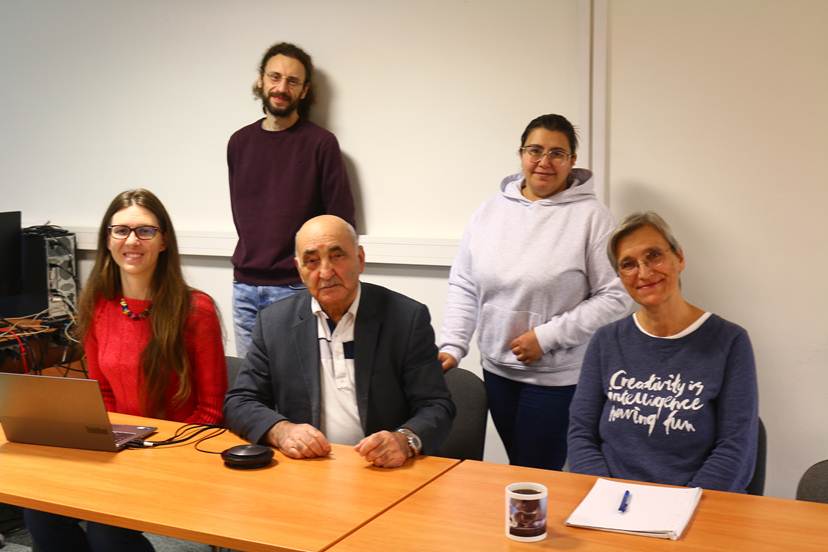
Subsequently, I worked with Ondřejov Observatory staff, Michaela K. and Olga M. We worked on objects PY Gem, V380 Cep, MNWC 1080, HD253659. In addition, various issues were discussed at the weekly POEMS meetings. They helped me take a more in-depth look at the results of my work and pay attention to some features in the data.
My gratitude to all POEMS participants and observatory staff for their active participation and support both in work and in leisure!
During my first secondment, I attended the POEMS summer school of stellar winds and outflows. I arrived a day before the event and was warmly received by Kuljeet Singh Saddal, whom I had the pleasure of meeting the previous year in Valparaiso. Our time began with a brief tour of Prague (Daniela second from the left in photo), and from there, we journeyed to Harrachov.

Throughout the school, I had the opportunity to learn in detail about various topics related to stellar winds from all the expert professors who delivered their lectures. For the final project supervised by Dr. Peter Nemeth, we worked with TLUSTY models and the Sandbox site, for which he generously provided a one-year membership.

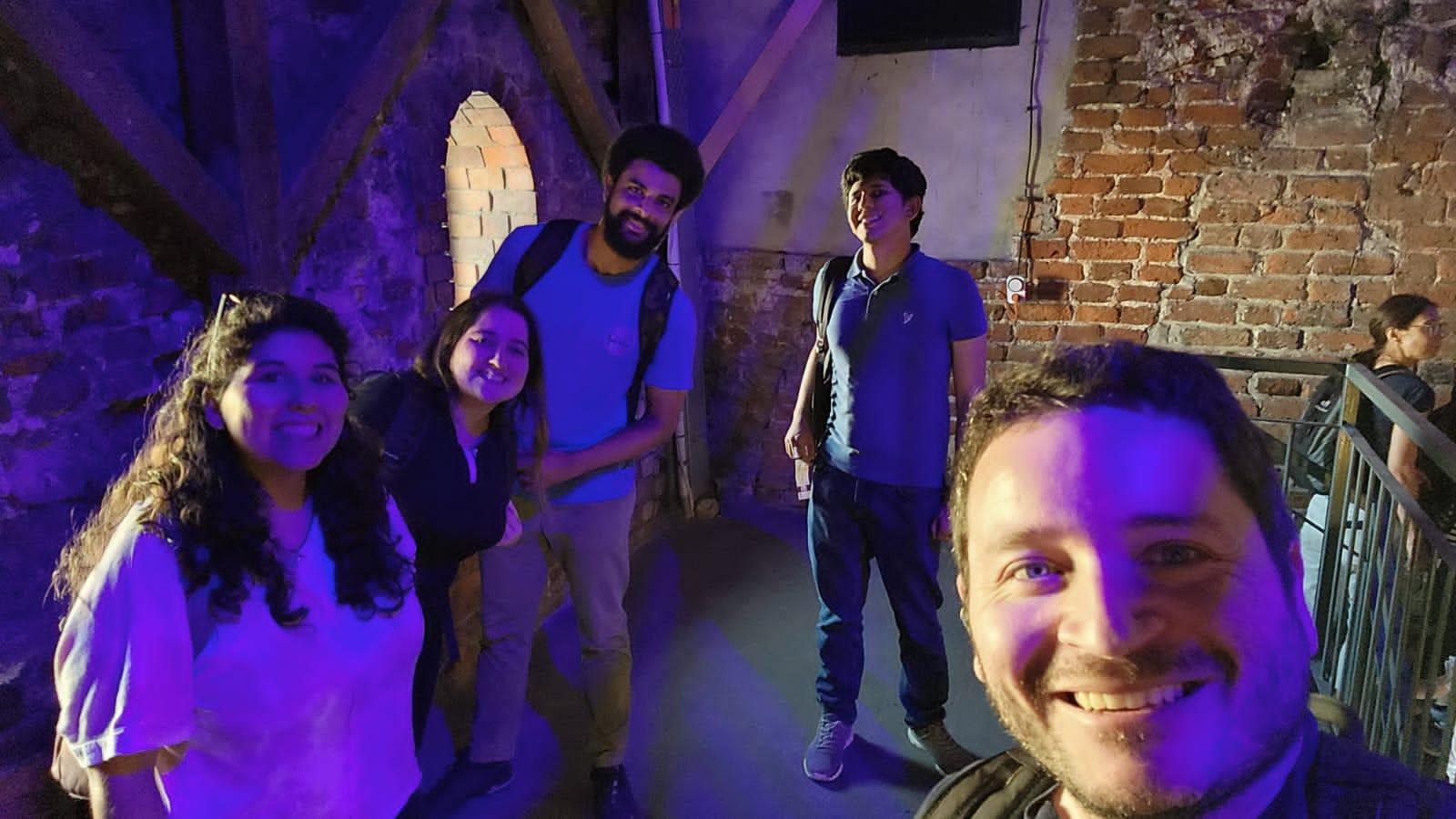
During the weekend, we had a memorable hiking expedition and with the Latin group, we made a quick visit to Wroclaw, Poland. At the end of the summer school, I continued my secondment at ROB, and I am sincerely grateful for the opportunity to meet all the professors and learn from them.
During the first two weeks of my stay, I attended the International Summer School on Stellar Winds and Outflows held in Harrachov. The school provided a comprehensive overview of stellar astrophysics, and I had the privilege of participating in a series of lectures that covered a wide range of topics, as well as hands-on workshops involving various computational tools.
This school concluded with a mini research project that allowed us to apply our newly acquired knowledge. It was a rewarding experience to put theory into practice and share experiences with other participants from diverse backgrounds.


Following the summer school, I traveled to the Stellar Department of the Astronomical Institute in Ondřejov to continue my work on stellar winds, where I also shared a wonderful time with new friends.
During this period, I worked on creating synthetic spectral models using the FASTWIND, CMFGEN and TLUSTY codes, focusing on massive O-type stars in the UV range, under the guidance of Peter Nemeth. This job provided me the opportunity to further deepen my experience using the TLUSTY code. The underlying results have led to tighter estimates for rotational velocities and mass-loss rates, and have confirmed the efficacy of using clumping models, in comparison to previous studies. These results will be very useful in the framework of my doctoral research, allowing me to establish a solid foundation for my future studies.
Furthermore, I actively participated in various seminars held at the institute, with one in particular being led by PhD. Julieta Sanchez in Brno.



Additionally, on some weekends, I had the opportunity to explore neighboring countries. I visited Poland, Austria, and Germany with the company of friends, and explored cities like Kutná Hora and Brno here in Czechia, immersing myself in various cultures and experiencing European lifestyle. These trips not only enriched my cultural understanding but also broadened my personal horizons.



Connecting and interacting with other professionals, along with the opportunity to appreciate the diversity of European cultures, was a truly transformative experience, and I am grateful for the knowledge and connections I have gained during this journey. Thank you everyone!
The two main objectives of my visit to Czech Republic, as planned by my advisor Marcelo Borges from Observatório Nacional, were attending POEMS’ summer school of Stellar Winds and Outflows, which spanned from 3 to 15 of September in Harrachov, followed by my secondment at Ondrejov’s Astronomical Institute’s Stellar Department under the supervision of Michaela Kraus until September 30th.
I arrived in Prague on August 30th, just a couple of days before the beginning of the summer school, so I had the privilege to explore the city and visit many of the touristic spots it had to offer: Prague castle, Charles bridge, the old town hall, the observatory tower, Vysehrad castle, the Jewish quarter and a plethora of museums and expositions. On the day before the school started, I met some other schoolmates and we traveled to Harrachov together by bus (none of us speaks Czech, but fortunately we did not get lost!).

For the next weekdays, we would wake up in the morning, have our breakfast at the hotel’s restaurant and head to the seminar room where we would have our lectures until late afternoon, taking a rest only for lunch and coffee breaks. For the first week, some of the topics were: Radiative Transfer, Introduction to Hydrodynamics, Radiation-Driven Winds, Mass Loss Recipes, TLUSTY, SYNSPEC, ROTIN and CMFGEN softwares.



We had the days off during weekends. On Saturday, we all went hiking on the nearby hills close to the border with Poland; we ended up walking longer than intended, since the cable car to the top was not operating that day, but everything went well and no one was left behind! On Sunday, I decided to accompany some of the schoolmates for a very quick visit to Wroclaw, in Poland.


The next week started and we had the last batch of lectures, for instance: Stellar Winds And Magnetospheres, Astronomical Data Archives For Stellar Spectroscopy, Winds And Outflows From Massive Pre-Main Sequence Stars, Mass-Loss Activity Of Yellow Hypergiants, Winds Of LBV’s And Cool Hypergiants. After that, we were given the assignment of forming groups and choosing one of the project topics proposed by the lecturers to work on, and with their help we would need to present our results to everyone in the form of a short lecture. I worked with Bharti Arora and Suryani Guha as group mates, having Olga Maryeva as our supervisor, and we analyzed the clumping effect in O-type star spectra using CMFGEN. In the end, we successfully finished the task and we were awarded with the school certificate.

The school was over, so me and other secondment students along with Astronomical Institute researchers moved to Ondrejov by car. For us students, the following workdays consisted basically of walking from our dormitory to the institute early in the morning and working on our individual research until late afternoon; while for weekends and holidays, we had our day off, and in my case I would usually spend the day in Prague, considering how small and quiet Ondrejov is. During my time in the institute, I worked under the supervision of Michaela Kraus on B[e] star spectra which exhibited CO lines, a topic of quite importance to my Ph.D research on stars in Transition Phase. The spectra were observed with the GEMINI Observatory’s IGRINS spectograph, obtained by my advisor, Marcelo Borges. Michaela taught me how to use her own CO Code to fit the stellar parameters of the simulated spectra with the observed one.


Then my secondment came to an end on September 30th as planned, and after saying goodbye to all my research fellows I took my flight back to Brazil. I’m really thankful for all the new friends from all over the world I made during my stay in the Czech Republic, and for all the academic and personal experience acquired from this unique opportunity.
I have been visiting the Tartu Observatory, University of Tartu in Estonia in the framework of the POEMS project for two months. Firstly, I obtained skills on working with Linux operating system and then I learned about the processing of spectral materials in the Linux operating system through the IRAF program. IRAF is a product of the National Optical Astronomy Observatories and was developed for the astronomical community.
We also had discussions with Tõnis Eenmäe from Department of Stellar Physics, about processing photometric observational data. He gave me very important information about the depths of photometry and showed me the practical methods of processing photometric observational data through various programs.
During my visit, I also had the chance to participate in the “Stellar spectroscopy workshop” held at the Tartu Observatory. On the first day of the 2-day workshop, lectures on stellar spectroscopy were heard, and on the next day, all participants were involved in practical work. The workshop is financed by the EU Horizon Europe Twinning project EXOHOST and UK Research and Innovation.


In addition, during my visit I gave a seminar: “Photometric variability of Wolf-Rayet type star HD191765”. I also participated regularly in astroseminars that take place at Tartu Observatory.


During these two months, every weekend I visited different places of interest in Estonia. One of the most unforgettable places I visited was the Pärnu city. The city sits off the coast of Pärnu Bay, an inlet of the Gulf of Riga, which is a part of the Baltic Sea. Walking along the shores of the Baltic Sea in autumn was a wonderful feeling. I also visited University of Tartu Pärnu College and tasted various dishes from Estonian cuisine, listened to Estonian music and got acquainted with Estonian culture and traditions. In addition, I also went to the town of Elva, which is located near the observatory. Although it is a small town, it has a magnificent forest and lake view.



At the end, I would like to thank the entire staff of the Tartu Observatory for their hospitality during this visit, especially Dr. Anna Aret. I hope to see you all again!
During my last visit to ASU (August 18 to September 27, 2023), I prepared my lectures for the POEMS School “Stellar Winds and Outflows” held in Harrachov, in the Liberec Region of the Czech Republic. Harrachov is a beautiful town with a glassmaking tradition located among the mountains close to the border with Poland.
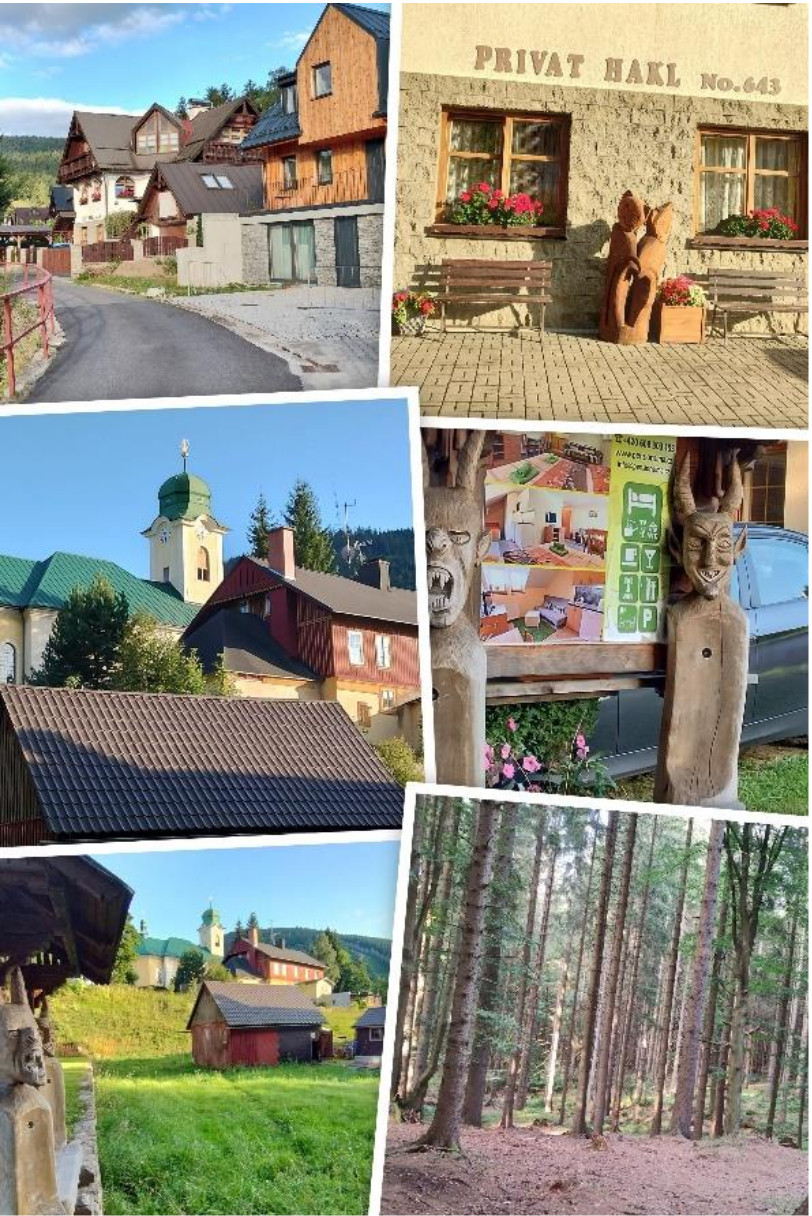
The school was carried out between the 3rd and 15th of September. It was an excellent opportunity to join the POEMS team and have fruitful discussions. It was a wonderful experience to share classes with students from different regions around the globe who worked hard and efficiently.

I also worked with Alejandra Christen, Gunther Avila and Aldana Alberici Adam to perform the wavelet analysis of the light curves of 5 B-type supergiants. We were able to detect a binary system that has a pulsating star excited with two pulsation modes. This result encouraged us to write a manuscript, which is being prepared.
At the same time, I taught Natalia Machuca to use the radiative transfer code to analyse the spectrum variability of the PCygni star. I also attended the ASU regular seminar held in Ondrejov.
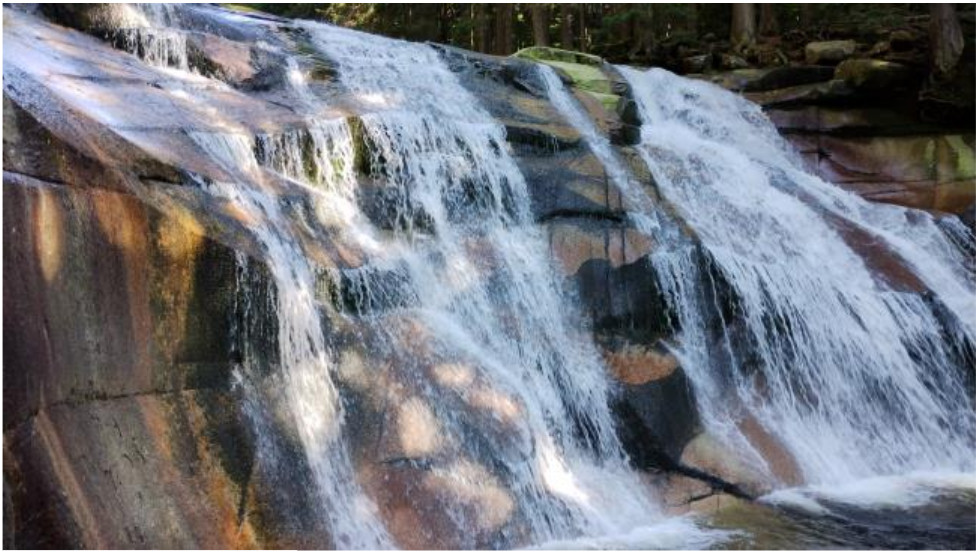

During my stay in Harrachov, we had a 17-km walk excursion to the waterfalls, where teachers and students shared a good time.
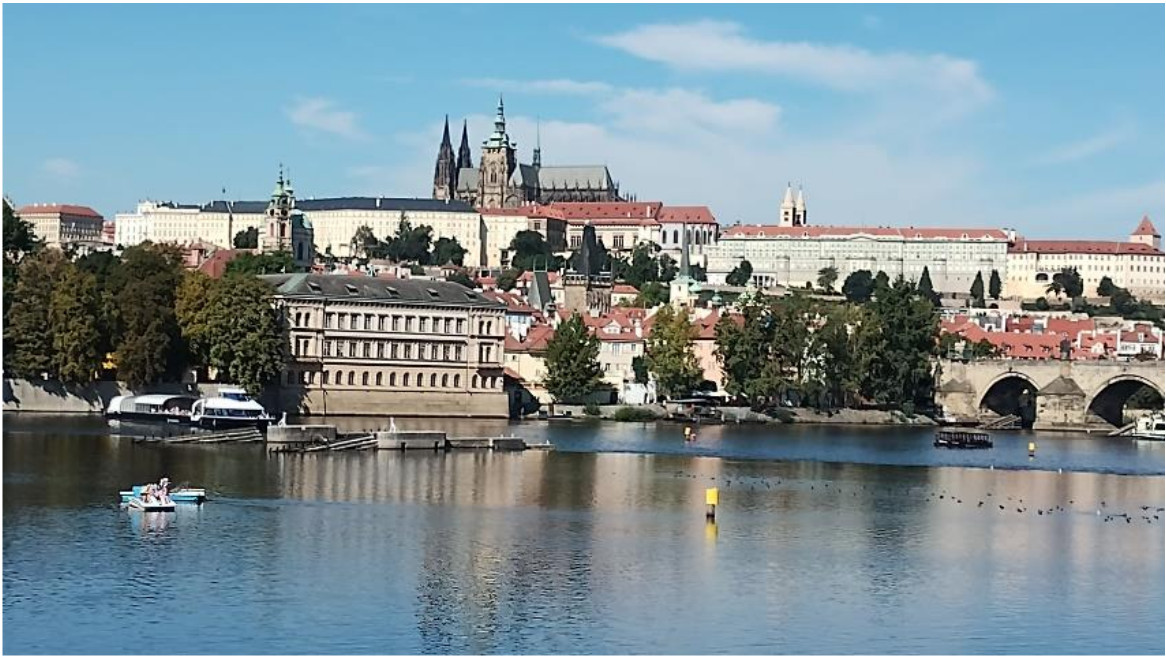
The classical visit to the fantastic city of Prague could not be missing. I met my old friend there and bought some souvenirs.
When I arrived in the Czech Republic, I stayed at Villa Leonora in Ondrejov. A beautiful house in a beautiful park. Every day I walked to the observatory on a path full of trees and greenery, clean air and beautiful houses.
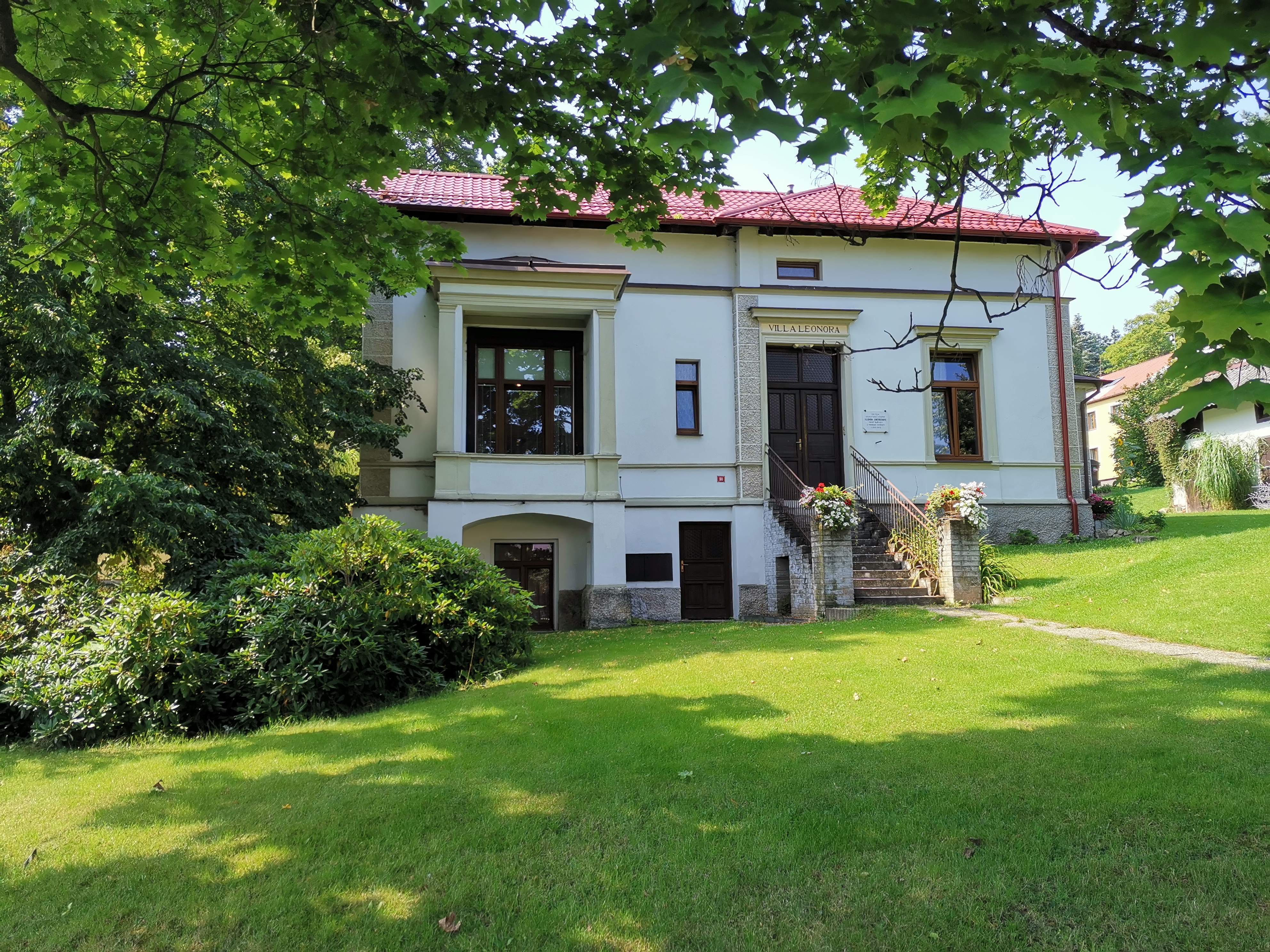
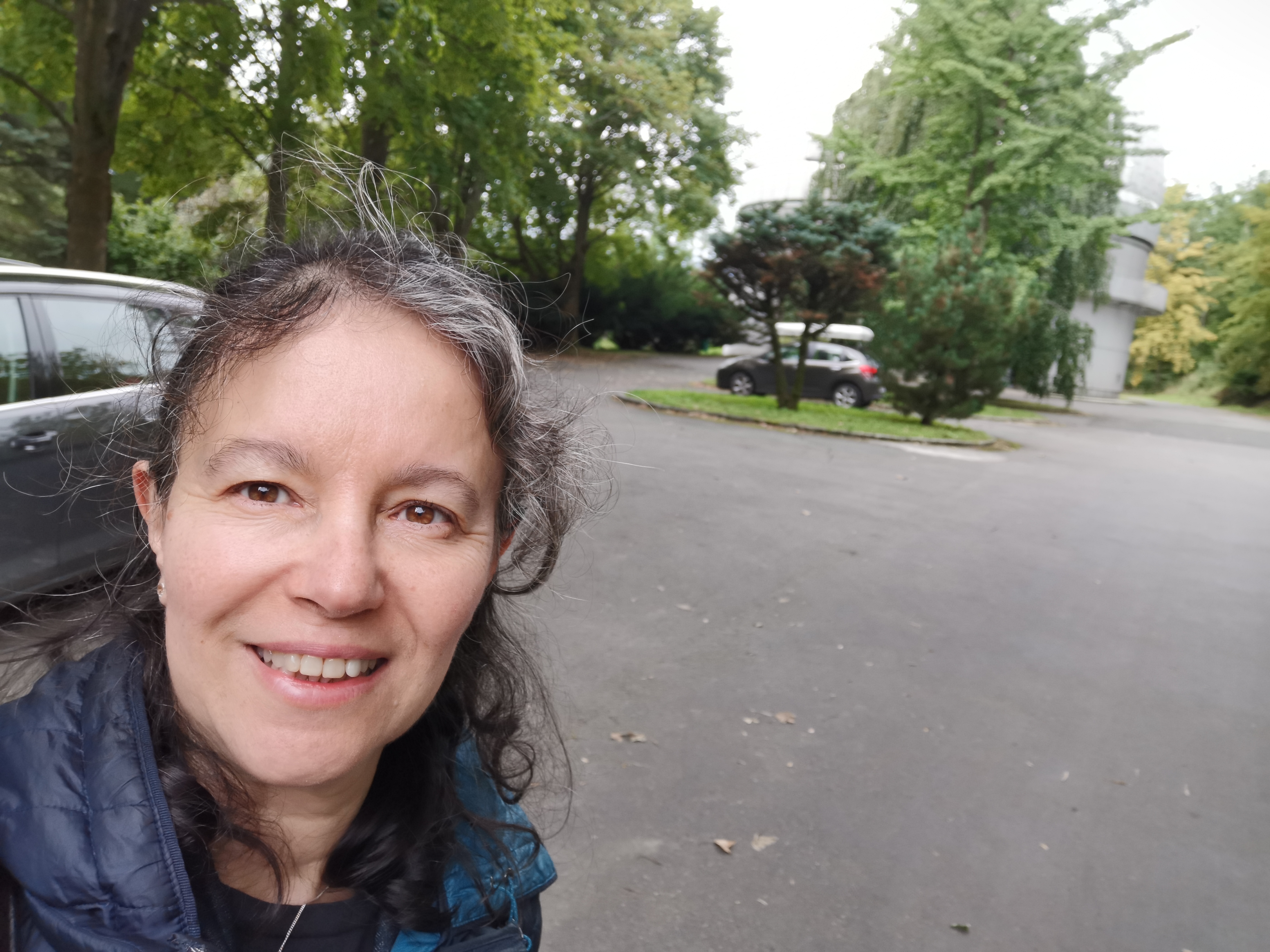
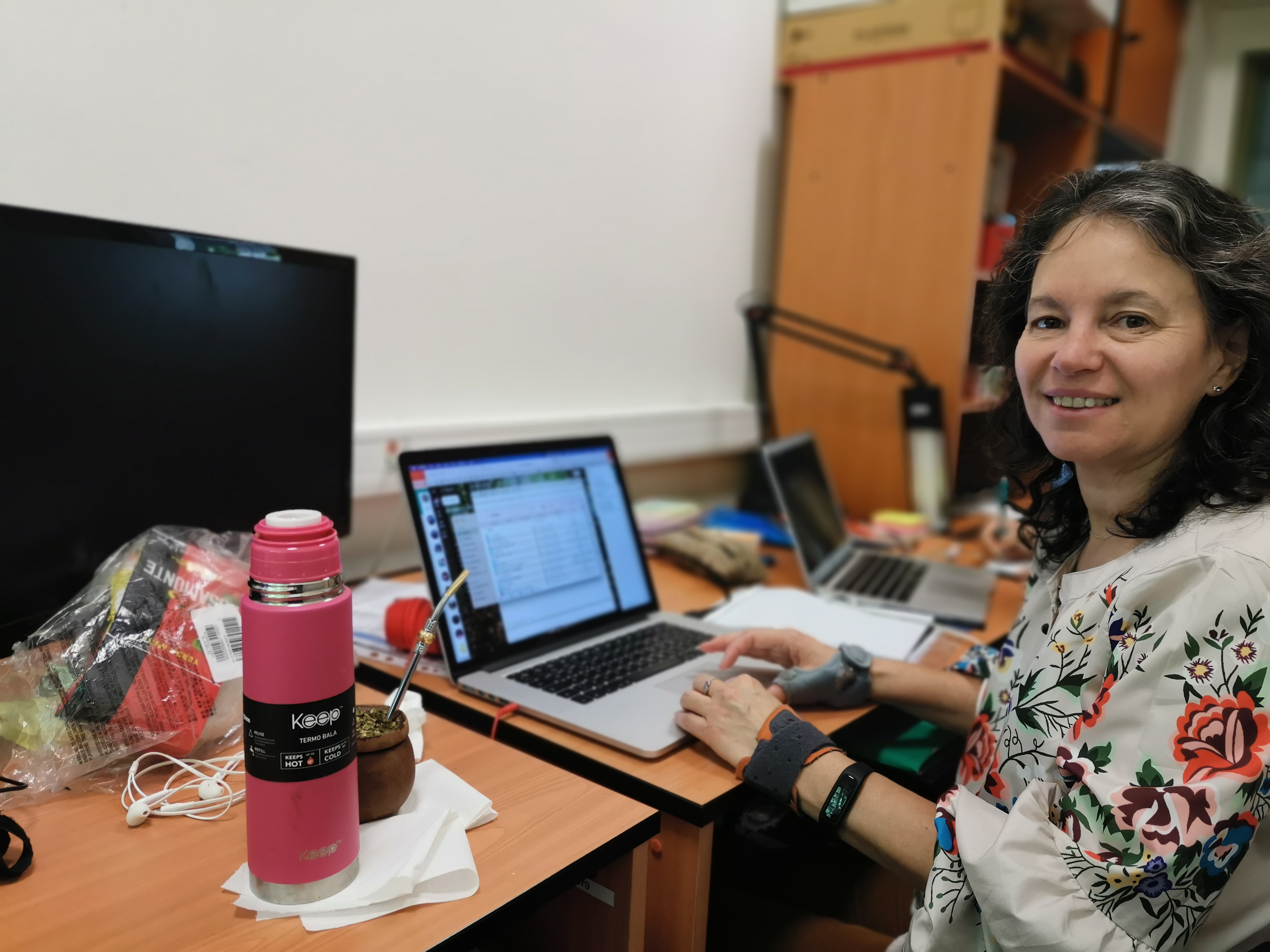
The work at the observatory was very comfortable, I had everything I needed. I was able to interact with many other researchers in the Czech Republic, researchers from Argentina, Spanish-speaking countries, and other countries, as well as with PhD students. The atmosphere was pleasant and with a lot of scientific discussion. I was also able to attend a seminar with two speakers that is held once a month. On some occasions we went to eat at Ondrejov's pizzeria that prepares delicious pizzas, the 4-cheese pizza was my favorite.
Few food businesses in town opened and closed very early, from 7 am to 5 pm. They don't have that much variety of food but both Michaela Kraus and Julieta Sanchez kindly drove us to a supermarket in a neighboring town on two occasions so we could buy some specific foods. We discovered a place with a basketball basket nearby thanks to the recommendation of another researcher and I was able to visit a lake and tour the town.
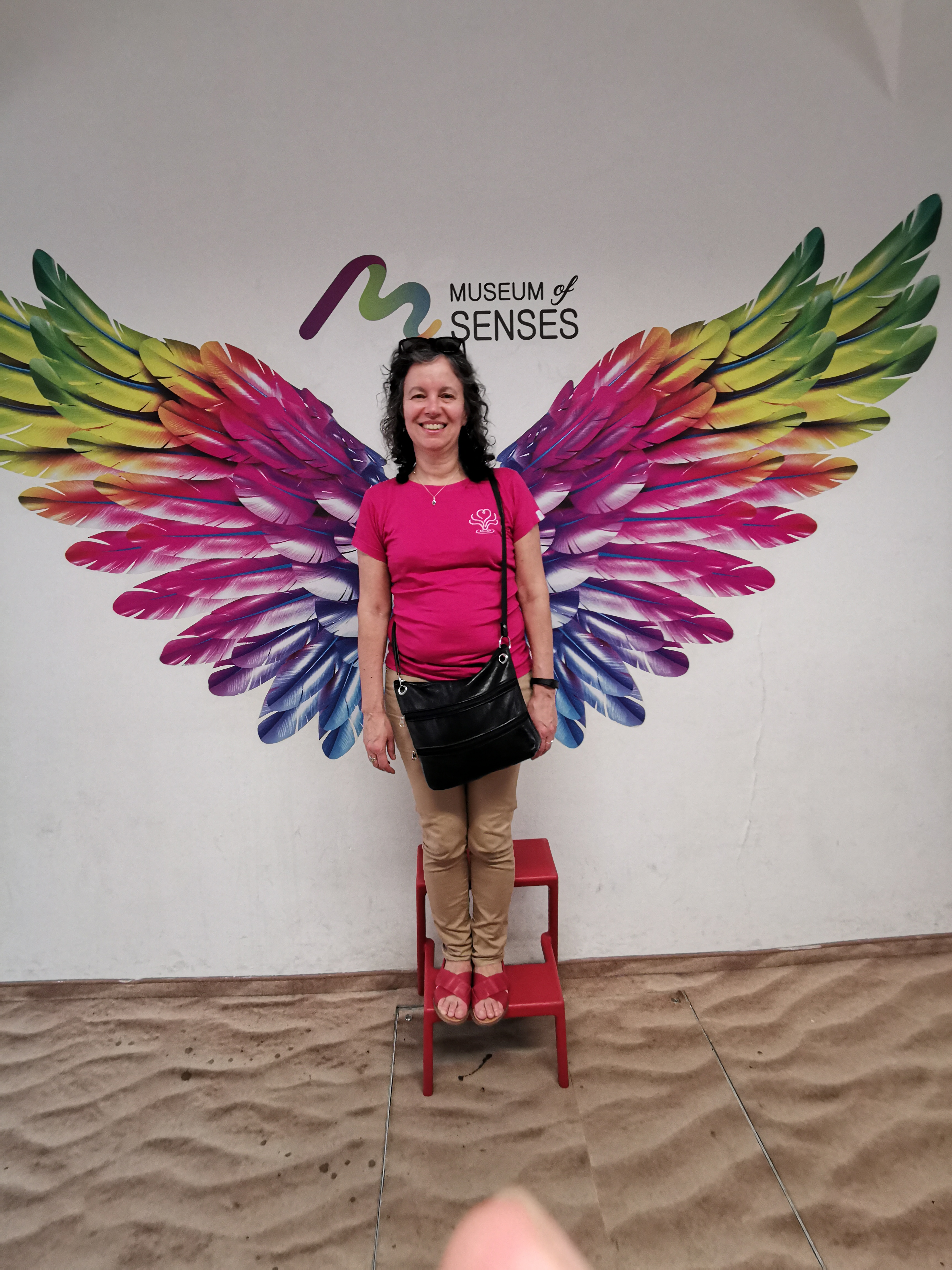
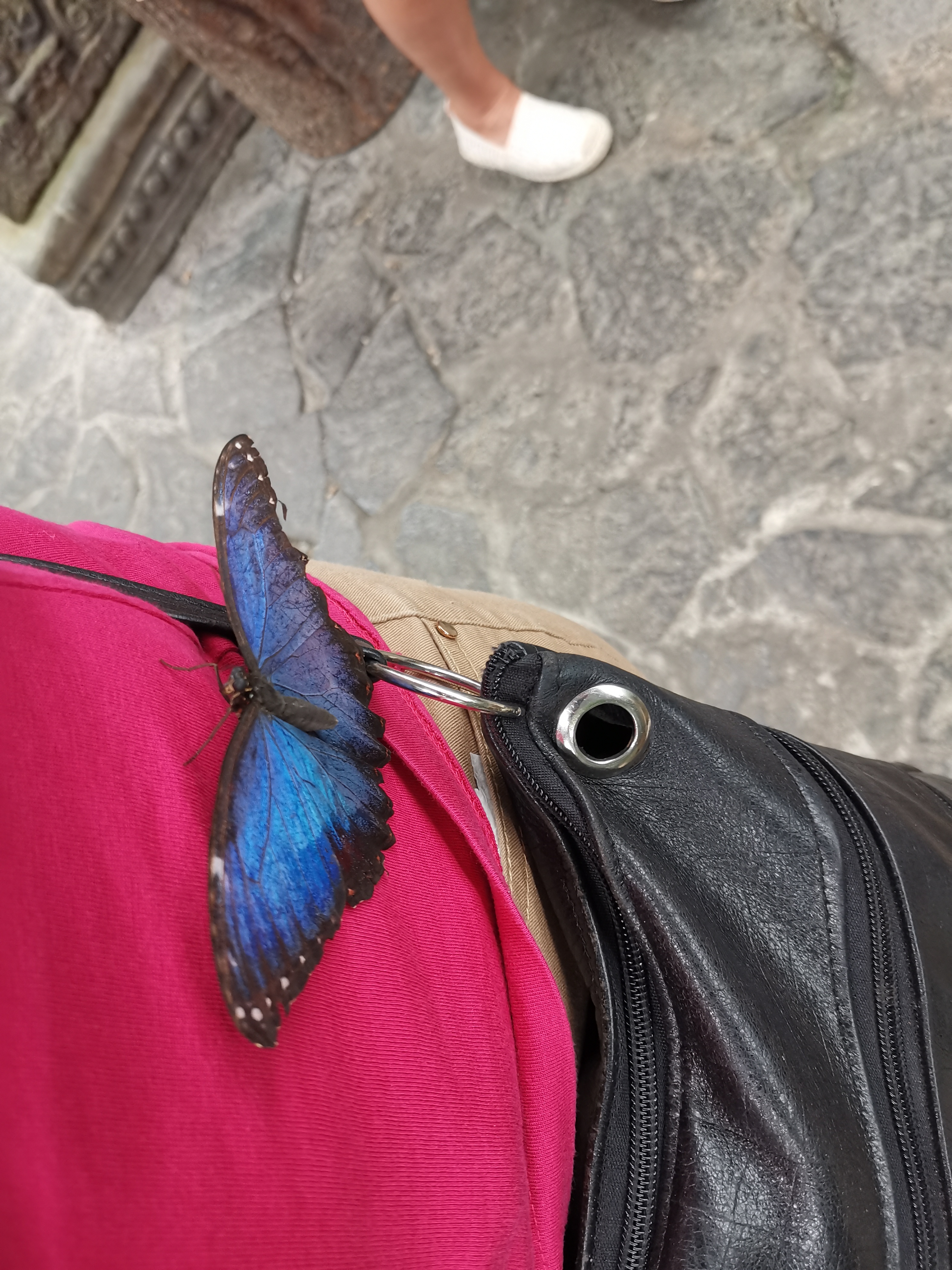
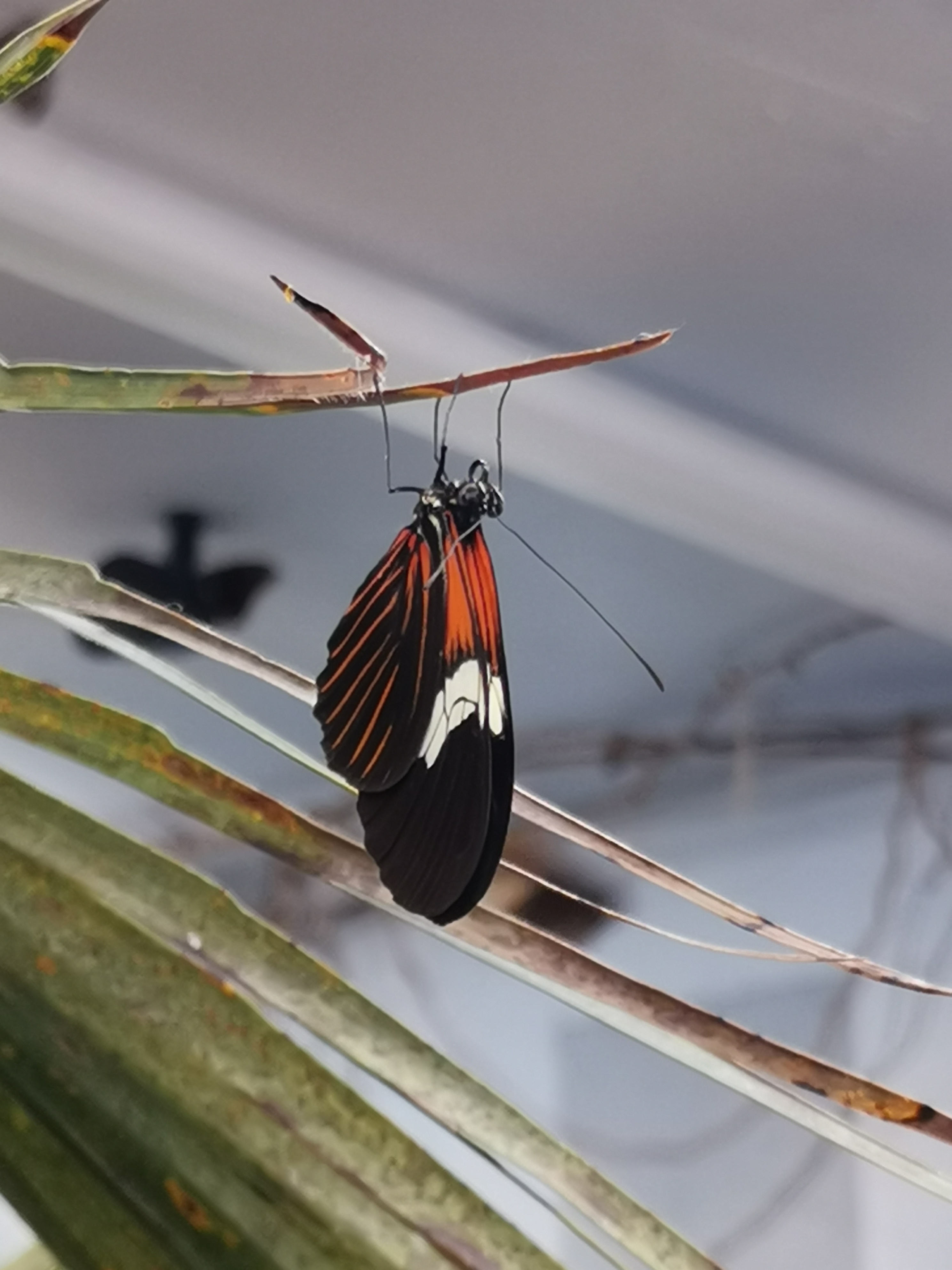
On weekends I was able to discover and enjoy activities and places in Prague that I did not know about, such as the Museum of the Senses, the Butterfly Museum and the Prague Black Theater, the Mucha Museum, Cerny's sculptures, the dancing building, among others.
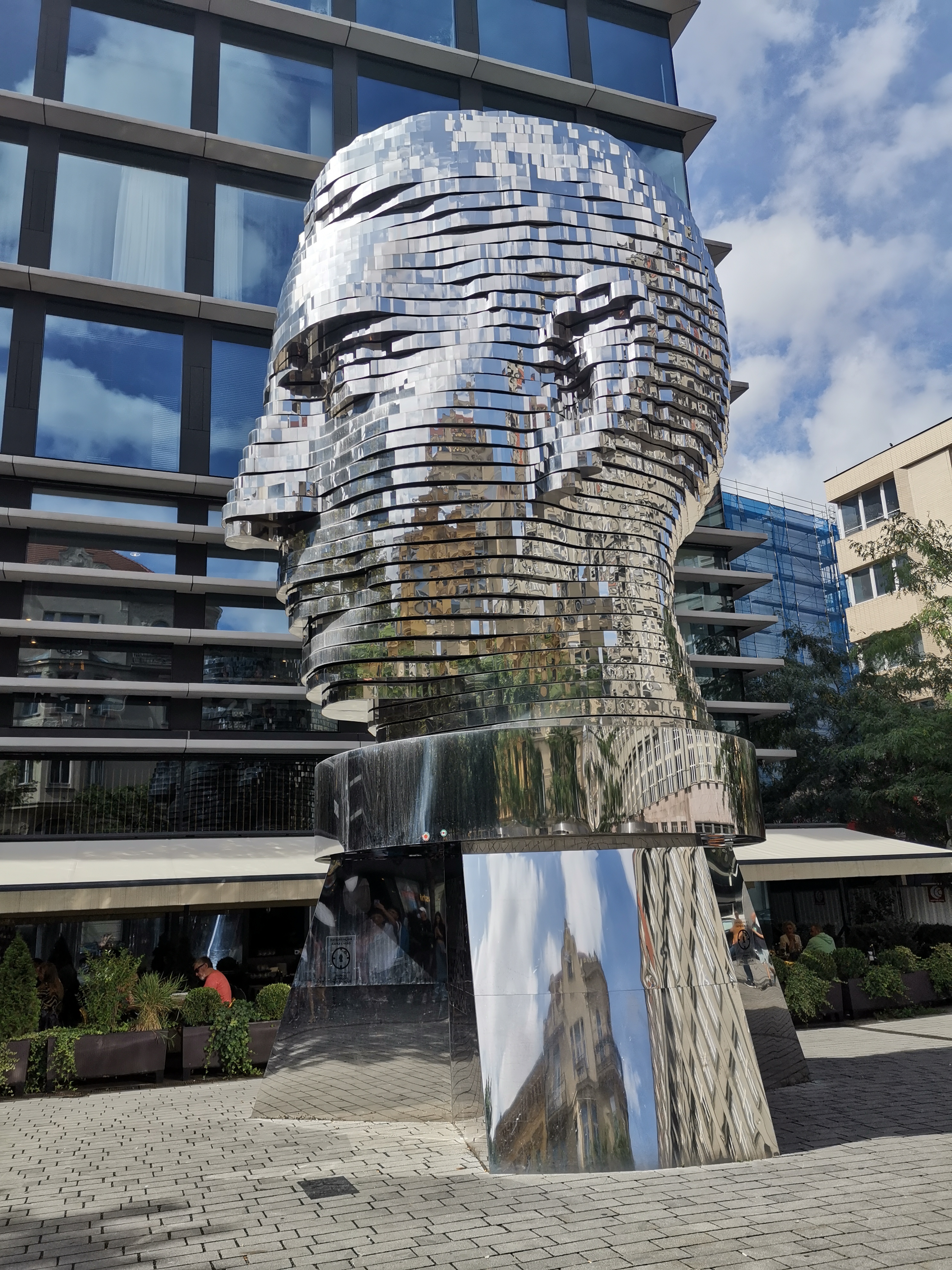
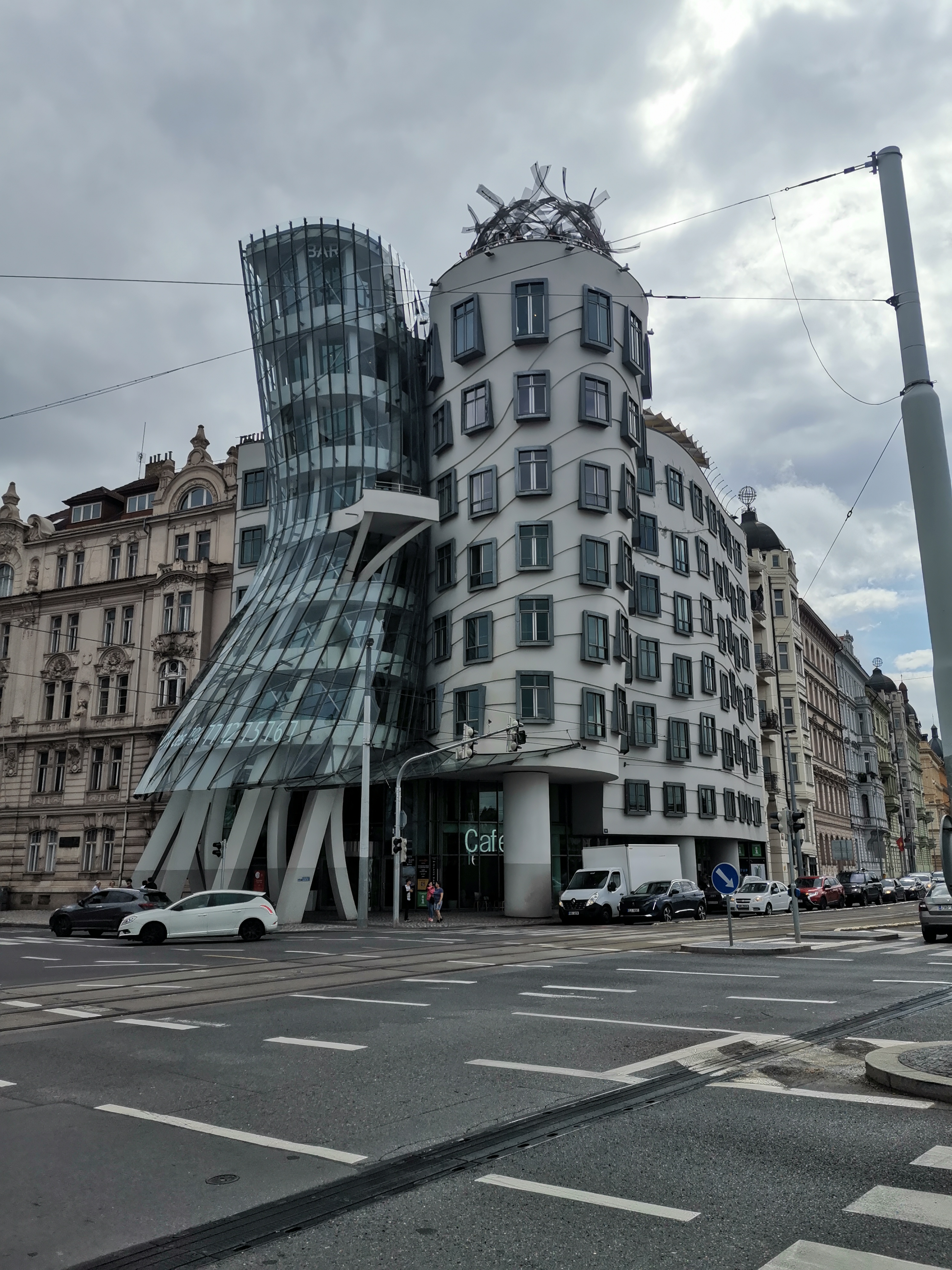
It was a rewarding stay in many ways, with a lot of development and interaction in the scientific field on the one hand, walks in Ondrejov and Prague on the other.
From Ondrejov I went to Harrachov, to the Summer School - Stellar Winds and Outflows in the Skycentrum hotel. This is a town a bit bigger than Ondrejov, in the north of the Czech Republic, near the Polish border, dedicated to winter sports.
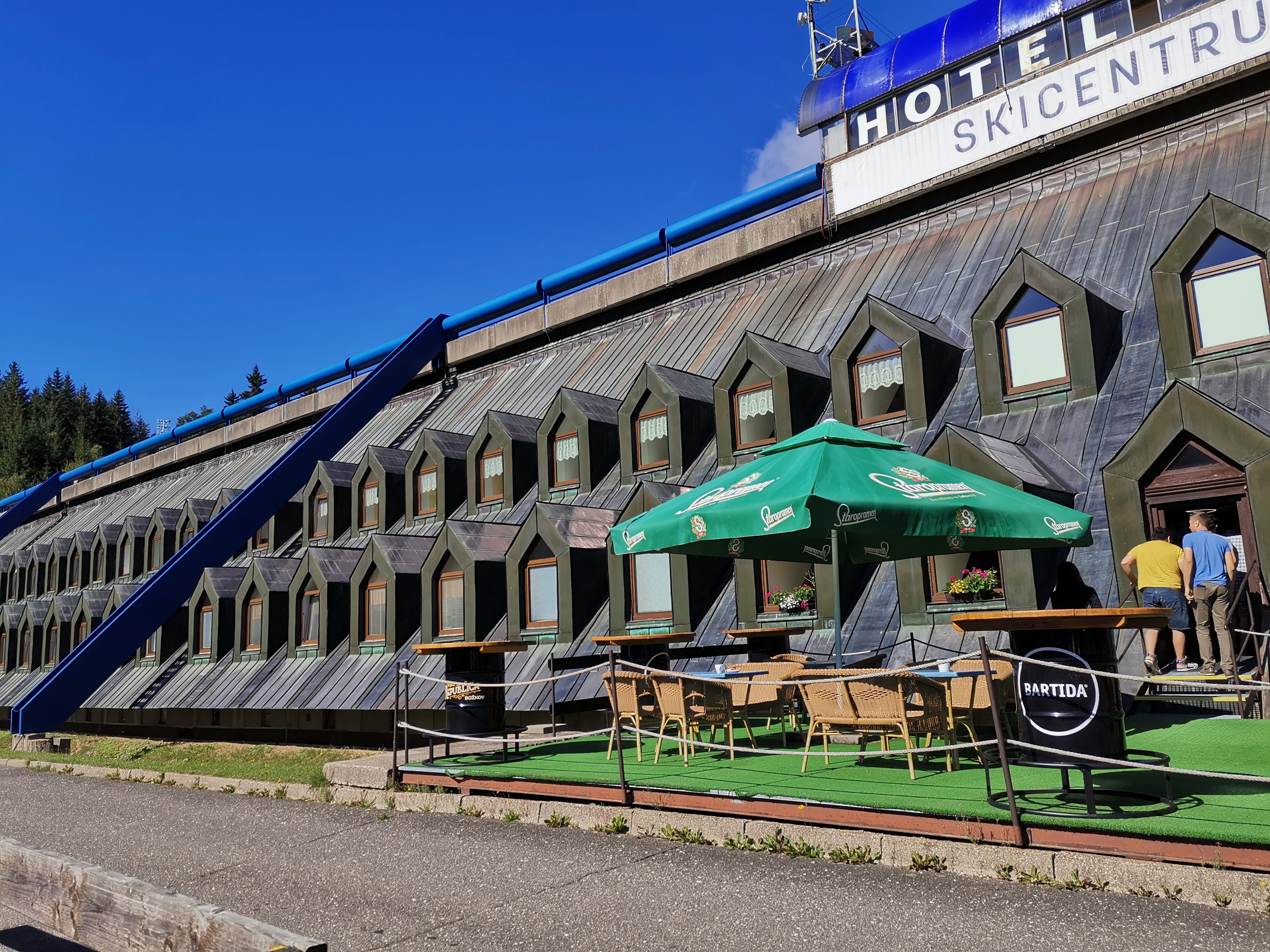
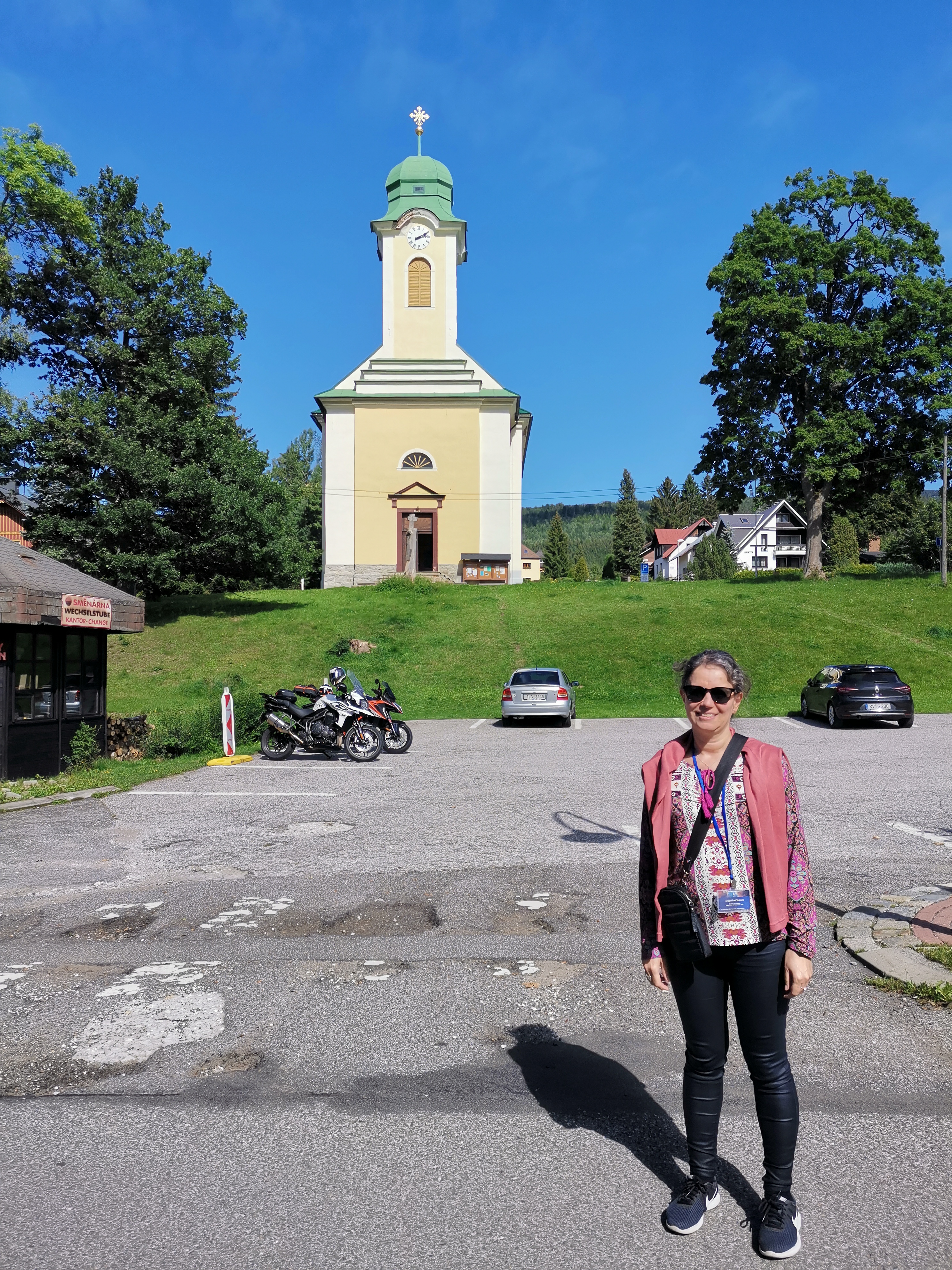
The school was intense and hard work. There were several very varied talks on the topic of the Stellar Winds of massive stars. Personally, as I am not an expert in astronomy but in statistics and I am mainly dedicated to the detection of periods in light curves using photometry, I found it very interesting to understand the theoretical and intuitive basis of the phenomenon, to see how the analysis of the data is performed, to learn about spectroscopy and about the use of software to extract information. The organization of the school was very complete, from the basic structure: the room for the lectures, the vegetarian-vegan meals, the tours, to the contents covered in the school: the layout of the different topics that were presented, complementary, exhaustive, given in depth and the excellent predisposition of the exhibitors.
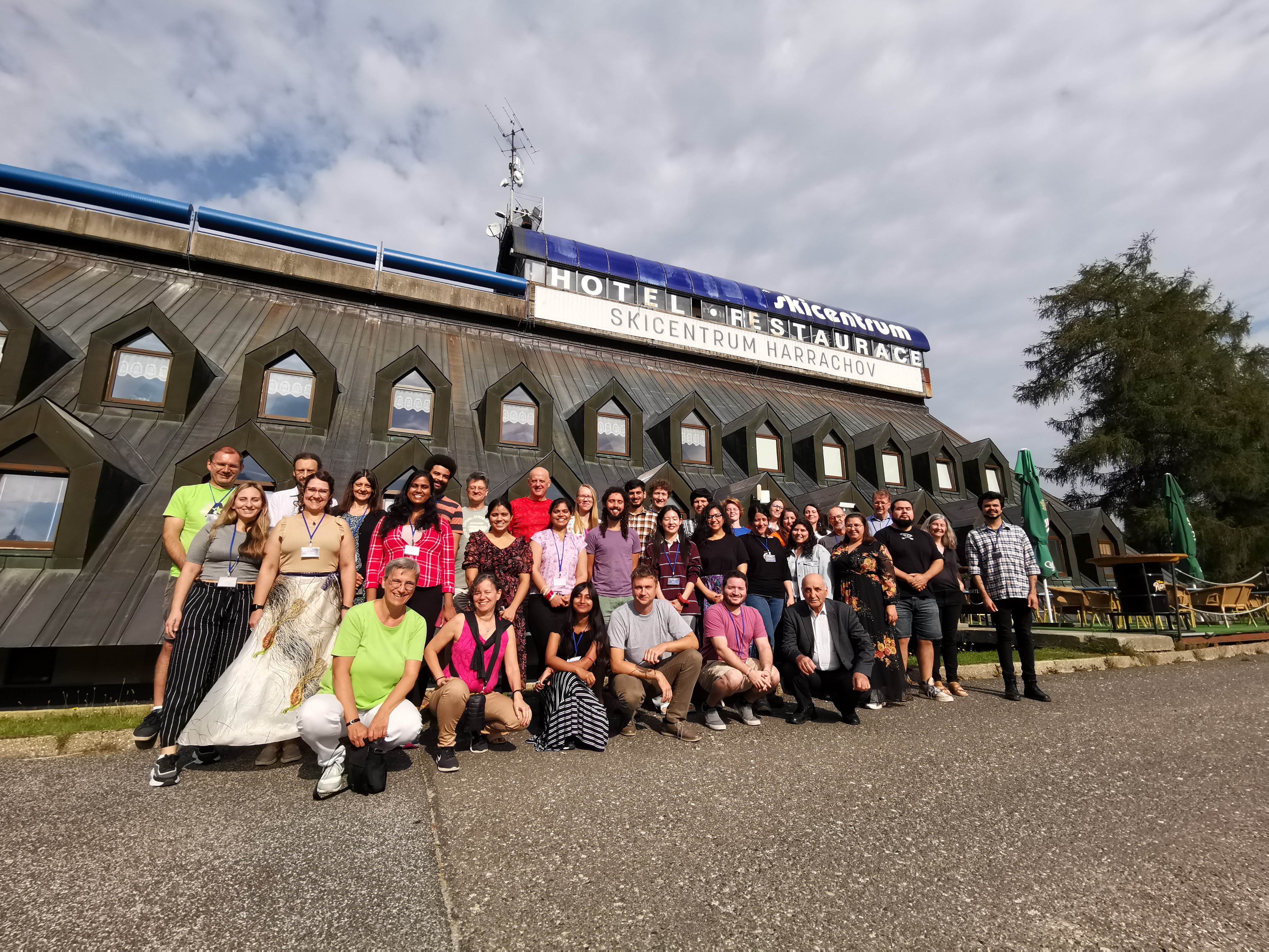
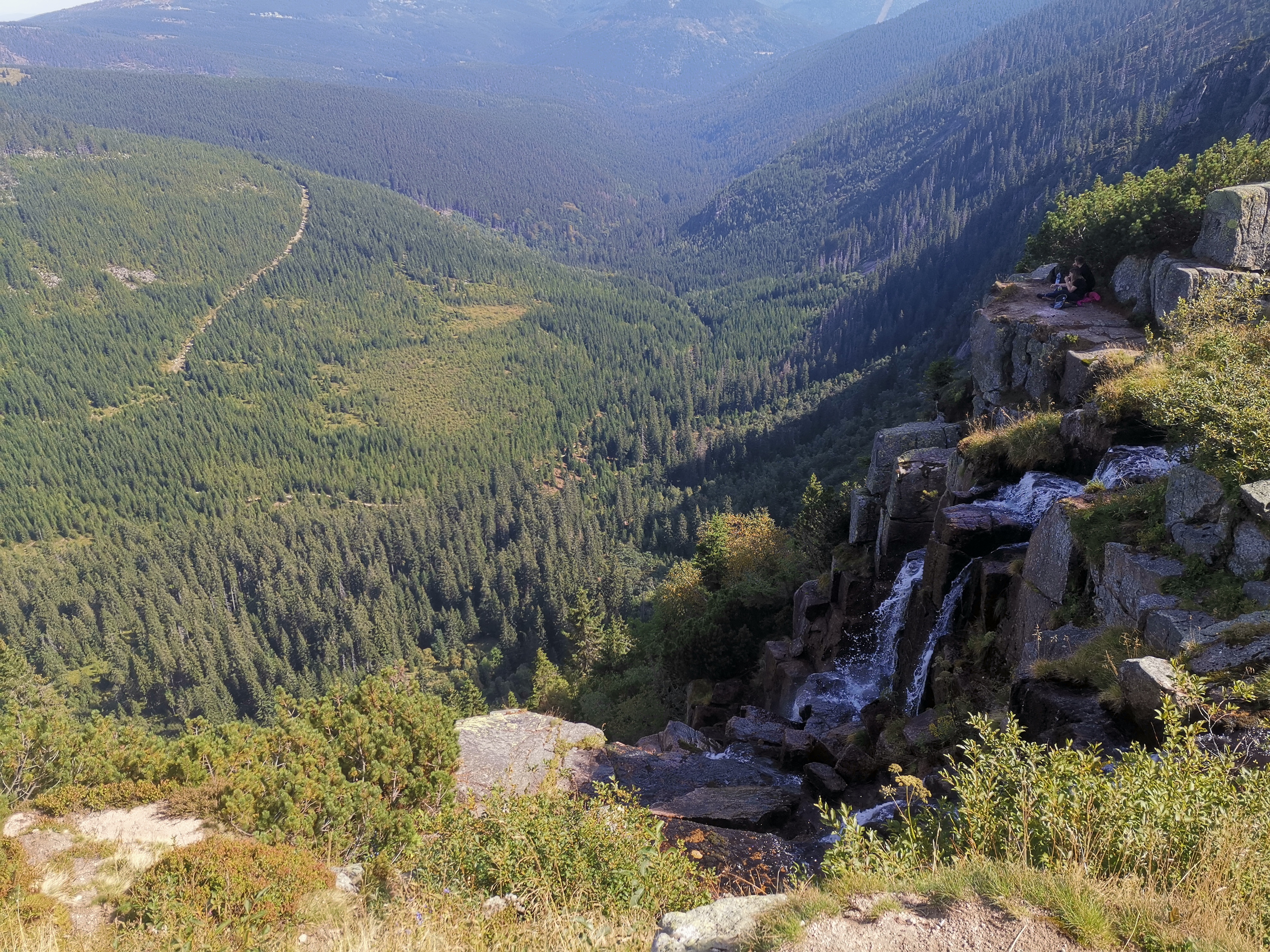
In my free time I went for a walk and visited the surroundings. The organizers of the school made a hiking trip on Saturday to a waterfall near Harrachov. I think I learned a lot, worked a lot, walked a lot and got a lot out of my stay.
Our secondment in ASU was divided into two parts: Ondrejov and Harrachov.
The first part started with us arriving to the Prague Airport on August 16th 2023, where Michaela Kraus was waiting for us and with a van from ASU we went to Leonora Villa in Ondrejov.
In the following picture (left) we are in the office we had at ASU. The atmosphere there was very pleasant, and I had the chance to use the coffee machine.


We were a bit surprised by the weather (upper right picture). We were in the middle of the summer with temperatures about 13° Celsius, but as you see in the picture we were "prepared". The next picture was taken in front of the 2-meter telescope dome which we also had a pleasure to visit.

The two weeks in Ondrejov went by very quickly. We prepared the slides for the summer school and I gave a talk about the solar wind introducing the Lambert-W function.
Our baggages were very heavy and with the help of Peter Nemeth, we could "send" them to Harrachov which was the second part of our secondment.
On September 3rd, Julieta Sanchez, kindly offered to take us in her car to Harrachov, to the skycentrum Hotel where the International Summer School on Stellar Winds was held. The place was very nice, surrounded by the national Park. The day after we started the 2-weeks summer school with ca. 24 attendants.
During the following weekend we, as almost all of the participants, went to a trip in the neighborhood, around 20 km from Harrachov. Over there we were frustrated because the cable car was not working, and we had to go to the summit on foot. However, in the end the view was so beautiful that everything about the "climbing on foot" was forgotten.
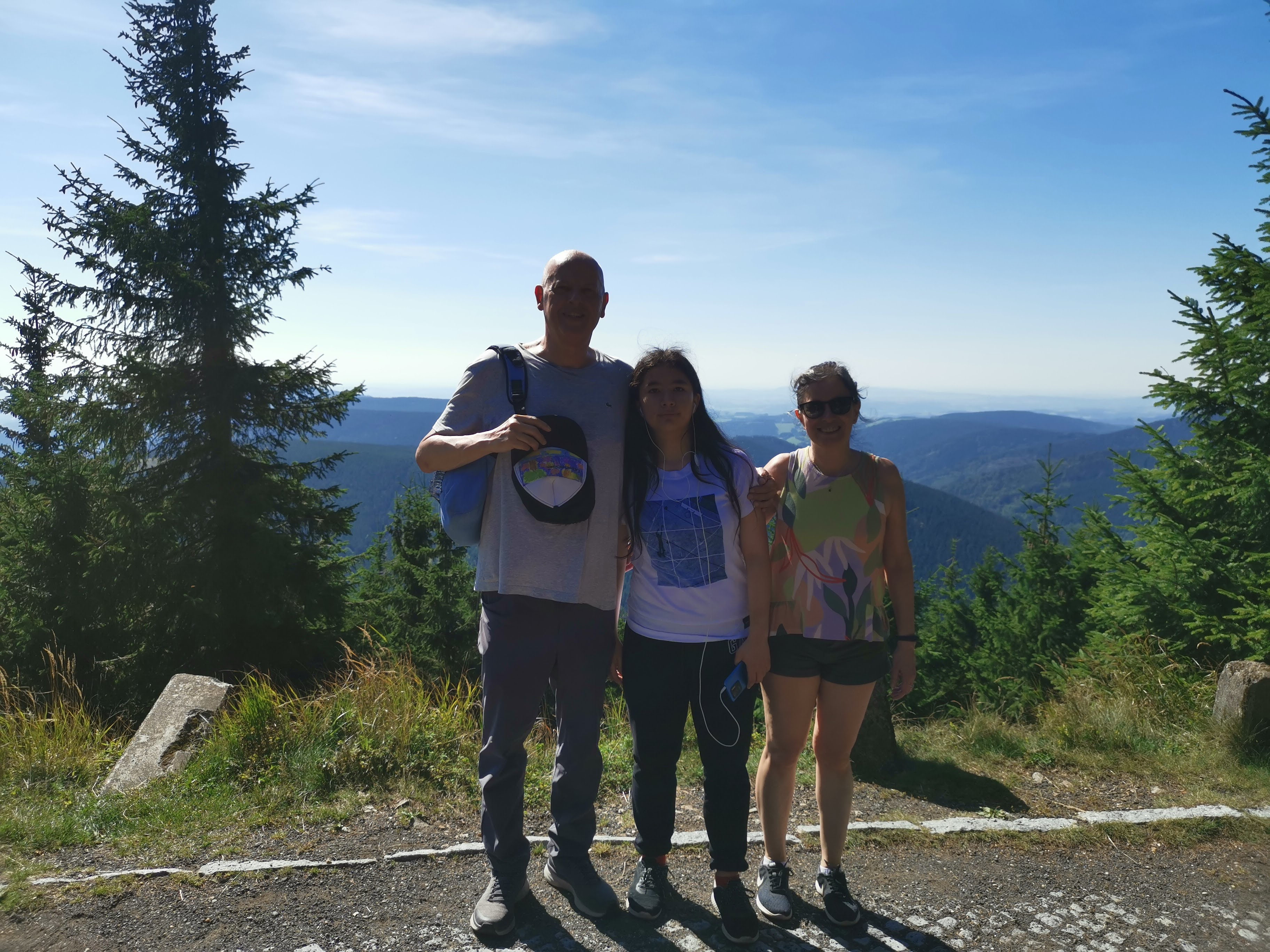
We had an excellent time in Harrachov and enjoyed the level of commitment of all the students.
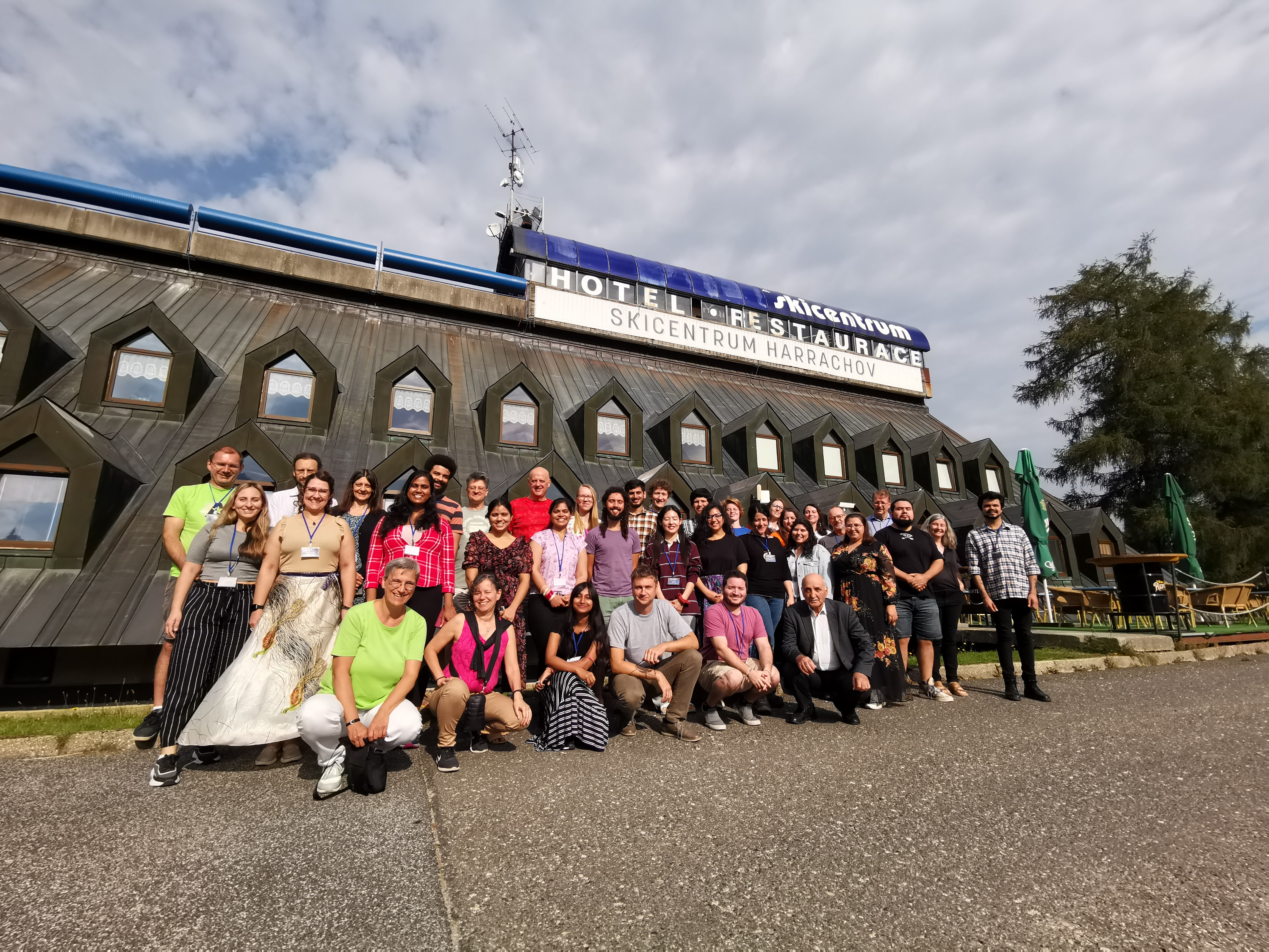
In the last day, all the lecturers went to a "camaraderie" dinner, as seen in the following picture.
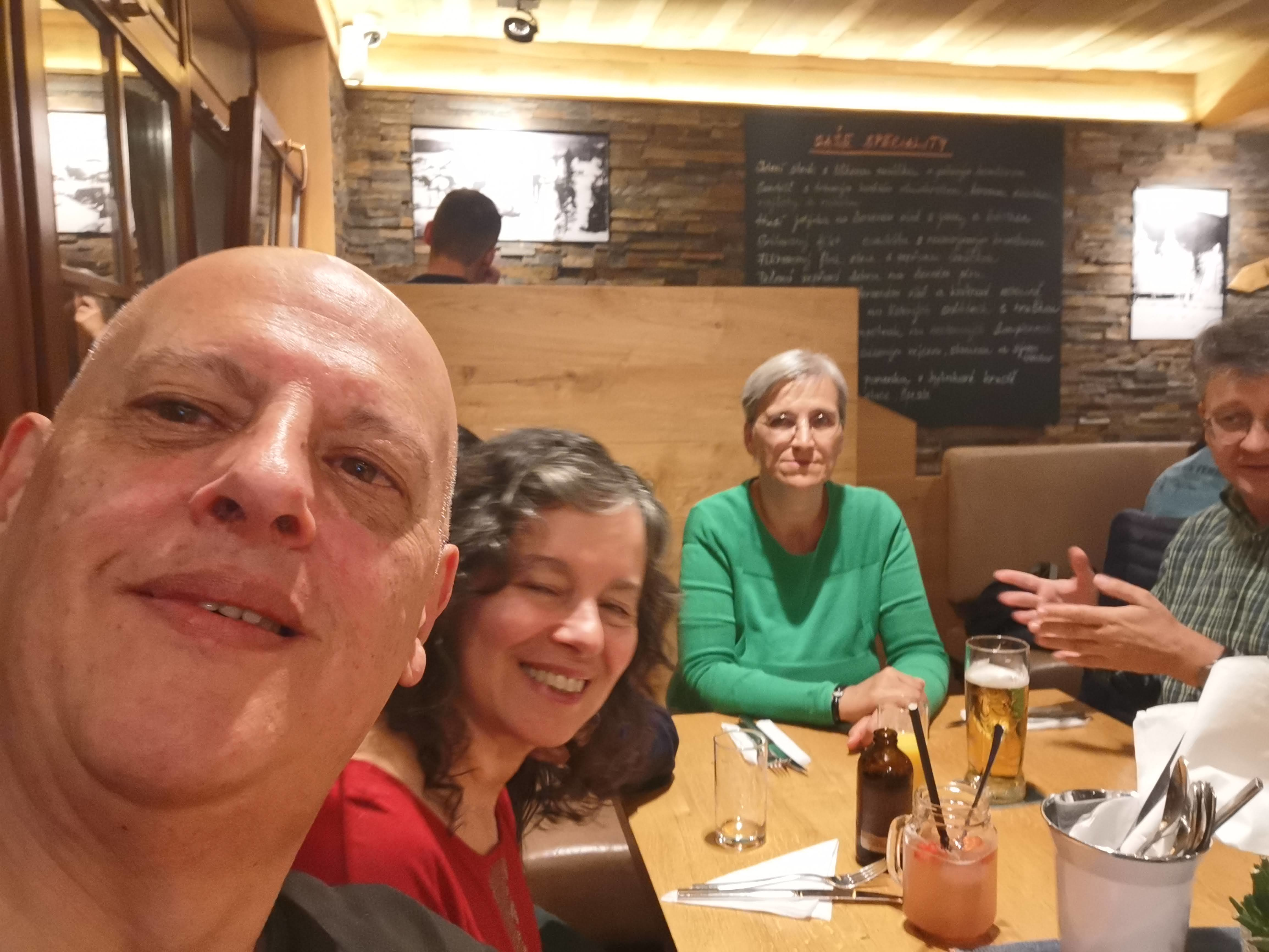
Then on September 16th, we rented a car and went early in the morning to Prague airport and flew to Brussels.
During August 2023, I had the opportunity to undertake an academic stay at the Tõravere Astronomical Observatory, located on the outskirts of Tartu, Estonia. This experience allowed me not only to deepen my understanding in the field of astronomy but also to immerse myself in the culture and lifestyle of this magnificent country, which I fell in love with from the moment I arrived.
During my stay at the observatory, I worked with Professor Dr. Anna Aret, a renowned expert in the field of astrophysics. Alongside her doctoral student, Vitalii Checha, I collaborated on several research projects specifically focused on the search for periodicities in massive stars, in addition to helping Vitalii with his thesis work. The guidance and knowledge shared by Dr. Aret and Vitalii were enriching, providing me with a broader perspective on current research methodologies and advances in astronomy.
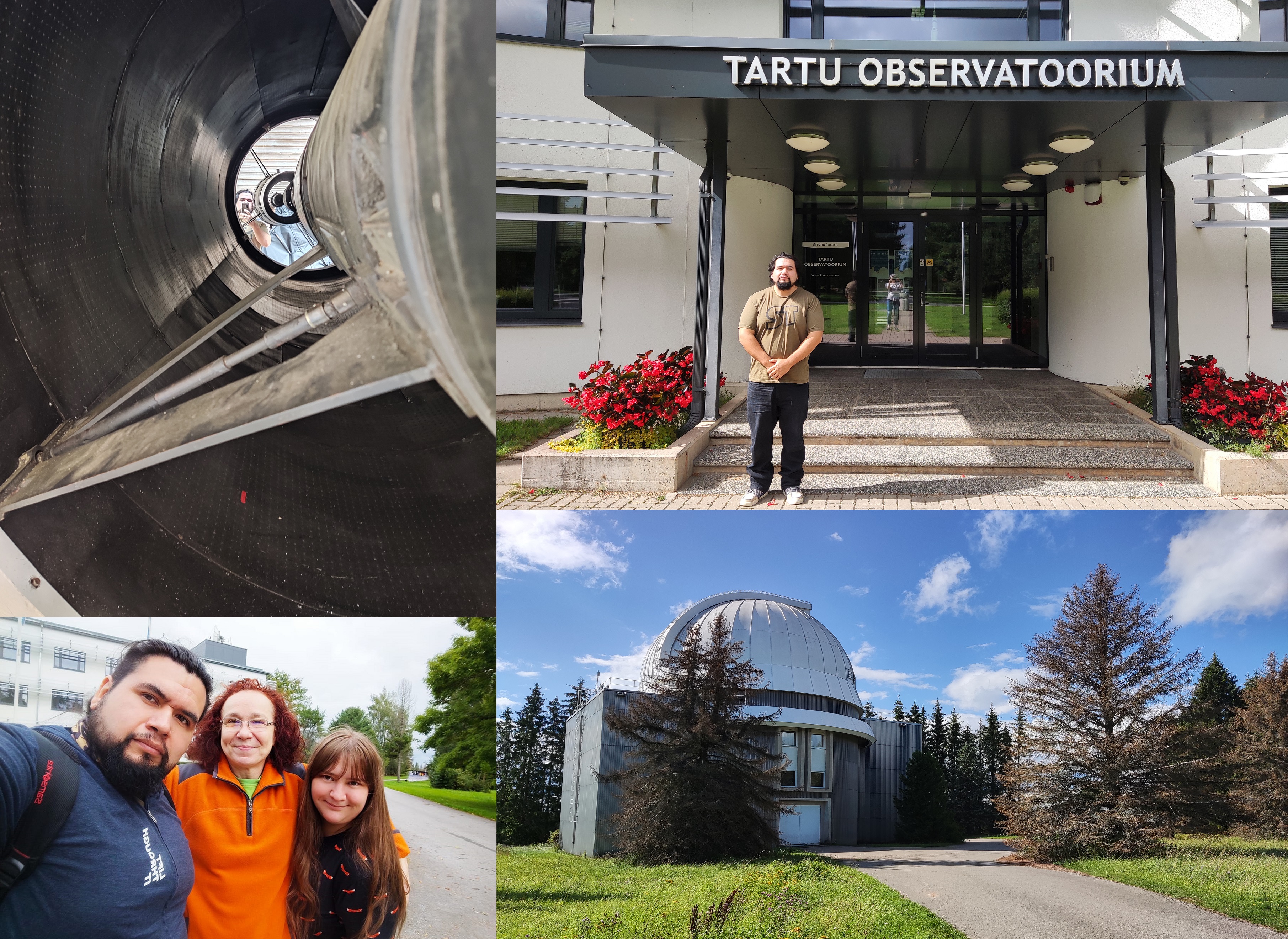
At the Tõravere Observatory, I participated in nighttime observation sessions, where I learned to operate high-precision telescopes, as well as other observatory-related activities.
In my free time, I took the opportunity to explore the city of Tartu. I discovered the city mainly by bicycle, which allowed me to appreciate its well-designed infrastructure and natural surroundings. I was impressed by how orderly, clean, and well-maintained everything was, as well as by the tranquility that can be felt in every corner of the city, truly falling in love with the place.
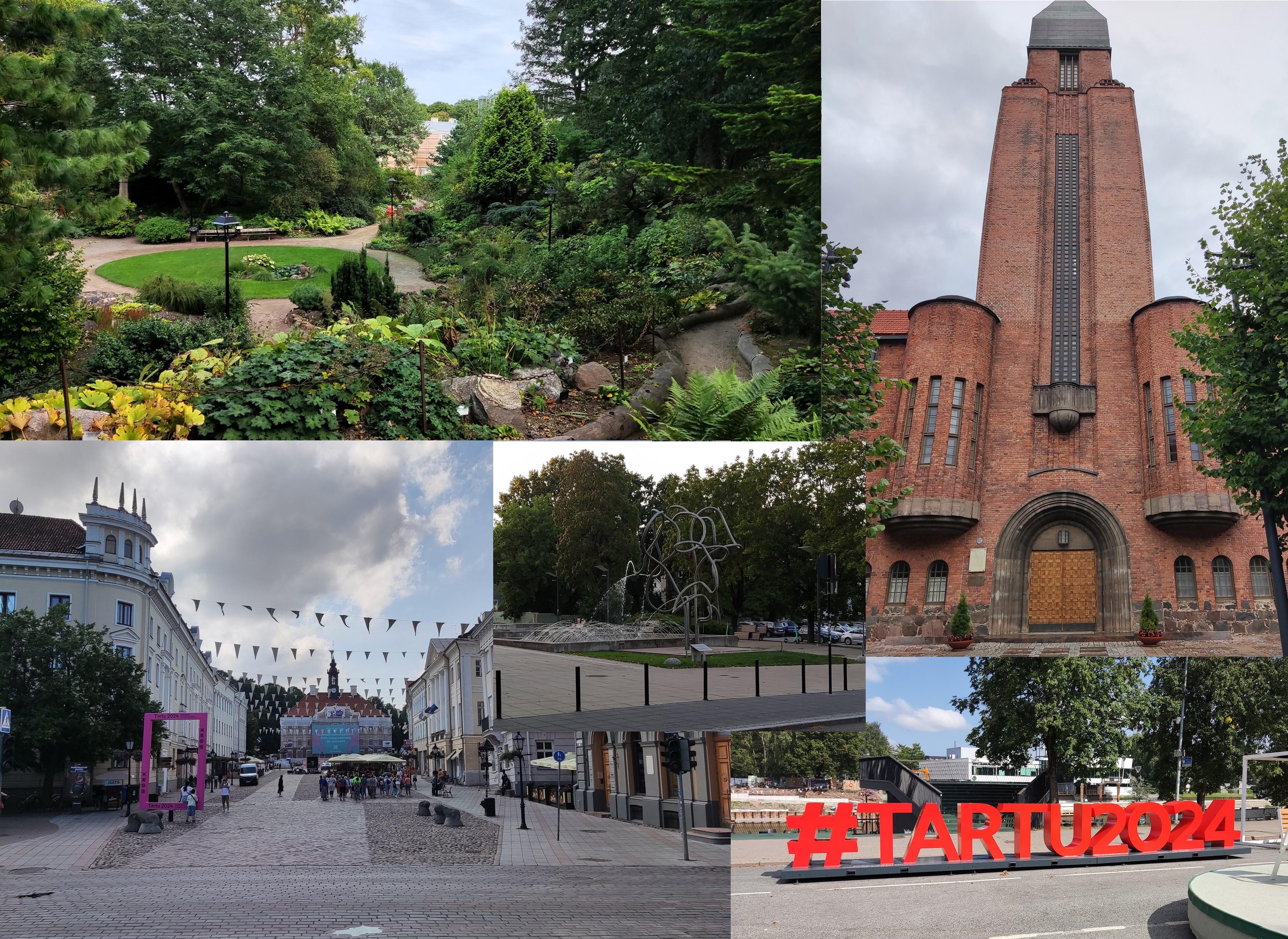
I visited several iconic places, such as the University of Tartu, the Botanical Garden, the Town Hall Square, different neighborhoods, various museums, etc. Each place offered a blend of history and modernity, reflecting Estonia's diverse cultural heritage.
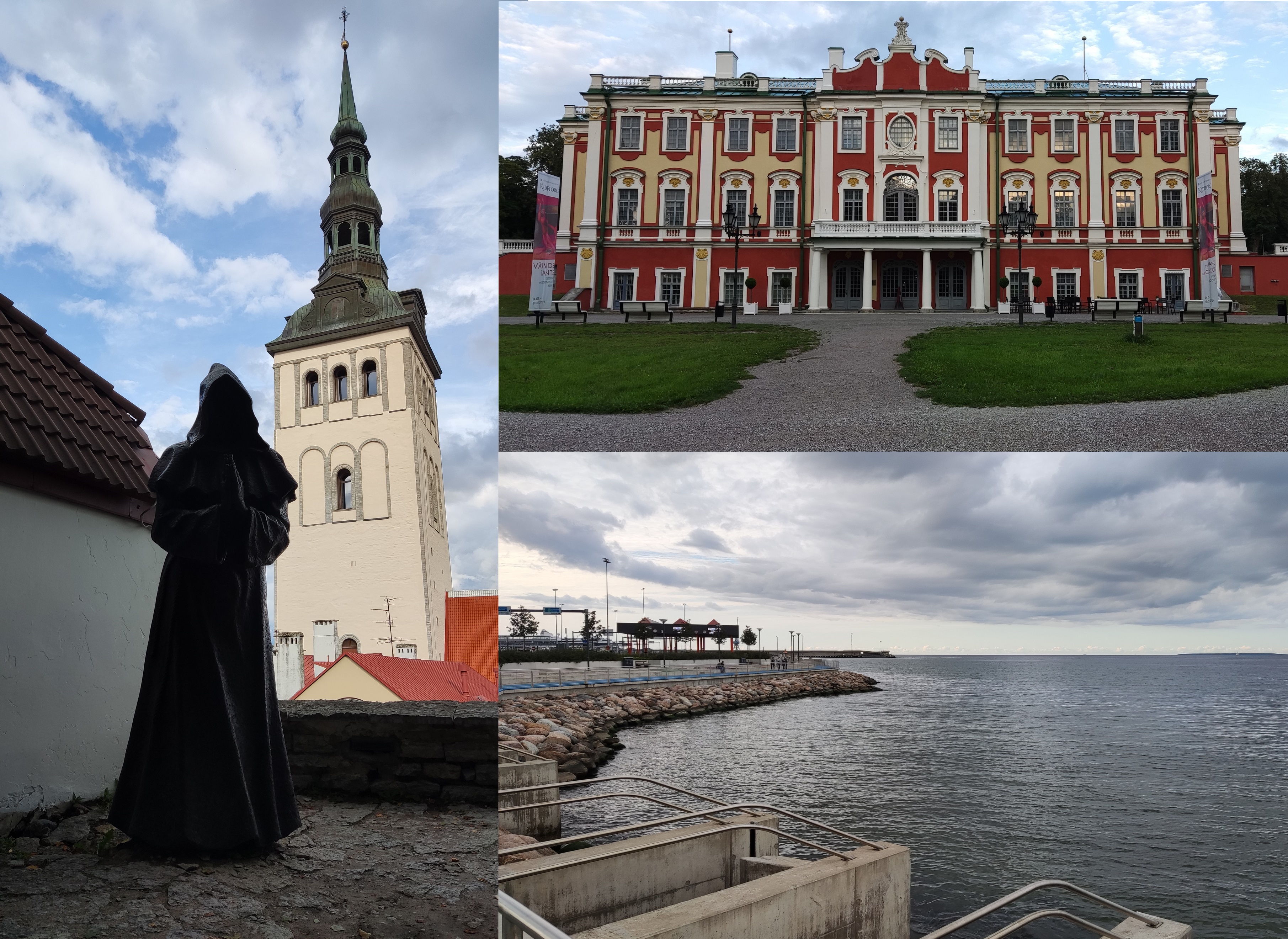
Estonia, and particularly Tartu, left an extremely positive impression on me. With every intention of returning someday, I was treated very well at all times and felt very comfortable both in the country itself and with the people at the observatory, especially thanks to Dr. Anna Aret, who was kind to me (11 of 10).
In the framework of the POEMS project, I enjoyed a pleasant and fruitful stay at the Stellar Department of the Astronomical Institute in Ondřejov, Czech Republic. My secondment was between July 27th and September 18th 2023. During my visit, I worked on several tasks.
With the aim of studying the formation of Ca II lines (particularly the forbidden lines at 7291 and 7324 angstroms) in the presence of a circumstellar disk and a stellar wind, I began with the assembly of two numerical codes. One code, partially developed by our research group, solves the radiative transfer equation in a circumstellar medium considering the presence of a stellar wind (SW). The other code, developed by Dr. Michaela Kraus, computes the Ca II lines in local thermodynamic equilibrium (LTE) in a circumstellar ring (CR) in Keplerian rotation. After studying them, I made the necessary changes to obtain the atomic population of the levels from the SW code and consider them as input data in the CR code. I checked the correct functioning of the modified codes in LTE. I adapted the CR code to consider non-LTE effects in the line opacity calculation and the departure of the line source function from the Planck function. I also included the reference of the continuum in the computation of the Ca II lines. In the SW code, I added the dilution factor in the hydrogen and electron density calculations to obtain the corresponding diluted values at the distance where the ring locates.Then, I ran the codes for different values of some input parameters (H I density, electronic density, temperature of the wind, distance of the ring from the star, etc.). I obtained synthetic lines in very weak emission. This weakness may be associated to considering an infinitesimal emitting area of the ring, so I started with the changes in the CR code to allow for a finite emitting area.
In addition, I collaborated with Dr. Olya Maryeva in the study of the Galactic star Hen 2-446, that presents the B[e] phenomenon. I worked with IR spectra taken at Gemini North (with the spectrograph GNIRS) to complete the line identification and included the results in the draft of a manuscript that we are writing. I built the star's observed spectral energy distribution (SED) and compared it to the one retrieved by Dr. Michalis Kourniotis. Using a simple code developed in our group, which calculates the emergent flux from the central star and its envelope, I computed synthetic SEDs to fit the observed one. The code considers a spherical envelope composed by gas close to the star and (or) several dust shells at a greater distance from the central object.
I helped Dr. Lydia Cidale to prepare some exercises and projects for the international school of Stellar Winds and Outflows organized in the framework of the POEMS Program. I ran some scripts and set them up. I also worked on implementing the hydrodynamic solutions obtained with the Hydwind code in the APPEL radiative transfer code.
Furthermore, I contributed with a seminar presentation about my research titled "MWC 645: A Puzzling FS CMa-type Star" and joined the regular journal club at the Institute. I could also visit the dome housing the telescope and the echelle spectrograph and learned many interesting facts about the instruments from the Technician in charge.



I am very grateful to Michaela for allowing me to participate in the International Summer School on Stellar Winds and Outflows held in Harrachov, Czech Republic. It was good opportunity to revisit theoretical concepts and observational techniques that I was already familiar with, to learn about some numerical codes relevant to my research area and to update my knowledge on these topics. And all this, surrounded by a group of enthusiastic young students in a charming mountain villa.




I really enjoyed the daily walk to and from the institute, surrounded by beautiful, deep green vegetation, revitalized by the rain that fell almost daily during the first weeks. I was grateful for taking the precaution of bringing an umbrella!!! I found that Ondřejov has grown quite a bit since my last visit in 2015, but it still maintains its small-town beauty. I am still surprised that its stores close so early in the afternoon compared to what happens in Argentina.



During the weekends, I would dive into Prague and wander around randomly. It is truly a magical city, with so many overlapping styles, towers here and there, diverse sculptures at every turn. Thus is how I discovered David Černý, which led me to consciously visit some of his works scattered throughout this beautiful city. Surrounded by temporary companions and enveloped in a polyglot murmur, I went to see the iconic sites of Prague. I was not able to escape the attraction of them! Oh! Praga, darling, Praga... sings Joaquín Sabina…




I enjoyed pretty moments, alone and accompanied, for example, the walks through the wood near the Institute, the trips to the supermarket with Michaela and Dieter, where we previously charged our batteries by having a delicious snack with cake!, the cosmopolitan lunches that I shared daily with the colleagues from the Institute, the beautiful afternoon with Brankica buying gifts for my children, the walks through Prague and Harrachov with my Latin American colleagues, the bonfire with Julieta and her friends from the Department of Solar Physics, the talks with Michalis and Suryani (who is a fan of our Messi (ah)!), the motivating hike organized by Olya through beautiful waterfalls in the mountain, the warm farewell dinner or see you soon!...
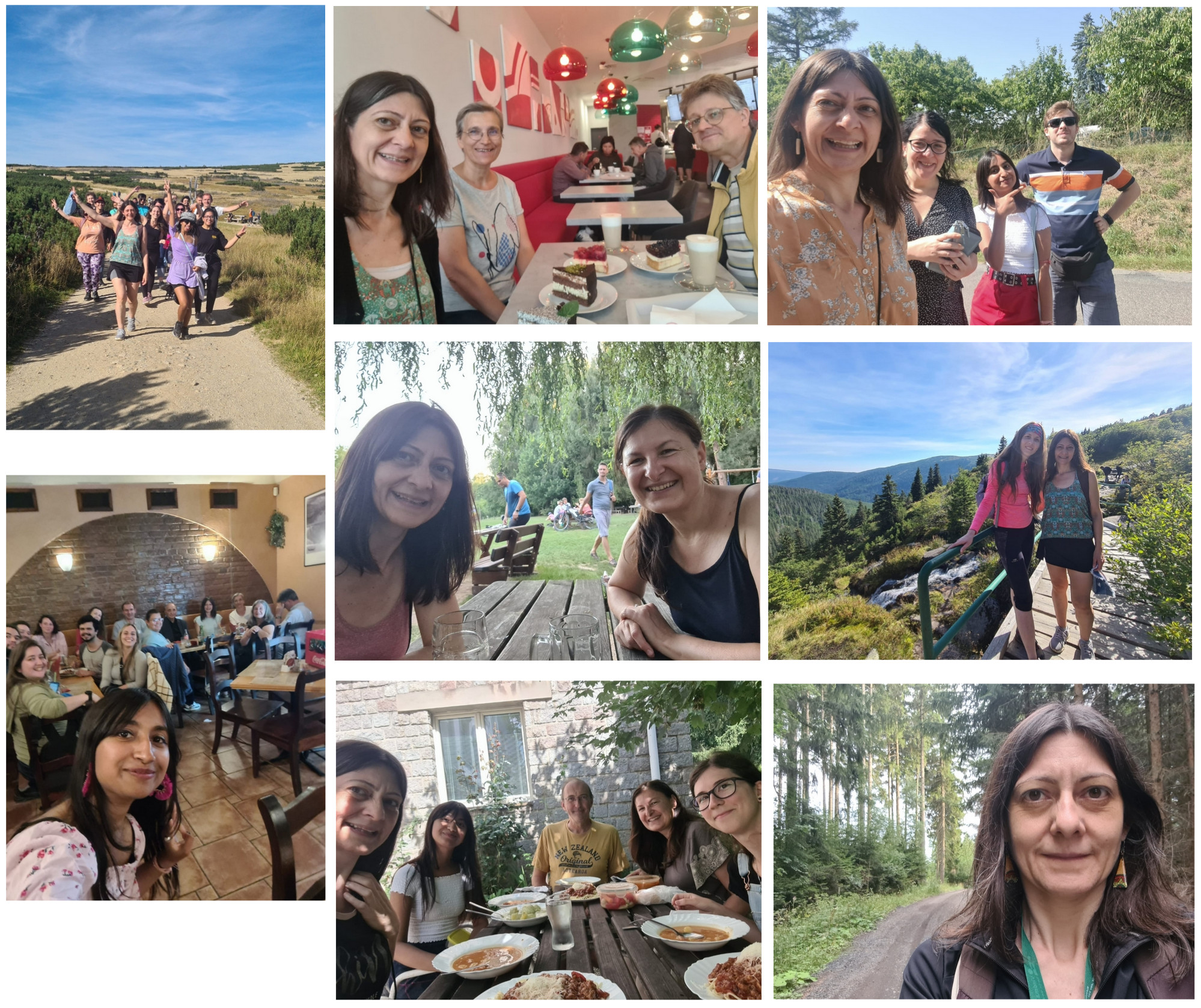
I thank the POEMS Program for allowing me this rich work and personal experience. I returned with a suitcase full of research to continue, acquired knowledge, new friends, beautiful moments shared with colleagues and friends, lots of photos and significant emotional and material gifts. Děkuji vám všem!
arrived at the Observatory of Tartu (Estonia) and stayed there for two months, from June 23 to August 18, 2023. My main goal was to collaborate with Anna Arett to perform the BCD spectral classification of the binary system Algol. We discussed and improved the wavelength and flux calibration methods to obtain confident flux-calibrated spectra to apply the BCD method. New BCD standard stars were selected to observe and perform further tests. I reduced and measured hundreds of stellar spectra corresponding to seven observing runs (almost 50% of the data) and applied the BCD method. This preliminary data set was analysed, and soon, we found that the star’s effective temperature increased during the eclipse. I had fruitful discussions with the UTARTU research team. I am also pleased that the POEMS database works on my computer and that the first tests are in progress. I also participated in an observing run at the 1.5-m telescope.
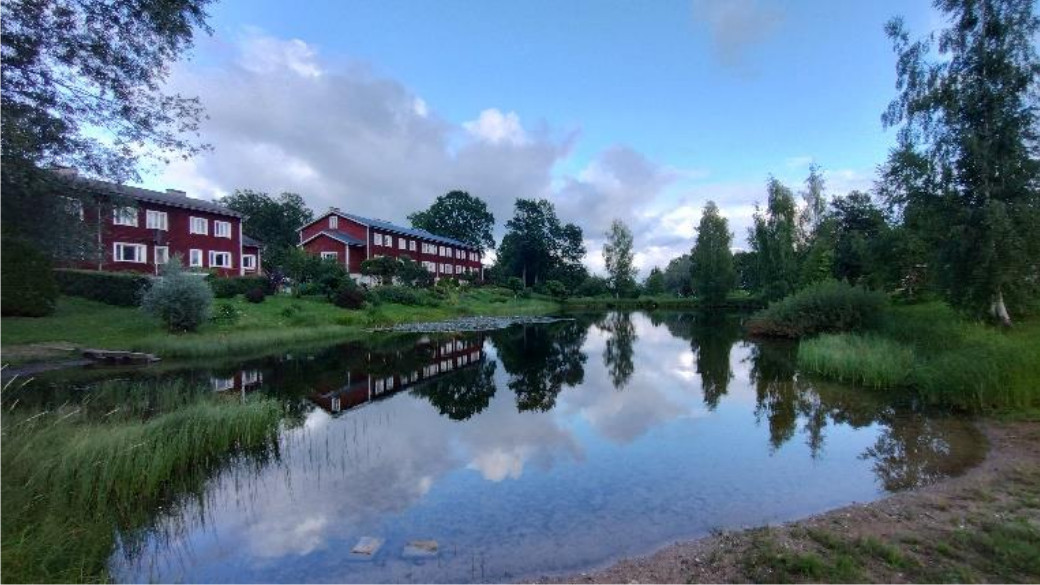
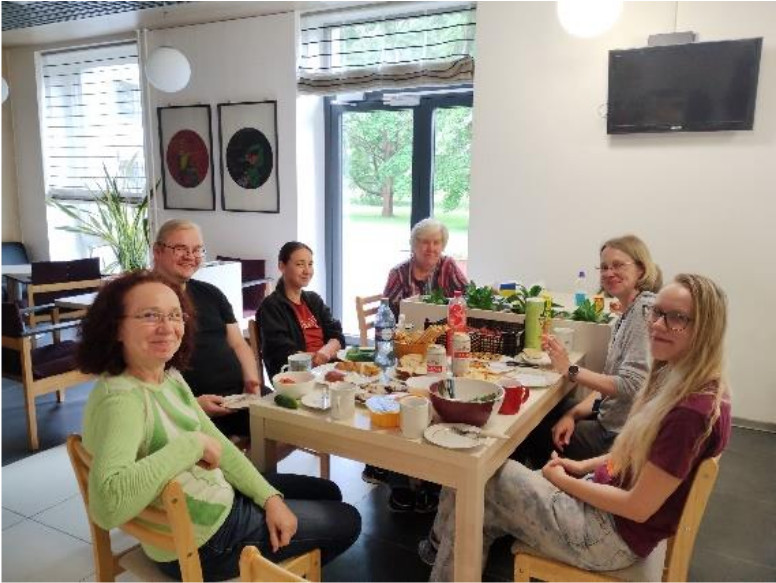
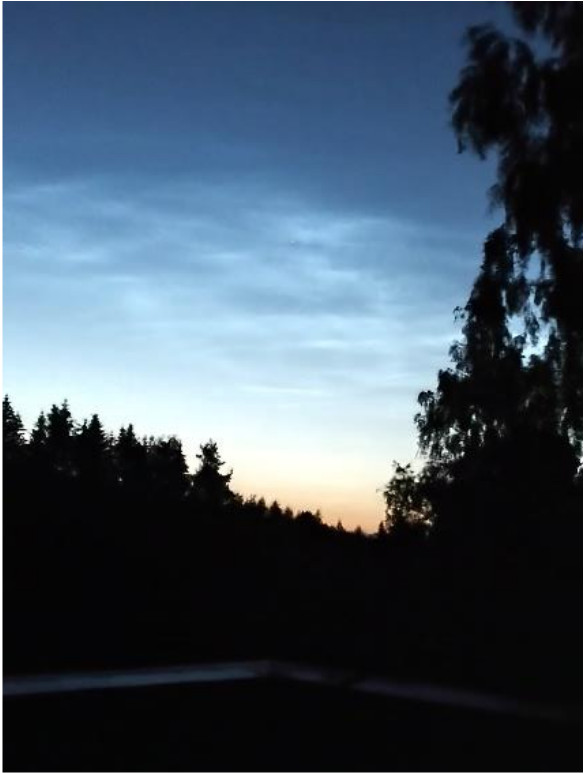
I enjoyed very much my stay in Estonia. I experienced my first Northern summer solstice with a long, extended daylight and a splendid view of the noctilucent clouds. During the weekend, I took many walks around the Observatory and took photos of various flowers as well. I also visited Tartu city, the old Observatory and enjoyed the concert at the Church.
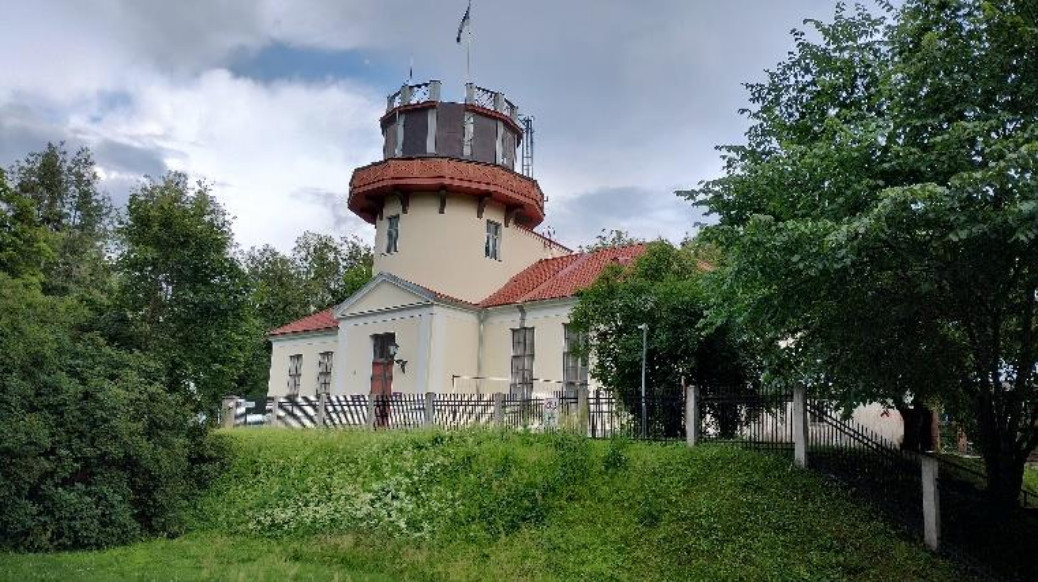
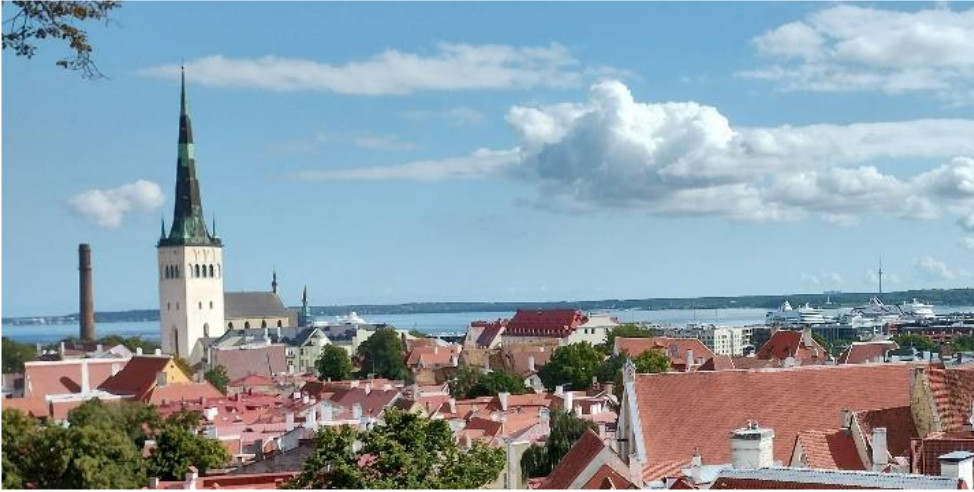
The visit to Tallinn's Old Town was also fantastic and unforgettable. We also enjoyed a whole-day excursion with the institute staff to the lake, the Cube 2 satellite departure celebration, and Tõnis’ birthday. I felt at home.
I visited the Stellar Department of the Astronomical Institute in Ondřejov, Czech Republic (9 May - 8 July 2023). There, I collaborated with Dr. Michaela Kraus and under her supervision, continued the development of the code I have been writing to generate synthetic spectra of diatomic molecules present in circumstellar disks. The calculation of synthetic spectra is crucial for identifying the presence of specific molecules in circumstellar disks and deriving various physical and dynamic parameters of the disk. During my stay, I made the necessary changes to the code to enable calculations for molecules with energy levels with semi-integer rotational quantum numbers and degenerate rovibrational energy levels, thereby increasing the number of molecules for which we can calculate spectra from the initial 6 to over 50. Additionally, together with Dr. Michaela Kraus, we analyzed the results obtained with the code and discussed the methodology for using these synthetic spectra and comparing them with observations from various researchers members of POEMS. I presented the results of this code to the researchers of the Stellar Department in a talk titled "Modeling of Diatomic Molecules in Circumstellar Disks," and I hope to publish them soon and start utilizing the code with the observations.
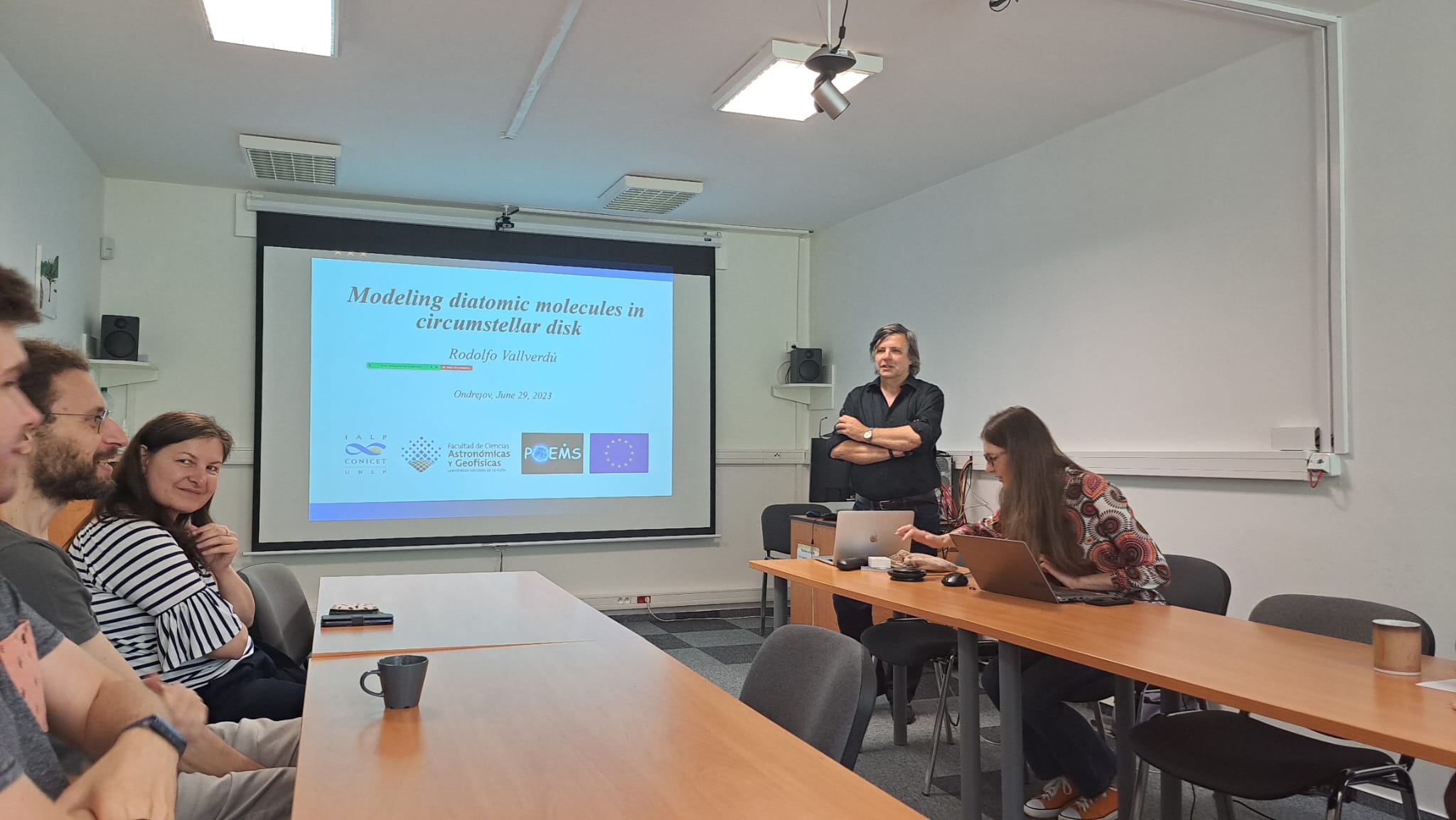
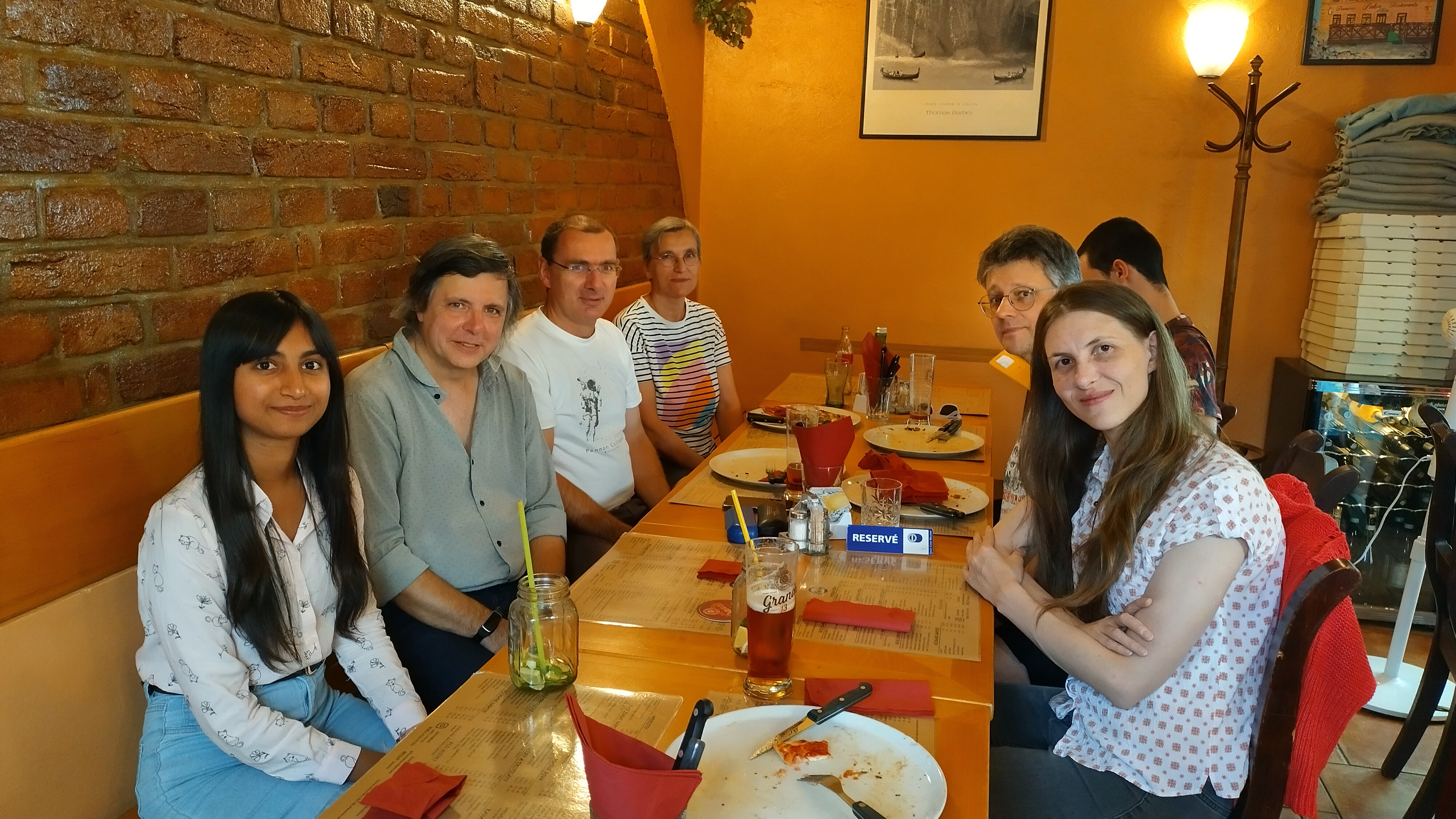
Furthermore, I attended a Python course taught by Tomasz Różański, which took place at the beginning of my stay. I also participated in the department's regular activities, such as seminars, journal clubs, discussion meetings, as well as various social activities.
During the weekends, I had the opportunity to visit Prague several times and learn more about the history and architecture of this marvelous city, particularly the aspects related to astronomy, which is strongly associated with the time when Tycho Brahe and Johannes Kepler were in the city.
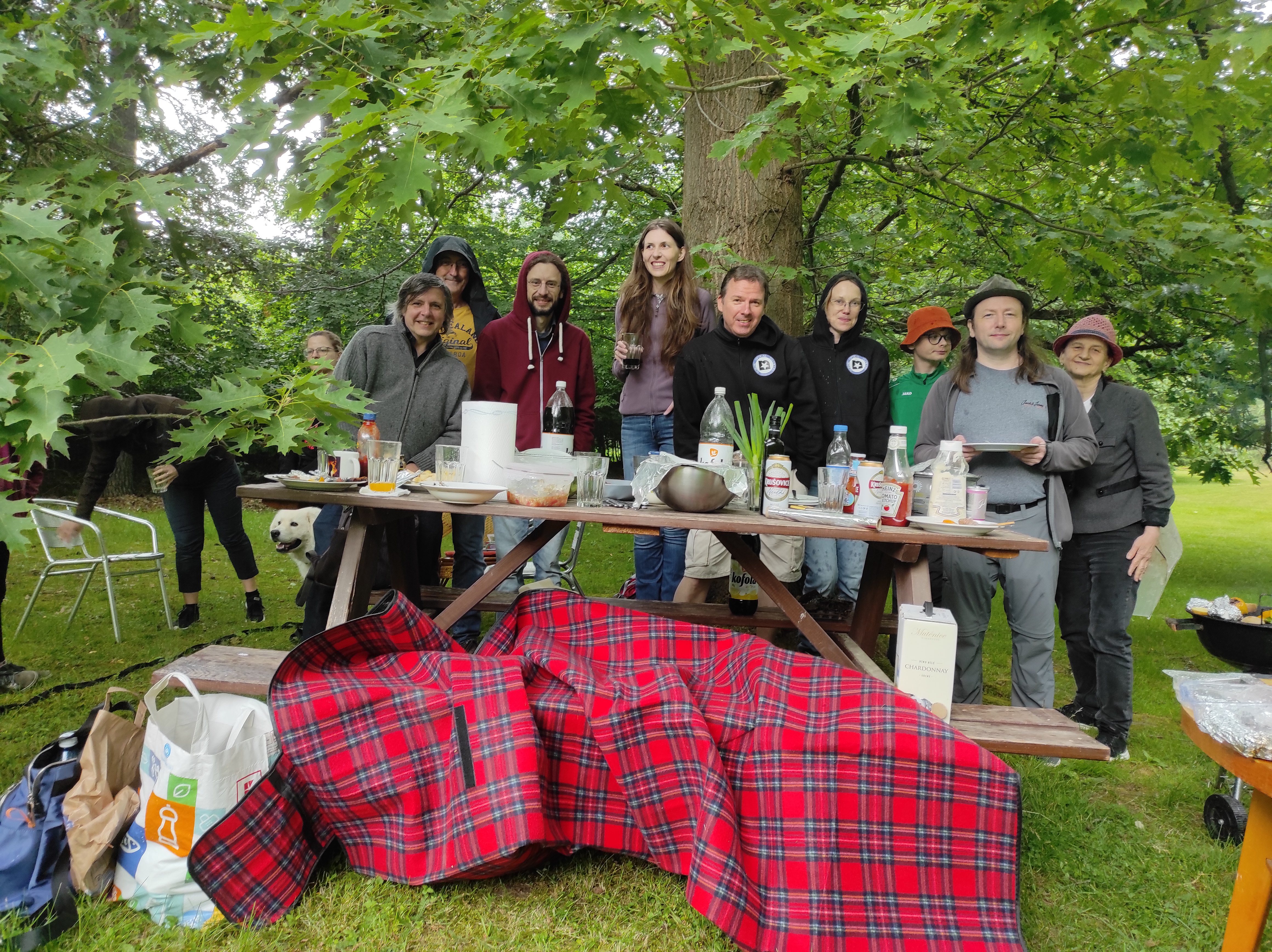
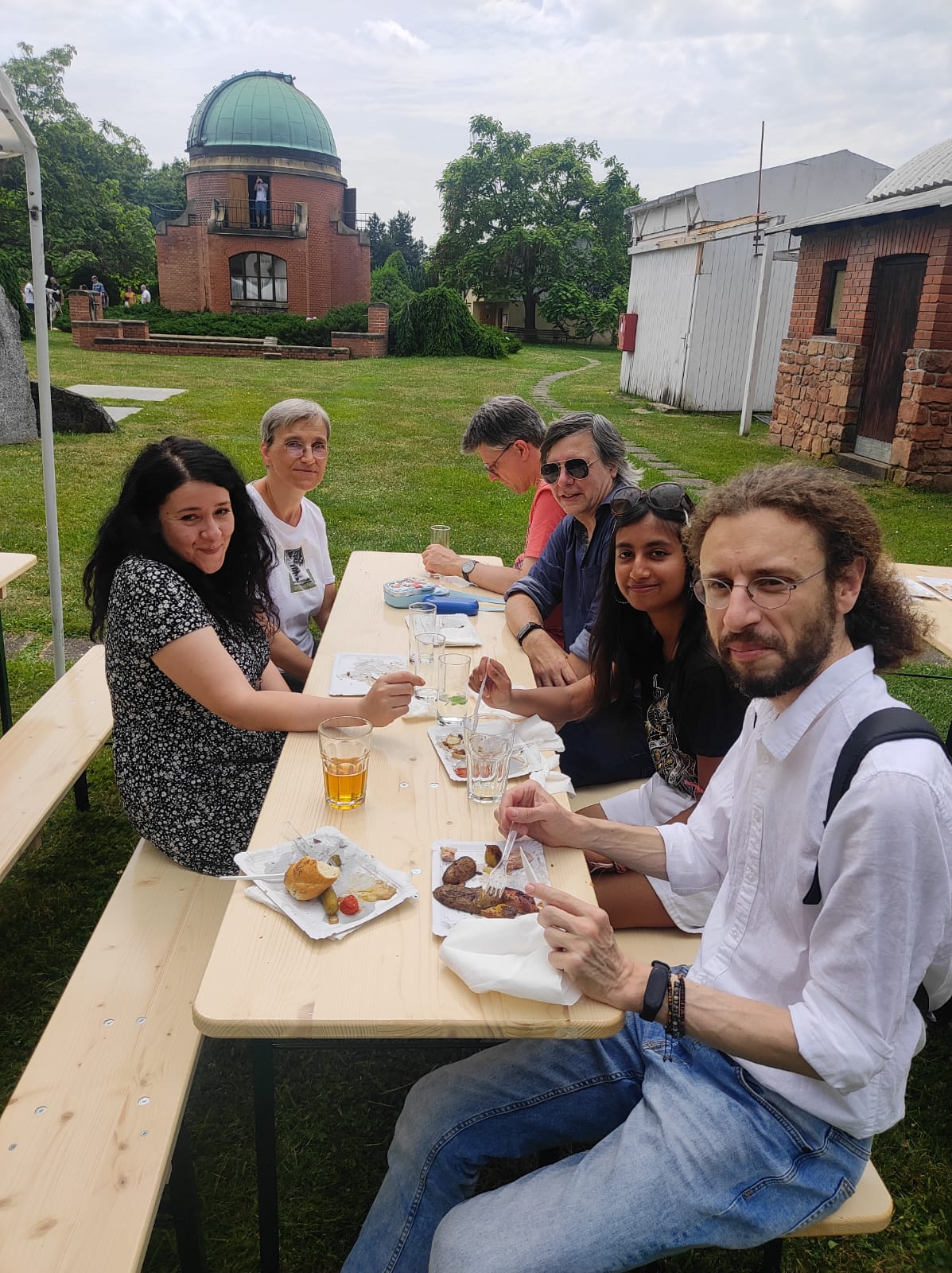
Thanks to POEMS, I have had the experience of working alongside people from different nationalities and witnessing different approaches to everyday challenges. I hope that several collaborations can be established in the near future. Finally, I must express my gratitude for the hospitality of Michaela and all the members of the group, who have always been willing to make my stay as pleasant as possible.
Recently I spent two wonderful autumn months at the La Plata National University. It was a bright, interesting, memorable and, of course, fruitful trip in terms of both scientific communication and personal gains.
During the secondment I started to study three interesting stars with the B[e] phenomenon. Infrared data for them were collected by Argentinian colleagues, while optical spectra were obtained at the telescopes in Czech Republic and Estonia. And now it's time to put everything together and publish the results. Stars with the B[e] phenomenon is a new field for me, thus regular meetings and discussions with the colleagues - Prof. Lydia Cidale, Dr. Maria Arias and Dr. Andrea Torres - were very useful and helped me a lot. During the visit I also gave a talk titled “Unveiling new LBVs in modern sky surveys” at the University seminar.

I really liked the observatory itself and its atmosphere. The observatory is an old building, with a courtyard paved with white stone. You may feel that the observatory not only conducts modern exploration of the Universe, but also carefully preserves the memory. Dr. Yael Aidelman and Prof. Roberto Gamen showed me the collection of historical photographic plates. I was amazed and happy to see the plates with spectra of WR stars that the famous researcher of these objects, Virpi Niemelä, acquired. The observations logbooks, which kept records of observations performed a hundred years ago, aroused my delight.


In addition, it was interesting to see by my own eyes the tapes with data from the first ever space-borne ultraviolet observatory – IUE, the International Ultraviolet Explorer. Reels of tapes with recorded data on the shelves create the right mood and inspire new research. Memorial plaques on the observatory’s walls are reminders of the difficult years in the history of Argentina.


Besides the science, the secondment to UNLP gave me the opportunity to see the amazing nature of Argentina, its incredible lakes, the Perito Moreno glacier and the Iguazu Falls.



I would like to thank Lydia, Lorena, Andrea and Maria and their families for the hospitality and responsiveness, for helping me in solving everyday problems and for organization of common activities! Many thanks to Matias, Aldana, Yanina, Yael, Paula and Rodolfo with whom we shared the office! I also want to thank the people I met at the UNLP during this visit, who made my stay so much warmer. I hope to see you all again!
During my last visit to La Plata National University (10 November 2022-11 January 2023), I initiated two projects. The first project aimed to understand the interplay between stellar oscillations and mass loss during the stellar evolution of Galactic B supergiant stars. The second project focused on Be stars in clusters and the study of their pulsations and the Be phenomena for different cluster ages.
During this secondment (1 April - 2 June 2023) I worked in tight collaboration with Prof. Lydia Cidale and Lic. Matias Diaz Ruiz on the Galactic B supergiants project, addressing the referee report for the paper I submitted to Galaxies for a Special Issue in which Prof. Lydia Cidale and Prof. Michaela Kraus are editors. In this paper, we successfully employed the code developed by Dr. Peter Nemeth during his secondment at the University of Valparaiso in Chile, in collaboration with Dr. Elisson S.G. de Almeida, to retrieve the stellar and wind parameters as well as the CNO mass fractions for the selected objects. We performed a careful analysis of TESS light curves for the 3 selected B-Supergiants with Lic. Matias Diaz Ruiz finding one rotational splitting in one of these objects and low frequencies modes possibly related to strange modes. The discussions with Prof. Lydia Cydale on the spectroscopy of these objects were also extremely useful in understanding how different wind parameters affect their spectra.
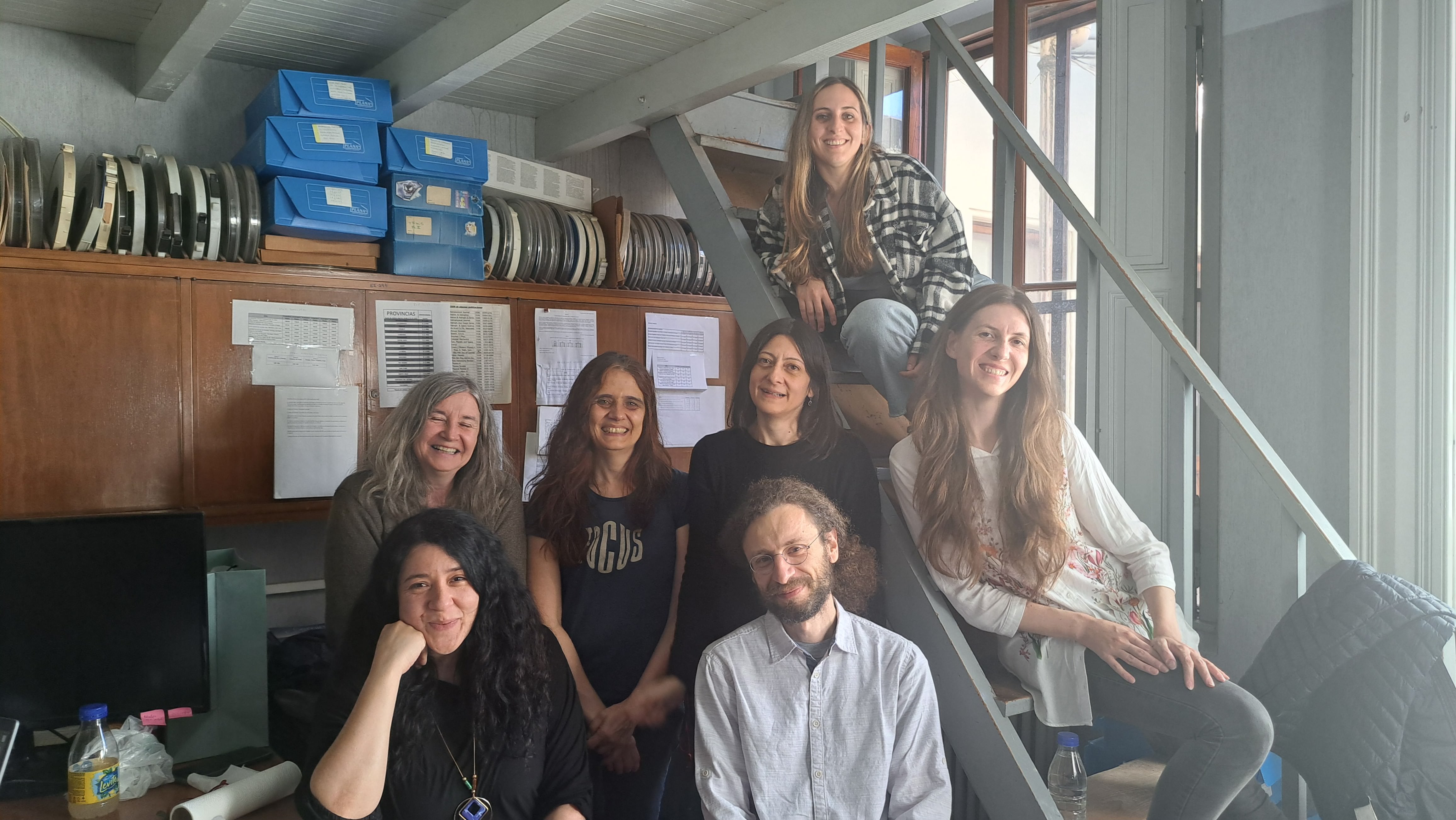
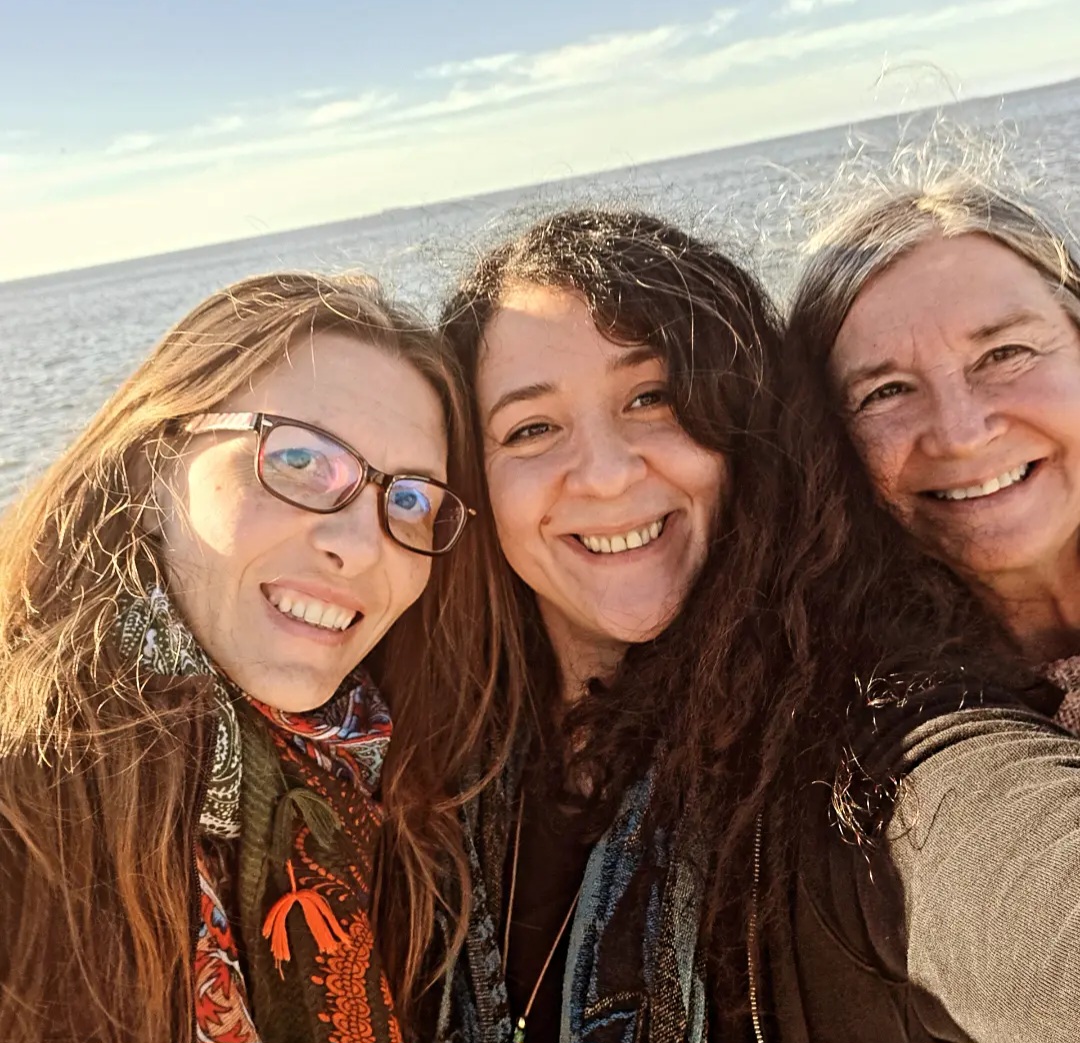
Additionally, I continue working on the stellar photometric variability of Be stars in different clusters with Dr. Yanina Cochetti. We worked with the LightKurve package to retrieve the light curve of the selected objects from the TESS Target Pixel Files (TPF). We implemented different codes, such as TESS-Localize, to identify the sources of variabilities within the TPF. We faced major complications mainly due to the crowded TPF for most of the clusters and will be difficult to perform statistical studies on the stellar variability and its connection with the Be phenomenon in these stars. But we won’t give up and I will continue addressing this project with stellar interior and pulsation theoretical models.
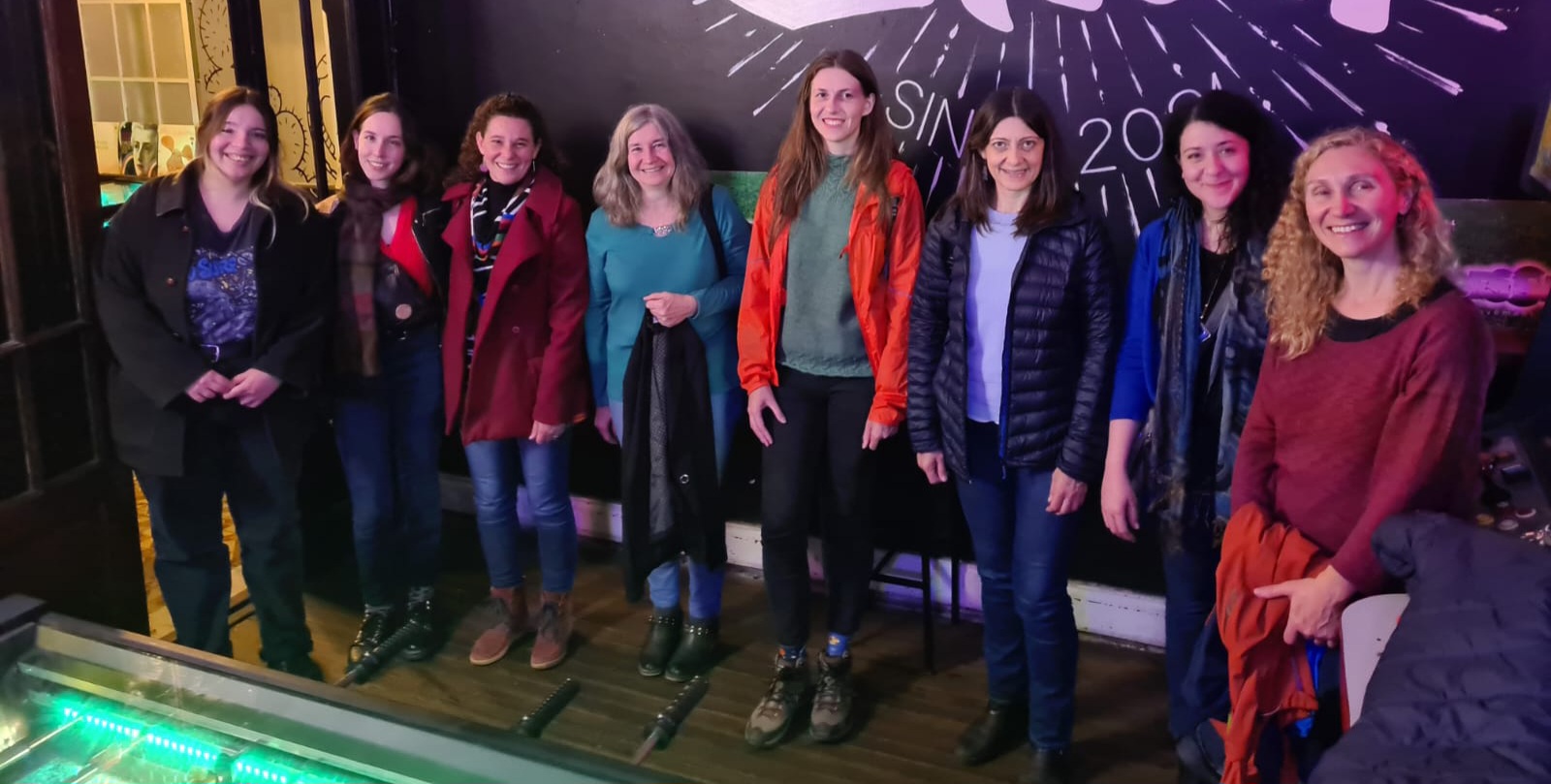
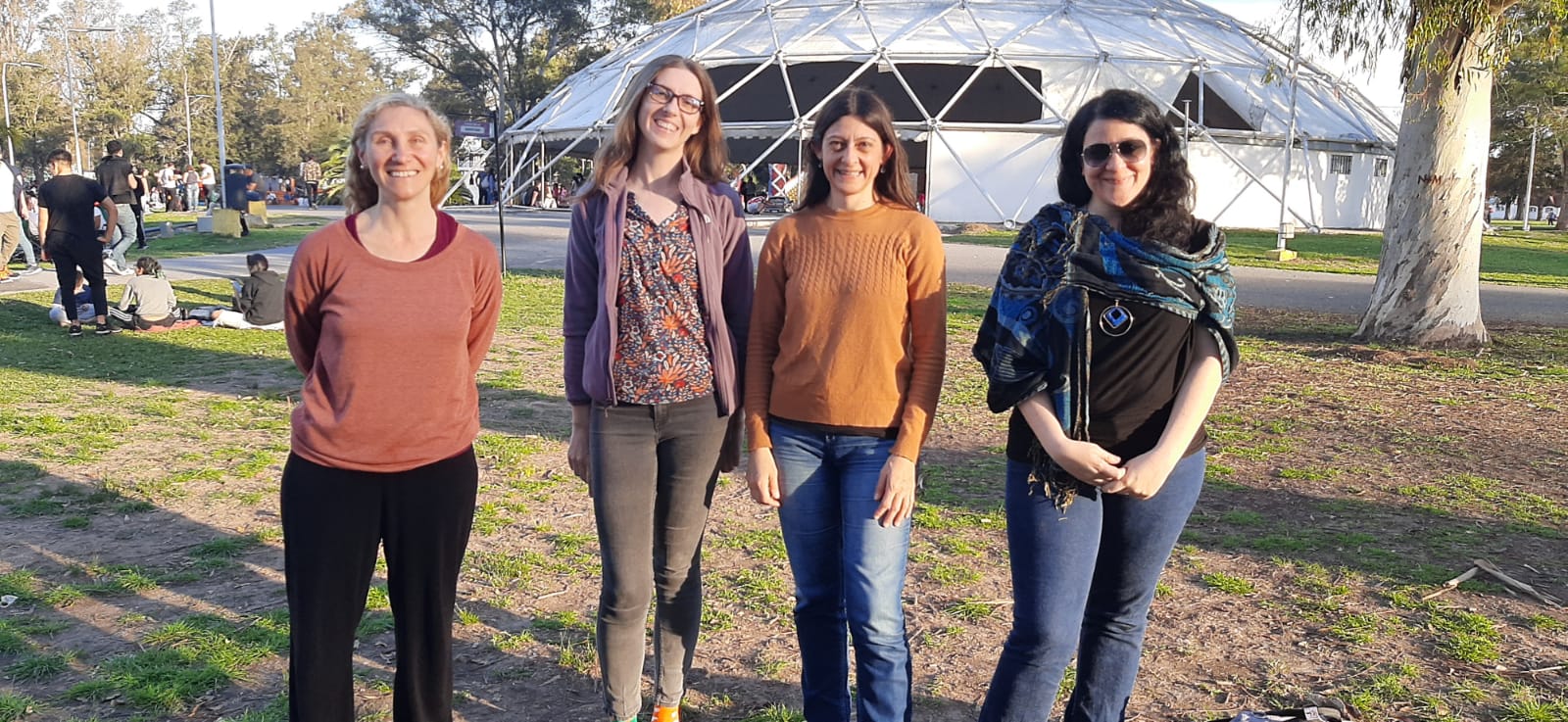
Beyond these research activities, I attended seminars and meetings to organize the upcoming POEMS School in September. I could enjoy the beautiful fall in La Plata and share nice moments with my colleagues, among them the awarding of the master's degree of Matias Ruiz Diaz. I am looking forward to continuing these collaborations within POEMS project!
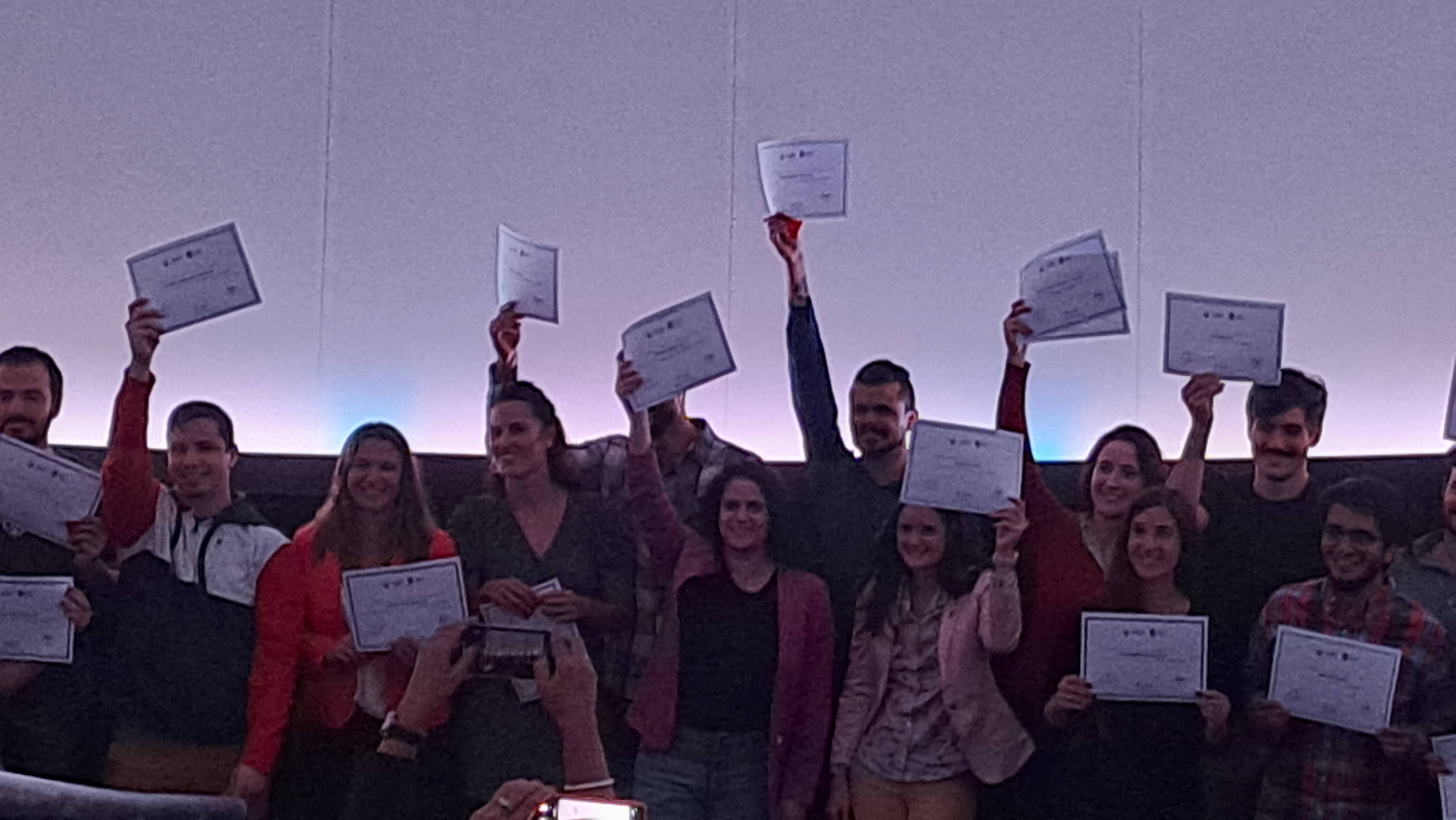
During a one-month research visit to the University of Valparaíso, Chile, I had the pleasure of collaborating with Dr. Alejandra Christen and her PhD student Gunther Avila from the Institute of Statistics, as well as with PhD student Vitalii Checha from the University of Tartu. The primary objective of our visit was to gain insights into various methods for analyzing unevenly spaced time series.
Throughout our stay, we learned to use Weighted Wavelet Z-Transform (WWZ) method, frequency analysis with Lomb-Scargle and Generalized Lomb-Scargle (GLS) periodograms, and Phase Dispersion Minimization (PDM) technique. We applied these methods to conduct frequency analysis of spectroscopic time series data of the blue supergiant rho Leo, which was obtained with the 1.5-m telescope at Tartu Observatory during 2017-2023.
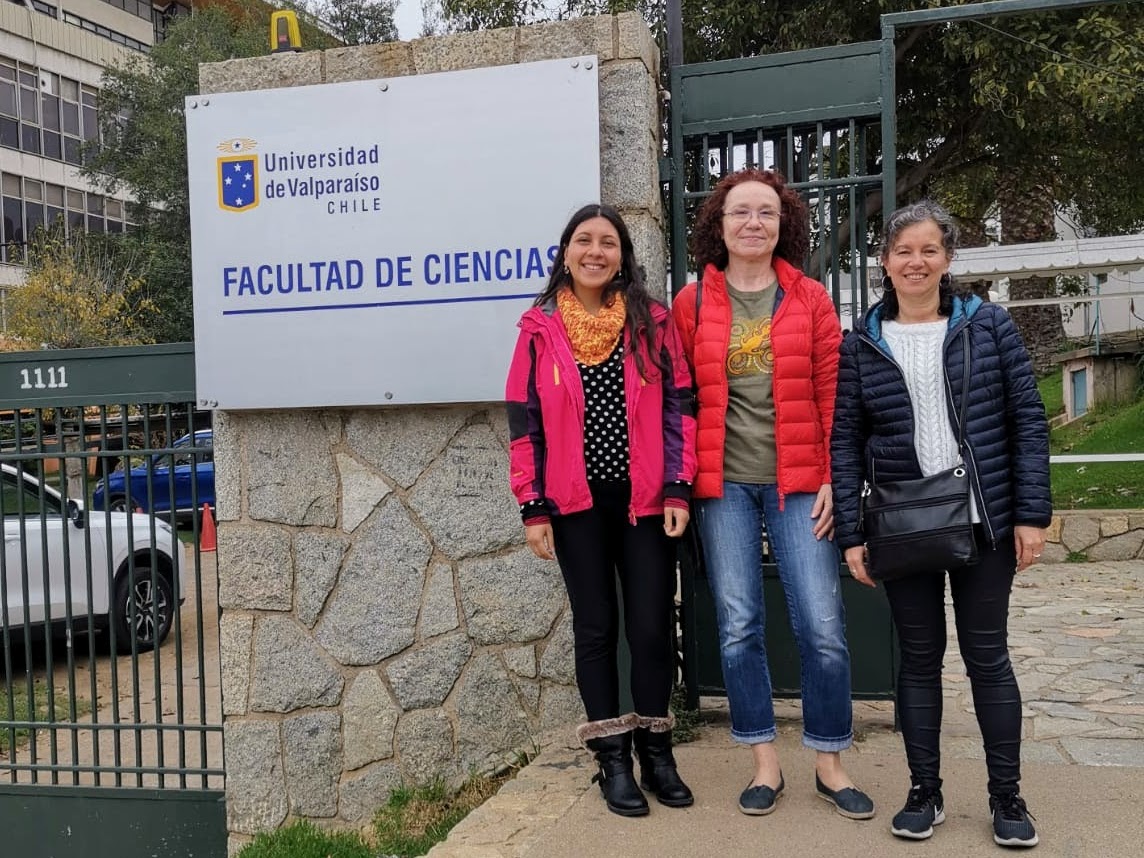
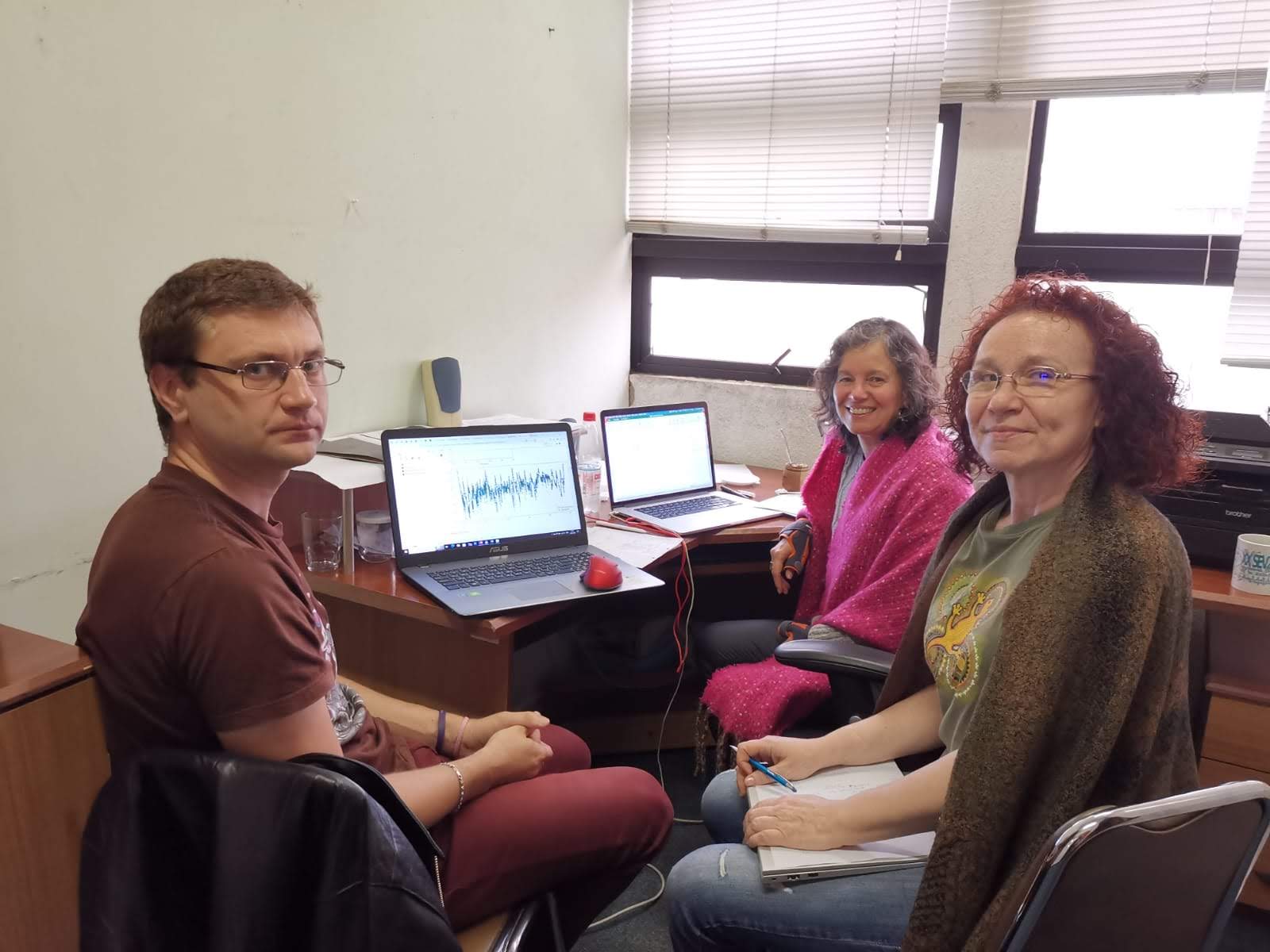
In addition to our work with Dr. Christen and Mr. Avila, we engaged in fruitful discussions with Prof. Michel Curé and Dr. Catalina Arcos. We shared and discussed the results of modeling the echelle spectra of rho Leo using the FASTWIND code, which was conducted in collaboration with Dr. Ignacio Araya during our visit to the University Mayor. Moreover, we explored the application of the hydrostatic NLTE model atmosphere code TLUSTY for modeling blue supergiants. Dr. Catalina Arcos also introduced us to the multi-fitting tool MUFIN, which works well for determining parameters of hot main sequence stars. However, this tool, based on the standard grid of TLUSTY model atmospheres, is not ideally suited for the analysis of supergiant stars.
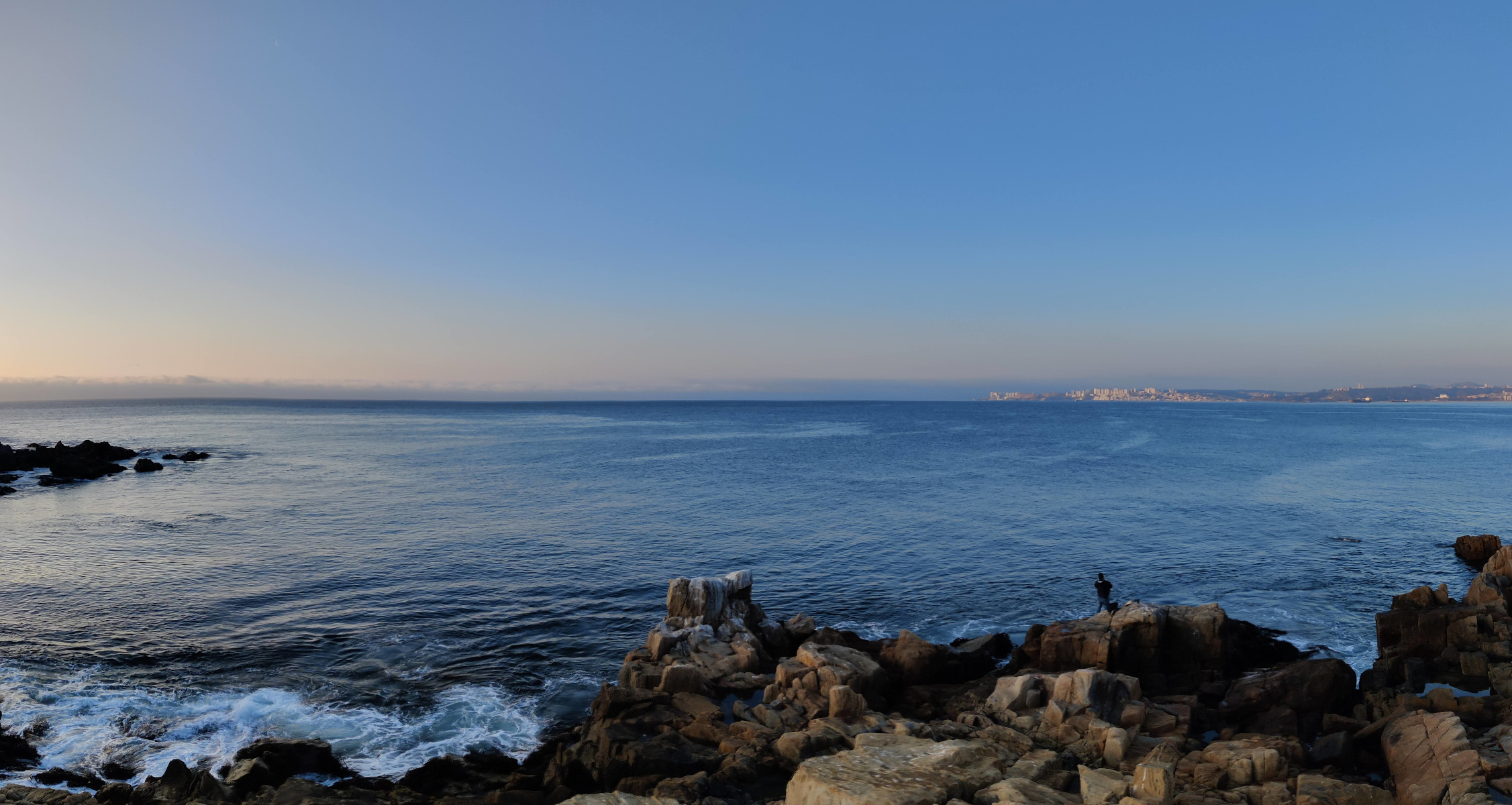
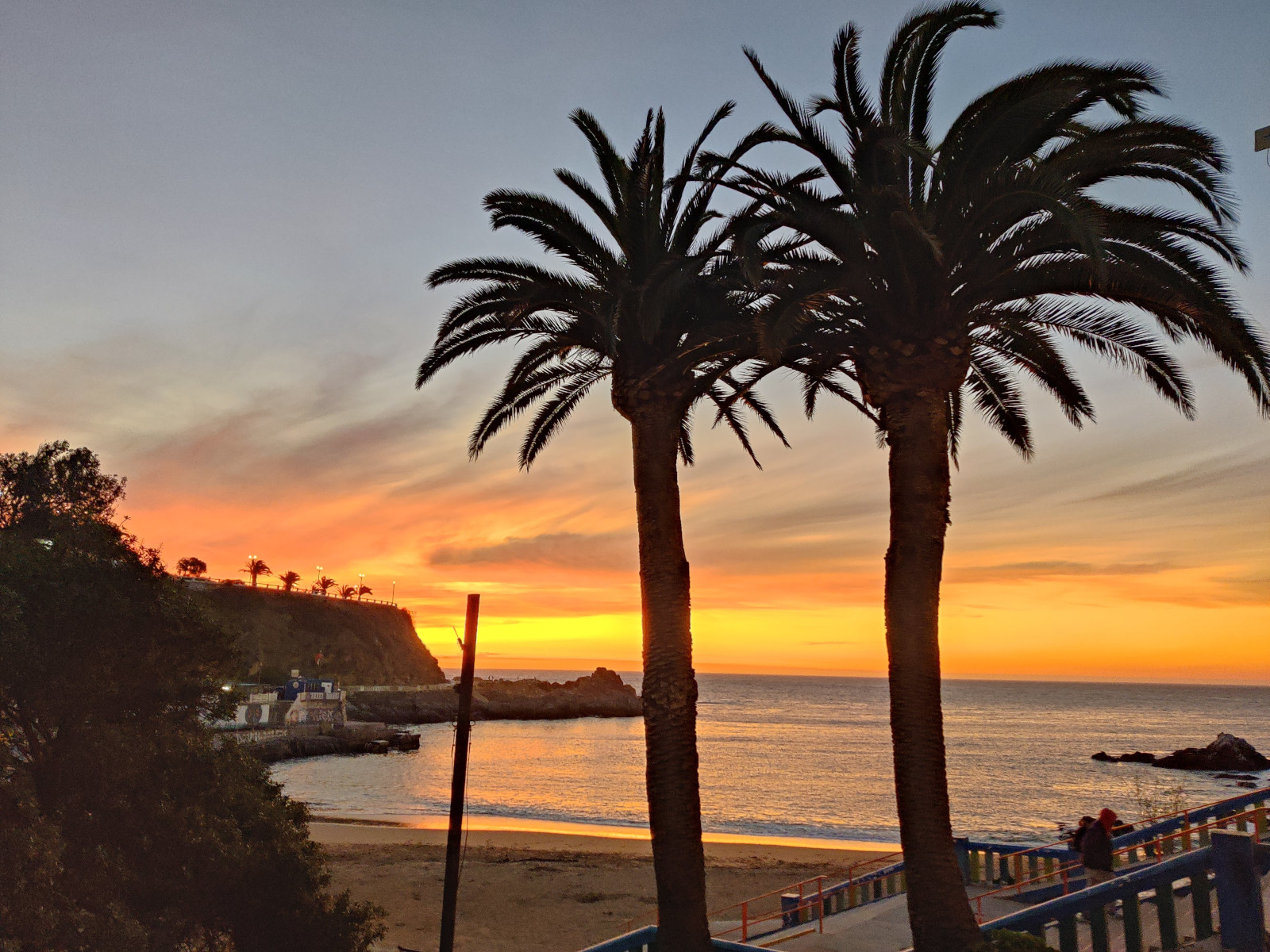
I am sincerely grateful to our Chilean colleagues for their warm welcome and generous sharing of knowledge. This remarkable opportunity to advance my research would not have been possible without their gracious hospitality and collaboration.
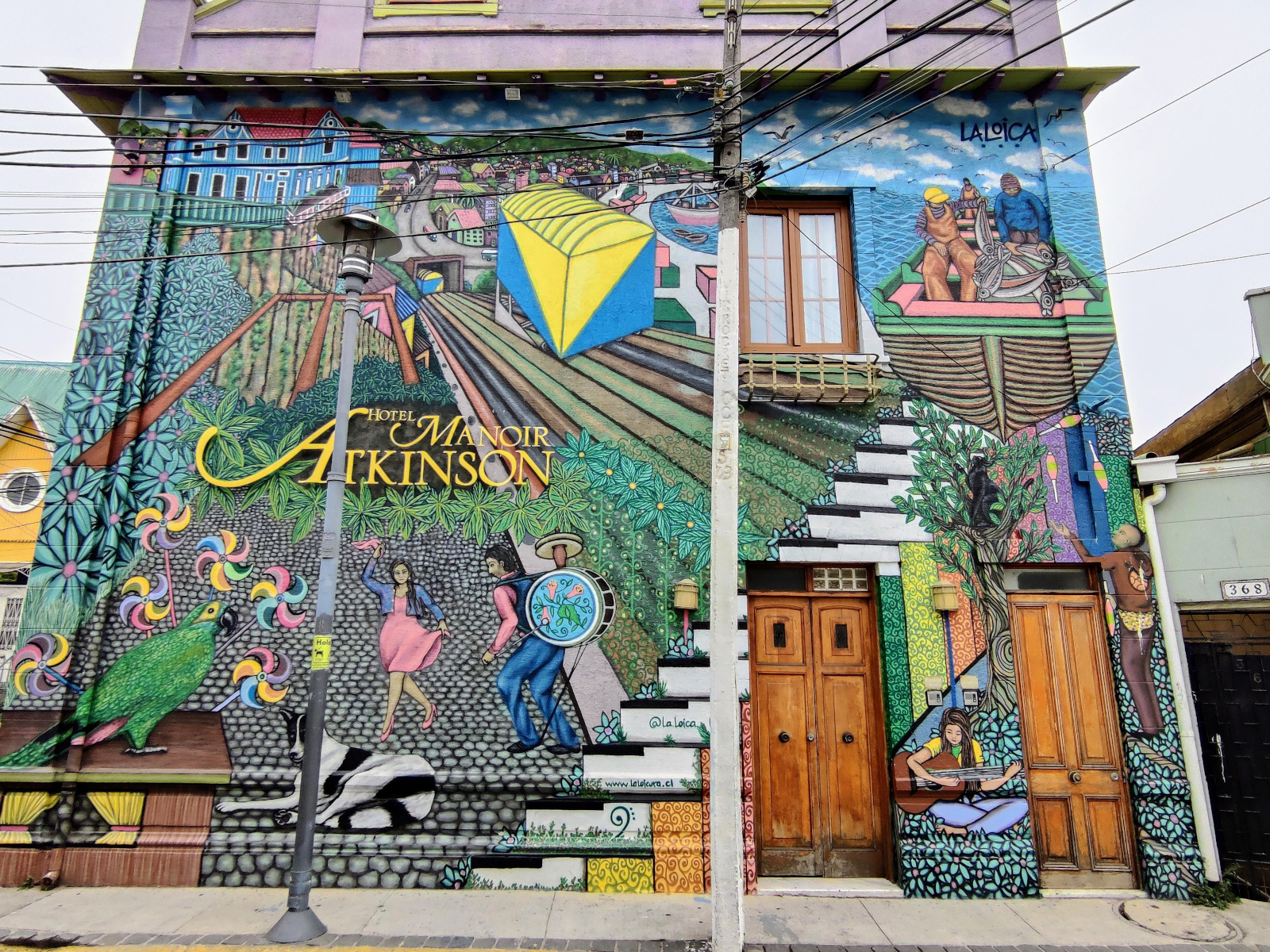
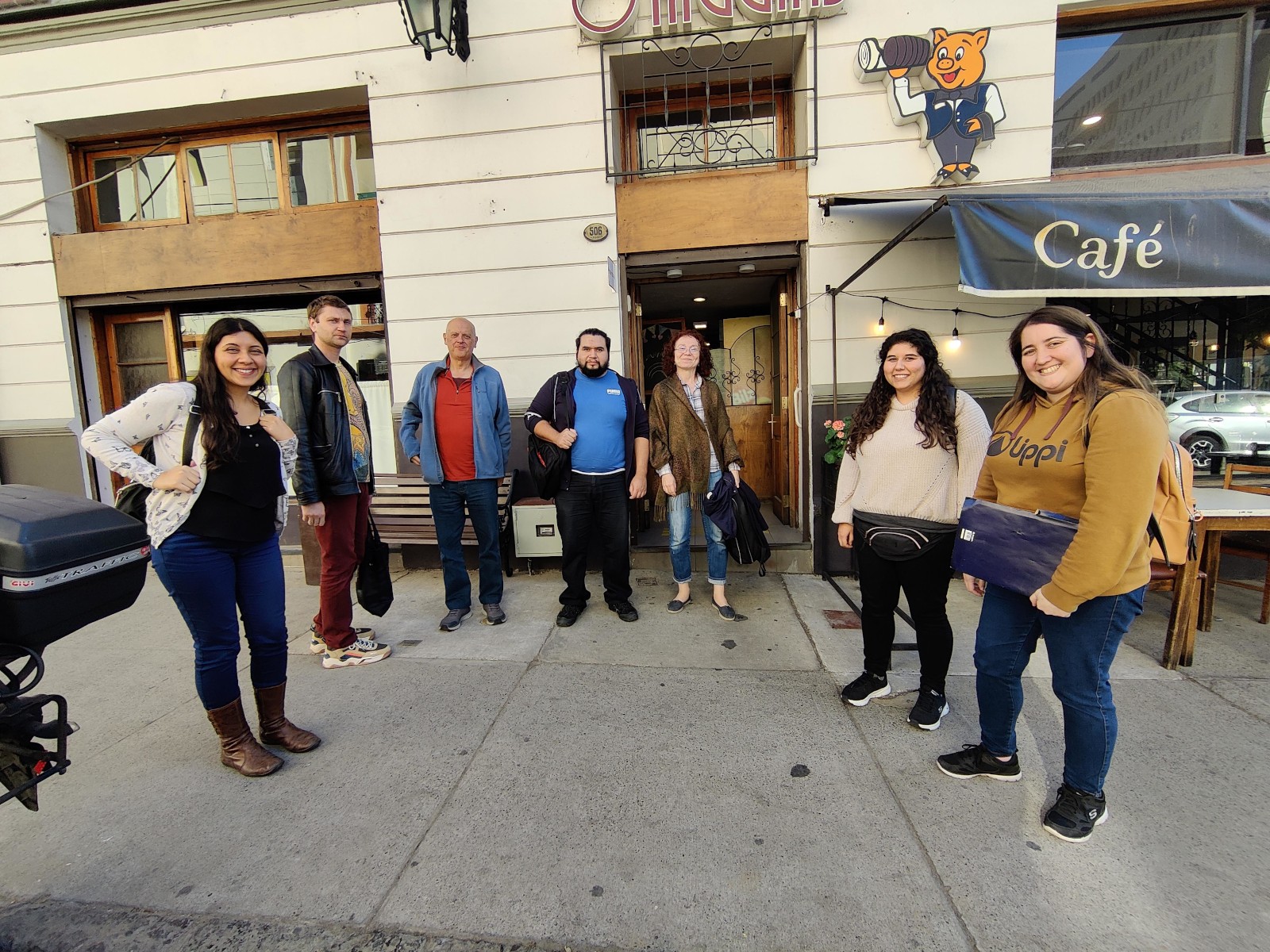
Beyond the enriching academic experiences, my memories of Valparaiso itself are deeply cherished. Its colorful houses climbing from the coast to the mountains, adorned with stunning street art at every turn, created an atmosphere unlike any other. The overwhelming views of the magnificent ocean further added to the city's charm, making this research visit a truly unforgettable experience.
During my collaboration with Professor Alejandra Christen and Gunther Avila from the Statistical Institute, who specializes in the statistical analysis of periodic processes, our main objective was to identify potential periodicity in our spectral data, specifically in the stellar pulsations of star rho Leonis. To achieve this, I utilized data series with radial velocity spanning several years of observations. Given that pulsations are not inherently periodic, finding the periods proved to be a non-trivial task. However, through our joint efforts, we explored numerous powerful statistical methods for analyzing periodic processes.
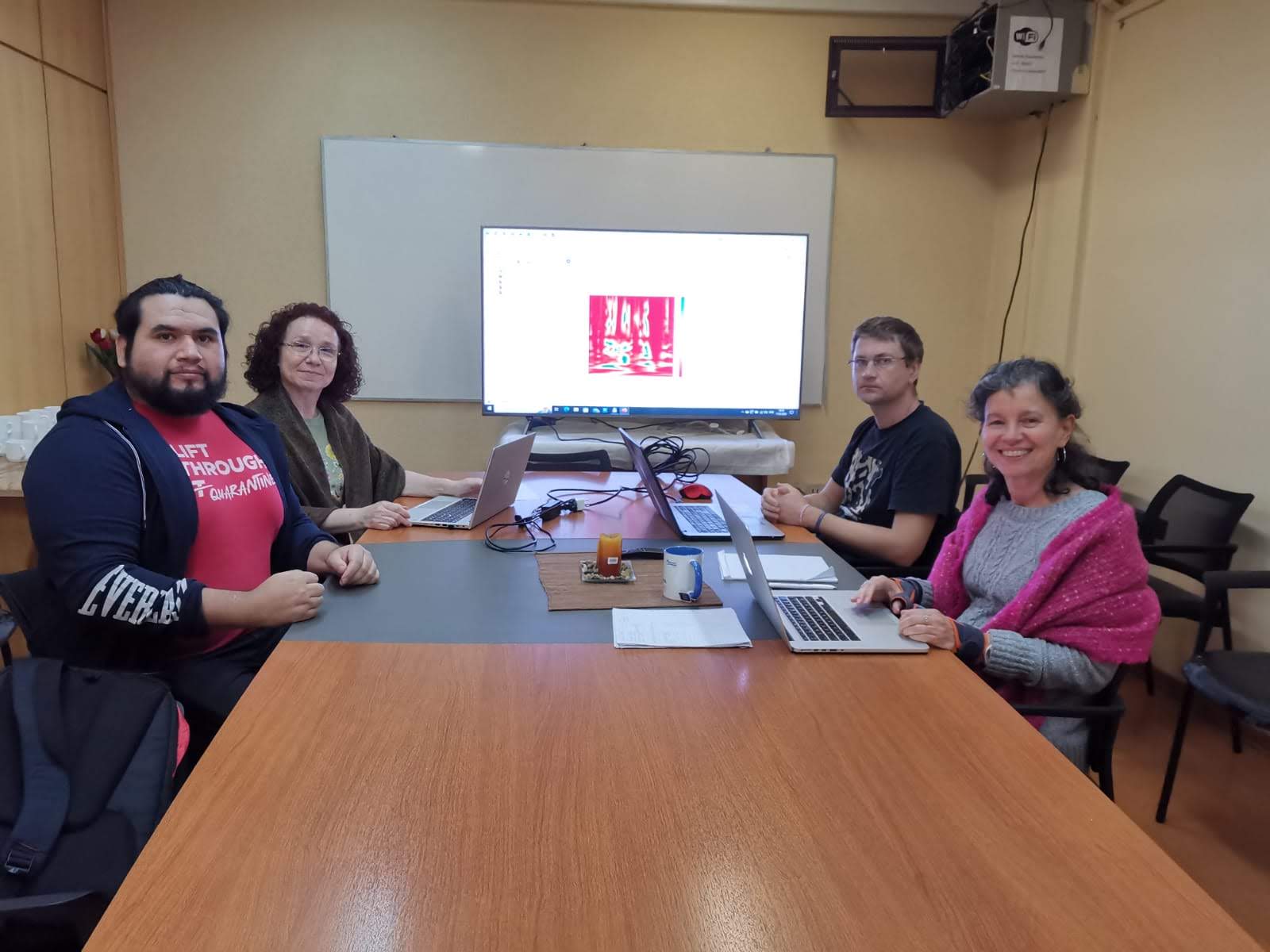
Moreover, I had the privilege of collaborating with Michel Cure and Catalina Arcos, with whom I discussed the physics of stellar pulsation and their influence on spectra.
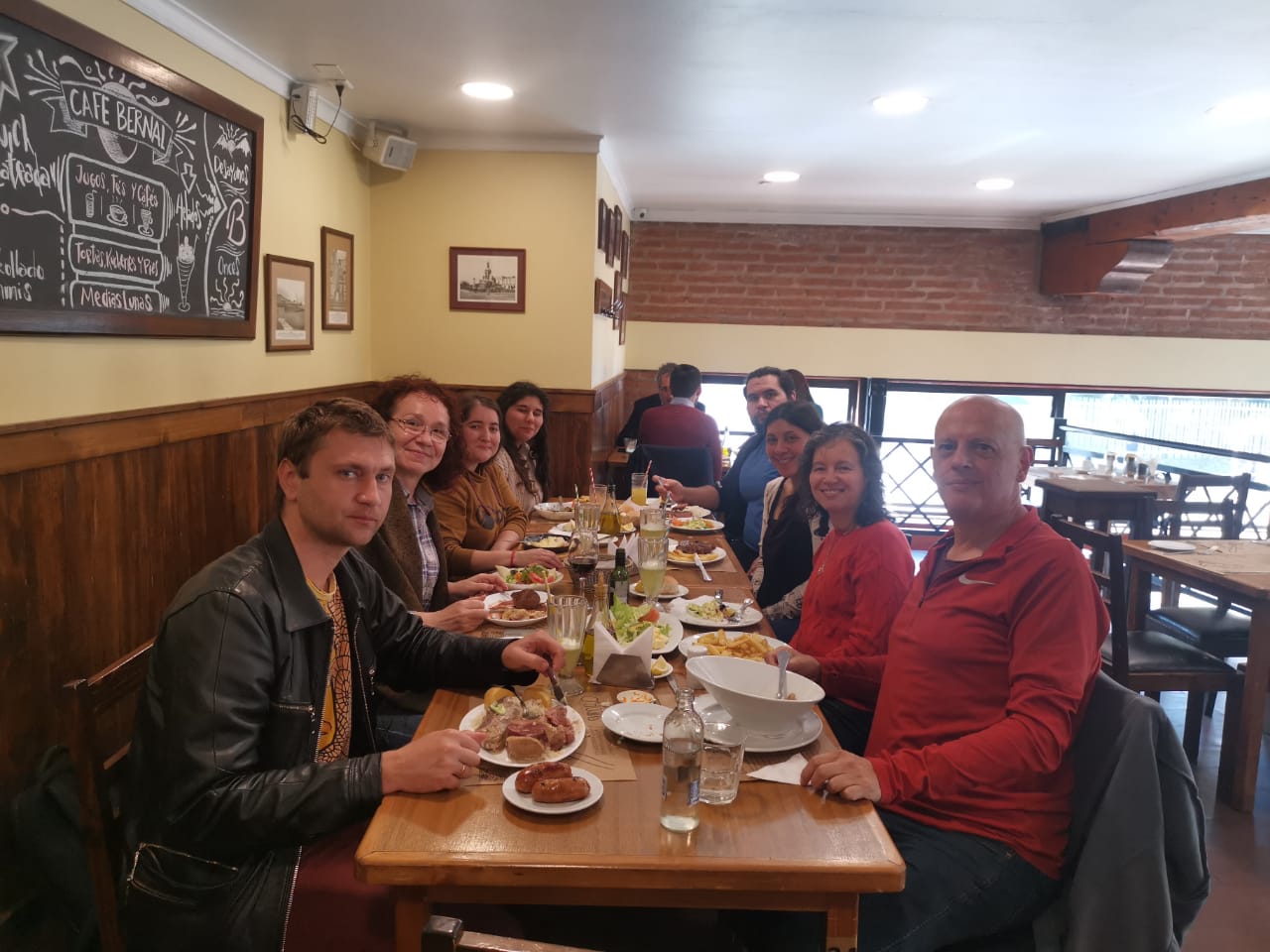
I am genuinely grateful to Alejandra, Michel, and Catalina for their warm hospitality, the time they dedicated to our collaboration, and the memorable tour in Valparaiso.
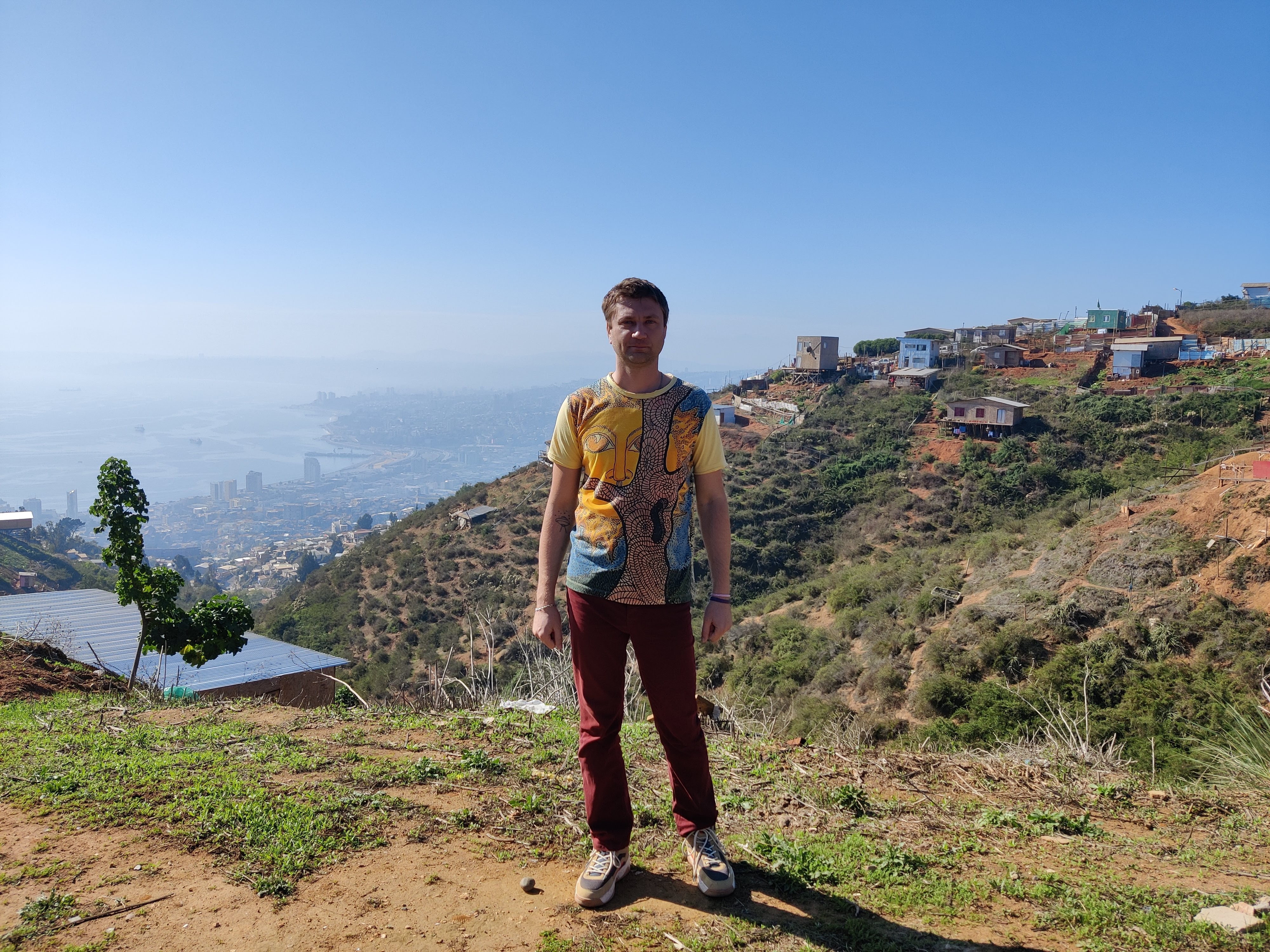
I lived in a good area of the city - near the university, very close, so you could walk there. I was also very lucky with the apartment - there was a gorgeous view from the windows.
I visited the University of La Plata, in Argentina, during the period March 26 - May 25, 2023 in the frame of POEMS project. I collaborated with Prof. Lydia Cidale who is specialized in the physics of hot stars, and quickly adapted my science plans to meet those of the group. In particular, I investigated the variability properties of a list of OB-type stars, for which the group in La Plata has been conducting high-resolution spectroscopy with CASLEO telescope throughout the latest years. My direct goal was to extract the frequencies from the multi-periodic signal of the stars that is related to pulsations, rotation and binarity. The available spectra will further allow to join the photometric activity to the kinematics of the photosphere and to wind/mass-loss diagnostics.
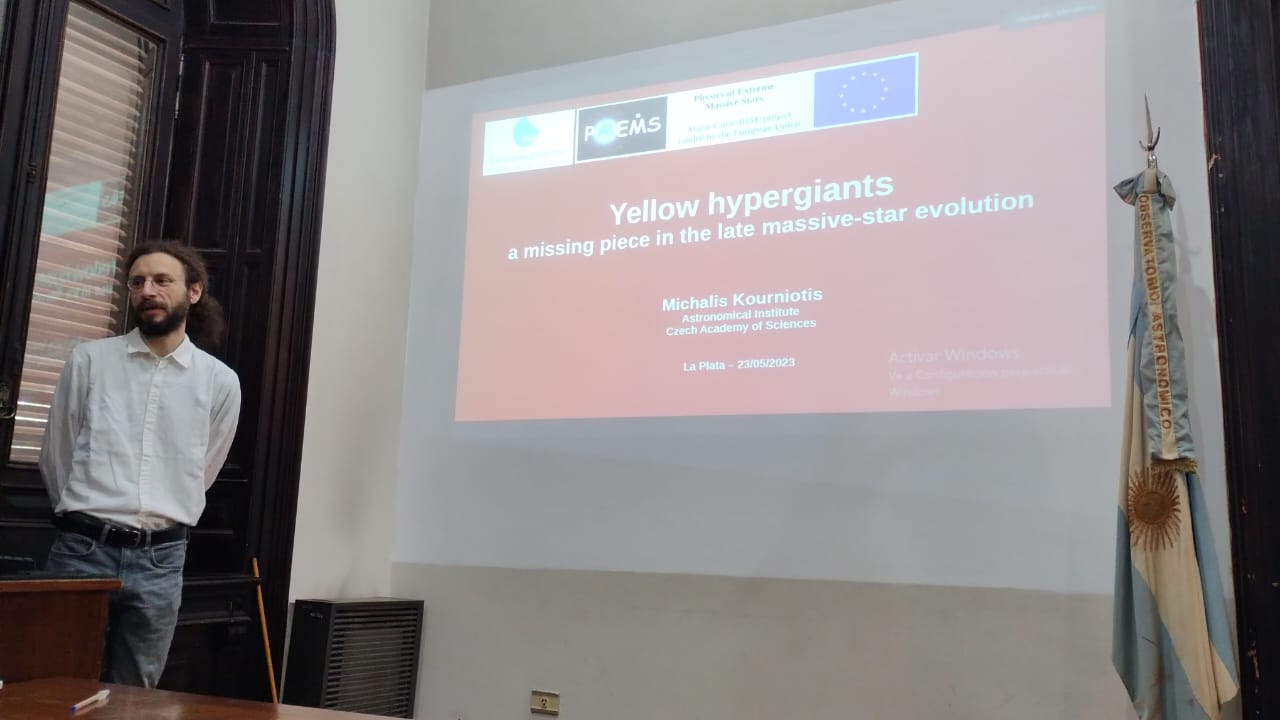
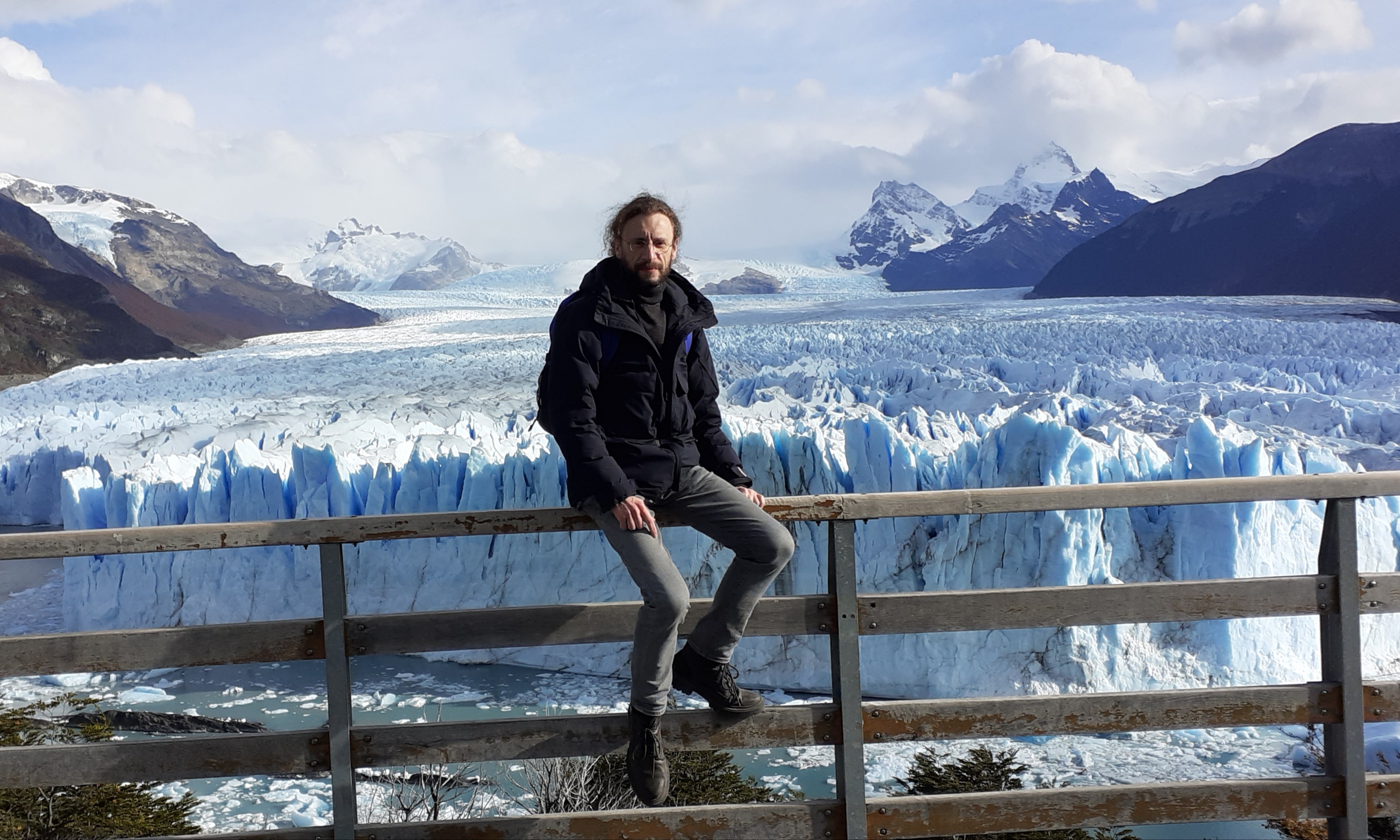
The working sample of my study was retrieved from the database of the TESS survey. The satellite has been providing the community with high-cadence photometry with unprecedented accuracy that allows to resolve relative amplitudes as low as few thousandths of the stellar light. I devoted time in extracting the light curves using own-built masks and cleaning the data from the systematics. Frequencies were then extracted using state-of-the-art tools throughout a process known as pre-whitening. I conducted statistics that associate the periodic pattern with the spectral type of the stars from the literature. Refined statistics are currently explored upon the inclusion of accurate spectroscopic temperatures from CASLEO. In addition, fit of the spectral energy distribution will enable to measure luminosities and to identify the location of the stars on the evolutionary diagram. The results from the different methods will be presented in an upcoming article, to be submitted in a high-impact journal (Kourniotis et al. in prep.). My research visit ended with a review talk titled as "Yellow hypergiants: a missing piece in the late massive-star evolution", where our up-to-date knowledge on this rare stellar type was discussed.
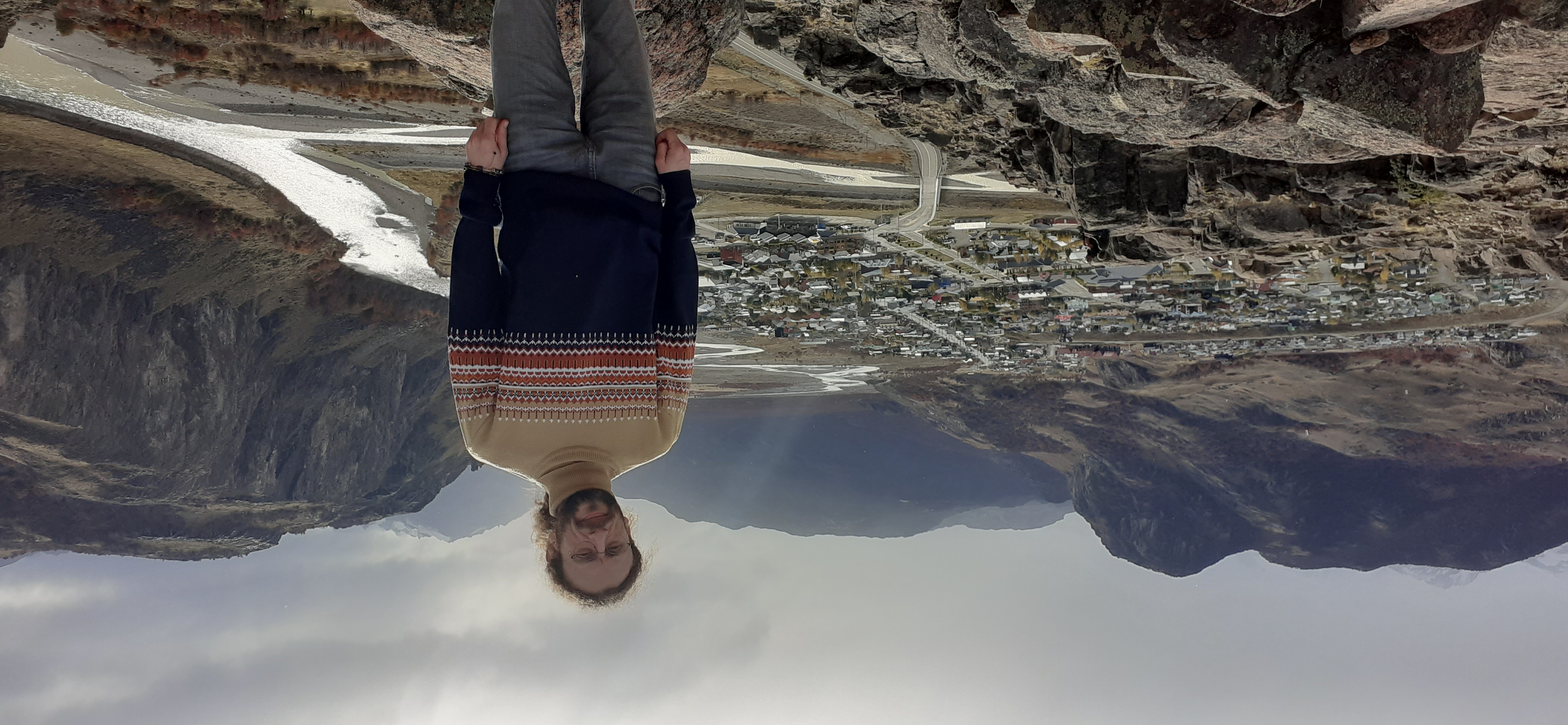
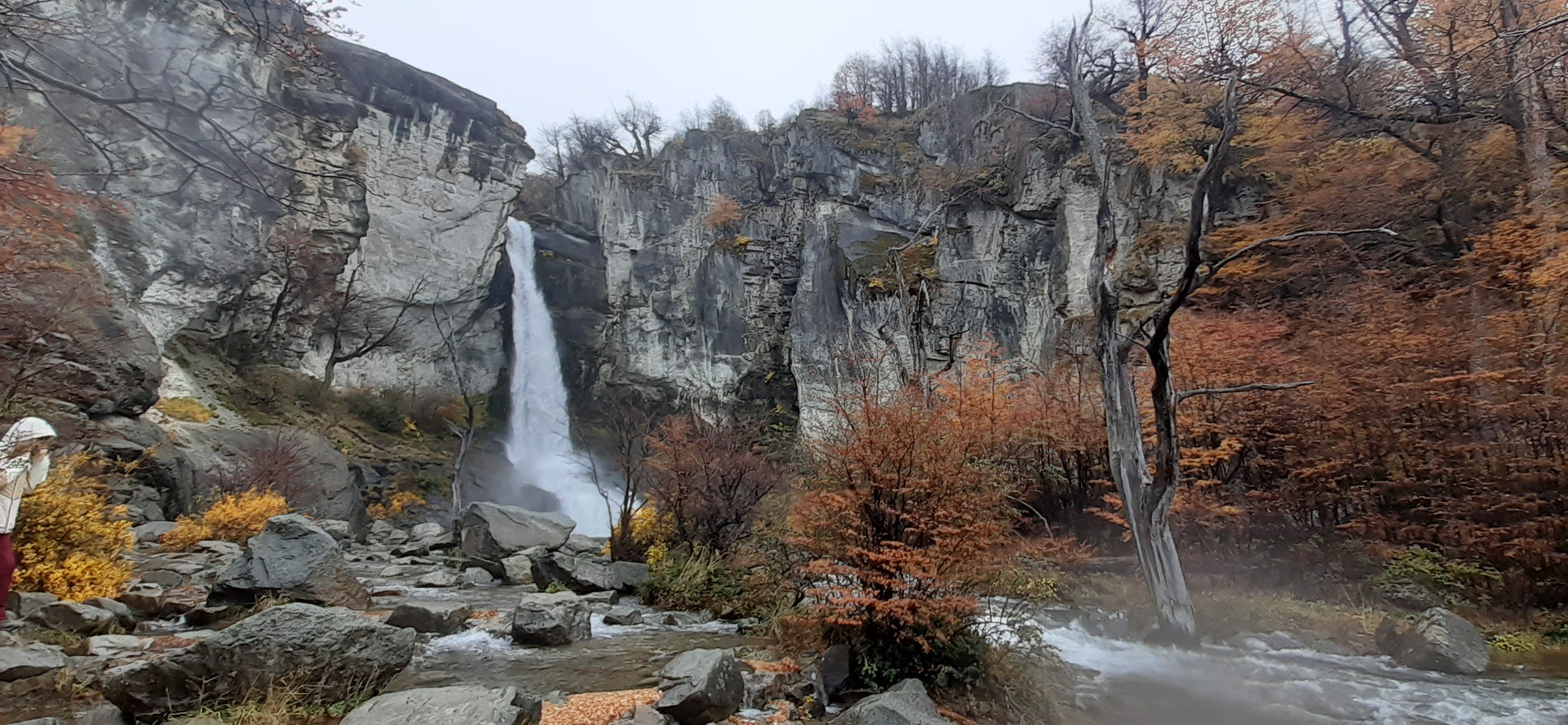
Thanks to POEMS, a fruitful collaborative study has been initiated with the aim to address open questions on the massive star physics. The exchange of knowledge and sharing of techniques is integral part of research activity. Supportive actions such as POEMS has made it possible and I am grateful for being given this opportunity. Moreover, I am grateful to the host researcher Lydia Cidale for our discussions and her kind and warm hospitality. Highlight of the trip was a visit to the iconic landmark of Argentina, the glacier in El Calafate in the area of Patagonia; an adventure of those that you need to travel to the other side of the world in order to experience.
I visited the University Mayor with Vitalii Checha, a PhD student at the University of Tartu who is studying the variability of B-type supergiant stars. During the visit, we collaborated with Dr. Ignacio Araya to use the FASTWIND code for modelling the spectra of Rho Leonis, a B-type supergiant star. Our objective was to obtain a theoretical spectrum that would accurately match the observed spectra of our object at a quiet epoch, and determine the corresponding atmospheric and wind parameters. We used echelle spectra from the HARPS-N spectrograph, which were accessible via the ESO Archive Science Portal. The resulting model profiles of the Halpha and He I 6678 A lines will be used to gather information about the formation of variable asymmetric structures in the star's wind, based on spectral monitoring with the Tartu Observatory’s 1.5-m telescope. Wind influence on the shape of He I line, as well as the Si III triplet (4552, 4567, 4574 A), may essentially affect the results of pulsation analysis.

I delivered two talks about Tartu Observatory and the research conducted in the Department of Stellar Physics. The first talk took place at Universidad de Santiago de Chile on April 14, 2023, the second talk was given at Universidad Mayor on April 21, 2023
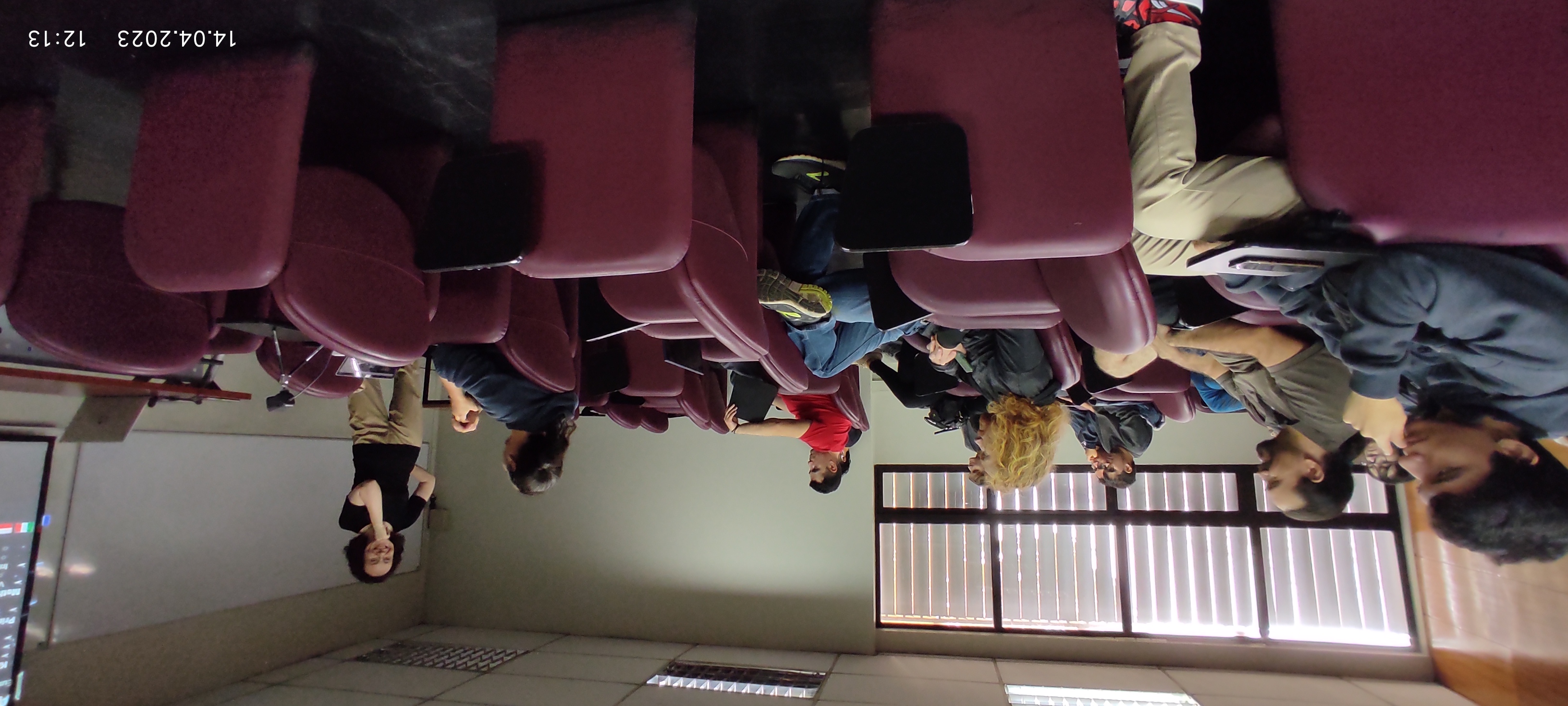
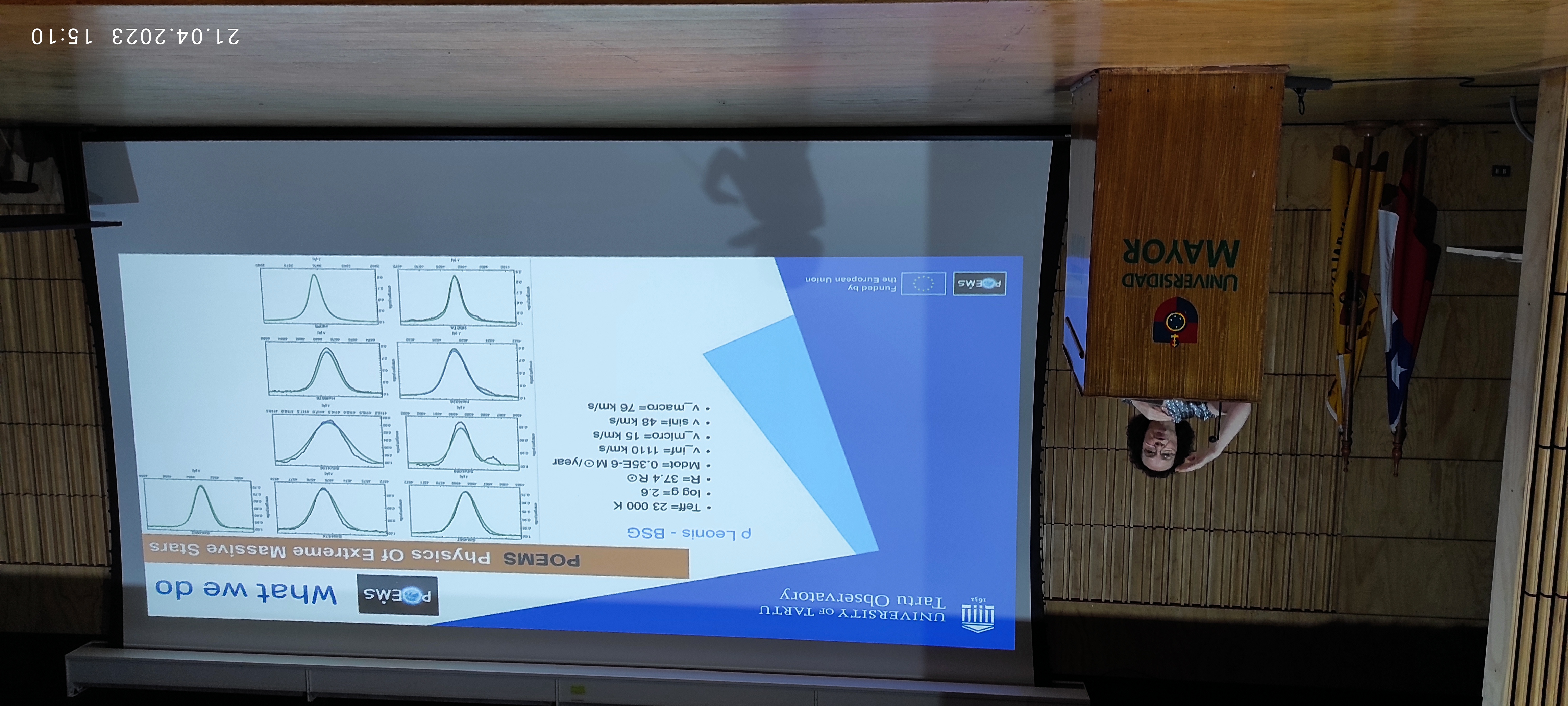
During the weekends, we took trips to the Andes mountains and marveled at the breathtaking wonders of the Chilean landscape. Although it was very hot in Santiago, with temperatures exceeding 30 degrees Celsius, the 15-degree drop in temperature at night was quite shocking.
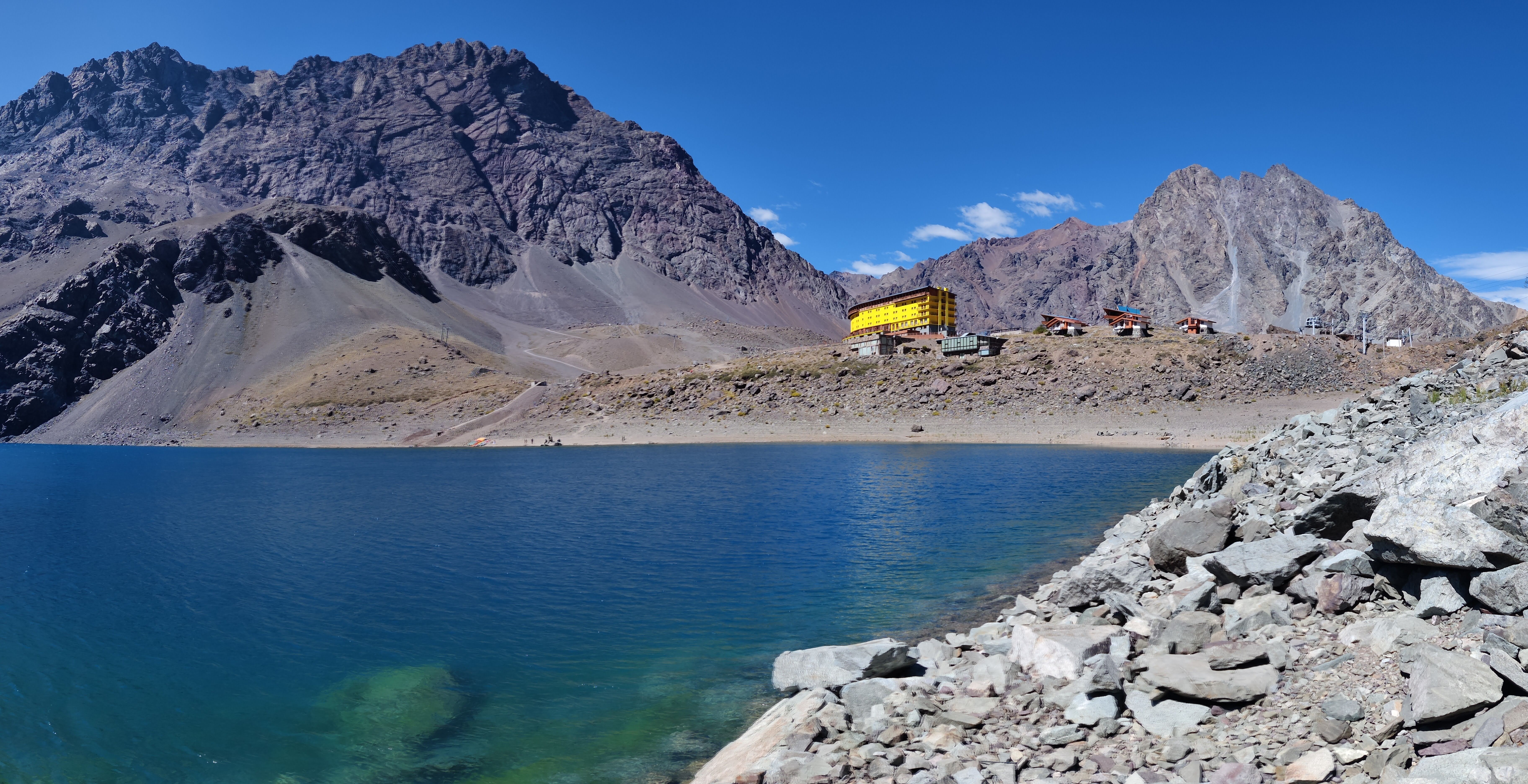
I am grateful to Dr. Ignacio Araya for his warm hospitality and valuable collaboration. I also appreciate the modern office he provided us with at the Huechuraba campus of the Universidad Mayor, which not only offered comfortable amenities but also an exceptional view overlooking Santiago. The stunning view added to the overall enjoyment of our stay.
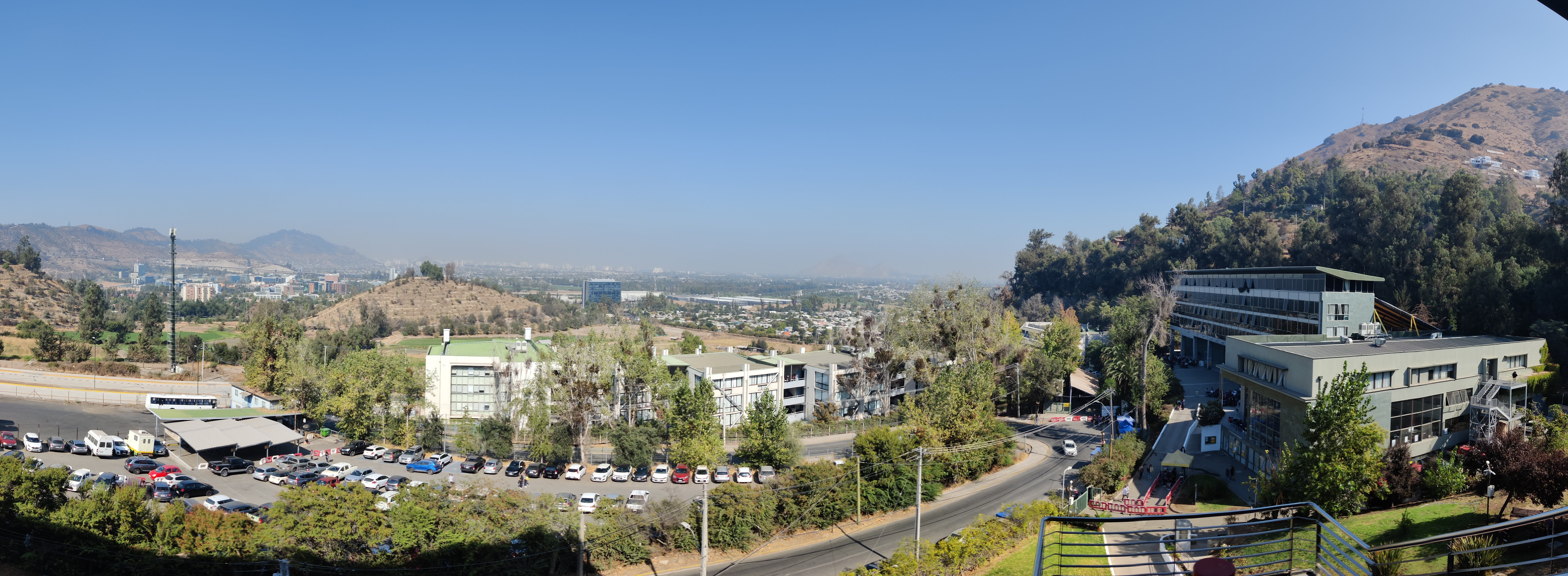
During my collaboration with physicist Ignacio Araya, who specializes in theoretical modeling of stellar atmospheres, our main objective was to find a theoretical spectrum that matched well with our observed spectra. I used both our own spectra and high-resolution (HARPS) spectra. For better fitting with the theoretical model, a lot of spectral lines were used (Si III triplet, Si IV, He I, hydrogen Balmer lines). This also involved determining the key stellar parameters of our objects. Our work yielded theoretical profiles of spectral lines that can be compared with observational data.
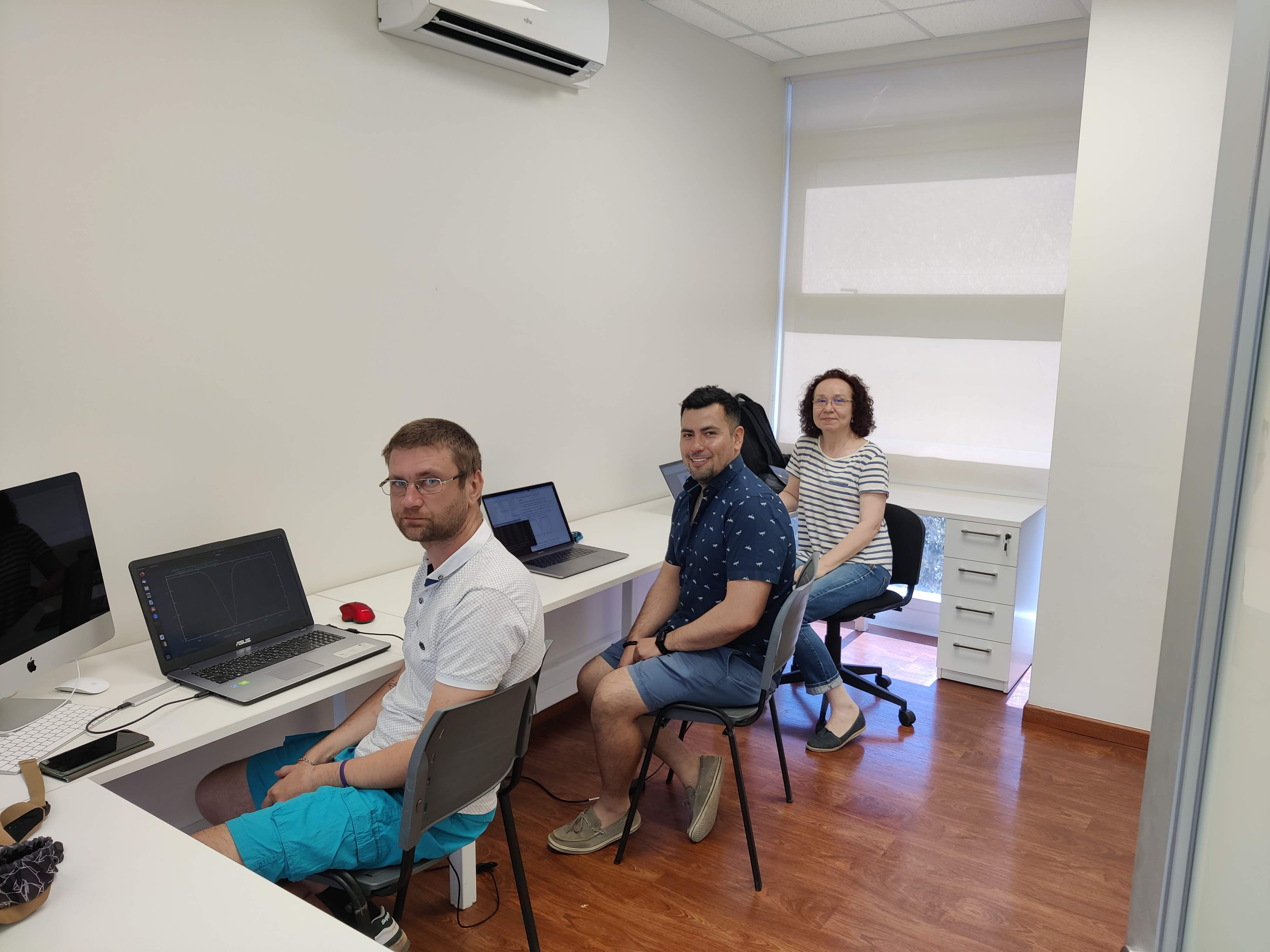
Thanks to a colleague Dr. Anna Aret, who is also a physicist, I had the opportunity to visit the Chilean Andes mountains and appreciate the breathtaking views they offer. Additionally, the climate of the Santiago Valley caught my attention: despite it being autumn, there were a significant number of clear days with very dry and warm air.
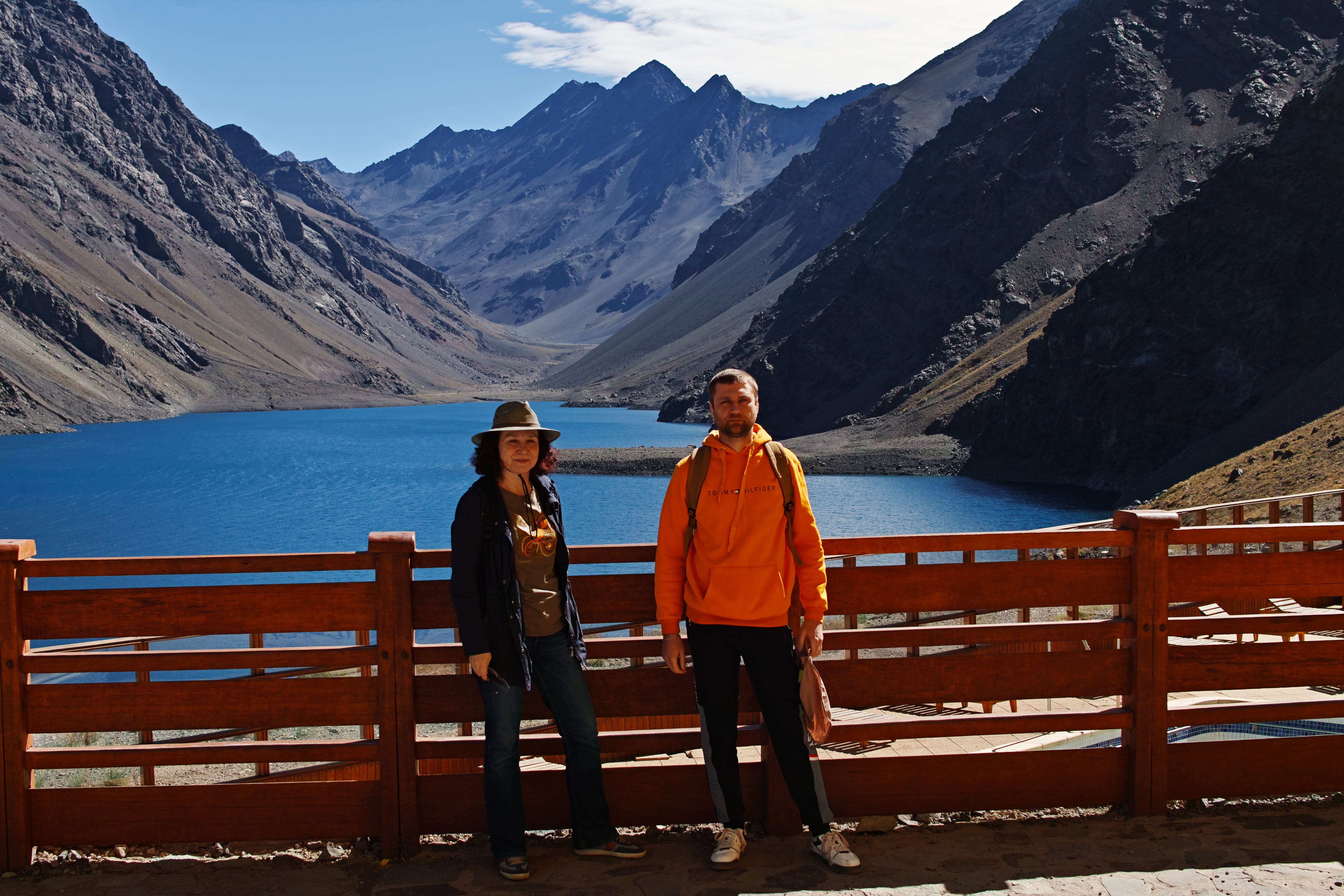
I express my sincerest gratitude to Ignacio for his unwavering care and attention towards me. It was a pleasure to work with him. Furthermore, he provided me with a very good working environment and frequently drove me to and from the office in his car.
I arrived at the observatory in Tõravere on a snowy day. Anna Aret told me that, according to Estonian beliefs, the old man in the sky that controls the weather was showing me what he could do. And certainly, he can make a lot of snow!
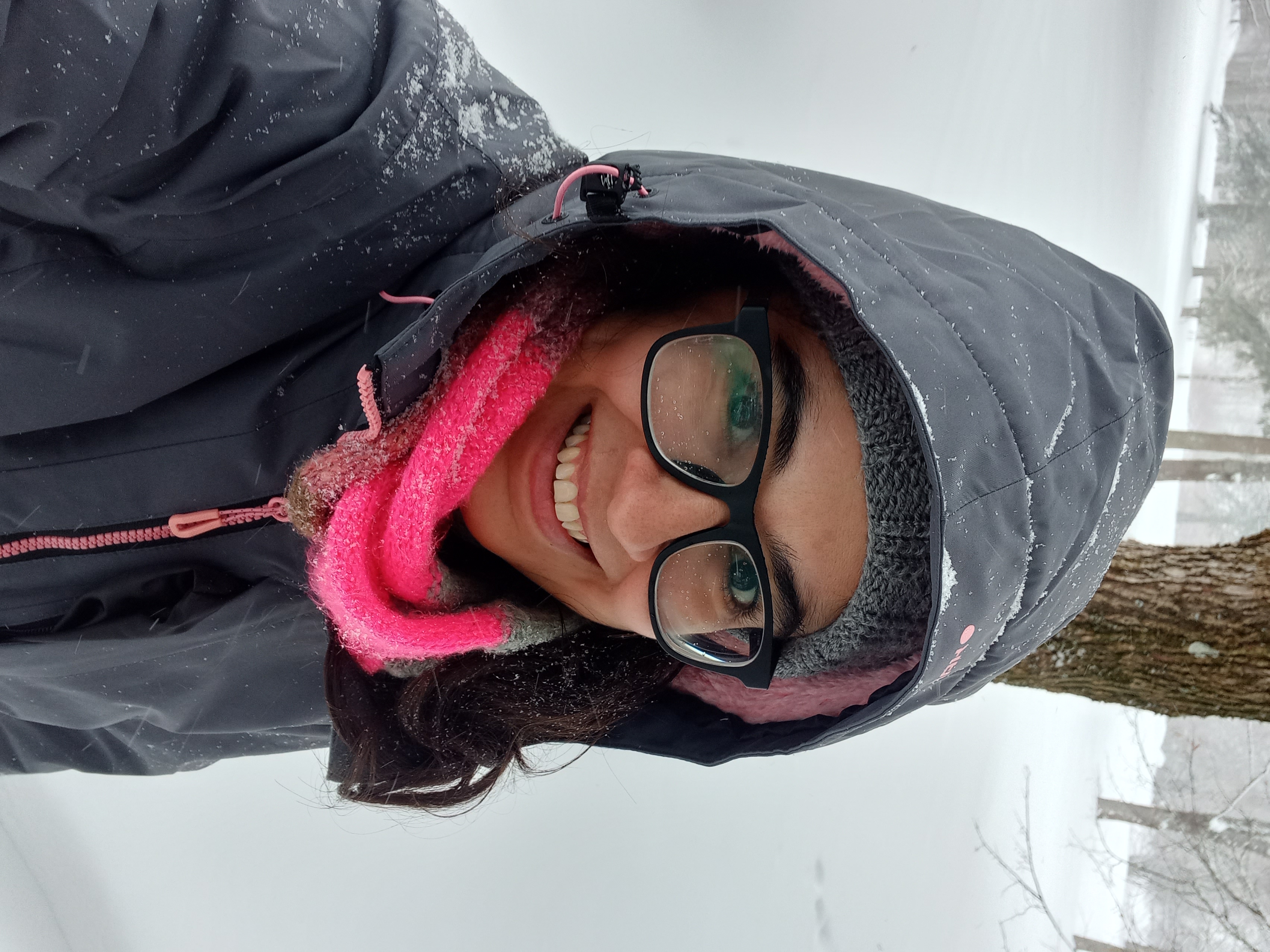
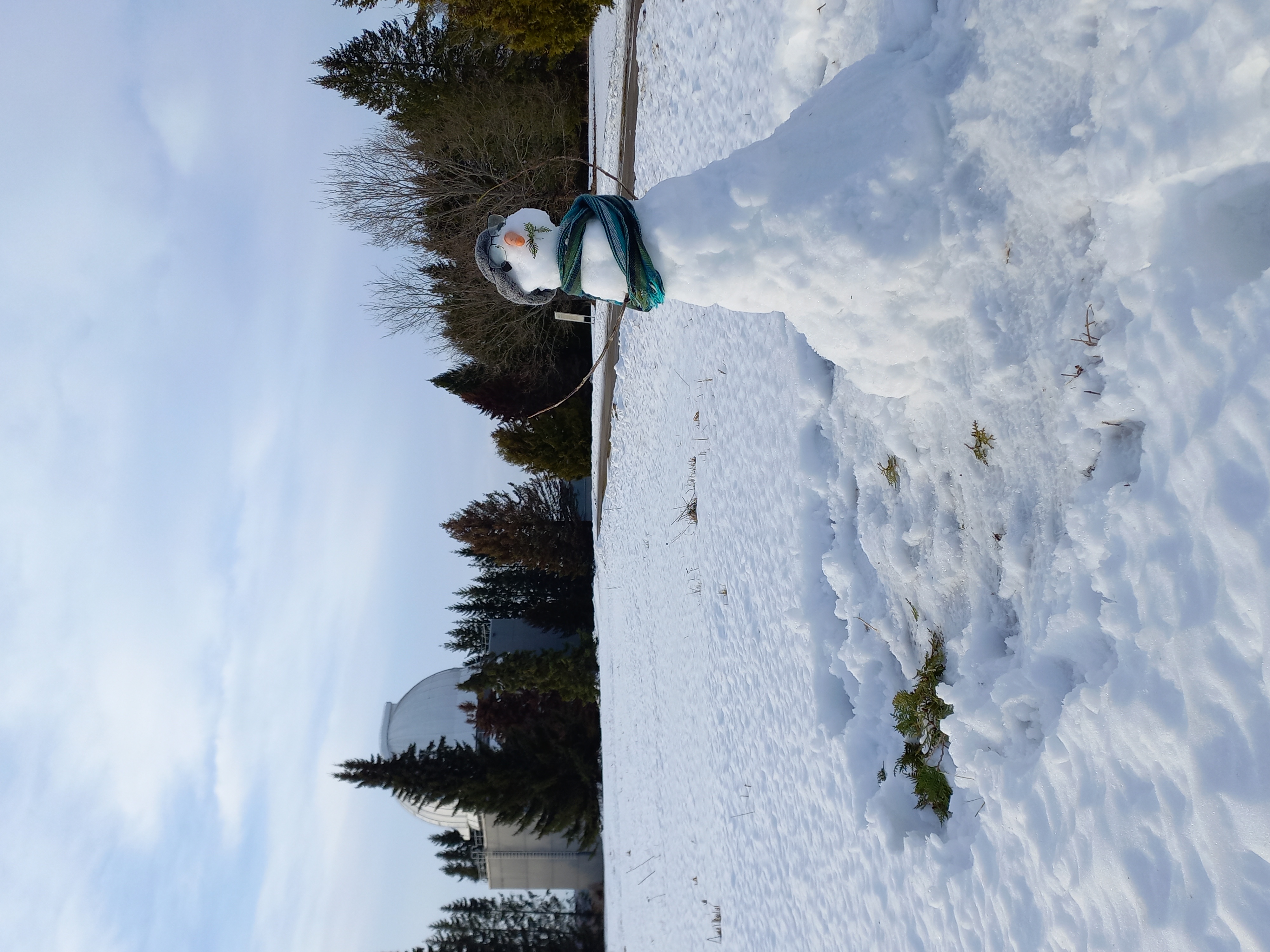
I have been working in the observatory for two months. One of the tasks I did was to work with Algol's spectroscopic data. I made the reduction of some of the spectra previously taken in the Balmer's jump region and analysed them using the BCD method. On the other hand, I revised the data taken in Argentina (CASLEO observatory) and selected some examples with different instrumental configurations that would be used to improve the POEMS database. I also had the opportunity to know the telescopes and join an observing night, and attend a day of presentations given by the different departments in the observatory. That included one by Anni Kasivok about the POEMS project. Finally, by the end of my stay, I gave a seminar on my recent work about IR spectroscopy of Be stars with the hdust code.
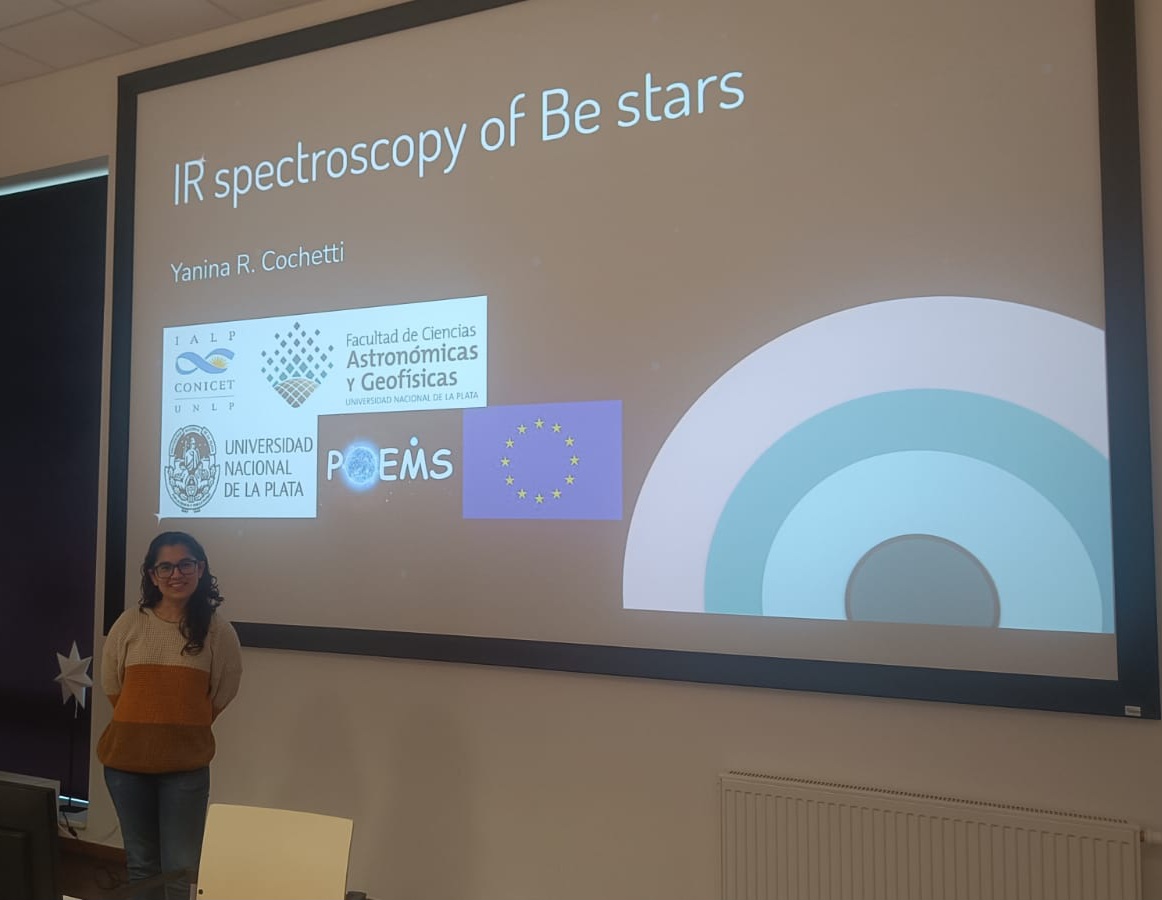
During those two months, I could be part of the life of the observatory. Eating in the canteen, attending seminars and meetings, and walking around the neighbourhood were part of the routine. I also had the incredible good luck of catching very intense northern lights. I had never seen it before, and it was an amazing experience! The photos have been taken by Veronika Mitrokhina, who was observing that night.
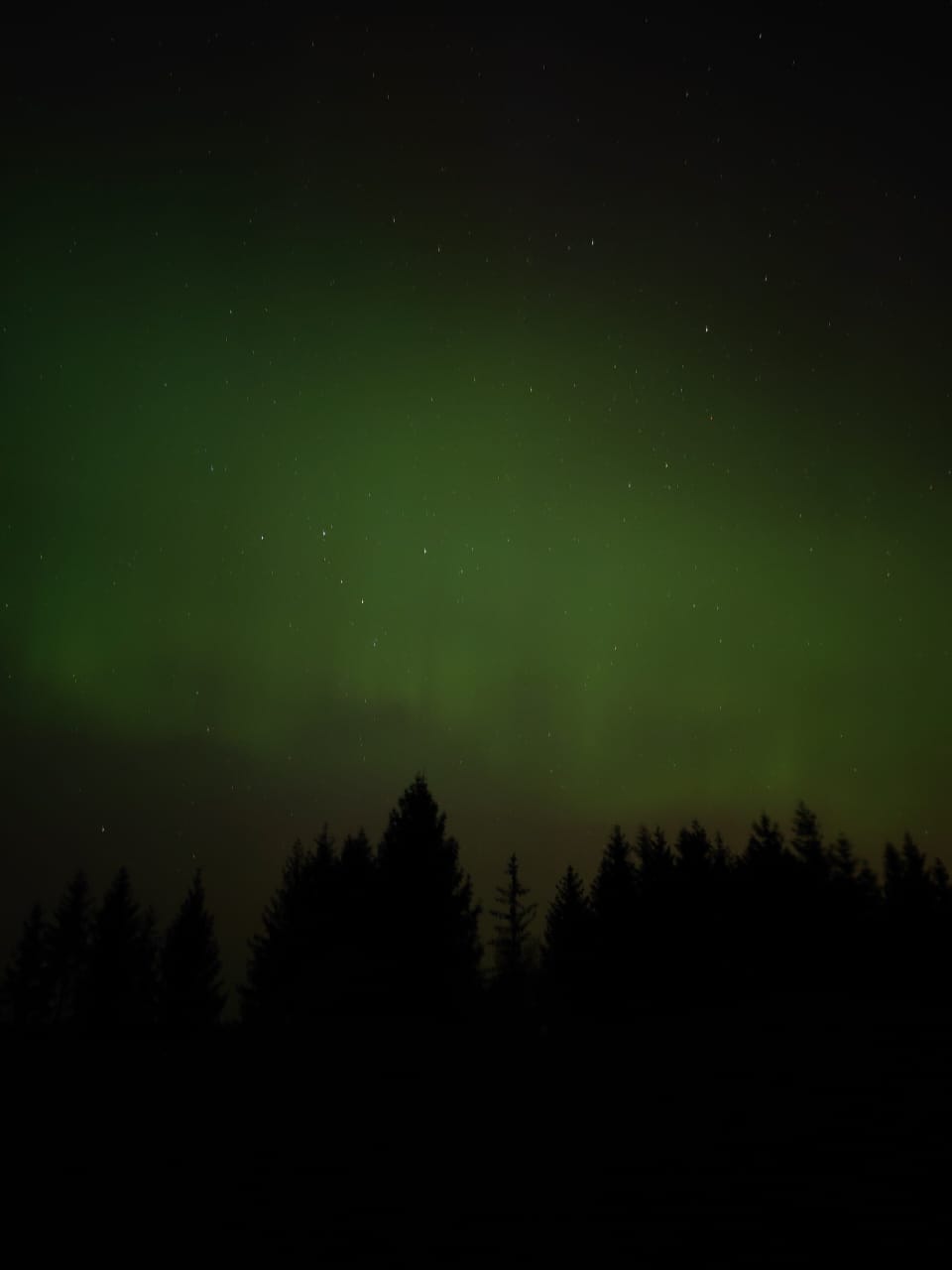
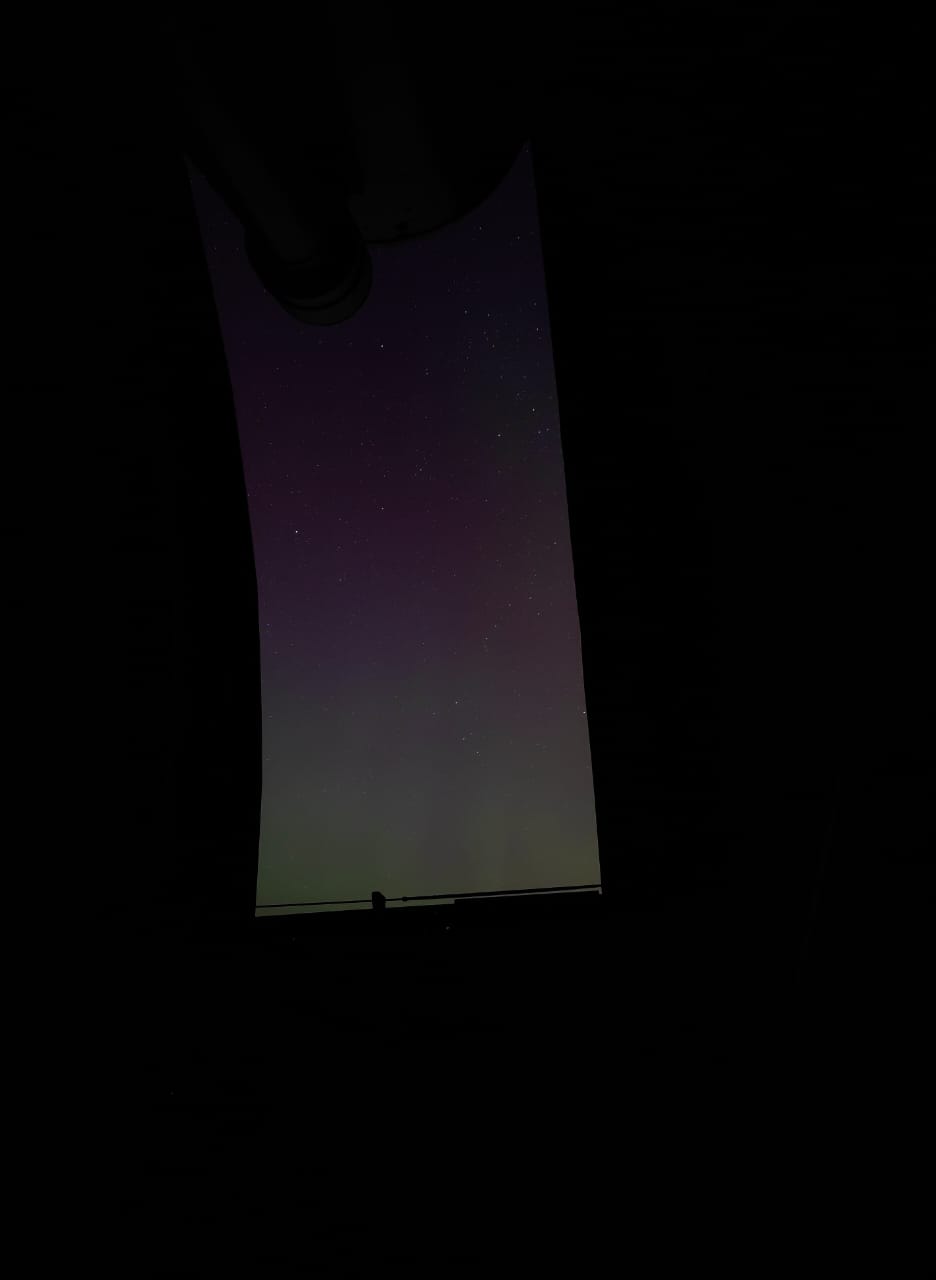
When there were no more traces of snow, and the dark nights started to dilute, it was time to return home. I really enjoyed seeing how the weather changed in those two months, and I am very thankful to all the people in the Department of Stellar Physics who welcomed me.
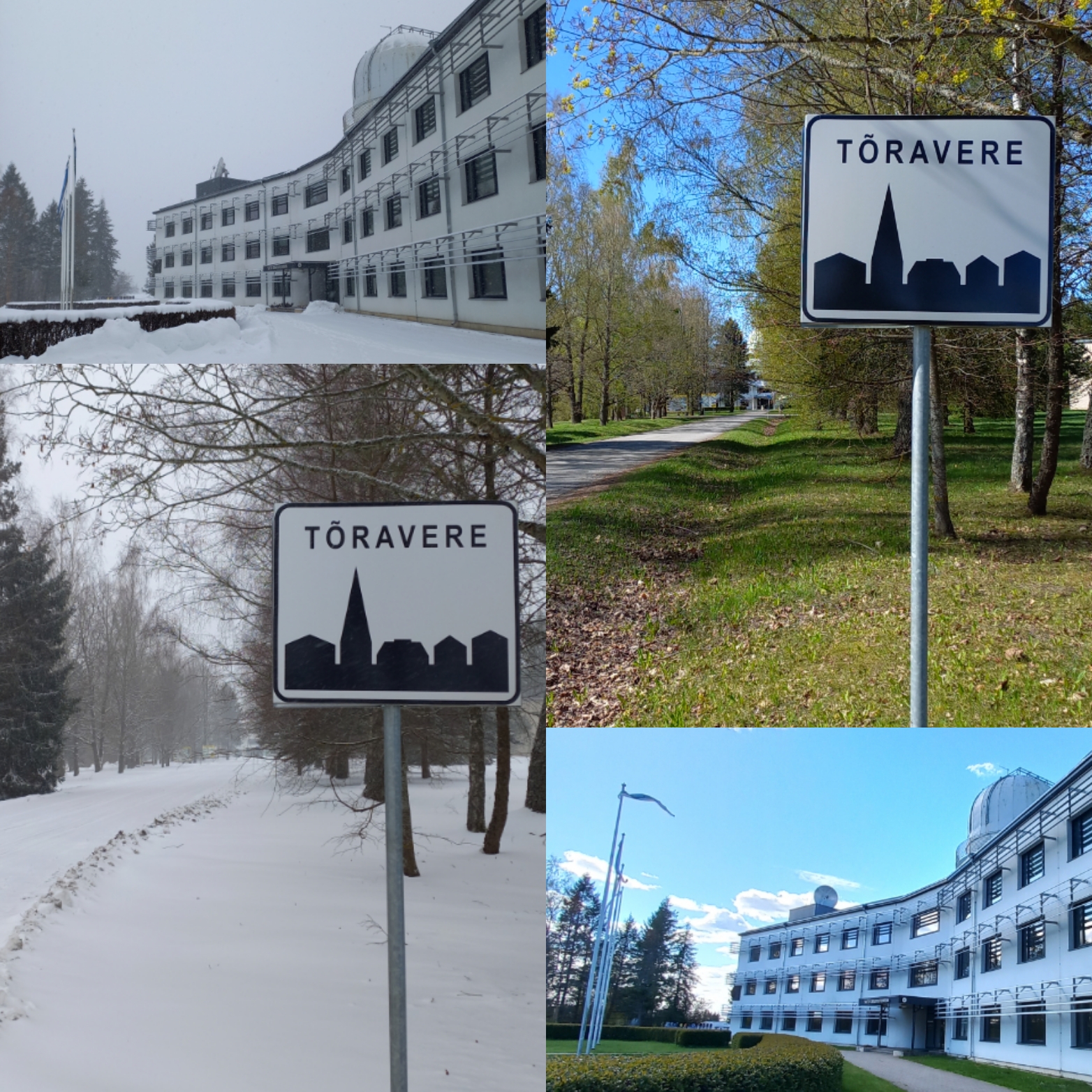
I was invited by Dr. Michaela Kraus to work for two months in Ondřejov. During this period, I worked on topics related to the molecular environment of symbiotic systems and B[e] stars, and also on photospheric CO absorption bands.
Firstly, I analyzed a high-resolution infrared spectrum (R∼45 000) of the symbiotic star BI Cru. The aim of the project is to model the CO emission in the H- and K-band, using the code developed by Michaela Kraus to derive physical parameters of the circumstellar disk such as density and temperature, as well as information on its kinematics.
On the other hand, this secondment was really enriching since it prompted the study in the H-band of nine symbiotic systems, eight of which had already been previously analyzed in the K-band with SOAR/OSIRIS (R∼3000). This process was completed thanks to the link Michaela Kraus created with Michalis Kourniotis’s work. Using synthetic spectra generated with MARCS model atmospheres, I estimated the effective temperature and performed a spectral classification for the cool companion of the symbiotic star. All this work has been written into an article submitted to the journal Galaxies for publication in the Special Issue: Theory and Observation of Active B-Type Stars.
Apart from this, I attended the monthly Journal Club in Ondřejov and the Seminar in the Stellar Physics Department. Also, I gave a talk about the work I have been doing with Dr. Lydia Cidale, titled “Resolving HD327083”, at the same seminar.

Regarding the experience of living two winter months in Ondřejov, I had only one concern: not to slip on the snowy roads! But every time that concern appeared, it was quickly dismissed. I really enjoyed walking up the road on the hill to get to the Institute, with the only accompanist the wind singing through the trees or the sound of my footsteps on the snow. Every day, walking through the deep silence of the forest brought this phrase in my mind: "Enjoy the silence", just like the name of the song... so I can sum up my stay in Ondřejov as a “Depeche Mode Experience”.
Here I leave some photos that I took, where you can see the beauty of the landscape and imagine the soft sound of the wind.
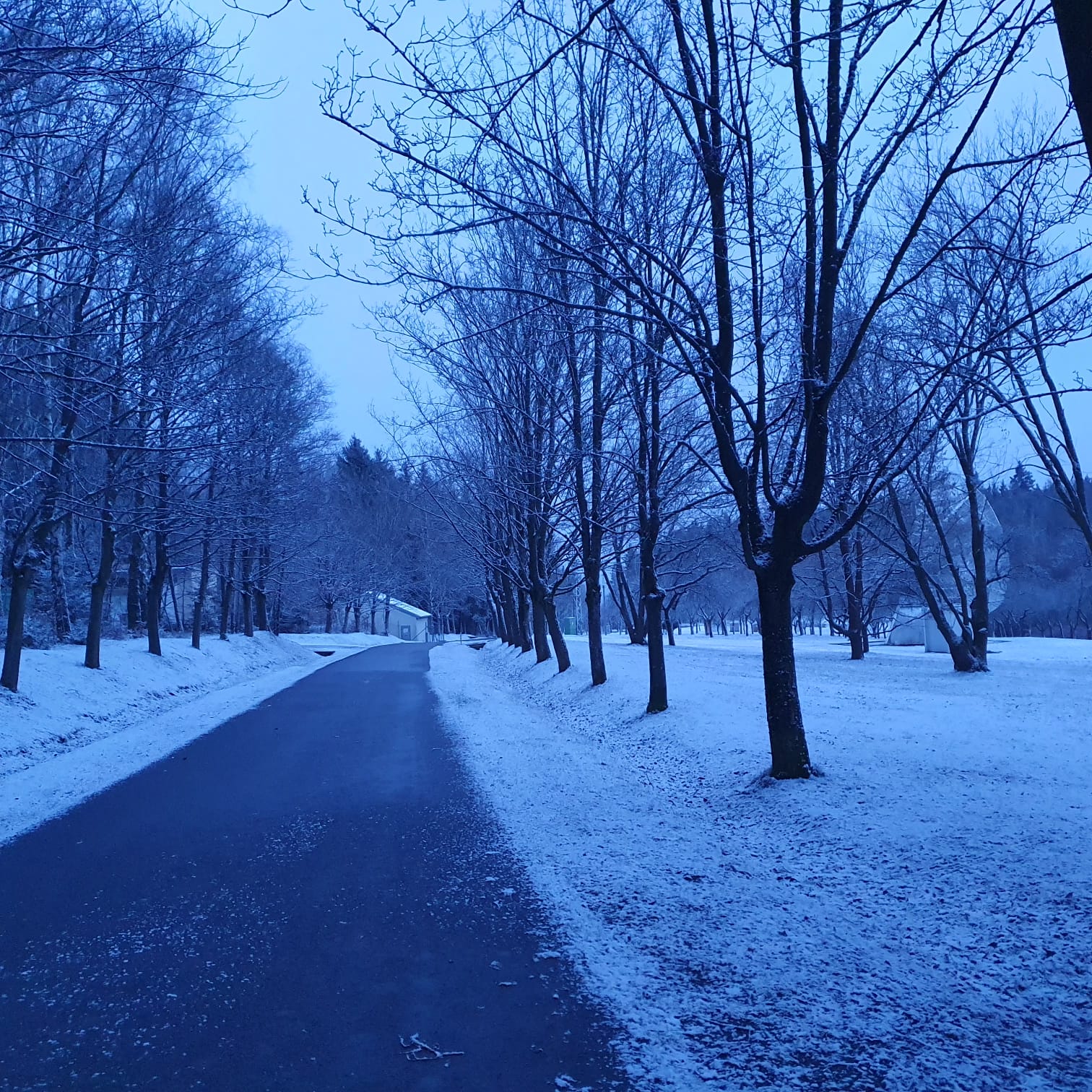
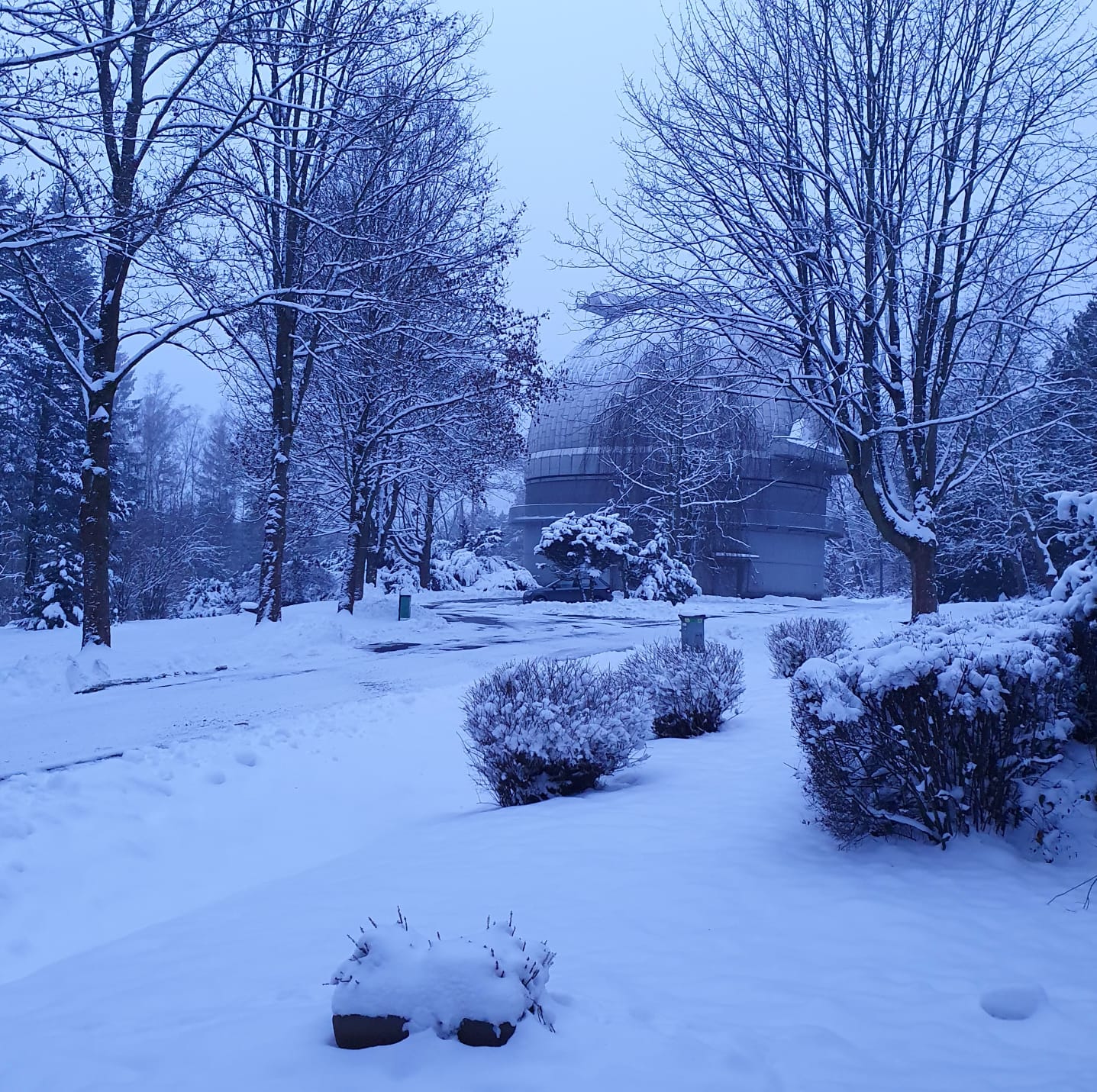
As I mentioned before, my stay in Ondřejov was enjoyable and very productive. I want to thank all the members of the Stellar Department, especially Michaela Kraus and Tiina Liimets, who organized my arrival at the Institute with great warmth. I would also like to thank Mauricio Cabezas, who shared his office with me, for his kindness and camaraderie.
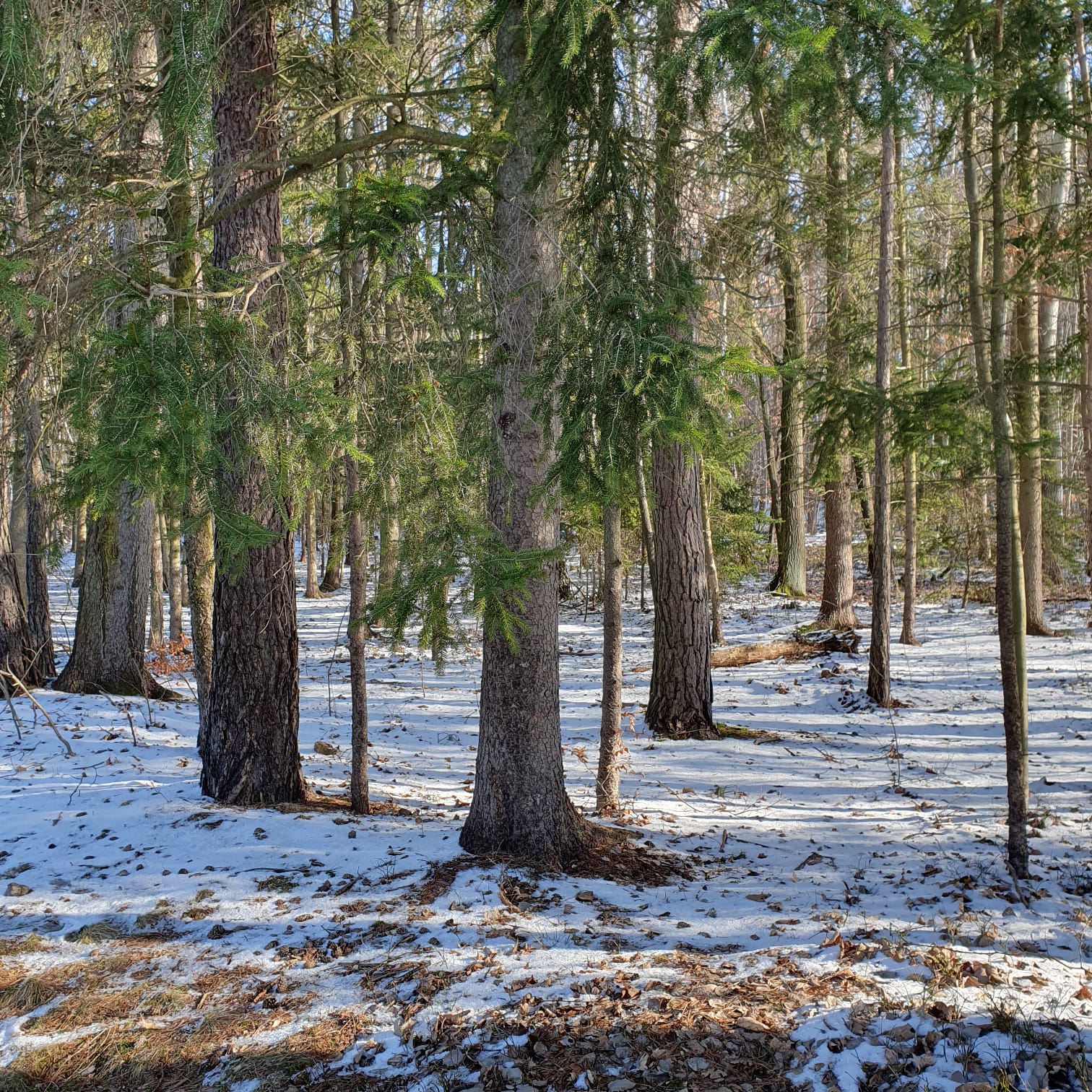
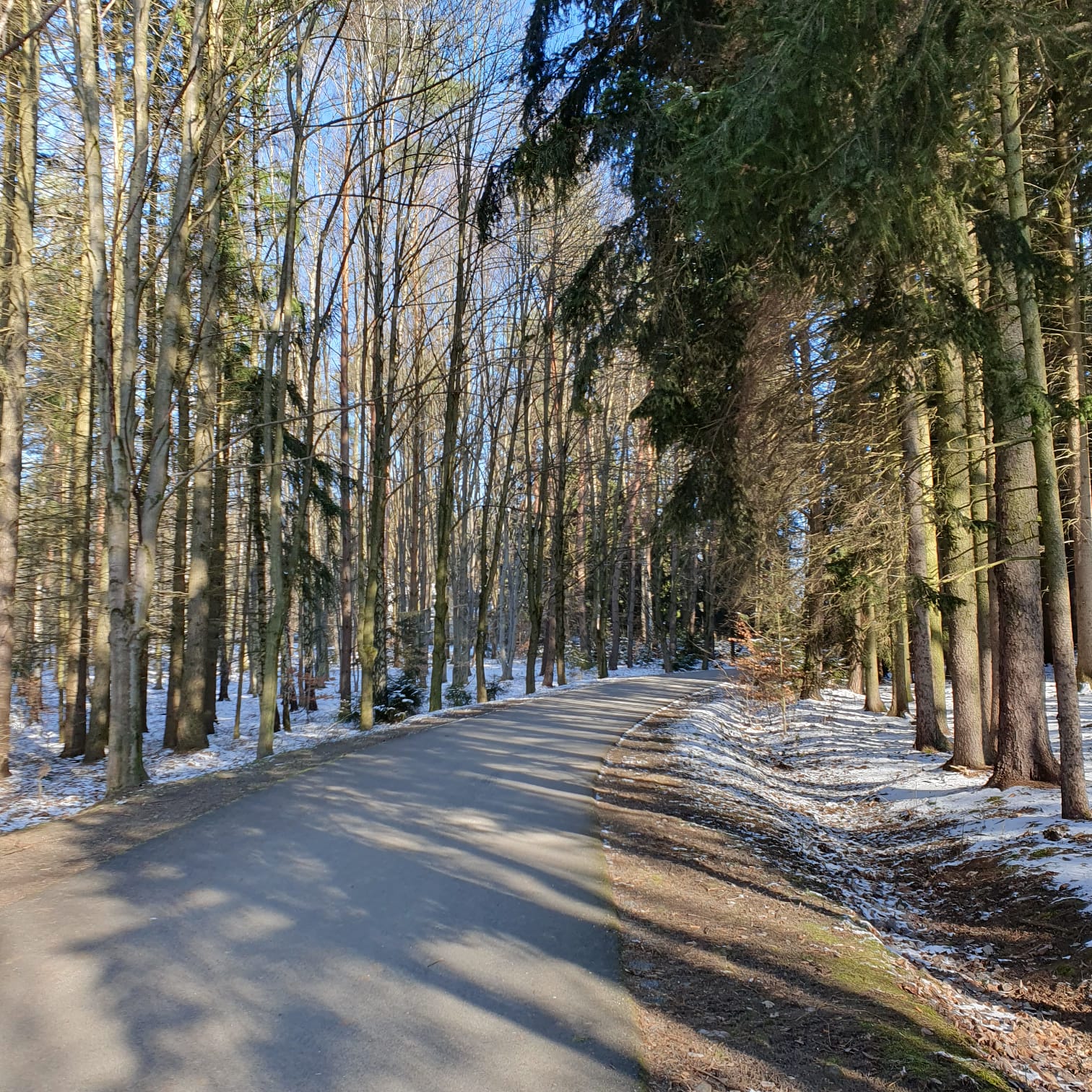
I stayed in Ondrejov for two months. During this period, I worked on topics related to the database ISOSCELES (Grid of stellar atmosphere and hydrodynamic models for massive stars), the first grid of synthetic data for massive stars that involve both the m-CAK hydrodynamics (instead of the generally used beta-law) and the NLTE radiative transport. Currently, we use this grid to derive the physical parameters from massive stars.
These topics are mainly:
I also participated in the monthly journal clubs, one in Prague and the other in Ondrejov (where I presented a paper). In addition, I gave a talk about my research titled “Massive stars and their hydrodynamic wind regimes” at the seminar at the Stellar Department


I had a wonderful stay in Ondrejov. I remember arriving at night with very heavy rain, and in the morning, I woke up with a beautiful view; everything was snowy. Also, I will always remember the fantastic sunsets from my window.



I tried every day a variety of Czech dishes at the canteen. Moreover, I attended the Institute's Christmas lunch and the Stellar Department's Christmas party. Also, I spent New Year's Eve in Ondrejov with people from the POEMS team. It was a fantastic night. First, we met at Dr Tiina Liimets’ home, and then we saw the fireworks near the old radiotelescope.
Overall, my stay was enjoyable. I want to thank every Stellar Department member, especially Dr Michaela Kraus, who organised my arrival and every aspect of my visit. I would also like to thank Dr Tiina Liimets, who shared her office with me.
During my stay at La Plata National University, I worked mainly with Dr. Lydia Cidale and Dr. Yanina Cochetti on two different projects involving B supergiant stars. The first project is a collaboration with Dr. Peter Nemeth from ASU, Matías Ruíz Díaz from La Plata National University and Dr. Elisson Saldanha da Gama de Almeida from the University of Valparaíso in which we combine the analysis of the spectra with CMFGEN and TESS light curves with numerical simulations of the evolution, internal structure and oscillation of B supergiant stars at different evolutionary stages to explore the physical parameters involved in the evolution of these objects. For this project, I had constant scientific discussions with Dr. Cidale with whom we analyzed and interpreted the frequencies derived from the TESS light curves with different methods (Fourier and Wavelet transforms) for a set of B supergiant stars. Additionally, I started a collaboration with Dr. Cochetti and Dr. Aidelman (from La Plata National University) to study stellar oscillations in several cluster members with the aim to detect and analyse a possible relationship between stellar oscillations and the Be phenomena for different cluster ages. We worked side-by-side with Dr. Cochetti developing scripts to download the target pixel file from TESS, creating the light curves and analysing the periodograms for every cluster. We expect to move forward in this project for my next secondment on April 2023.
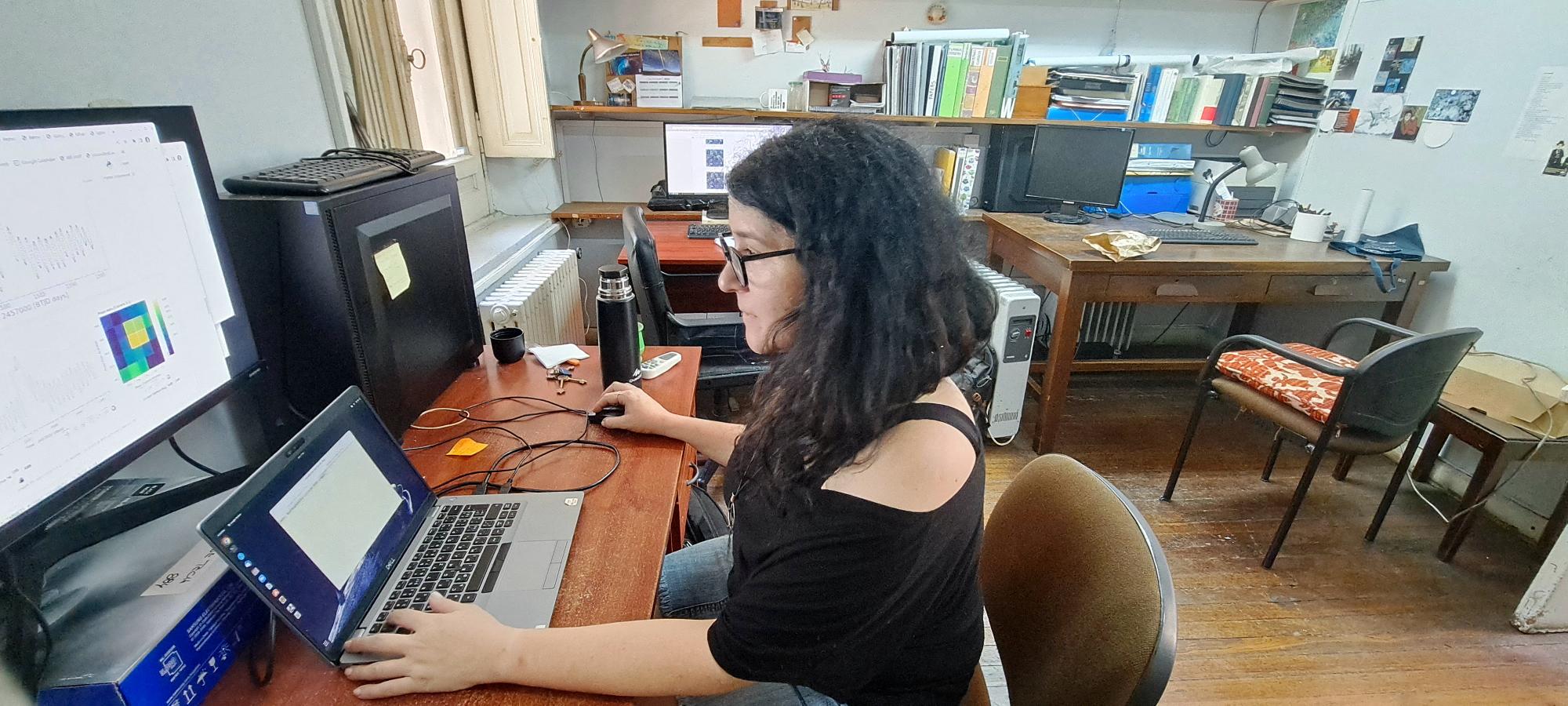
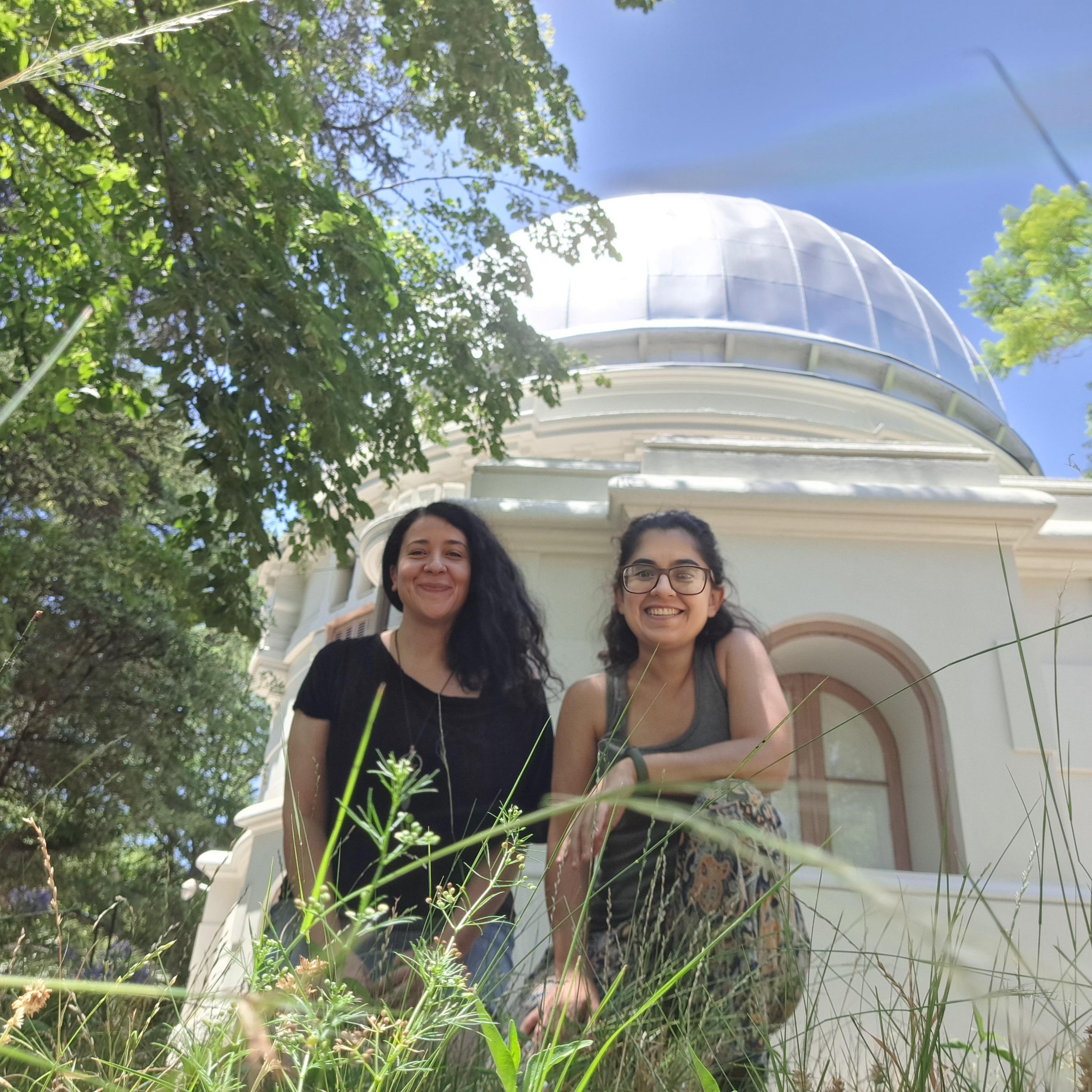
Additionally, I attended scheduled seminars organized by the Faculty of Astronomical and Geophysical Sciences and the on-line POEMS meeting. I participated, as well, in a workshop for Argentinean female astronomers living in different countries aimed to support, help and exchange experiences about living and working abroad.
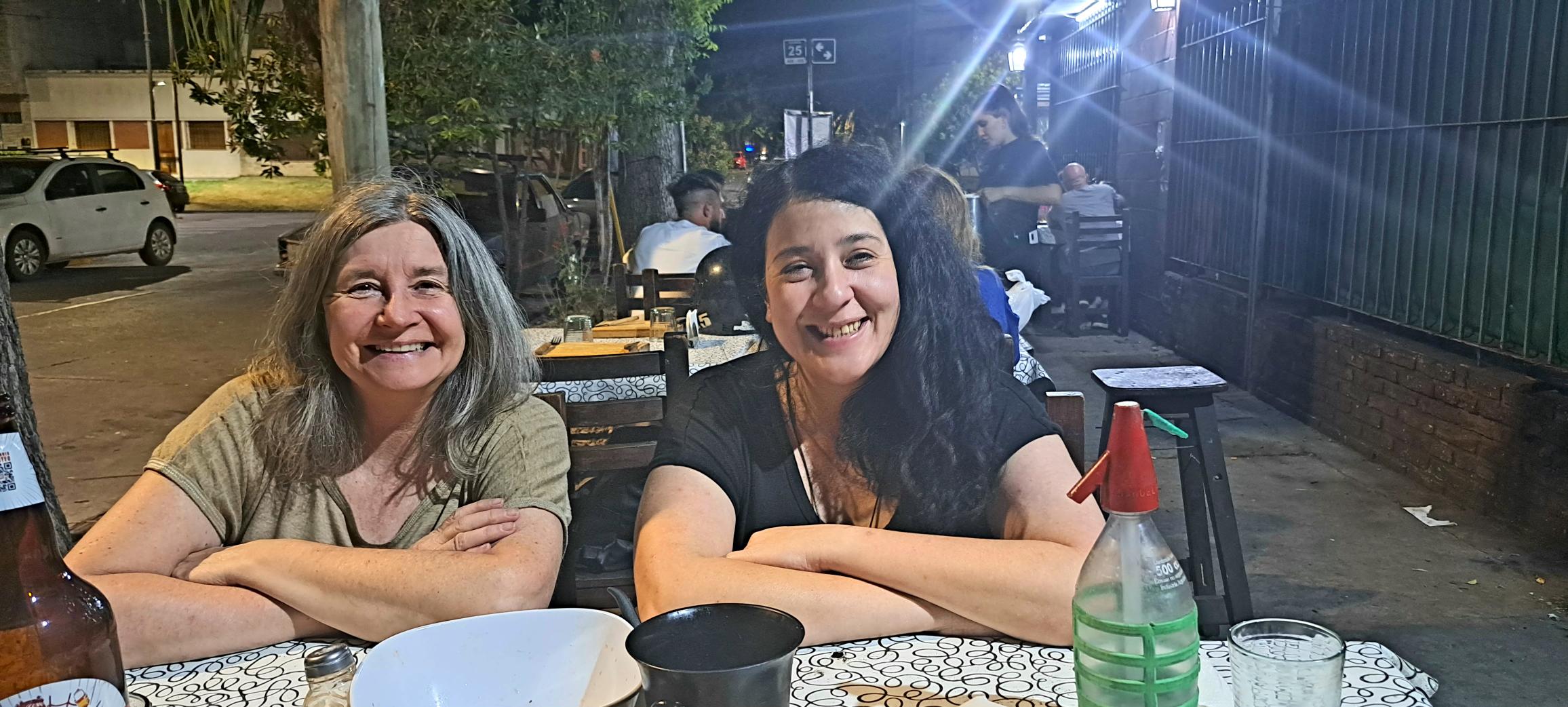
I’m really grateful for the warm welcome I received from my former colleagues. It was great to see them again after difficult times during the pandemic. I could enjoy the Argentinean food again and the happy atmosphere during the football world cup championship. Summarizing, it was fantastic and I’m looking forward to coming back soon!
On 31/10/2022 I started my 3-months stay in Göttingen. During my stay I worked at the Institute for Astrophysics of the Georg August Universität with Prof. Dr. Wolfgang Glatzel and my colleague Aldana Alberici Adam (also from UNLP and a member of the POEMS collaboration).

One of the main objectives of the visit was to learn about stellar pulsations, both their underlying physics and the best numerical methods to calculate the pulsation modes. To this end, Dr. Glatzel gave a series of lectures, a more detailed and extensive version of the lectures he presented in La Plata, Argentina, during the Pulsations Along the Stellar Evolution School organized by POEMS in 2019. In parallel to these classes we analyzed the theoretical pulsation modes of a set of supergiant B stars that have light curves observed by Transiting Exoplanet Survey Satellite (TESS) and for which we have a vast collection of spectra, in order to compare the observed photometric and spectroscopic variability with the latest calculated models. Unfortunately, 3 months were not enough time to develop a robust and reliable strategy to carry out this plan, but we will soon have the first results.
Few days before the end of my secondment I observed (in remote mode) the spectra of about 10 blue supergiant B stars during 5 nights from 20/01/2023 to 25/01/2023 with the 2.15 m telescope Jorge Sahade located at the CASLEO observatory in Argentina. Some of those stars have been observed in the same period by TESS so we will have simultaneous light curves to our spectra.
During that time I got to know a lot about Germany, its culture, its forests and its history. I visited several cities such as Berlin, Hamburg, Munich, etc., its museums, cathedrals and squares, enjoying its landscapes and its food.



On 27/01/2023 I said goodbye to Germany and Europe. It was an amazing experience and I’m looking forward to applying all the knowledge I acquired.
My stay in Göttingen (Germany) was 3 months. During that time I was able to work with Dr. Wolfgang Glatzel at the Institute of Astrophysics of the Georg-August-University of Göttingen.
The main purpose of my visit was to train me in the theory of stellar pulsations. During the months of November and December 2022, I attended with my colleague Matías Ruíz Díaz (who is also part of the POEMS group) to the theoretical classes given by Prof. Glatzel. He explained us the theory behind his code for modeling stellar pulsations and we saw practical examples of how to interpret his results. In January I started working with Dr. Glatzel on the modeling of a group of supergiant B stars, looking for non-adiabatic linear pulsations. The purpose of this work is to compare the theoretical results obtained from the models with the results from a photometric periodicity analysis to determine periods and quasi-periods, which could be associated with pulsation and/or binary phenomena. For this, light curves obtained by TESS and analysis tools such as the WaveletComp and Period04 packages were used. In addition, the theoretical pulsation modes will be compared with the observationally detected frequencies, which will allow us to estimate a theoretical mass for these stars. In the future, we will be able to compare the theoretical mass with the mass derived from photometric or spectroscopic techniques in order to discuss the mass discrepancy problem. The results of this work will be published in an article called "Variability in B-type supergiant stars: theoretical and photometric analysis for period detection", with the collaboration of Dr. Lydia Cidale and Dr. Alejandra Christen.

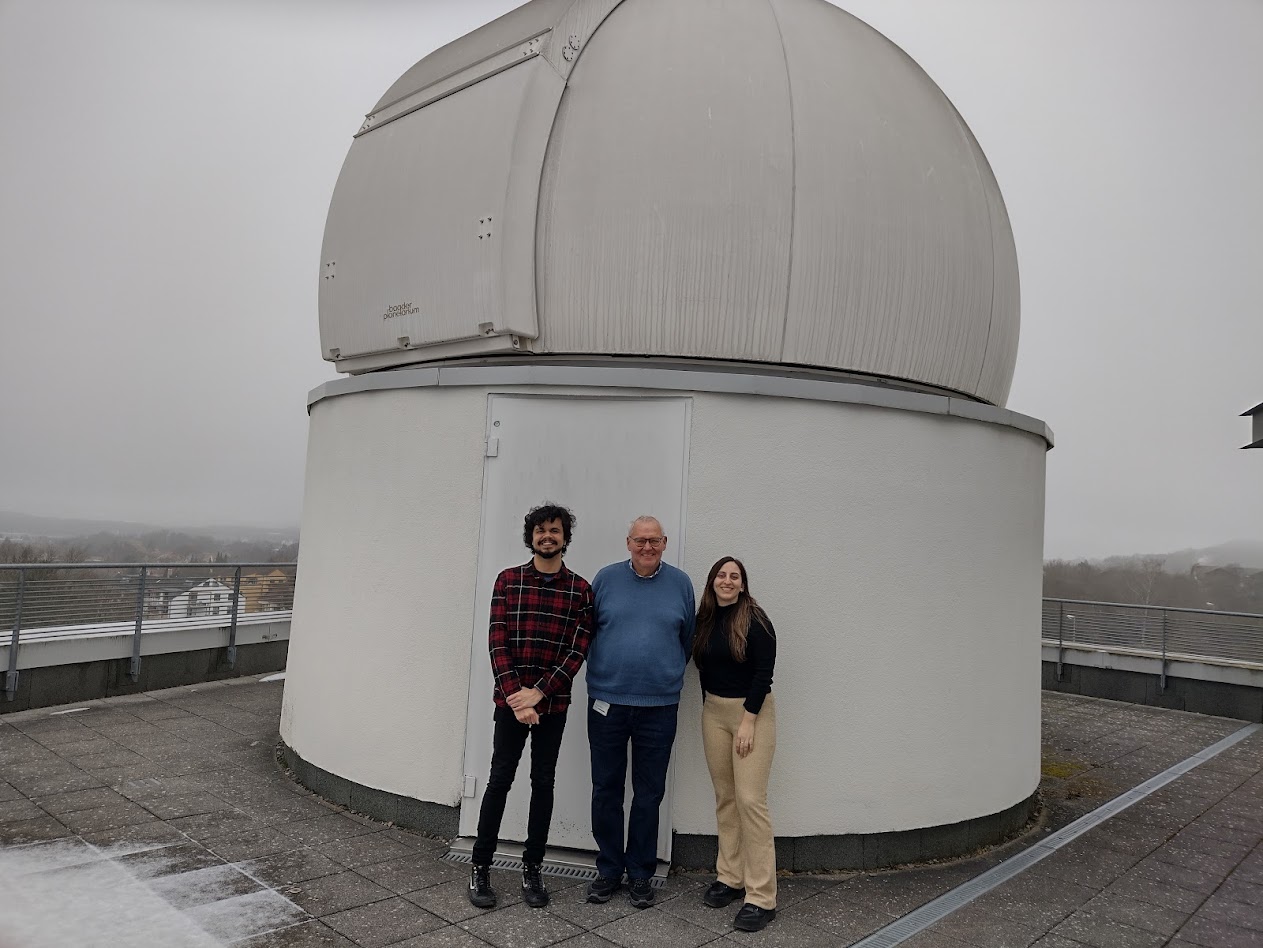
Also during my stay I was working on a paper called "Design of synthetic light curves of pulsating binary stars to compare the efficiency in the detection of periodicities" together with Dr. Lydia Cidale, Dr. Alejandra Christen and a colleague from the University of Valparaíso, Gunther Avila. In this paper we propose a simulation design of pulsating binary stars to study how the different simulated phenomena are reproduced in a scalogram, using wavelet analysis, and in a Fourier periodogram. This paper is about to be submitted to the journal Galaxies.
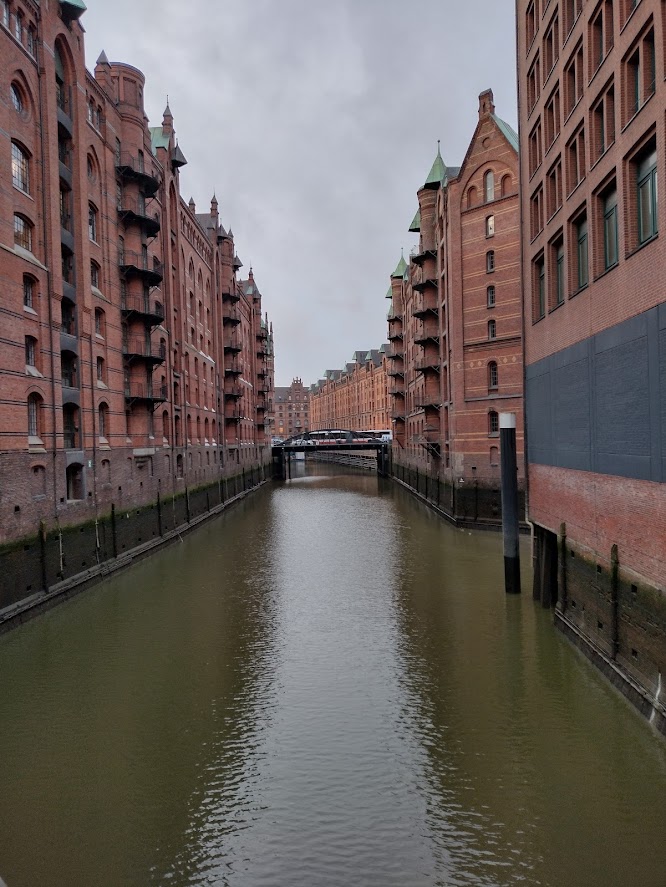

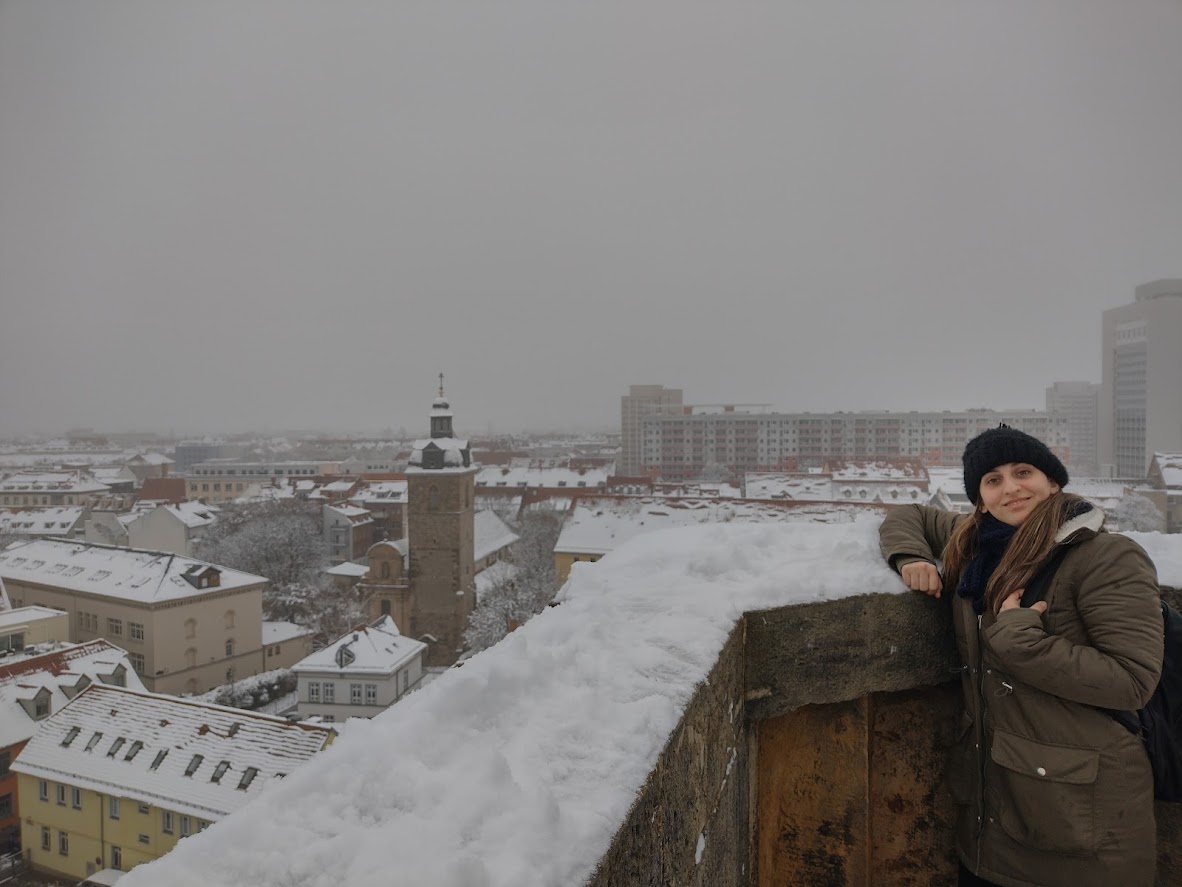
During the weekends I was able to visit different cities in Germany, such as Hamburg, Berlin, Munich, and Erfurt. My experience during this stay was great! It was my first time in Europe and I improved my English level a lot. Germany is a very beautiful country and the people are very friendly. I want to thank the POEMS project for allowing me to do this training, especially Dr. Wolfgang Glatzel, for his patience and kindness all the time. I also want to thank the people I met at the Institute during this visit, who made my stay so much warmer. I hope to see you all again!
I visited Valparaiso for a two-month secondment to learn about a variety of tools used in quantitative massive star spectroscopy. The main aim of my visit was to develop a wrapper code for the CMFGEN model atmosphere program and apply wind models in an existing iterative spectral fitting procedure. This task was performed under the supervision of Prof. Michel Curé and I worked closely together with Dr. Elisson de Almeida. We were able to complete the task and at the end of my visit, we started a publication based on the results from the new method for 3 B-type supergiant stars.
Beyond the major work with CMFGEN, I have also learned about:
Once these codes will be applied concurrently, they will provide a deeper understanding of massive star atmospheres, and the details of mass loss, and offer a method to model massive stars self-consistently with a reduced number of free parameters.
I have given introductory classes and discussed some practicalities regarding the hydrostatic NLTE model atmosphere code Tlusty.
The Institute for Astrophysics of the University of Valparaíso (UV) is also hosting strong research on evolved and compact stars. I had regular meetings with Dr. Maja Vuckovic and Larissa Amaral to discuss the current topics in hot subdwarf and white dwarf research.



Besides work the two-month stay allowed me to explore Valparaíso, Vina del Mar, and Concon. The bay has many historical and natural landmarks, as well as plenty of cultural events. The miradors of Valparaíso offer beautiful views over the Pacific, showing different colors every time one visits, and require just a short walk from the office.

Seeing the turn of the seasons from spring to summer, November was the best time to visit, when the entire town has dressed in flowers. The waves, grills, and cafes of Vina. The sand dunes of Concon and the uncountable number of hills and colorful homes of Valparaíso, the elevators, the ocean breeze, and the hospitality of the town and its residents are there to welcome visitors or secondees. I am looking forward to visiting again and continuing our collaboration.



When I arrived in Prague, I immediately left for Turnov to participate in the POEMS workshop from September 28 to October 4, 2022, to discuss new results and strategies to motivate more substantial collaboration with our POEMS team. My talk was about the different methods and problems for deriving stellar parameters. As a result of this meeting, interesting new topics emerged that are now pillars of our future work.

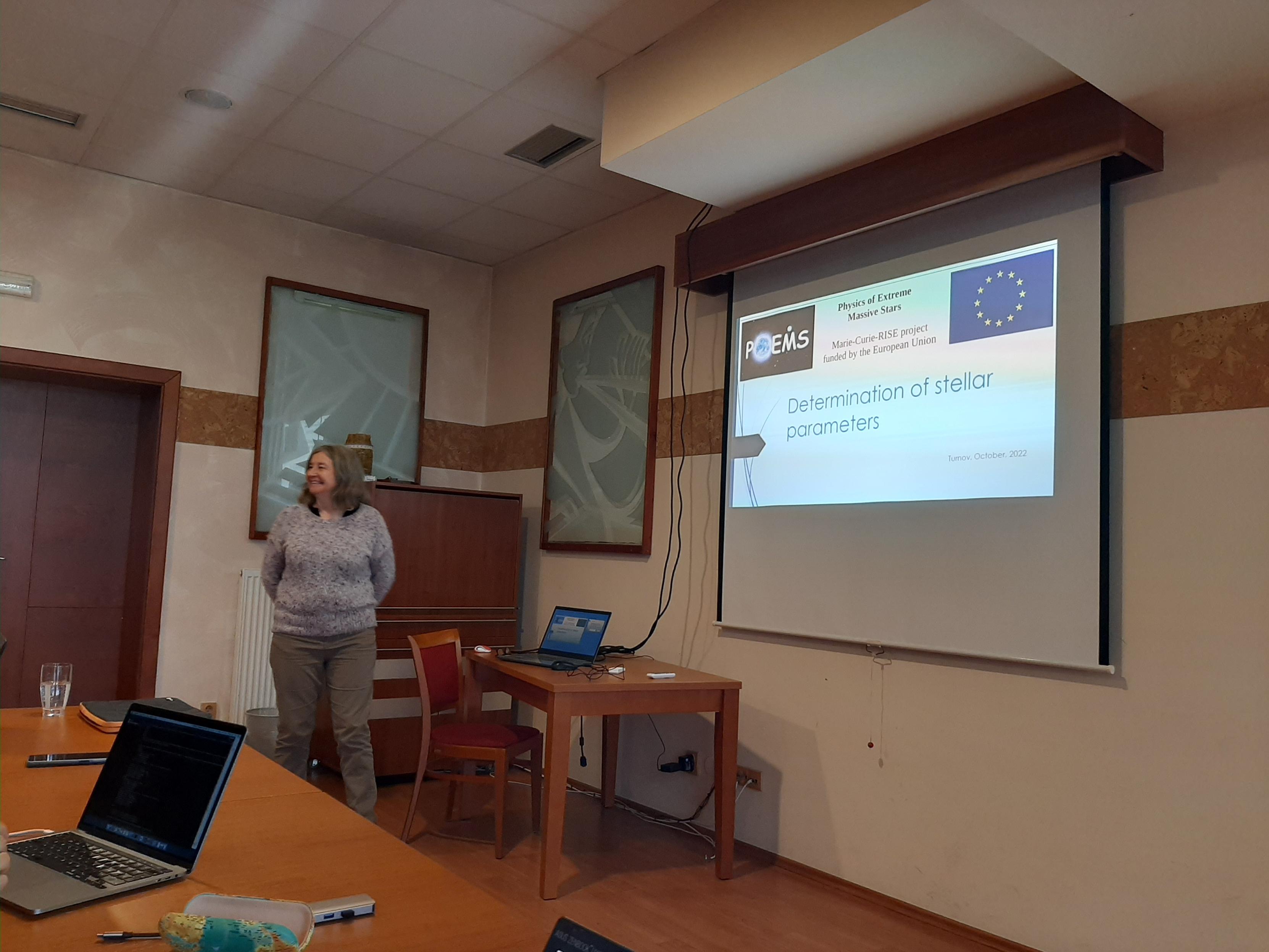
During my two-month visit to ASU, I could share and discuss methods, results and new developments with my colleagues and students. In addition, I worked closely with Dr Michaela Kraus on 55 Cyg. The IR lines of this object show spectroscopic oscillations on a different time scale. The perturbations show cycles of 11-12 days and 19-25 days; the latter is similar to that we found from optical data (22.5 days) taken between 2009 and 2013. From the NIR observations taken in 2015, we derived a higher mean mass-loss rate (almost by a factor of 2) than the one obtained in 2013. Interestingly, we also found that the profile shape of the Hu14 line sets constraints on the mass loss. In addition, we discovered the NIR Mg II doublet in emission, suggesting the presence of a circumstellar ring or shell. A second work deals with the evolutionary status of HD 327083. Our group obtained an orbital period of ~107 days and derived the orbital parameter of this star. We rule out the star is a B[e] supergiant, although it is a hot evolved object. With Dr Michaela Kraus, we rediscussed the CO fittings to our high-resolution spectra and the model parameters. I also discussed joint research work with Dr Catalina Arcos, Dr Julieta Sánchez Arias and the graduate students Lorena Mercanti, Matias Ruiz Diaz, and Natalia Machuca. We modelled spectra of the P Cygni star, the S73 supergiant, and other blue supergiants to find a link between the mass-loss rate and their pulsations. I also had exciting discussions with other team members and learned new codes and tricks.
I participated in the ASU regular seminar held in Ondrejov. On November 15, 2022, I gave my seminar talk entitled “The Zoo of Emission Line B-type Stars. Attempts to derive fundamental parameters and understand their wind properties” to disseminate our contributions on the BCD spectral classification systems and works for studying the IR spectra of the Be stars.On October 12, the Argentina Ambassador invited Matias and me to visit the Embassy in Prague. We were happy to share with them the scientific goals of our visit to ASU and our progress.

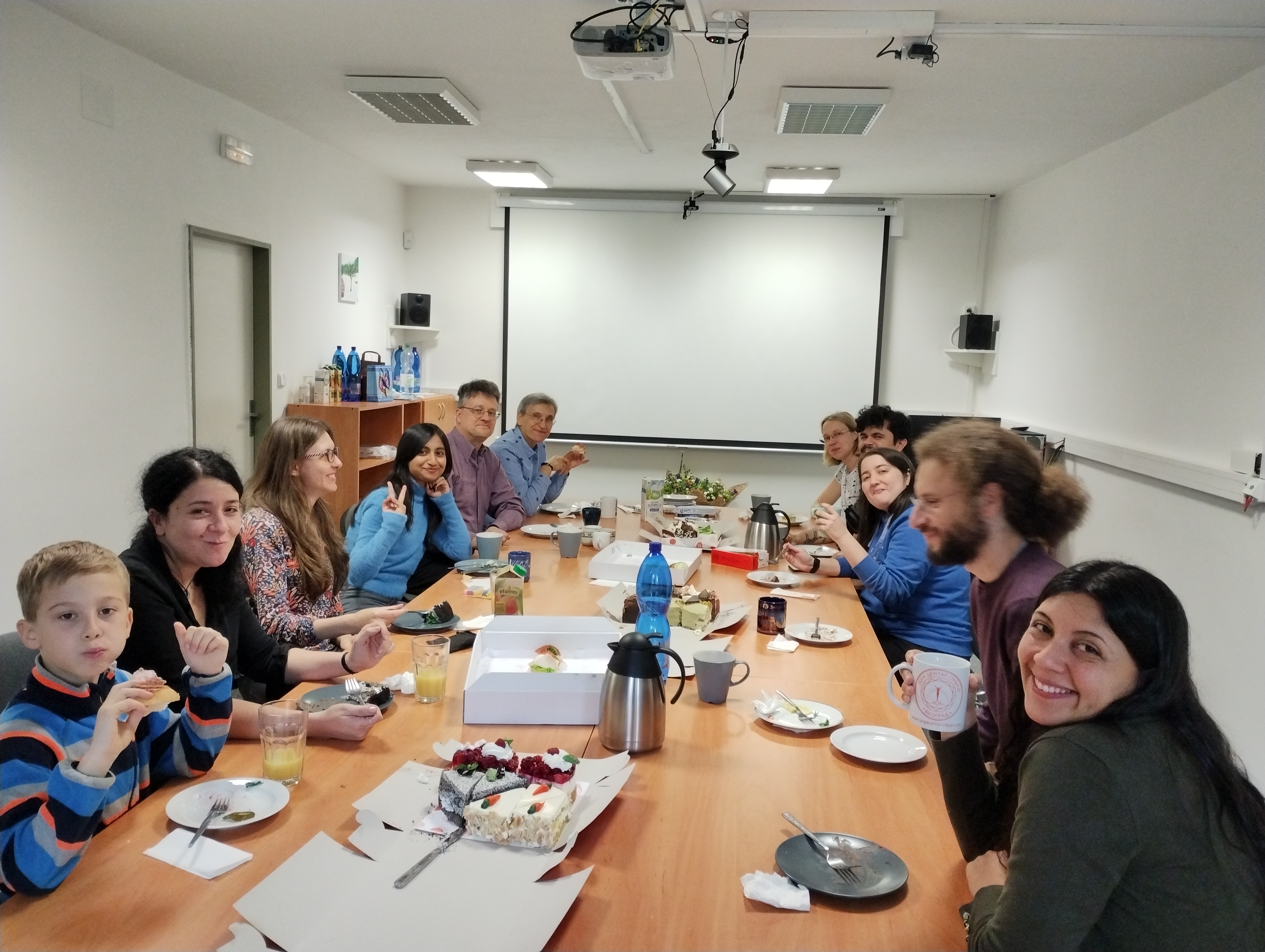
We had a good time at the “Pietro” Restaurant. Also, we celebrated many birthday parties and au revoir meetings with our colleagues, organizing picnics and grilled sausages in the forest.
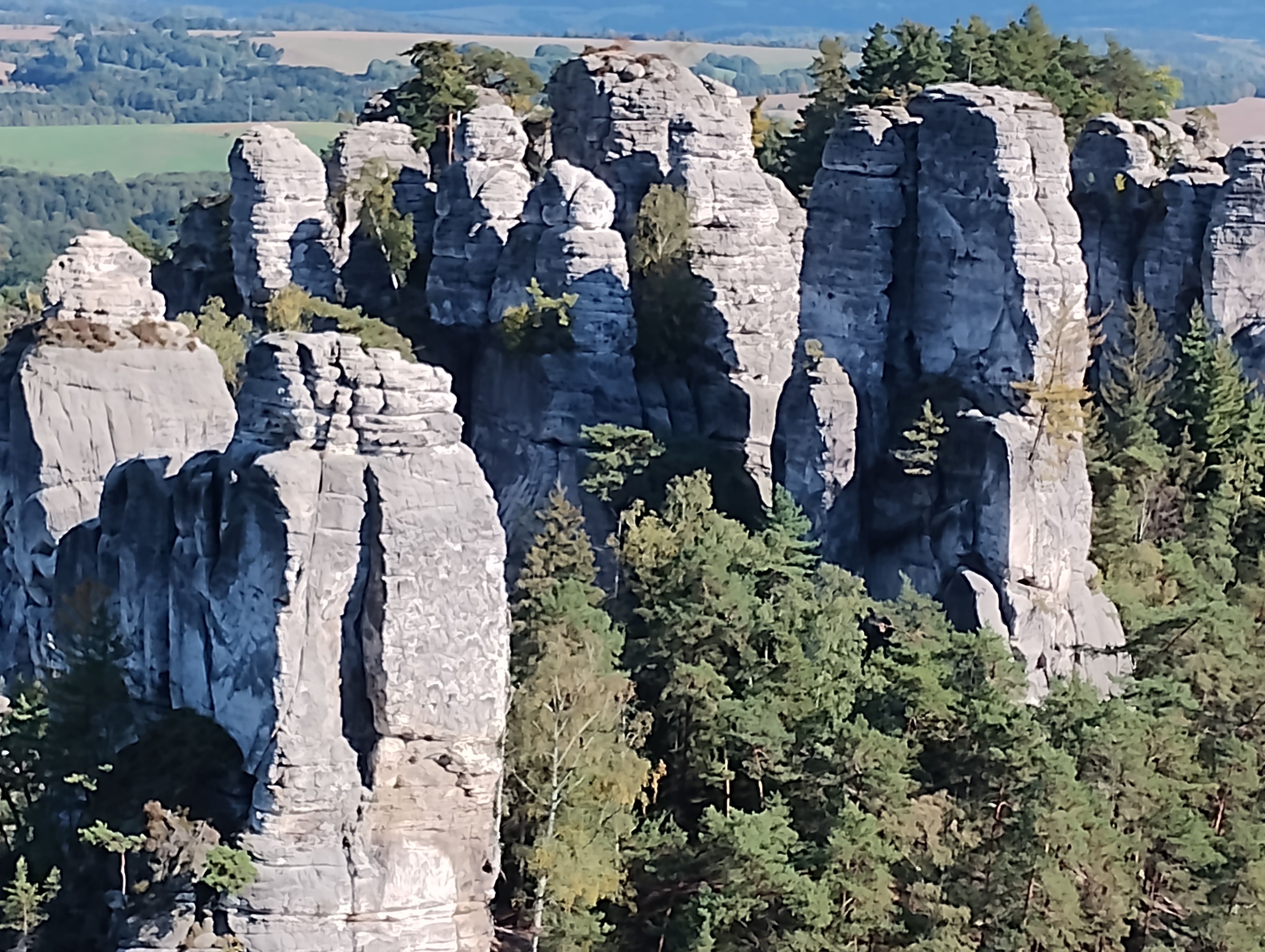
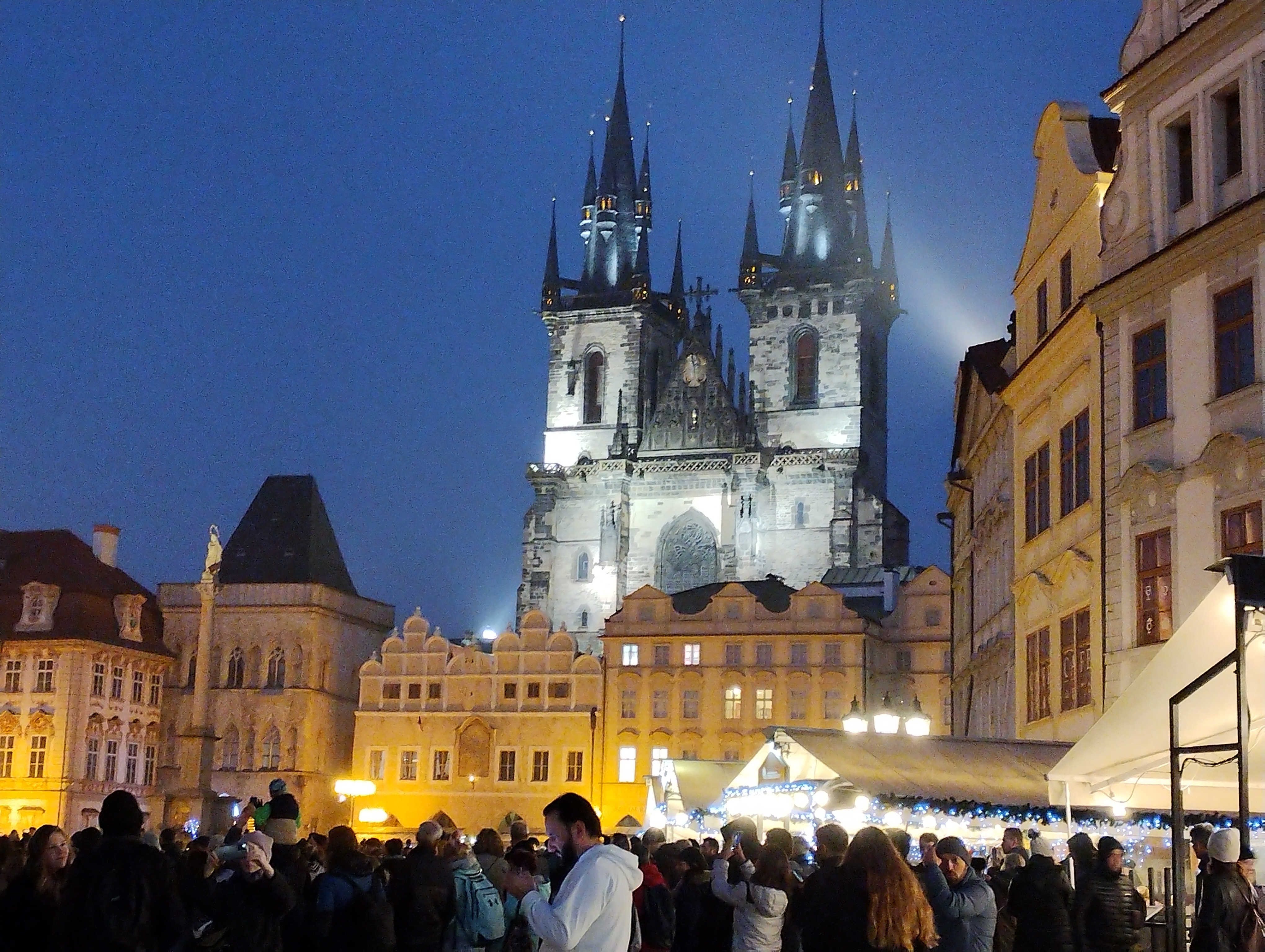
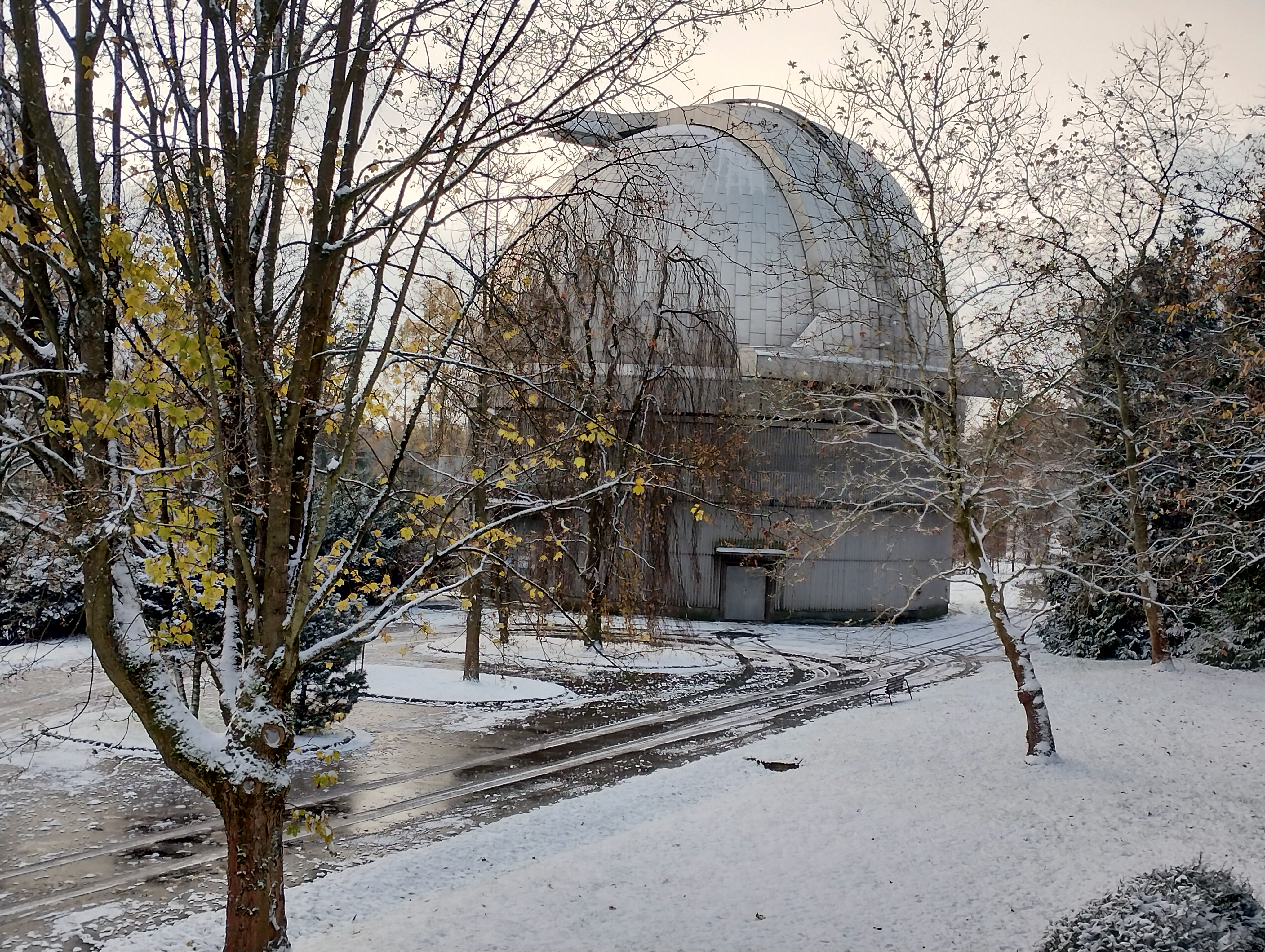
During the weekends, I visited the “Hrad Valdštejn”, the incredible Czech paradise in Turnov, the impressive Sedlec Ossuary in Kutná Hora, and the wonderful Prague city. In addition, I enjoyed the trekking activities around the ASU forest and the unexpected snow of mid-November that suddenly changed the landscape. I was delighted by this visit and happy to meet my dear colleagues again after the long pandemic. I thank the POEMS team for this fulfilling interaction and splendid time together.
In the first month of my scientific visit, I participated in spectrum reduction classes with IRAF on the example of spectra obtained with the 1.5 m telescope AZT-12 of the Tartu Observatory with a long-slit spectrograph in the Cassegrain focus, providing spectral resolution of R~100 to 12000. The classes were conducted 5 days a week under the guidance of the head of the Department of Stellar Physics, Associate Professor Anna Aret.
In the second month of my scientific visit, I engaged in IRAF reduction of spectra with Dr. Anna Aret and Tõnis Eenmäe obtained with the 2 m telescope of Shamakhy Astrophysical observatory by using a fibre echelle spectrograph ShAFES, in spectral range λ3700-9000Å, with spectral resolution R=28000 and R=56000.
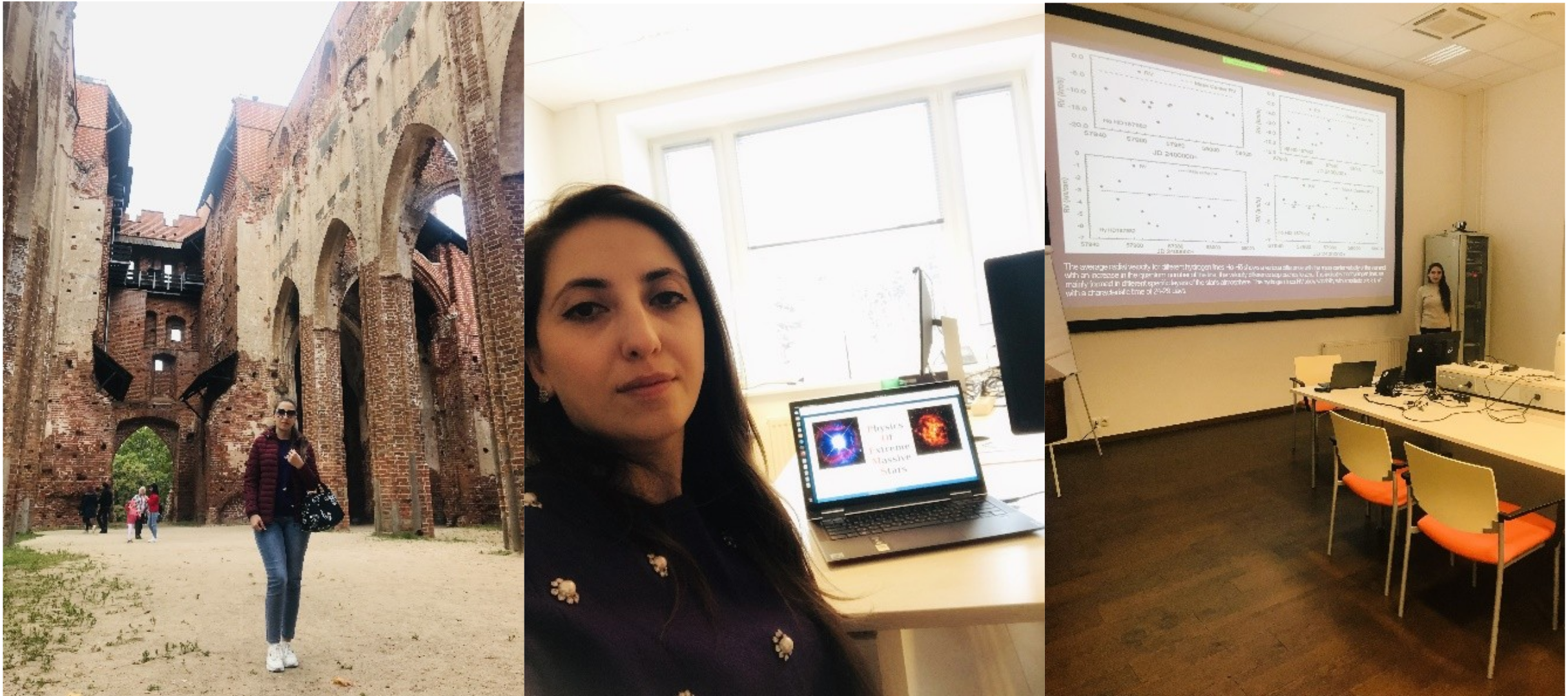
During my visit, I participated in scientific seminars and meetings of the Tartu Observatory. In particular, I had a seminar on "Non-stationary processes in supergiant stars of spectral class B and A" at the Tartu Observatory scientific seminar.
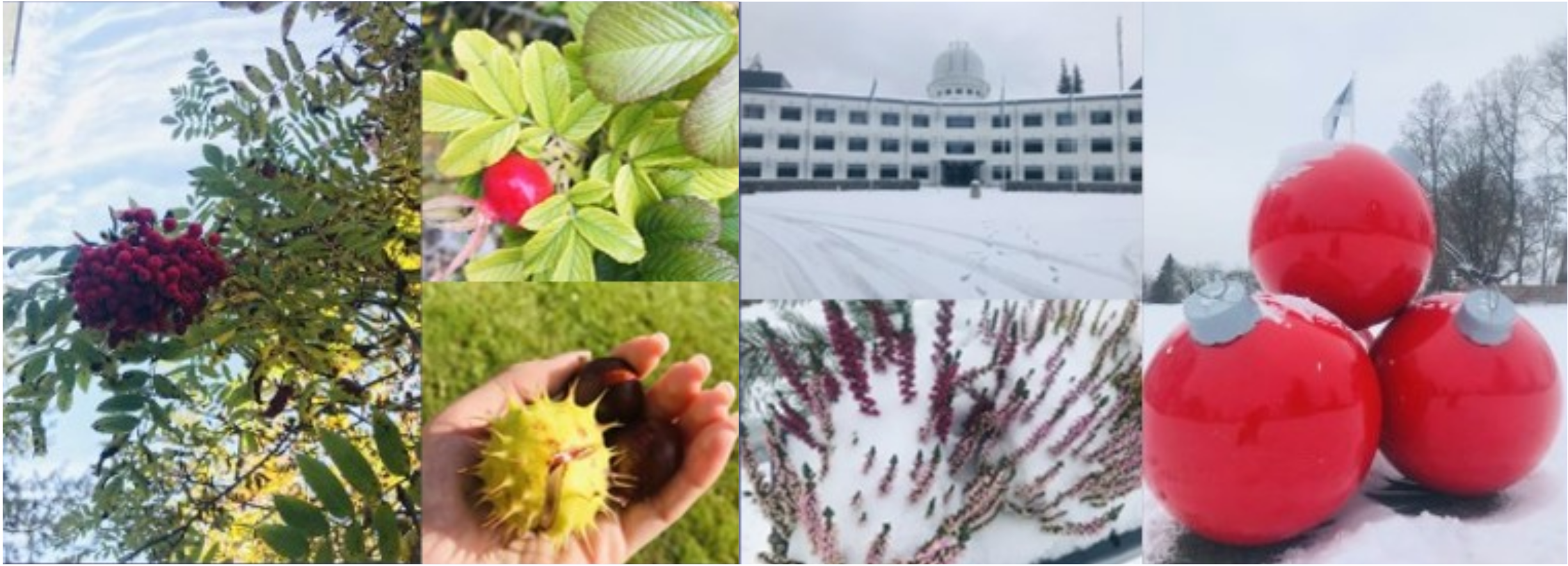
I can mention that my scientific mission was very successful thanks to the friendly and business-like staff of the Tartu Observatory, especially Dr. Anna Aret. I also enjoyed the peaceful nature of Tartu city, colorful autumn and snowy winter scenery.
During this exquisite visit, I worked modeling observational data of massive stars observed with FEROS spectrograph. I found their stellar and wind parameters using the synthetic spectrum that best fit the data. For this purpose, I used the ISOSCELES grid of models (hosted on the servers of the Universidad de Valparaíso) and the code I developed for my master thesis to find the hydrodynamical model that most resembles the observational data using a chi-square test.
I also attended scheduled seminars and the POEMS Workshop 2022, in Turnov, and contributed with the talk “Hydrodynamical solutions in spectral analysis”.
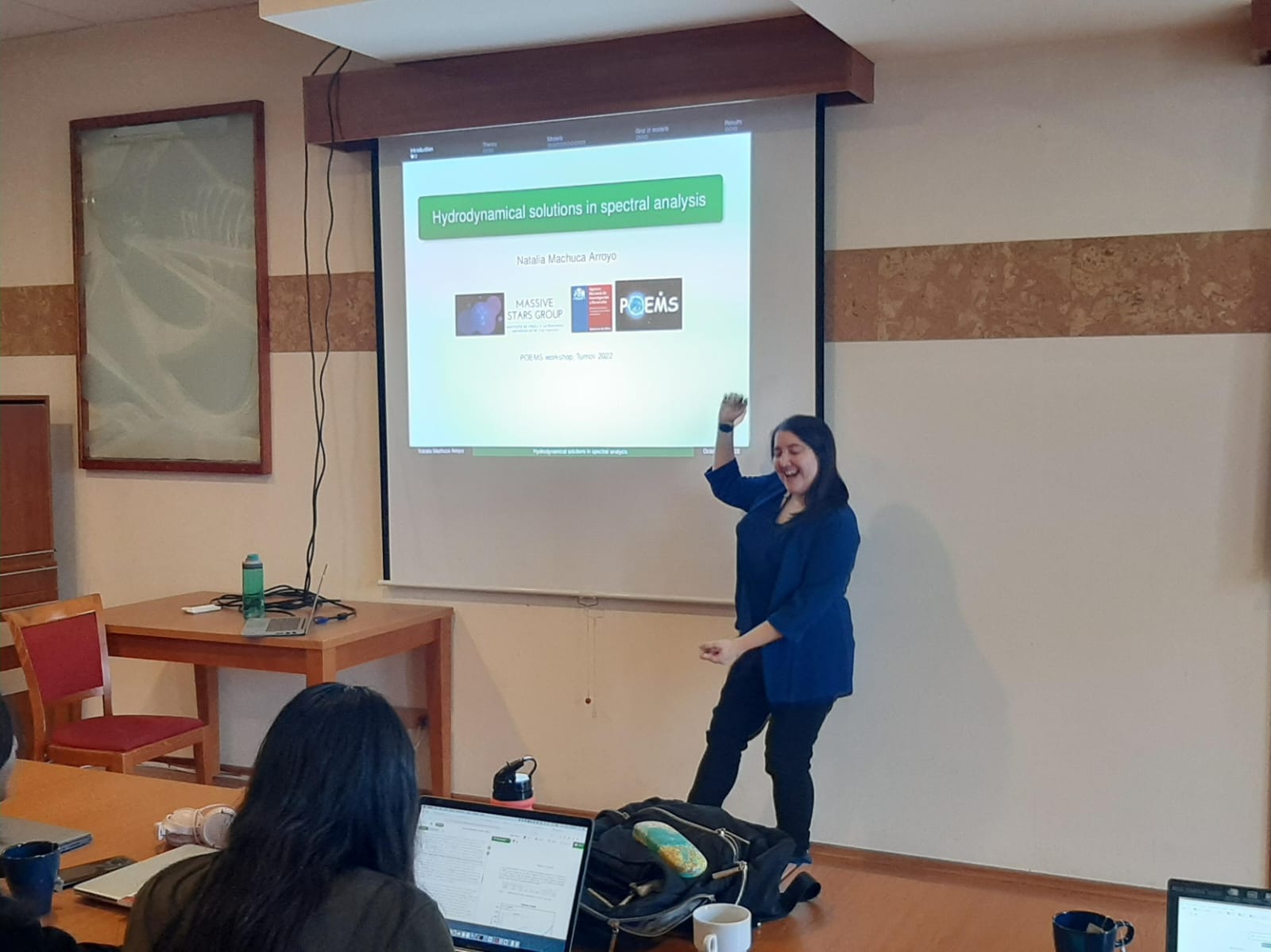
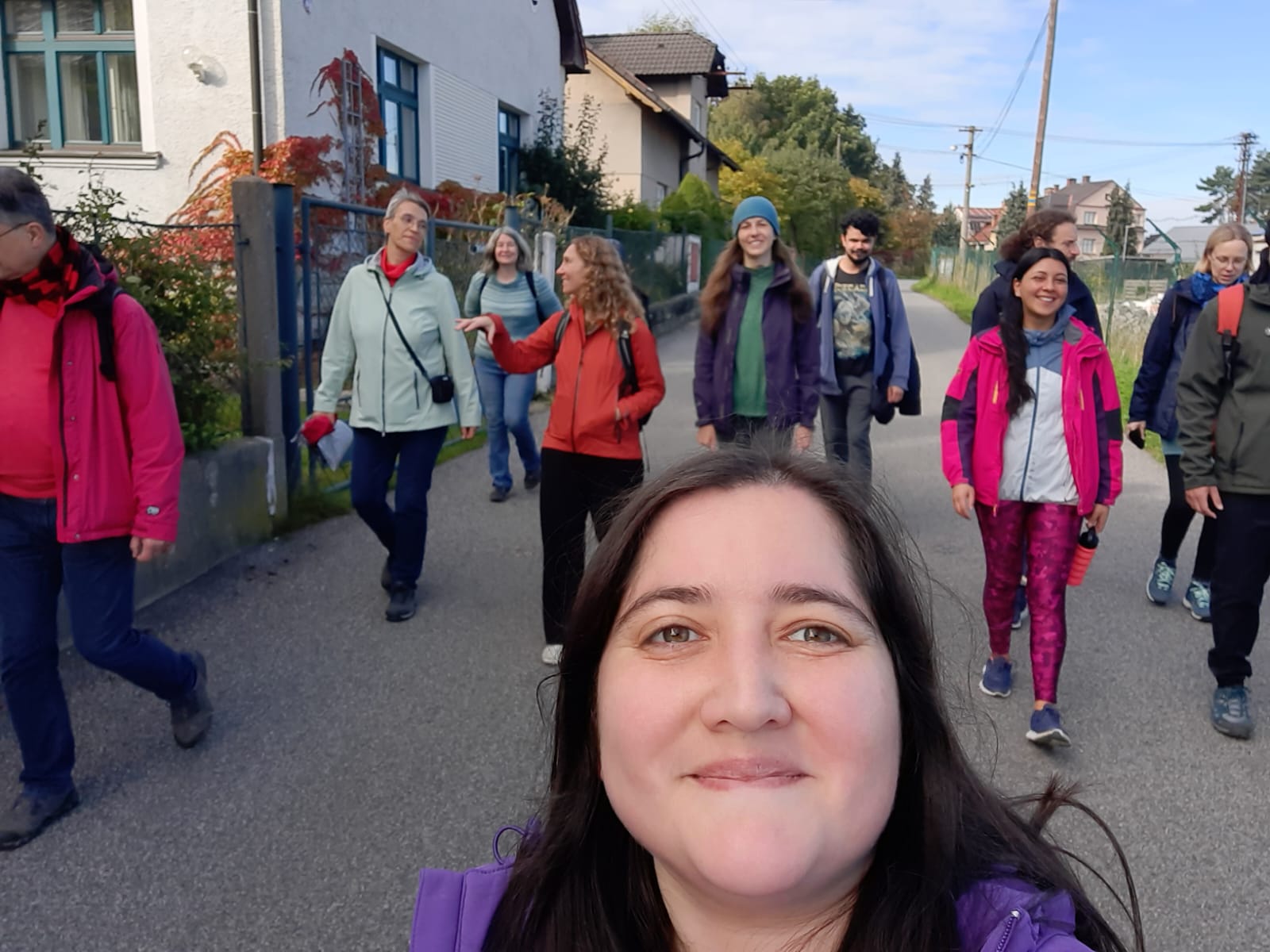
One of the most enriching opportunities was to learn from other visitors with whom I also collaborated and had the most enjoyable times. I worked with Professor Lydia Cidale in the study of a specific wind parameter; with the doctoral student Matias Ruiz, to study two stars observed with CASLEO; and with Lorena Mercanti, for the same purpose of finding models for the star P-Cyg observed in multiple epochs.
In the last week, I manage to write two programs to read Olya Maryeva's grid of synthetic models, created with CMFGEN code and hosted in ASU servers, and to compare these models with observational data. The code can find the model that best resembles the spectrum of a given star.
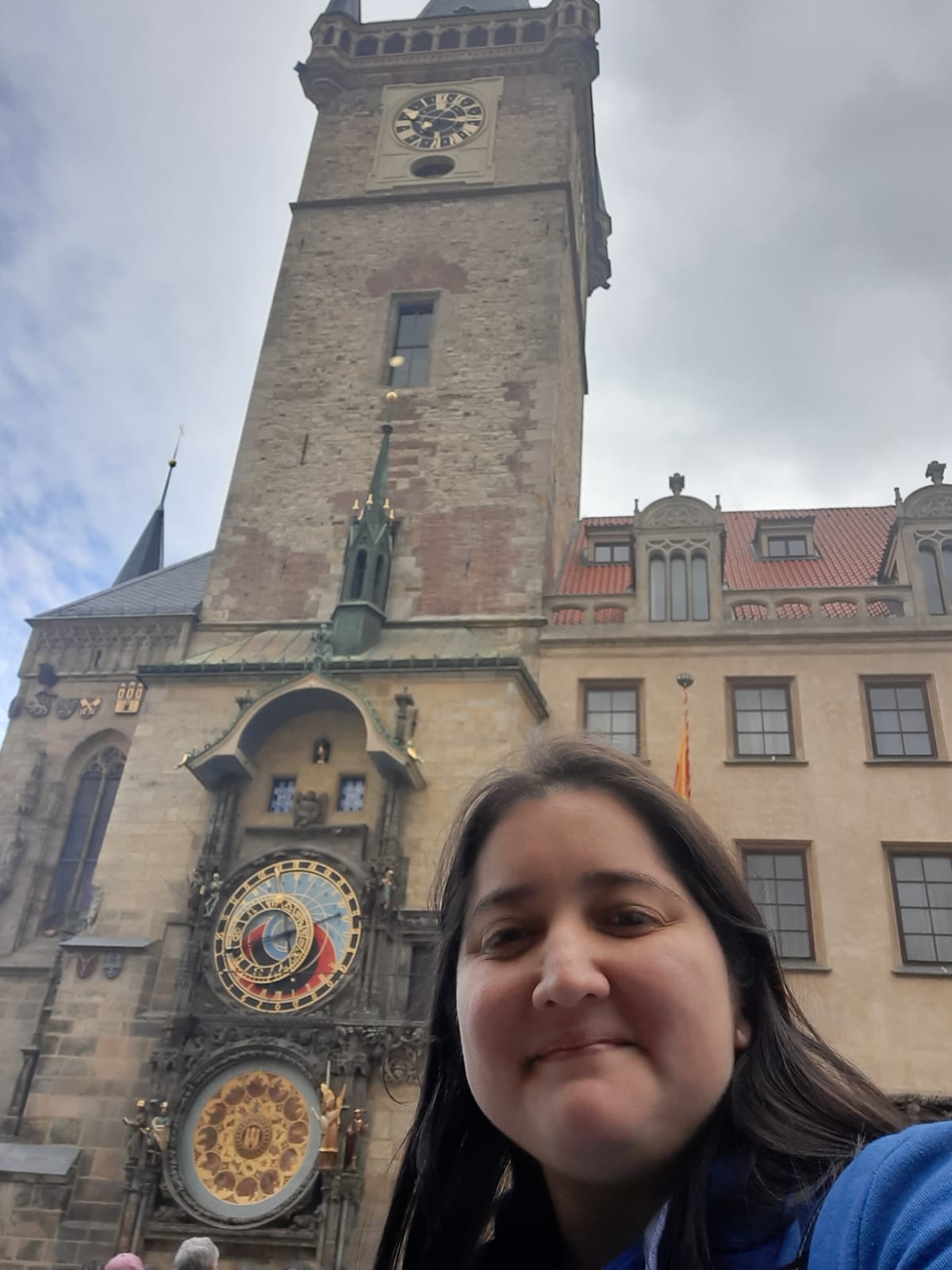
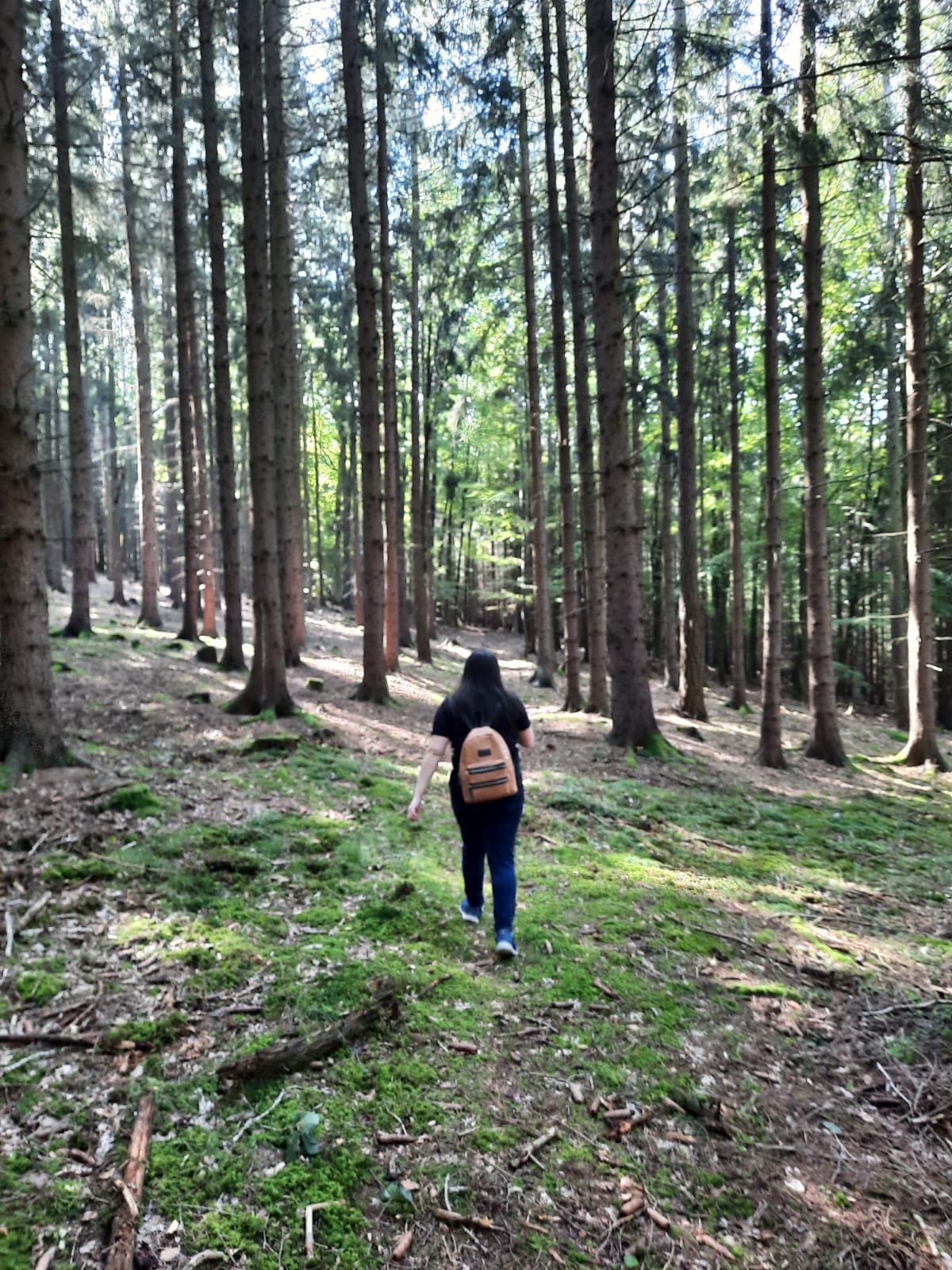
Finally, I had the opportunity to visit Prague, several times, and enjoy the beauty of this country in terms of nature and urbanism. I thank all my colleagues for making me part of this amazing group and for the amazing experience, I can't wait to come back!
During the first month, I worked with frames from photometric observations of the Cyg X-1 star. Since the second month, IRAF classes have been held five days a week under the leadership of Dr. Anna Aret. I had a seminar on my dissertation work during my visit.
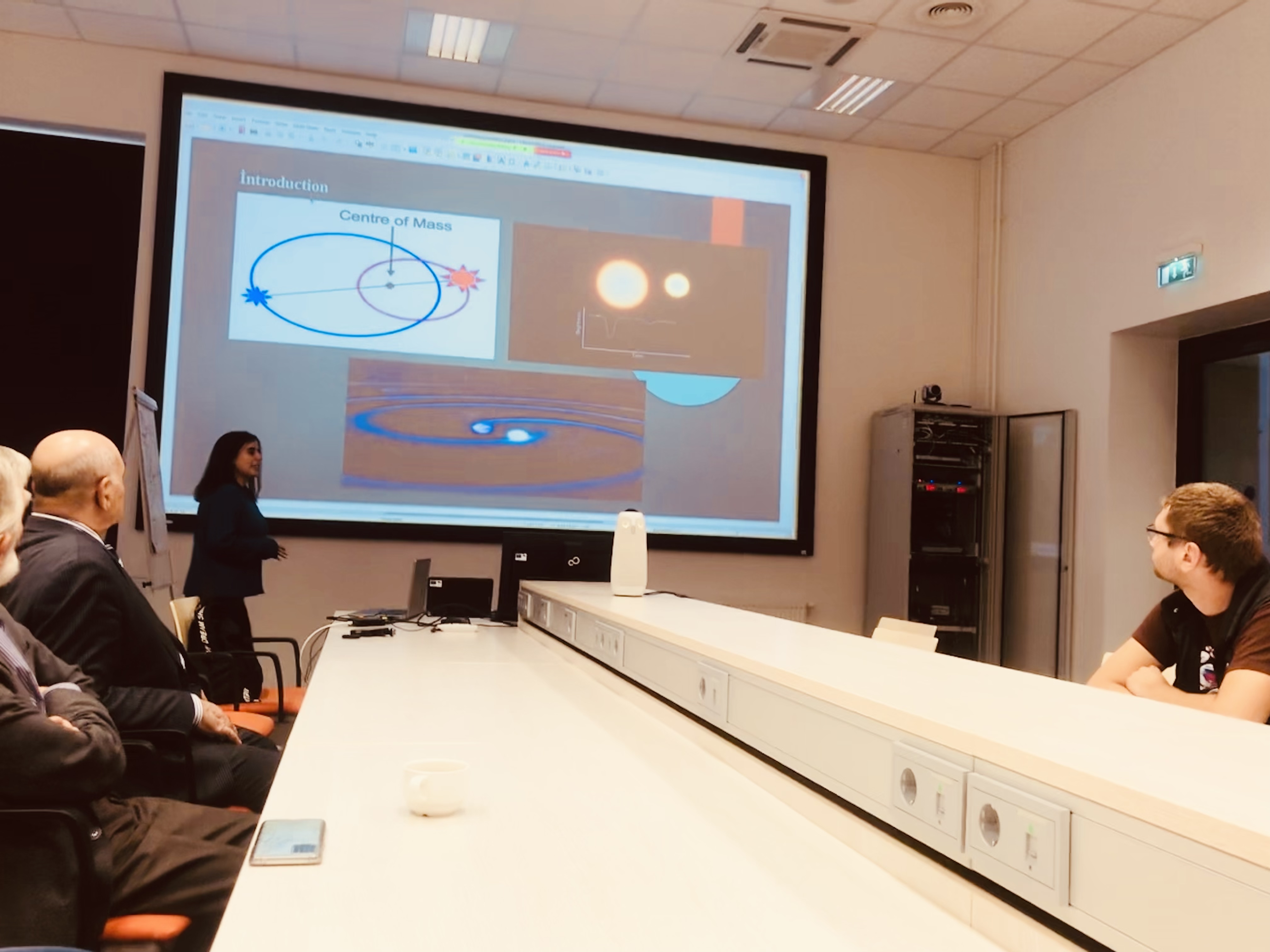
I enjoyed the quiet environment of the Tartu observatory and looked forward to seeing the deer and squirrel every day. Friendly co-workers helped me master the place faster.
I spent the weekends walking around the city, enjoying the peaceful nature and delicious food. I visited Tallinn and was amazed at how to the city has preserved its past so well. I hope to be able to come here again in the future.
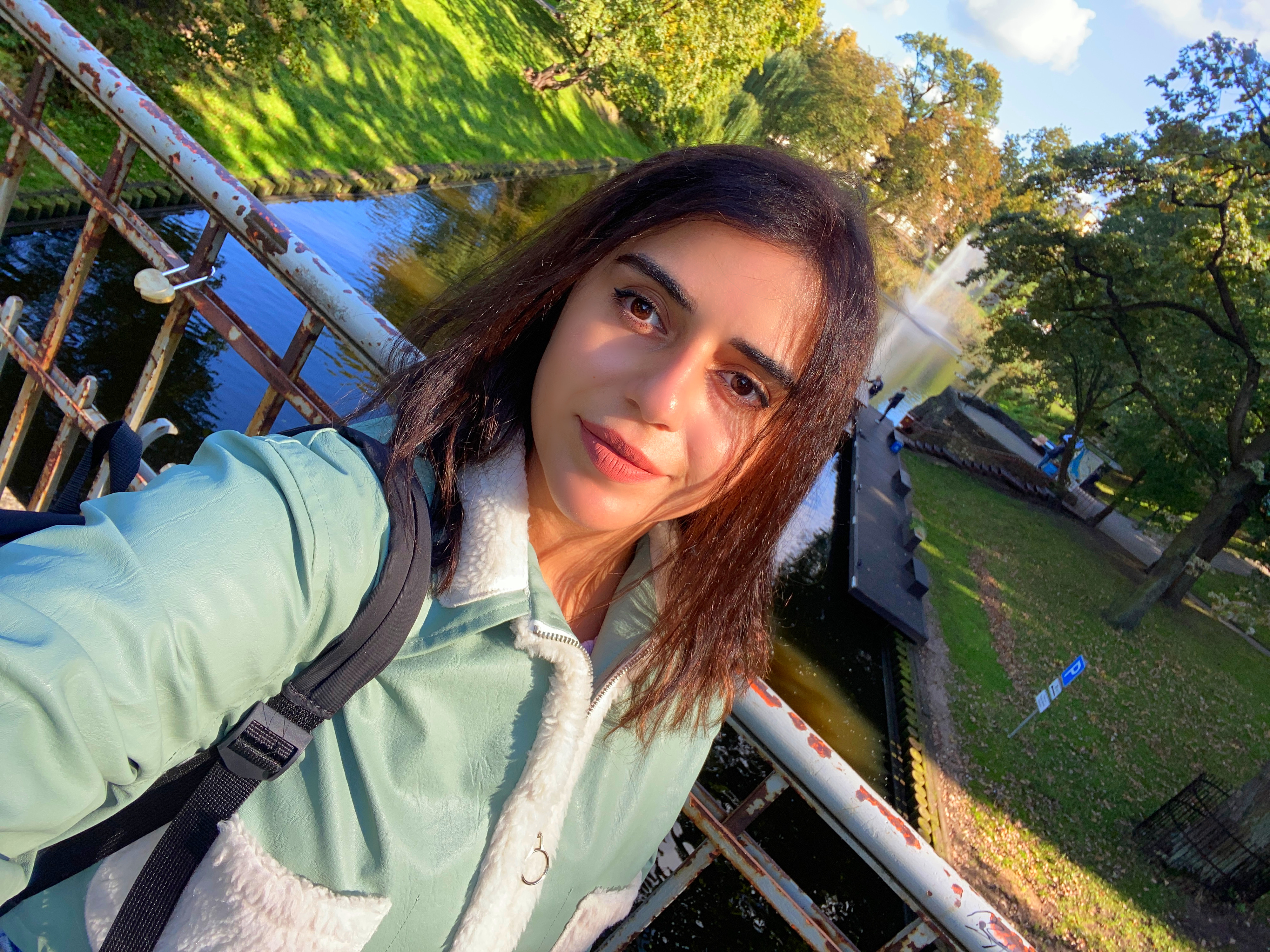
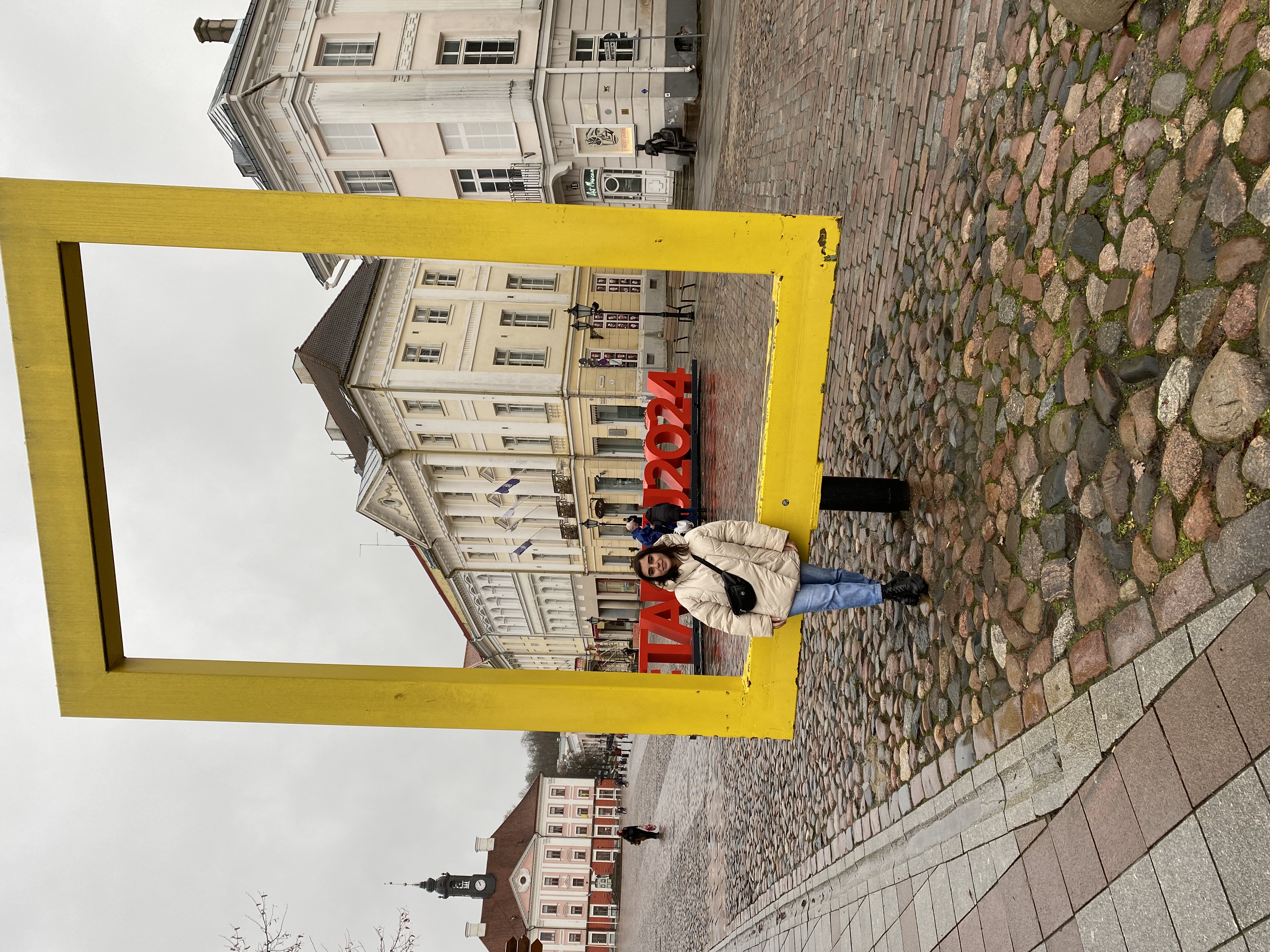
I was at the Tartu Observatory of the Estonian Republic from 01 September to 28 November in the framework of Horizon 2020. During the visit, I discussed the investigation of massive stars in collaboration with astronomers from Tartu Observatory and Shamakhy Astrophysical Observatory (ShAO). The results of the spectral investigation of star beta Lyr were discussed. These results were reported at the Tartu Observatory seminar.
During the visit, I was acquainted with the telescopes of the Tartu Observatory and the methods of processing and obtaining spectral and photometric observations at this observatory. The opportunity for simultaneous observation of massive stars at Tartu Observatory and ShAO telescopes was discussed. During the visit I also discussed visits from ShAO to Tartu and from Tartu to ShAO during the 2023-2024 years.
At weekends I visited Tartu museums and the old Struve observatory. This observatory was very impressive. I was also at one of the oldest universities in Europe, Tartu University. On weekends I spent my free time, mainly in the nature. The nature of Estonia is very nice.
My visit to Ondrejov started on 02/09/2022 and ended on 31/10/2022. The aim of the visit was to model spectra of B supergiant stars with a P Cygni profile in spectral lines sensitive to the stellar wind, in particular H𝛼. For this task I have a large archive of spectra taken with the Reosc spectrograph in Echelle mode at the Casleo observatory (San Juan, Argentina) by Dr Maximiliano Haucke, Dr Lydia Cidale and myself, from 2006 to 2022. The range of most of these spectra is from 4200 to 6650 Angstroms. The tool of choice is Fastwind, which in addition to the lines most affected by the wind allows modelling lines of photospheric elements such as Helium and Silicon. This is important because some of the stellar parameters I want to measure are not affected by the wind. For this task I found a lot of help from Dr. Cidale and Dr. Kraus, who helped me to understand how the changes in specific parameters affect some specific line profiles and how Fastwind works. Also Natalia Machuca Arroyo helped me by using her code to find the best fits in the ISOSCELES (GrId of Stellar AtmOSphere and HydrodynamiC ModELs for MassivE Stars) to compare the results
At the end of my stay I started measuring periods from TESS lightcurves of three B supergiants with WaveletComp and Period04, in order to compare the measured periods with those predicted by theoretical models. This is a work in progress under the direction of Dr. Sánchez Arias and collaboration of Drs. Nemeth, de Almeida, Haucke and Kraus.
During my visit the POEMS workshop at Turnov, Czech Republic, took place. I contributed to the workshop with two presentations: the first was a practical demonstration of the WaveletComp package for measuring periods in light curves of supergiant B stars, and the second was a short reduction recipe of observations taken with the CASLEO Observatory's Reosc spectrograph. The questions and advice I received from those who attended these presentations allowed me to resolve my own doubts and devise strategies to improve my skills in both areas.
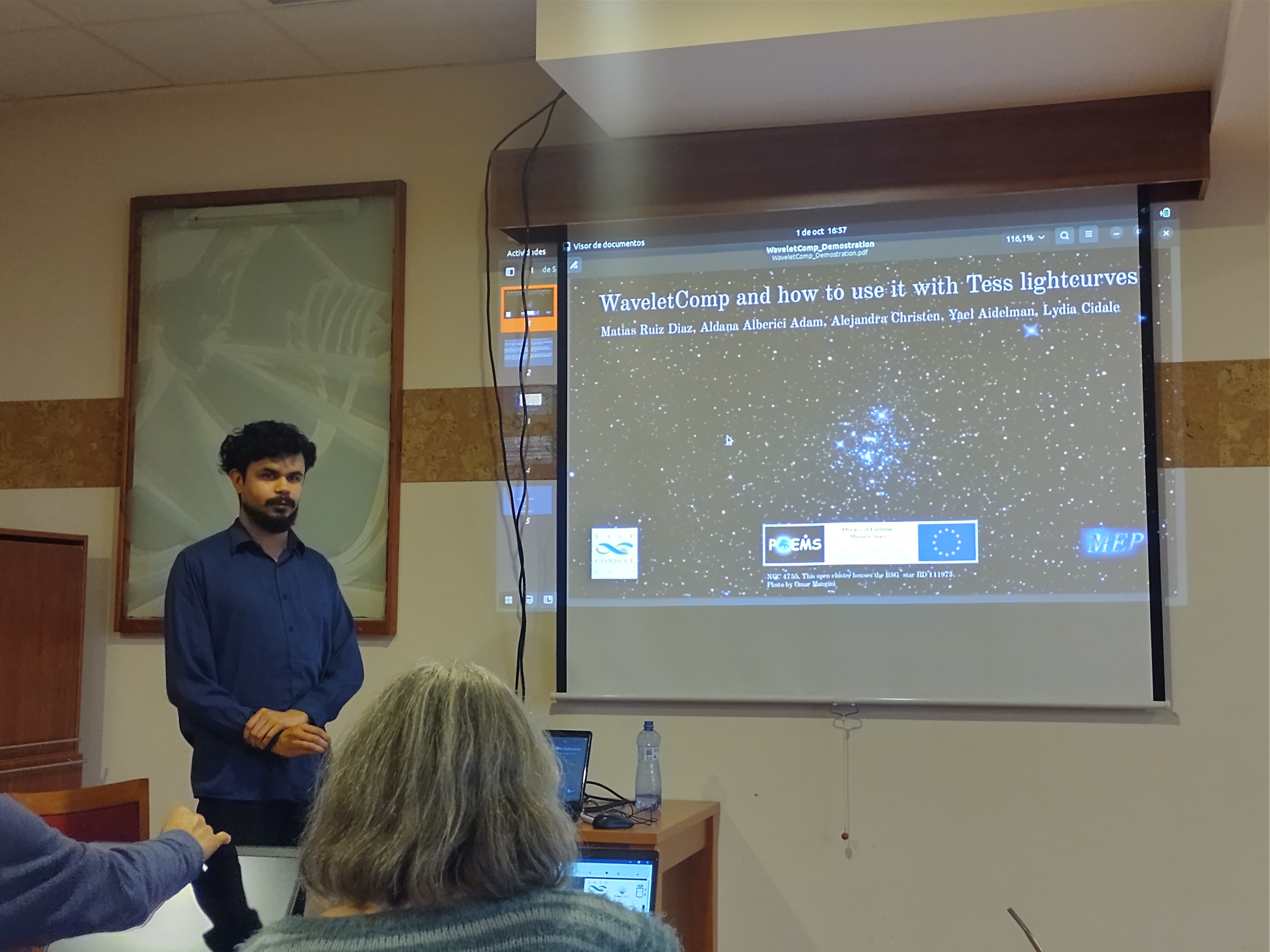
On a personal note, this was an excellent first experience overseas. The Czech Republic is a beautiful country, with an inescapable importance for the history of astronomy. I was able to enjoy beautiful landscapes and historical sites together with my friends from the Stellar Department.
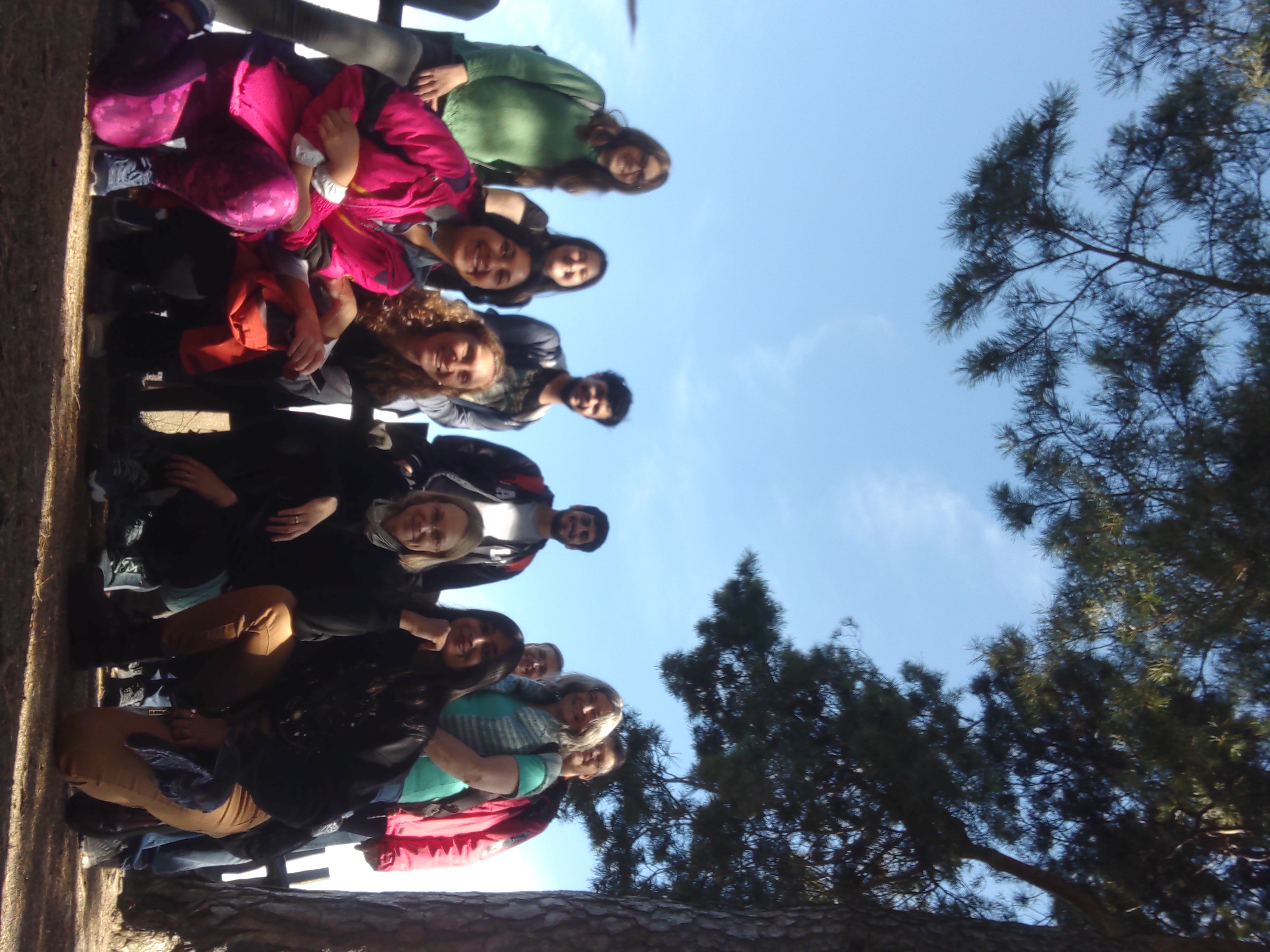
We also enjoyed, together with Dr Lydia Cidale, a fruitful meeting with the Argentinean ambassador in the Czech Republic, Mr Roberto Salafia, who was interested in the state of the POEMS collaboration and the contribution of UNLP researchers to it.
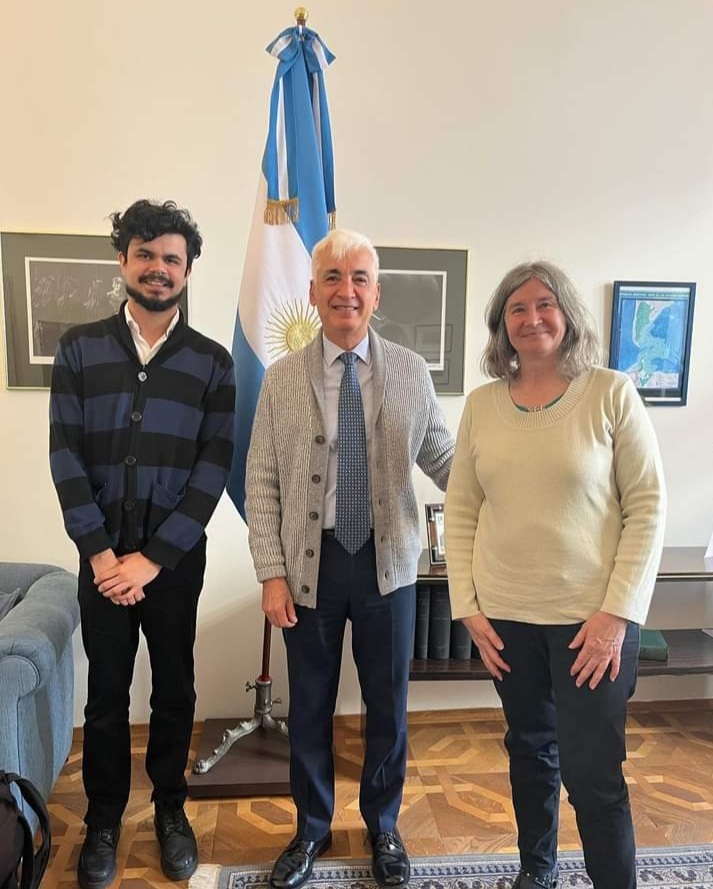
Last but not least I would like to thank all the nice people I met, they made me feel very comfortable on my first trip to Europe. Looking forward to seeing you again!
I spent 2 months at the Ondřejov Astronomical Institute working mainly with Dr. Michaela Kraus on the topic of B[e] stars. I learned about the physics behind this kind of star and the information that we can obtain from measurements over the emission lines. The main idea of my secondment was to study the input models and their respective outputs calculated with the code HDUST. To do this, first I reproduced the model of the main sequence B[e] star studied before with this code (Carciofi et al. 2010), to check if the setting options in the code were working properly. After that, I studied how to use different dust grains and composition models to affect the spectral energy distribution obtained. All models were performed by setting a bi-modal wind model (a high-velocity wind at the stellar pole and a low velocity and high mass-loss rate at the stellar equator) for the gas structure followed by a dust ring. The input parameters were varied to study how affect the observed hydrogen emission lines. With this information, I created several models to study the disk of the B[e] S73. This was done also in collaboration with Dr. Lydia Cidale from UNLP, who was also doing her secondment at ASU.
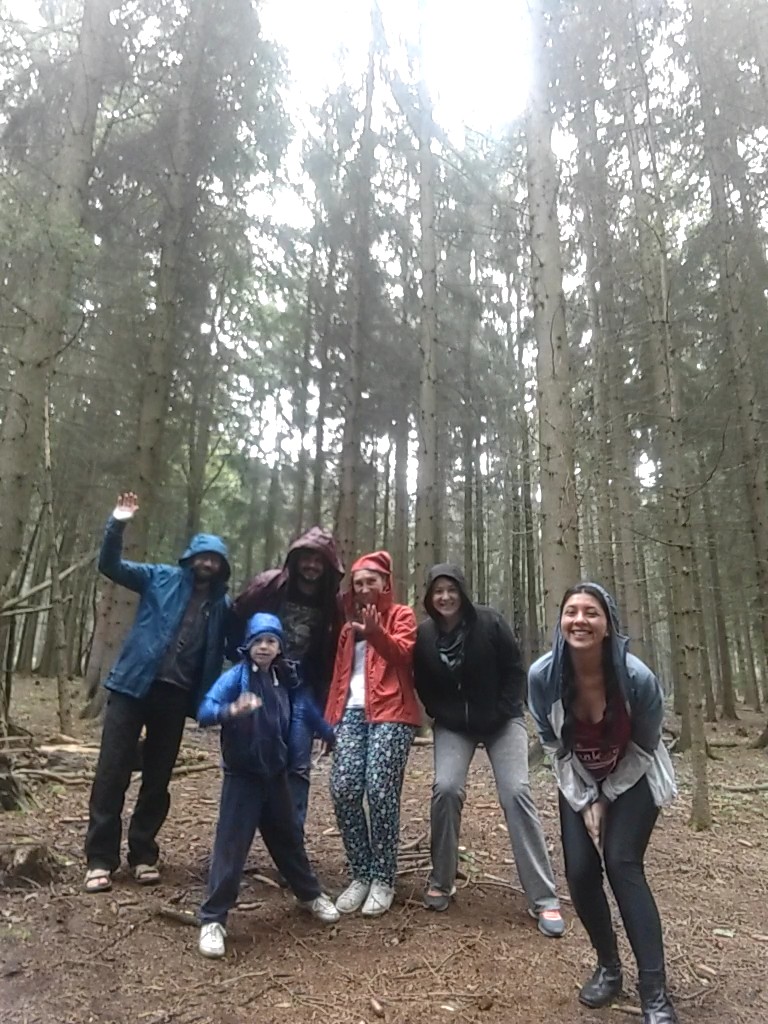
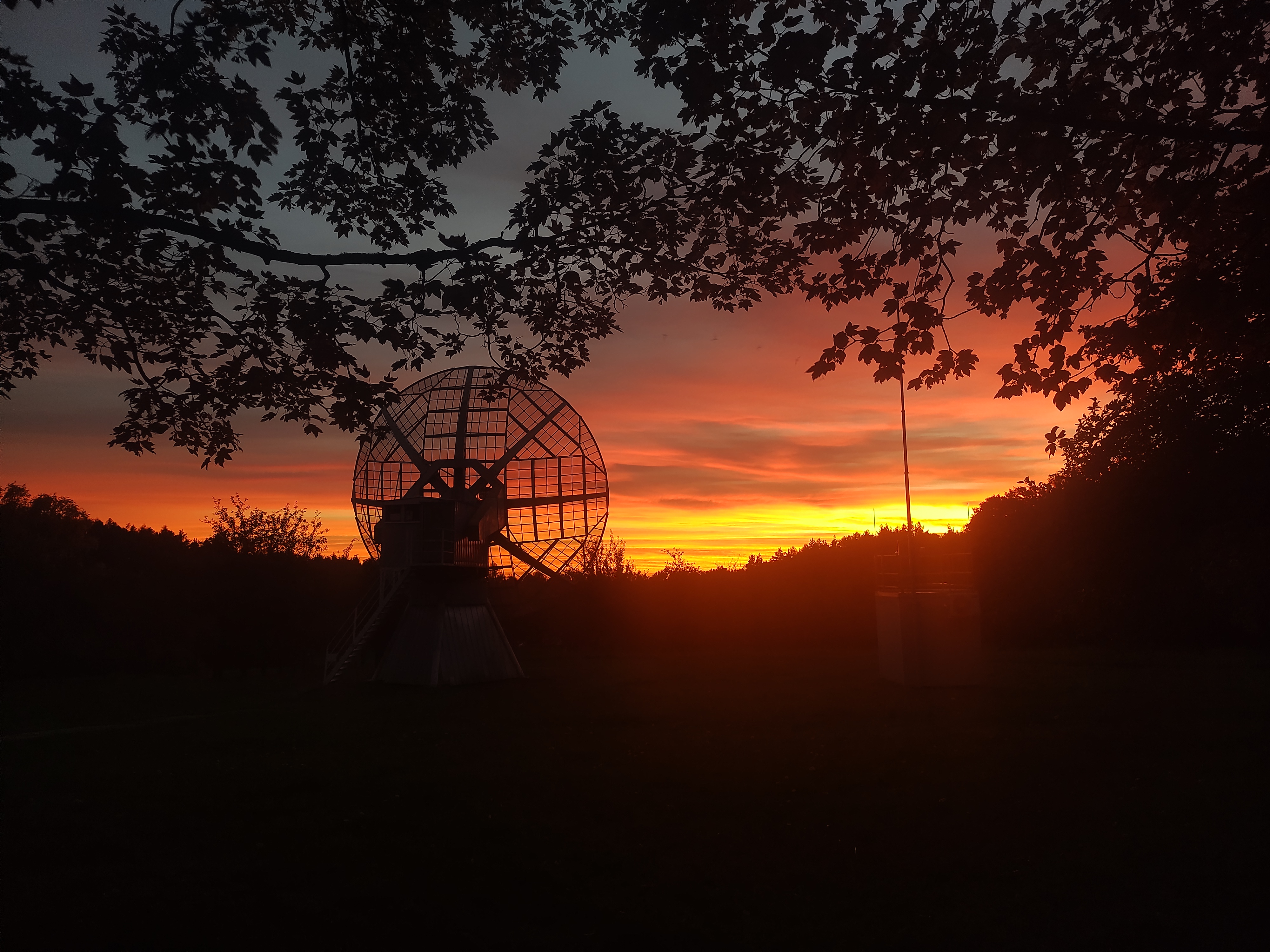
I also collaborated with the PhD student Lorena Mercalli from UNLP, determining the stellar radius of the star P-cygni by using the multi-fitting tool MUFIN (Arcos et al. 2018).
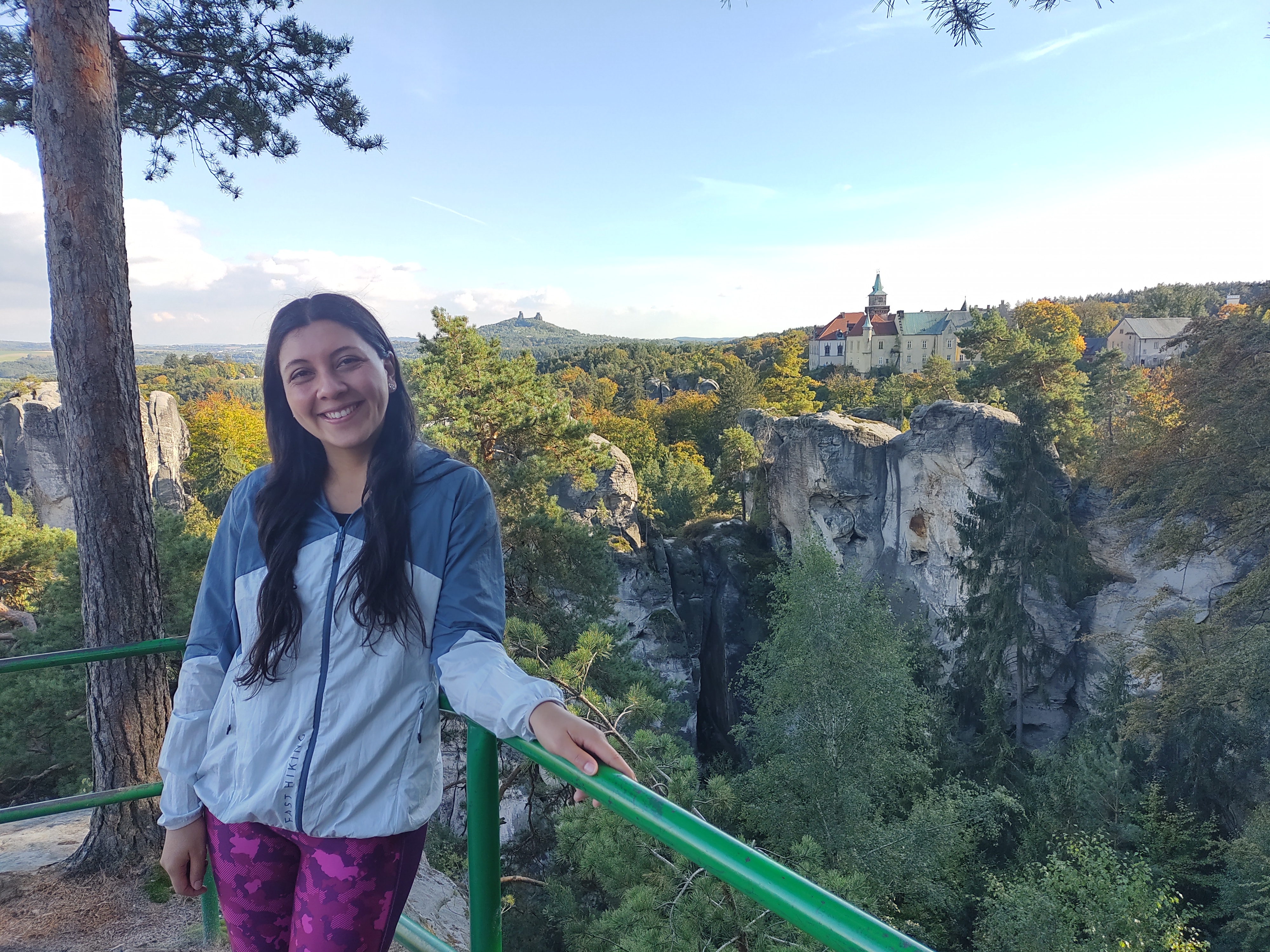
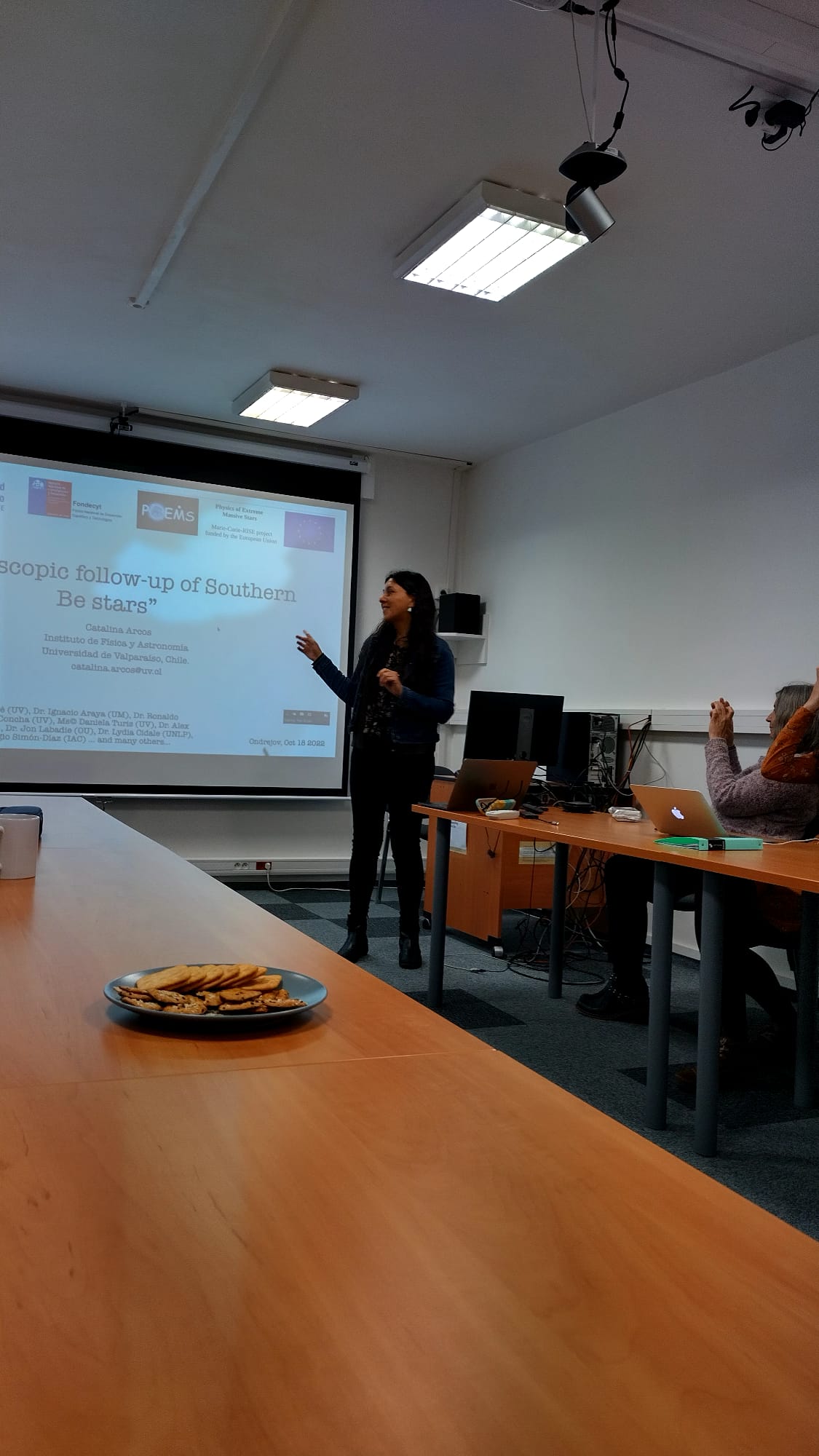
During my secondment, I participated as a listener in the regular scientific seminars at ASU, and also presented a recent paper on massive stars in the monthly Journal Club organized by Dr. Julieta Sanchez. I did a seminar about my main research topic on Be stars and I participated in the POEMS working workshop in Turnov, presenting talks about the use of the code HDUST, the tool MuFIN, and the TESS pipeline.
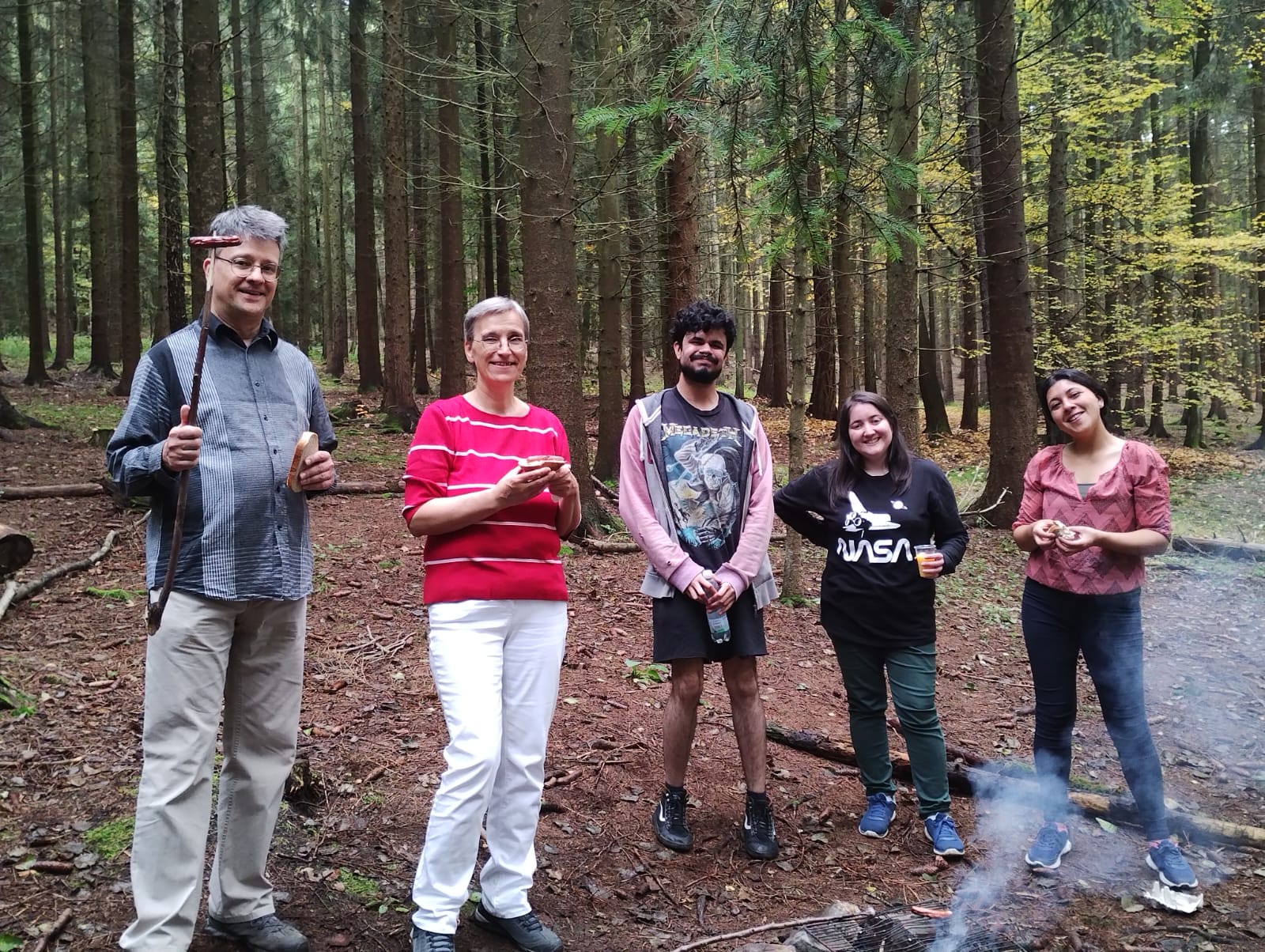
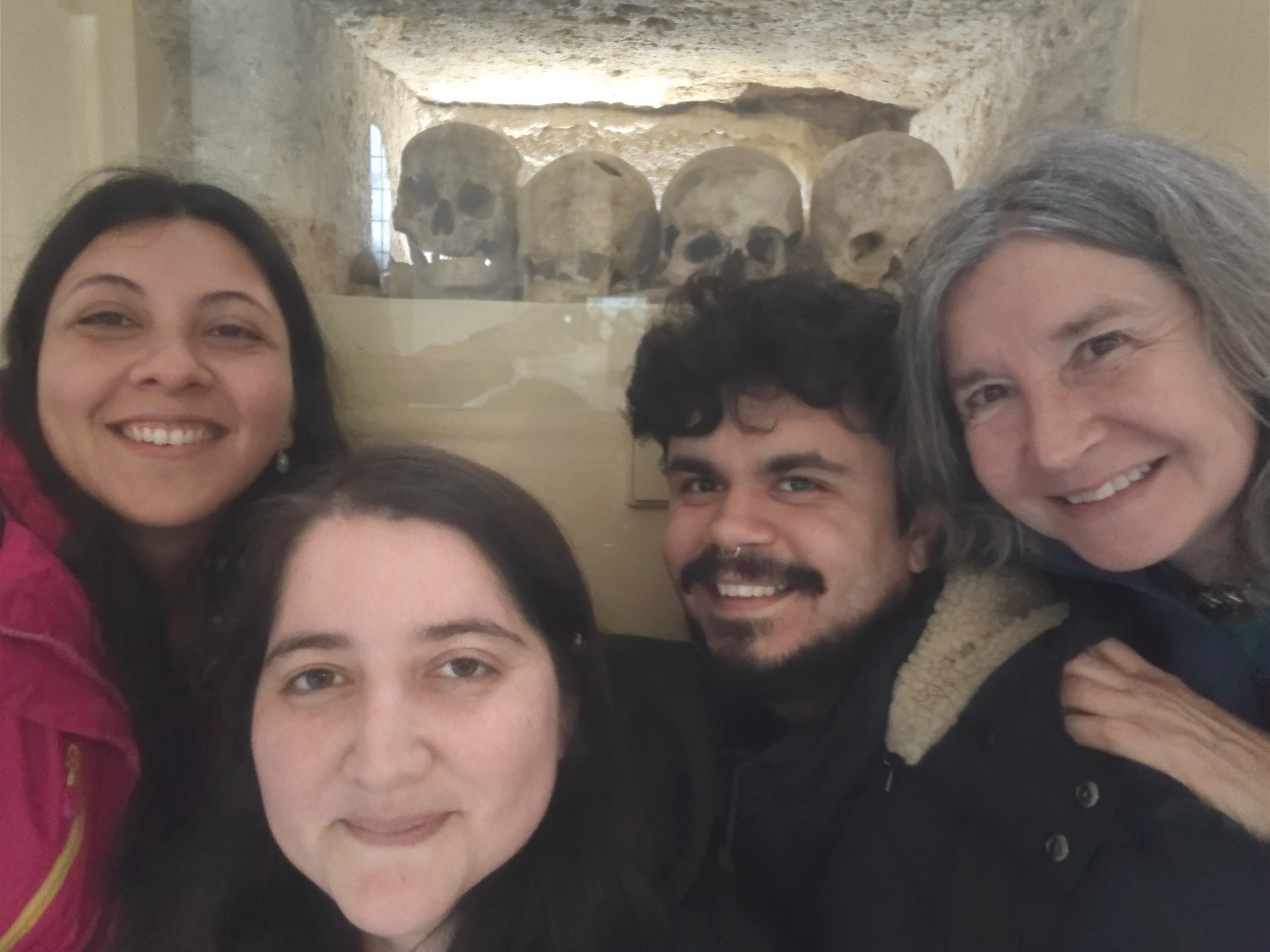
Finally, I enjoyed the beautiful environment around the institute and spend almost all my weekends hiking around the town and eating pizza at Pietro's restaurant. I visited Prague (castle, Charles's bridge, and downtown) and the amazing church made of bones in Kutná Hora.
I have been visiting the Stellar Physics Department of the Astronomical Institute in Ondřejov in the frame of the POEMS project for three months. There I worked with the group Physics of Hot Stars on the investigation of stellar winds and circumstellar disks of B[e] supergiants. This research forms part of my PhD project. One primary task in my research consists in the fit of synthetic line profiles to observed spectra. So far, I focused on a small selection of supergiants and luminous blue variable stars. The exchange with the members of the institute and fellow guest researchers allowed me the implementation of different methods and the development of new tools that complement the code I use for the line profile modelling. For example, during my secondment, I learned a method for constraining the stellar radius (a fundamental input parameter for our model) based on different observational data sets with Dr. Catalina Arcos.


Another activity during my visit has been the development of a program for calculating Ca II populations. This code can be used in the program that considers the presence of a stellar wind or can be incorporated into existing codes that assume the presence of circumstellar rings. Preliminary results suggest that both features, the stellar wind and disk, have to be included in order to explain the line profiles observed in one of the B[e] supergiants I work with. The intensive and fruitful interaction I had with the head of the project and the local group, Dr. Michaela Kraus has been very valuable to promote my research activities.

In addition, I participated in the POEMS workshop in Turnov. This workshop extended over four working days with presentations and demonstrations of tools and codes. Towards the end of my stay in Ondřejov, I presented a seminar with the title: "Research activities within the framework of POEMS and PhD projects". Furthermore, I joined Dr. Olga Maryeva in an observation session with the Perek 2 m telescope. I attended the lecture given by M.Sc. Mauricio Cabezas on Data Reduction of echelle spectra using IRAF, within the framework of the Workshop on Observational Techniques 2022 organized by the ASU Stellar Physics Department. Spectrum analysis is an important part for my research and PhD activities.
I am very grateful for the warm reception and permanent support, for all the shared knowledge and for this great opportunity to advance with my research, to get to know the culture and nature in Czech Republic and to build personal bonds.
During my second secondment to University of Valparaiso (UV) I explored possibilities to create data processing pipelines for CASLEO REOSC Echelle spectrograph and also other Echelle spectrographs (ShAO, ASU, coming TO one) and found a couple of promising and customizable codes for that. Most of the time I worked on the programs to submit raw observational data properly into the POEMS database, having accent on CASLEO data - because UNLP has large amount of Echelle spectra from that observatory. That work was almost finished.
In addition, I participated regularly in astrophysics seminars that take place every Friday at UV.
During my three month stay in Valparaiso, I worked with Prof. Michel Curé in the field of winds of massive stars. In the first month, I followed the book on Stellar Winds by H. Lamers and J. Cassinelli and learned the basic (mCAK) theory of radiation driven winds. Then, through various papers by M. Curé, et al. I learned about the new omega and delta slow wind solutions for massive stars. Through the second month, I simulated these winds using the stationary code HYDWIND and the time evolutionary code ZEUS3D. The aim was to obtain various quantities like the stellar mass loss rate, the terminal velocity, and the variation of the hydrodynamic quantities with distance and time. Finally, in the third month, we tried to simulate these winds with the 3D MHD code FARGO3D, and study the interaction regions of the winds with the interstellar medium, which is still in progress.
I also presented a review talk in the Institute of Physics and Astronomy seminar at the University of Valparaiso titled “Astrospheres: Stellar Wind Bubbles as Borders to the Interstellar Medium,” in which I discussed various old and new models of the heliosphere and trying to establish a connection of the same with the observations of the Voyager spacecraft.
During the weekends, I enjoyed the scenic beauty and the culture of Valparaiso and traveled to a few cities nearby. I loved my stay in Valparaiso, and am looking forward to future collaborations.
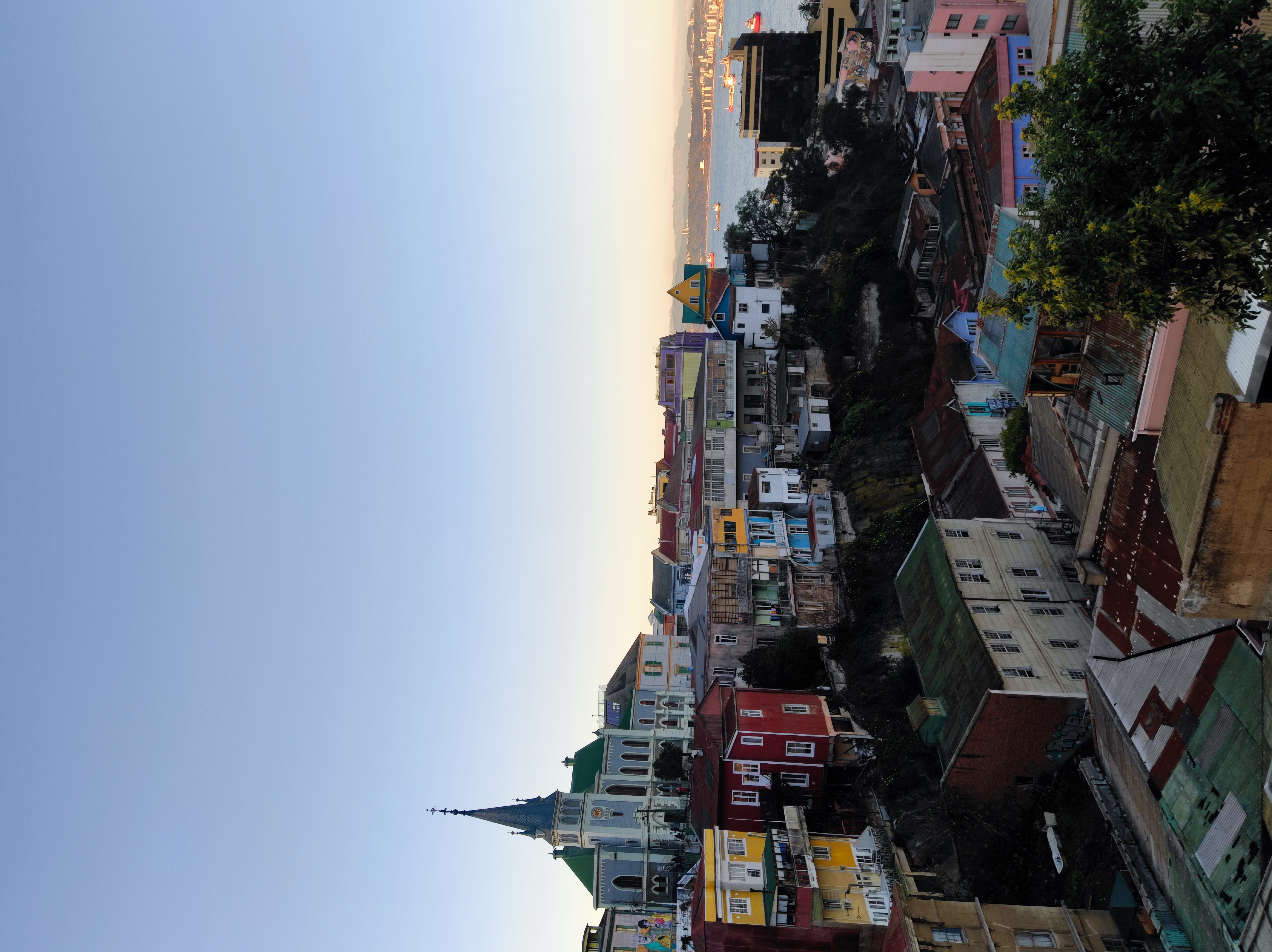
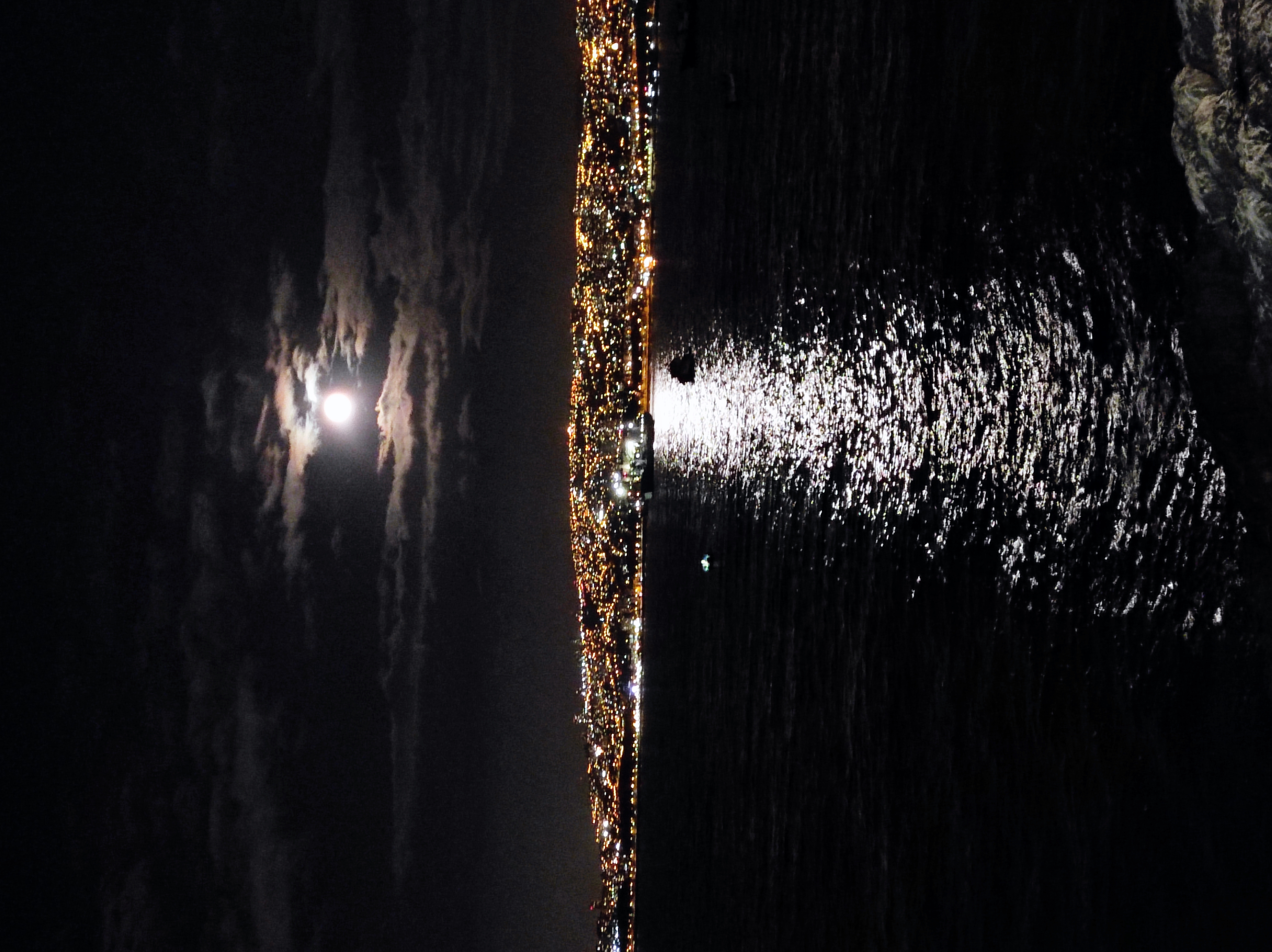
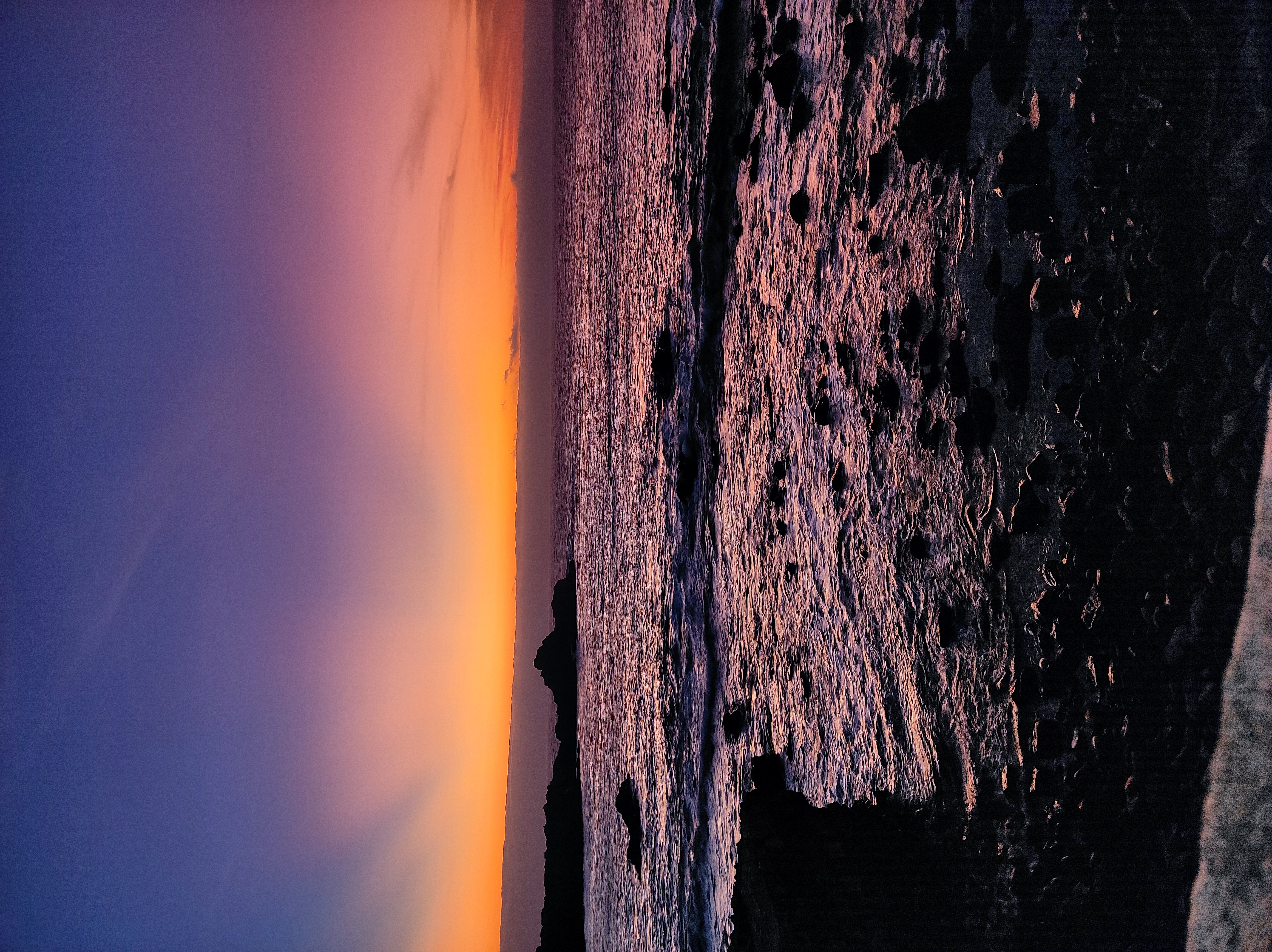
During my second visit to the Astronomical Institute in Ondřejov, Czech Republic, I continued the work initially started during my stay there in 2019. This work is devoted to study the photometric and spectral behavior of the young massive star WW Vul of the Ae/Be Herbig type, which is still pre-main-sequence object. Since my first visit, a lot of photometric data were accumulated with FRAM (collaborative effort between ASU and FZU) and Mini-MegaTORTORA telescopes. I thank Sergey Karpov who maintains the archives of both of these telescopes and performed observations on FRAM telescope. Light curves and their possible variations are constructed using photometric data. The color–magnitude dependence, the “bluing” effect, and other features of the behavior of the star WW Vul have been studied. For study of spectral variability of WW Vul public archival data were used, besides spectral material obtained at ShAO.
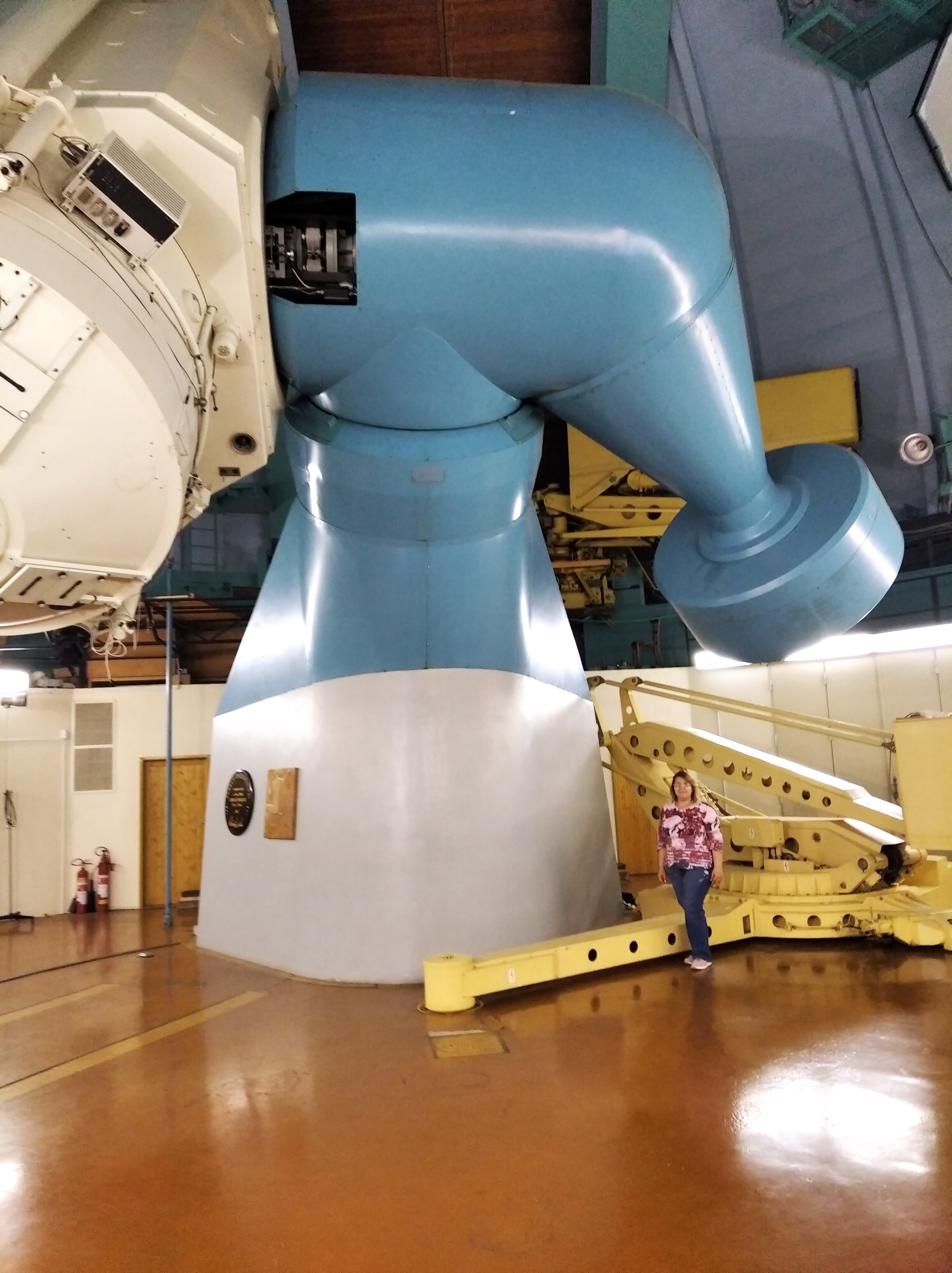
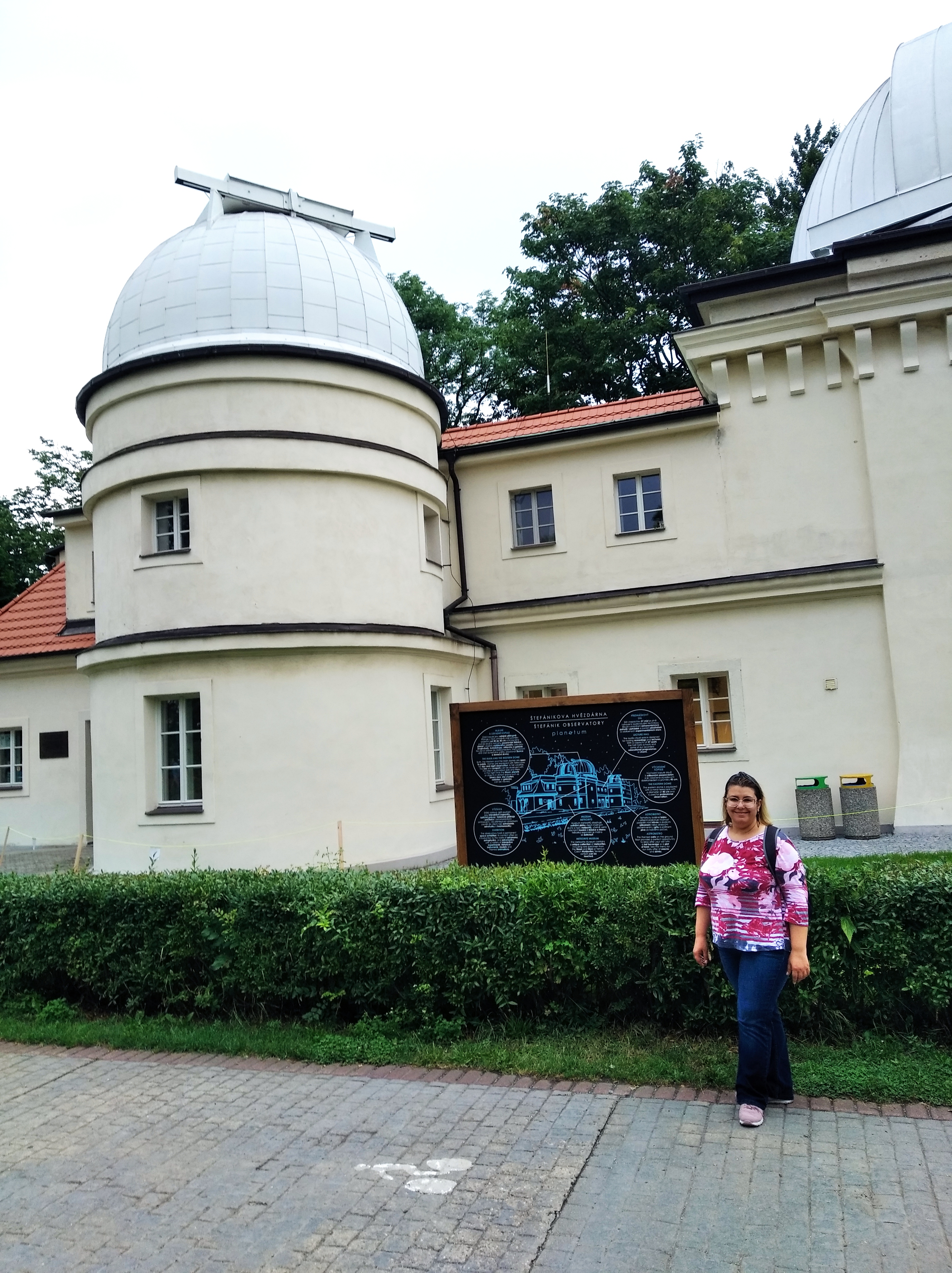
Moreover, I took part in regular observations at the 2-meter Perek telescope of ASU, joining the observing nights with Olga Maryeva. The spectra of other young massive stars were also obtained within the framework of the POEMS program. It was a useful experience for my further work, and data obtained during the observations will be essential for future studies.
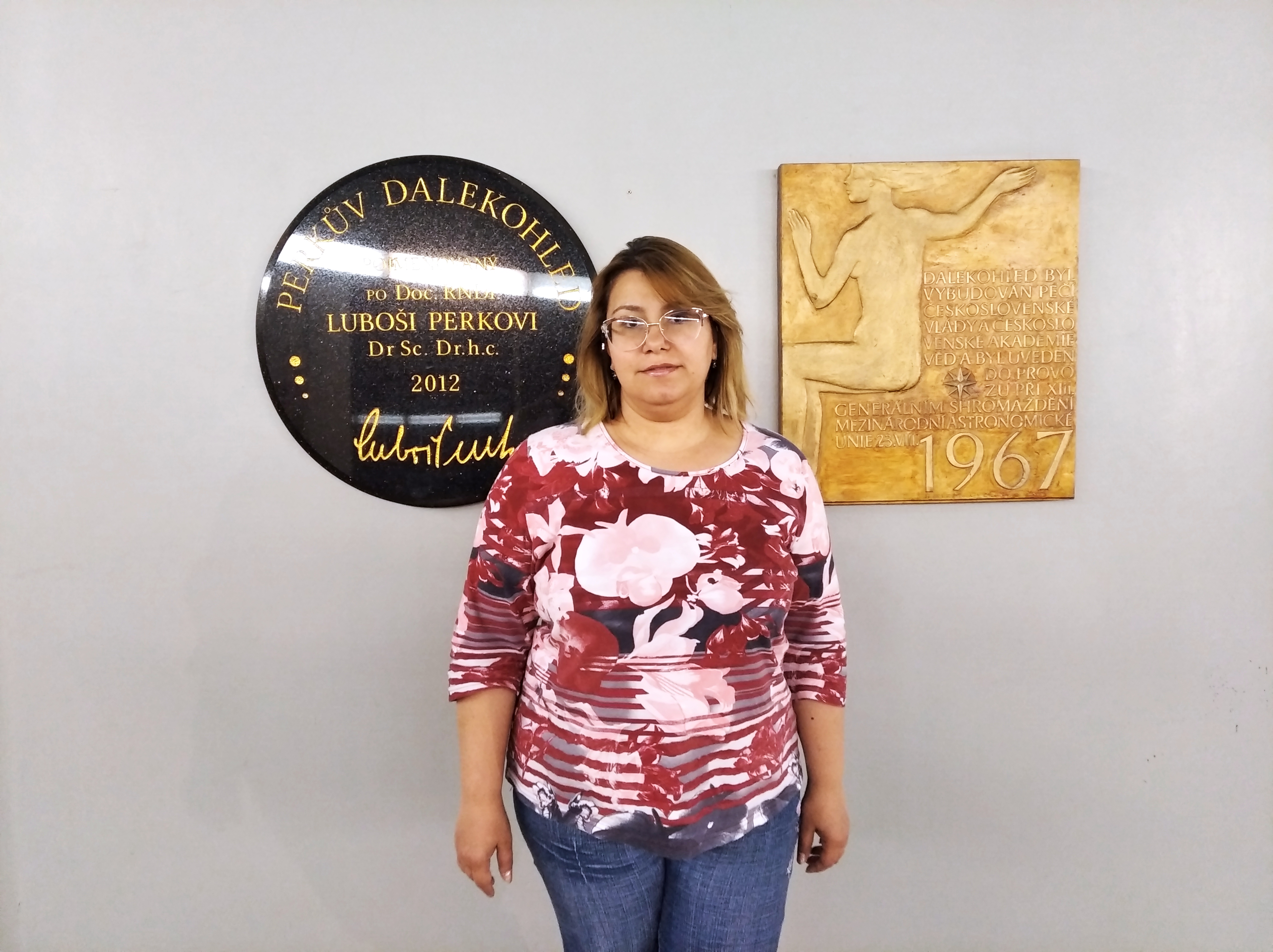
It was interesting for me to visit Charles University to attend the "Ph.D. student annual conference" and to see how the future astronomers of Europe start their careers. As part of this visit, I not only enriched myself with knowledge of various aspects of astronomy, but also visited the city of Prague and other attractions of the Czech Republic. I would especially like to thank Michaela Kraus and Olga Maryeva for including me both into the scientific and free time activities.
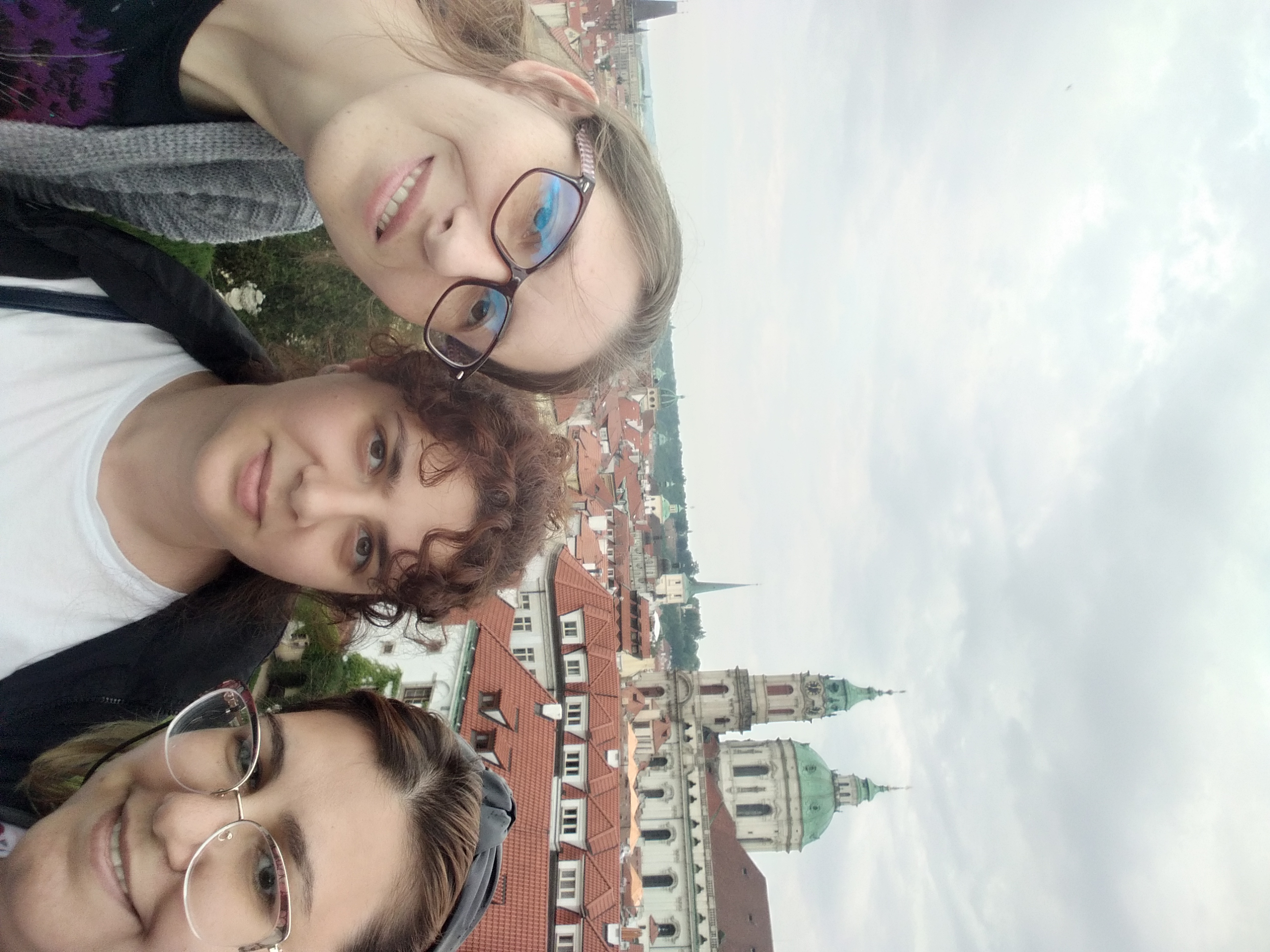
"Summer Fest" in Shamakhy, Azerbaijan, 19 - 23 August 2024
Tõnis Eenmäe from TO visits visits ShAO (15 July - 14 August 2024)
Michalis Kourniotis from ASU visits UNLP (6 July - 26 July 2024)
Lorena Mercanti from UNLP visits ASU (4 July - 31 August 2024)
Suryani Guha from ASU visits UNLP (1 July - 31 August 2024)
Silvina Cardenas from UNLP visits UNIVLEEDS (1 July - 31 Augst 2024)
Melina Fernandez from UNLP visits UNIVLEEDS (28 June - 31 Augst 2024)
Michaela Kraus from ASU visits ON (22 June - 21 August 2024)
Michalis Kourniotis from ASU visits ON (6 June - 5 July 2024)
Laurits Leedjärv from TO visits ON (1 June - 1 July 2024)
Anni Kasikov from TO visits ON (1 June - 30 June 2024)
Popular science article about POEMS has been published in The Innovation Platform, Issue 18, p.250-252
Alex Lobel from ROB visits UV (2 May - 2 June 2024)
POEMS results have been published on the website of the Innovation News Network

Laurits Leedjärv from TO visits UNLP (30 April - 31 May 2024)
Anna Aret from TO visits UNLP (29 April - 22 June 2024)
Vitalii Checha from TO visits UNLP (29 April - 22 June 2024) including a short visit to UV (11 May - 17 May)
Daniela Iglesias Vallejo from UNIVLEEDS visits UV (27 April - 27 May 2024)
Melina Carla Fernandez from UNLP and Aynur Abdulkarimova from SHAO participated at the event "Meeting of students of astronomy and astrophysics from Czech, Slovak, and Polish universities" that took place on April 19th, 2024 in Hvězdárna a planetárium Hradec Králové.
Kuljeet Singh Saddal from ASU visits UV (15 April - 14 June 2024)
Olga Maryeva from ASU visits UNLP (14 April - 1 June 2024)
Michaela Kraus from ASU visits UNLP (4 April - 21 June 2024)
Julieta Sánchez from ASU visits UV (1 April - 23 June 2024)
Tõnis Eenmäe from TO visits visits UNLP (20 March - 15 May 2024)
Aytaj Iskanderova from ShAO visits TO (17 March - 16 April 2024)
Zumrud Vidadi from ShAO visits TO (17 March - 16 April 2024)
Kuljeet Singh Saddal from ASU visits UMAYOR (15 March - 14 April 2024)
Suryani Guha from ASU visits UV (15 March - 14 June 2024)
Melina Fernandez from UNLP visits ASU (12 March - 8 June 2024)
Julieta Sánchez from ASU visits UNLP (1 March - 31 March 2024)
Michalis Kourniotis from ASU visits UNLP (25 February - 24 April 2024)
Marcelo Borges Fernandes from ON visits ASU (7 February - 8 March)
Aynur Abdulkarimova from ShAO visits ASU (2 February - 29 April 2024)
Anna Aret from TO visits ShAO (29 January - 29 February 2024)
Roberto Venero from UNLP visits ASU (20 January - 19 March 2024)
María Laura Arias from UNLP visits ASU (20 January - 19 March 2024)
Rodrigo Meneses Pacheco from UV visits ASU (5 January - 27 February 2024)
Olga Maryeva from ASU gave an online lecture during the annual seminar of astronomy teachers, 4-7 January 2024, Moscow, Russia.

POEMS PhD students participated at the PhD-student seminar held online
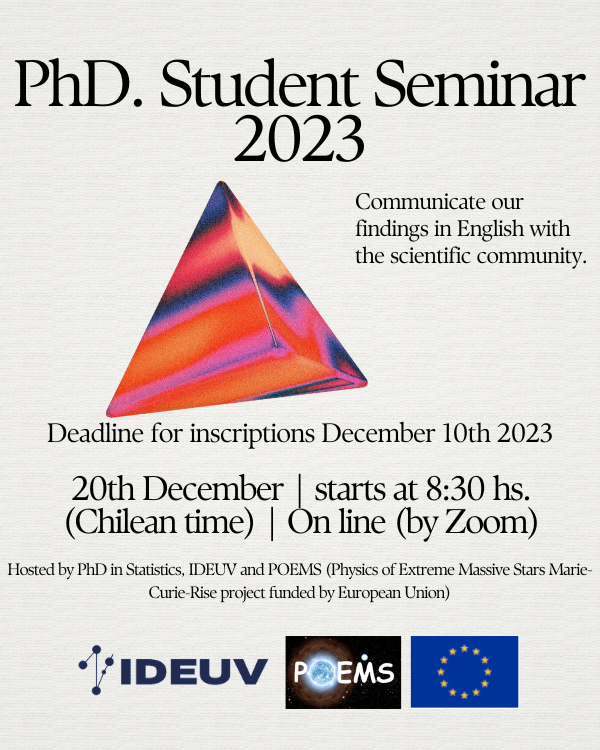
Elisson Saldanha da Gama de Almeida from UV and Aldana Aberici Adam from UNLP participated at the LARIM 2023: XVII Latin American Regional IAU Meeting, 27 November - 1 December 2023, Montevideo, Uruguay
Olga Maryeva from ASU participated at 55th conference on Variable Star Research, 17 - 19 November 2023, Brno, Czech Republic
Daniela Turis from UV visits ASU (13 November - 30 November 2023)
Natalia Machuca from UV visits ROB (28 October - 30 November 2023)
Péter Németh from ASU visits UV Chile (26 October 2023 - 25 January 2024)
Yanina Cochetti from UNLP presented an invited talk at the monthly IAU Working Group on Active B Stars seminar on 18 October 2023
Heleri Ramler from UTARTU visits UNLP (4 October - 8 December 2023)
Anni Kasikov from UTARTU visits UNLP (4 October - 8 December 2023)
Tõnis Eenmäe from UTARTU visits UNLP (4 October - 8 December 2023)
Anna Aret from UTARTU visits UNLP (4 October - 8 December 2023)
Julieta Sanchez Arias from ASU presented an invited talk at the monthly IAU Working Group on Active B Stars seminar on 20 September 2023
Michel Curé from UV visits ROB (16 September - 28 September 2023)
Daniela Turis from UV visits ROB (16 September - 12 November 2023)
Gunther Avila from UV visits ASU (3 September - 8 December 2023)
Natalia Machuca from UV visits ASU (2 September - 27 October 2023)
Aldana Alberici from UNLP visits ASU (1 September - 3 November 2023)
Matías Ruíz Díaz from UNLP visits ASU (1 September - 3 November 2023)
Janmammad Rustamov from ShAO visits ASU (1 September - 27 November 2023)
Sabina Mammadova from ShAO visits ASU (1 September - 24 November 2023)
Daniela Turis from UV visits ASU (1 September - 15 September 2023)
Gonzalo Aravena from UV visits ASU (31 August - 2 November 2023)
Athos Ribeiro da Silva from ON visits ASU (30 August - 30 September 2023)
Sabina Mammadova and Gunay Hajiyeva from ShAO participated at the online conference XXIII Gamow International Conference: Astronomy and beyond: Cosmology and Gravitation, Astroparticle Physics, Radioastronomy and Astrobiology, 21-25 August 2023
Aytaj Iskandarova from ShAO visits UTARTU (26 August - 26 October 2023)
Lydia Cidale from UNLP visits ASU (18 August - 27 September 2023)
Alejandra Christen from UV visits ASU (15 August - 15 September 2023)
Michel Curé from UV visits ASU (15 August - 15 September 2023)
Gunther Avila from UV visits UTARTU (30 July - 29 August 2023)
Andrea Torres from UNLP visits ASU (26 July - 18 September 2023)
Lydia Cidale from UNLP visits TO (23 June - 17 August 2023)
Olga Maryeva from ASU participated at the International conference "The Wolf-Rayet phenomenon in the Universe", 19-23 June 2023, Morelia, Mexico
Kateřina Pivoňková participated at the "Conference of Young Astronomers", 16-18 June 2023, Bezovec, Slovakia
International Summer School Stellar Winds and Outflows will be held in the period 3-15 September 2023
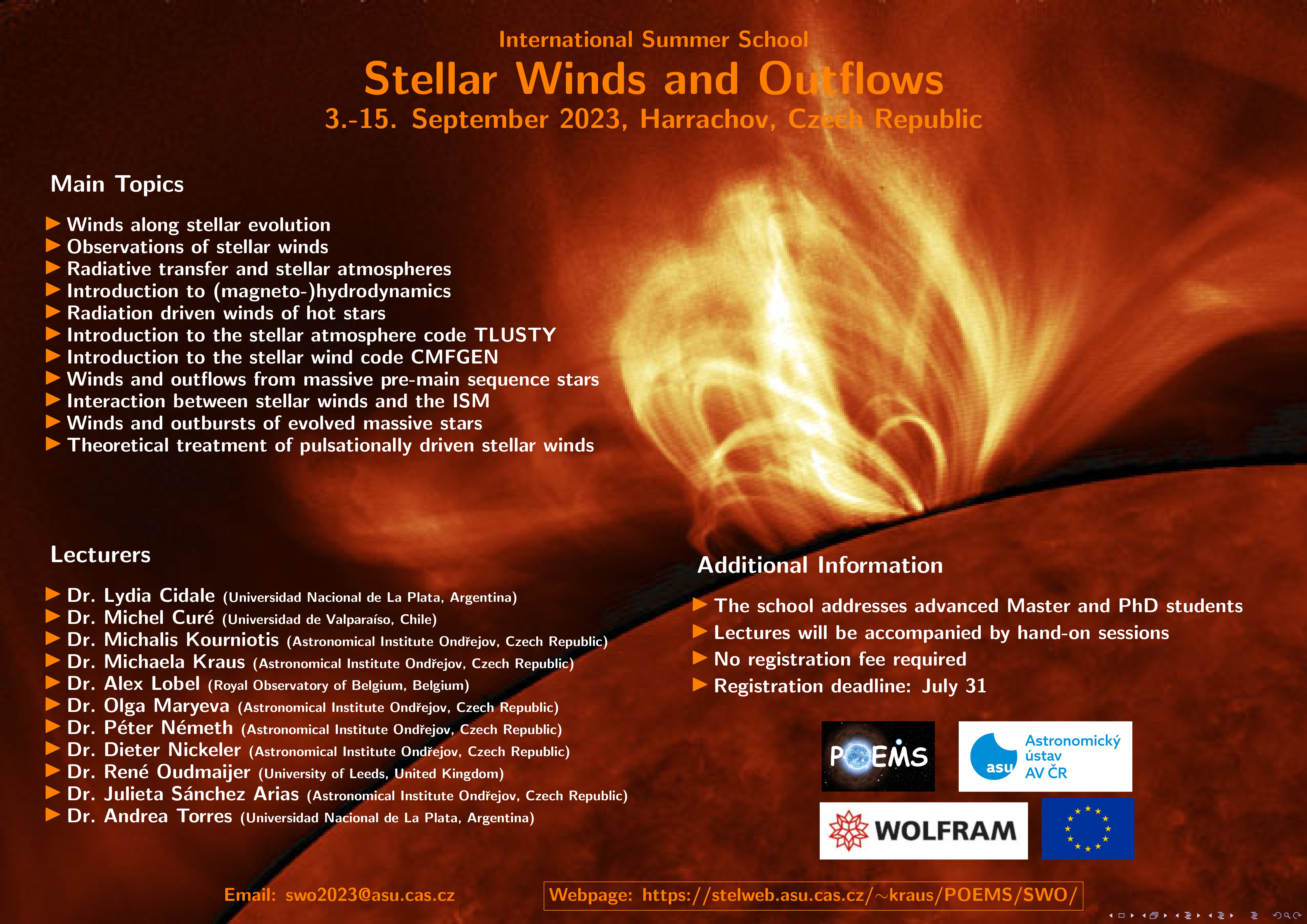
Rodolfo Vallverdú from UNLP visits ASU (9 May - 8 July 2023)
Anna Aret from UTARTU visits UV (22 April - 23 May 2023)
Vitalii Checha from UTARTU visits UV (22 April - 23 May 2023)
Aynura Hasanova from ShAO presented a lecture during the International Day of Human Space Flight (12 April 2023)
Olga Maryeva from ASU visits UNLP (1 April - 2 June 2023)
Julieta Sánchez Arias from ASU visits UNLP (1 April - 2 June 2023)
Aynura Hasanova from ShAO teaches about massive stars (28.-29. March 2023)
Michalis Kourniotis from ASU visits UNLP (26 March - 25 May 2023)
Anna Aret from UTARTU visits UMAYOR (22 March - 21 April 2023)
Vitalii Checha from UTARTU visits UMAYOR (22 March - 21 April 2023)
Five POEMS members from ASU participated in the "86th Annual Conference of the DPG and DPG Spring Meeting" in Dresden, 20-24 March 2023
Yanina Cochetti from UNLP visits TO (2 March - 4 May 2023)
Michaela Kraus presented a seminar talk at the Astronomical Institute of the Charles University in Prague on 2023 March 1.
Aynur Abdulkarimova participated at "February Readings-2023: The Creative Potential of Youth in Solving Aerospace Problems", 1-3 February 2023
Paula Marchiano from UNLP visits ASU (10 January 2023 - 12 March 2023)
On December 9, 2022, our colleague Assoc. Prof. Dr. Rustamov Janmammad from ShAO obtained the Doctor of Science degree in astronomy.
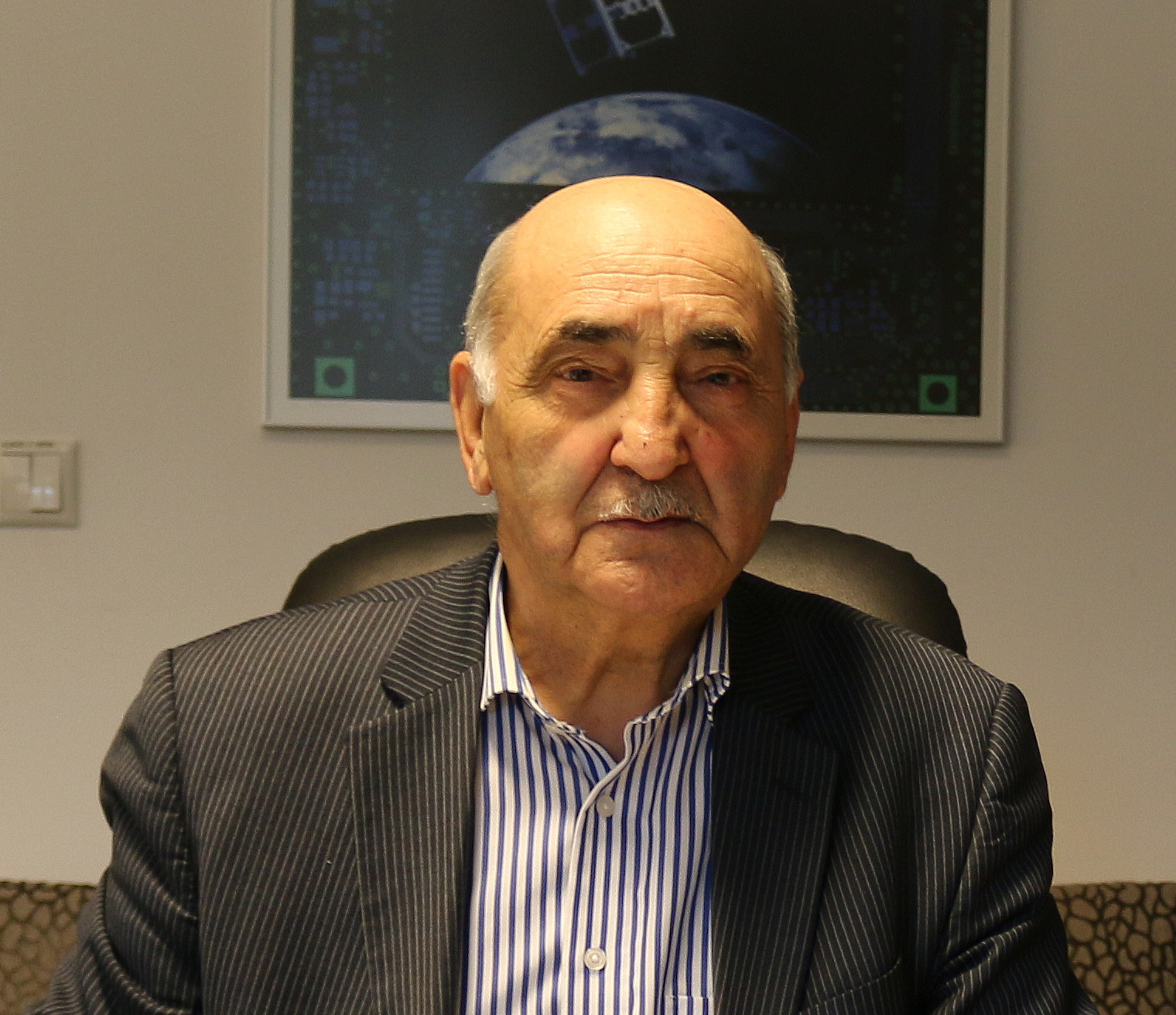
Ignacio Araya from UMAYOR visits ASU (4 December 2022 - 3 February 2023)
Julieta Sánchez Arias from ASU visits UNLP (10 November 2022 - 11 January 2023)
On November 8, 2022, Michaela Kraus presented a seminar talk about the POEMS project at Observatorio Nacional, Rio de Janeiro, Brazil (online)

Matías Ruíz Díaz from UNLP visits UGOE (31 October 2022 - 27 January 2023)
Aldana Alberici from UNLP visits UGOE (30 October 2022 - 26 January 2023)
POEMS team members from ShAO and ASU participated at the International Conference Alive Universe - from Planets to Galaxies, online at ShAO, 12-14 October 2022
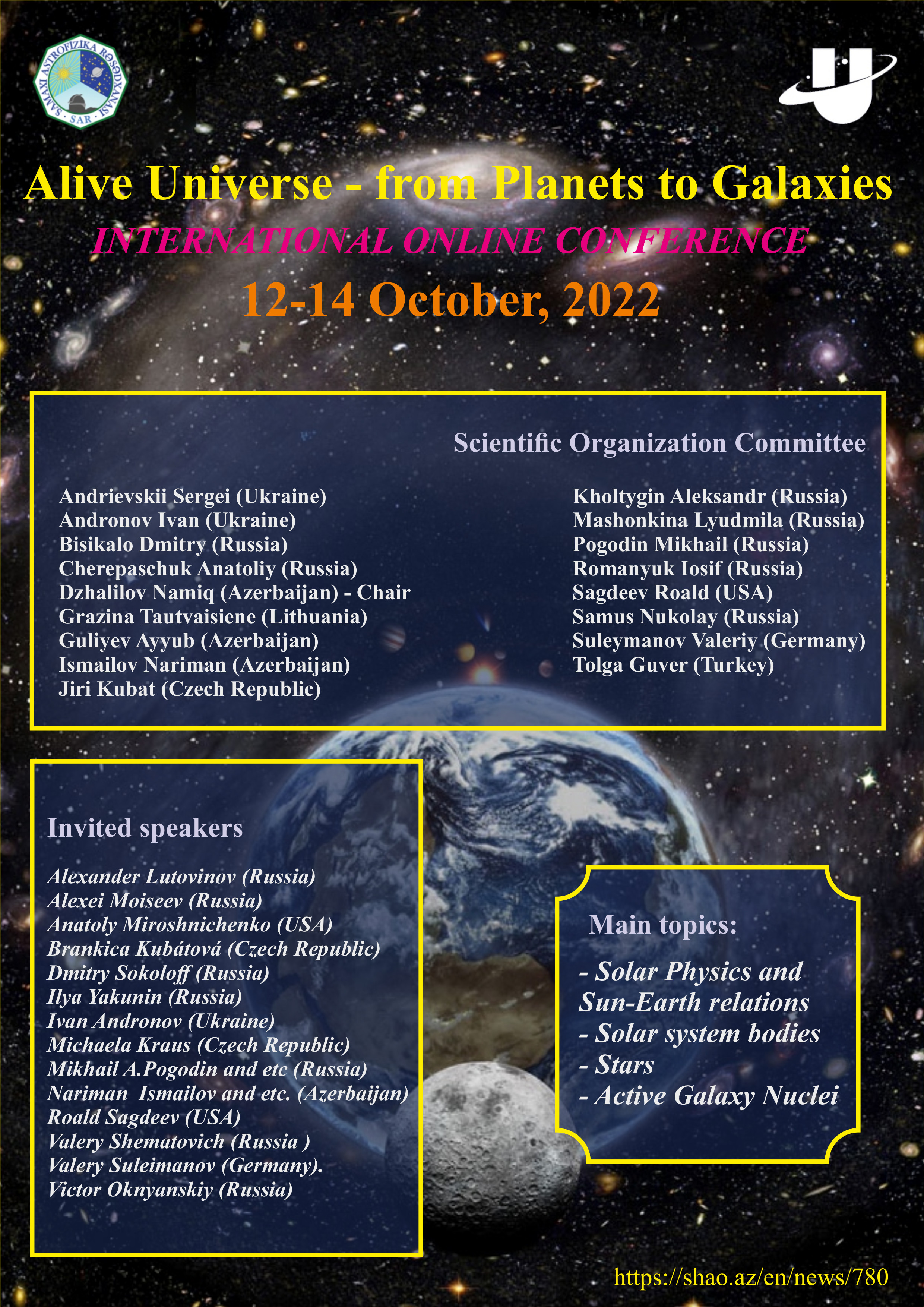
Lydia Cidale and Matías Ruíz Díaz from UNLP visit the Ambassador of Argentina in Prague during their secondment at ASU to consolidate the Argentinian-Czech Cooperation
POEMS team members from ASU, UNLP, and UV implemented a workshop in Turnov, September 29-October 4, 2022 for sharing knowledge and to discuss strategies for our joint collaboration projects.

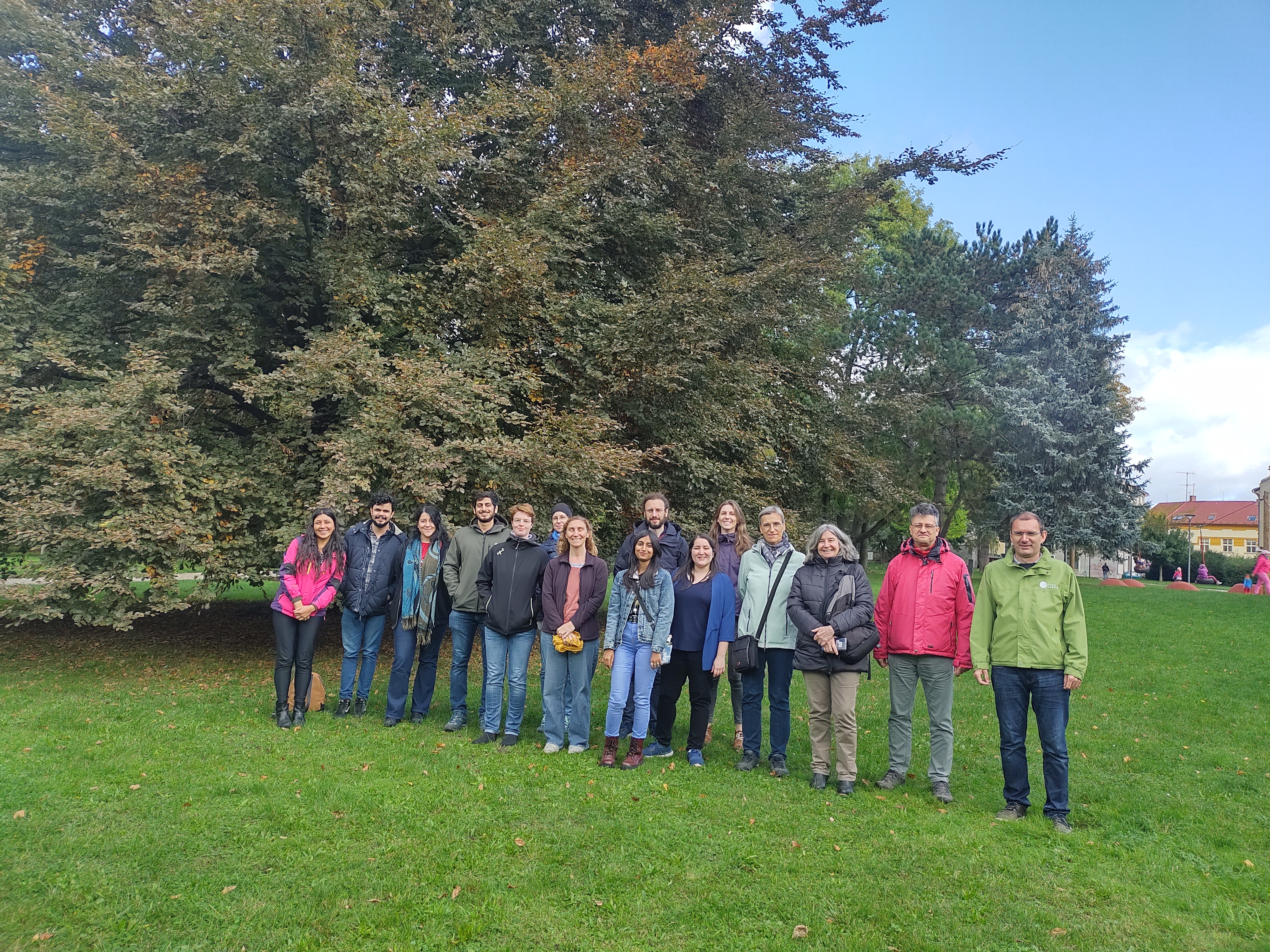
Péter Németh from ASU visits UV (10 October - 16 December 2022)
Lydia Cidale from UNLP visits ASU (27 September - 25 November 2022)
Aynura Hasanova from ShAO visits UTARTU (23 September - 30 November 2022)
Natalia Machuca from UV visits ASU (12 September - 12 November 2022)
Shabnam Aghayeva from ShAO visits UTARTU (4 September - 30 October 2022)
Janmammad Rustamov from ShAO visits UTARTU (1 September - 28 November 2022)
Matías Ruíz Díaz from UNLP visits ASU (1 September - 31 October 2022)
Catalina Arcos from UV visits ASU (23 August - 21 October 2022)
POEMS team members from ShAO participate in the online conference XXII Gamow International Conference: Astronomy and beyond: Cosmology and Gravitation, Astroparticle Physics, Radioastronomy and Astrobiology, 22-26 August 2022,
Dieter Nickeler from ASU gave a lecture at UNLP on August 18, 2022
Lydia Cidale from UNLP was invited speaker during "Women in Science" activity of CONICET on August 9, 2022
POEMS team members participate at the XXXI General Assembly of the International Astronomical Union, in the Republic of Korea, 2-11 August 2022
POEMS team members participate at the international workshop "Asteroseismology in the Era of Surveys from Space and the Ground: Stars, Planets, and the Milky Way" in Belgium, 11-15 July 2022
Lorena Mercanti from UNLP visits ASU (11 July - 8 October 2022)
Kateřina Pivoňková from Masaryk University Brno, Czech Republic, defended her Master thesis on 1 July 2022 based on results obtaind from exploring POEMS data
POEMS team members participate at "IV Jornada de Astrofísica Estelar (IV Conference on Stellar Astrophysics)" in Tucumán, Argentina, 22-24 June 2022.
POEMS team members participate at workshop "NOT - a telescope for the future", 7-10 June 2022 in La Palma, Canary Islands, Spain
Tõnis Eenmäe from TO visits UV (6 June - 23 August 2022)
Kuljeet Singh Saddal from ASU visits UV (1 June - 31 August 2022)
Sabina Mammadova from ShAO visits ASU (1 June - 31 July 2022)
POEMS team members participate at the international conference "IAU 361: Massive Stars from Near and Far" in Ireland, 8-13 May 2022
Gunay Hajiyeva from ShAO visits UTARTU (6-30 May 2022)
Michaela Kraus from ASU was awarded the LELOIR prize 2021
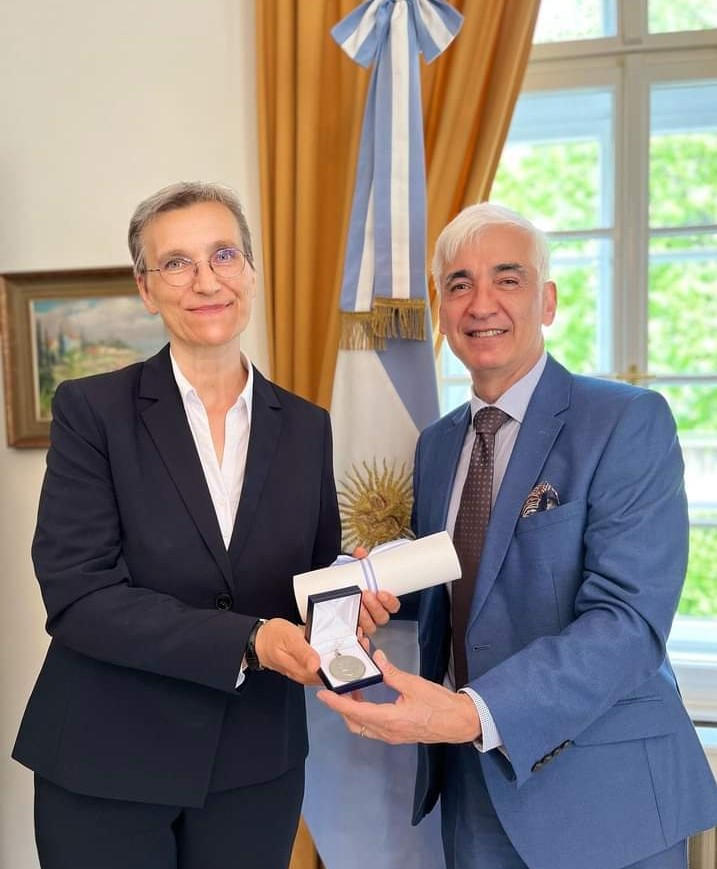
Aynur Abdulkarimova from ShAO visits ASU (1 May - 1 July 2022)
On 1 May 2022 Universidad Mayor joined POEMS
